BLOUET, Guillaume-Abel. Expédition scientifique de Morée, Ordonnée par le Gouvernement français: Architecture..., cilt I-VI, Paris, Firmin Didot, 1831-1838.
Fransız asıllı mimar Guillaume Abel Blouet (1795-) Paris yakınlarında yoksul bir ailede doğmuştu. Çocukluğu ve gençlik yılları hakkında tek bilinen şey 13 yaşındayken bir akşam okulunda çizim dersleri takip etmiş ve çizim çalışmalarının onu cezbetmiş oluşuydu. Daha sonra mimarlık öğrencisi genç A. Macquet ile tanışır ve Macquet ona mimarlık esaslarını öğretmeyi üstlenir. Matematik ve latince derslerinde zayıf olan Blouet, arkeoloji ve çizim dersine tutkuyla sarılır. Nitekim, yüzleştiği tüm maddi zorluklara rağmen 1814 yılında Güzel Sanatlar Yüksek Okulunun mimarlık bölümüne girmeyi başarır. Blouet, kararlılığı ve inadı sayesinde, Güzel Sanatlar Yüksek Okuluna çoğunlukla sanat alanında yeri olan tanınmış aile çocuklarının girebildiği kurulu düzene karşı giderek, üstün başarıyla okumayı becerir ve 1821 yılında kendisine Roma Güzel Sanatlar Yüksek Okulunda (Villa Medici) 4 yıllık burs sağlayan ödülü (Prix de Rome) kazanır. 1828 yılında Roma'daki büyük Caracalla hamamları kompleksinin restorasyonu için yaptığı proje sayesinde Mora'ya (Peloponez) gidecek olan uzmanlar ekibinin mimarlık ve heykeltraşlık bölümü sorumlusu seçilir. Bu görev tamamlanıp elde edilen sonuçlar yayınlandıktan sonra, Blouet, Amerika Birleşik Devletlerini ziyaret eder ve 1836 yılından itibaren ıslahevlerinin mimarîsi üzerinde çalışır. 1846 yılından başlayarak Mimarlık Kuramları dersini okutur ve 1850'de Güzel Sanatlar Akademisi üyeliğine seçilir.
Fransa devleti 1828 yılında Yunanlılarla Türkler'e ateşkesi kabul ettirmek için Yunanistan'a general Maison yönetiminde bir kolordu gönderir. Buna koşut olarak, ve Napolyon'un 1798-1801 yıllarında Mısır'a yollamış olduğu bilimsel ekibi örnek alarak, Mora yarımadasına da bilirkişilerden oluşan bir ekip yollamayı kararlaştırır.
Böylelikle, doğa bilimci, bitkibilimci, coğrafyacı ve topoğraf J.B.G.M. Bory de Saint-Vincent yönetiminde kurulan Mora Bilimsel Ekibi, doğa tarihi, arkeoloji, ve heykeltraşlık başlıkları altında üç bölüme ayrılır. Her bölüm bir başkan ve çalışan ekipten oluşmaktaydı. Blouet, Mimarlık ve Heykeltraşlık Bölümünün başına geçer, çalışma ekibinde ise mimar A. Ravoisé ile mimar Α. Poirot, heykeltraş J.B. Vietty ve edebiyatçı Fr. De Gournay yer alır. Ekip, Strabo ve Pausanias metinleri ile Pouqueville ve Gell'in seyahatnamelerinde yeri belirtilen arkeolojik harabeleri saptamak, ayrıca da haritalar çizmek, topoğrafya çizimleri, çevreyle ilgili gözlemler, ayrıntılı bir güzergâh, arkeolojik harabe planları ve antik çağlardaki yapı malzemeleri hakkında belge birikimi gerçekleştirmek üzere Peloponez'e varır. Ekibin karşılaştığı engel ve zorluklara rağmen Bory De Saint Vincent ve iş arkadaşları, 1829 Mart -1830 Ocak arasındaki zaman süresinde Fransız hükümetinin onlardan beklediği materyali toplayıp istenilen herşeyi kaydetmekte olağanüstü bir hız ve yeterlik gösterir. Araştırmalarının sonuçları çok ciltlik bir yayın olarak çıkar.
Mimarlık ve Heykeltraşlık bölümü Peloponez, Kiklad adaları ve Attika'yı gezer. Ekip beş üyesinden üçünün hastalanıp 1829 Mayıs ayında Fransa'ya dönmeleri sonucu olarak gücünü yitirmekle beraber, Blouet ve iş arkadaşı Ravoisé görevlerini sürdürüp tamamlarlar. Araştırmalarının sonuçları üç çarpıcı cilt halinde yayınlanır (1831, 1843, 1838) ve sözkonusu eser ileride yapılan her benzer çalışma için belli başlı bir kaynak oluşturur. Blouet ve ekibinin güzergâh ve kayıtları şu yörelere ilişkindir: Navarin, Methoni, Koroni, Petalidi, Nisi, Andrusa, Antik Messini, Arkadya (Kiparisia), Samiko, Olympia (buradaki Zeus tapınağı çizimleri ön plana çıkar), Figaleia, Gortina, Karitena, Likosura, Megalopoli, Leondari, Mistrás, Sparta, Teyea, Mantineia, Tripoliça, Argos, Tirins, Miken, Nafplion, Epidaurus, Trizina, Kastri, Didima. Deniz yolundan sürdürdükleri gezileri ise şu yerlerde devam eder: Siros, Tinos, Mikonos, Delos, Naksos, Paros, Antiparos, Milos, Sunion, Egina. Son olarak, gine Peloponez'de Miken, Nemea, Korint, Sikiona, Egio, Patra, Paleopoli, Arkadya, Methoni, Kalamata, Kavo Matapa, Githio, Monemvasia, Astros, Luku, Epidaurus ve nihayet Atina'dan geçerler. Kayıtları ayrıca Attika'nın geniş çevresinde tamamlanır (Pire, Eleusina, Megara) ve Korint'ten geçerek Kiparissia yolundan Methoni'ye varırlar.
Ekibin ilgi alanı sadece arkaik ve klasik çağlar anıtlarıyla sınırlanmayıp Bizans devri ve Bizans sonrası kiliseleri, Latin egemenliğinden kalan kale ve hisarları, çağdaş konutları ve doğal çevreyi de kaydettiğini belirtmekte anlam vardır.
Fransız Bilimsel Ekibin çalışması Yunanistan kültür mirasının incelenmesinde bir dönüm noktası oluşturmuş ve tarihî anıtlar üzerinde yeni, sistematik ve yeterli bir bilimler-arası araştırma alanı açmıştır.
Yazan: İoli Vingopoulou
Konular (261)
-
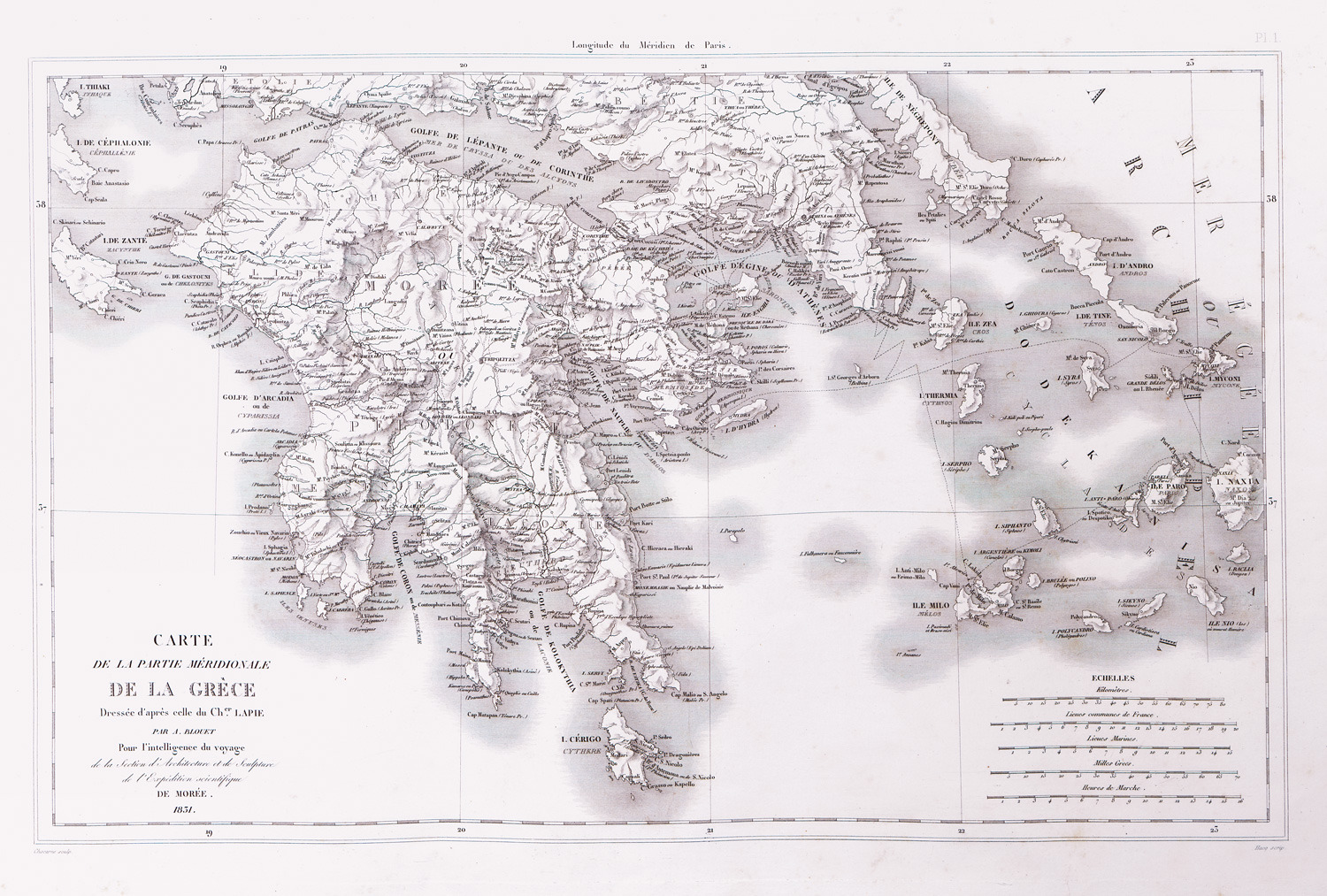
-
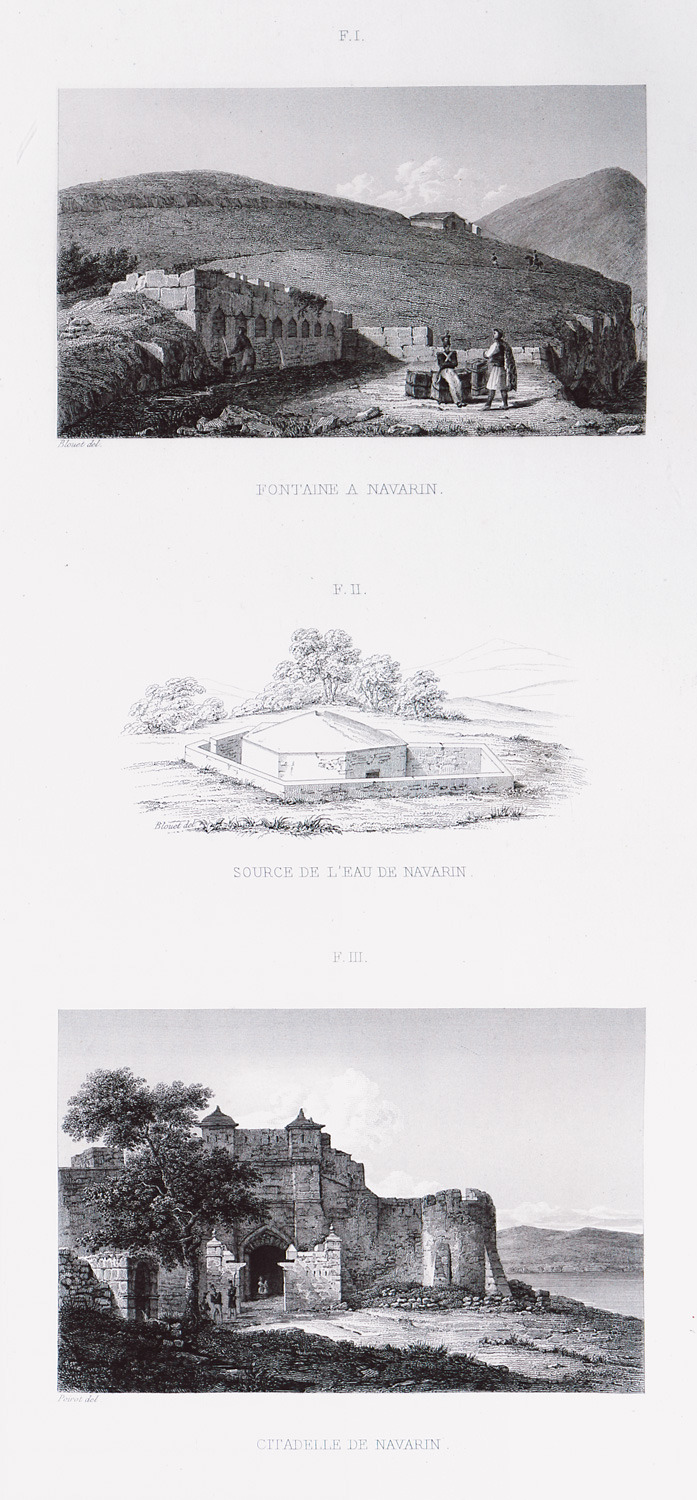
1. Ottoman fountain at Pylos. 2. Water cistern at Pylos. 3. Entrance to Niocastro, Pylos.
-
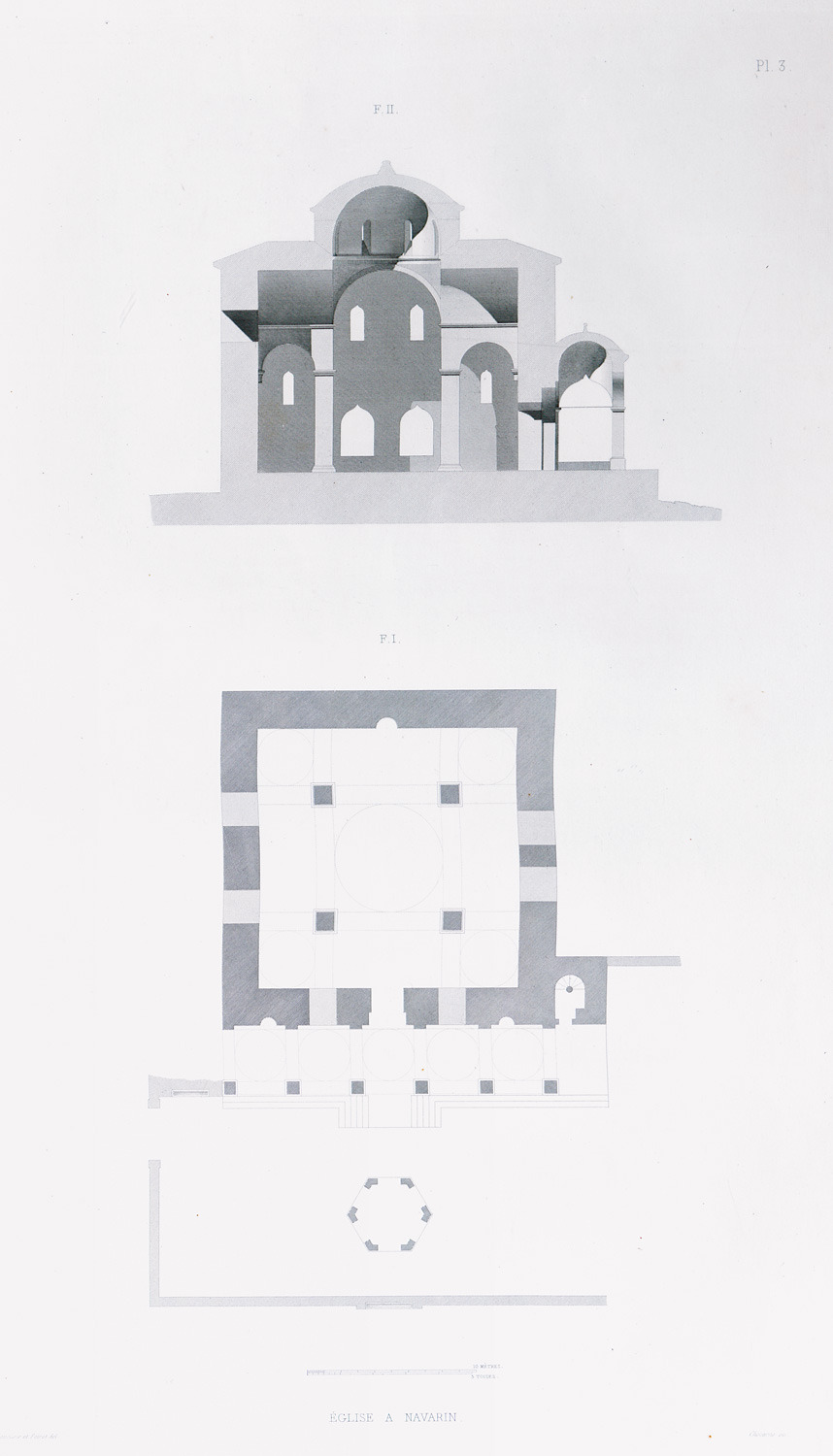
Section and plan of the church of Metamorfosis (formerly a mosque) at Niokastro, Pylos.
-
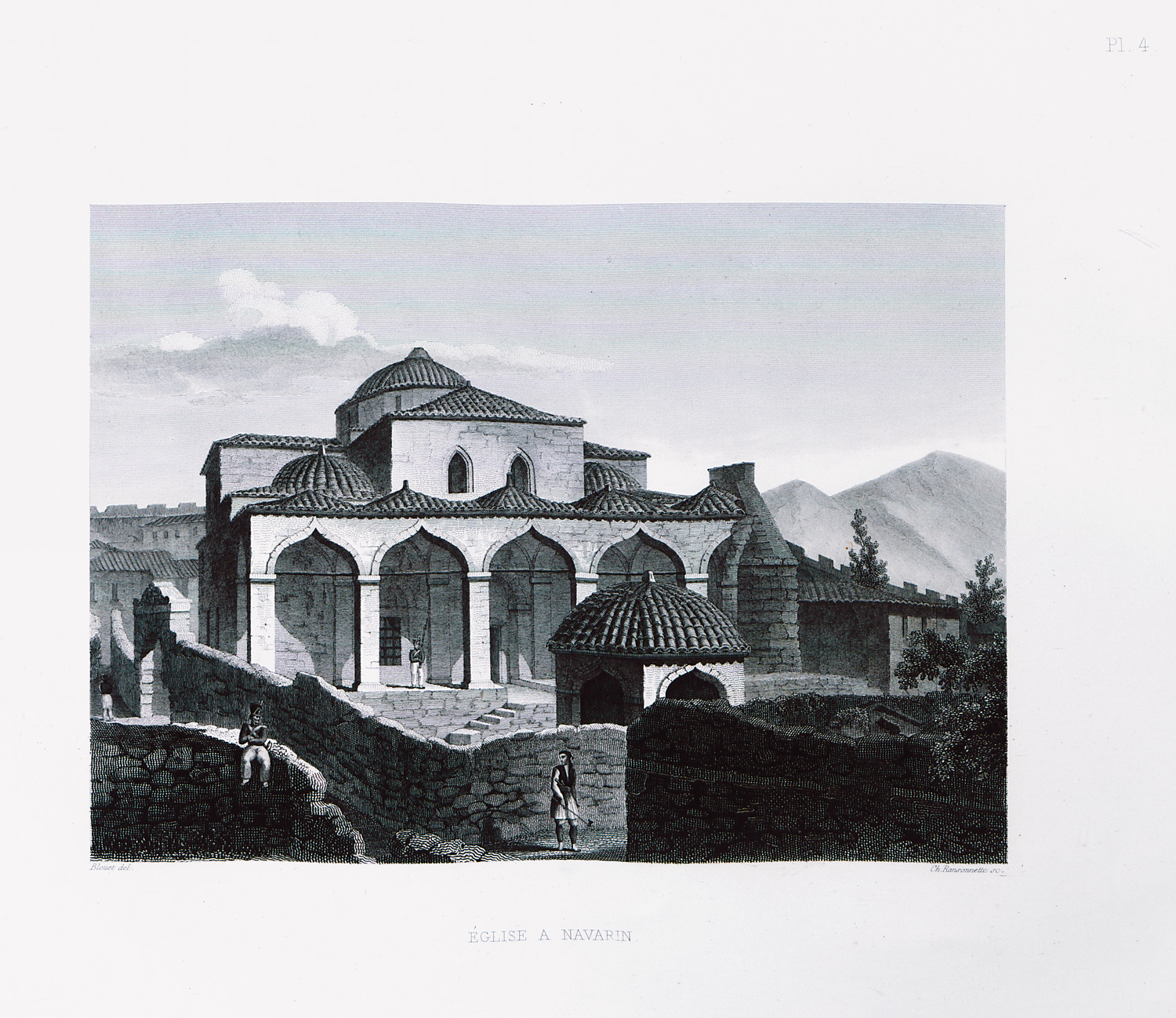
The church of Metamorfosis (formerly a mosque) at Niokastro, Pylos.
-
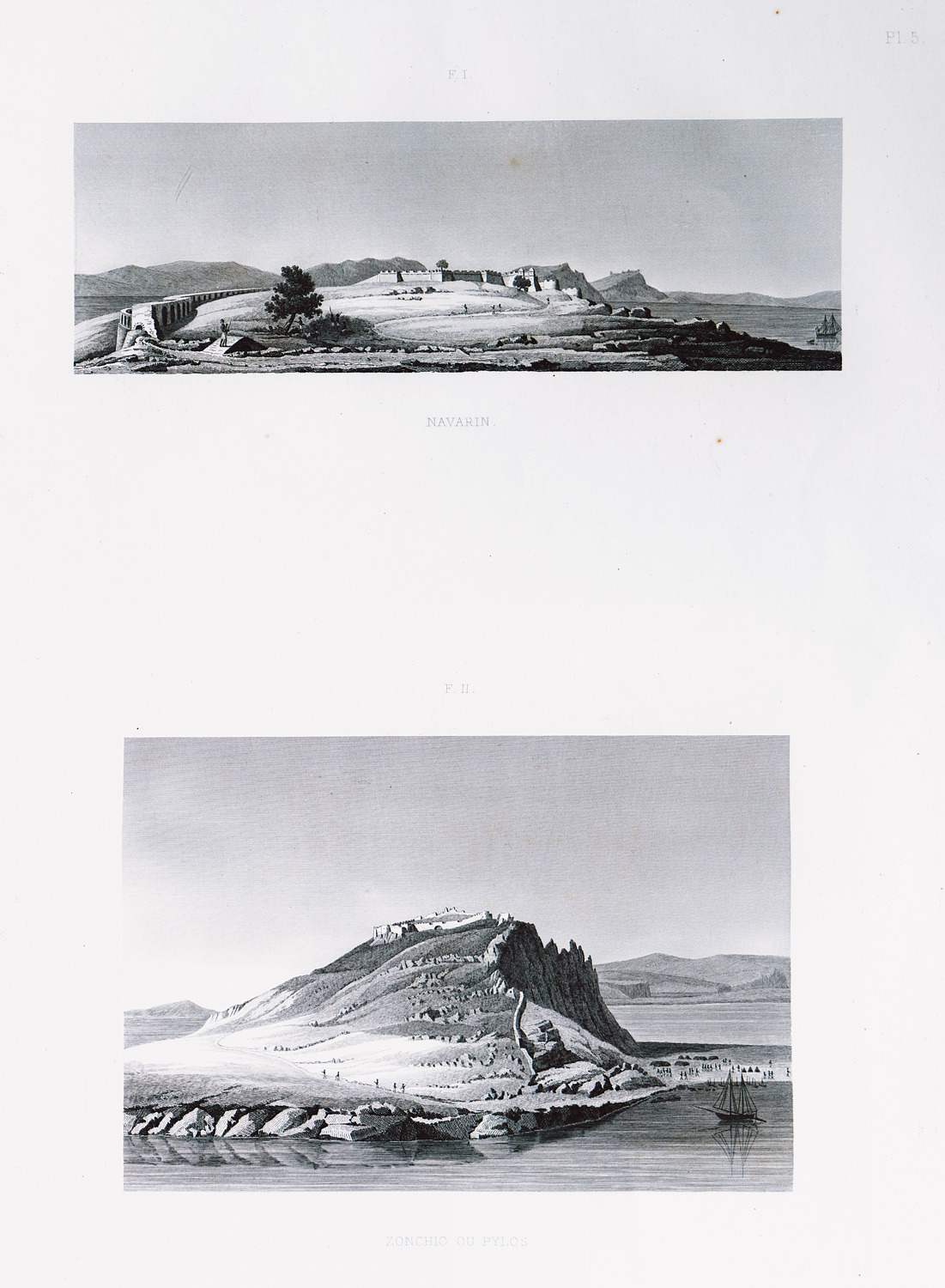
-
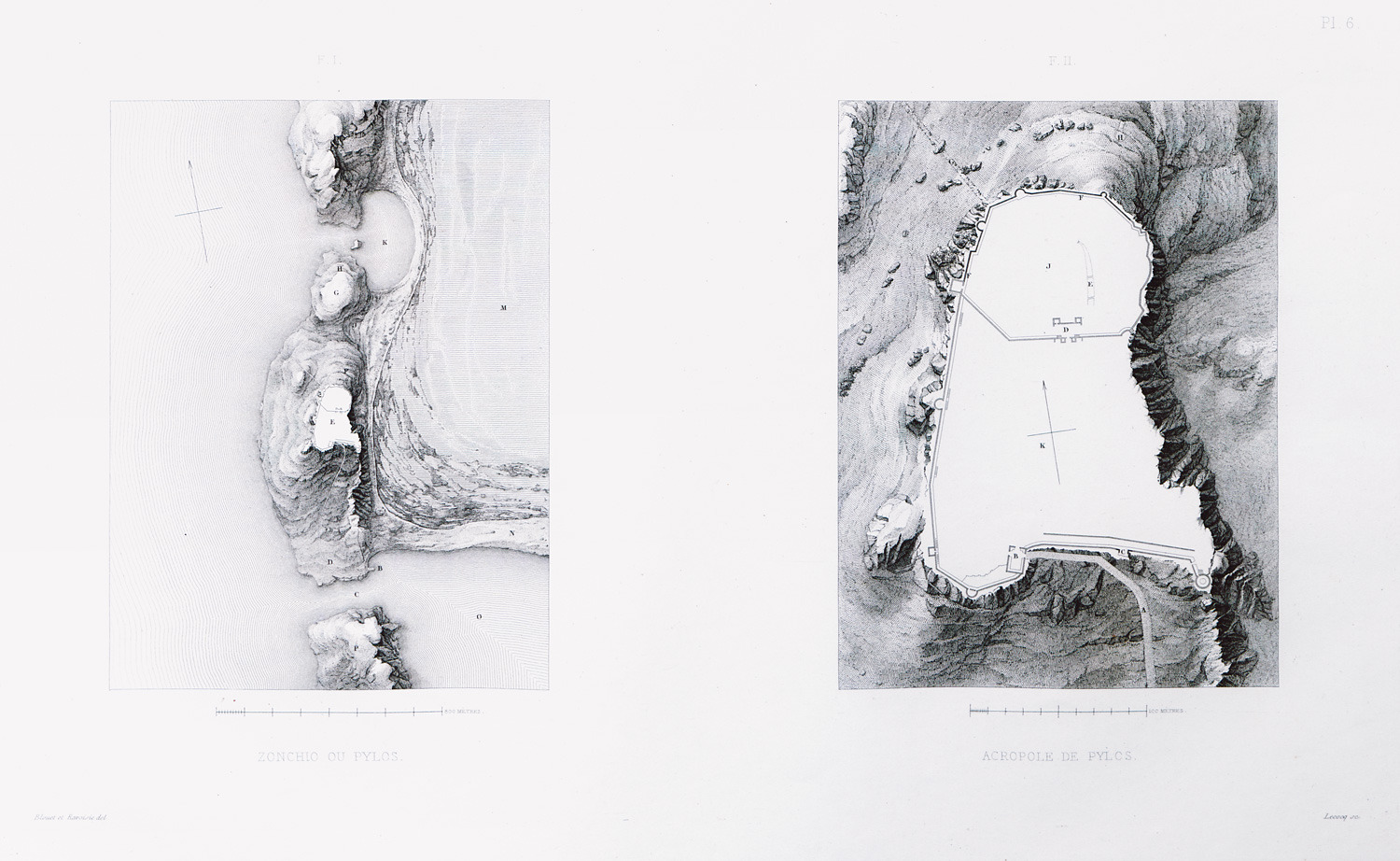
-
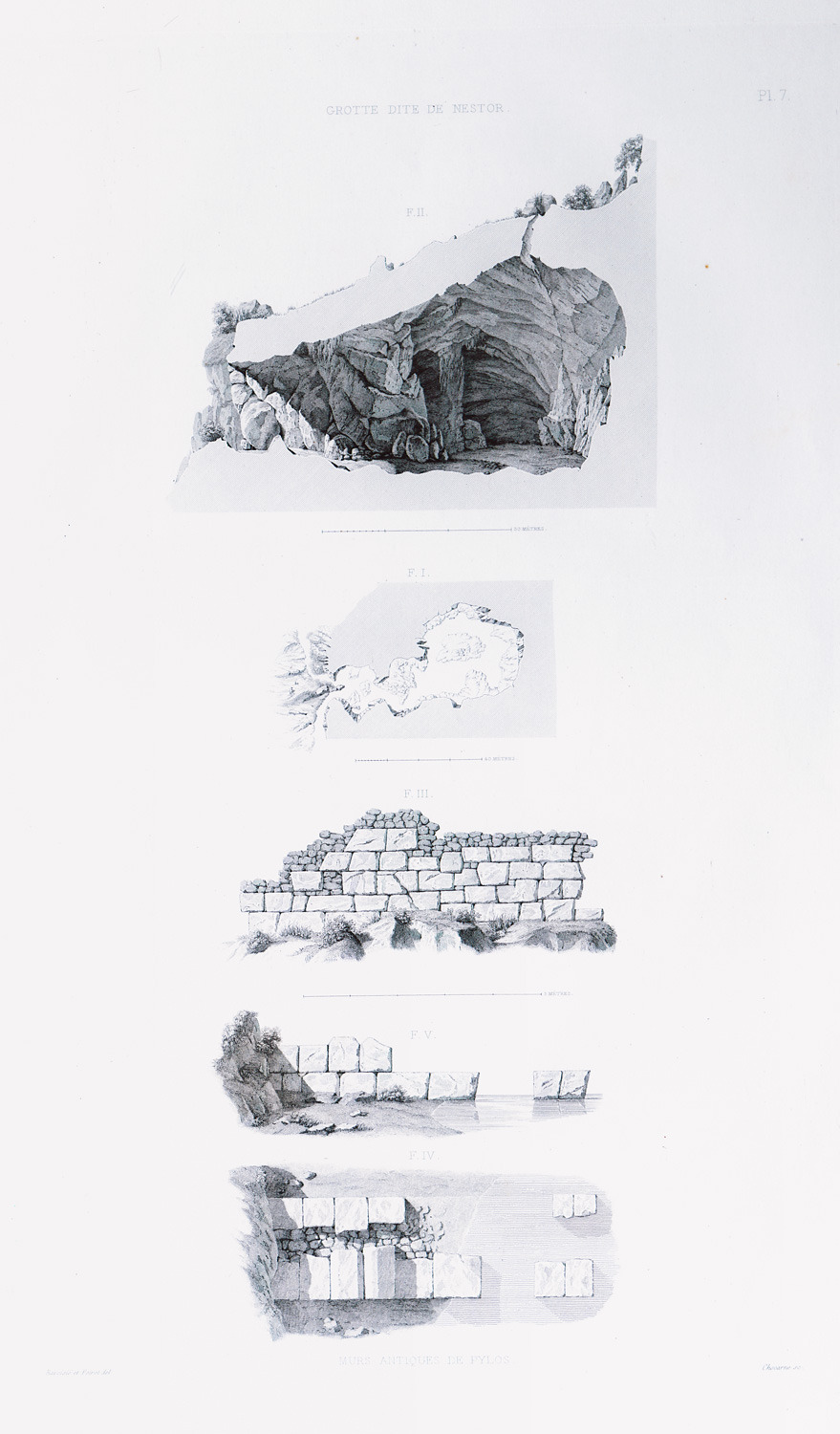
-
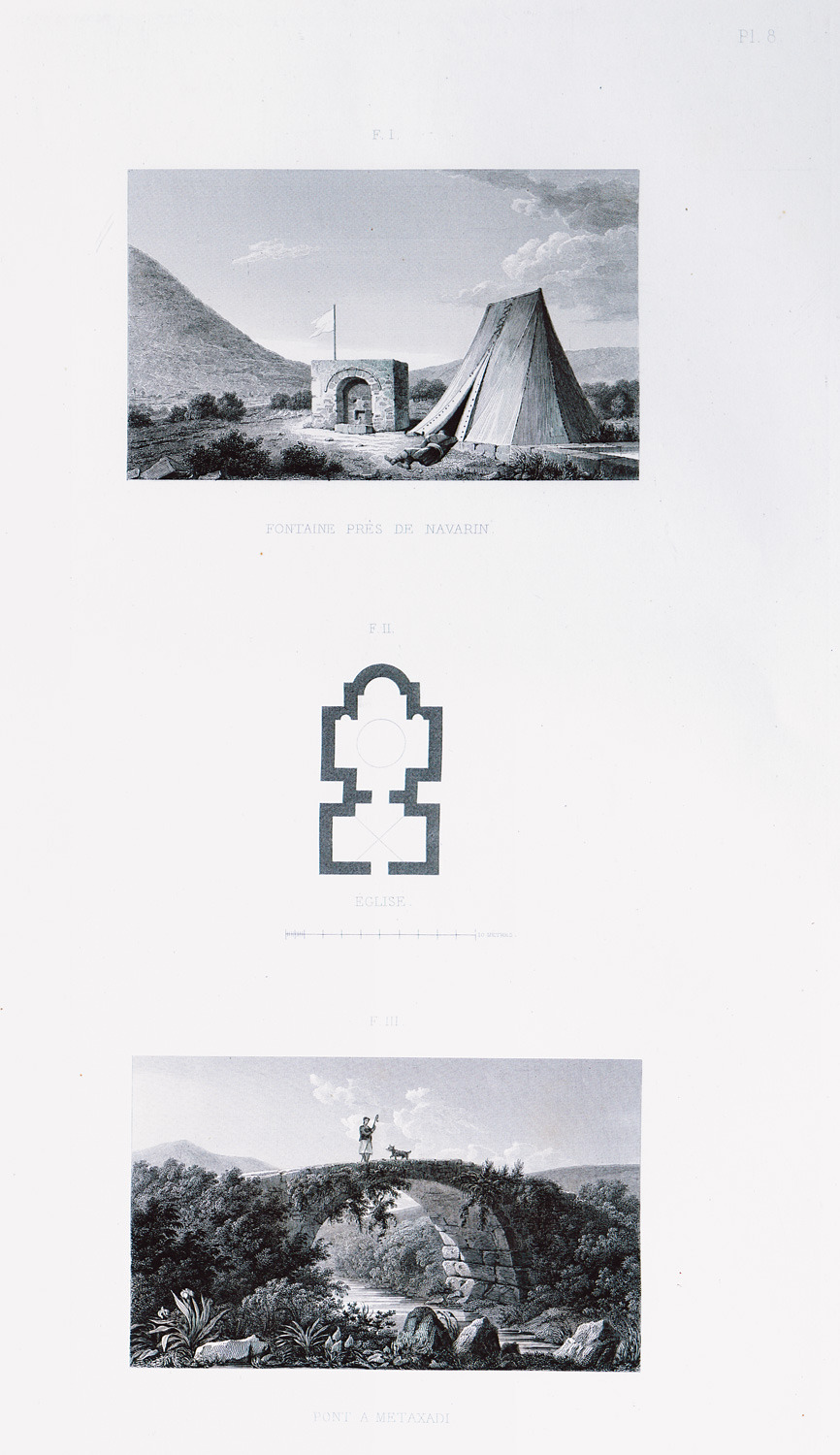
1. Fountain close to Pylos. 2. Plan of church. 3. Stone bridge at Metaxada, close to Pylos.
-
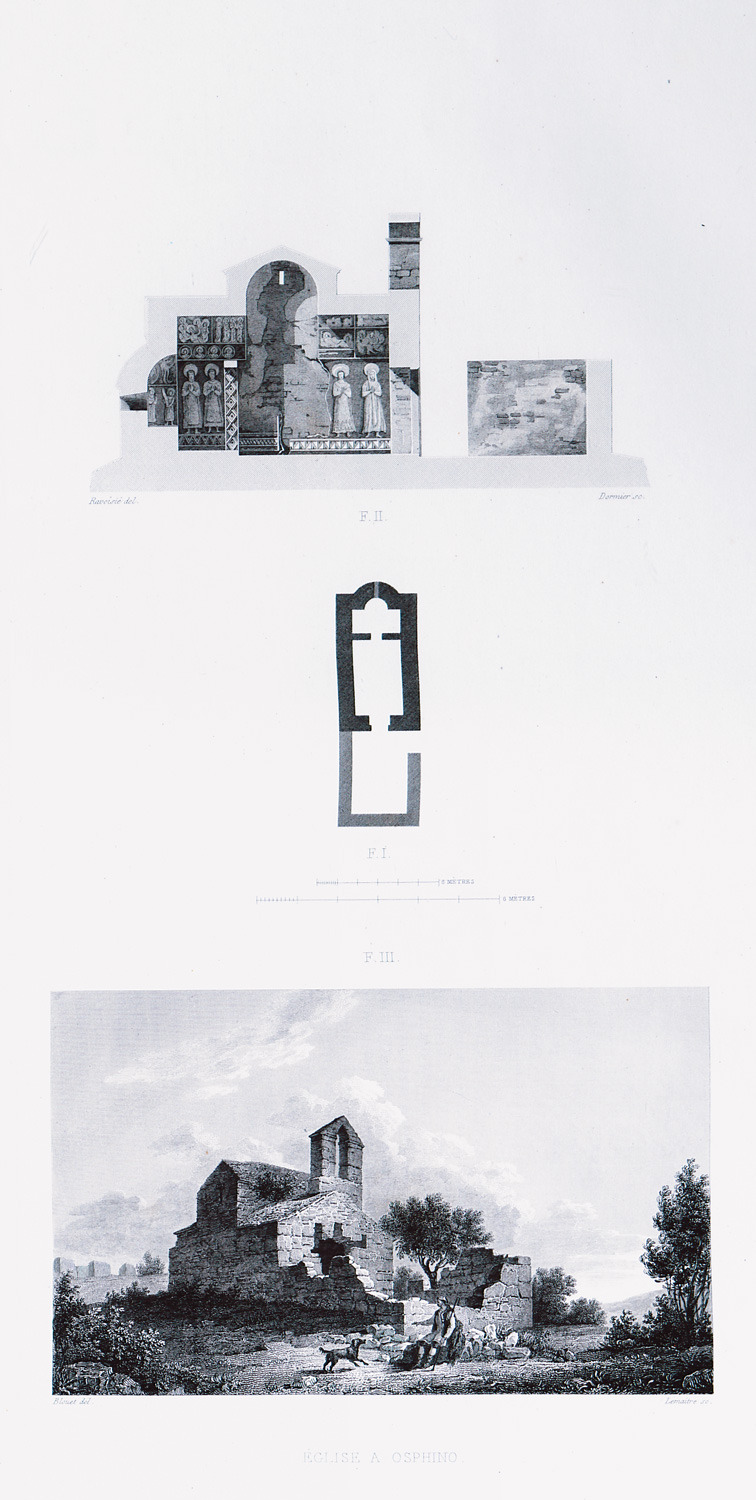
Section, plan and view of the unidentified "Church of Osphino", on the route from Pylos to Methoni.
-
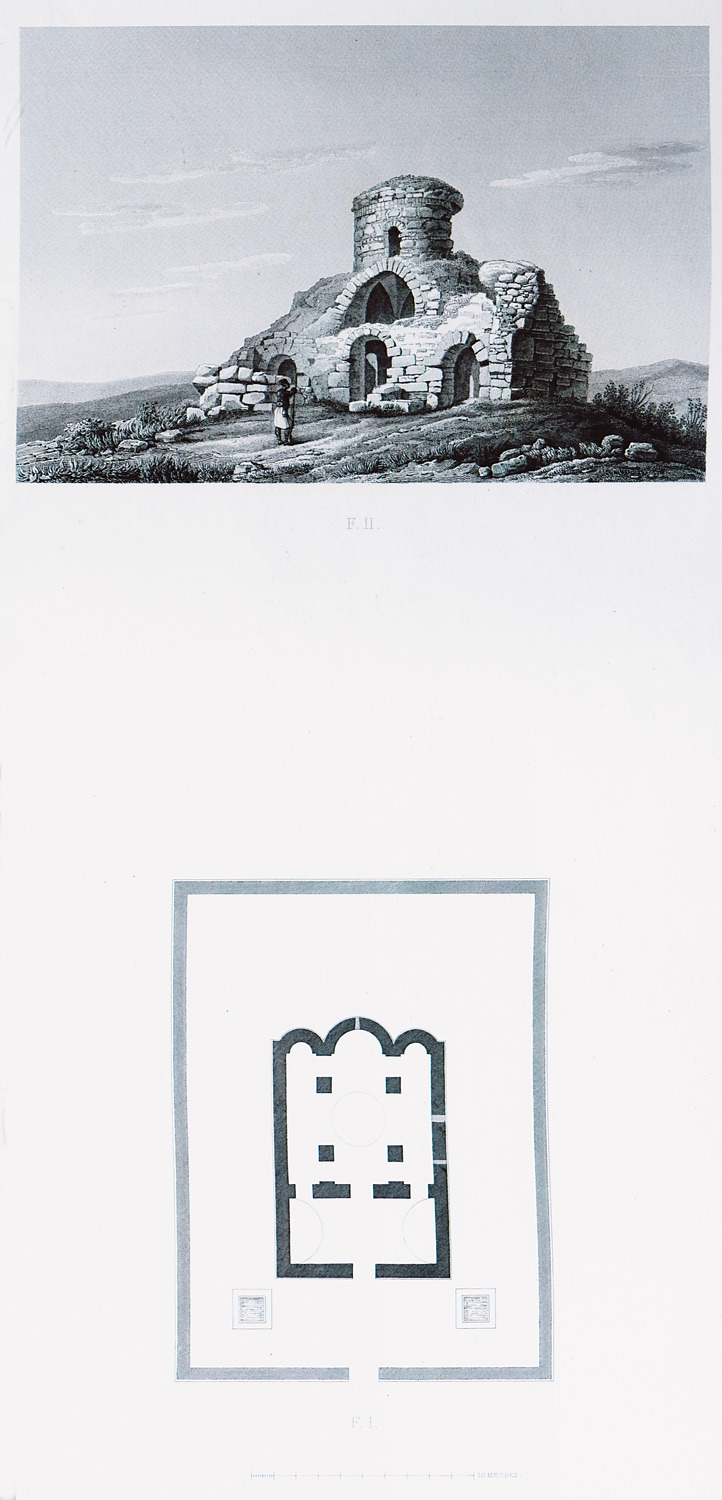
-
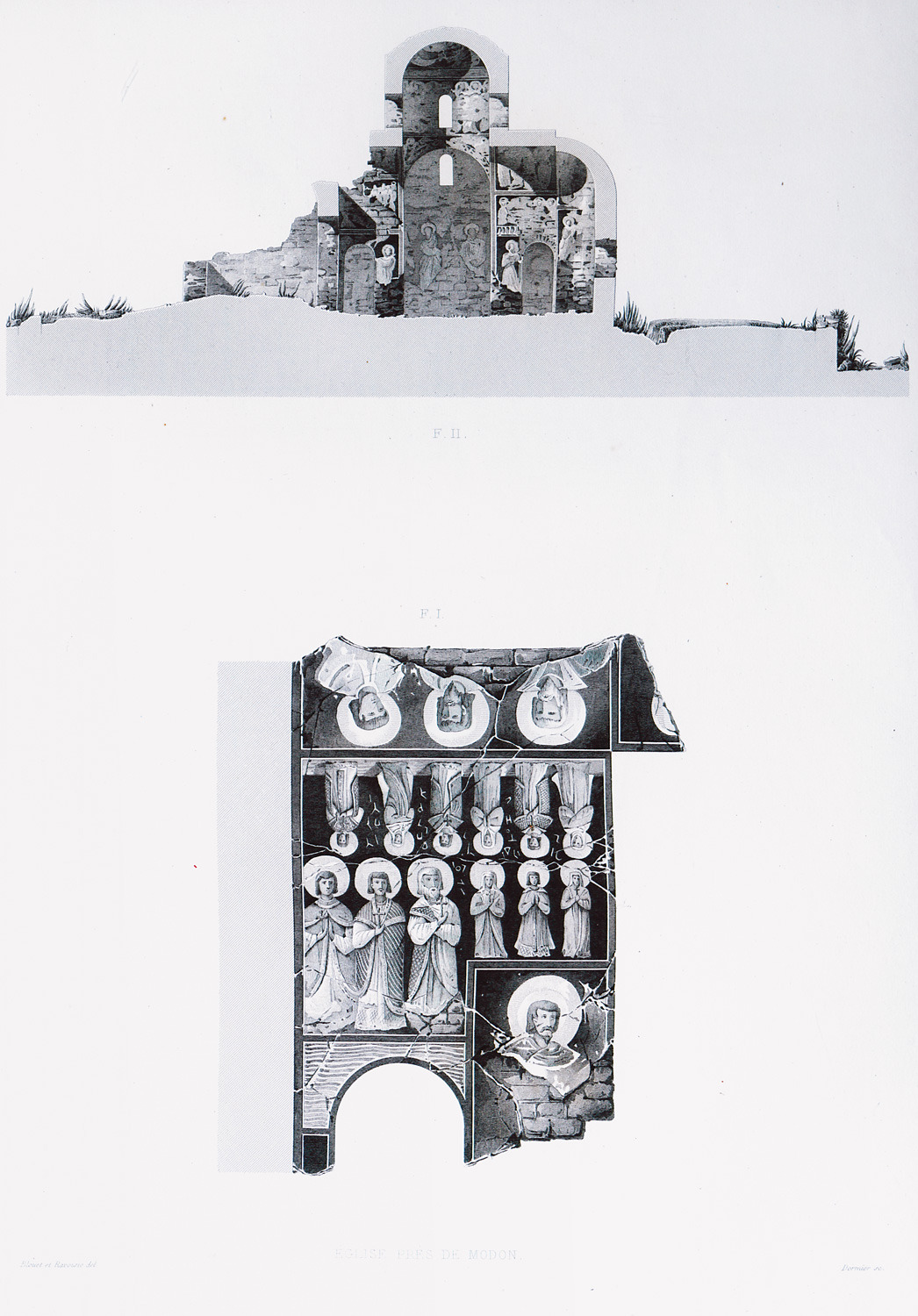
Section of church at Methoni. Frescoes from the same church.
-
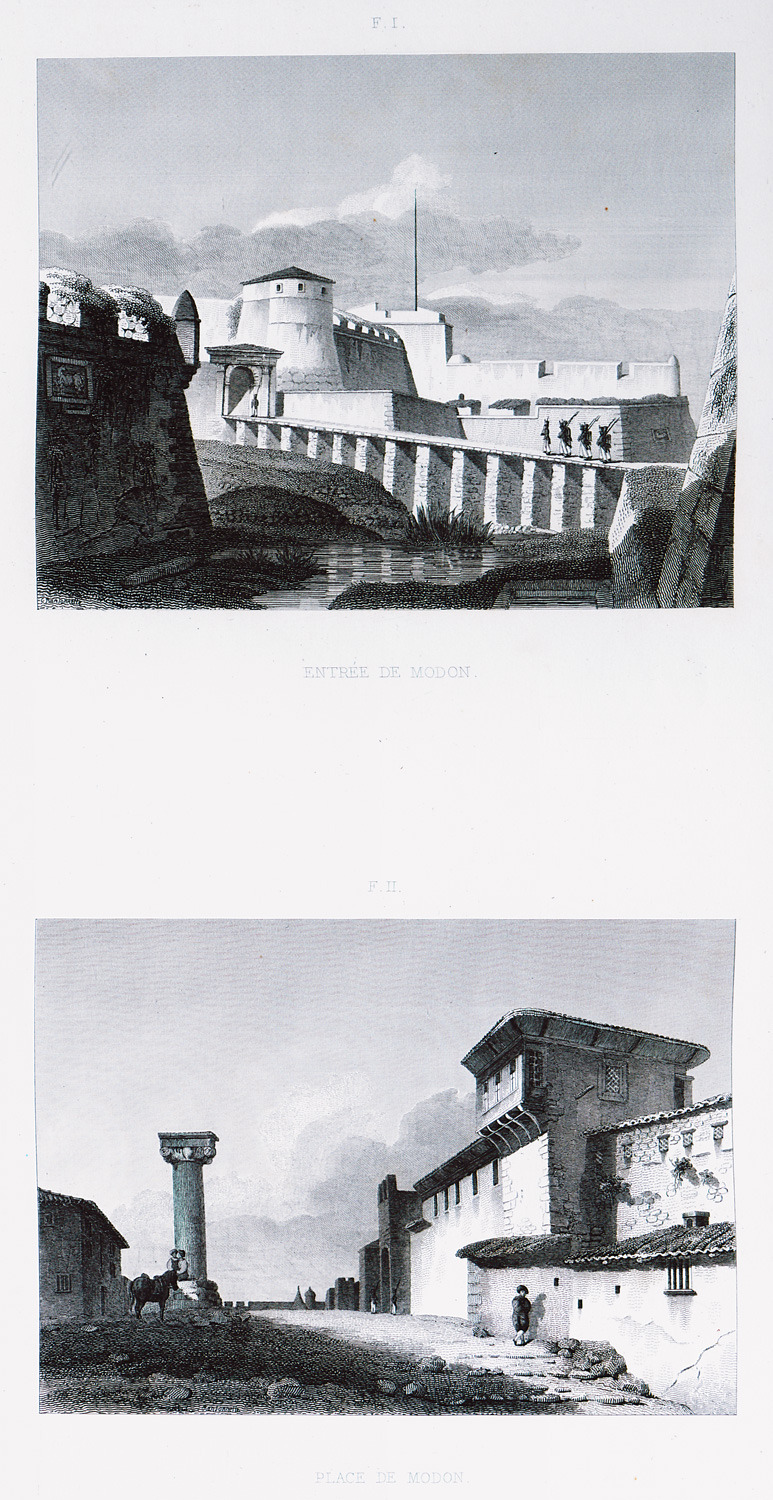
-
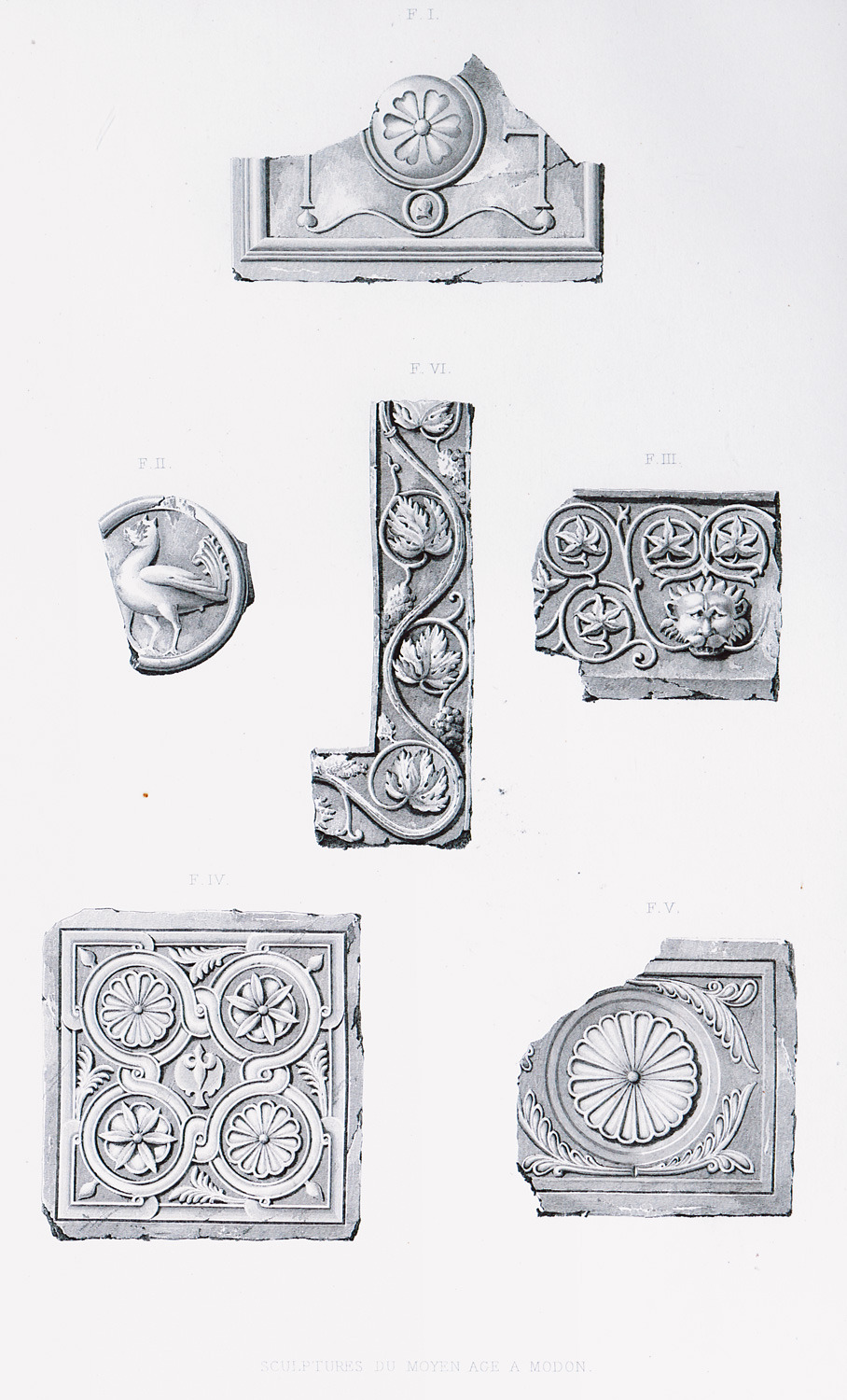
Decorative reliefs of the Venetian era at the castle of Methoni.
-
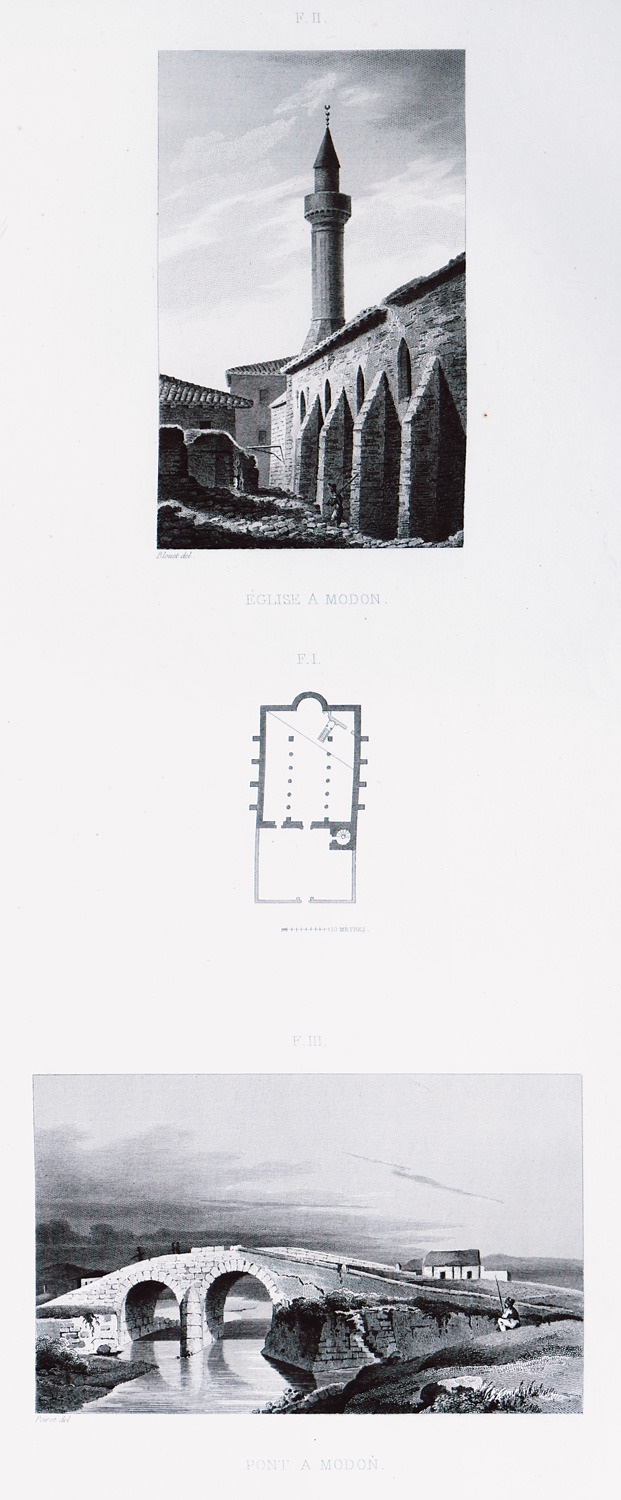
-
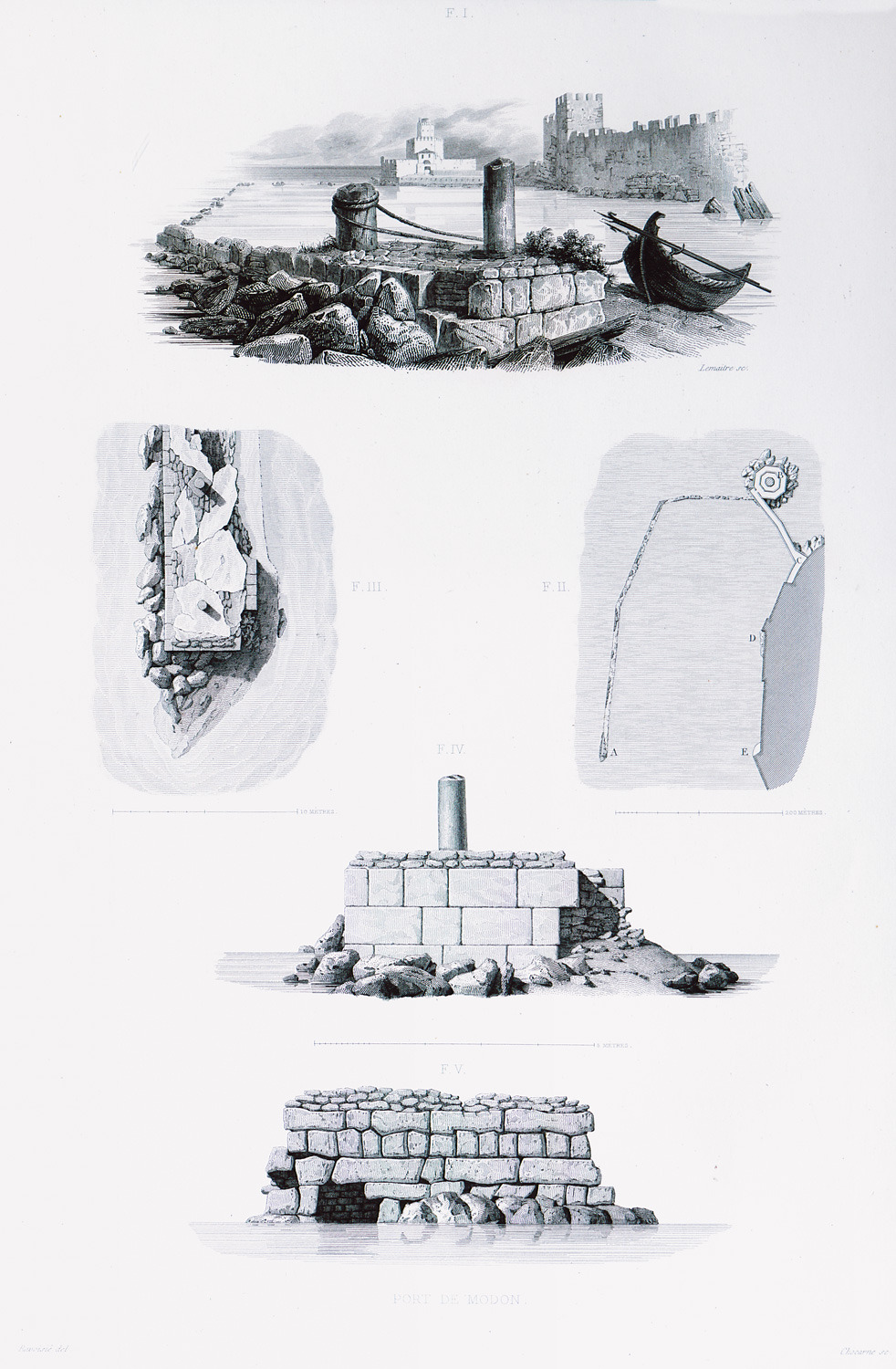
-
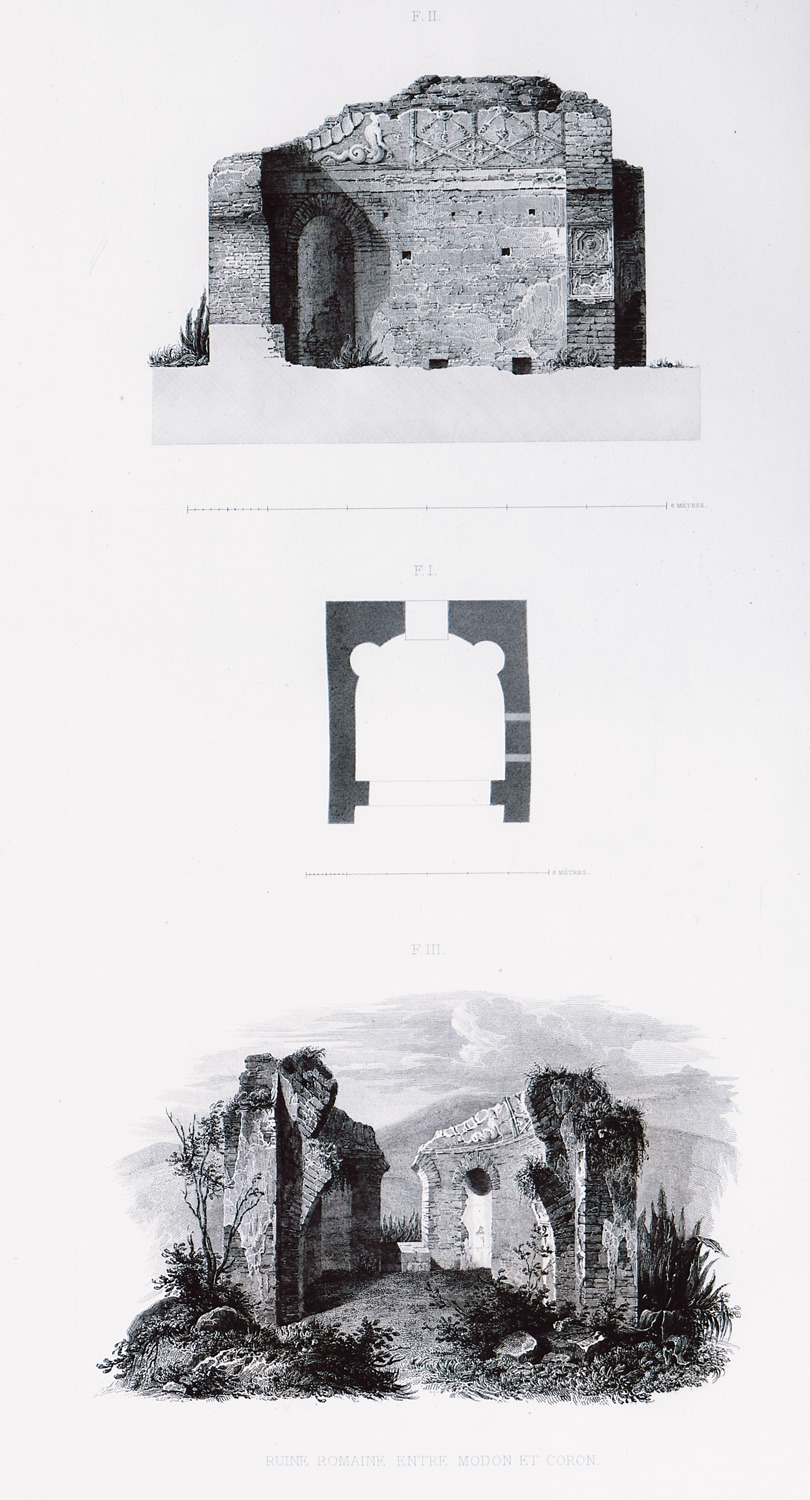
-
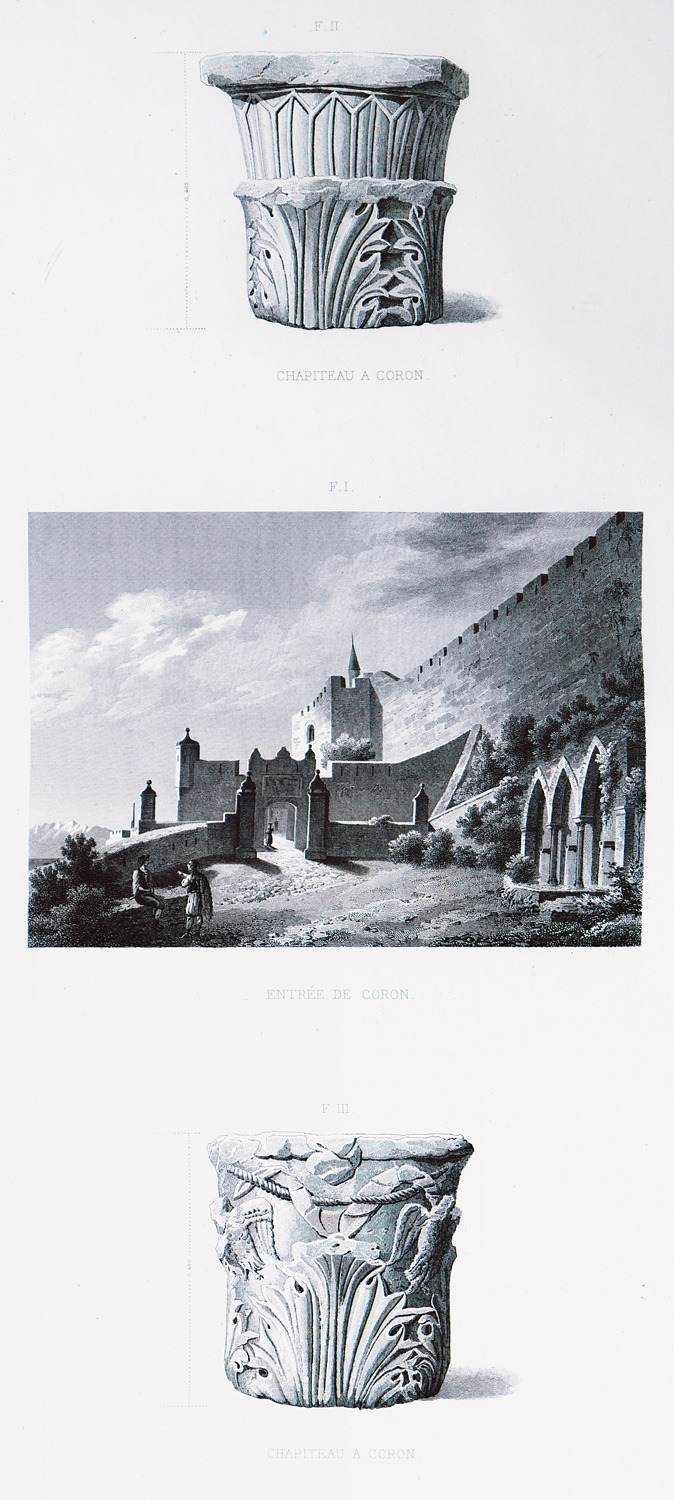
-
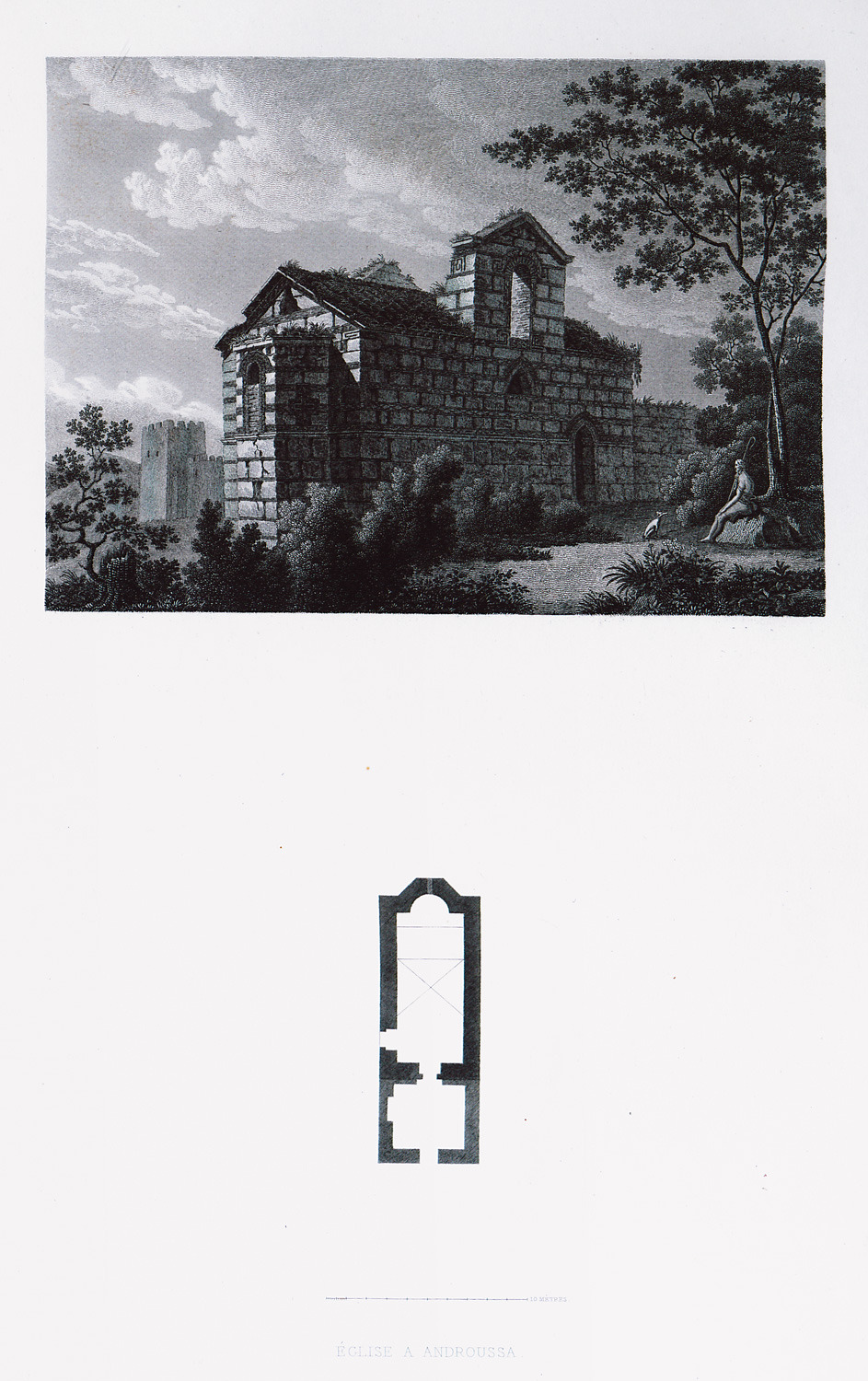
-
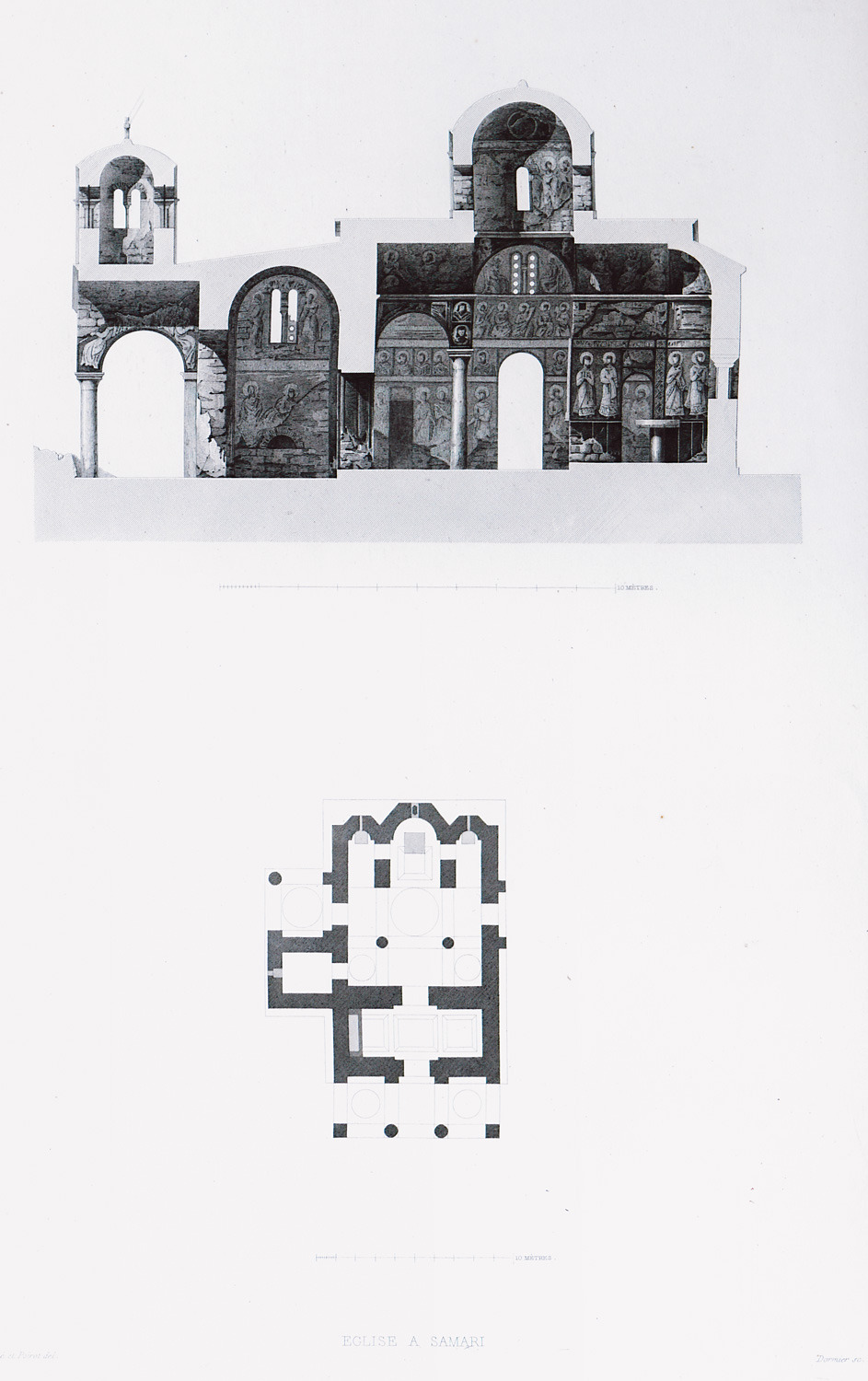
Section and plan of the Byzantine monastery of Panagia Samarina at Androusa.
-
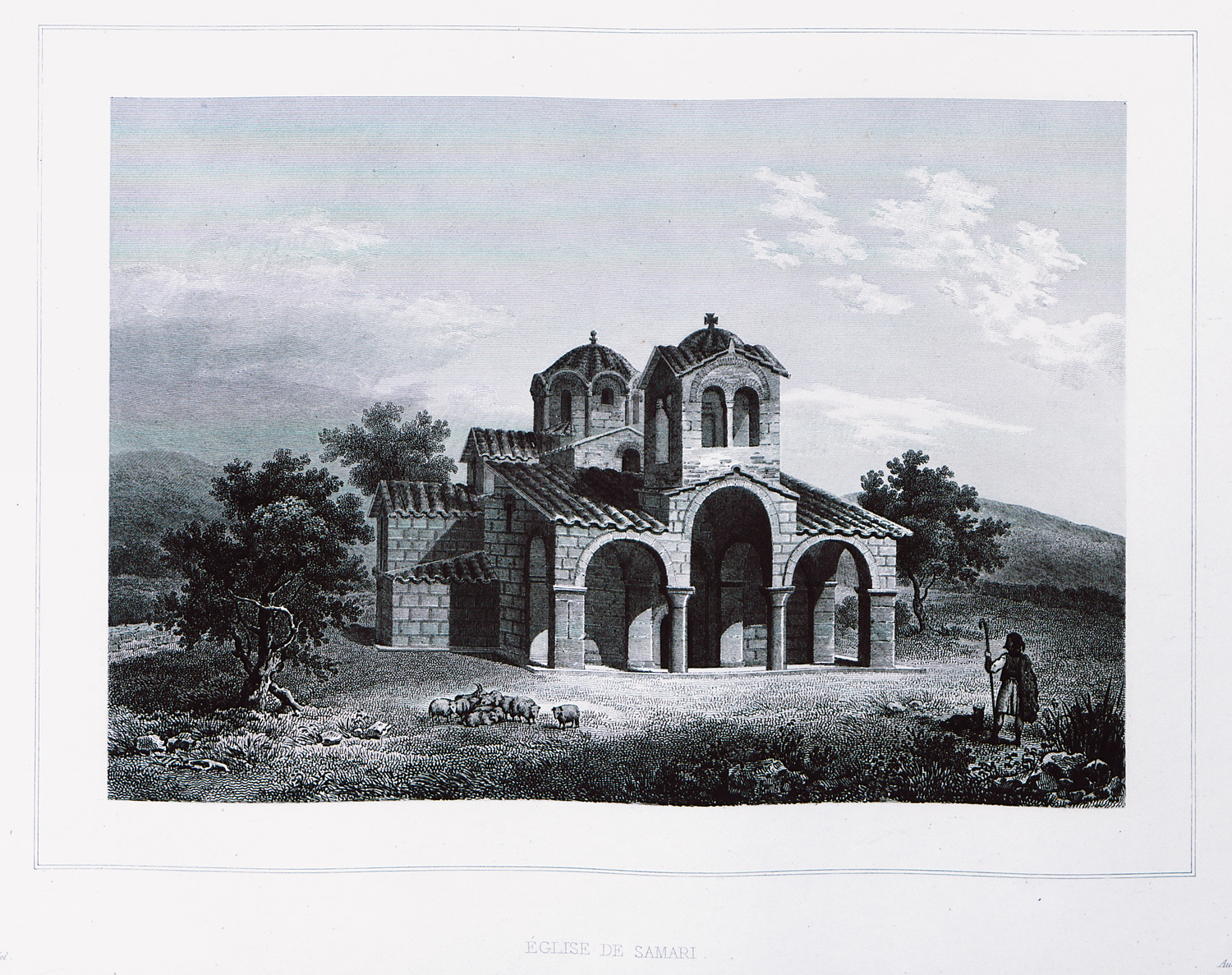
View of the Byzantine monastery of Panagia Samarina at Androusa.
-
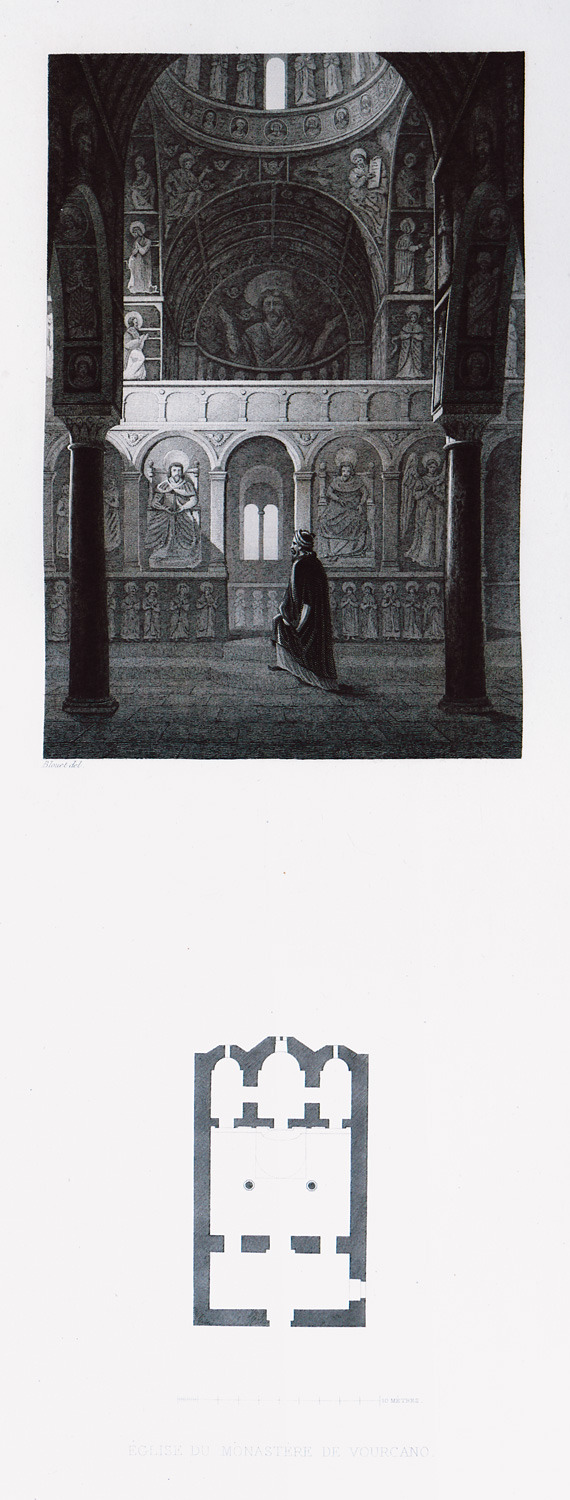
-
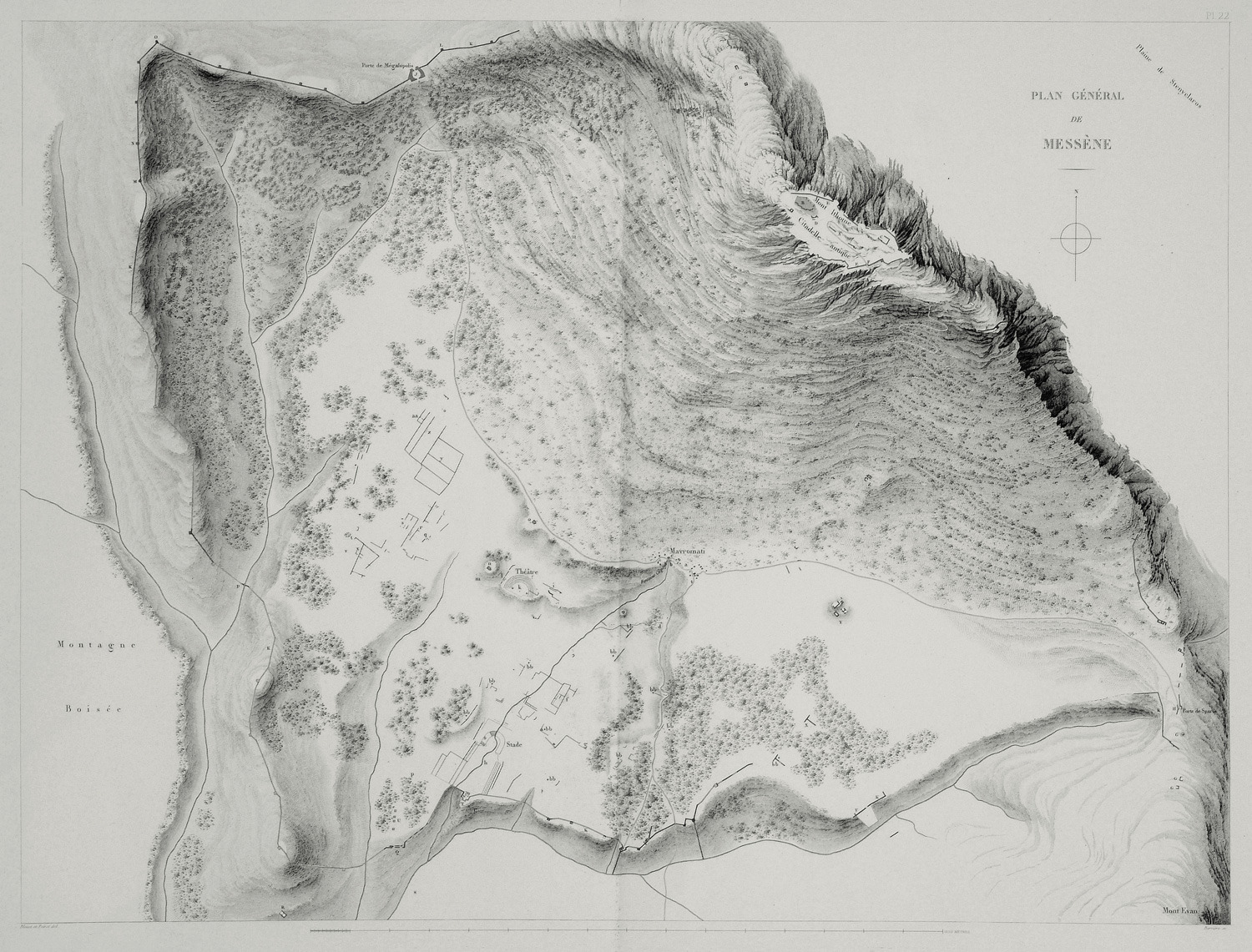
-
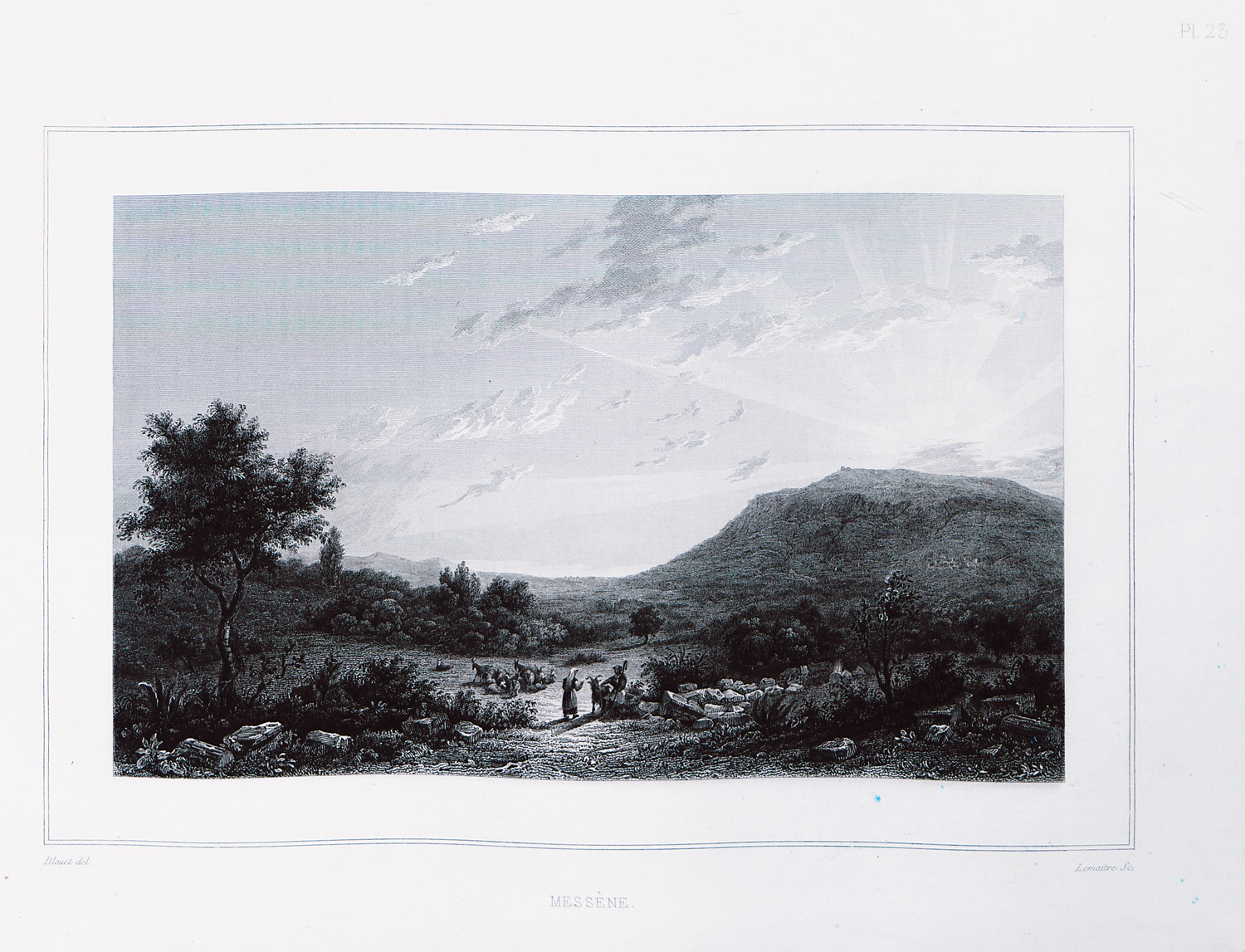
-
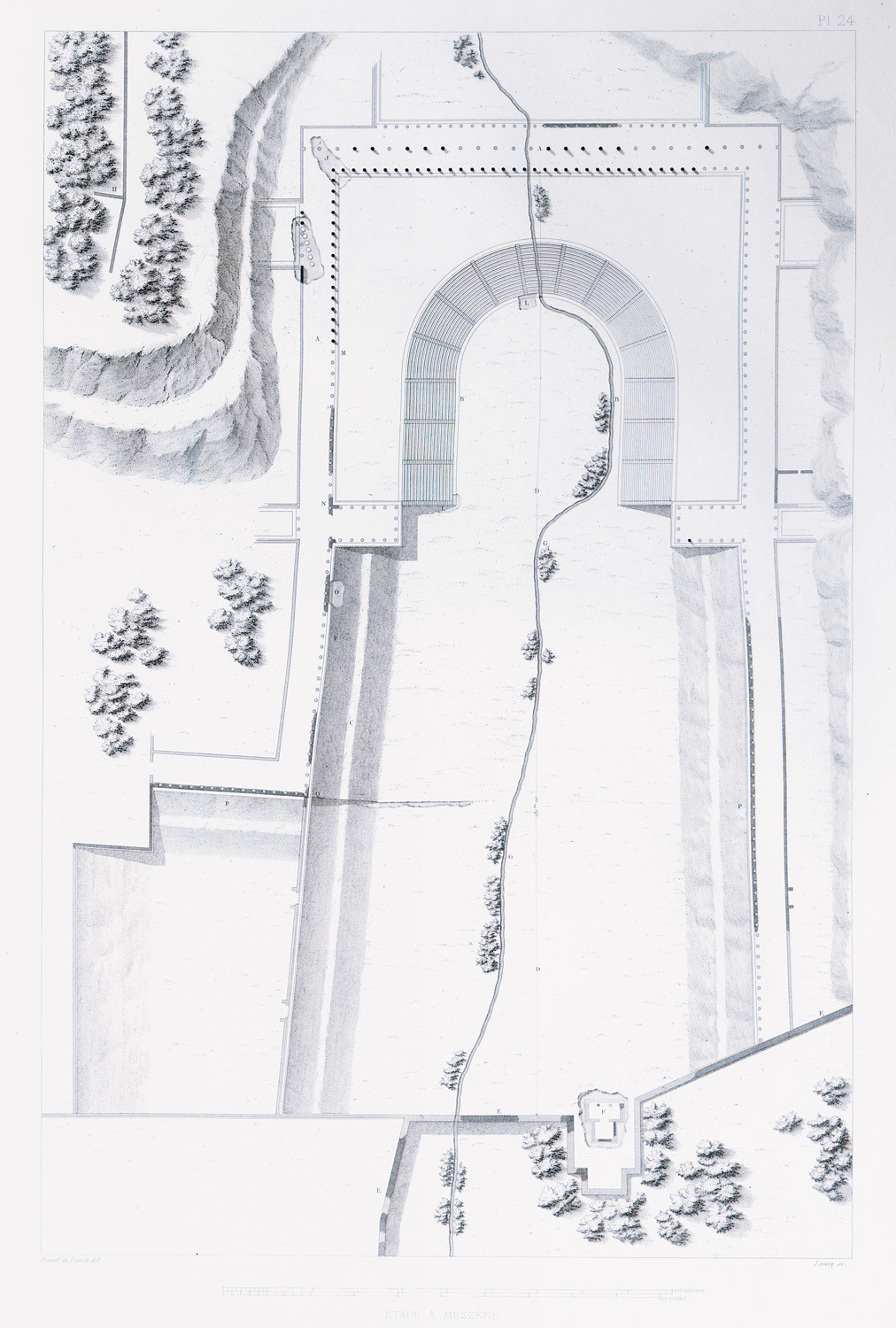
Panoramic view of the stadium and gymnasium of ancient Messene.
-
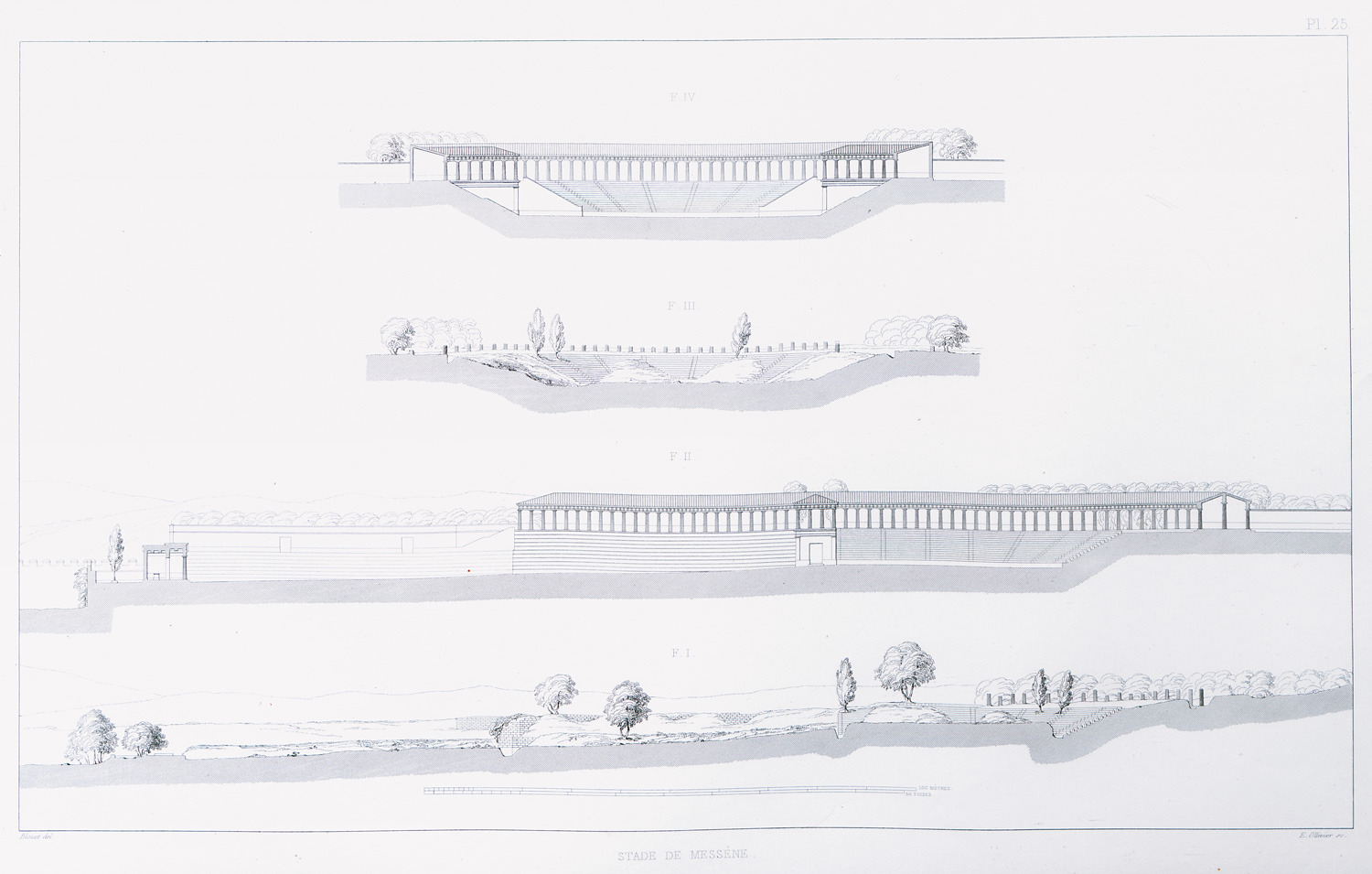
-
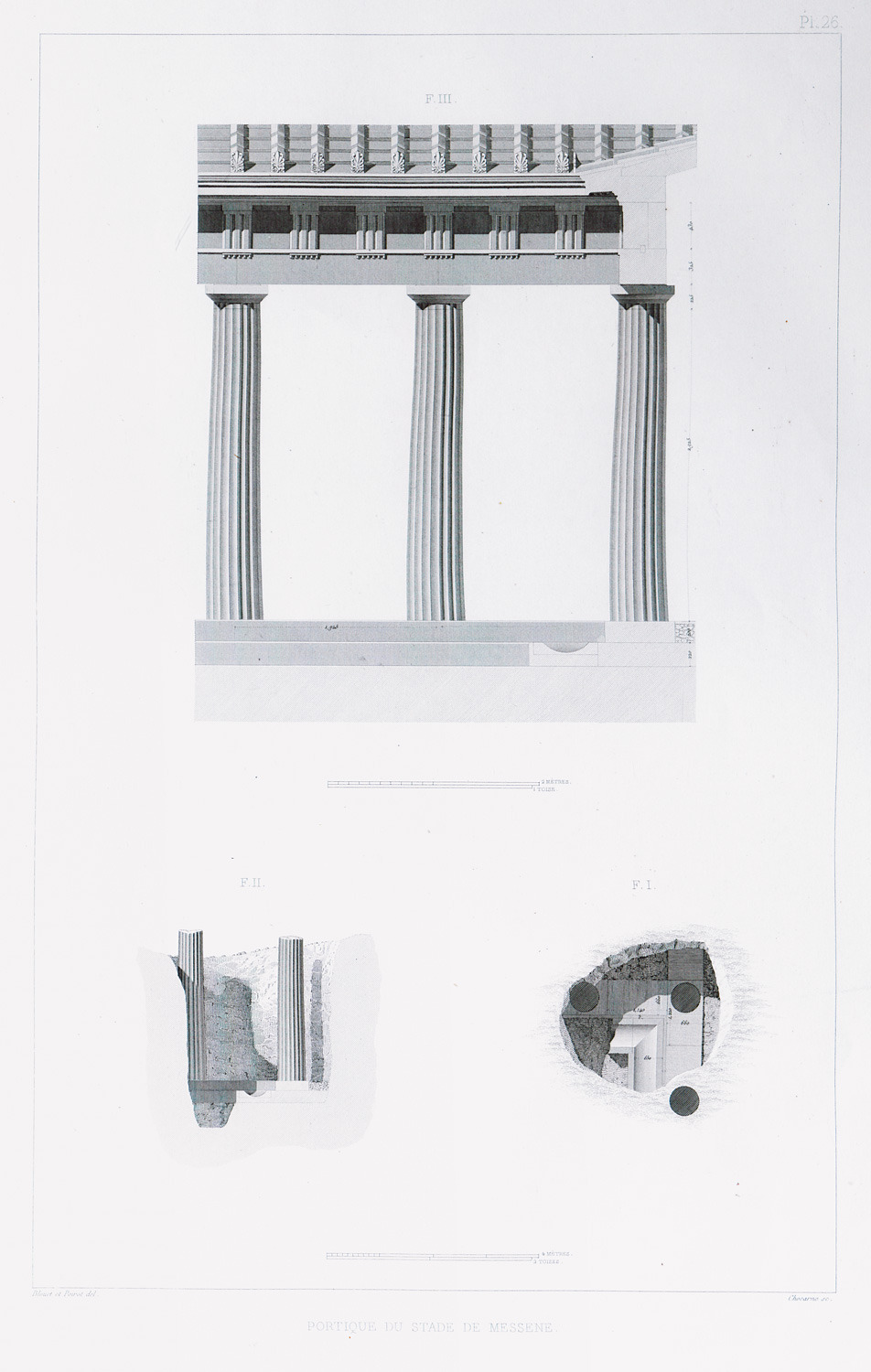
-
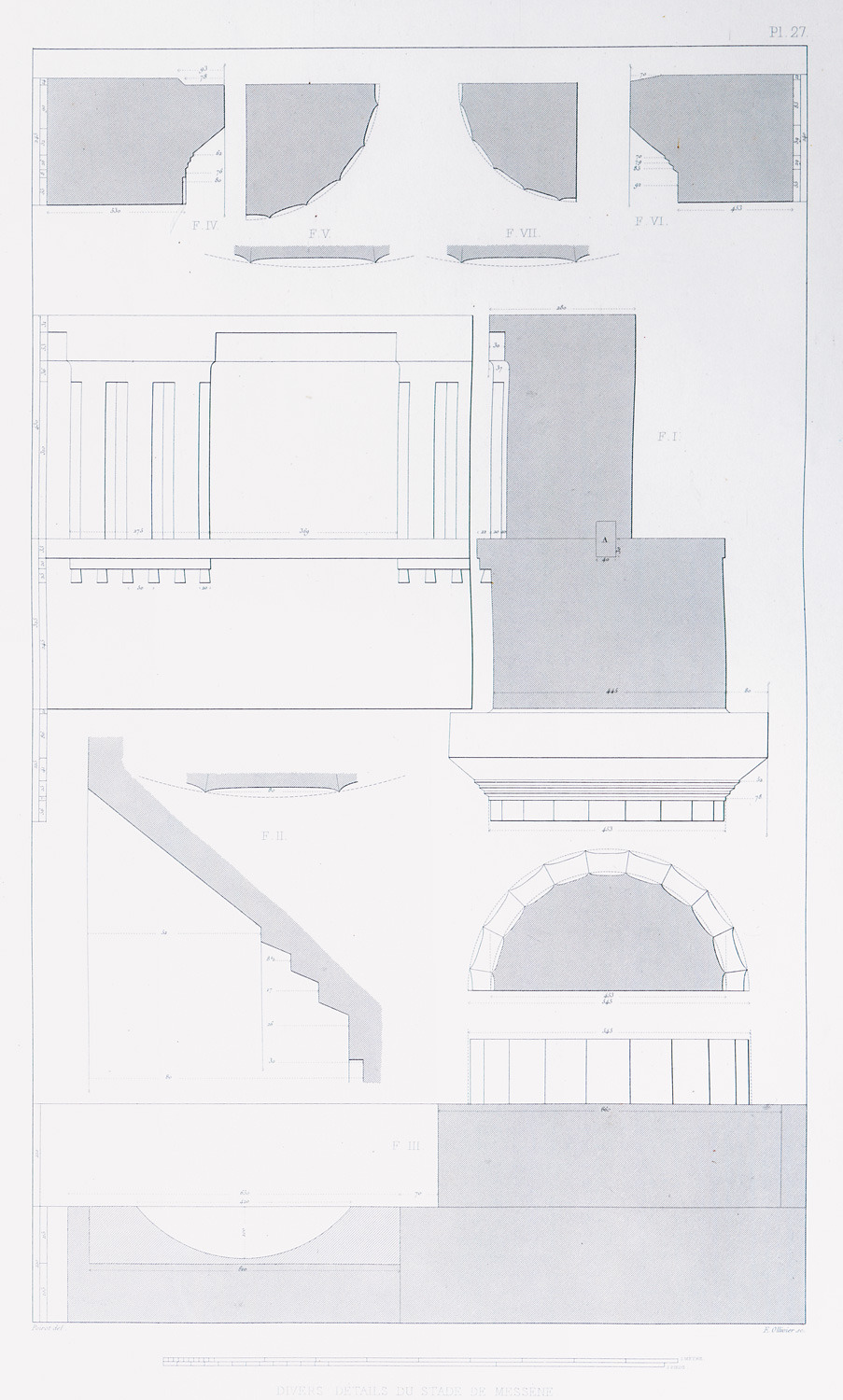
-
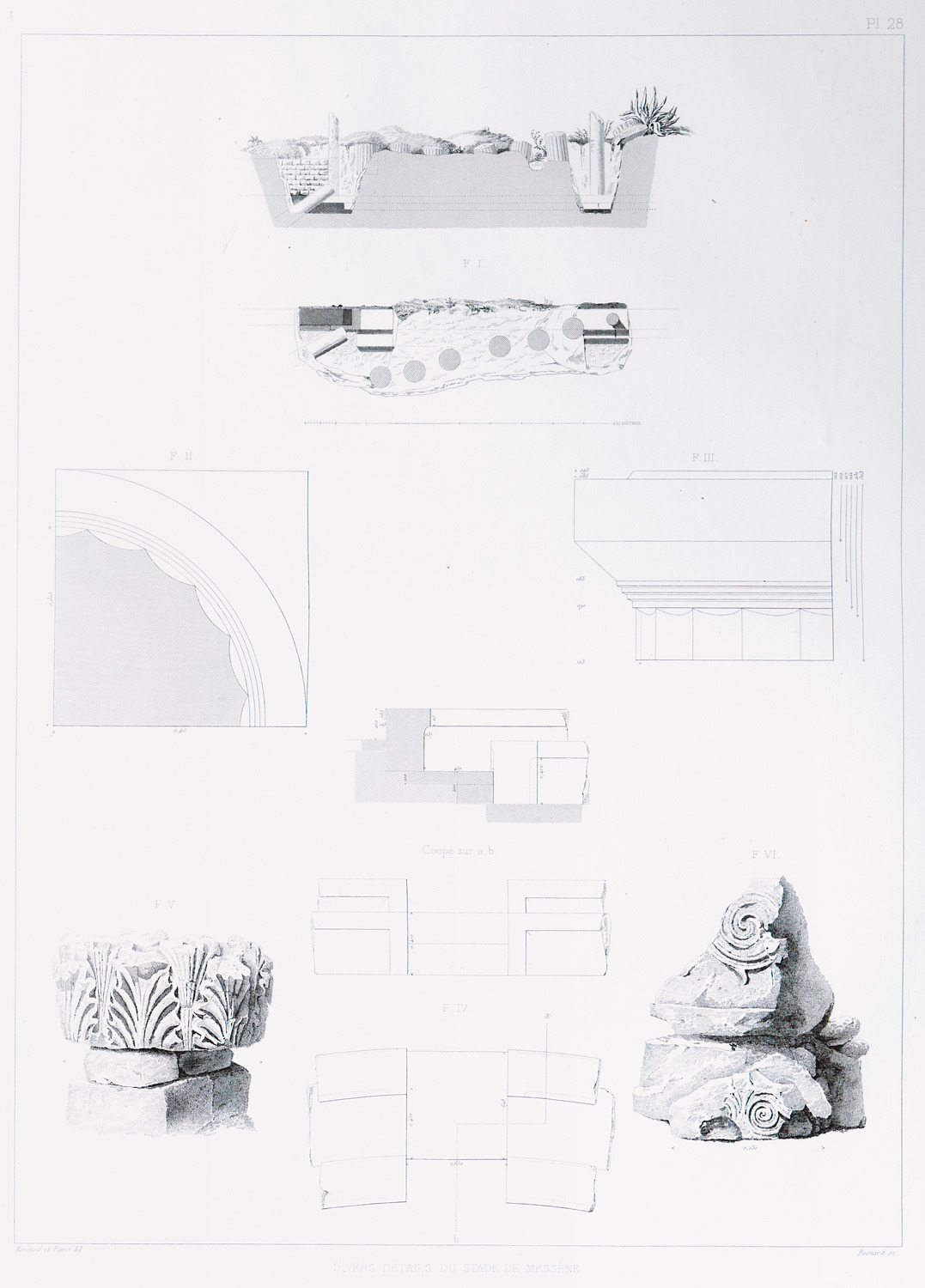
-
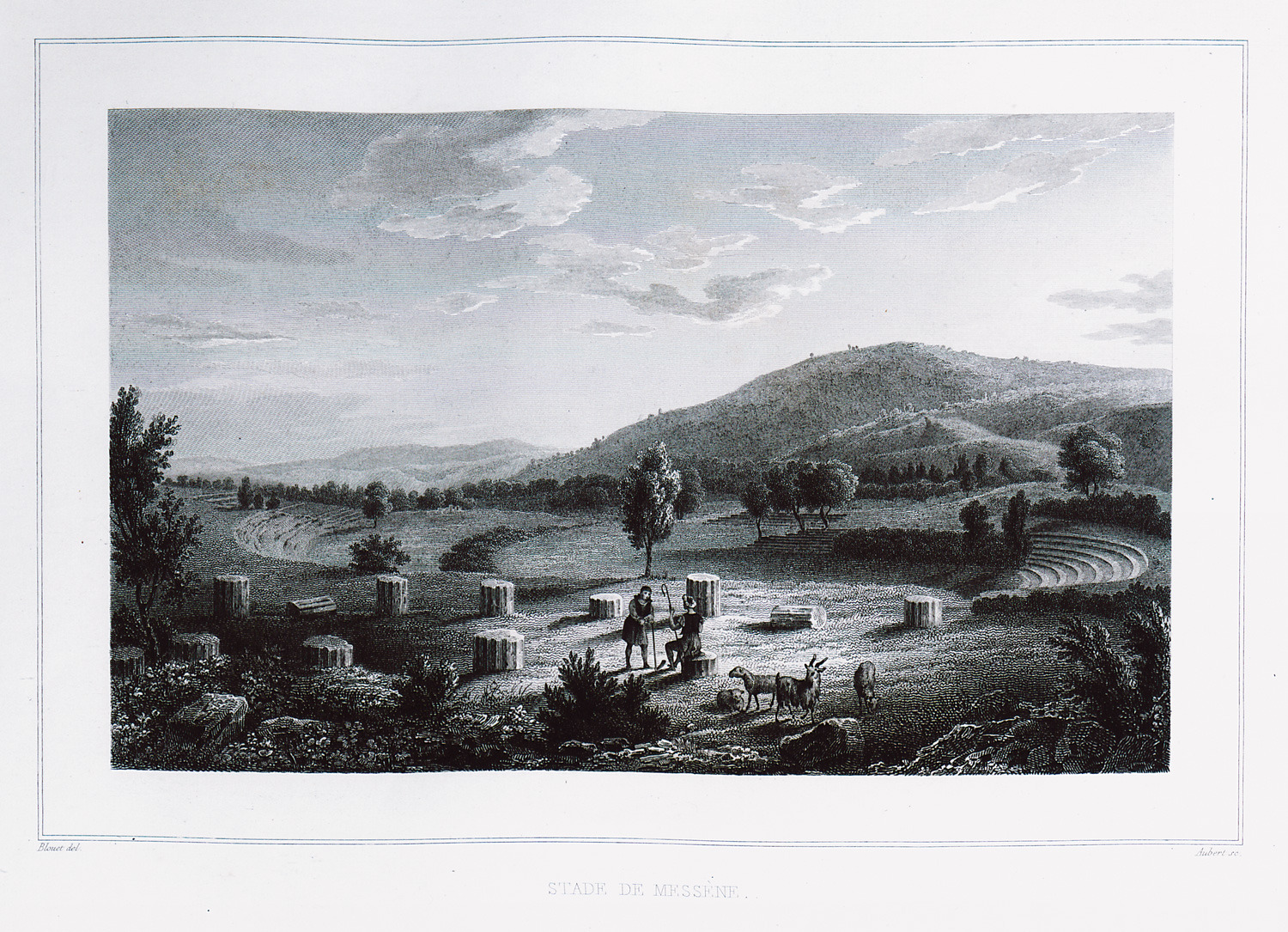
-
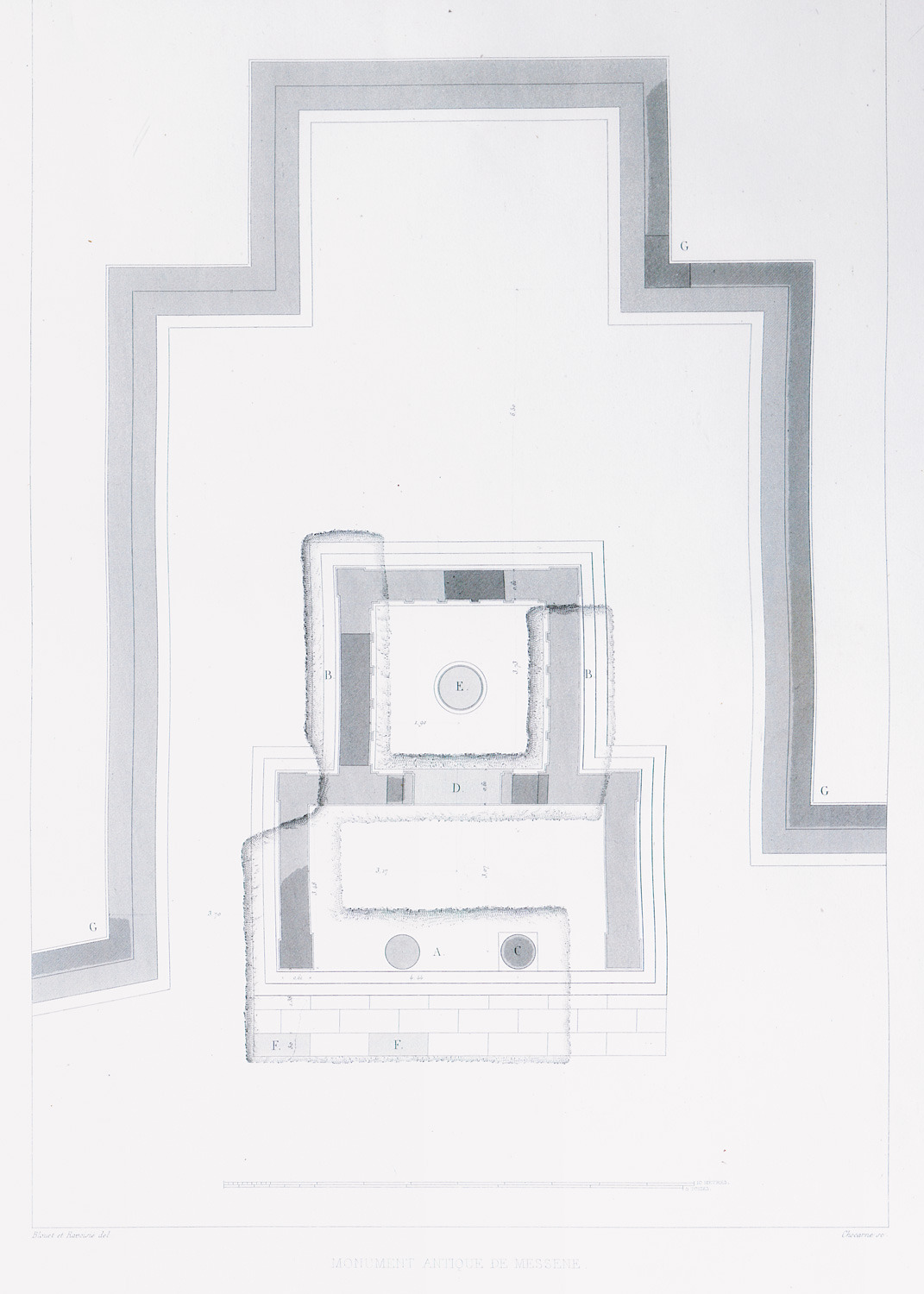
-
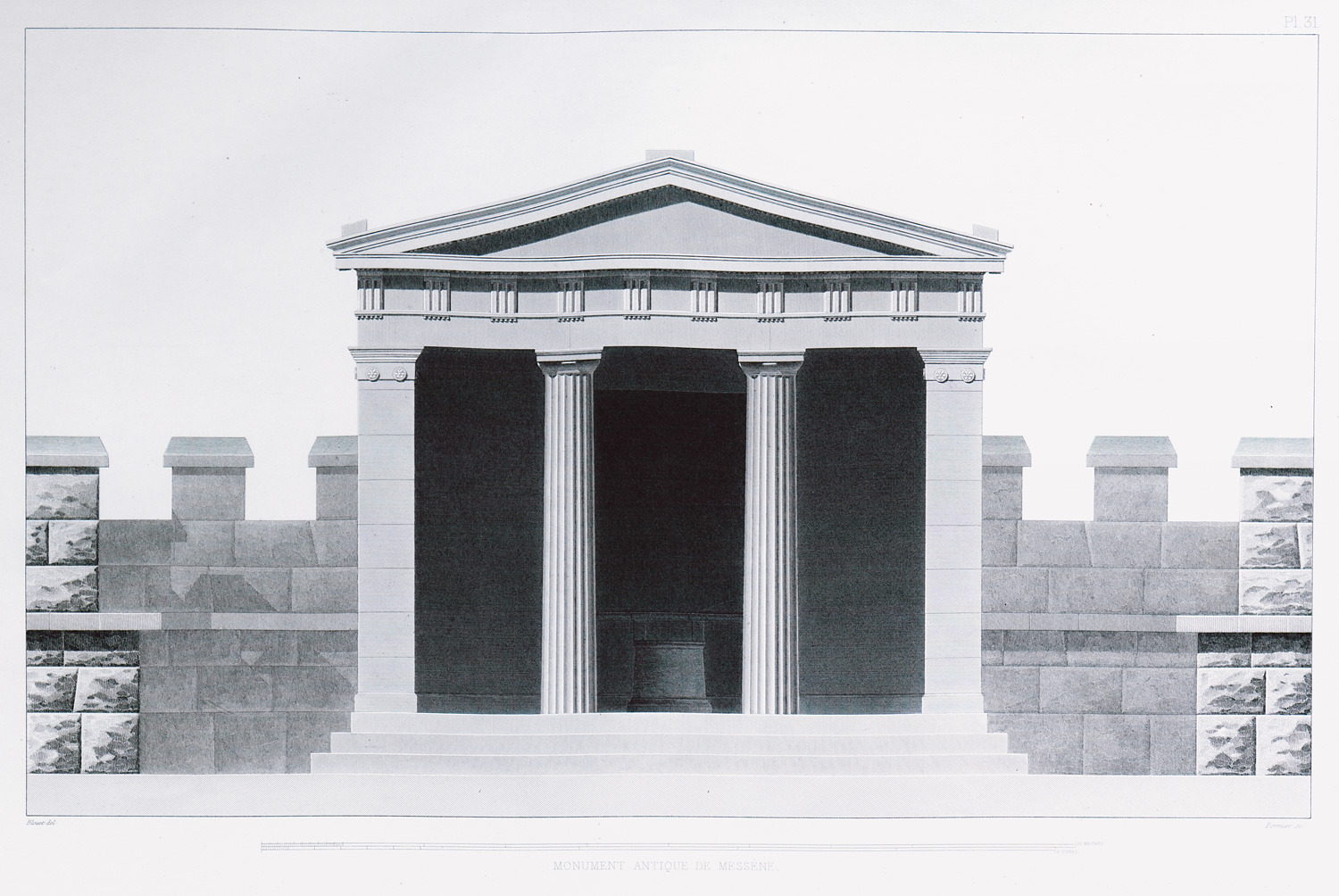
Elevation of the Heroon at the stadium of ancient Messene (reconstruction).
-
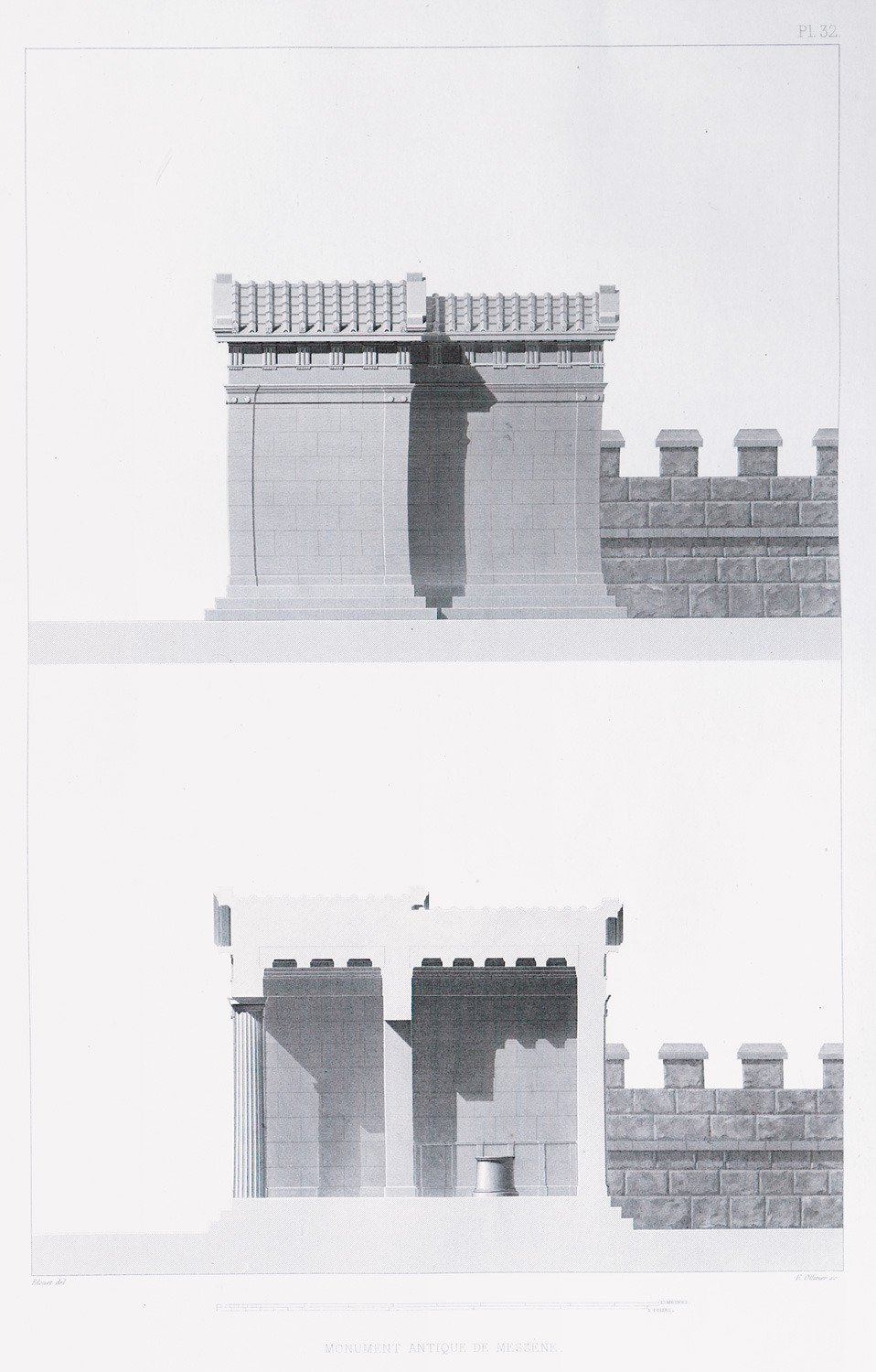
Side elevation and section of the Heroon at the stadium of ancient Messene (reconstruction).
-
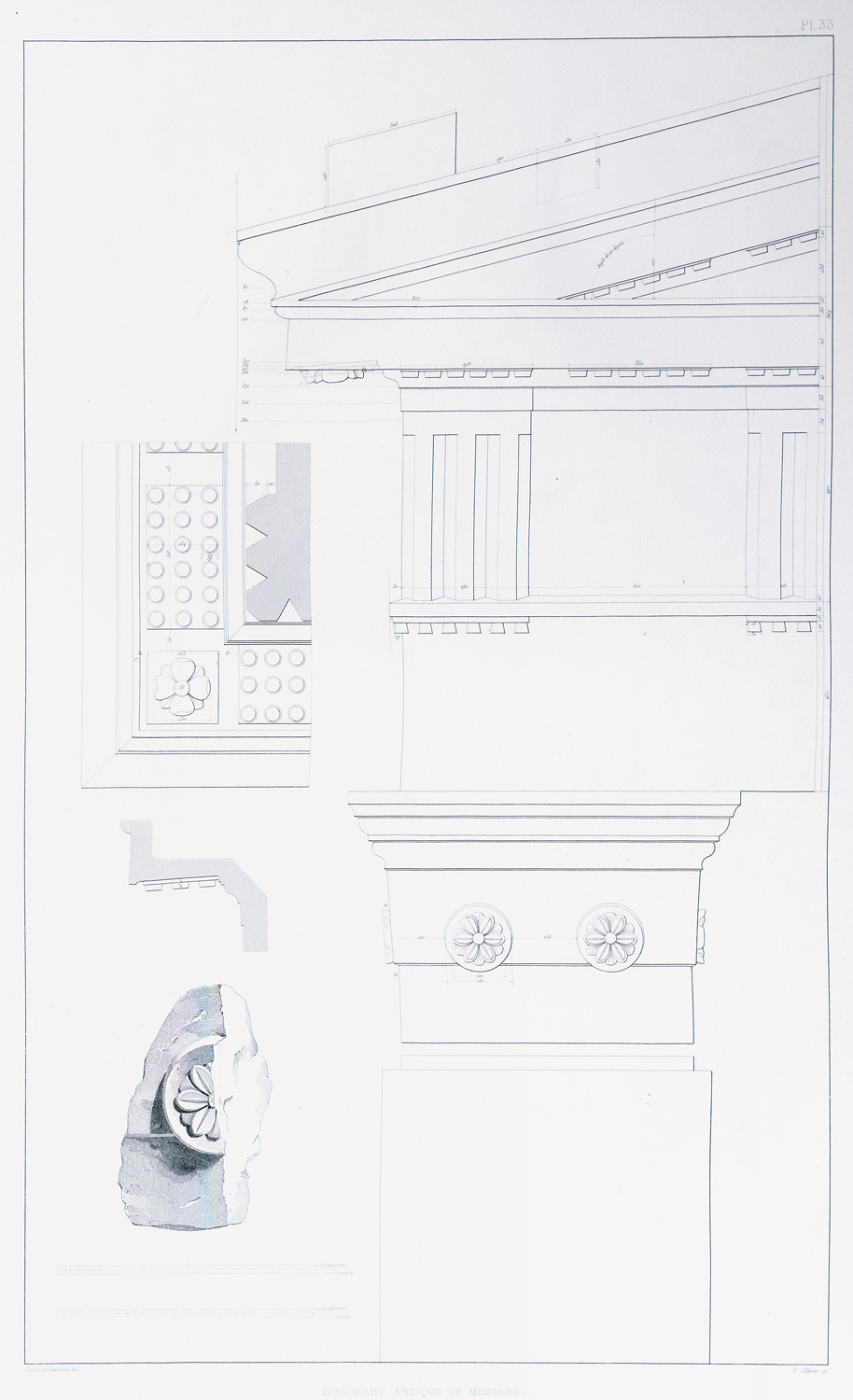
-
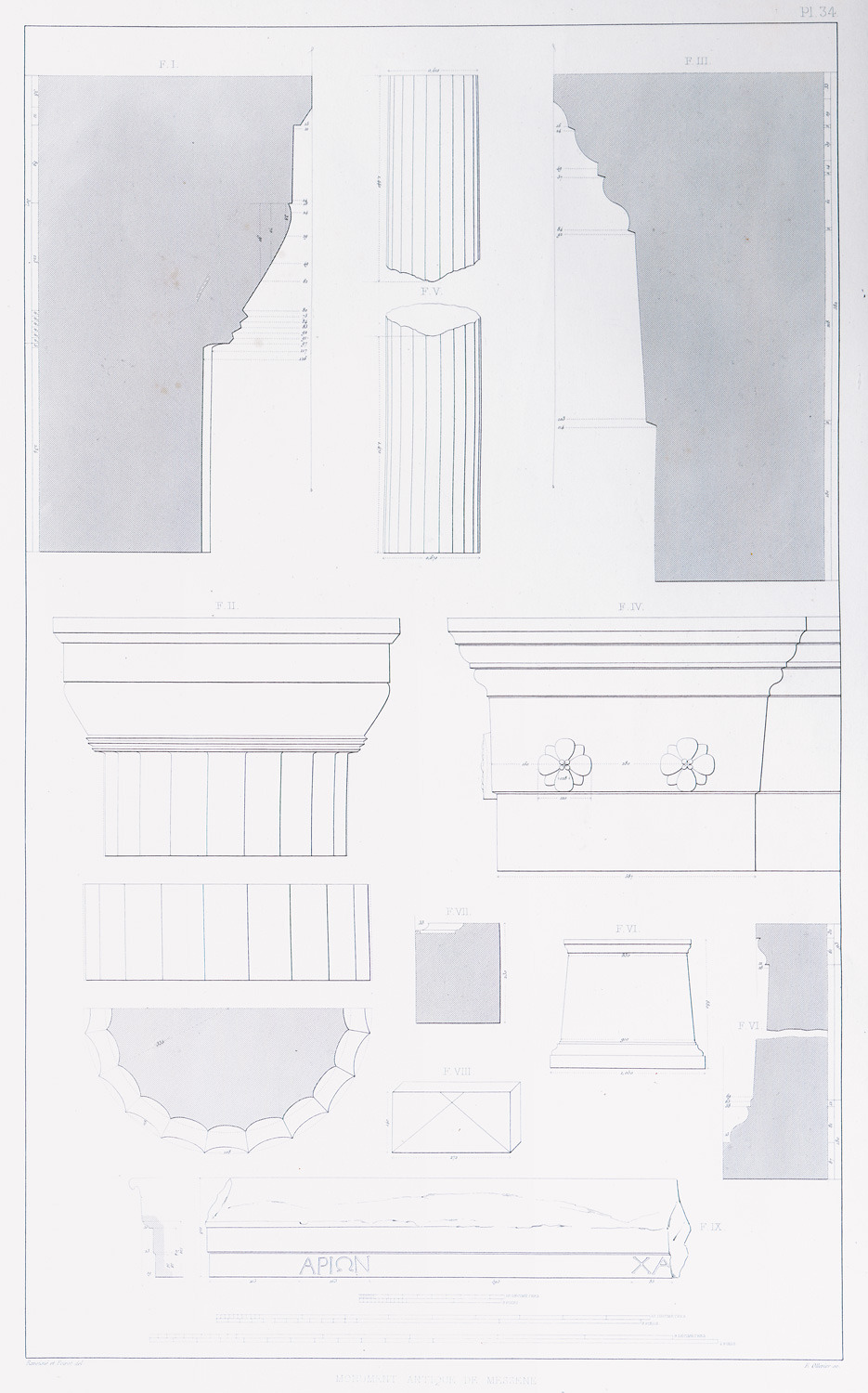
-
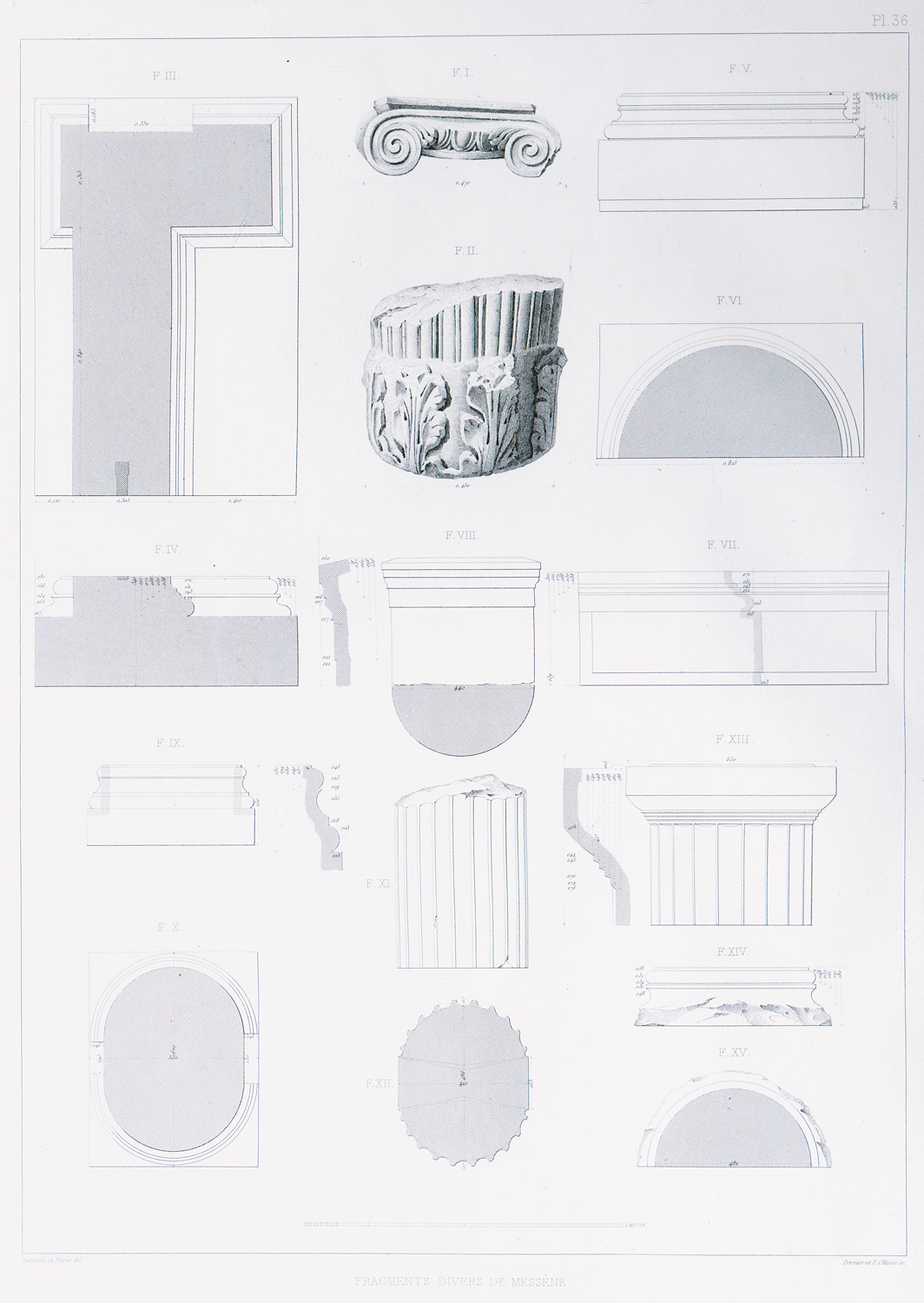
-
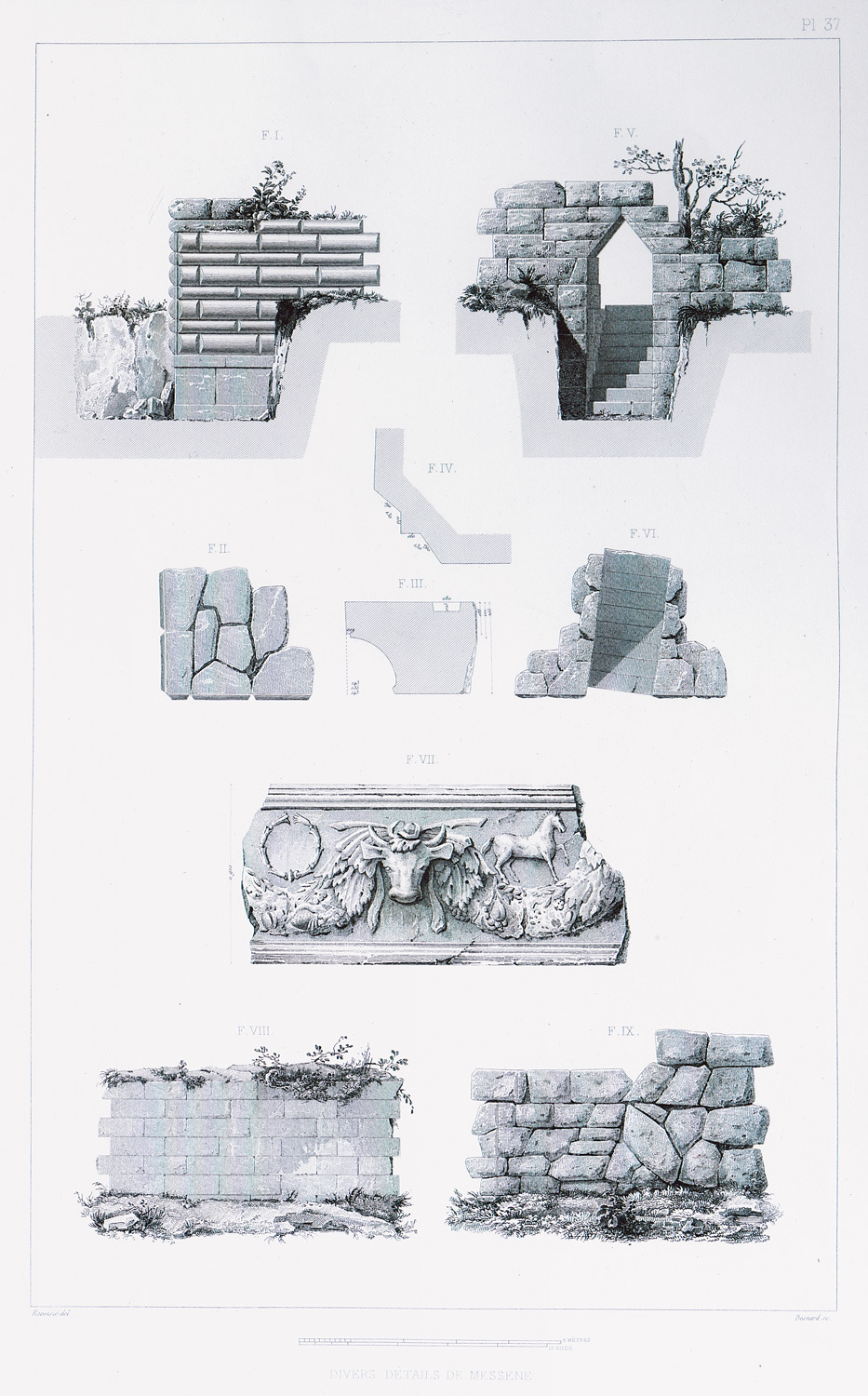
Architectural and decorative features of monuments of ancient Messene.
-
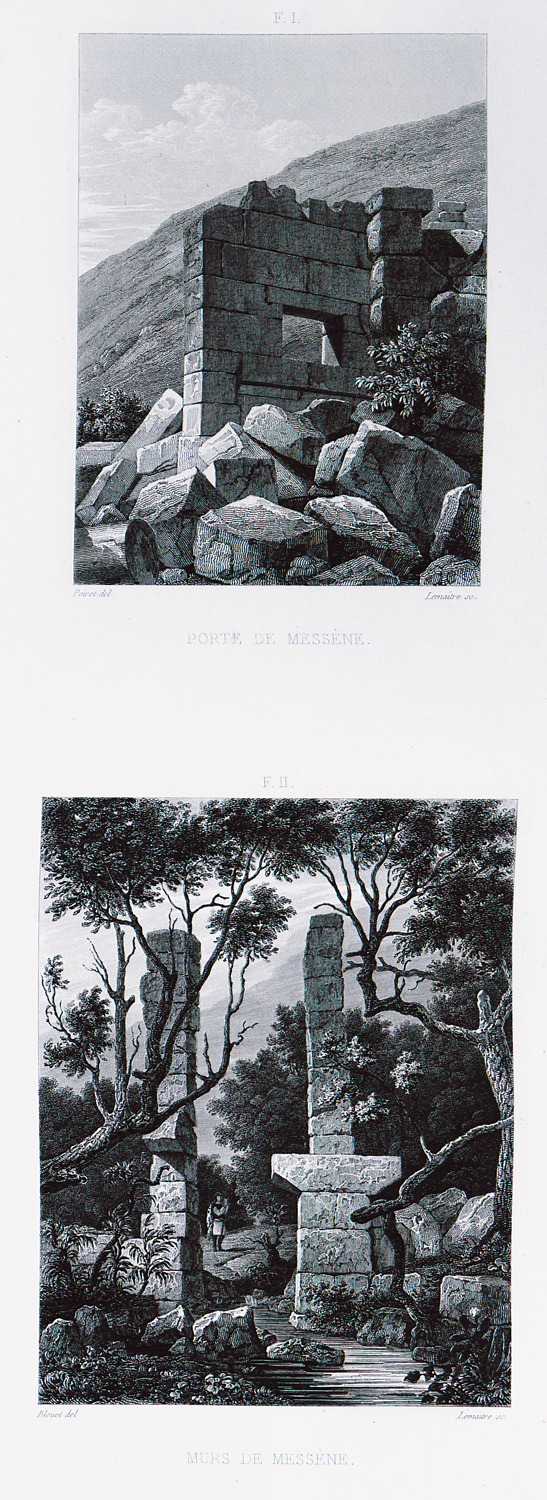
1. The Laconic Gate of the walls of ancient Messene. 2. Part of the walls of ancient Messene
-
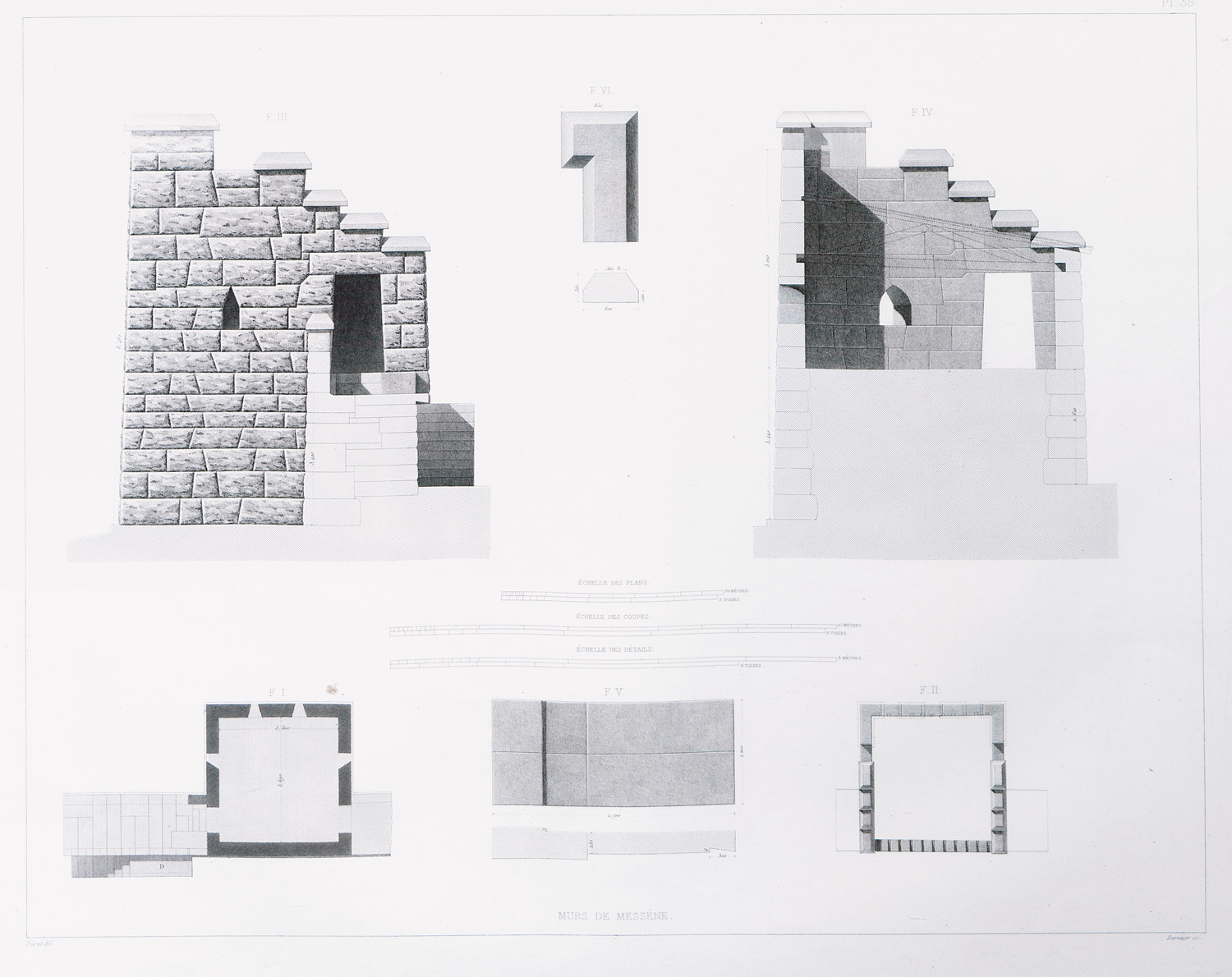
-
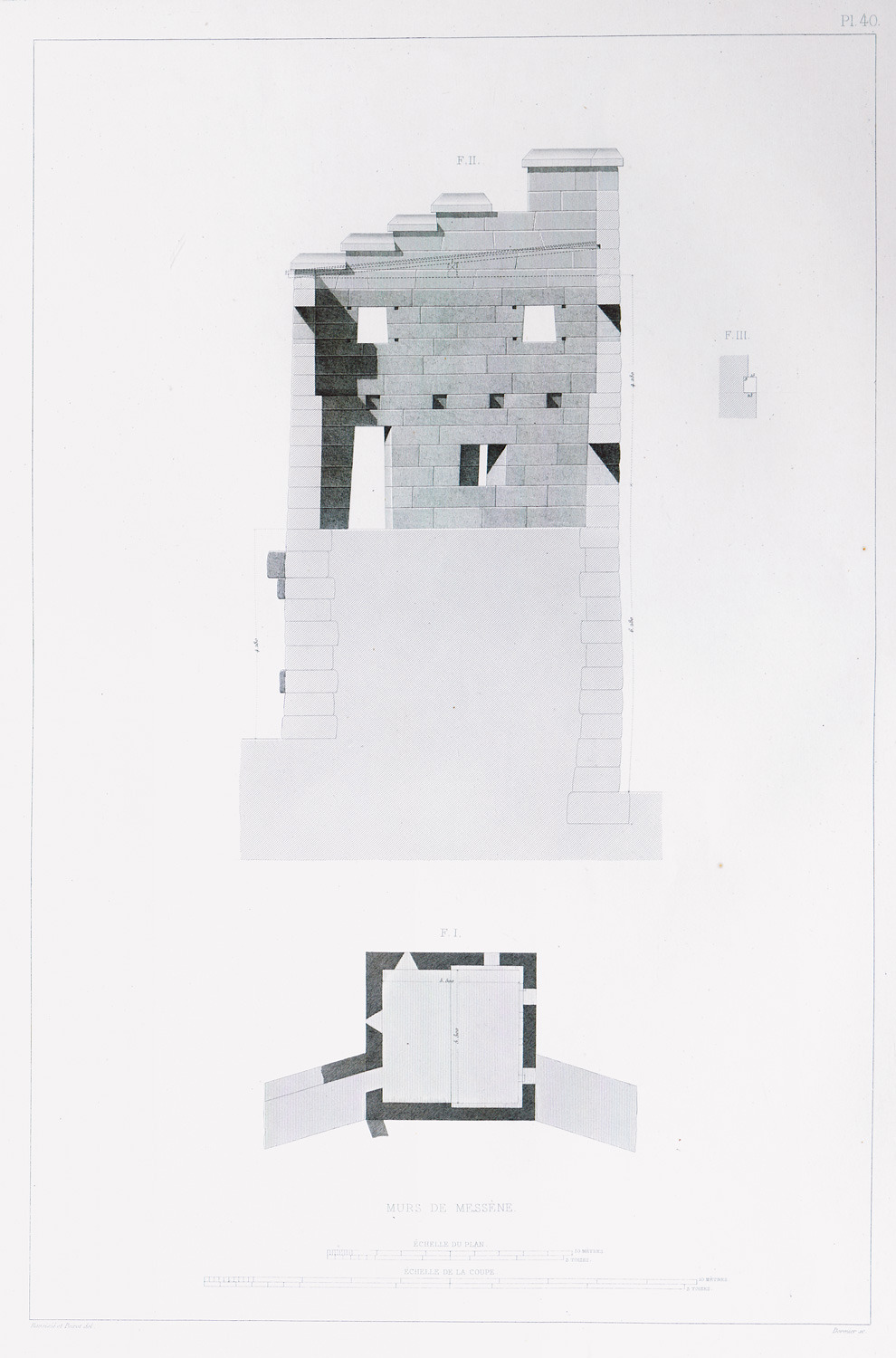
Reconstruction of square tower at the walls of ancient Messene: Section and plan.
-
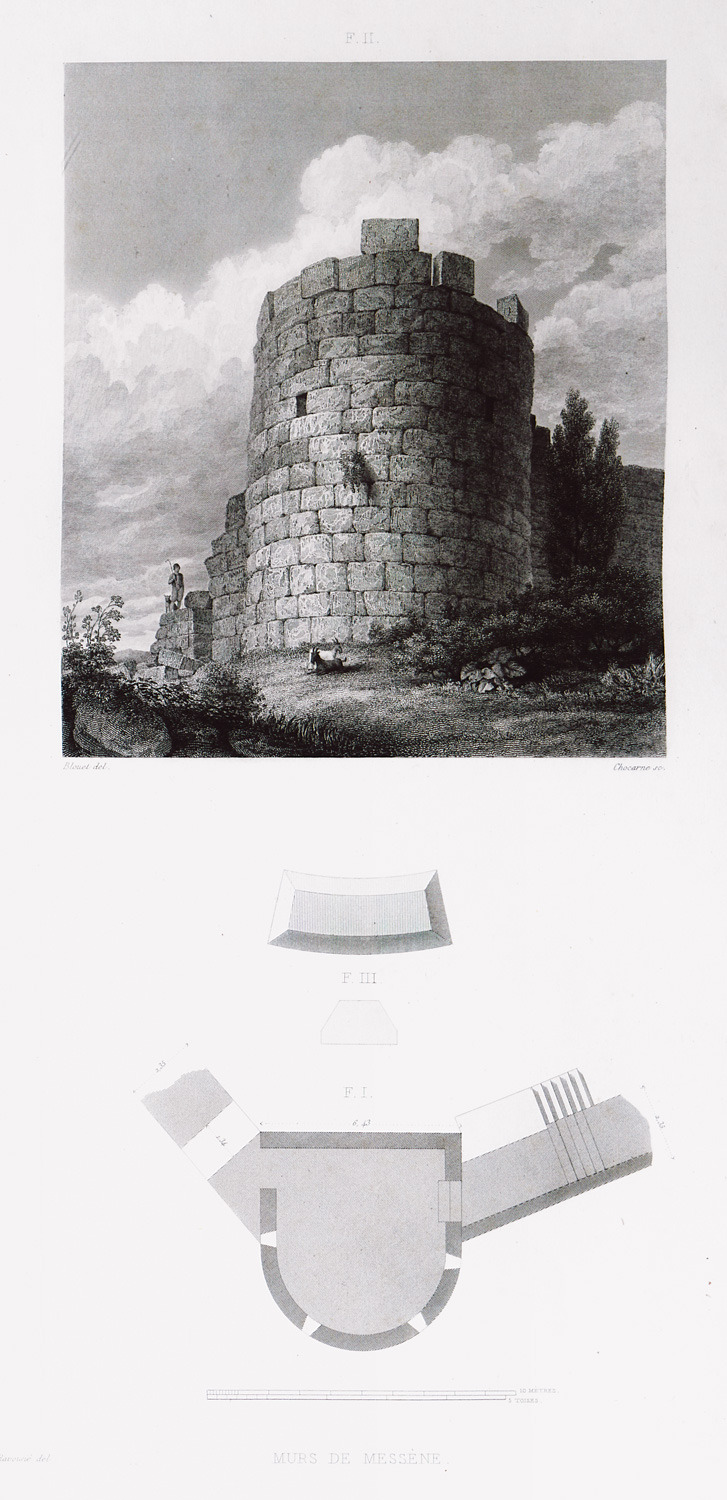
View and plan of the horseshoe-shaped tower at the northwestern wall of ancient Messene (Tower 6).
-
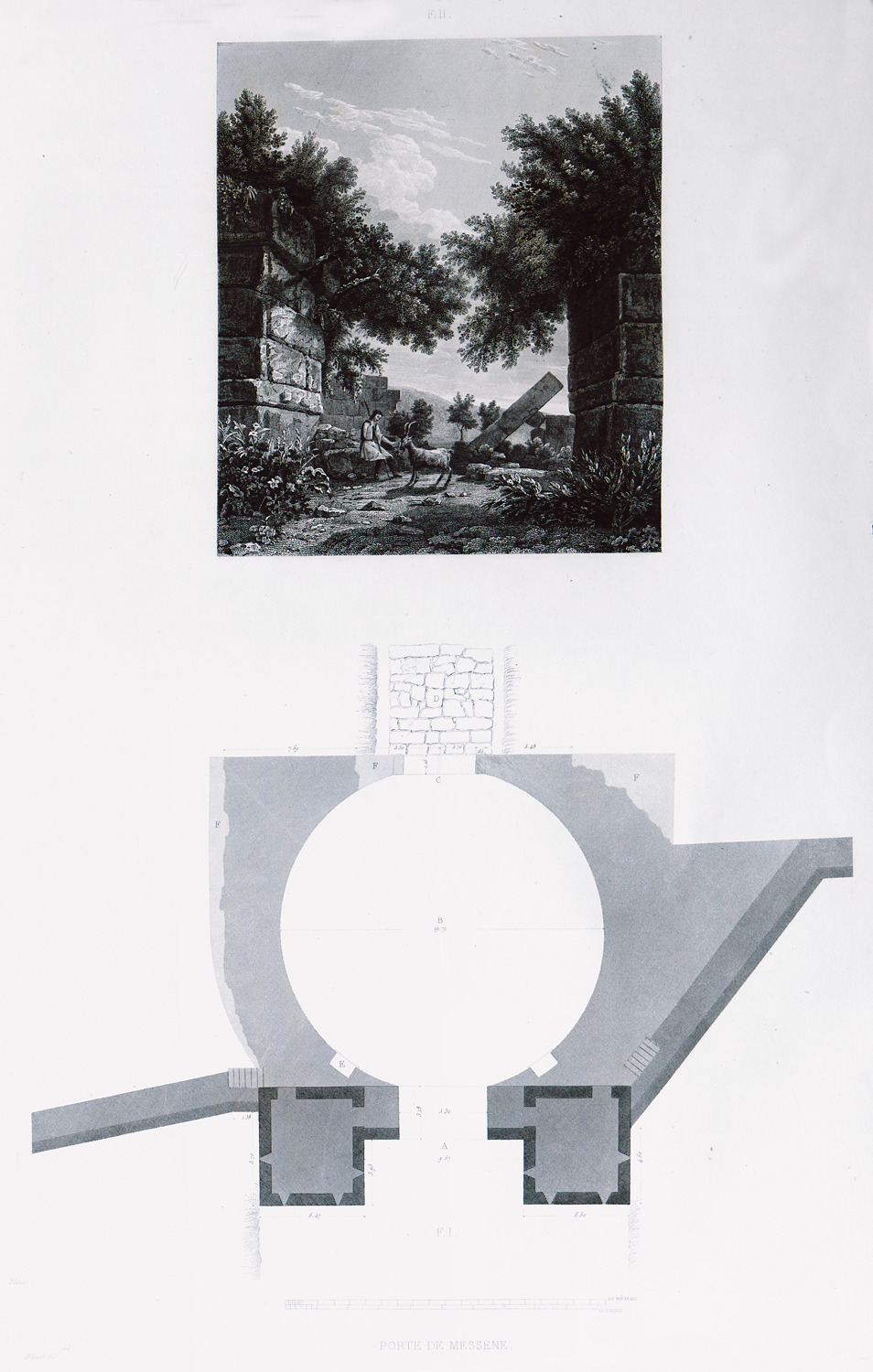
View and plan of the Arcadian Gate at the walls of ancient Messene (reconstruction).
-
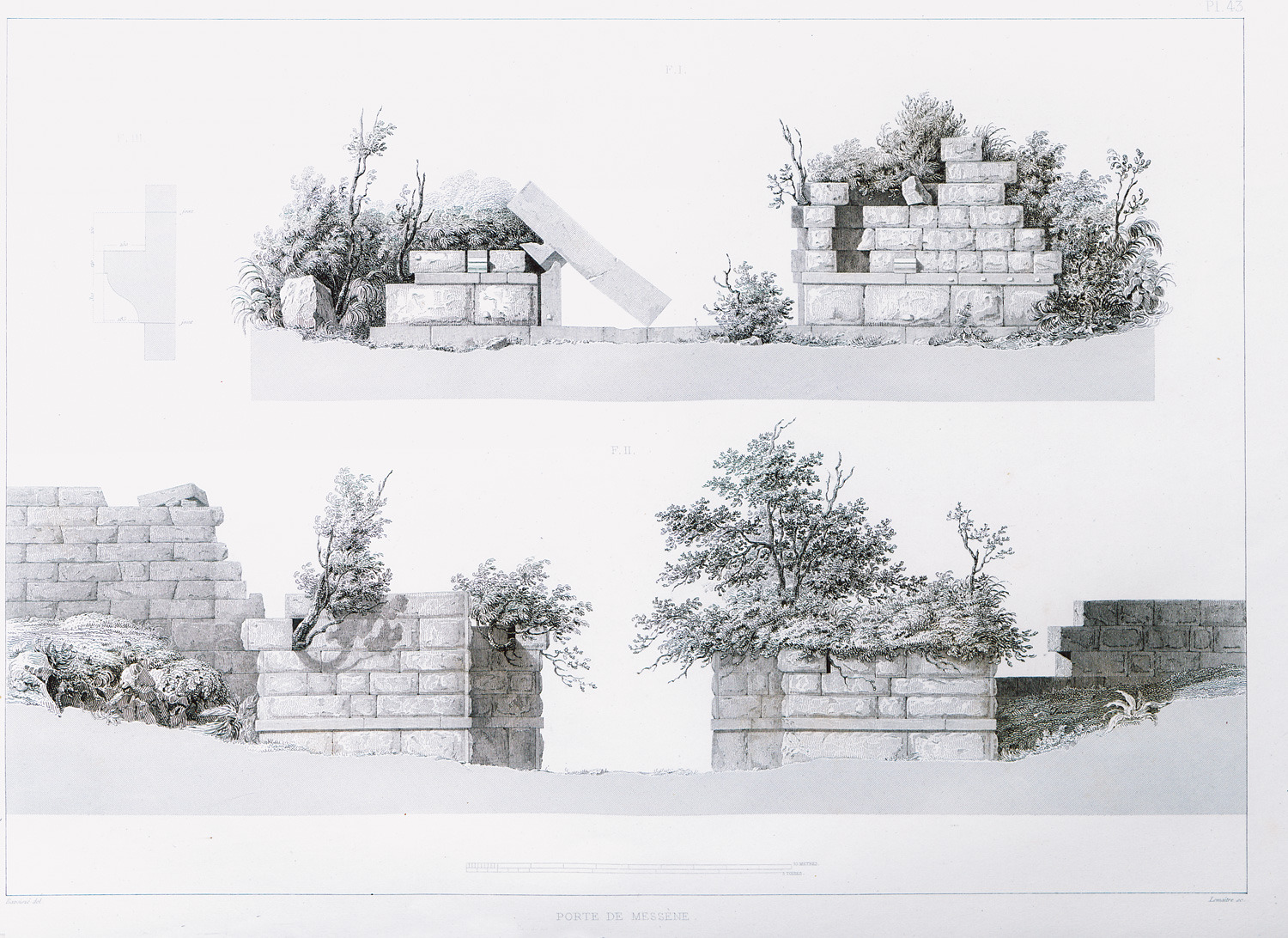
The Arcadian Gate at the walls of ancient Messene. 1. View of the exterior. 2. View of the interior.
-
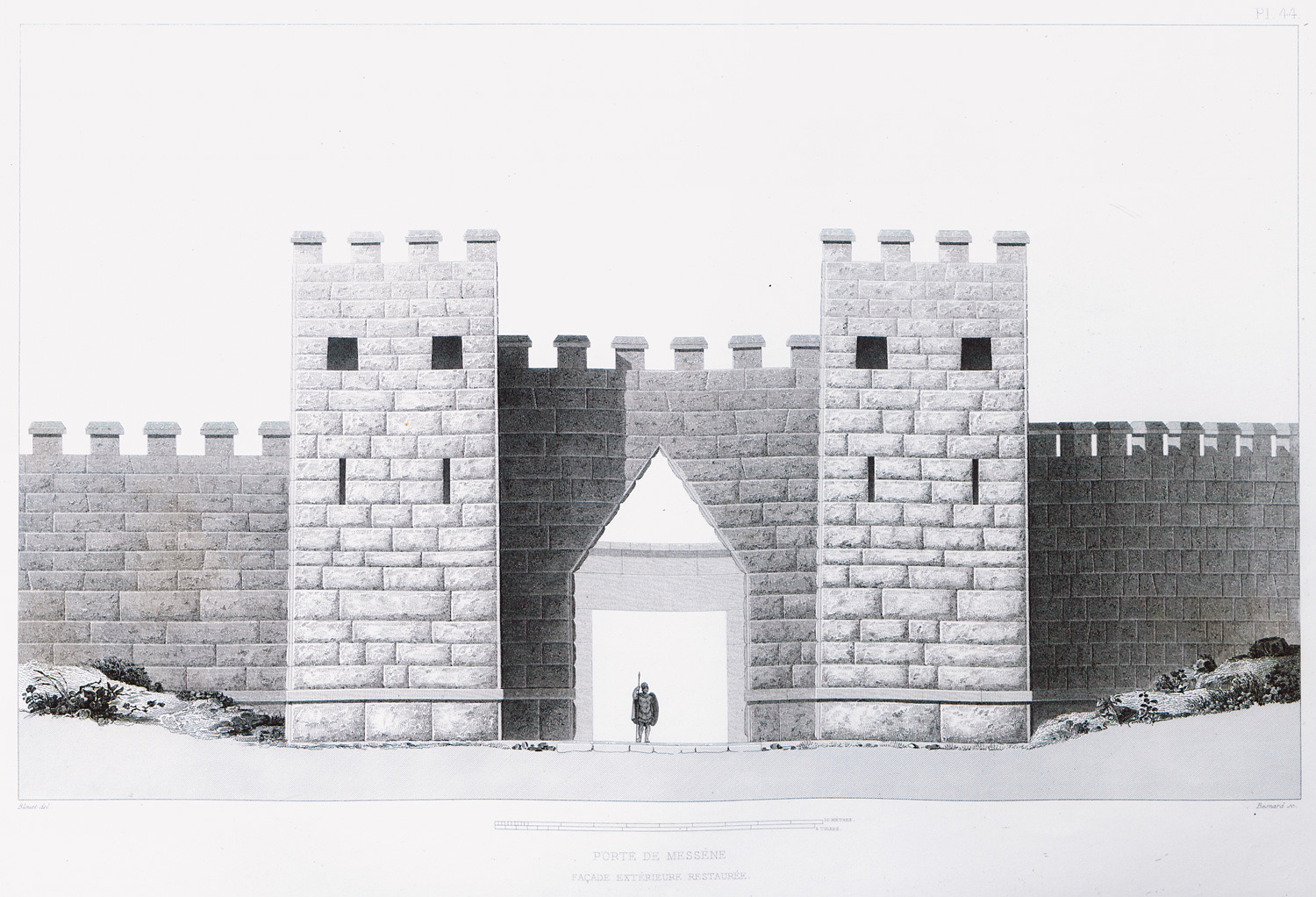
The Arcadian Gate at the walls of ancient Messene: Reconstruction of the exterior.
-
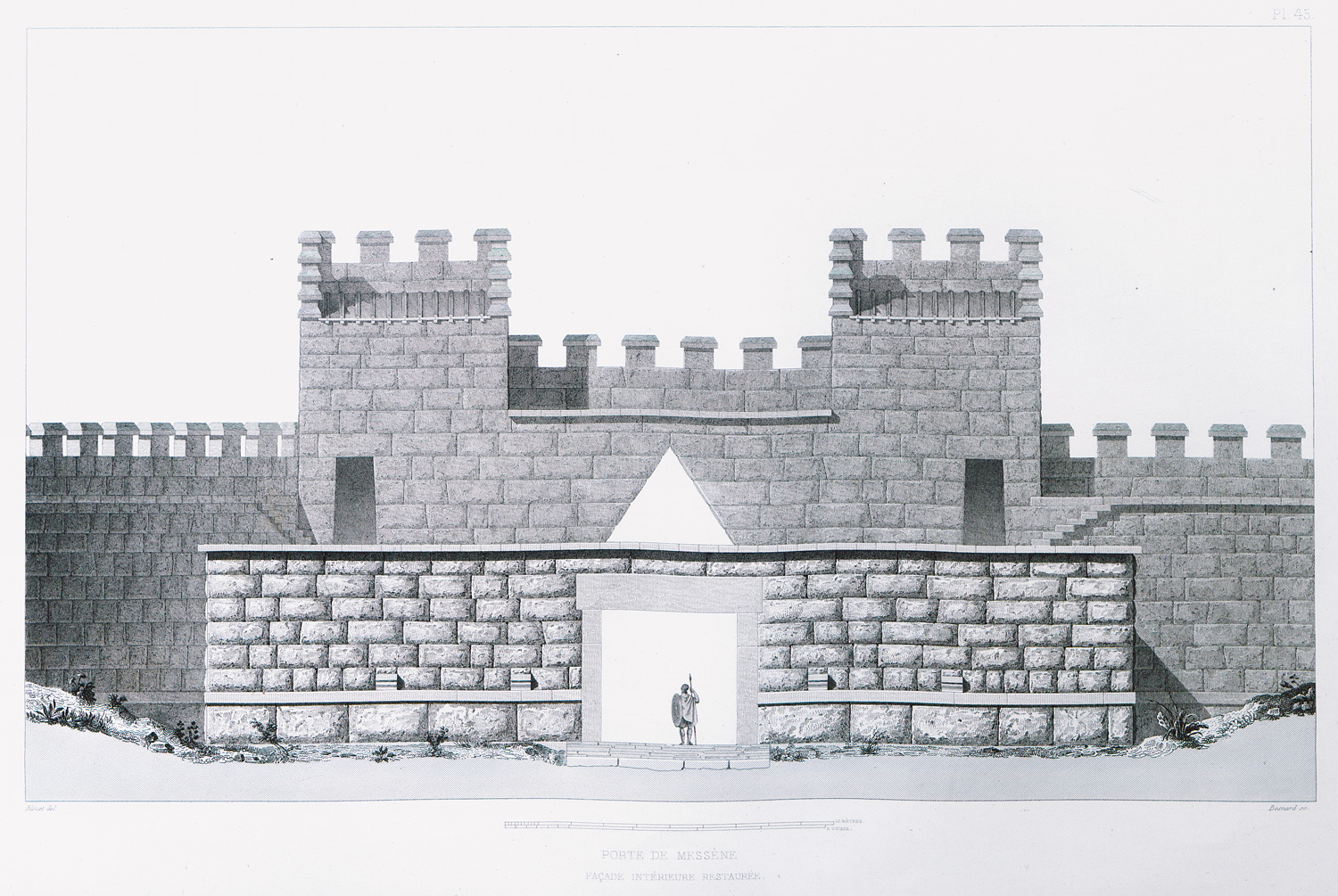
The Arcadian Gate at the walls of ancient Messene: Reconstruction of the interior.
-
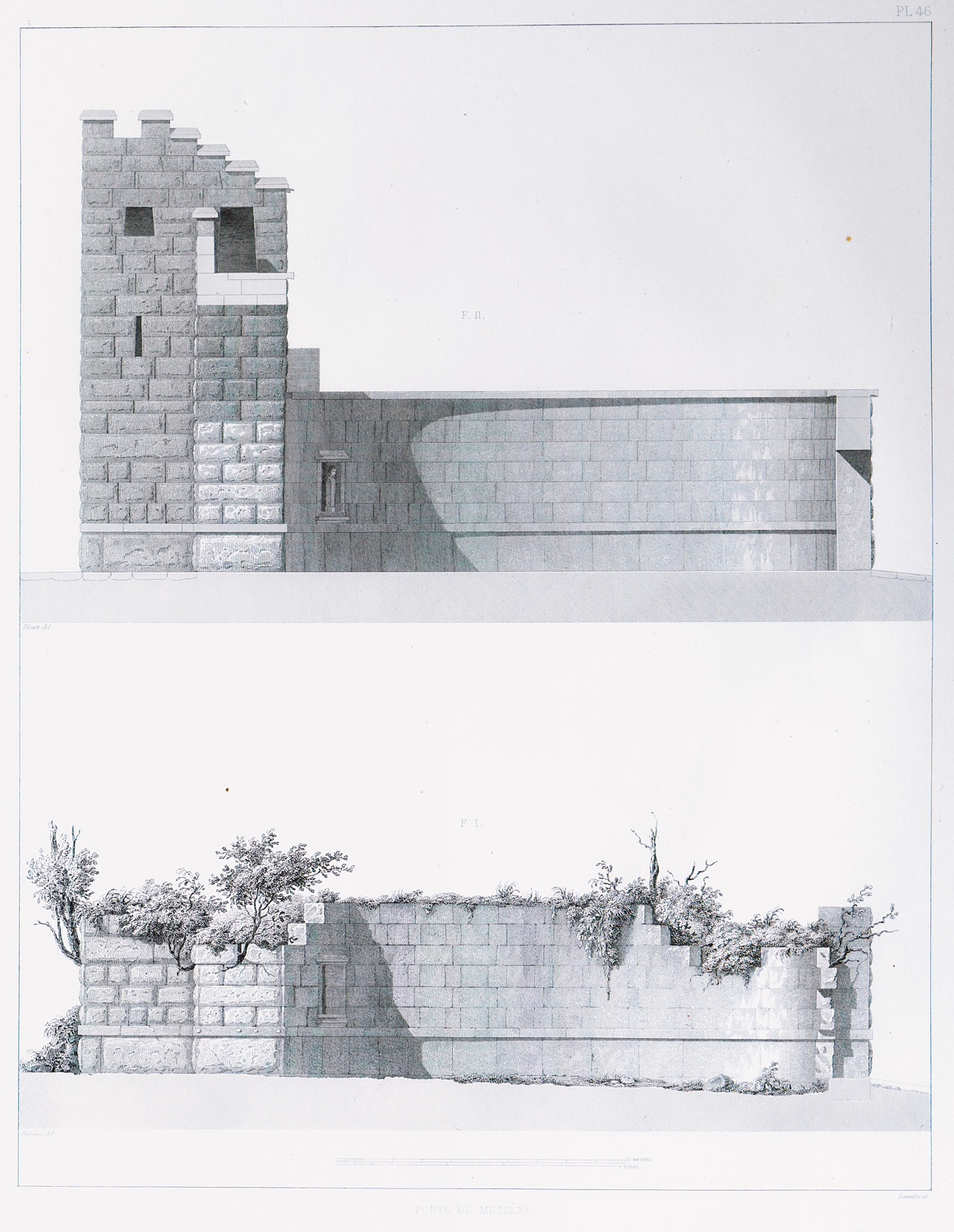
-
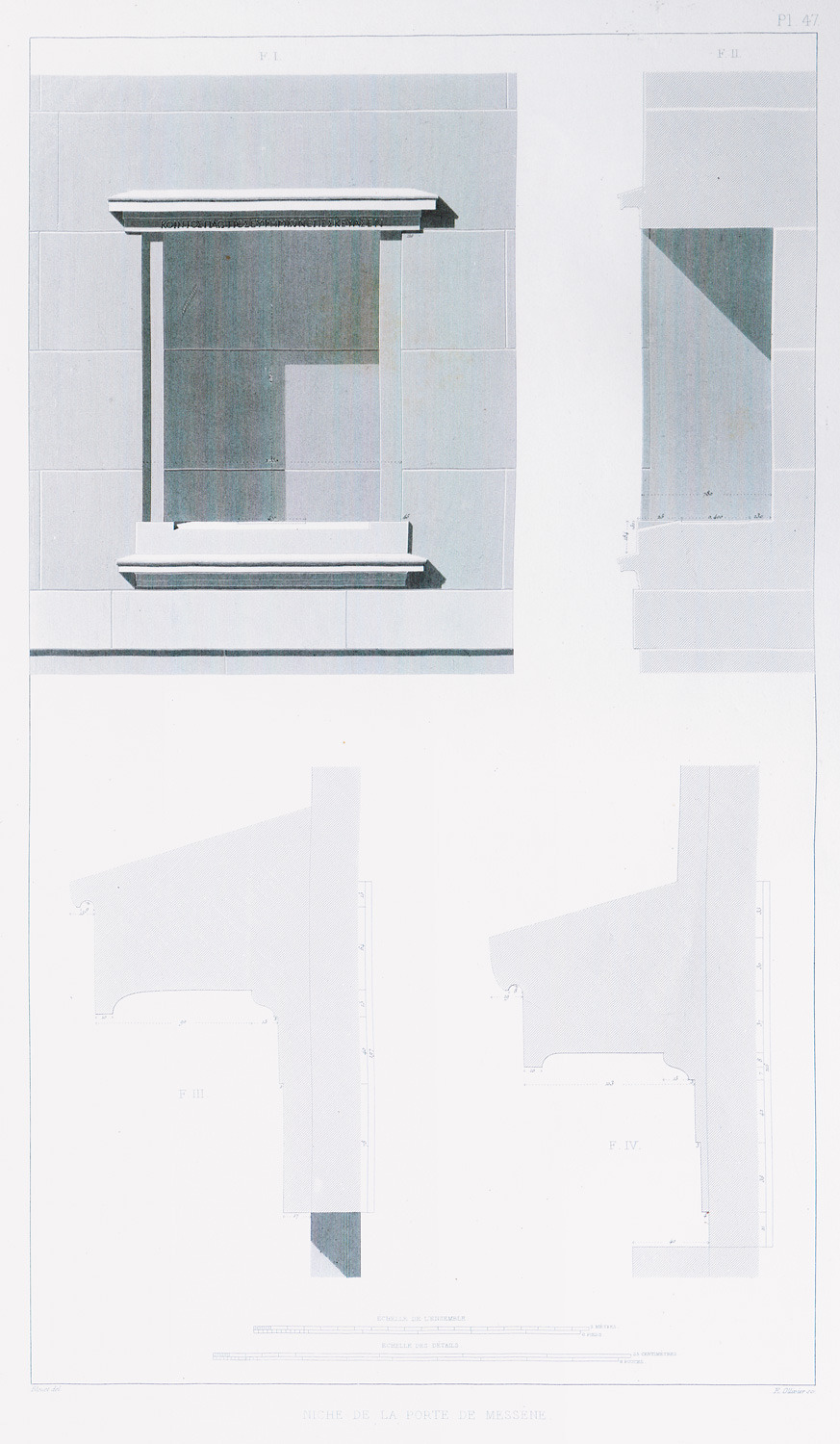
-
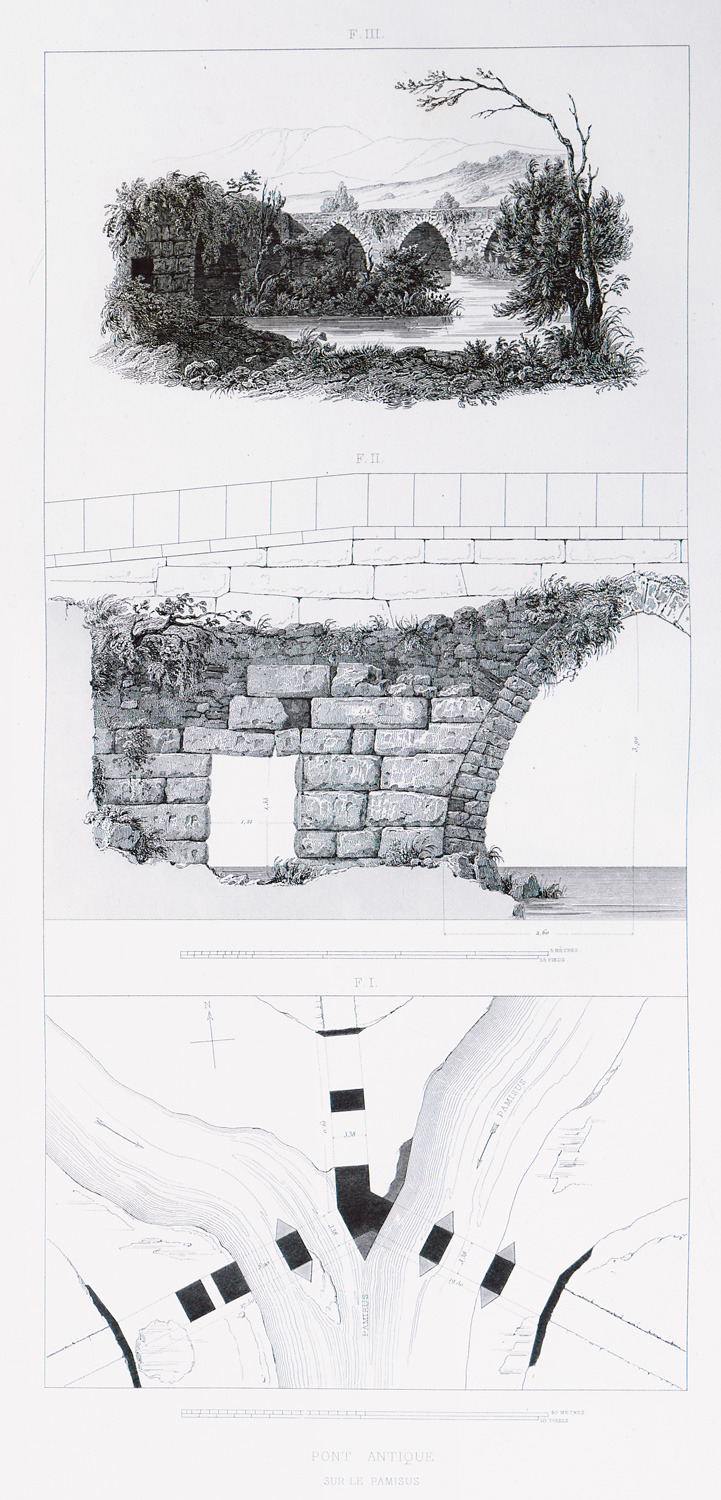
-
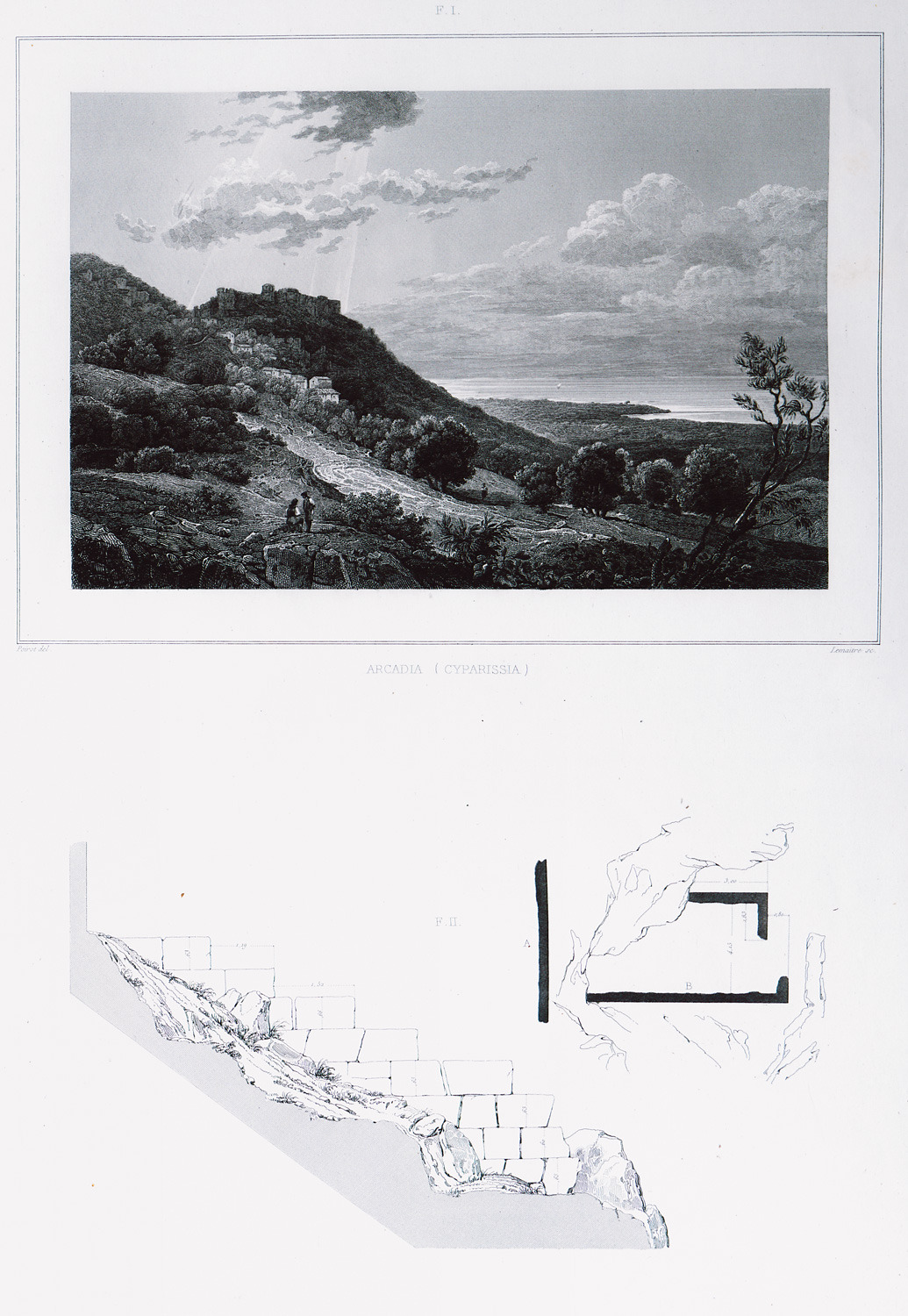
-
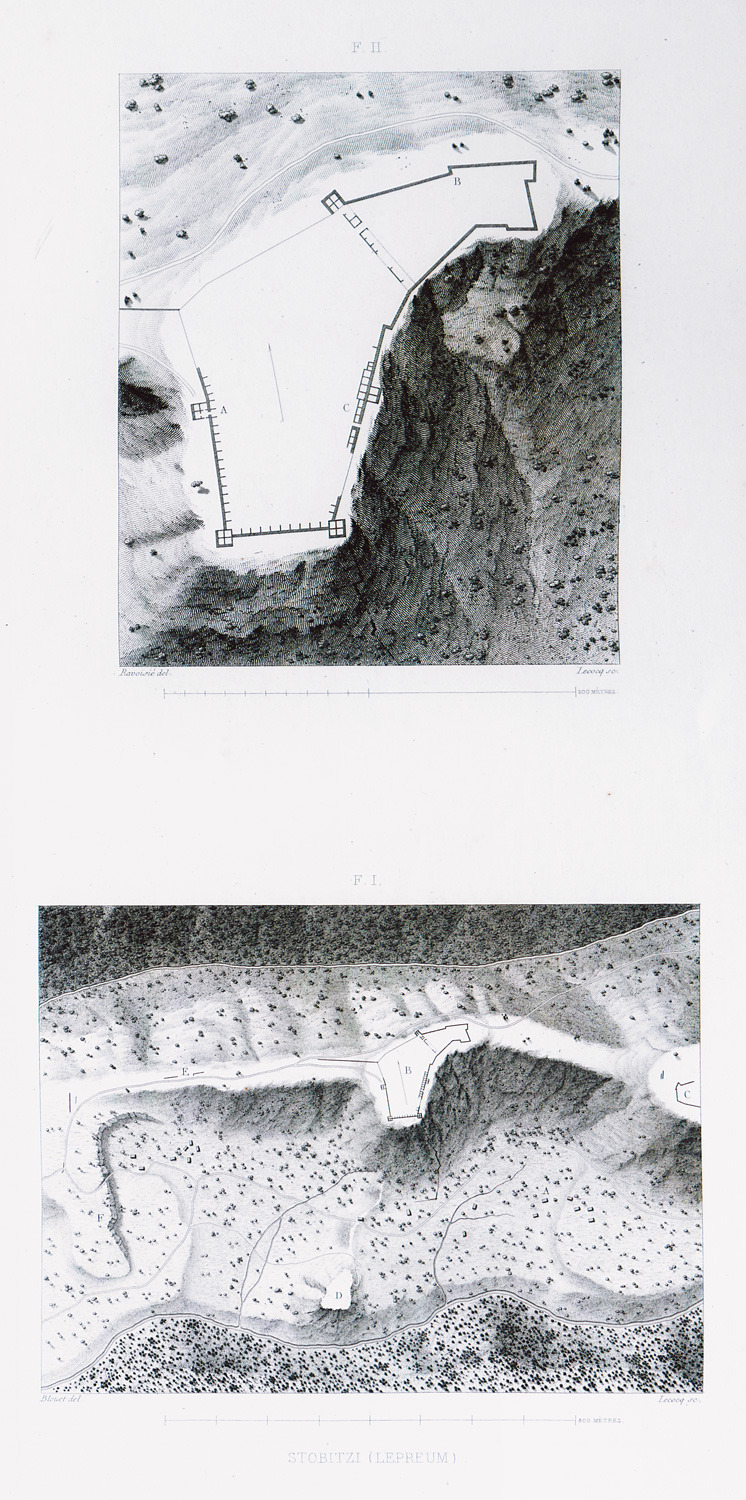
1. Topographic map of ancient Lepreum in Elis. 2. Plan of Lepreum acropolis.
-
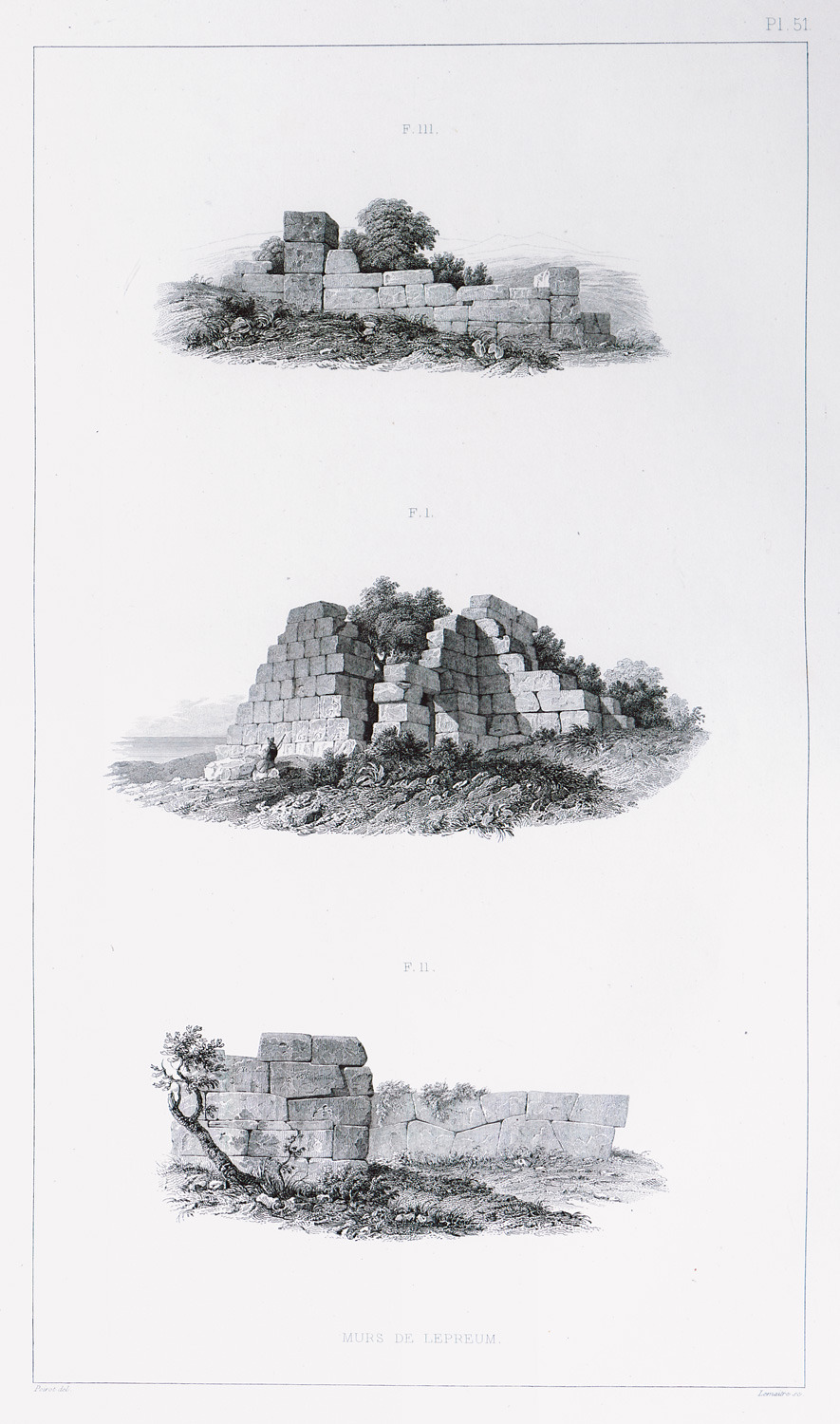
-
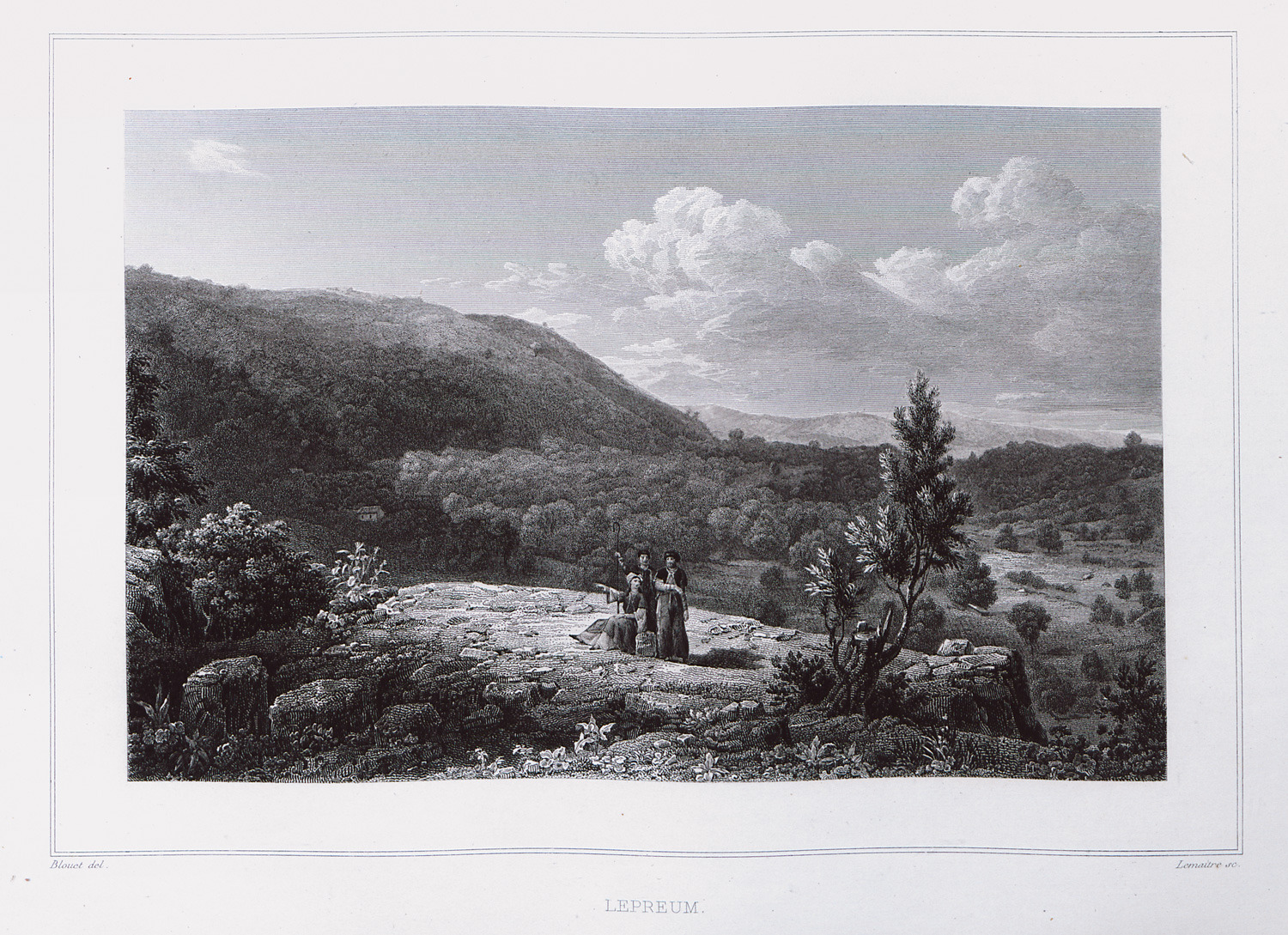
Landscape at Lepreum, Elis. In the background, the acropolis.
-
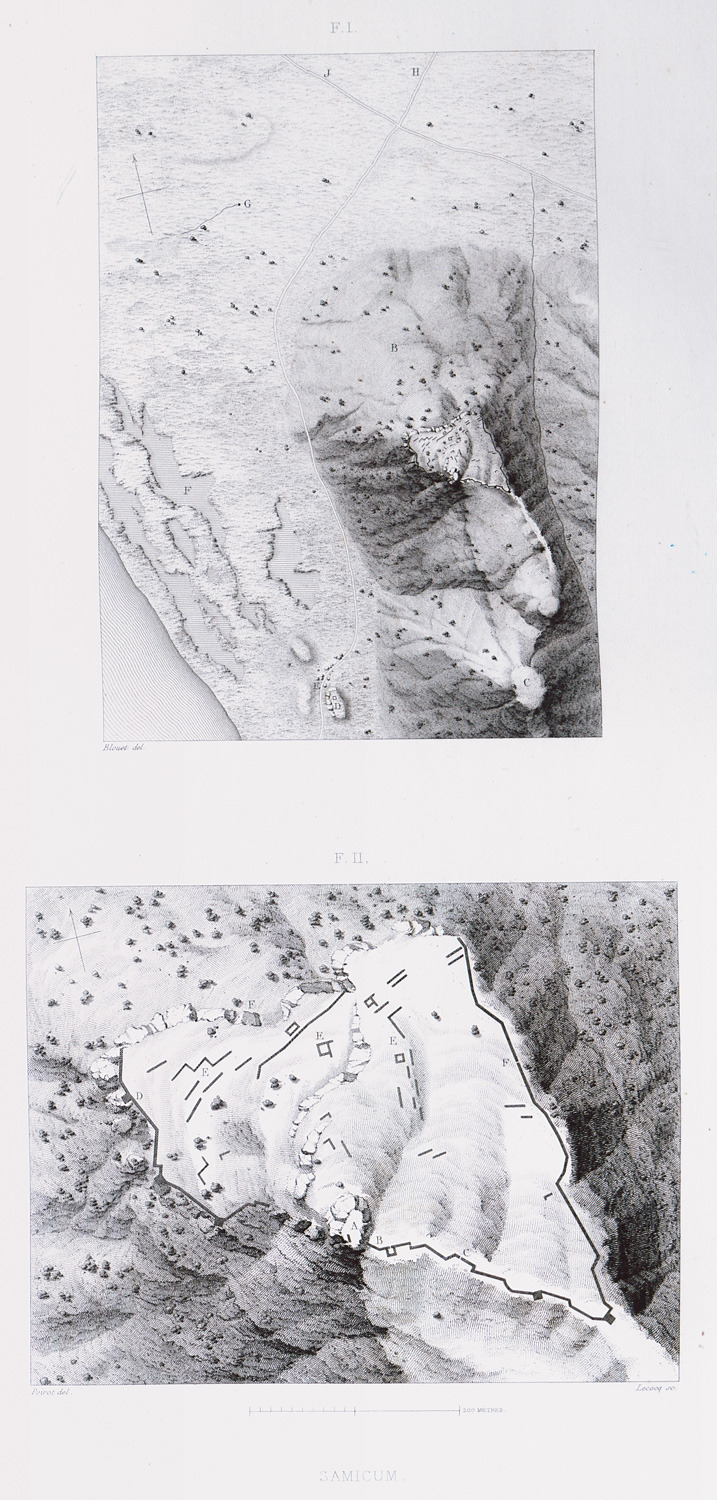
1. Topographic map of ancient Samicum in Elis. 2. Plan of Samicum acropolis.
-
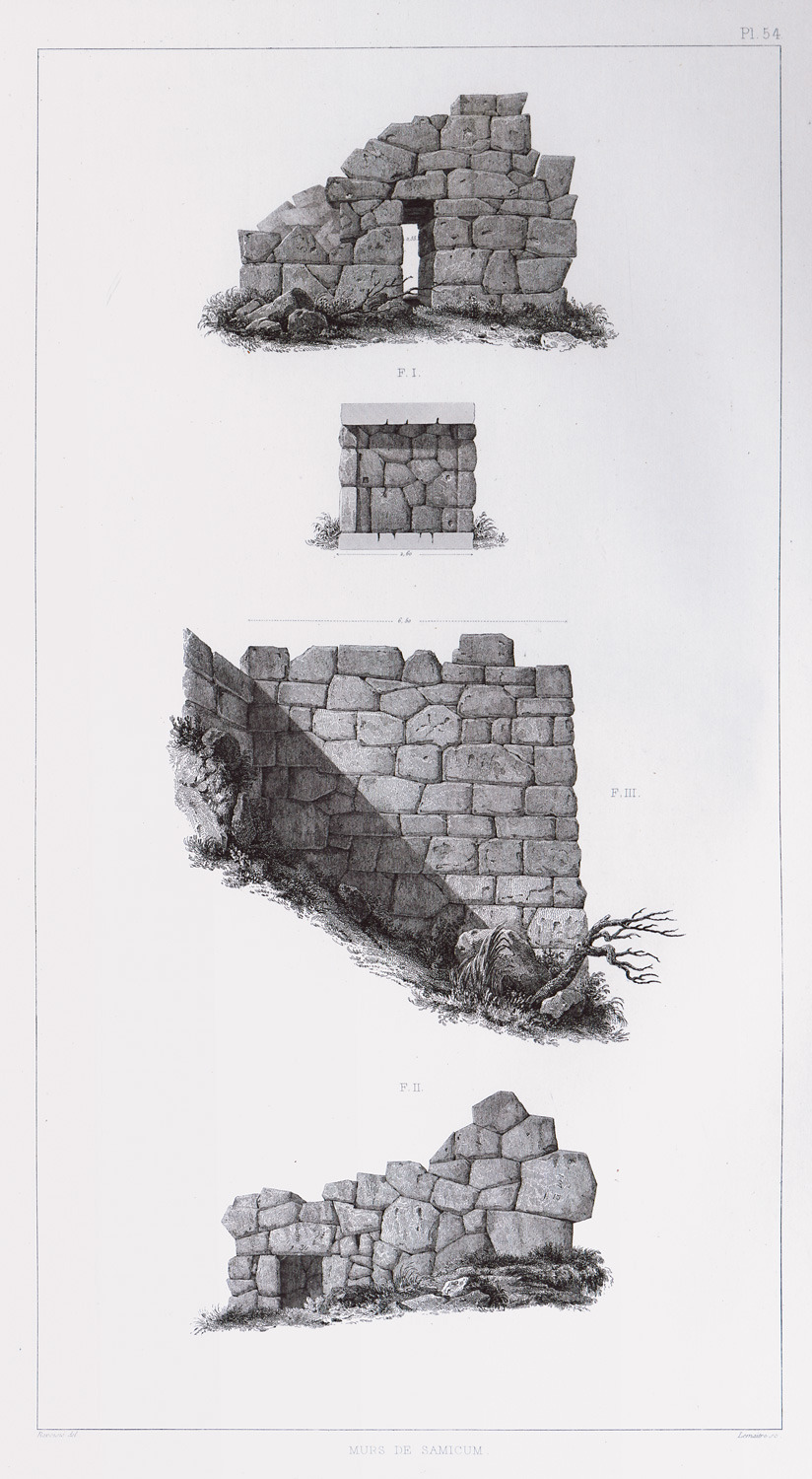
-
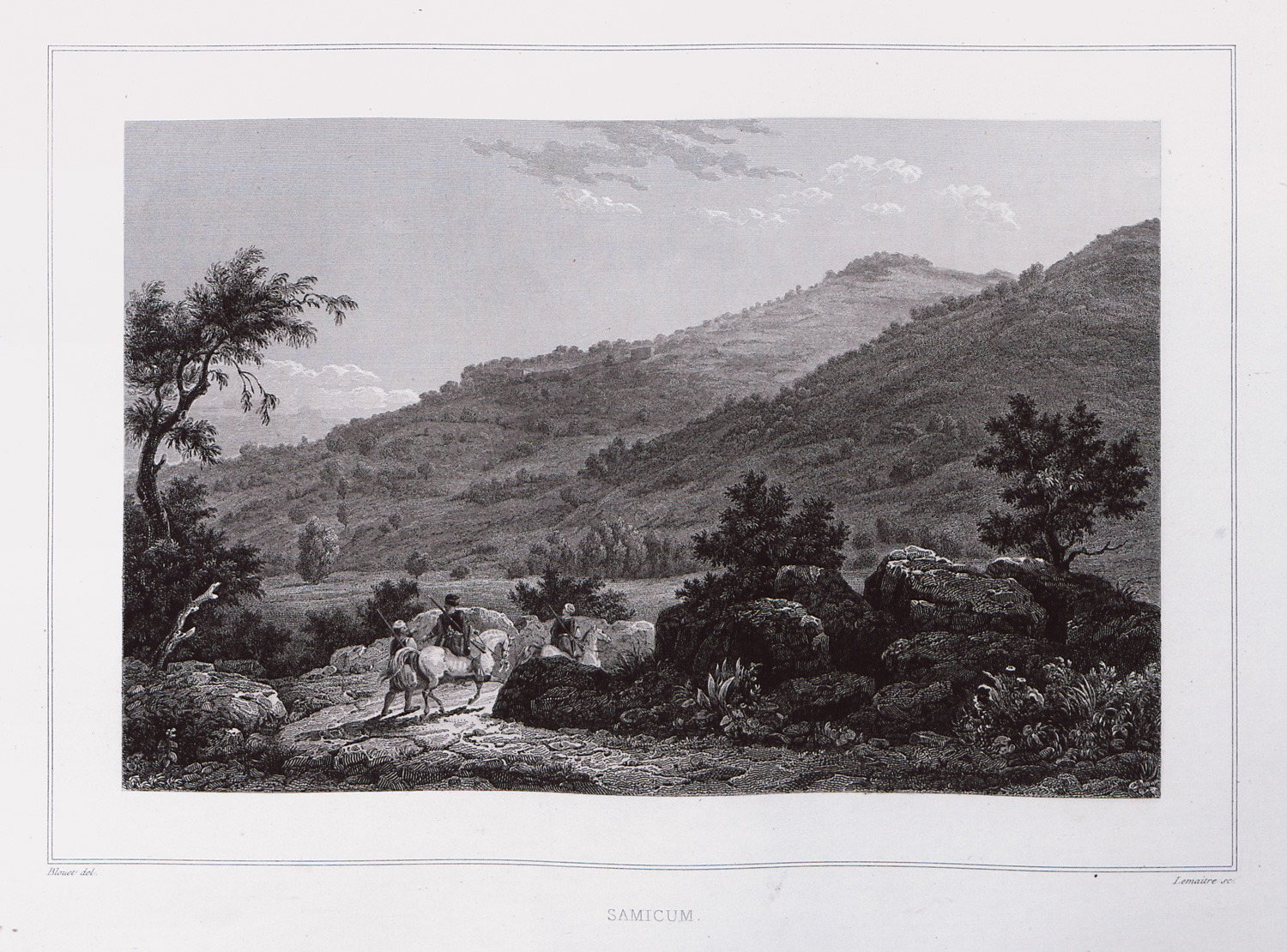
-
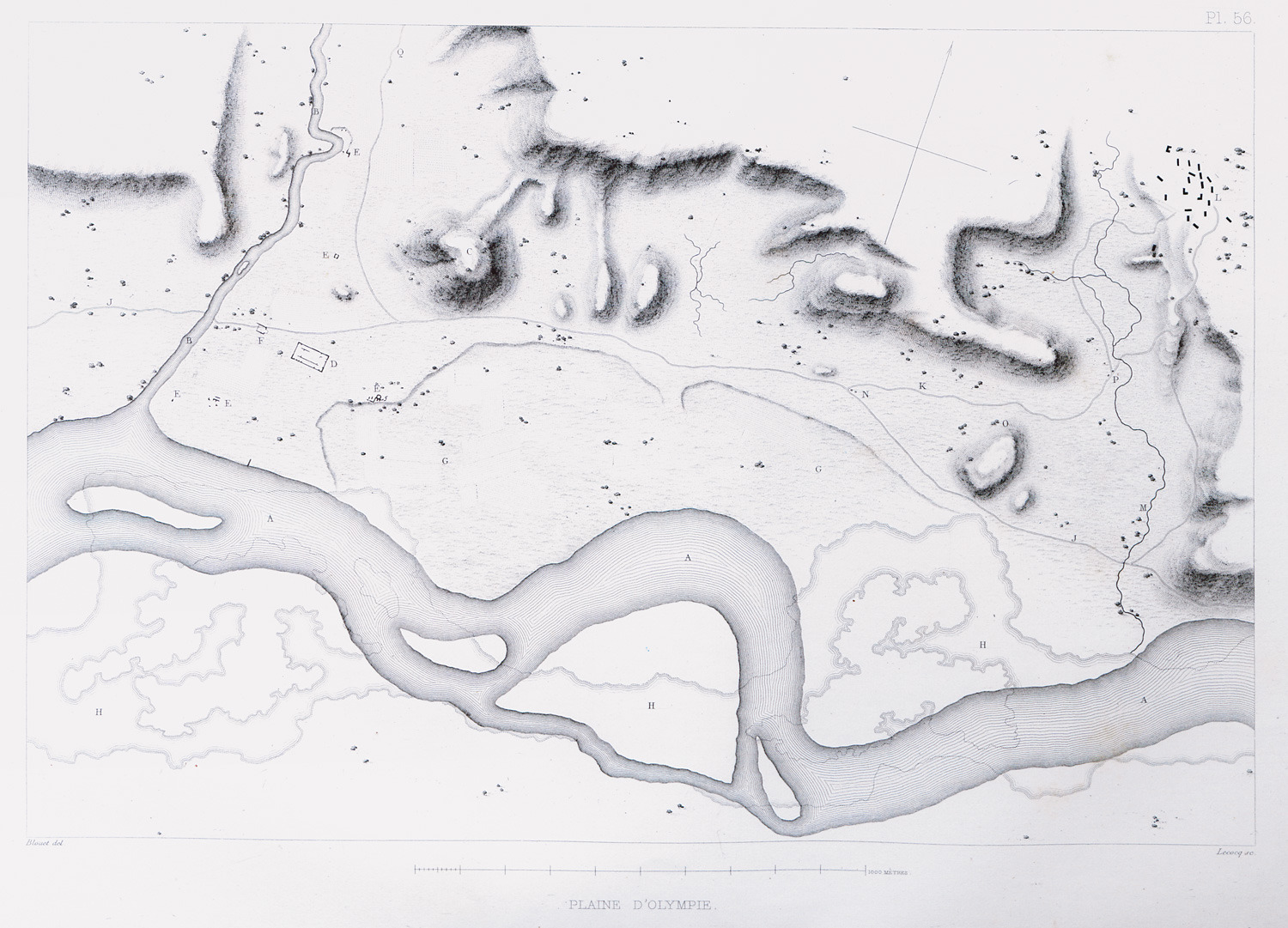
-
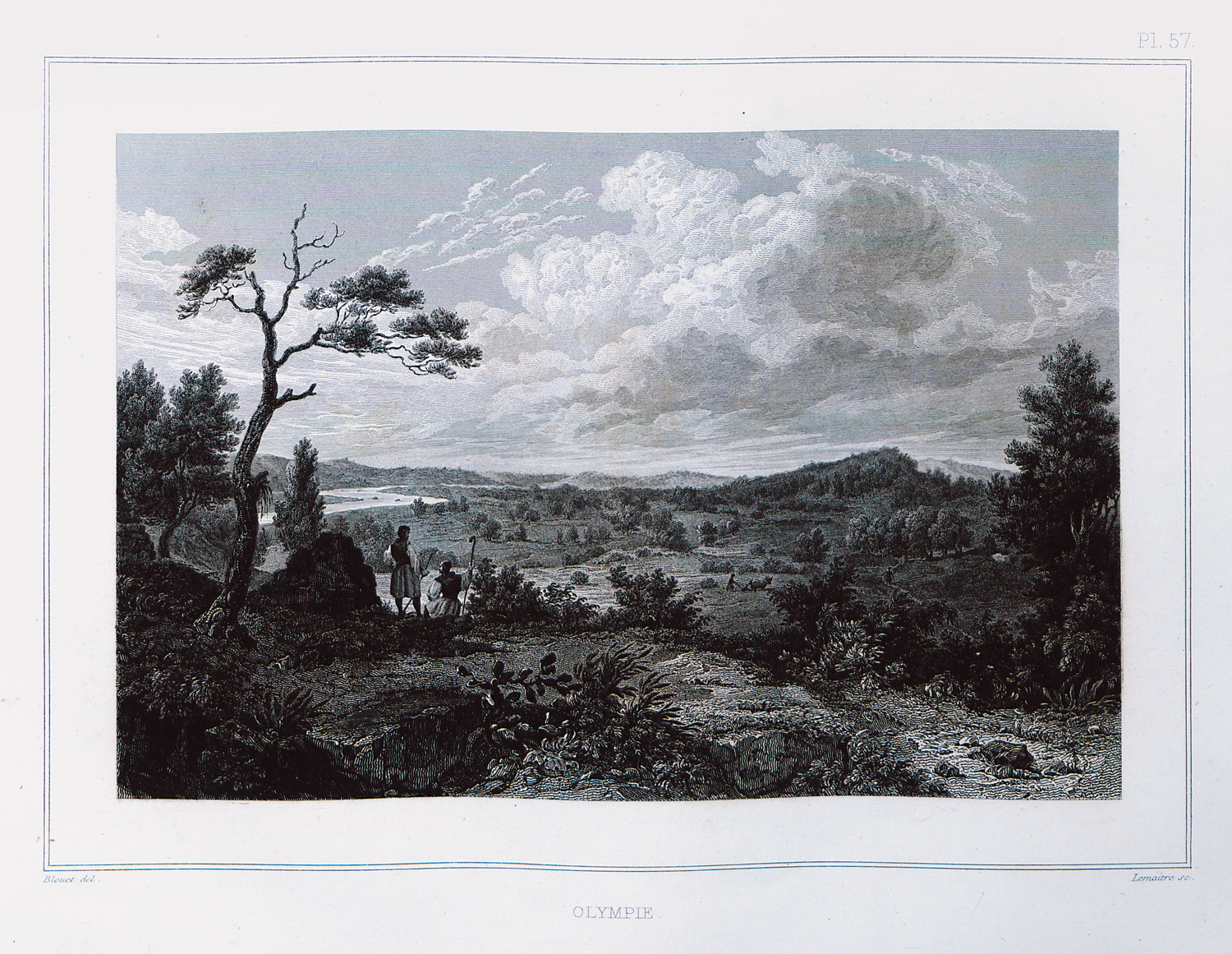
-
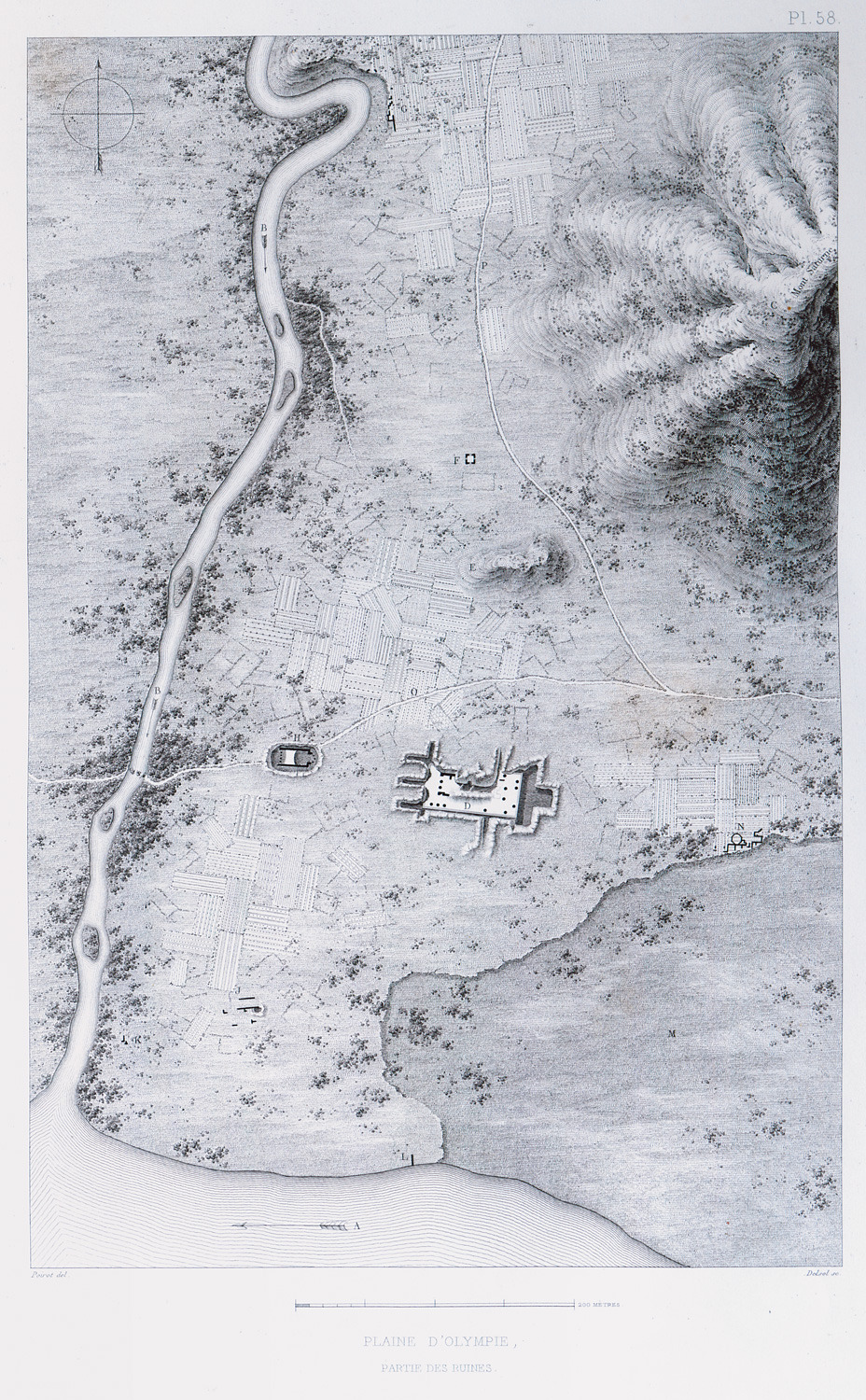
-
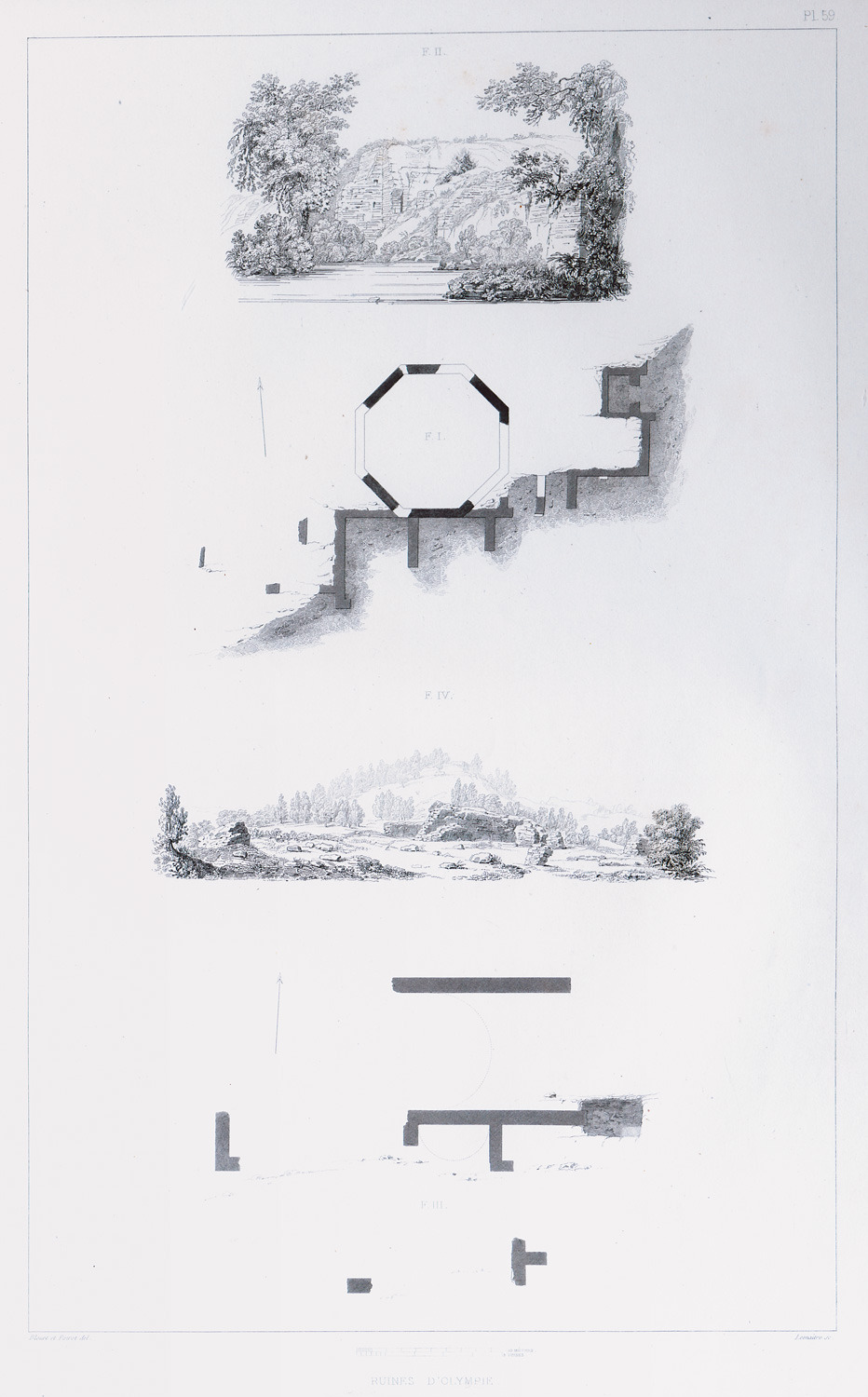
-
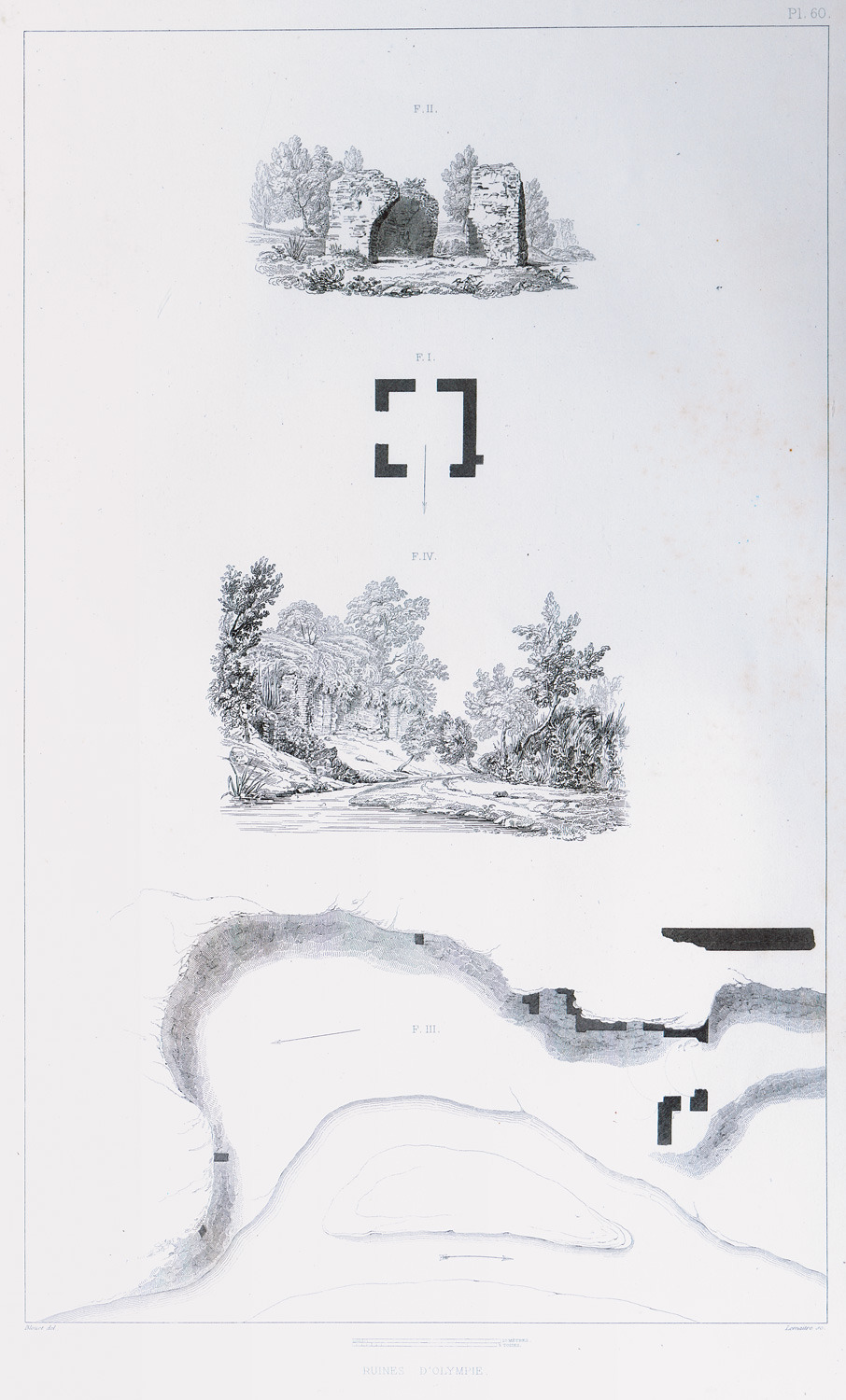
-
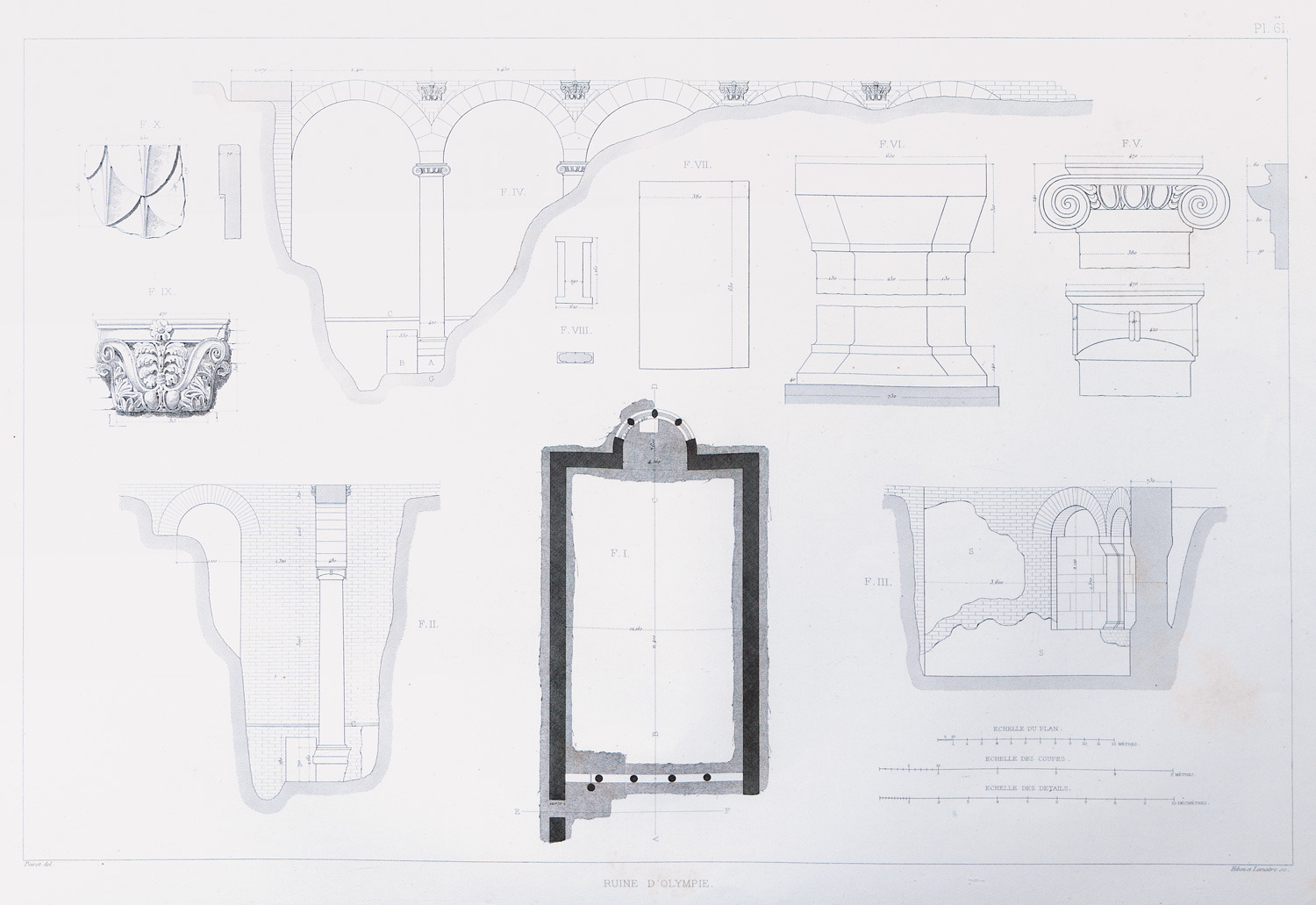
-
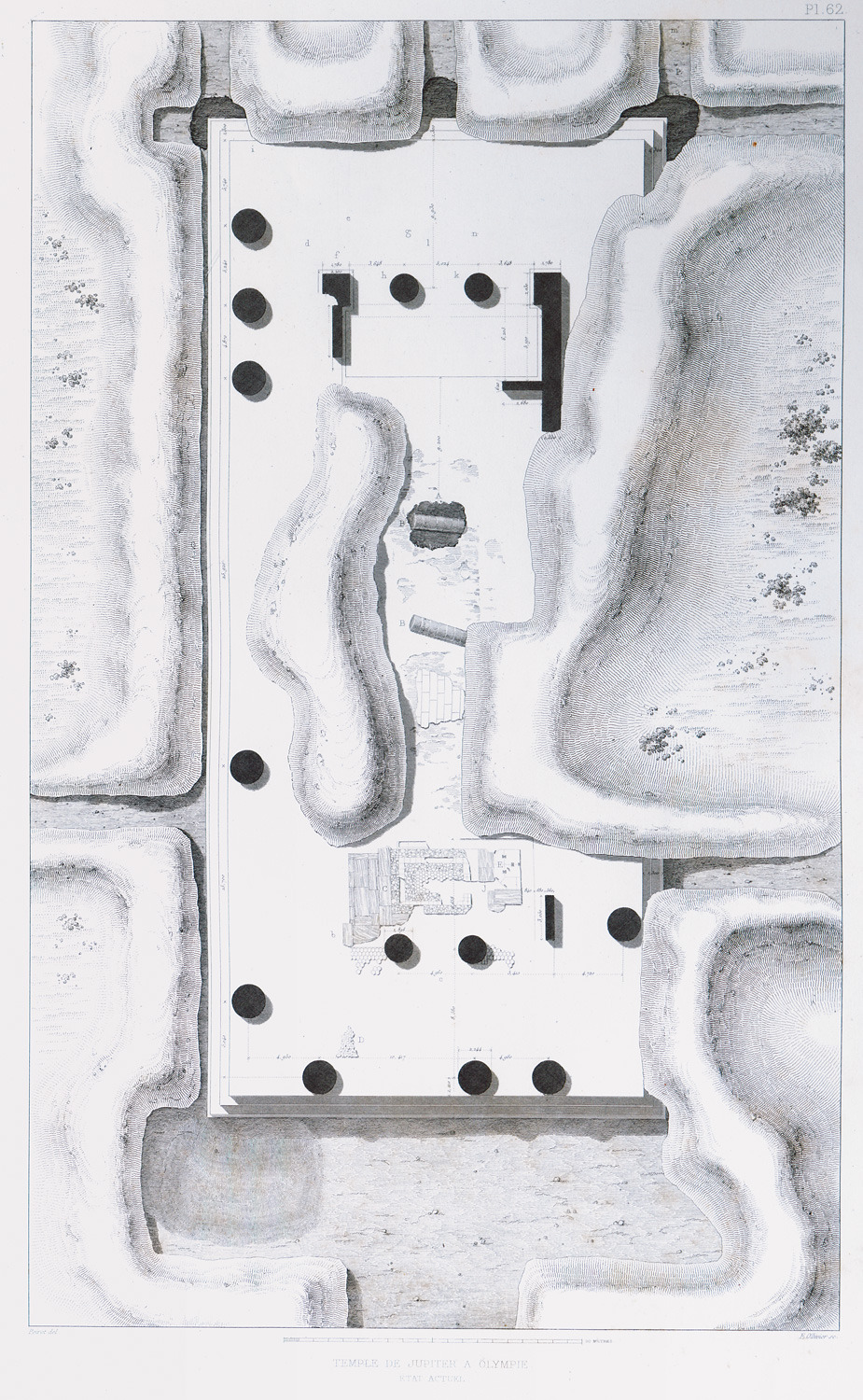
Plan of the temple of Zeus at Olympia, as seen by the French Scientific Mission in 1829.
-
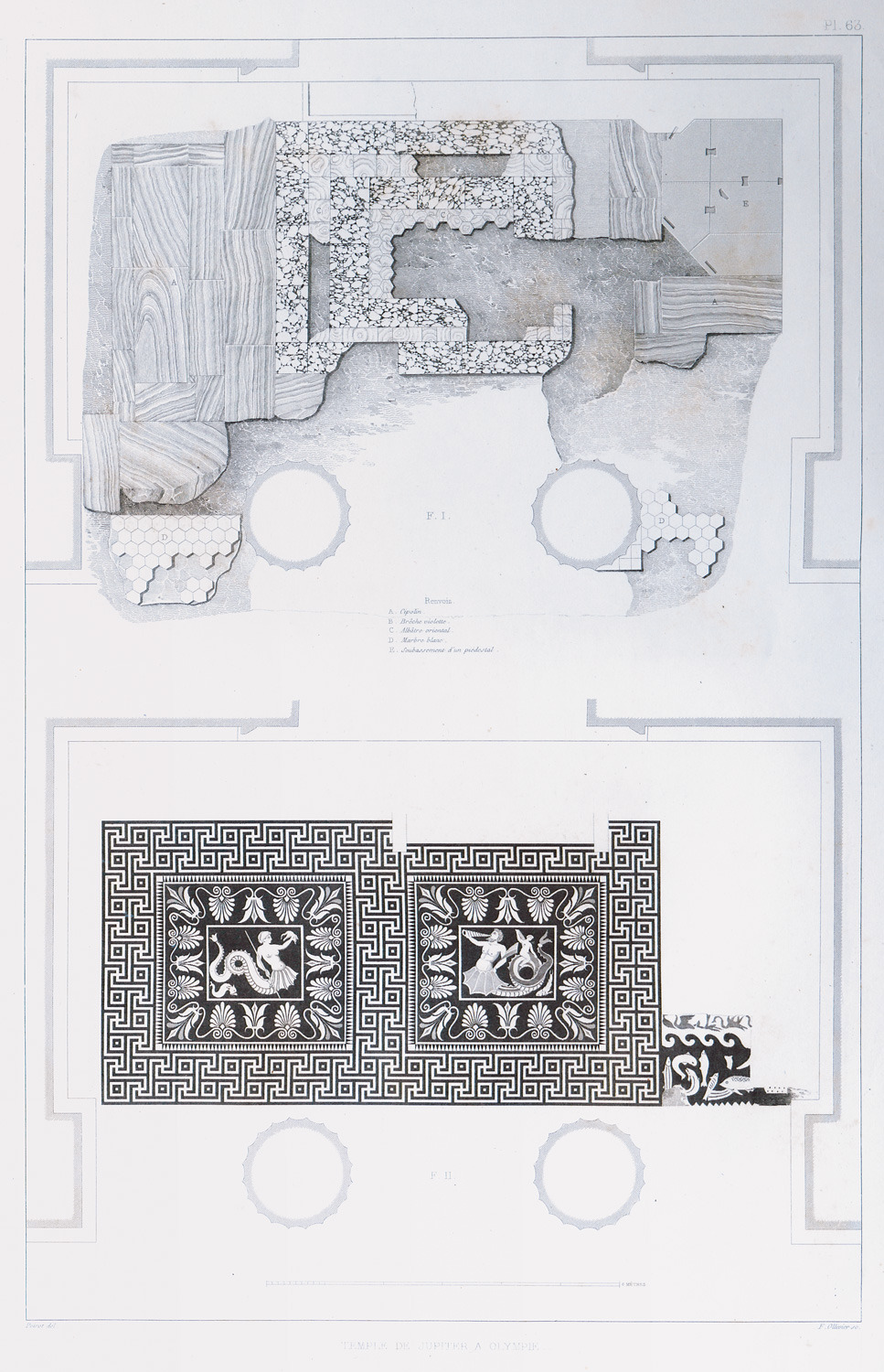
-
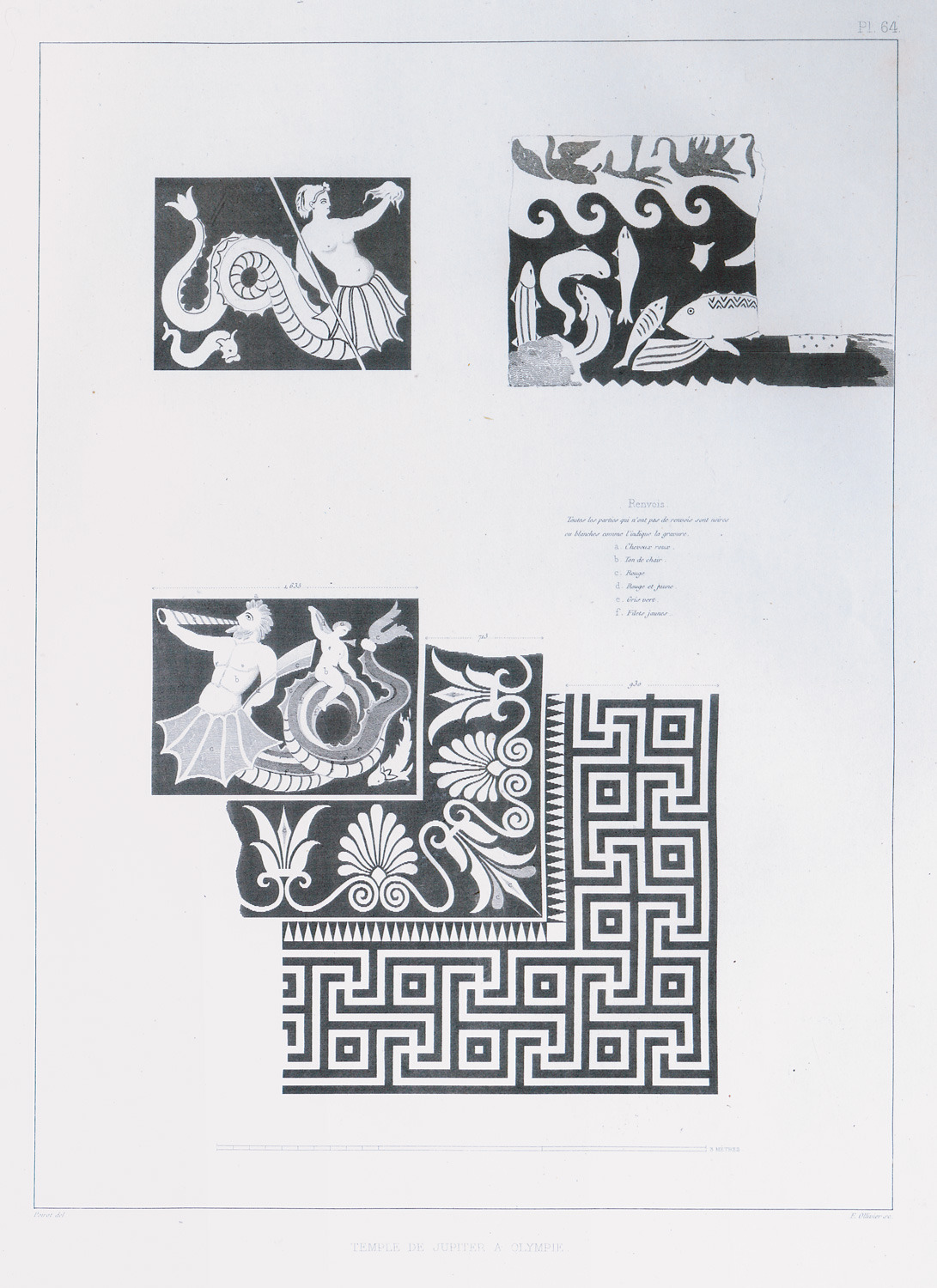
Reconstruction of the Hellenistic tritons mosaic at the pronaos of the temple of Zeus.
-
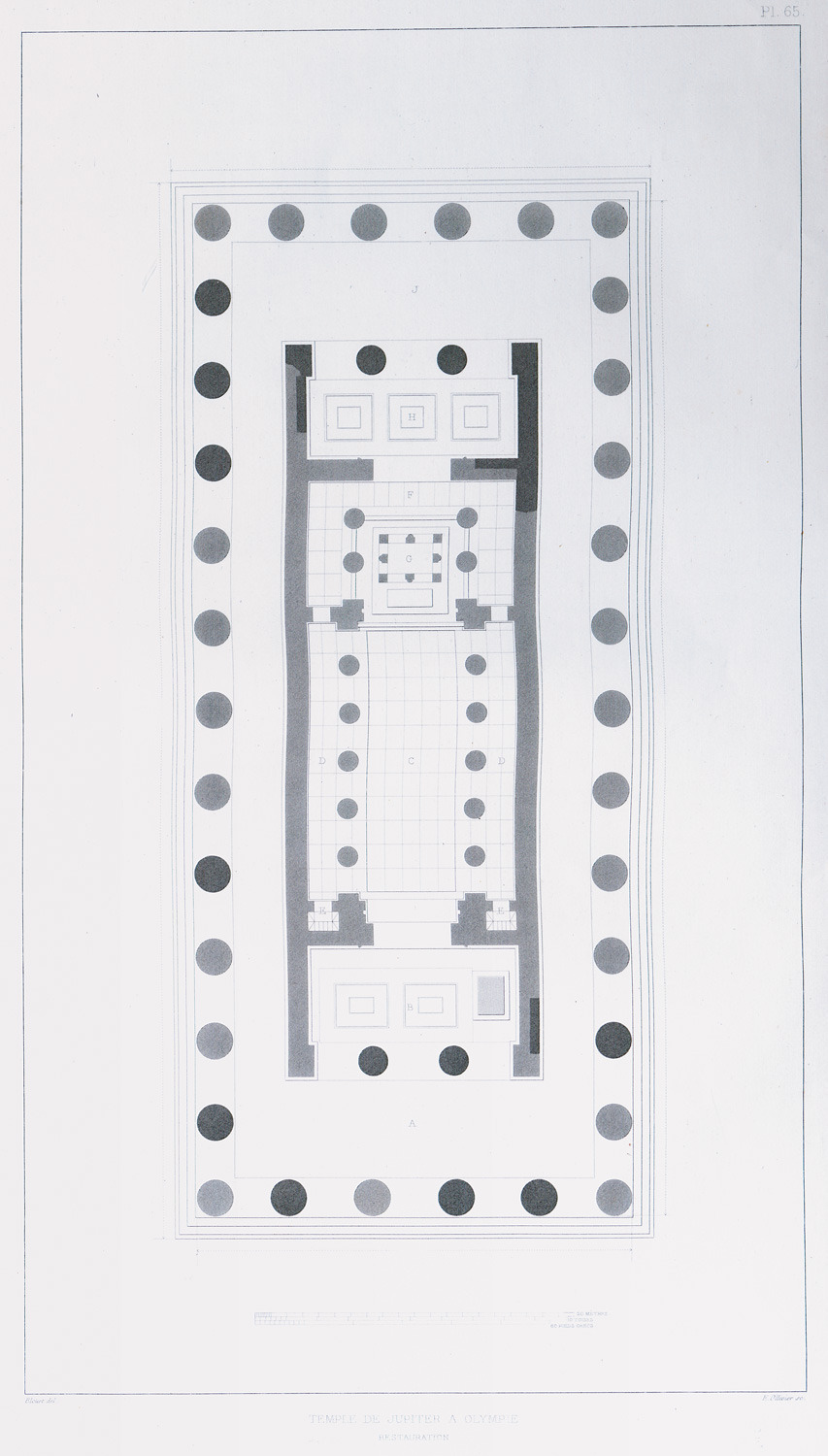
-
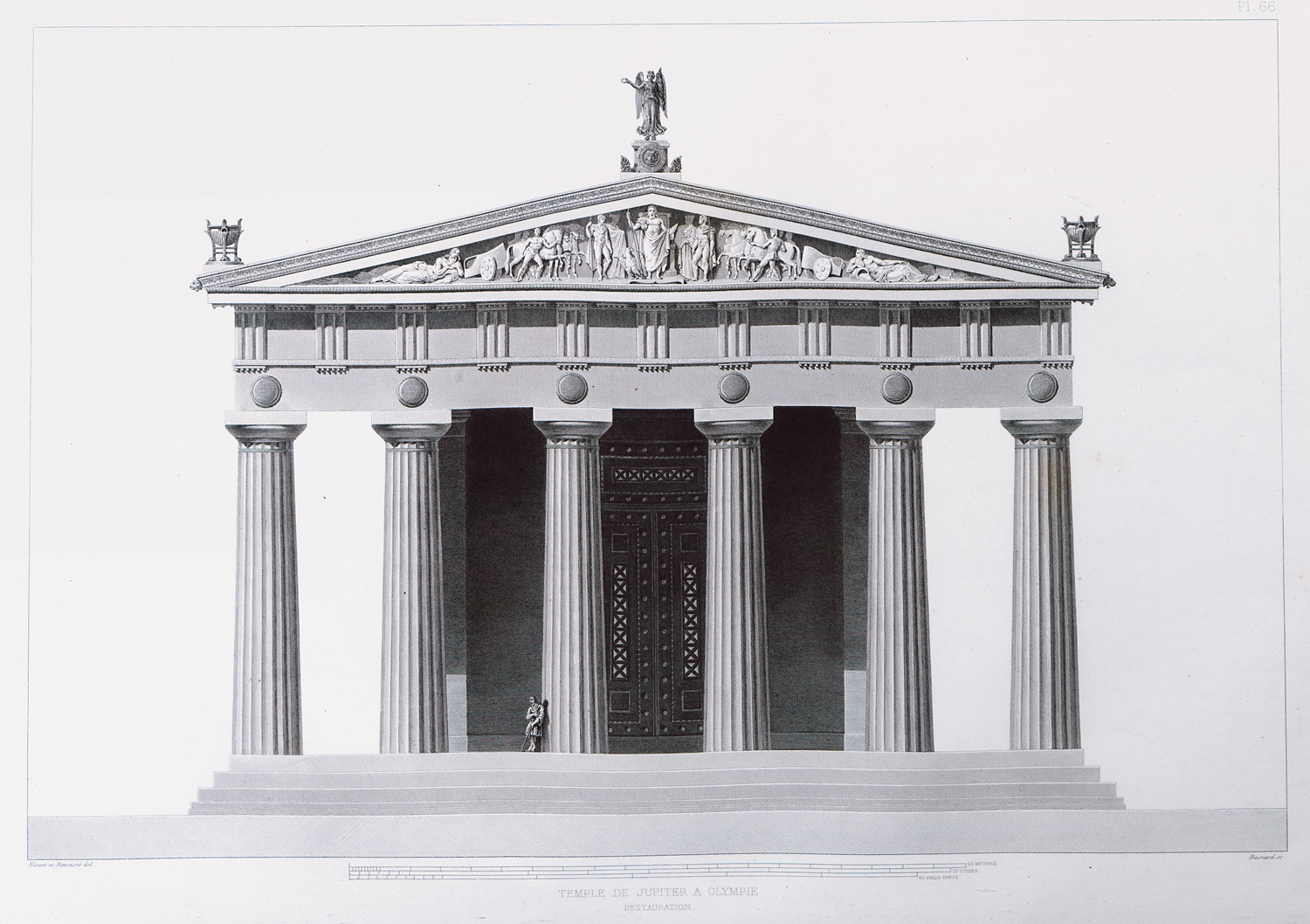
Reconstruction of the façade of the temple of Zeus at ancient Olympia.
-
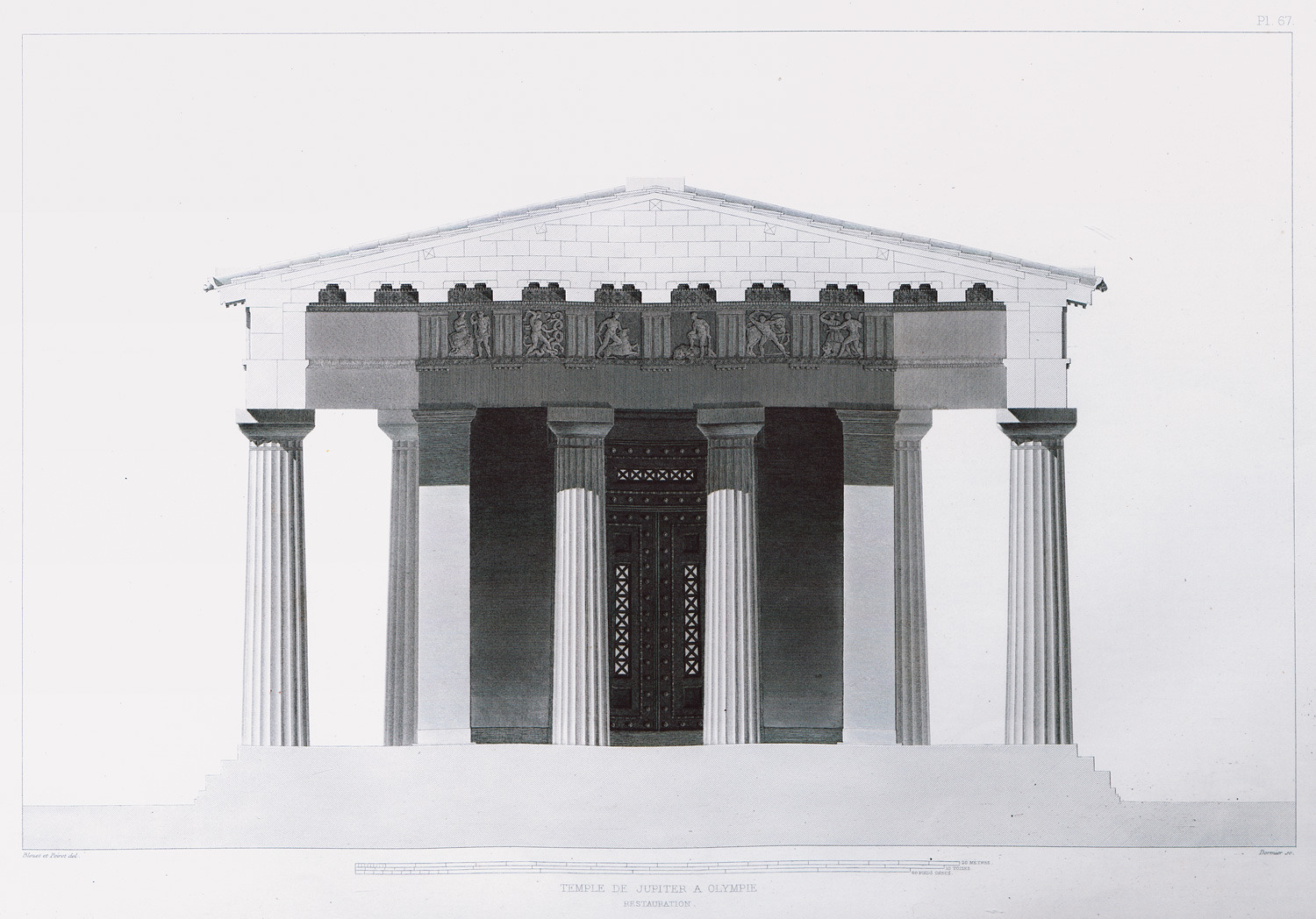
-
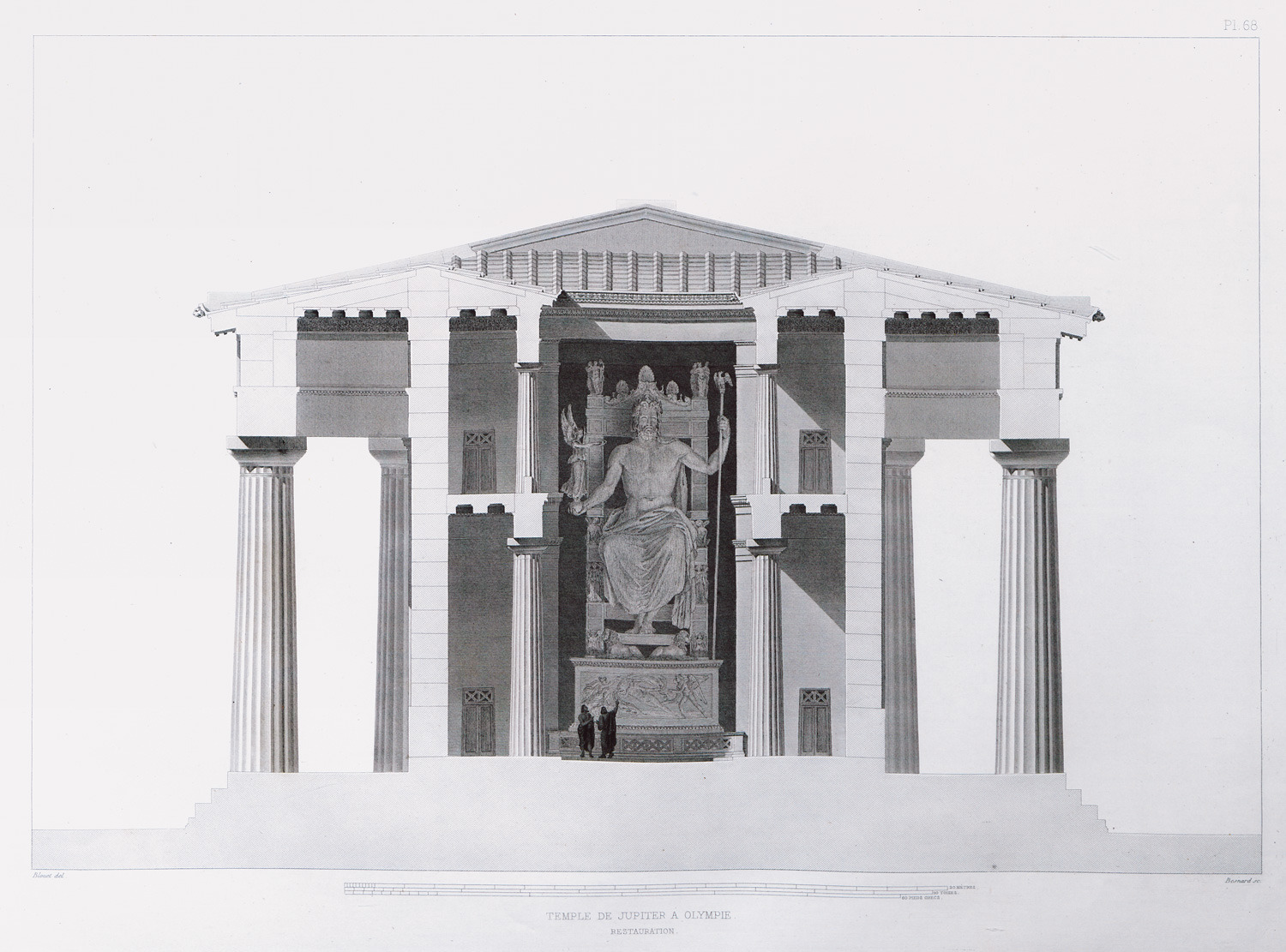
-
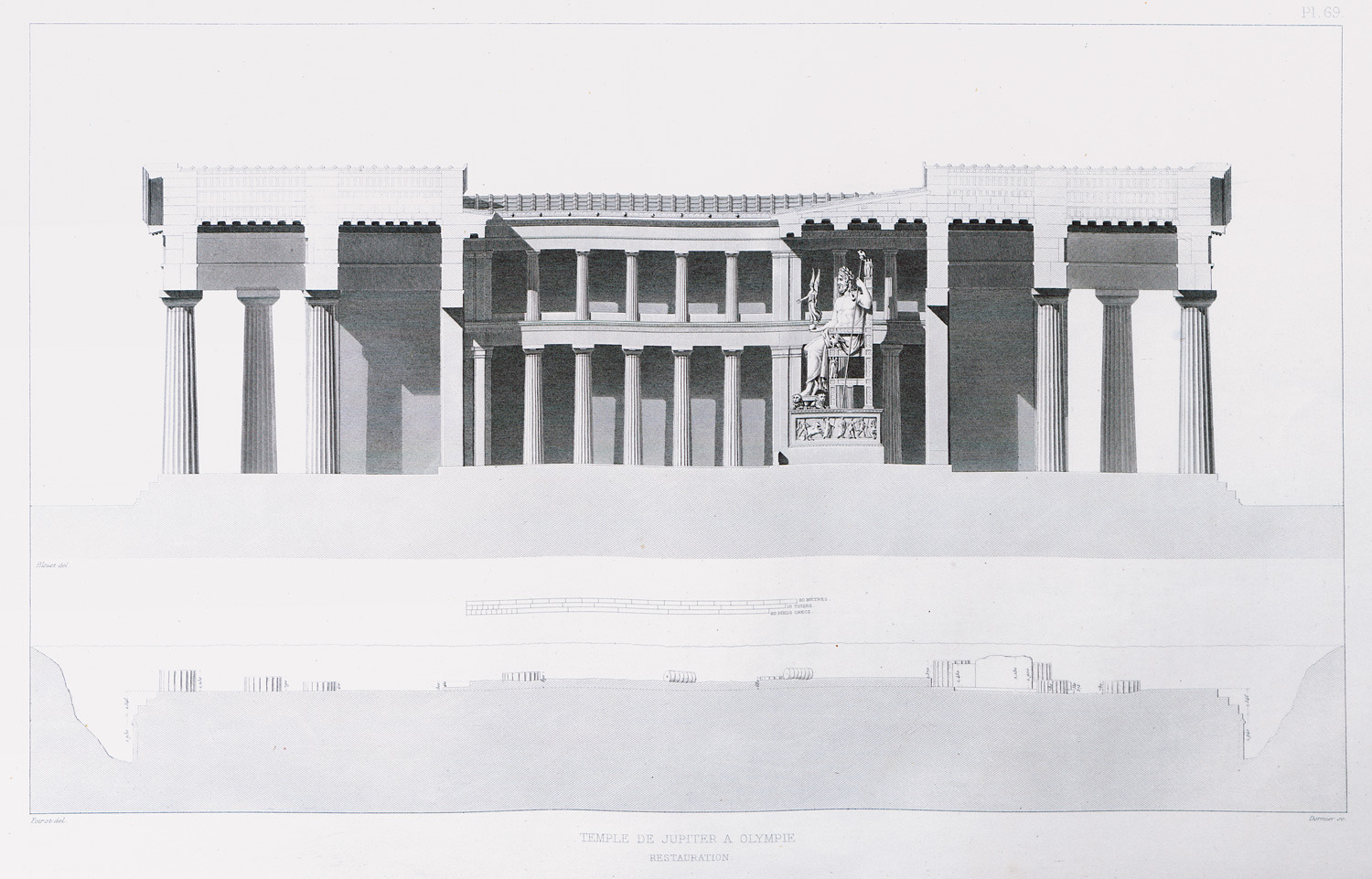
-
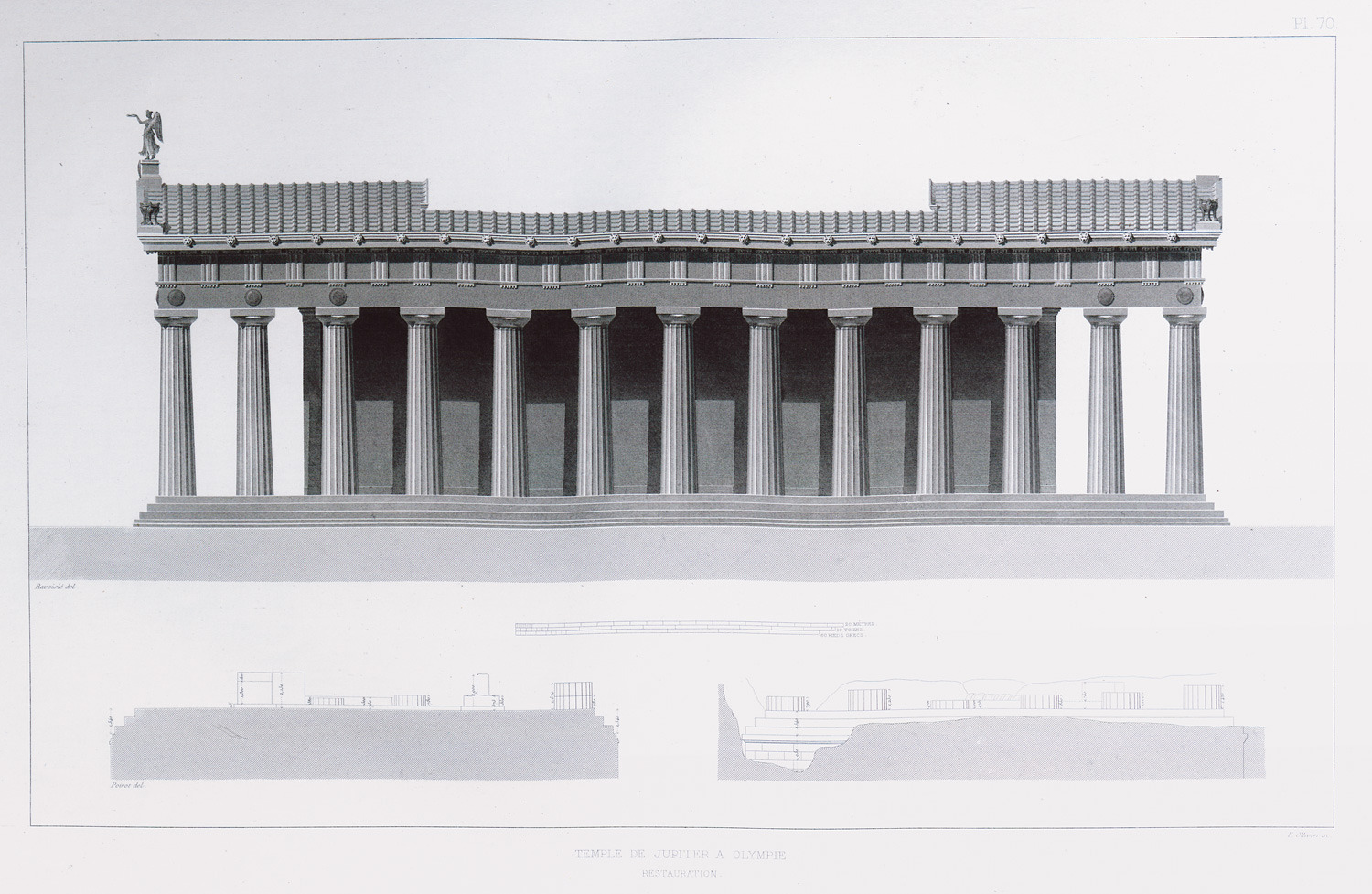
-
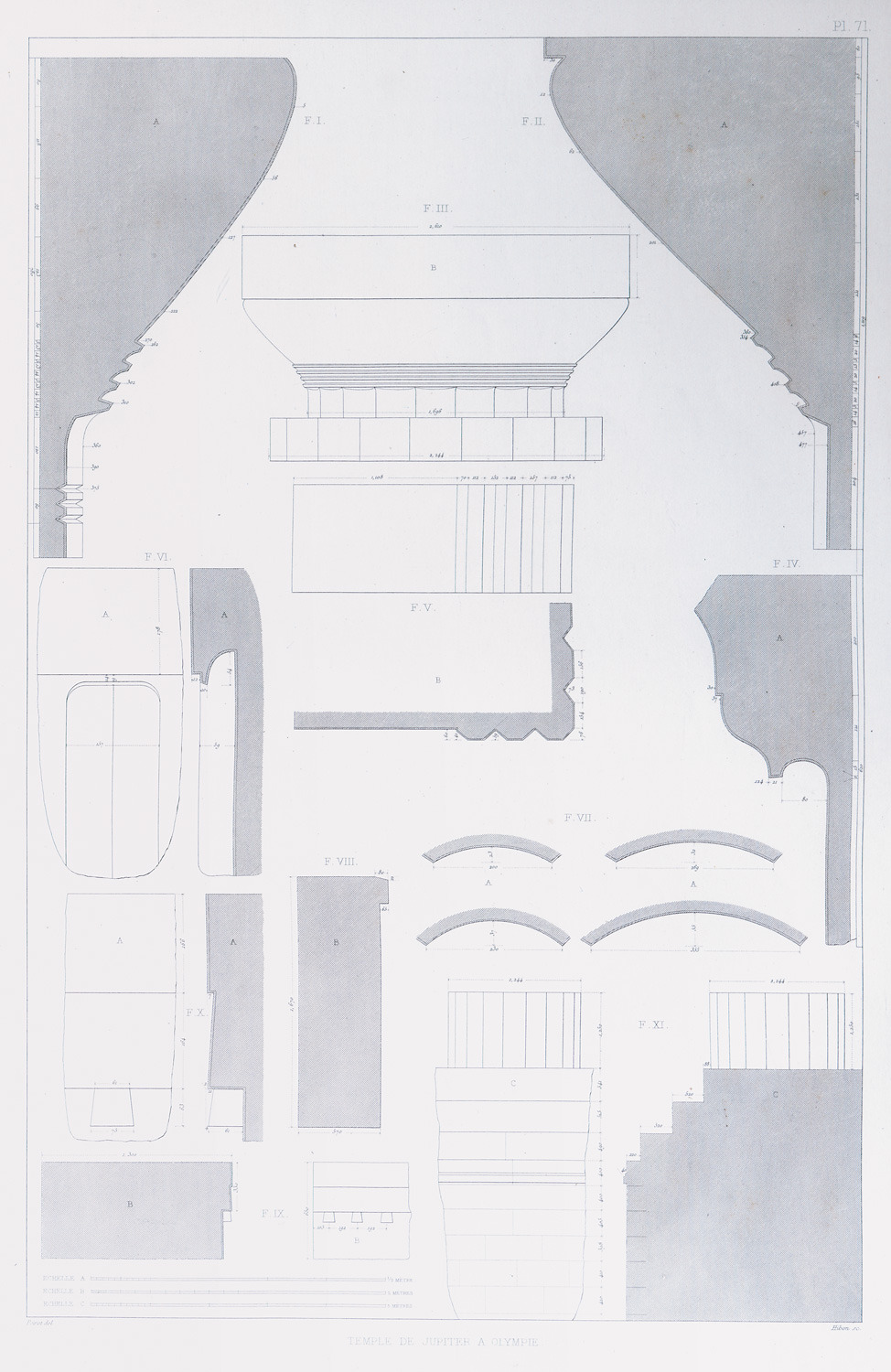
-
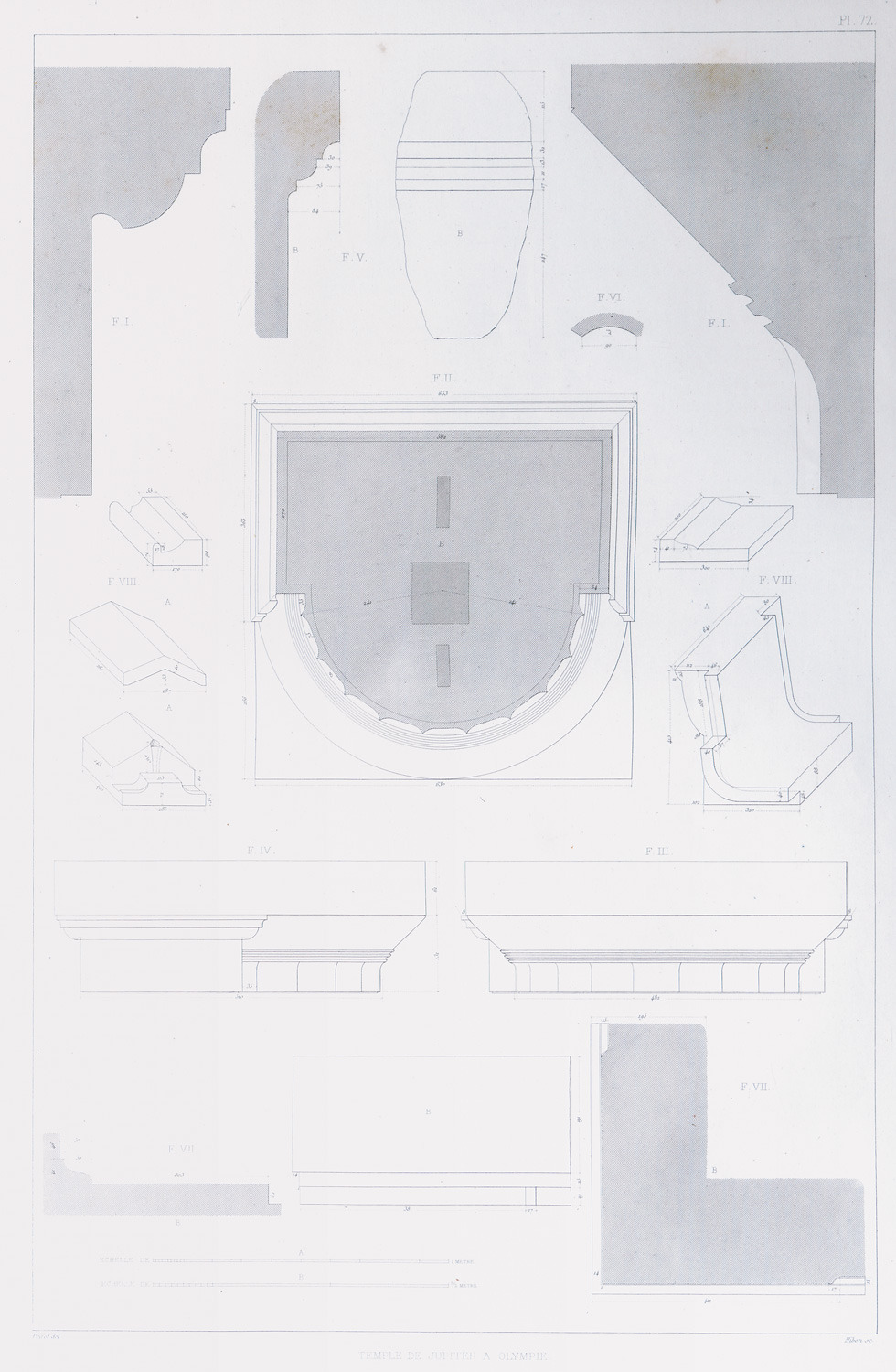
-
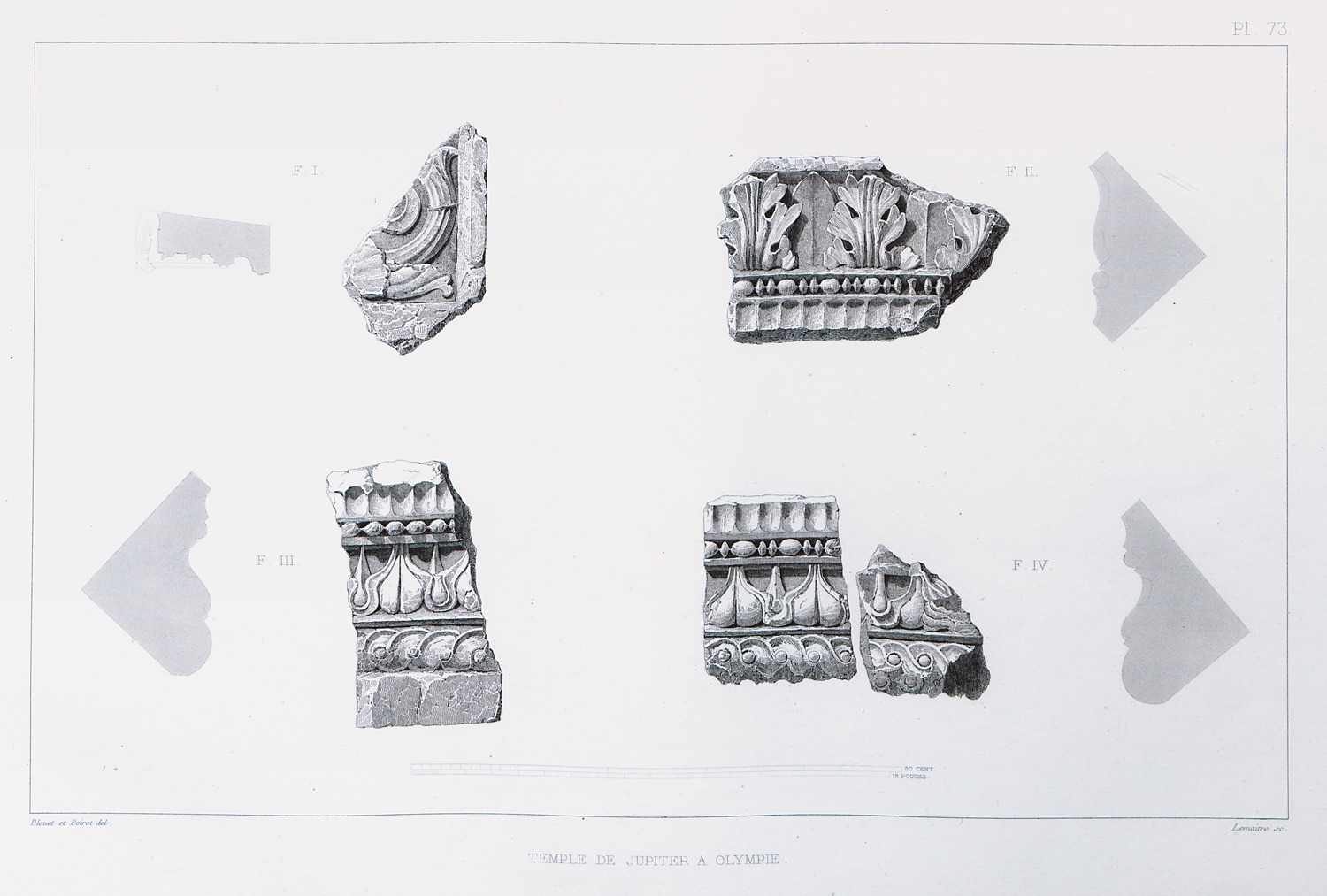
Fragments of sculptures from the temple of Zeus at ancient Olympia.
-

-
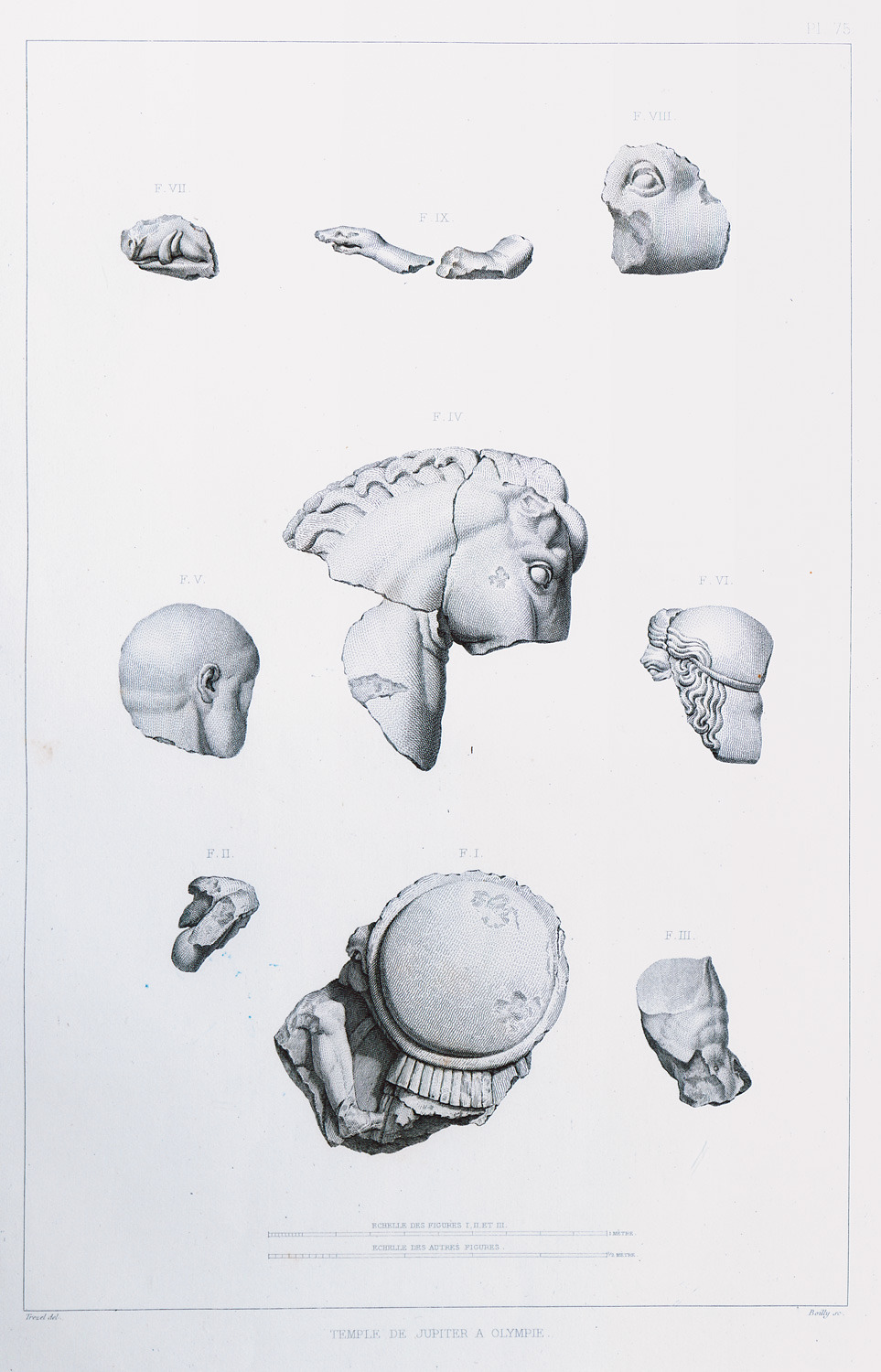
-
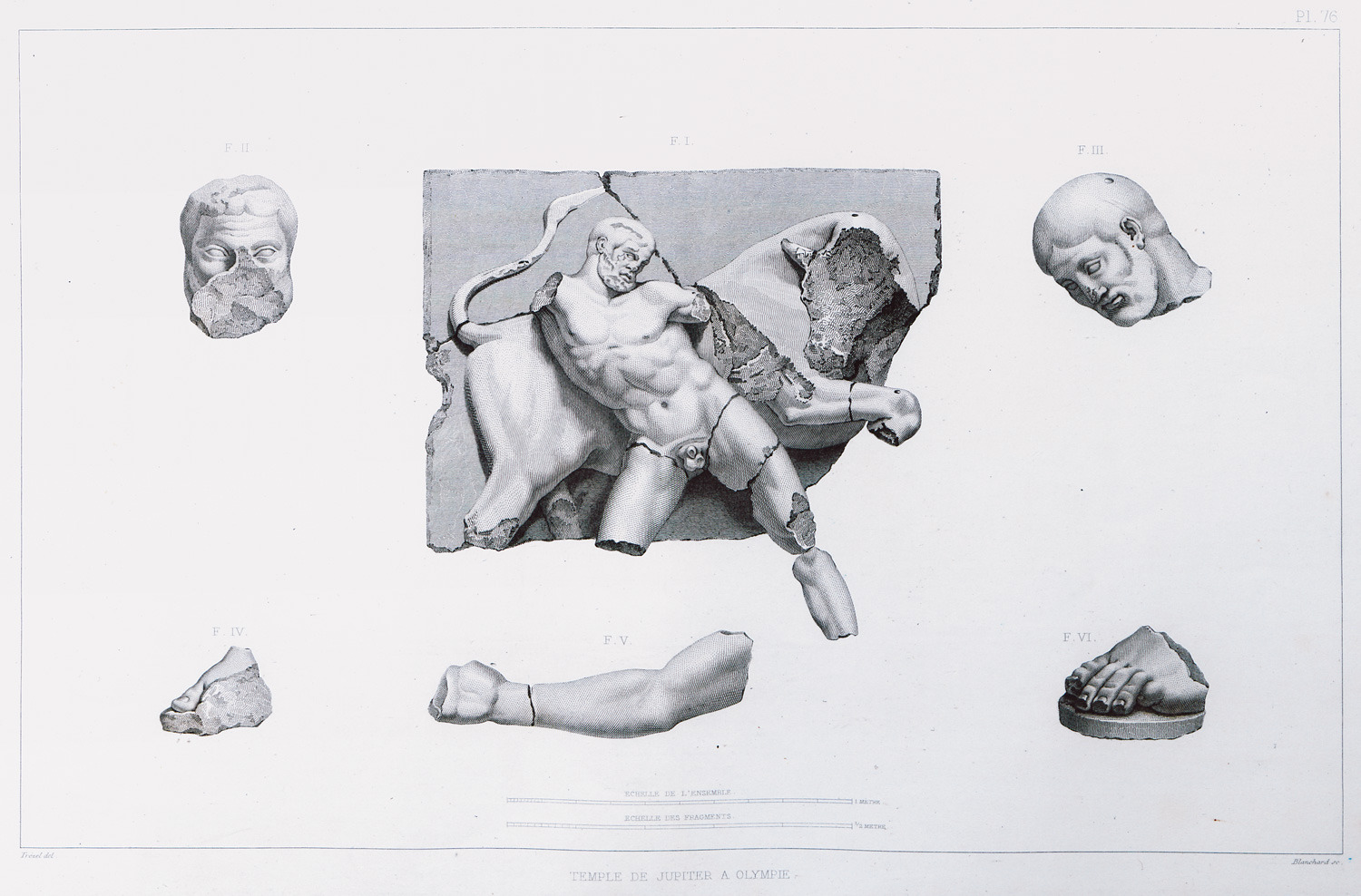
-
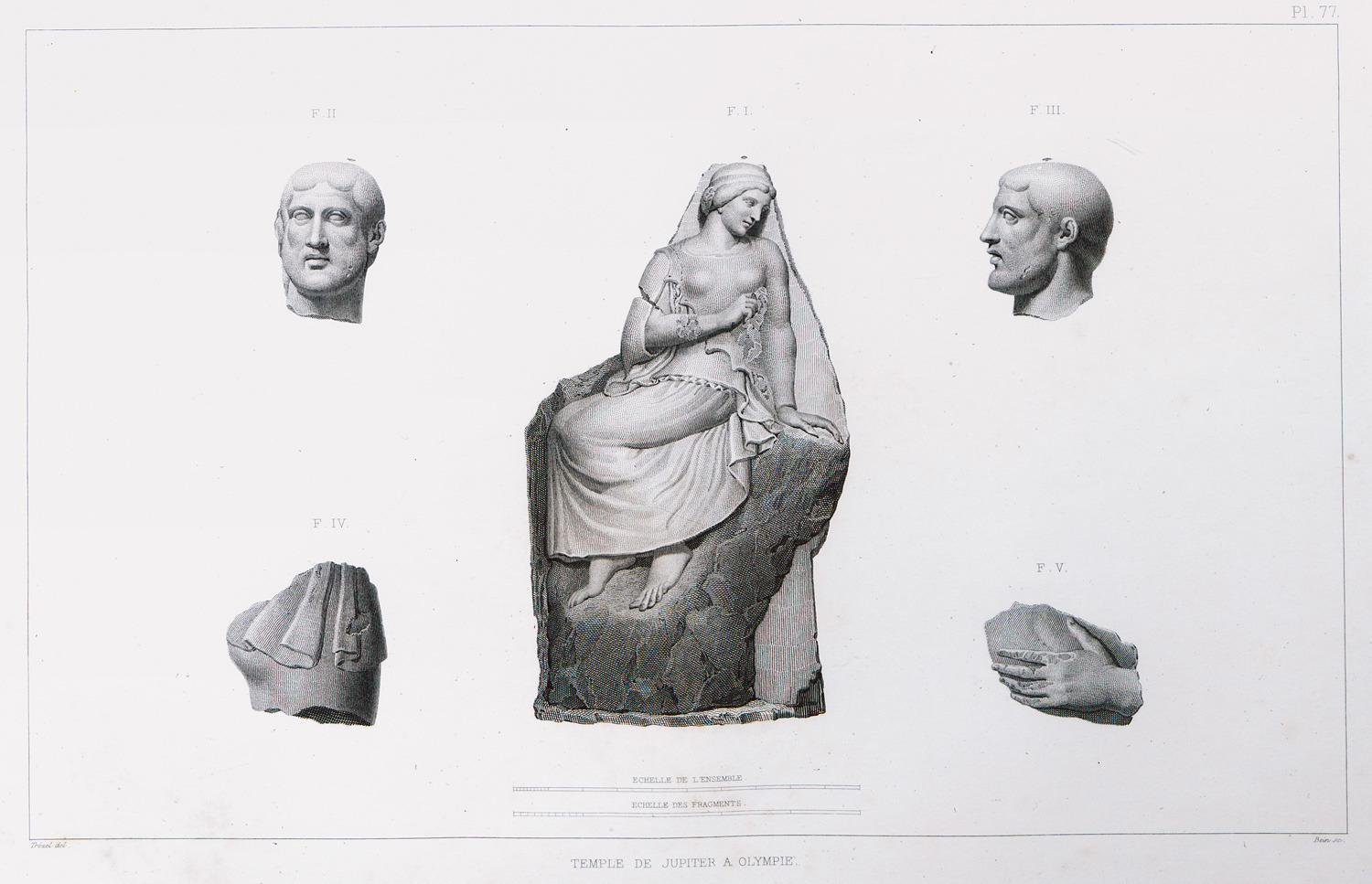
-
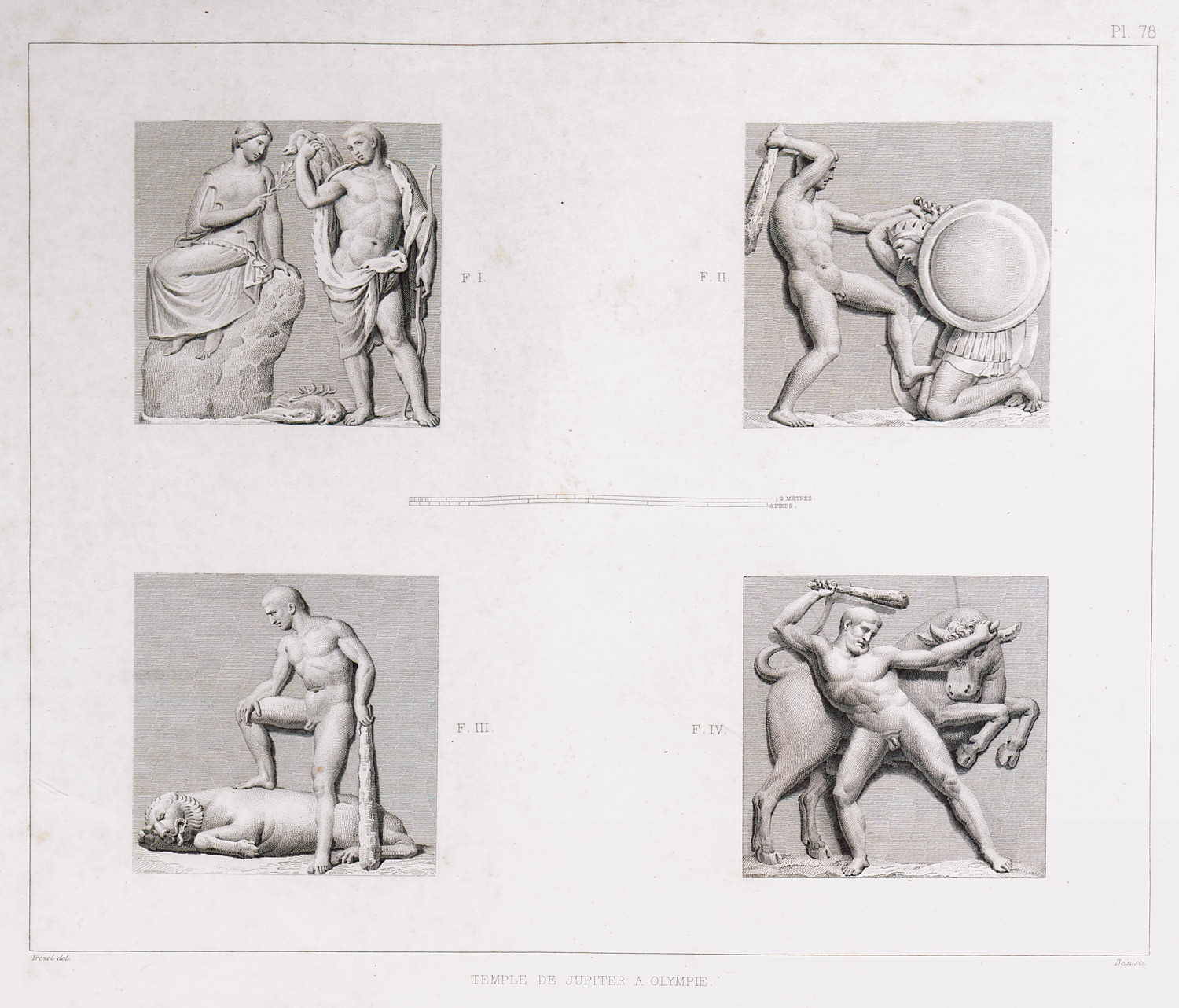
-
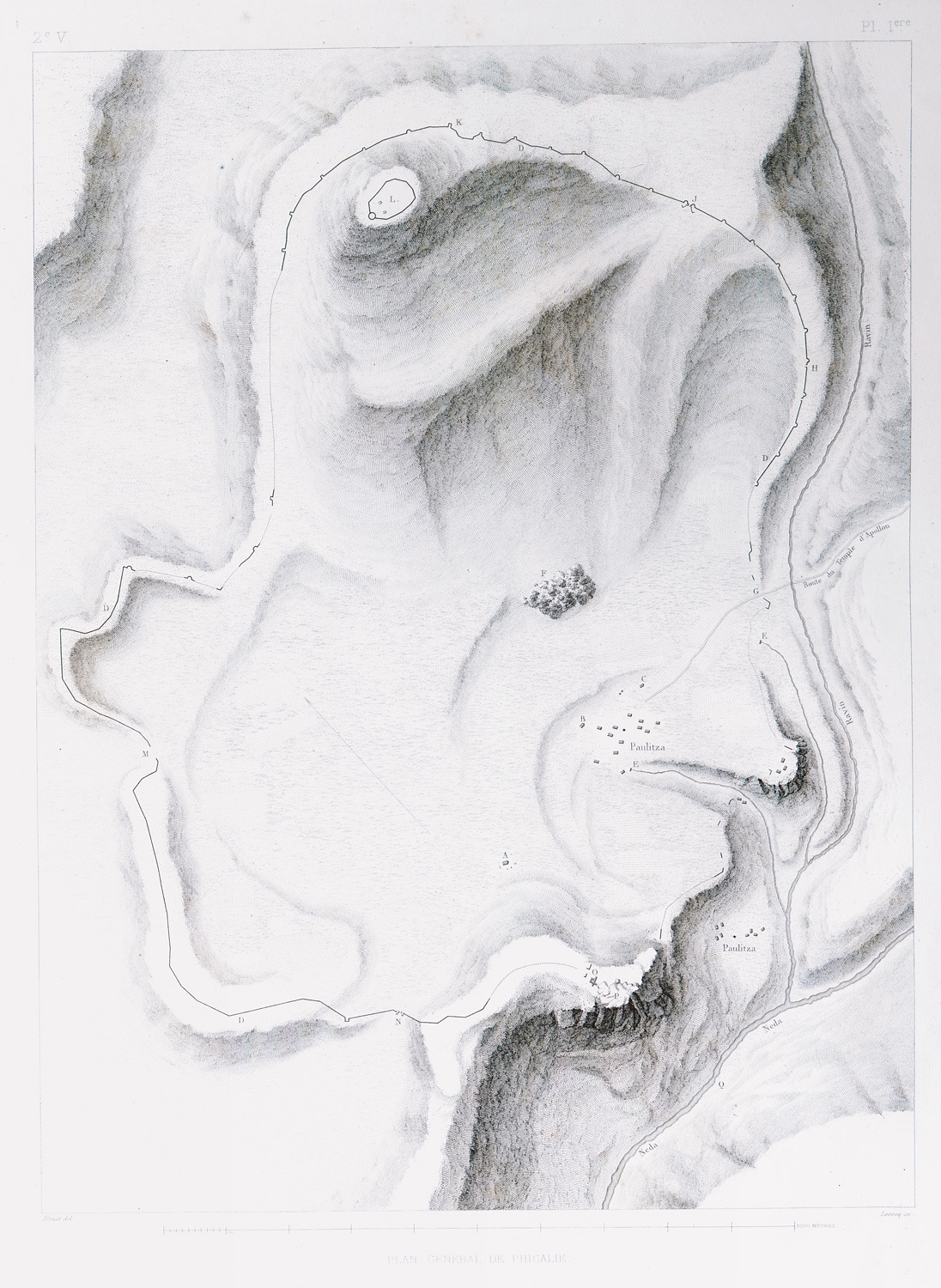
Topographic map of Phigaleia, Peloponnese. “L” denotes the site of Apollo Epicurius' temple
-
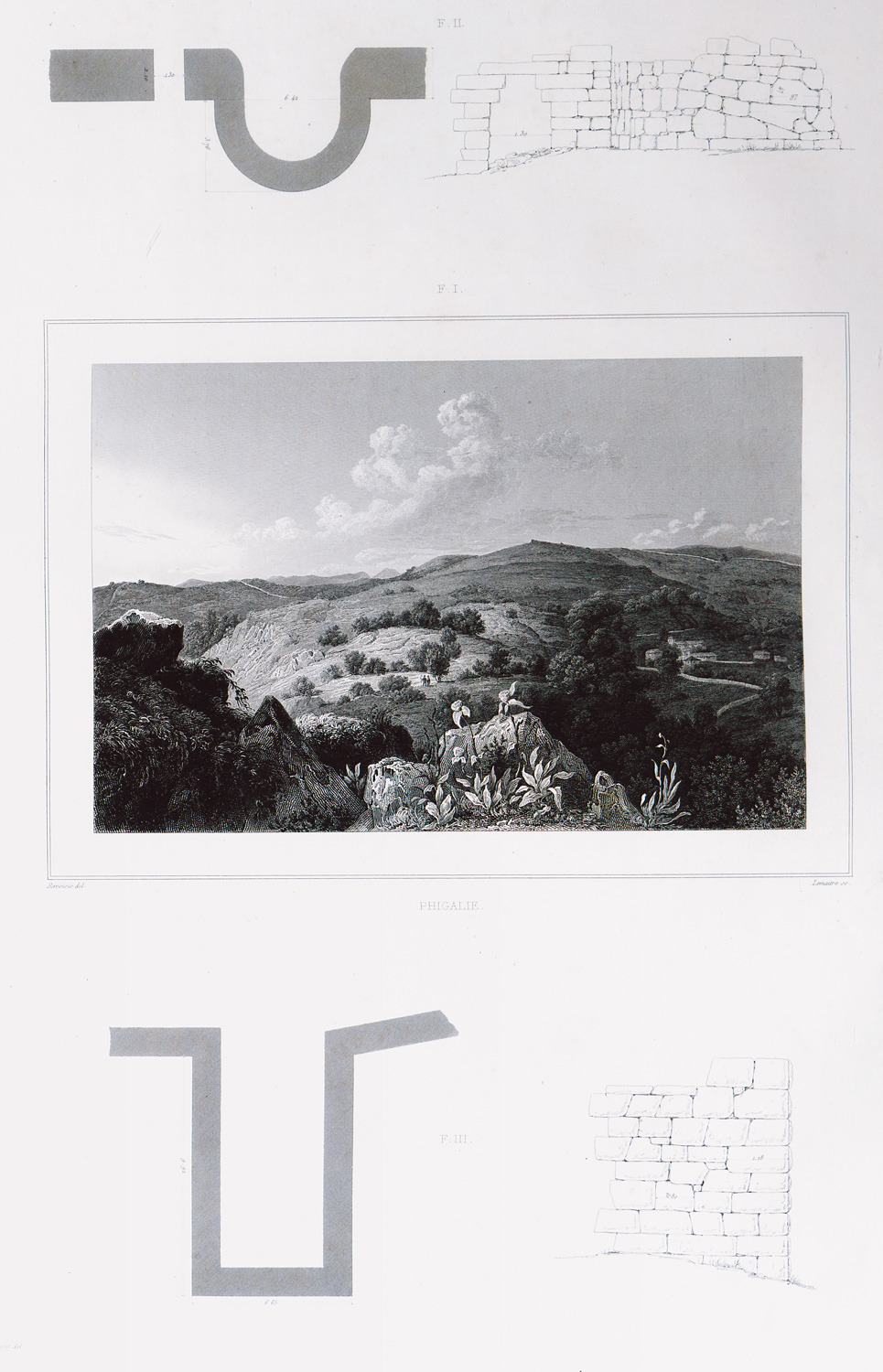
1. Landscape at Phigaleia. 2,3. View and plan of part of the fortifications of ancient Phigaleia.
-
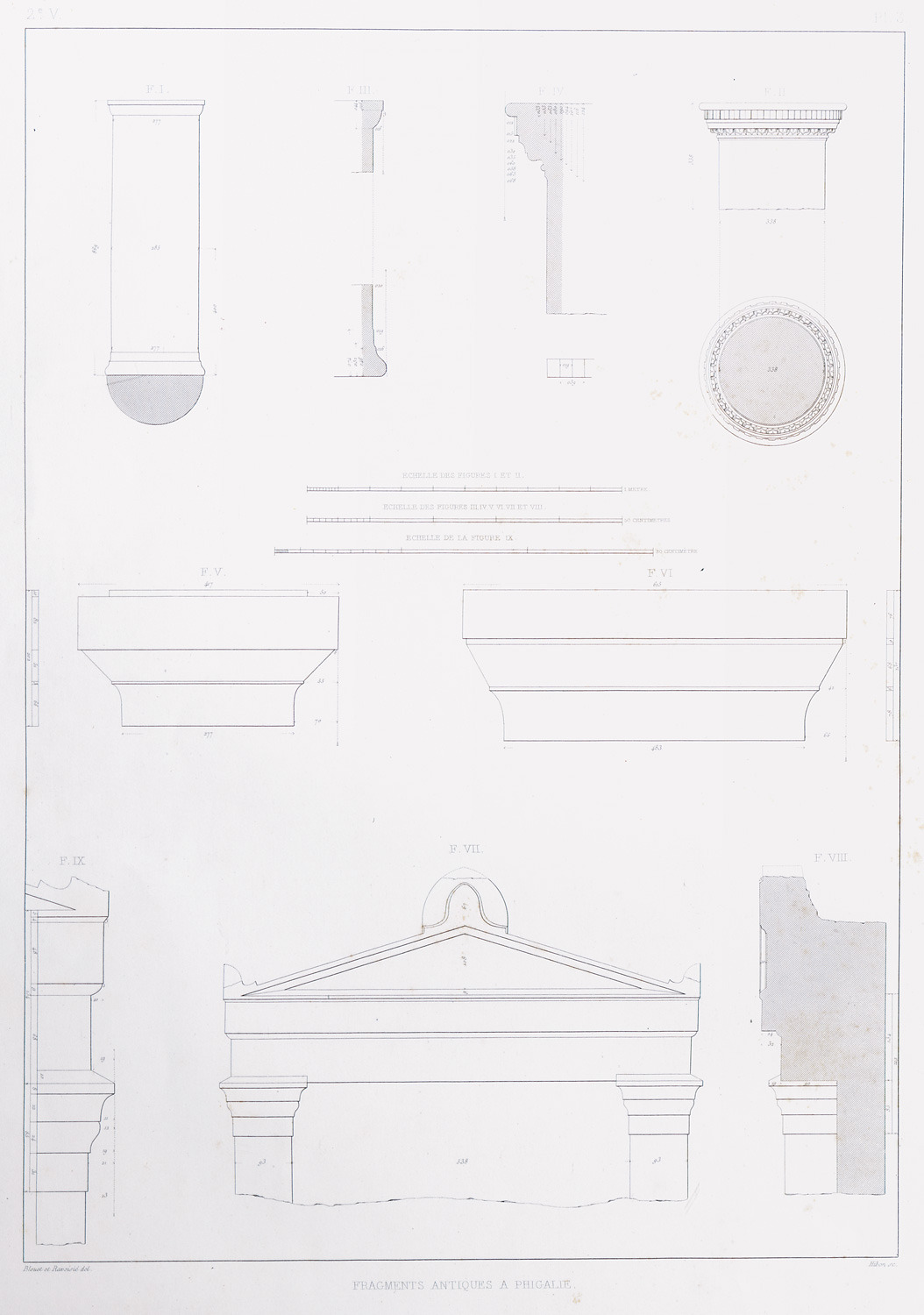
-
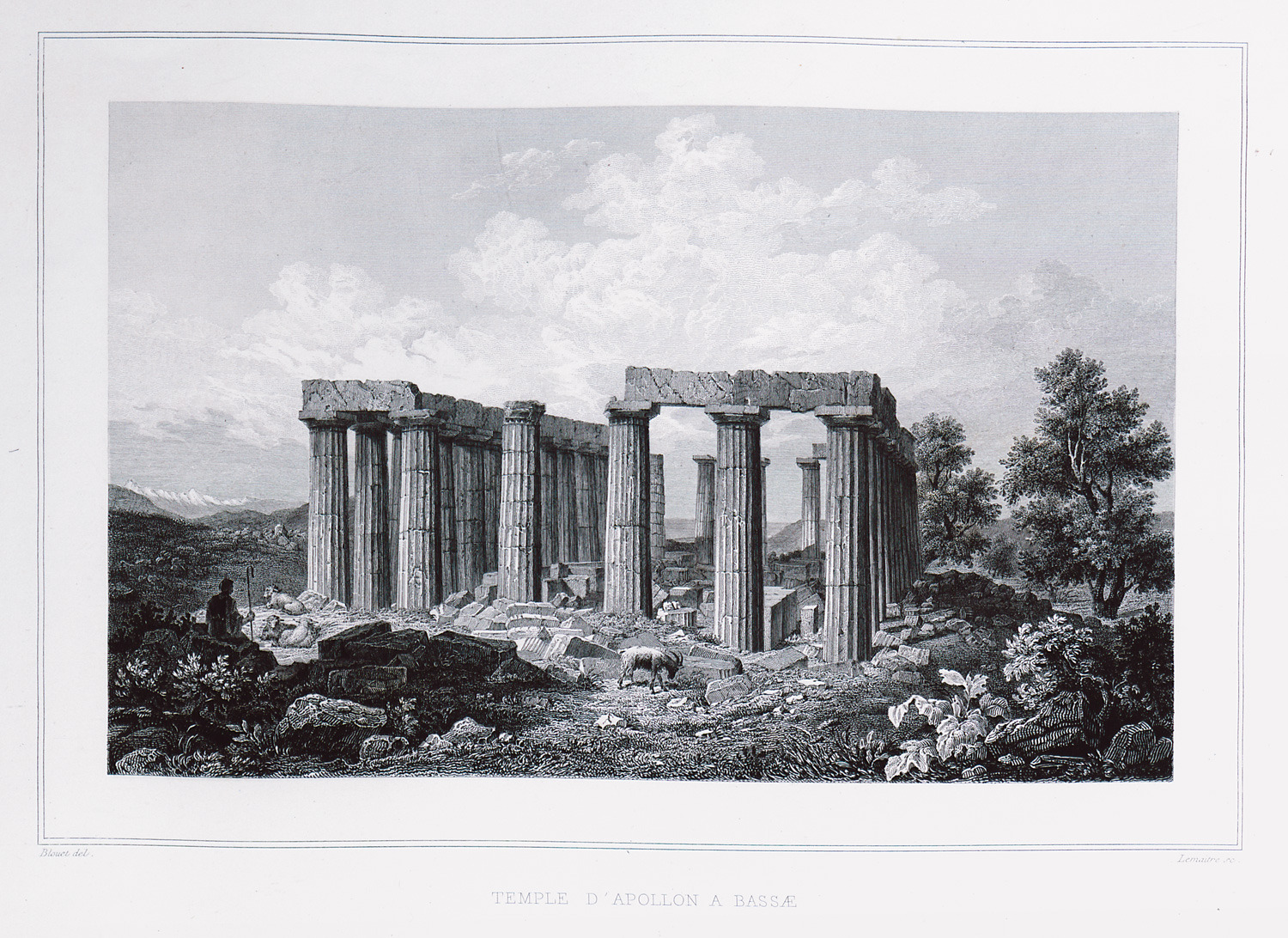
-
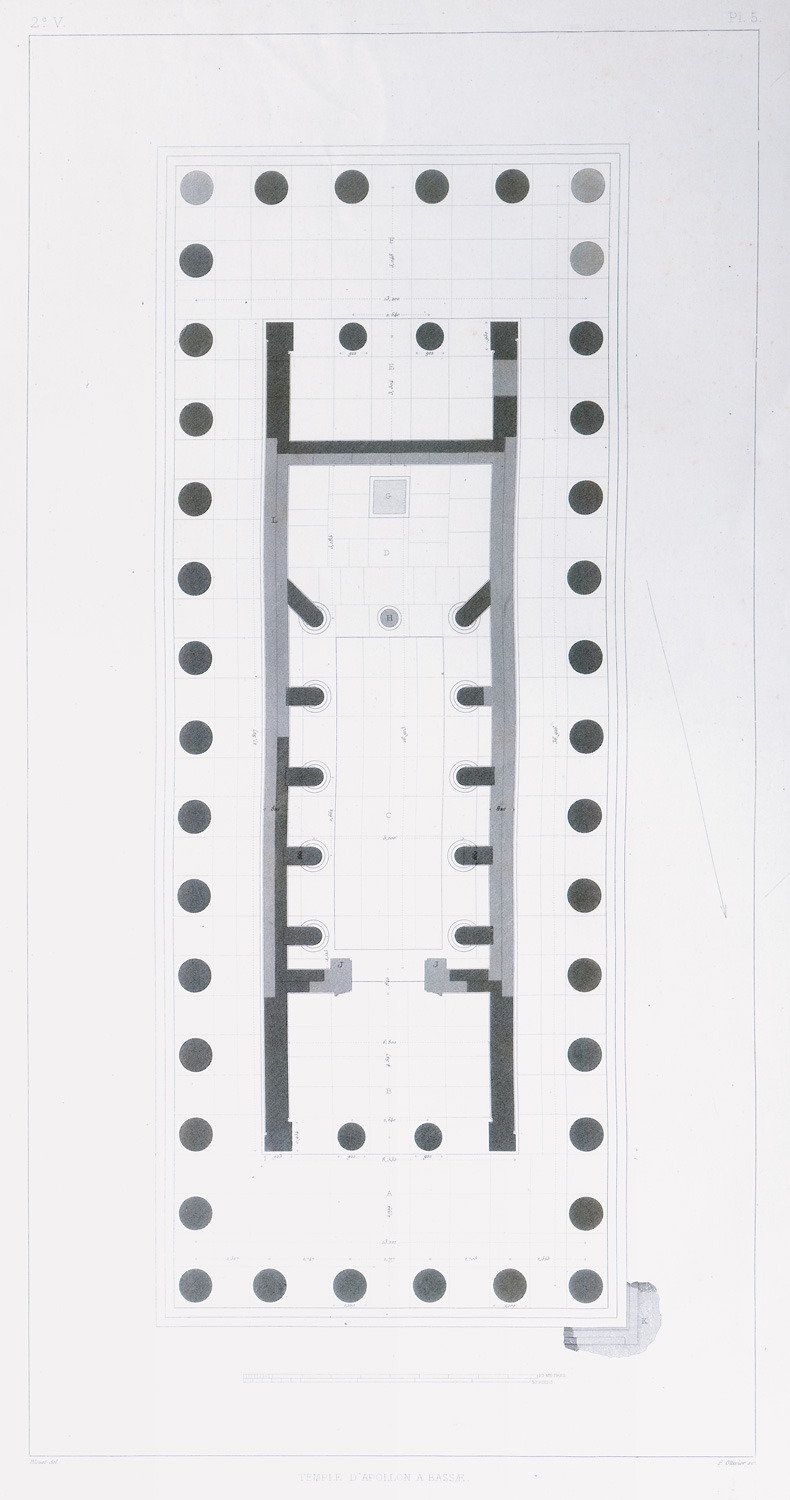
-
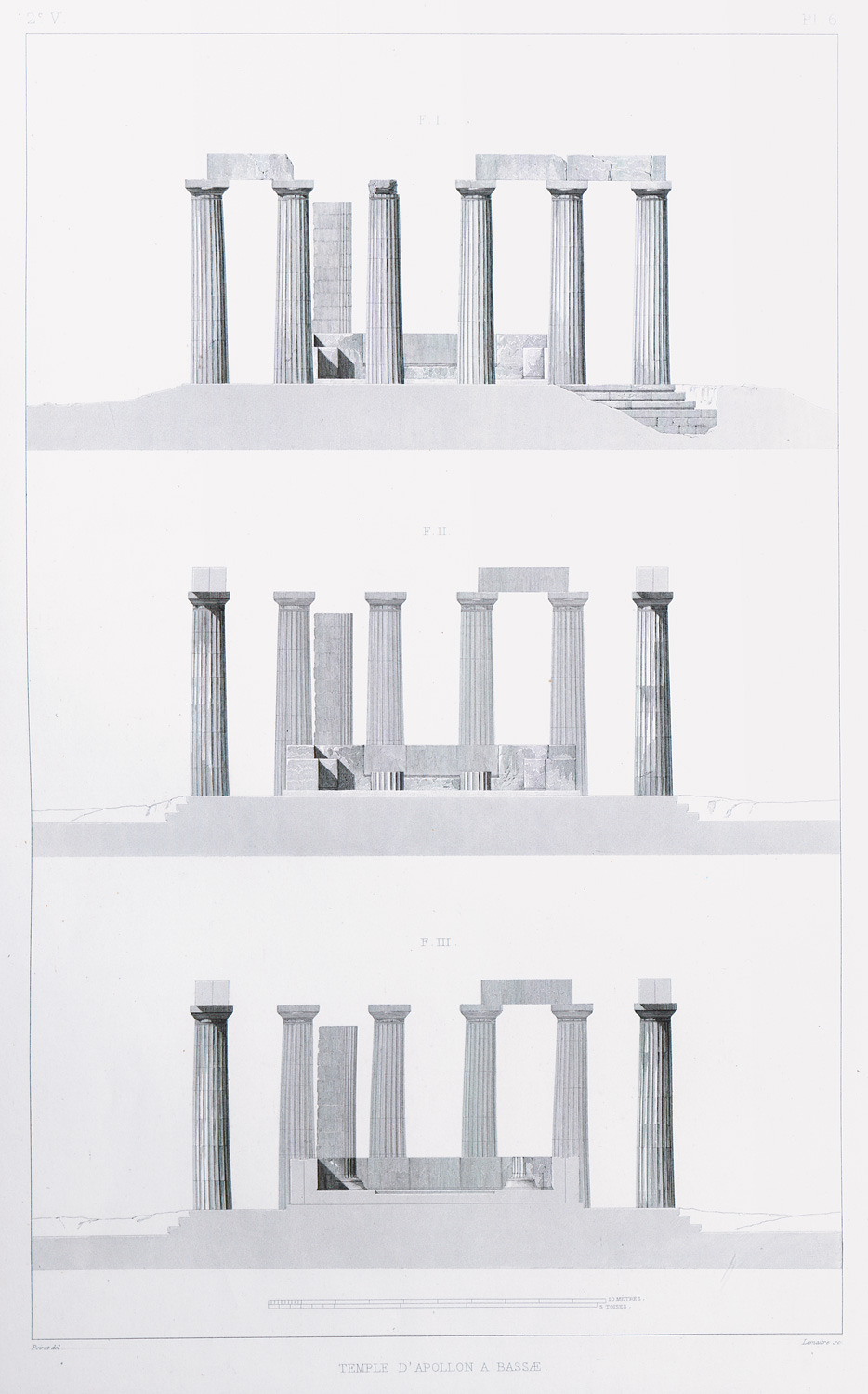
-
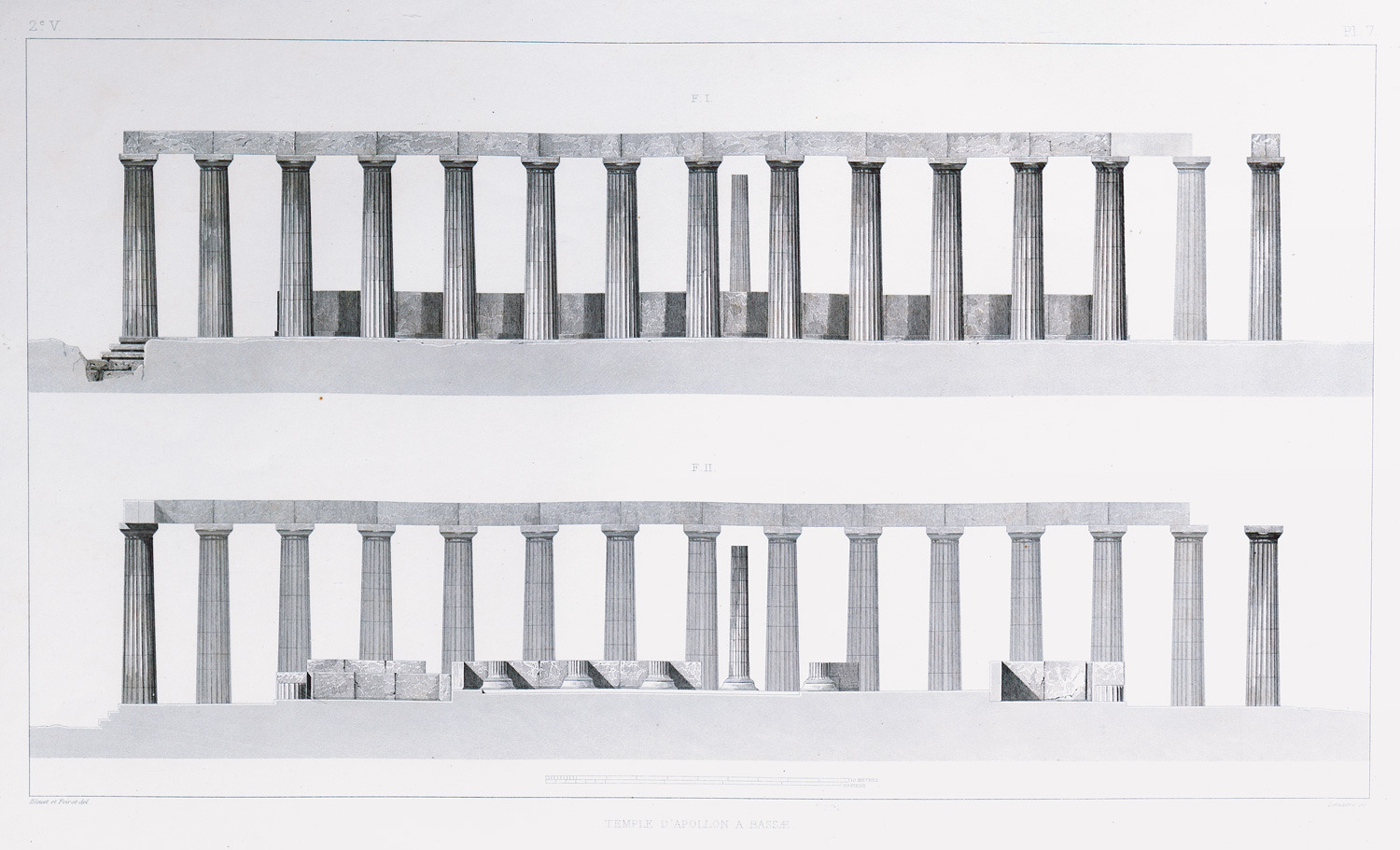
Reconstruction of the flanks of the temple of Apollo Epicurius at Bassae.
-
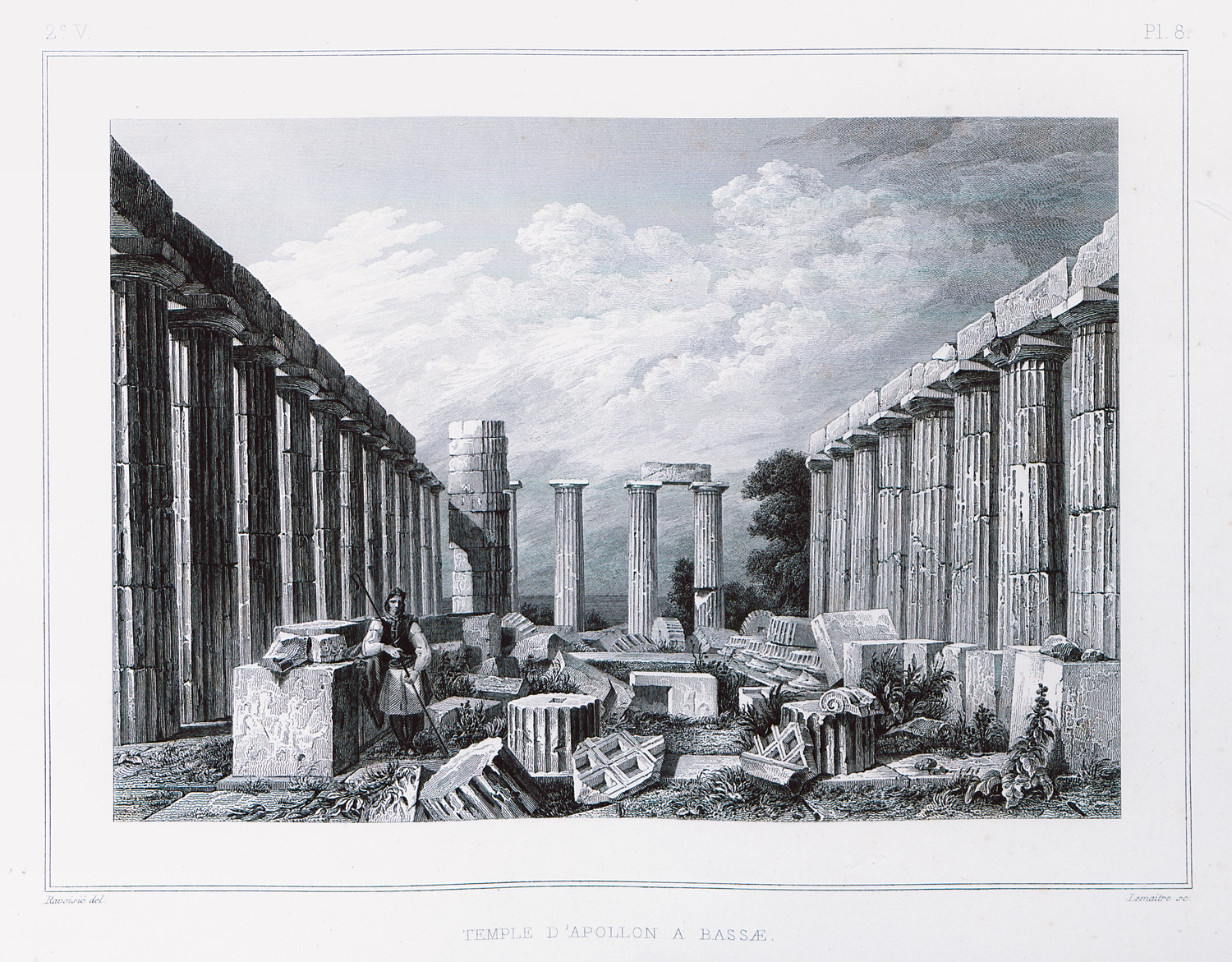
The interior of the temple of Apollo Epicurius at Bassae, 1829.
-
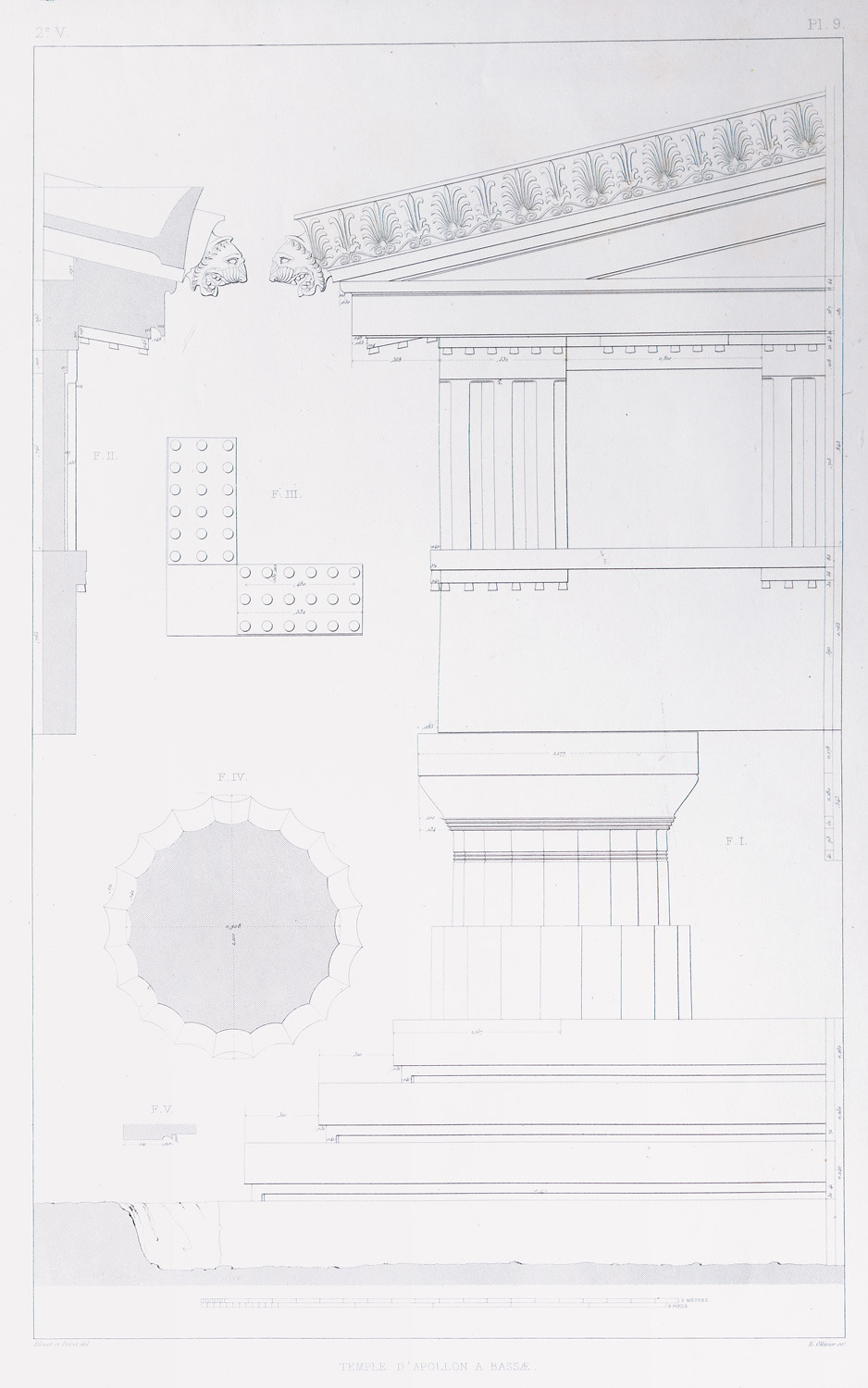
-
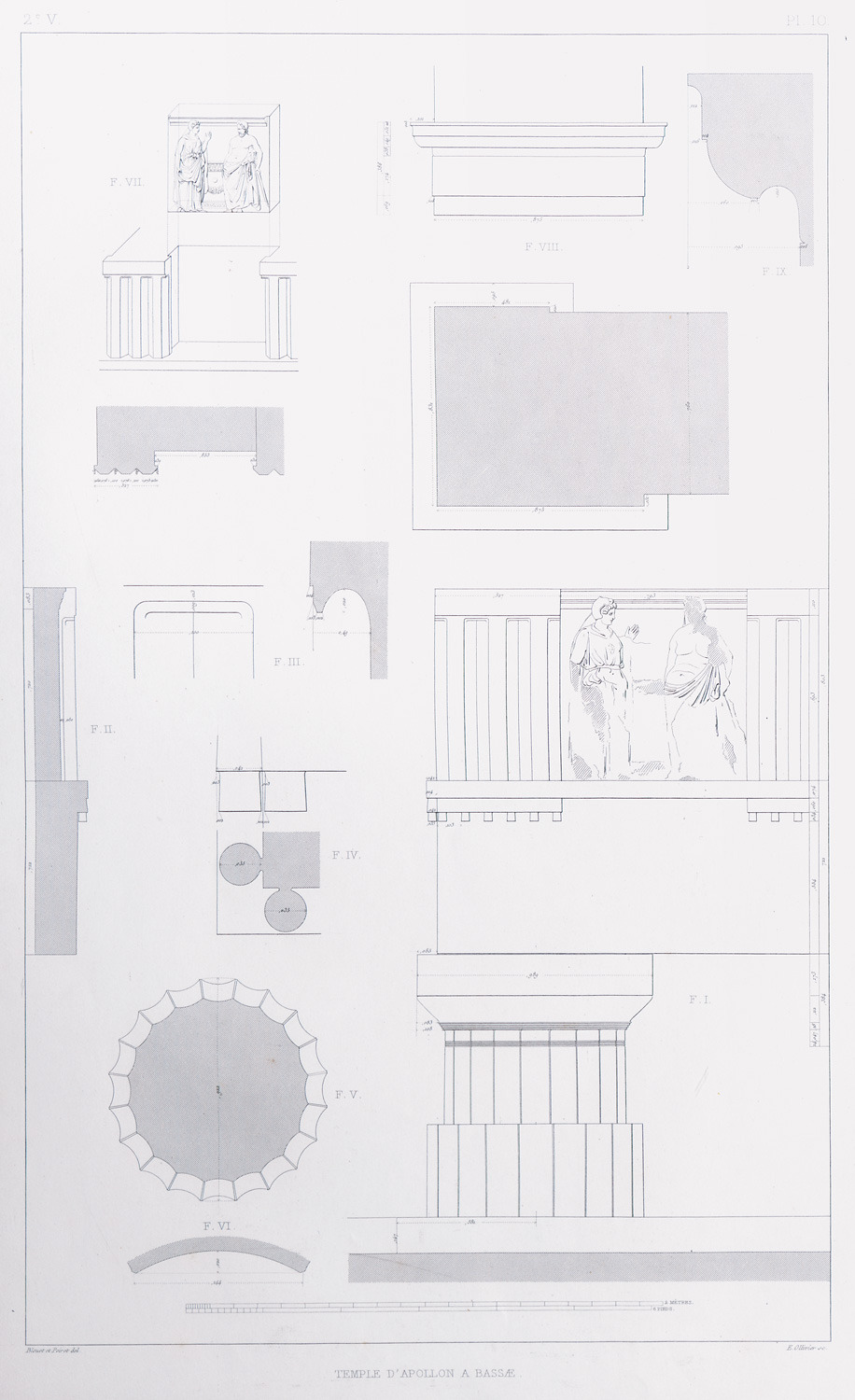
-
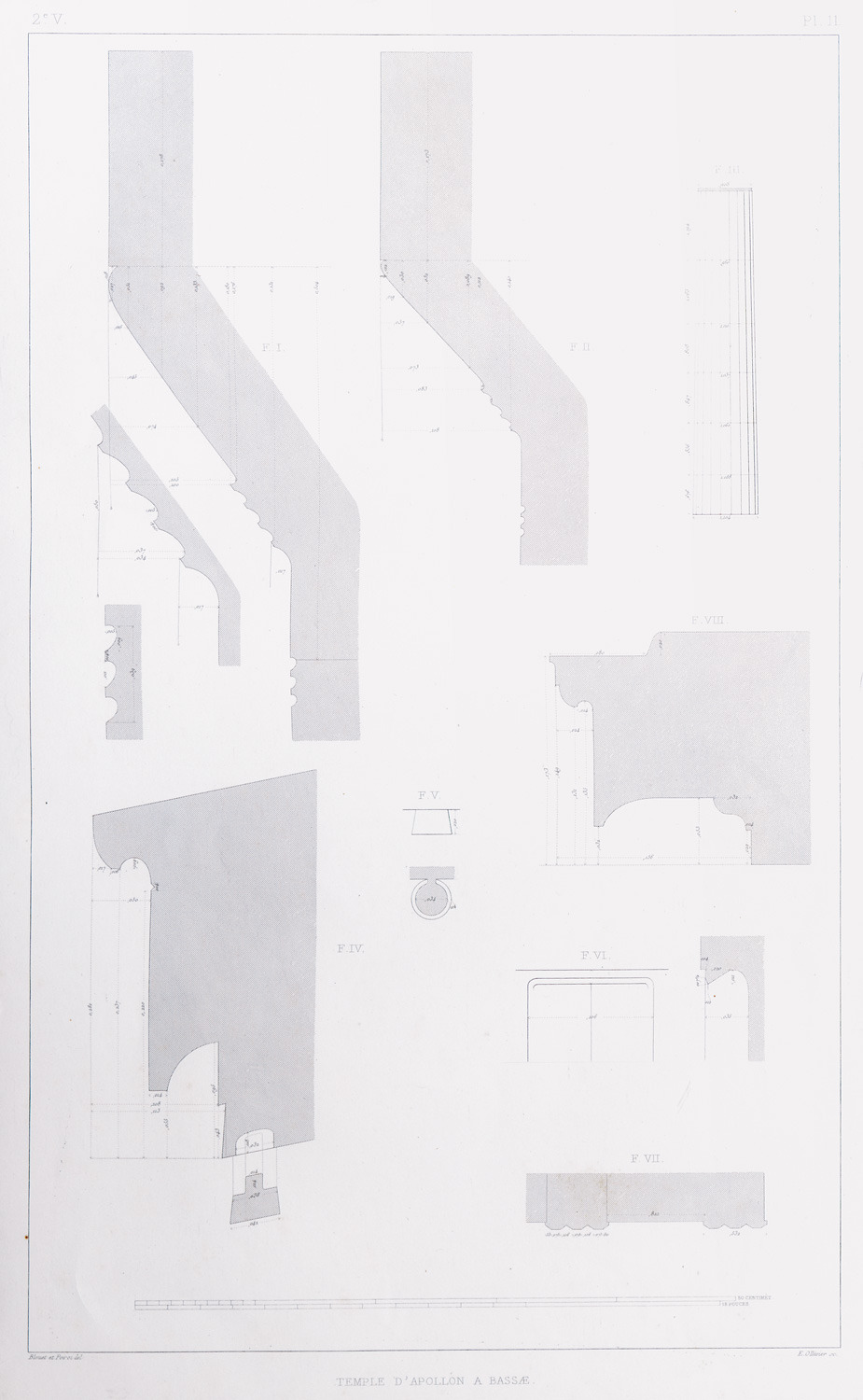
-
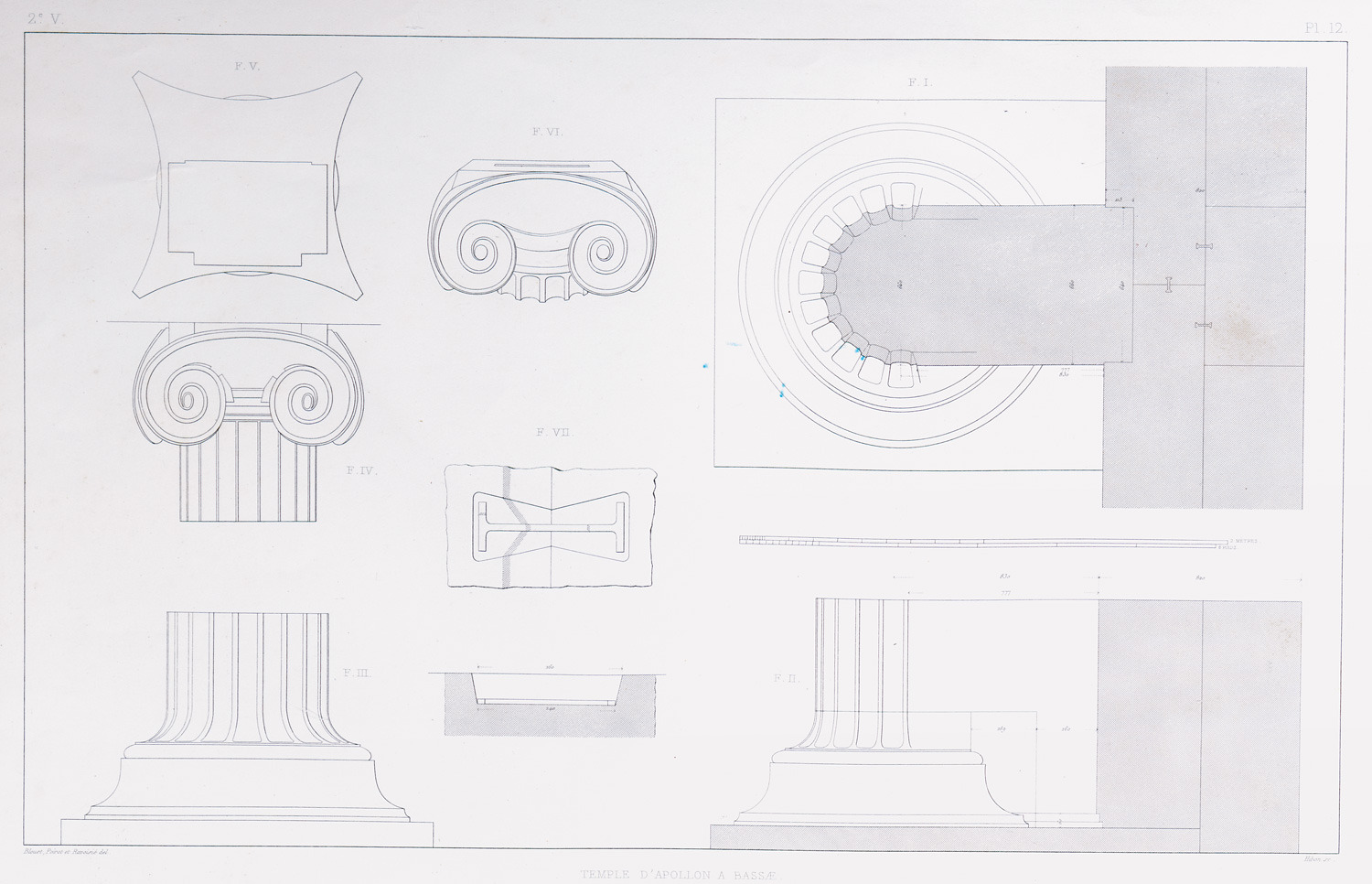
-
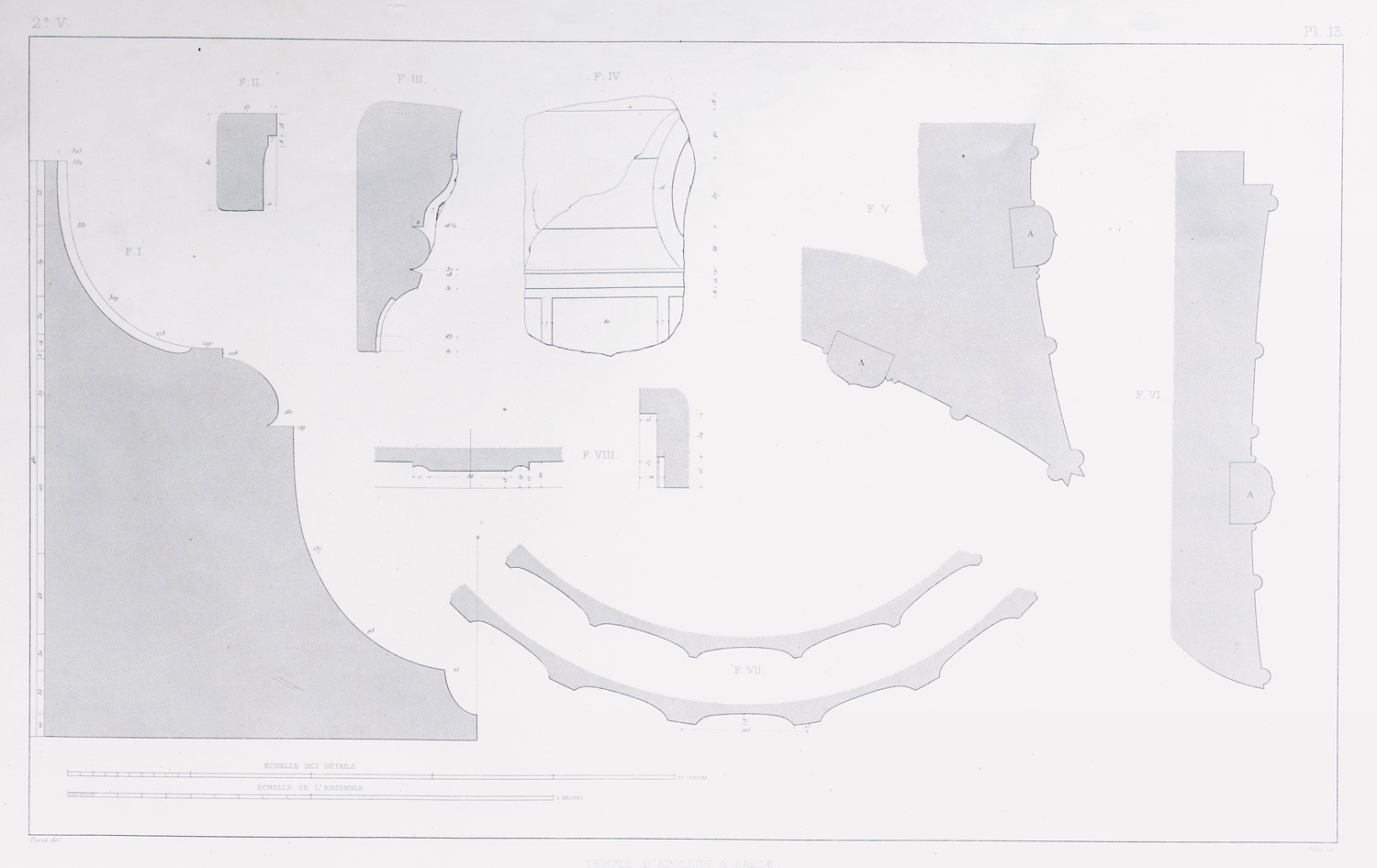
-
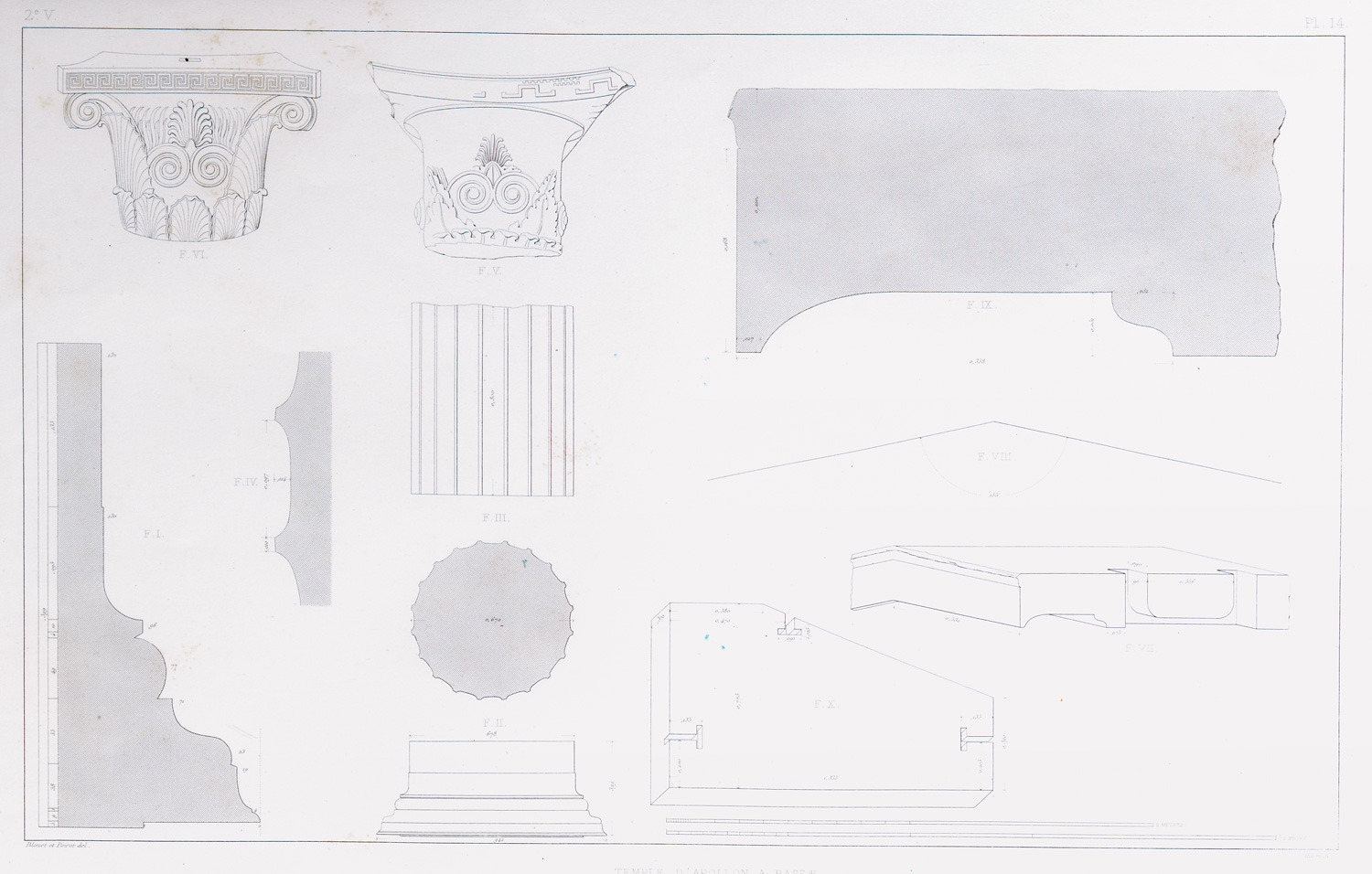
-
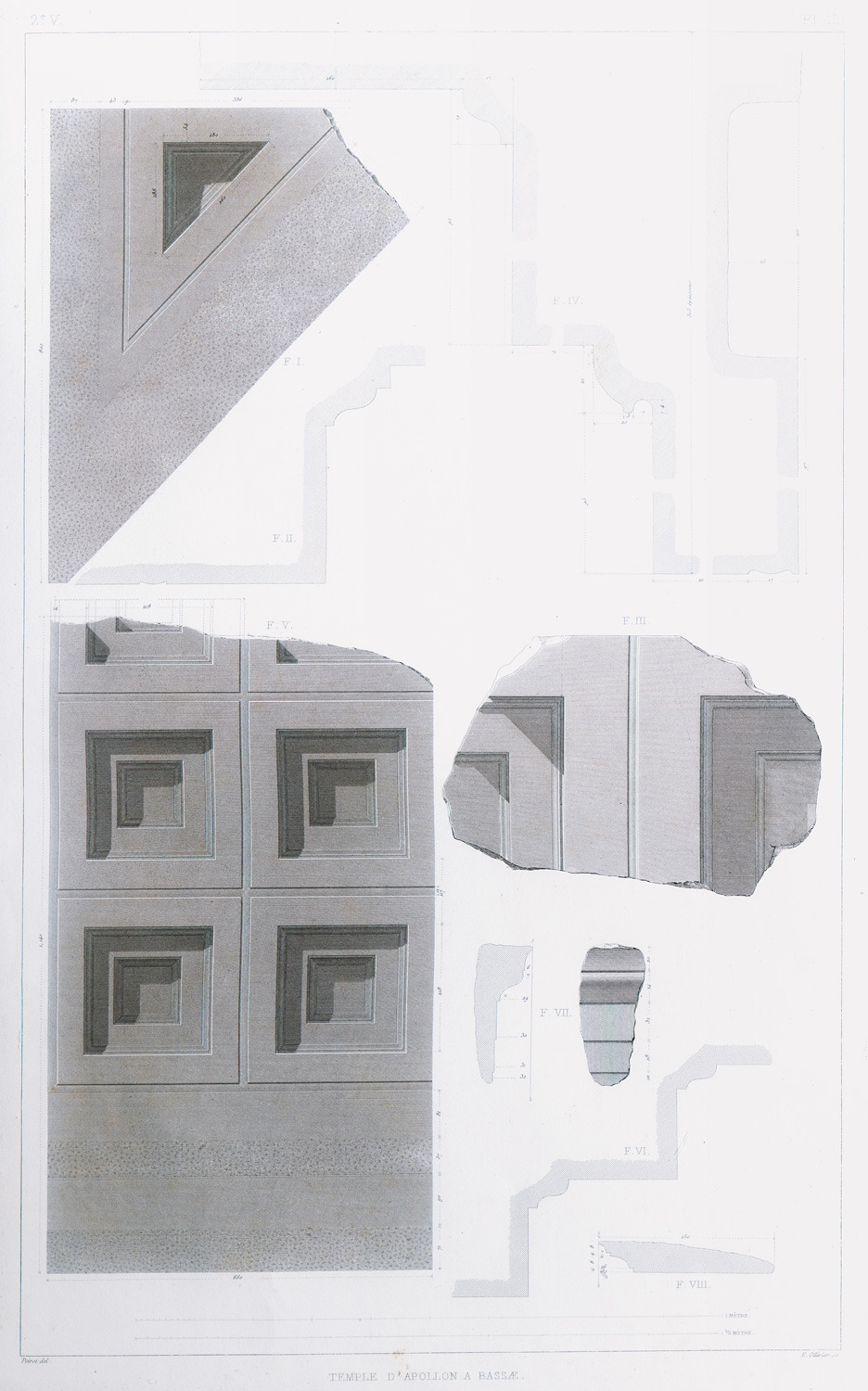
Temple of Apollo Epicurius at Bassae: Reconstruction and ceiling plan of part of the panels.
-
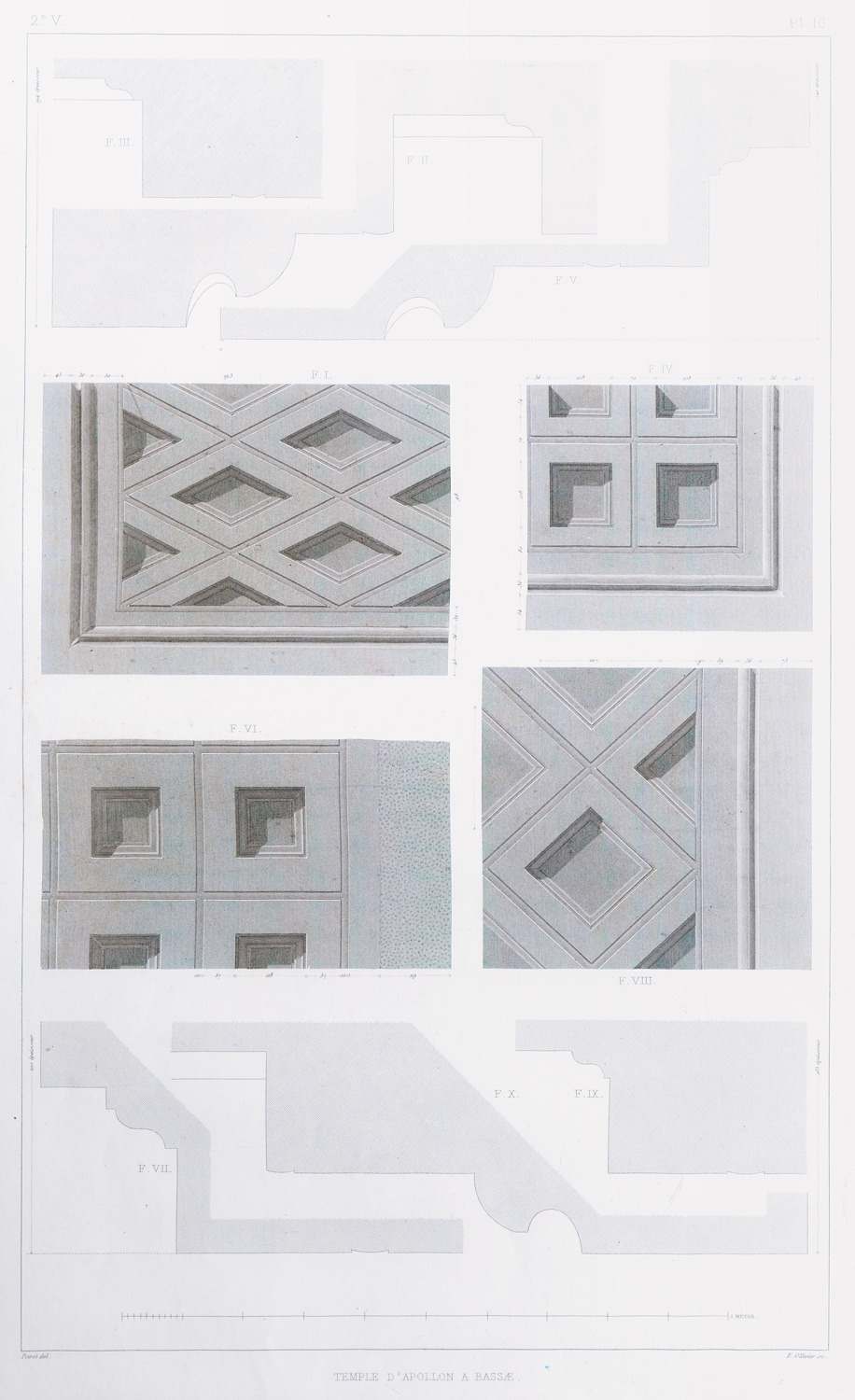
Temple of Apollo Epicurius at Bassae: Reconstruction and ceiling plan of part of the panels.
-
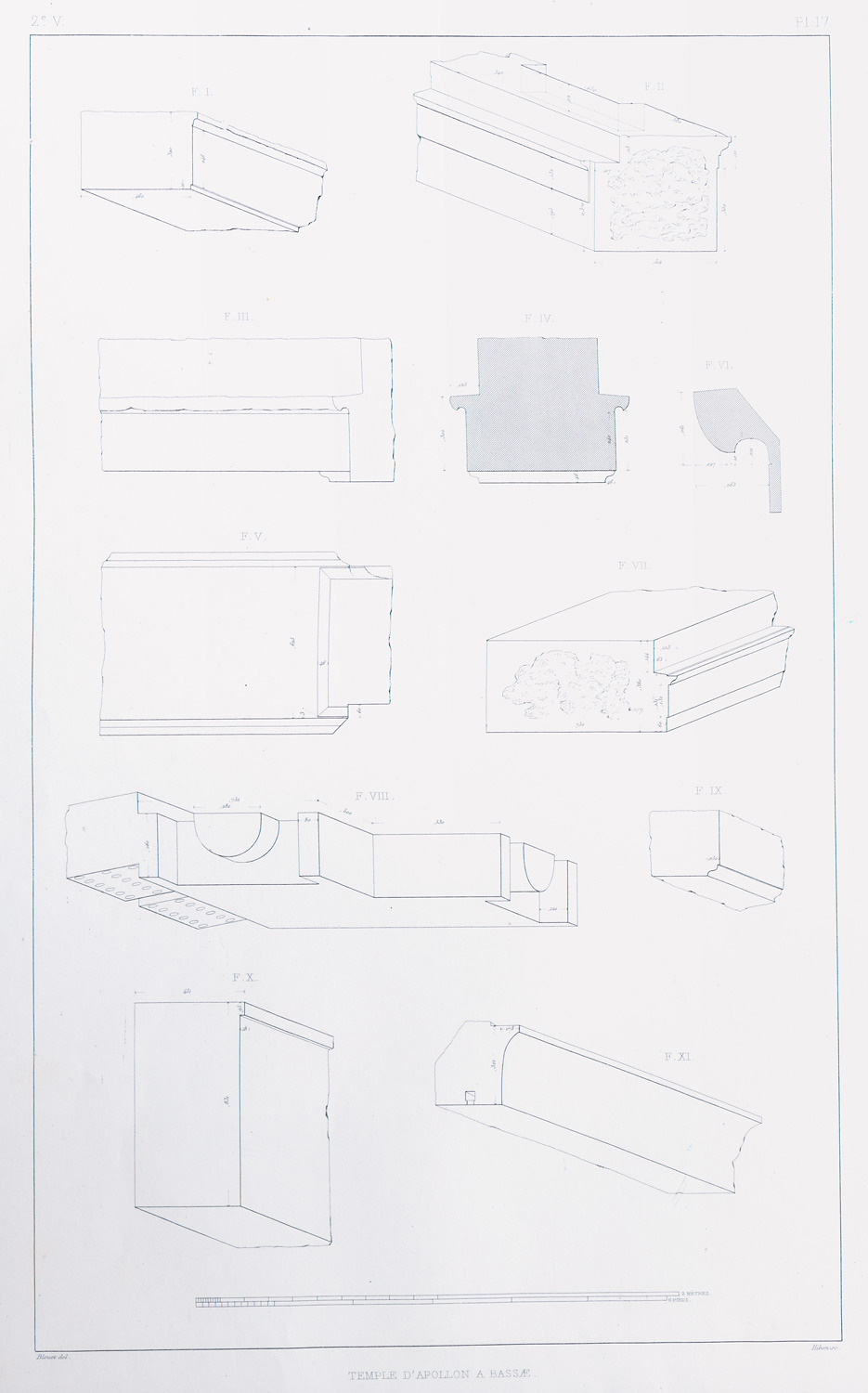
-
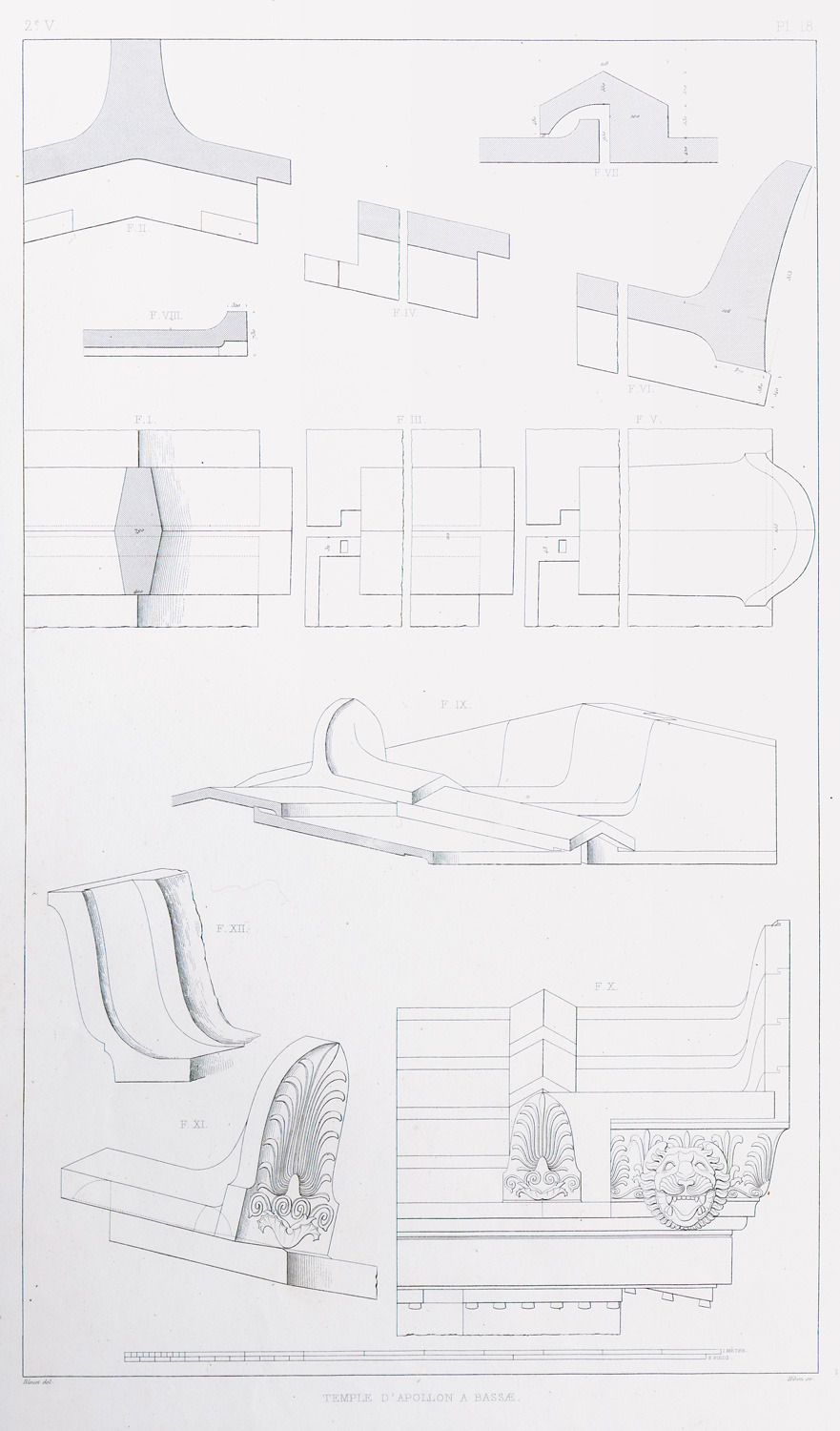
Temple of Apollo Epicurius at Bassae: Architectural features of the cornice.
-
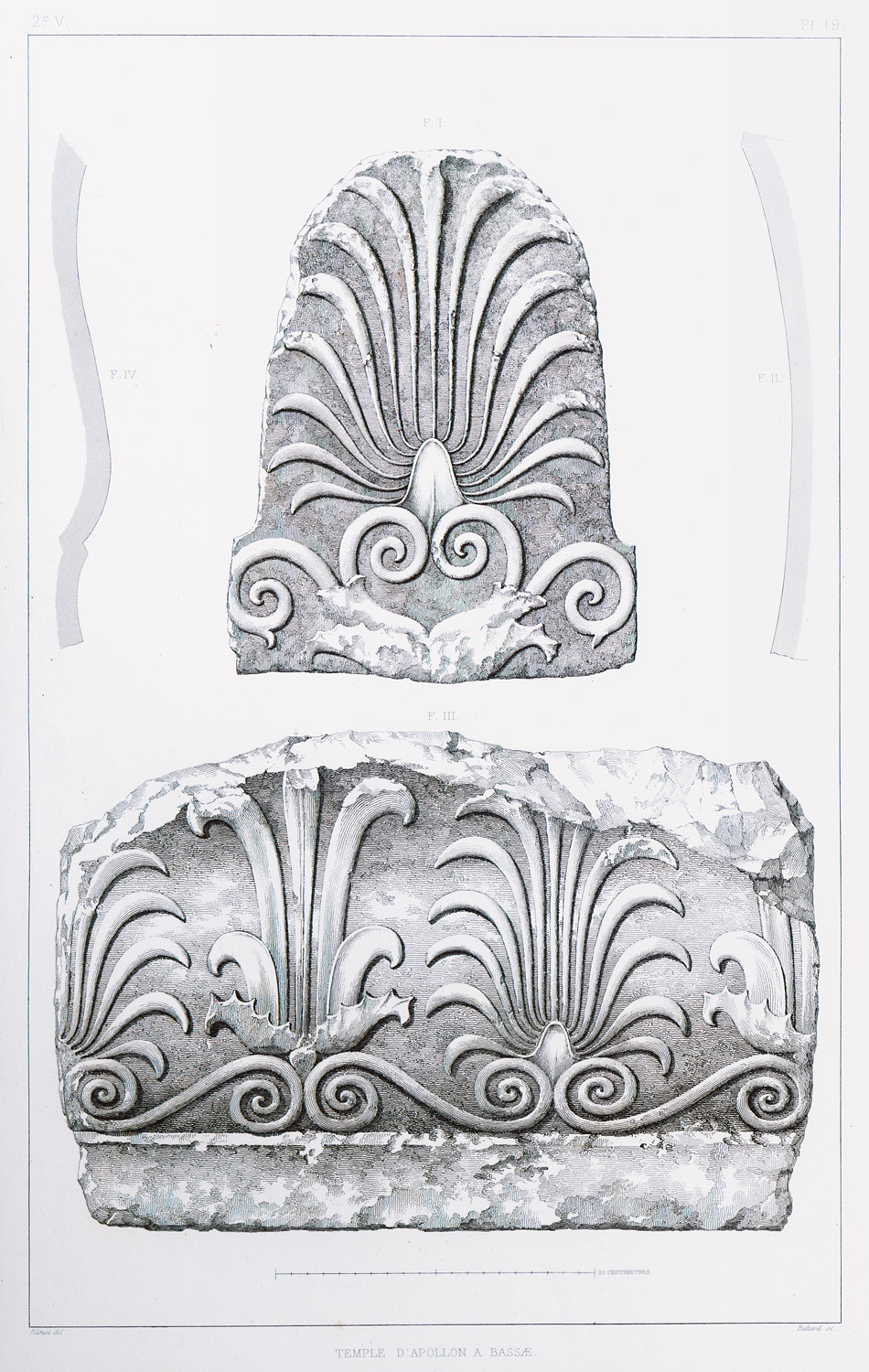
Fragments of the sculptures of the Temple of Apollo Epicurius at Bassae.
-
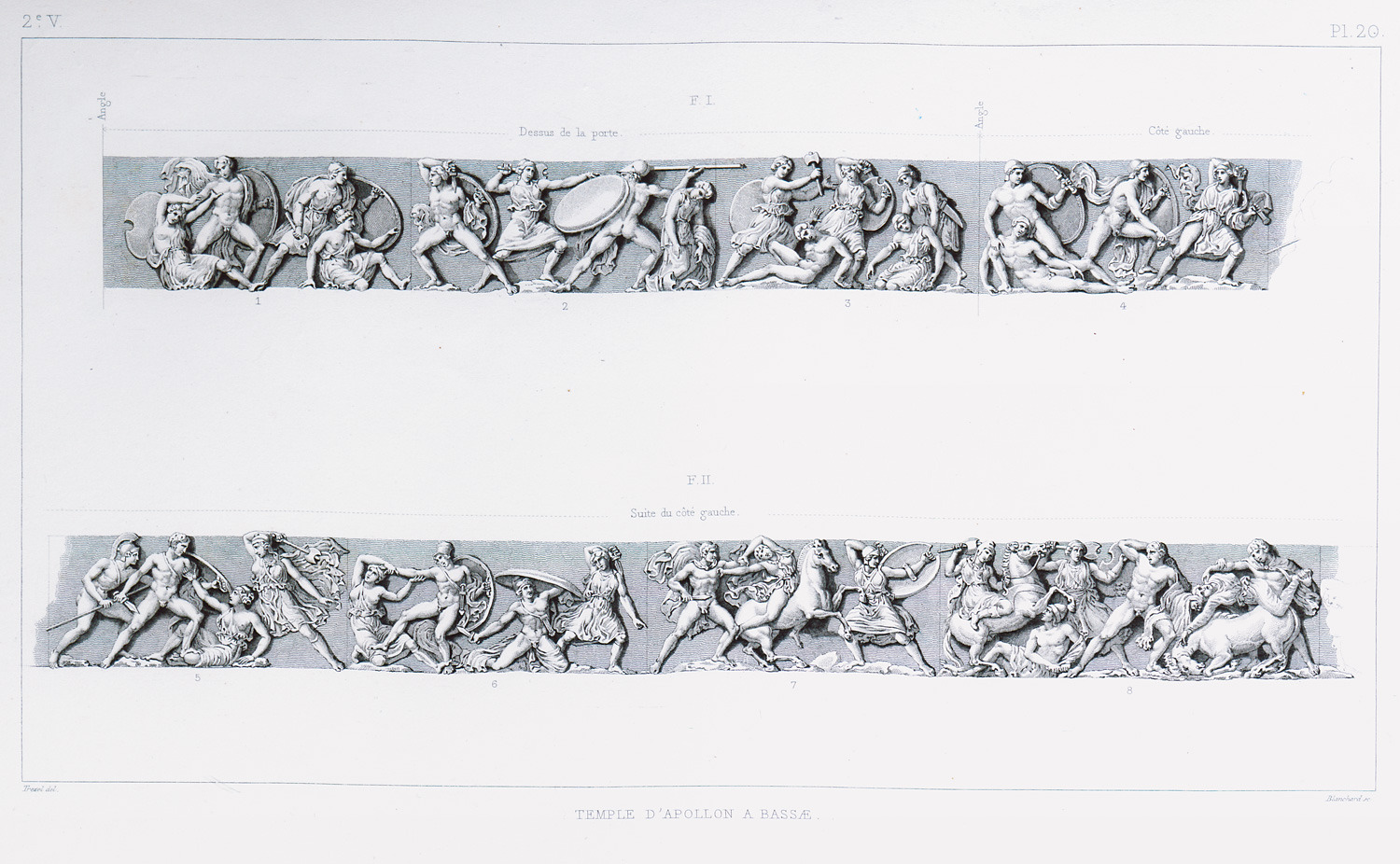
-
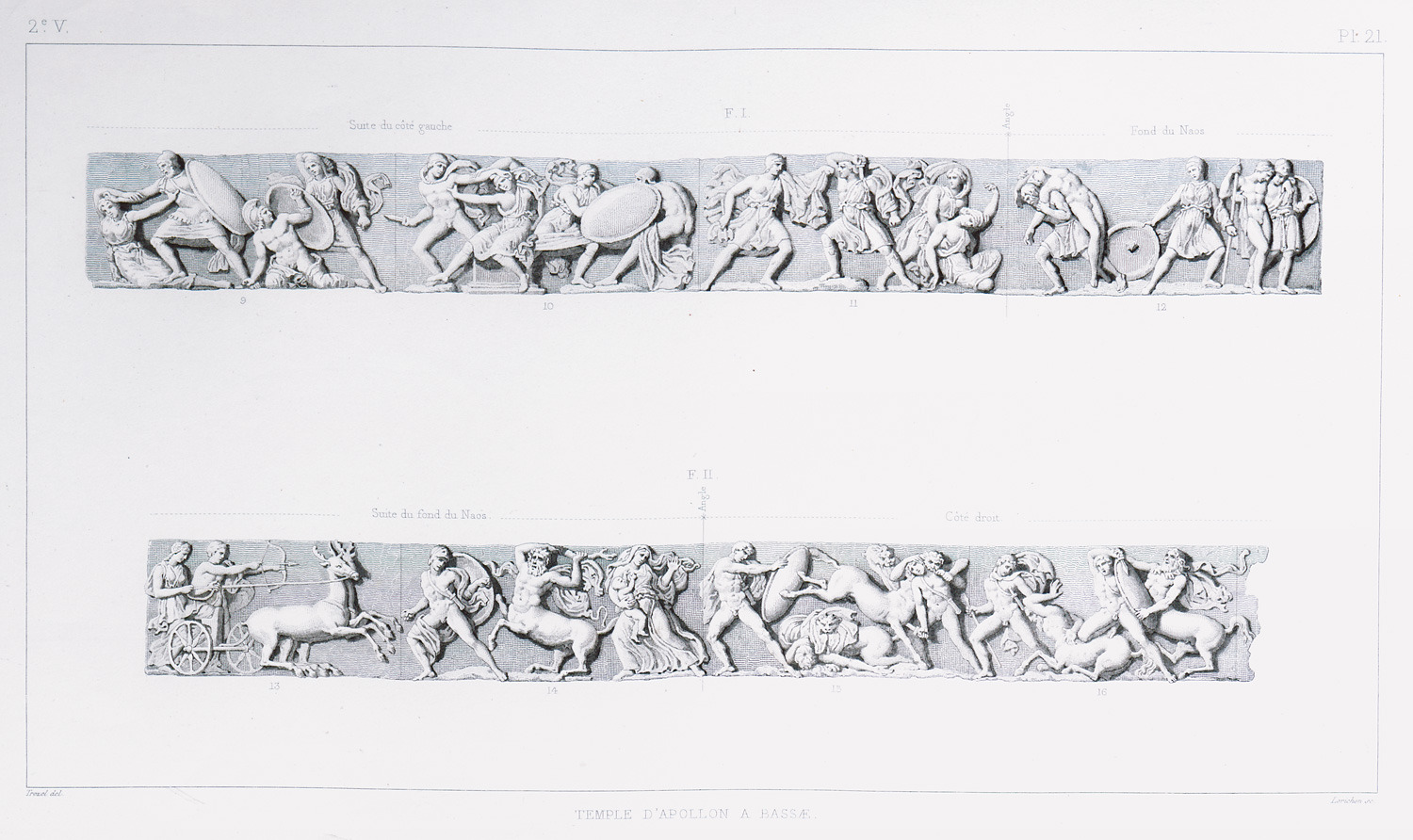
-
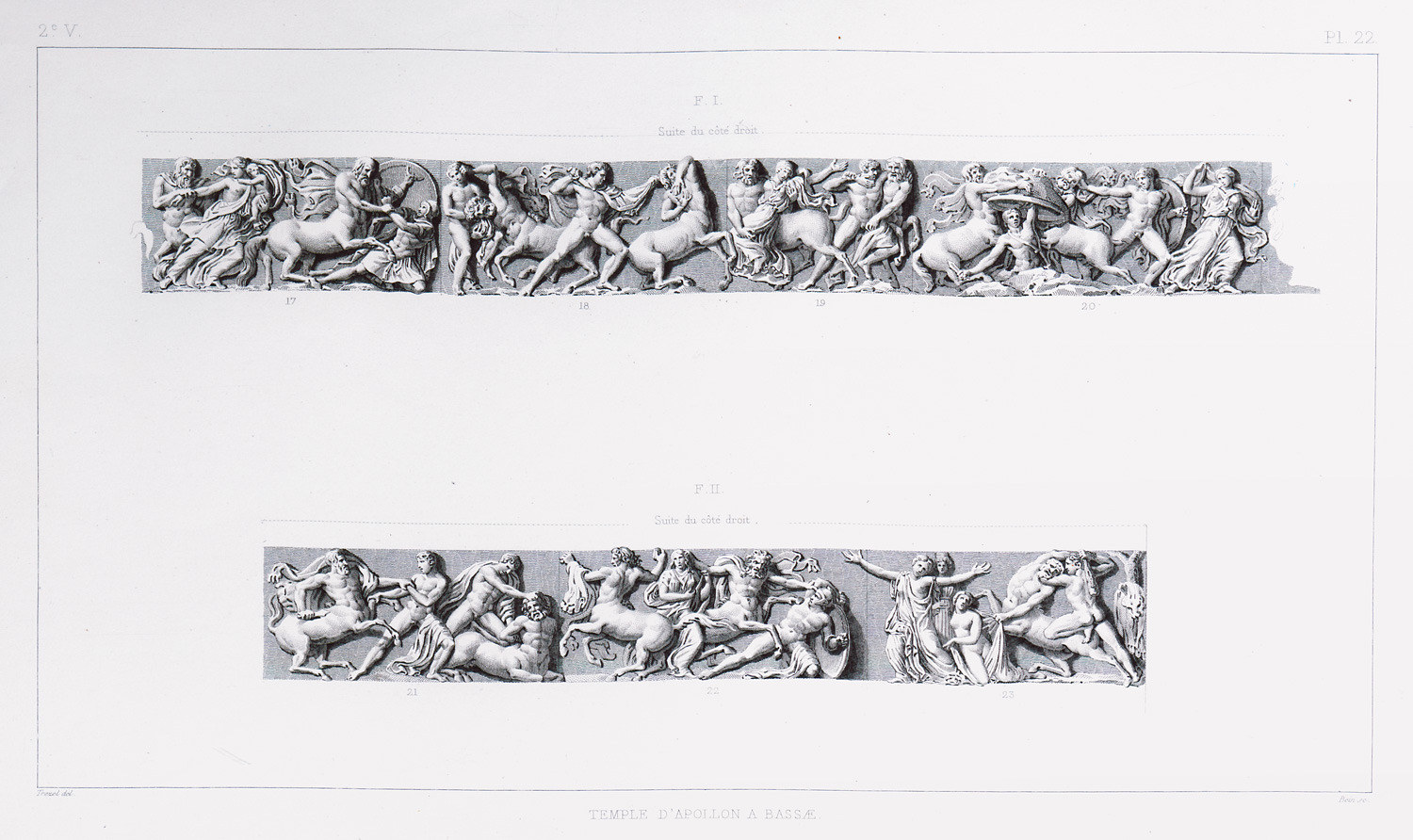
-
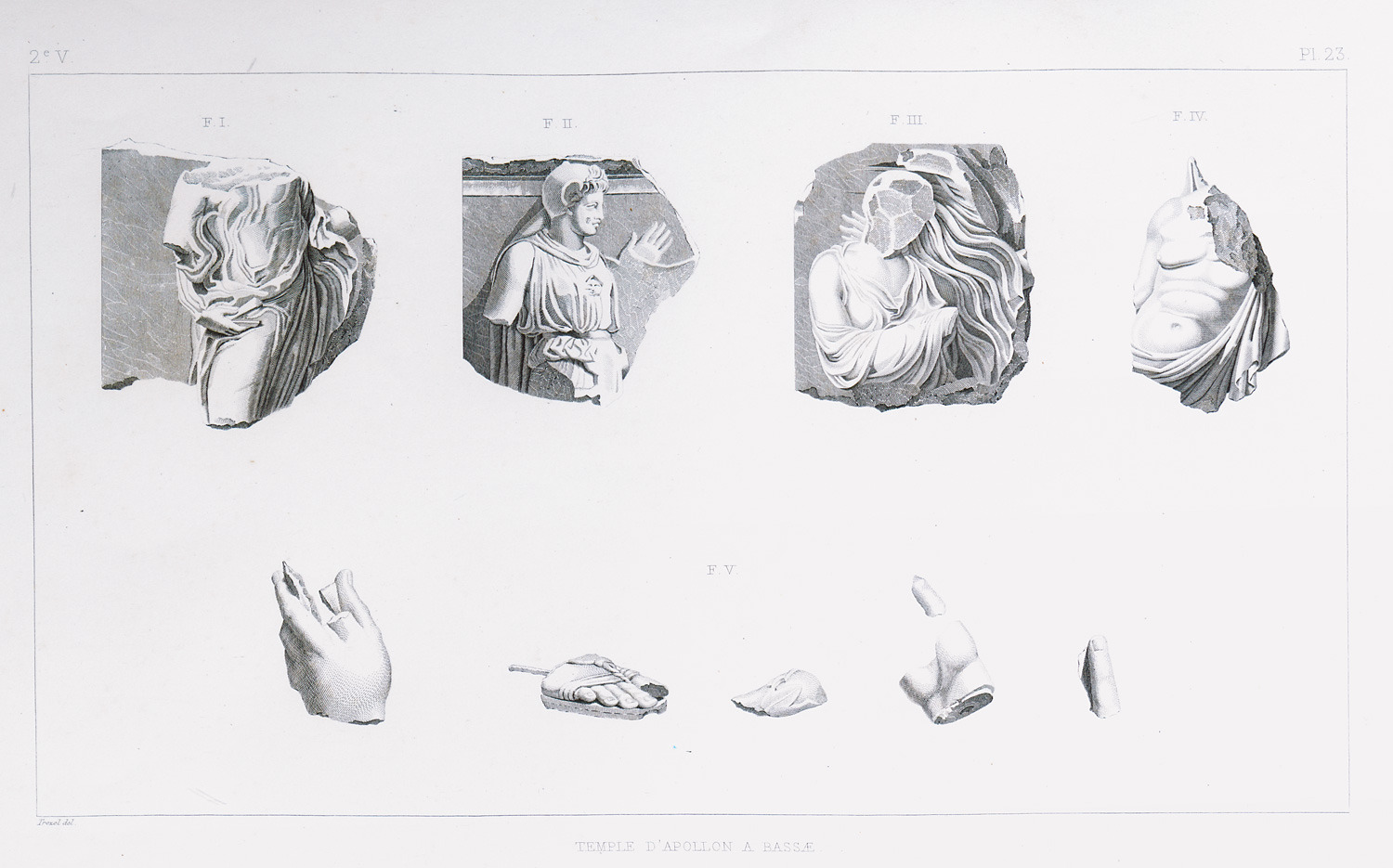
-
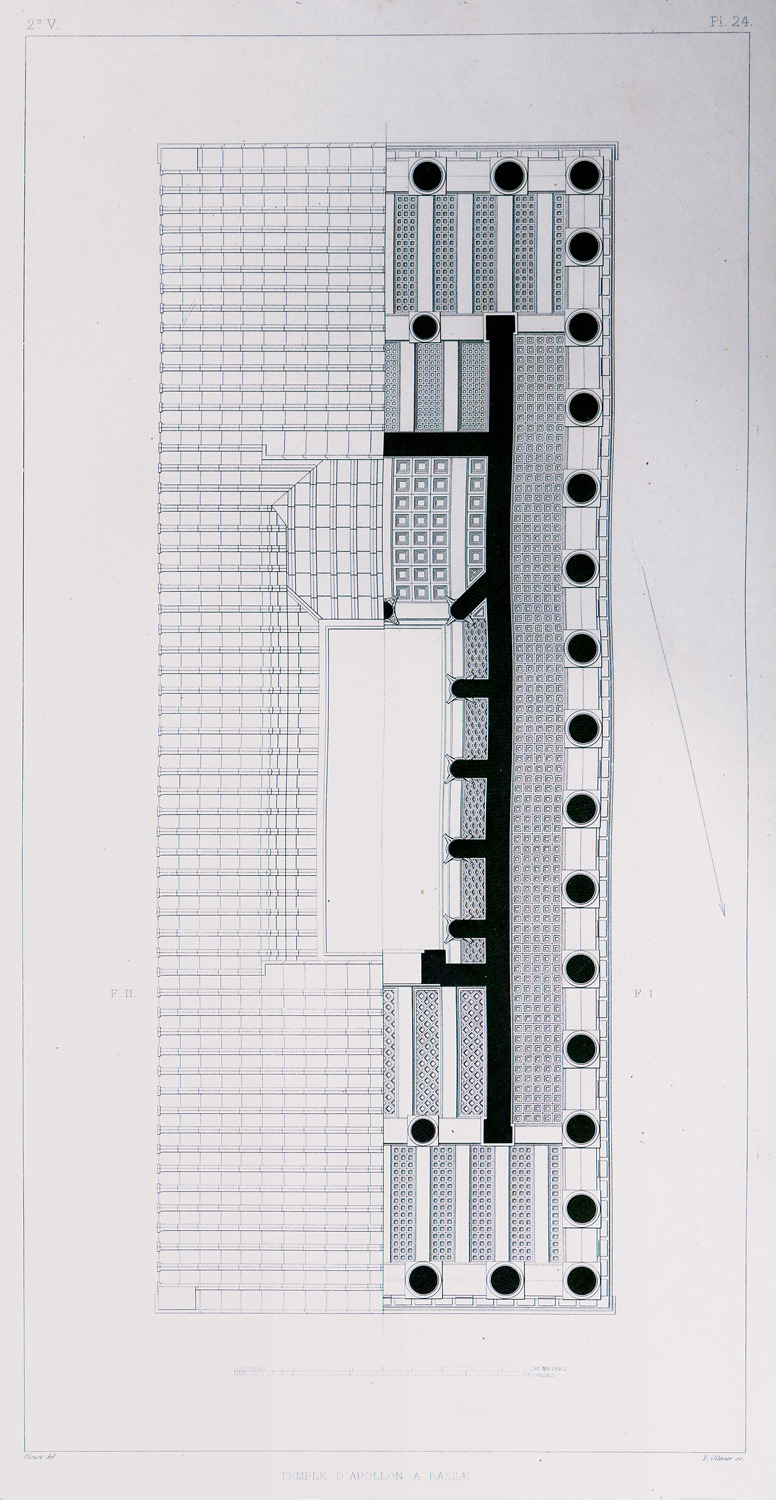
-
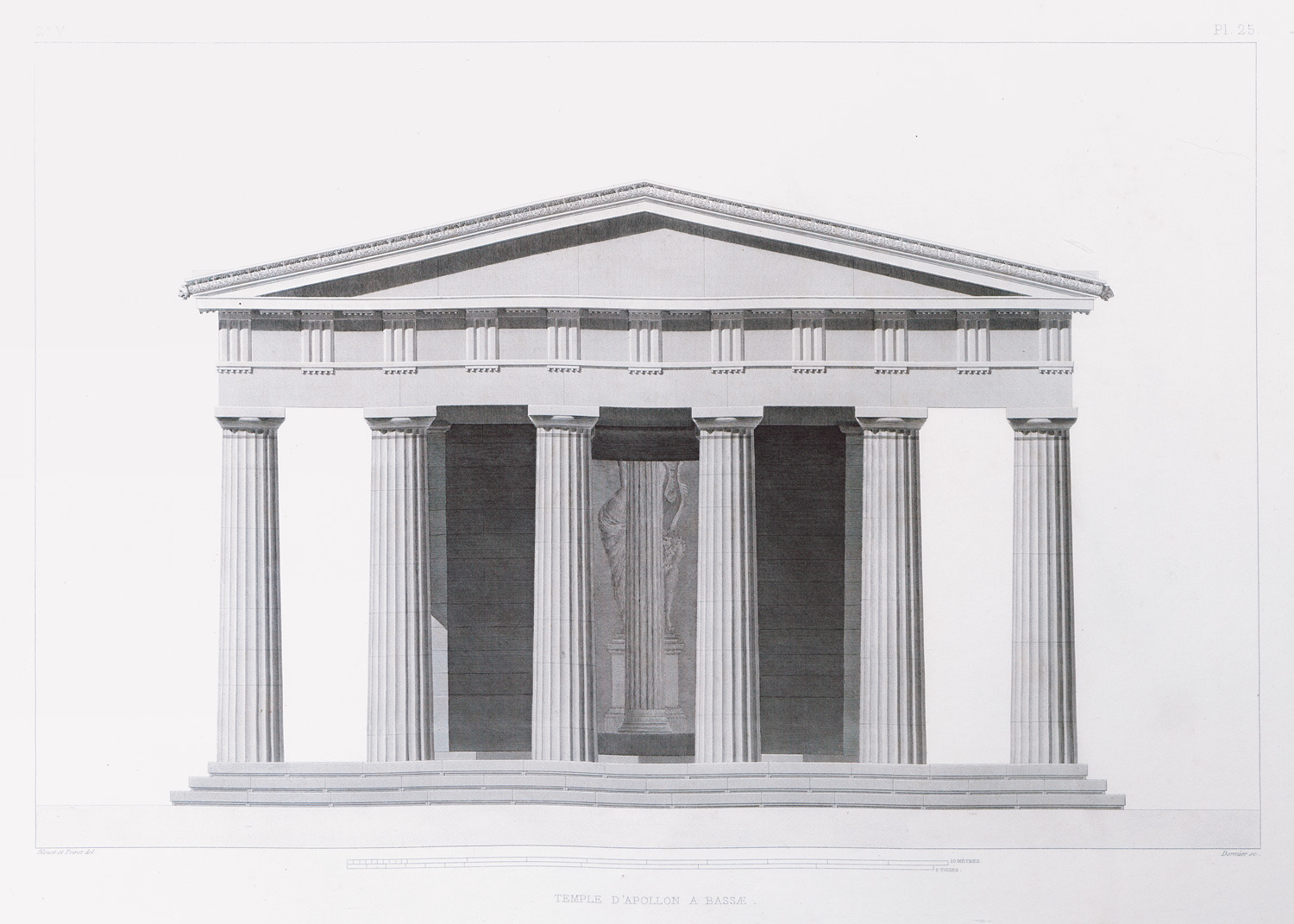
Reconstruction of the façade of the Temple of Apollo Epicurius at Bassae.
-
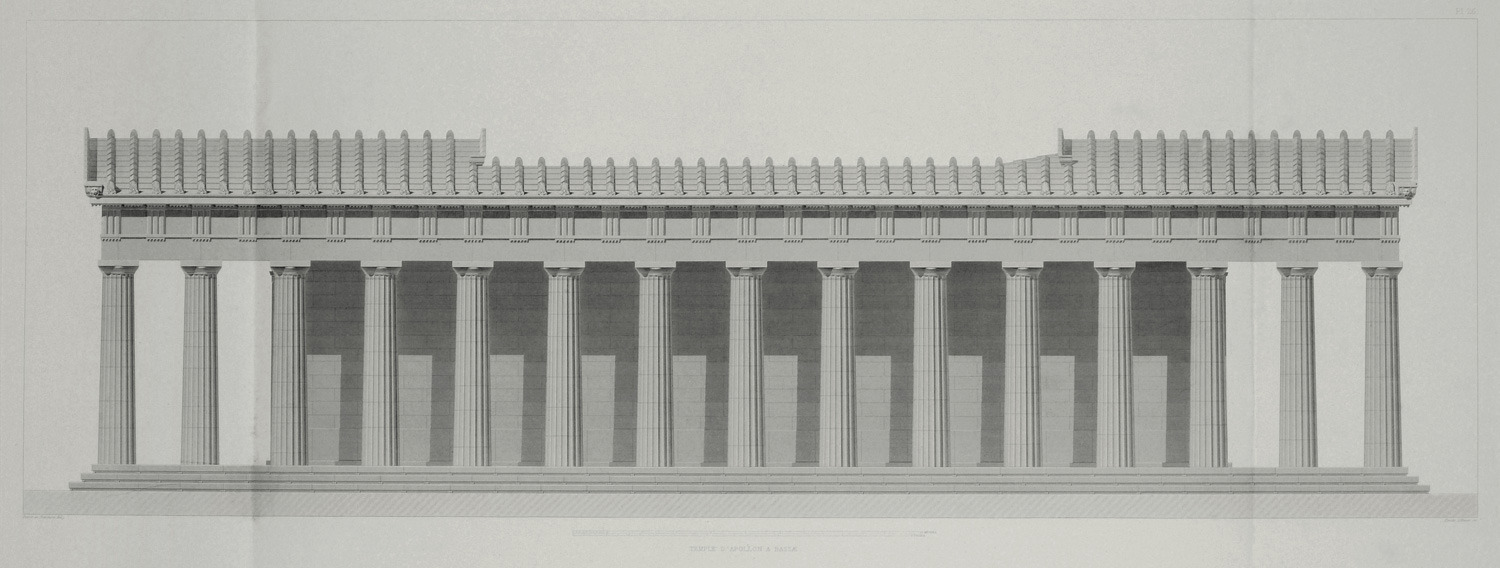
Reconstruction of the flanks of the Temple of Apollo Epicurius at Bassae.
-
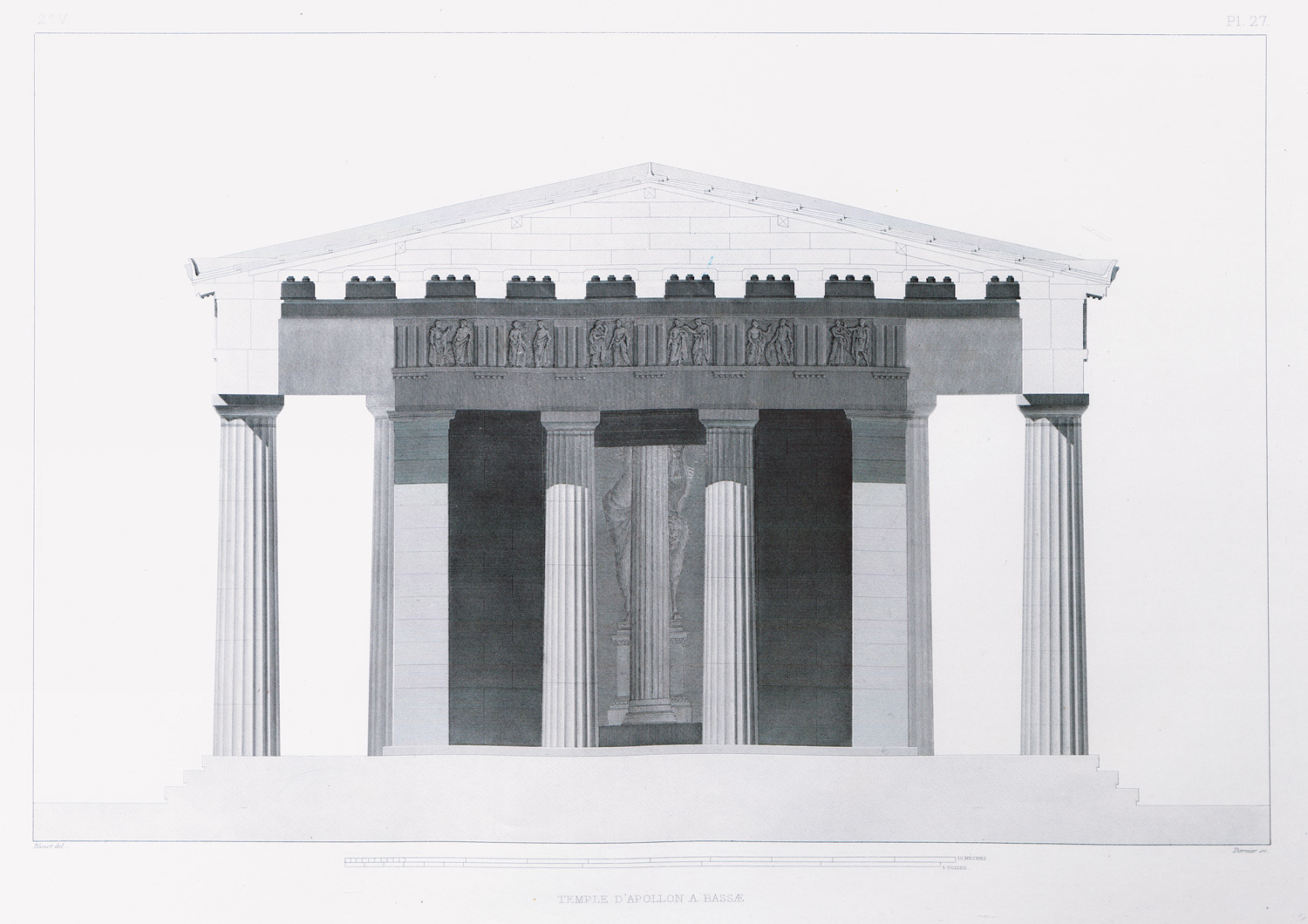
Reconstruction of the entrance to the pronaos at the temple of Apollo Epicurius at Bassae.
-
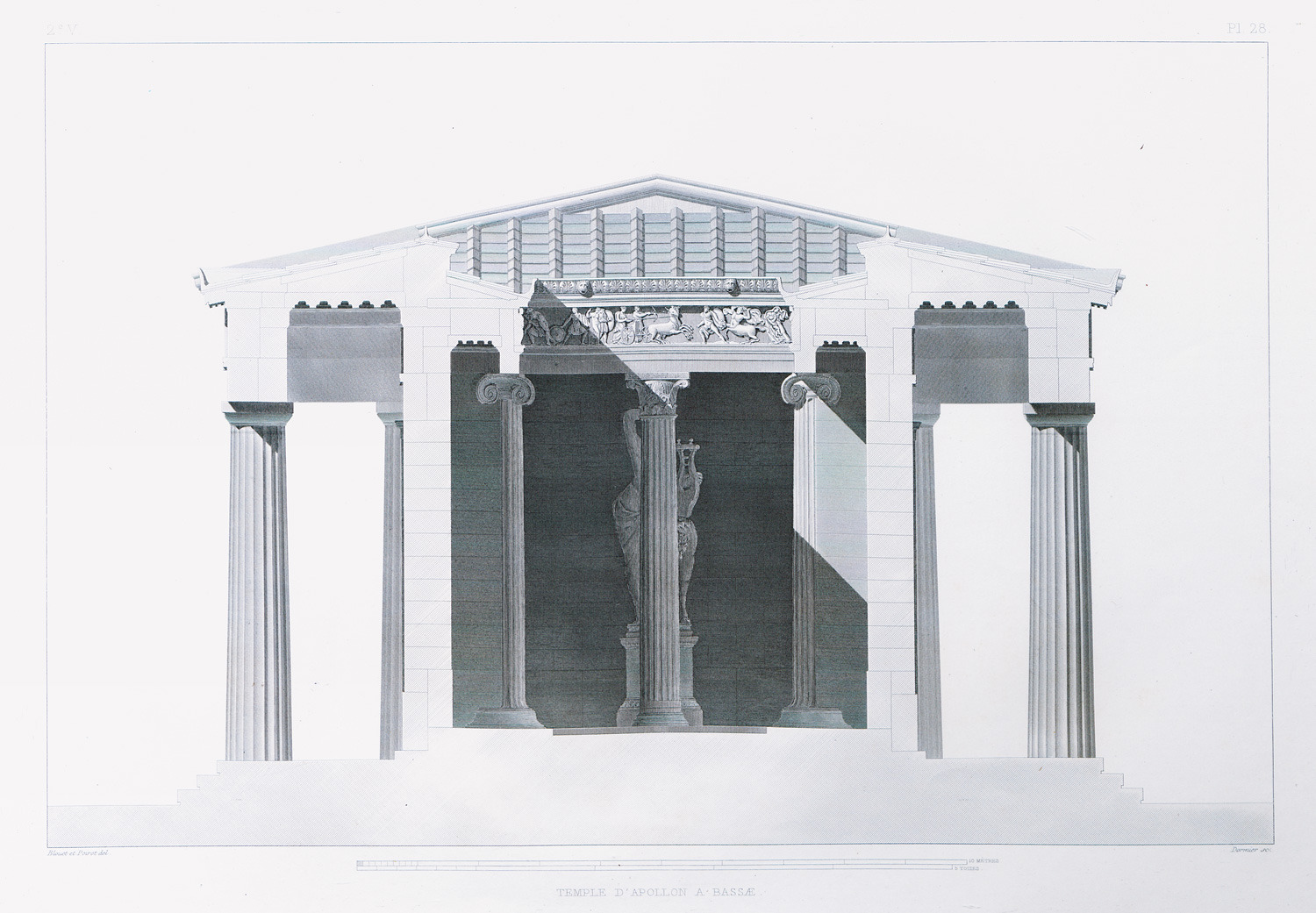
Reconstruction of the entrance to the cella of the temple of Apollo Epicurius at Bassae.
-
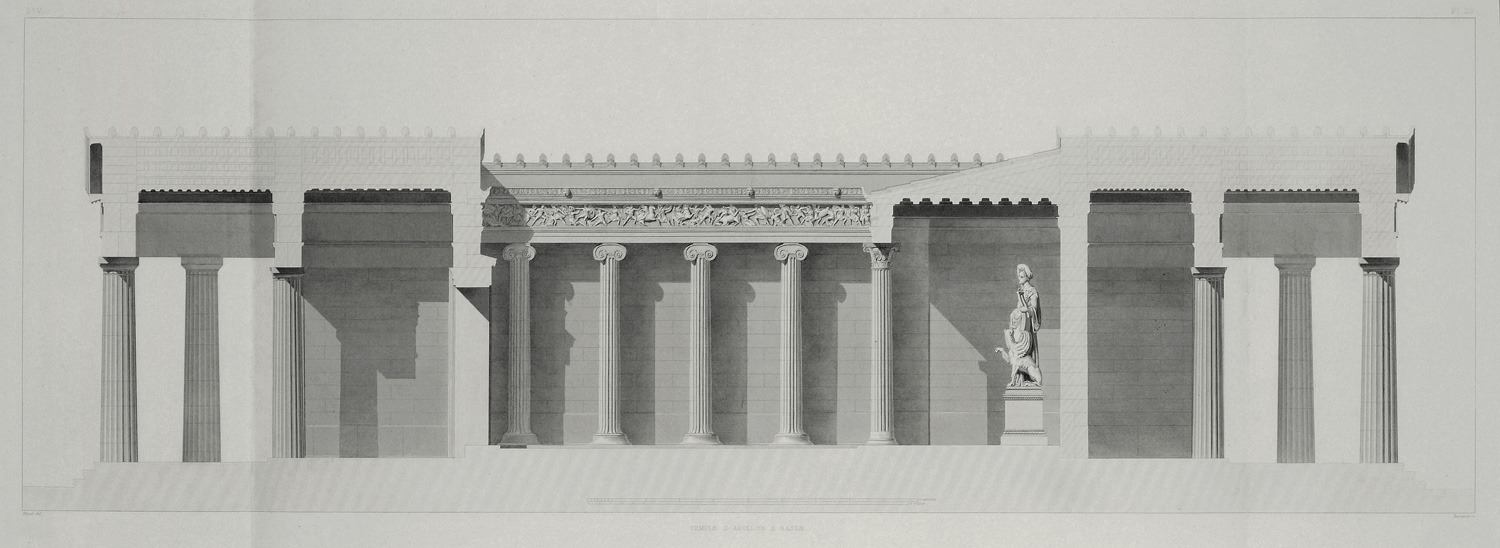
-
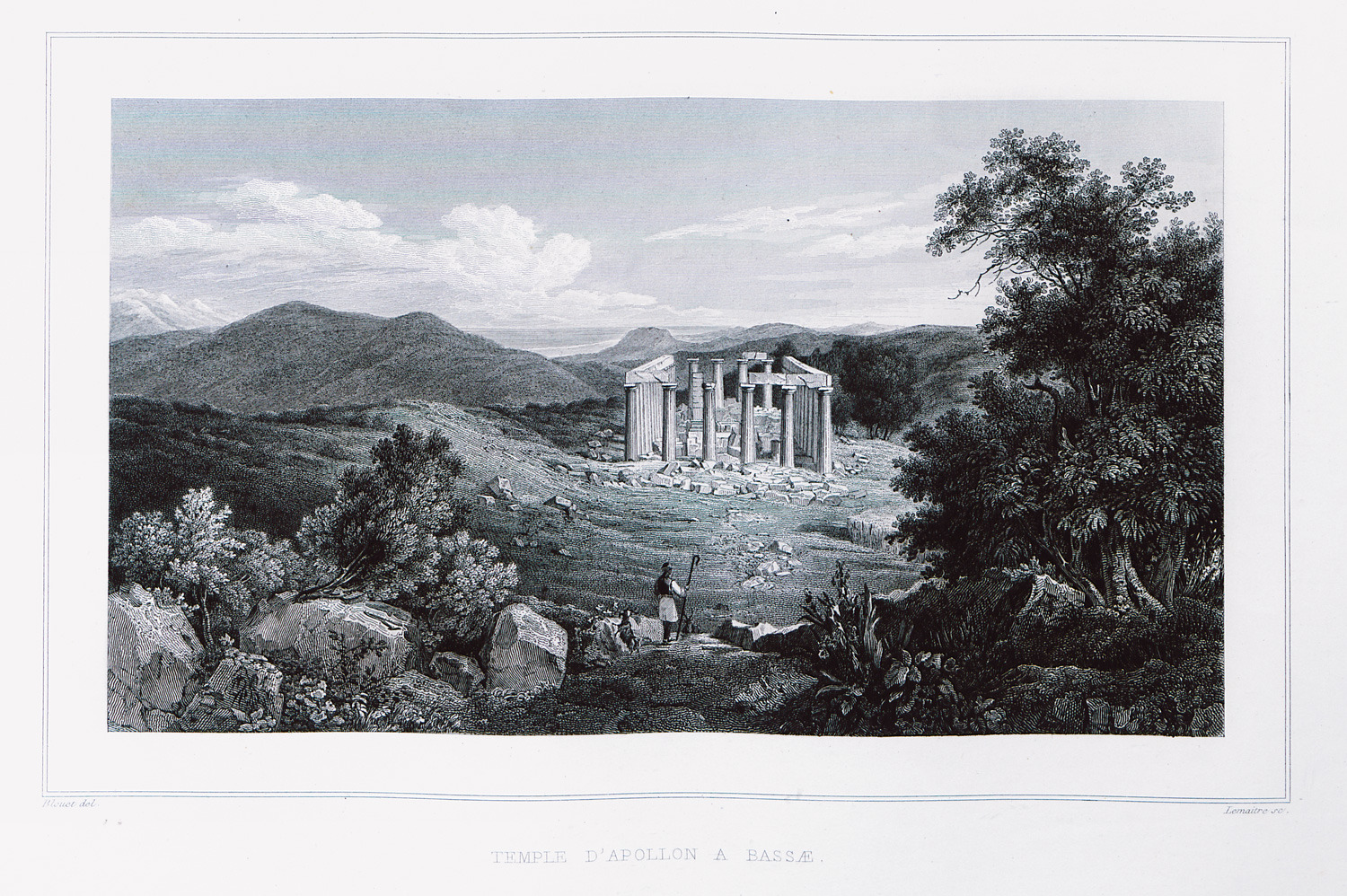
View of the interior of the temple Apollo Epicurius at Bassae, 1829.
-
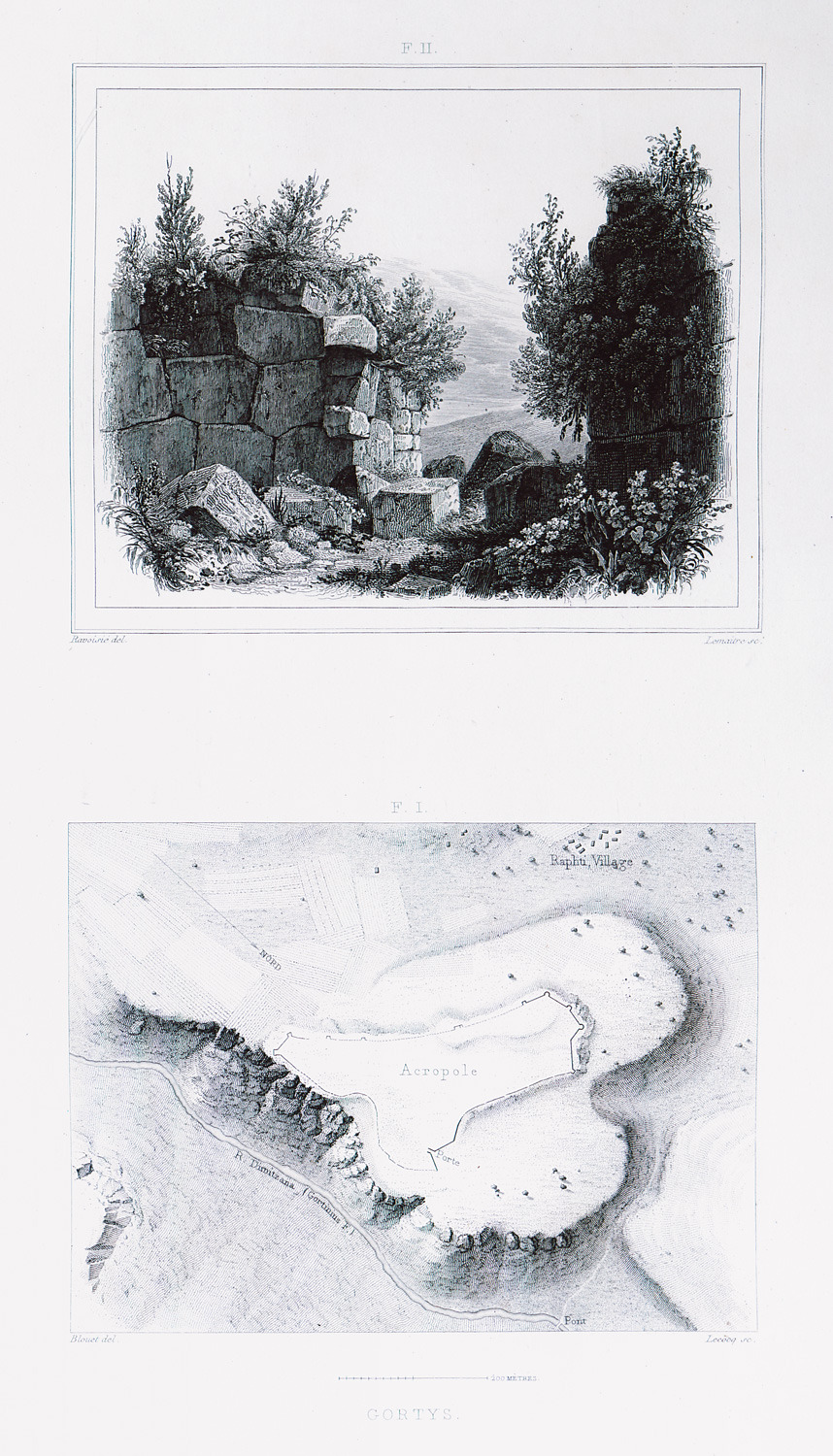
-
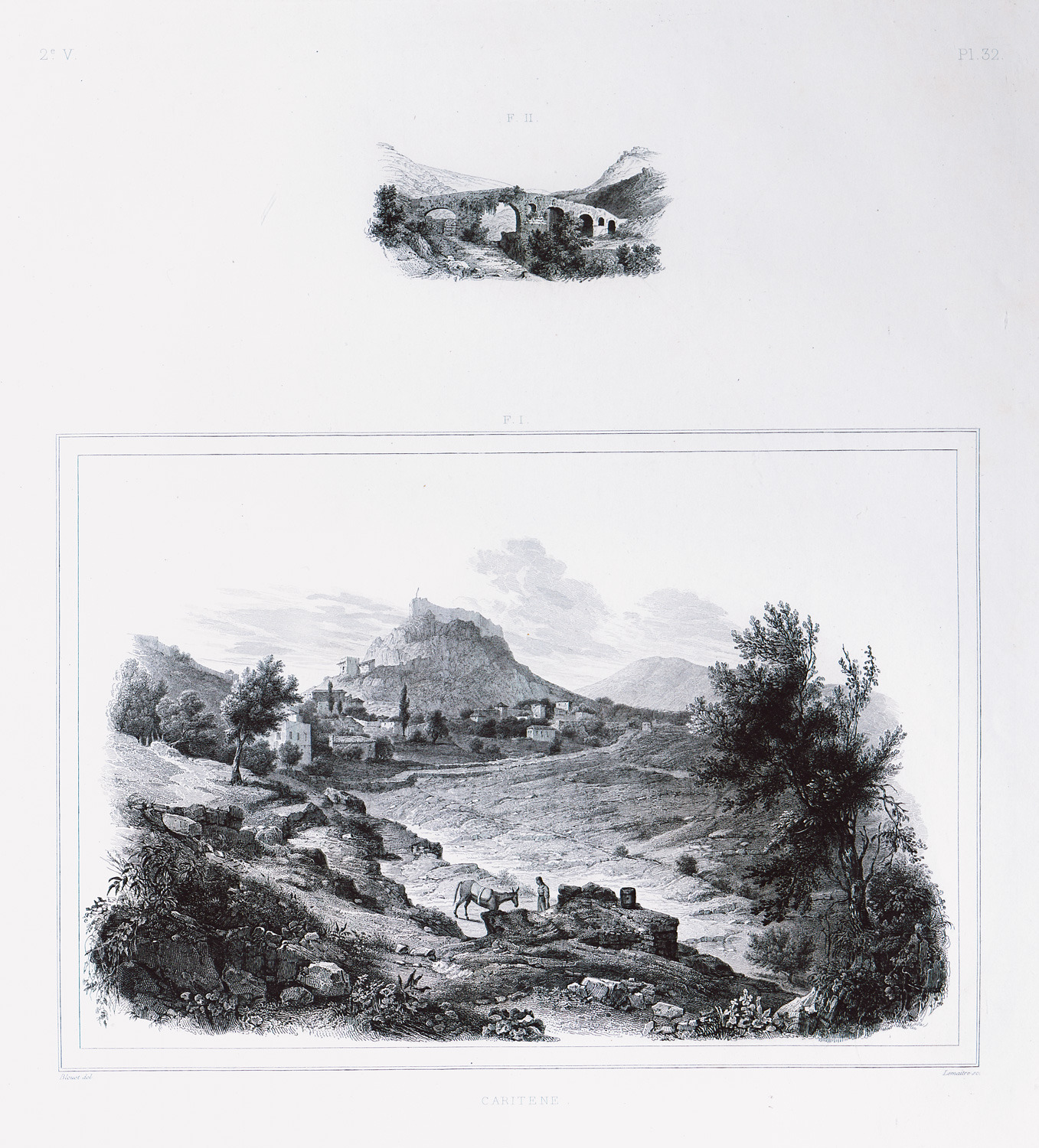
1. View of Carytaina. 2. The bridge of Carytaina, Byzantine monument of the 15th century.
-
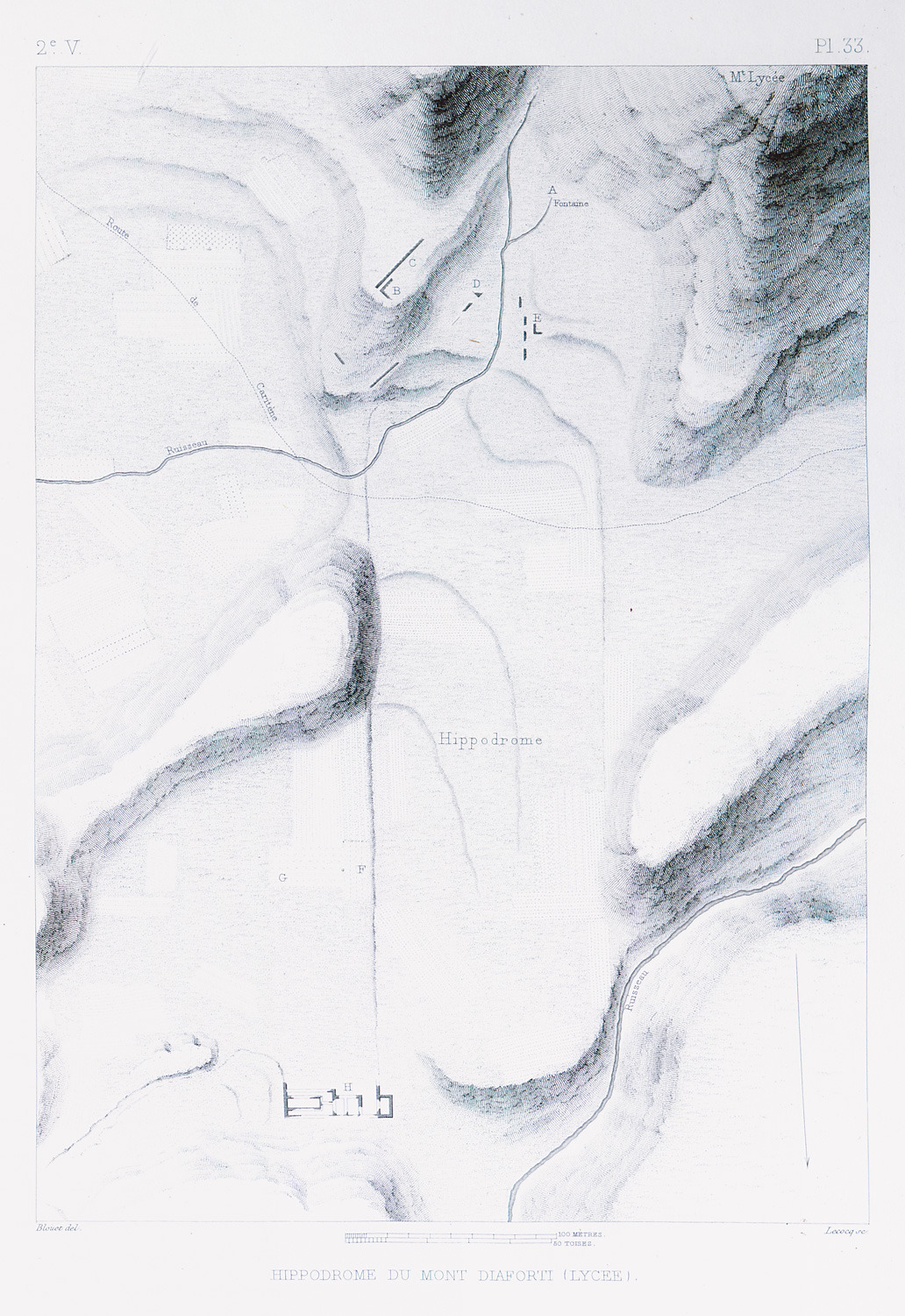
Topographical map of the surrounding area of the stadium or hippodrome on Mount Lykaion, Arcadia.
-
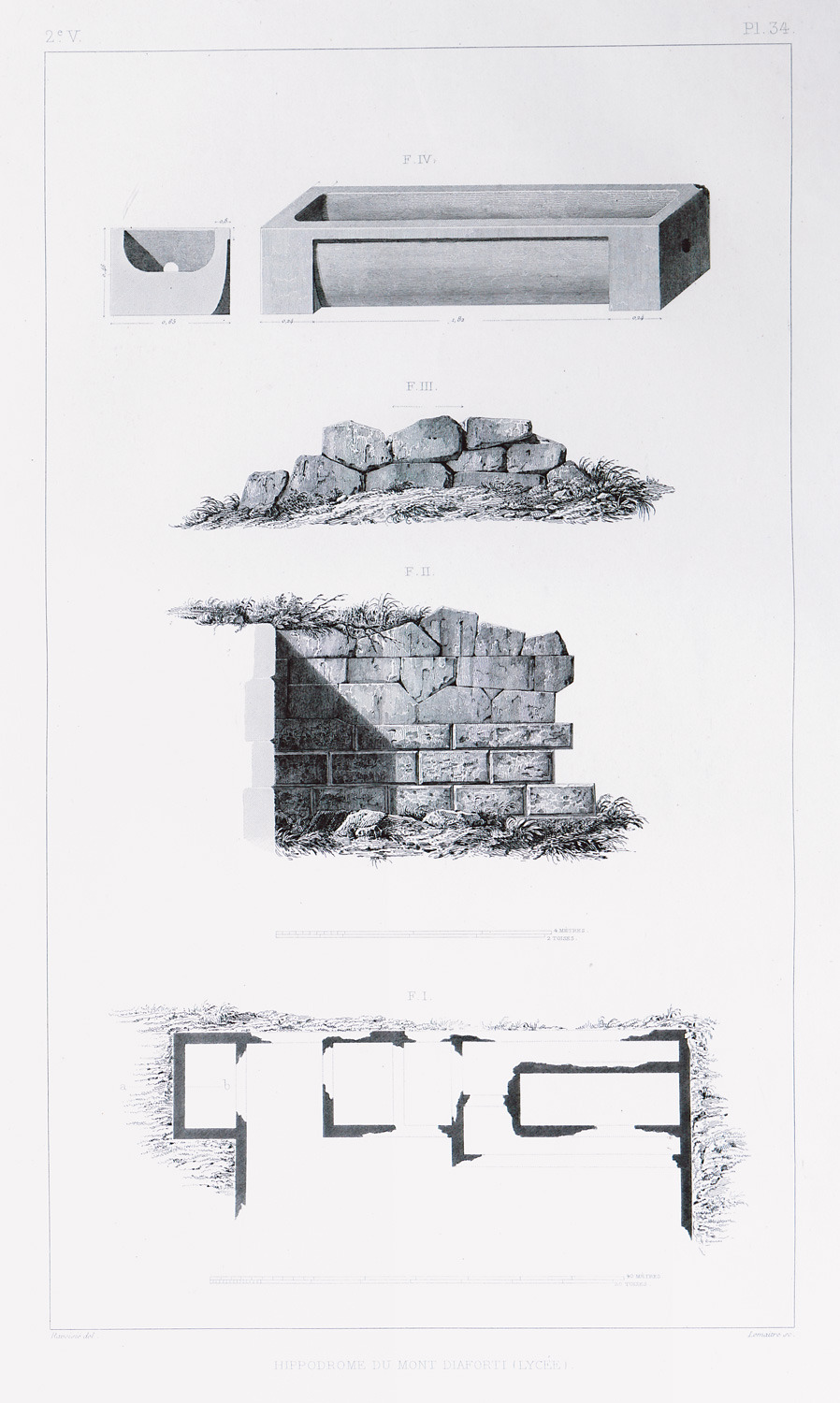
-
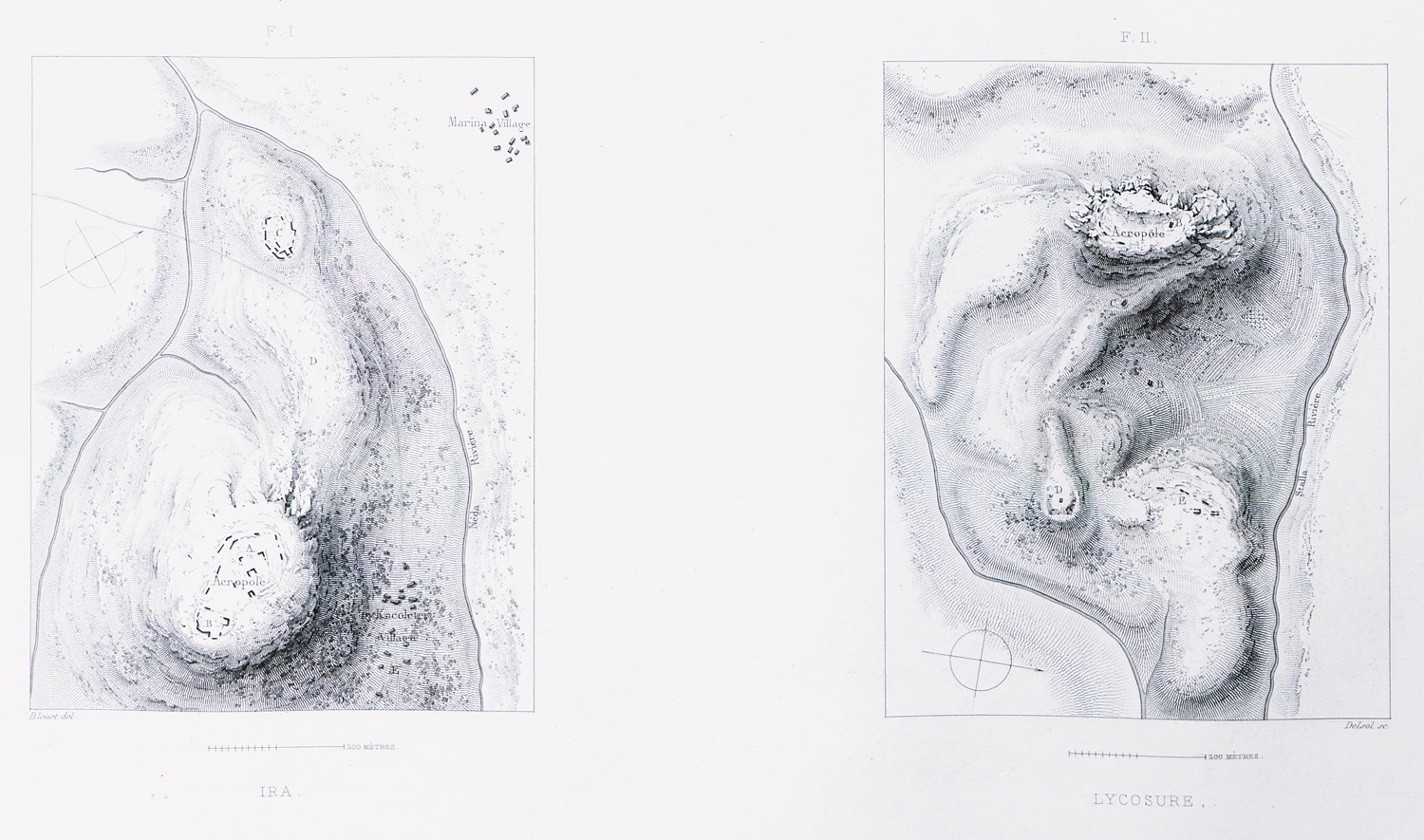
-
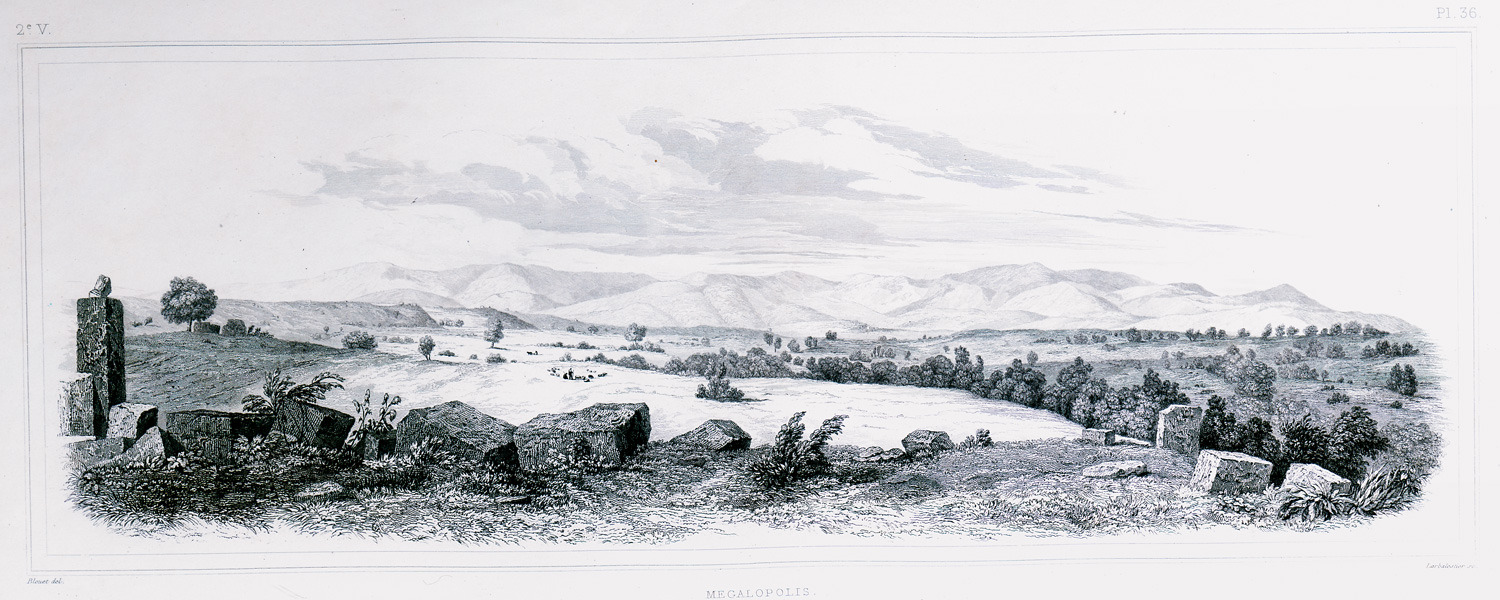
-
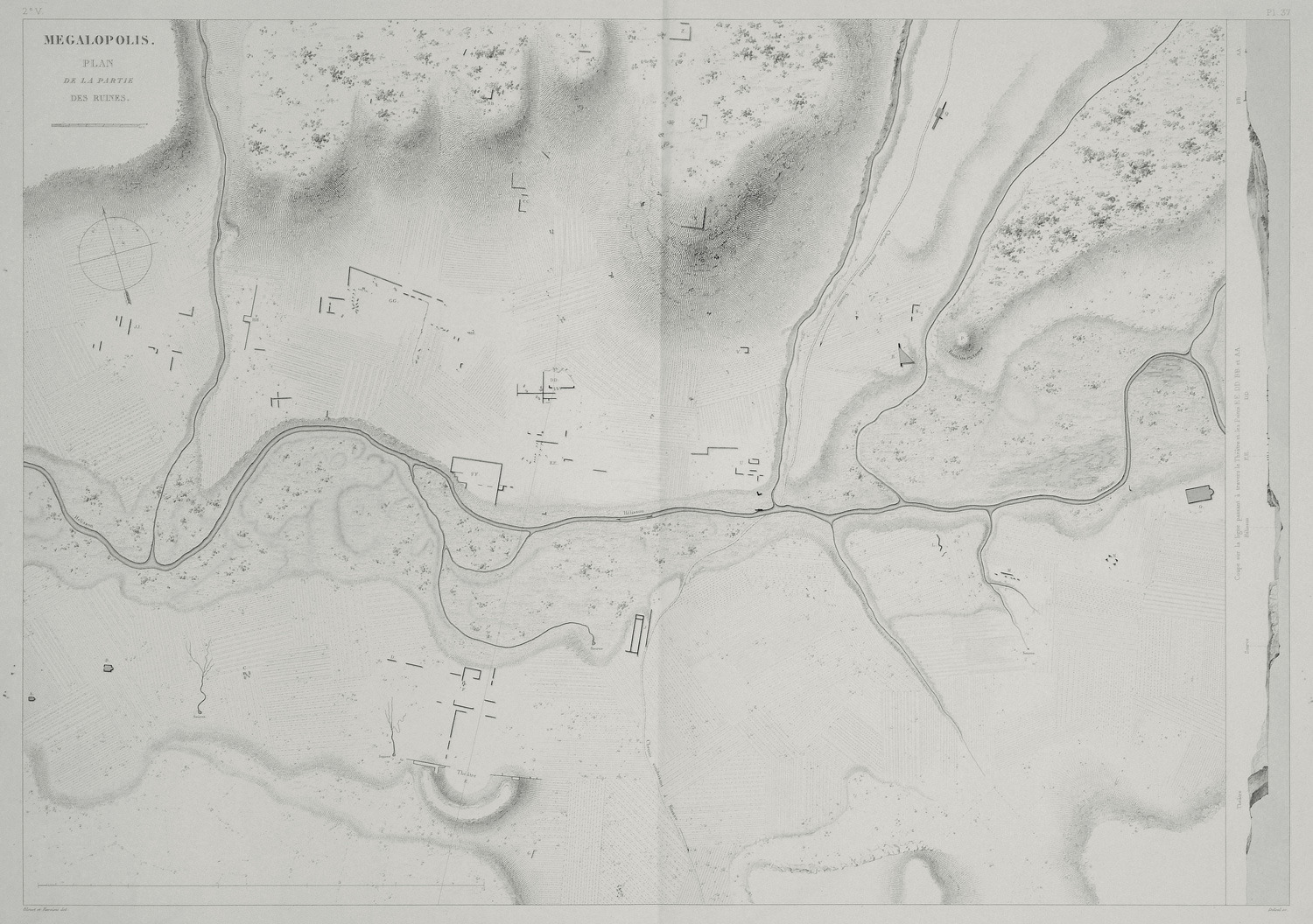
-
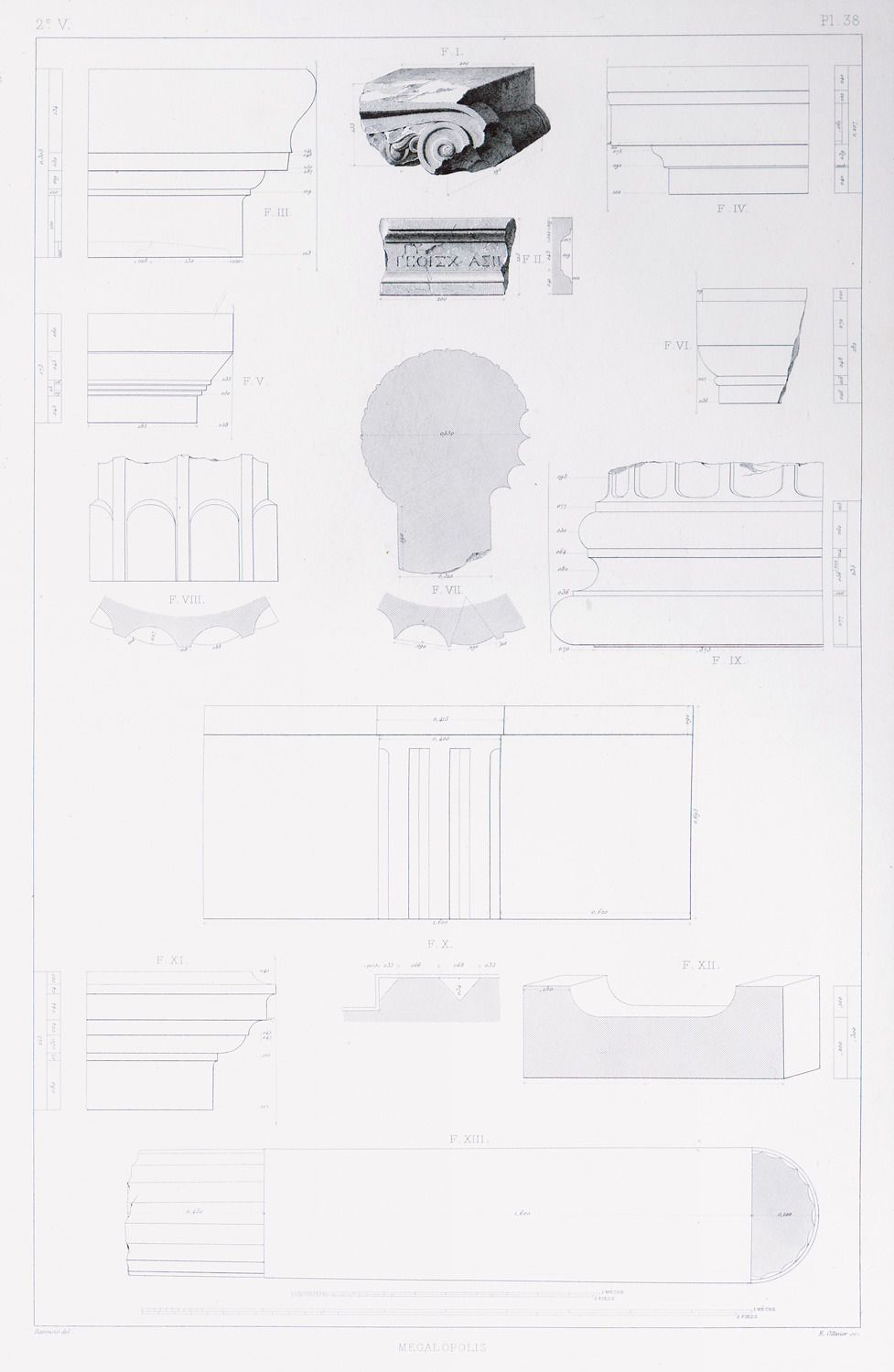
Reconstruction and details of architectural features of columns, Megalopolis.
-
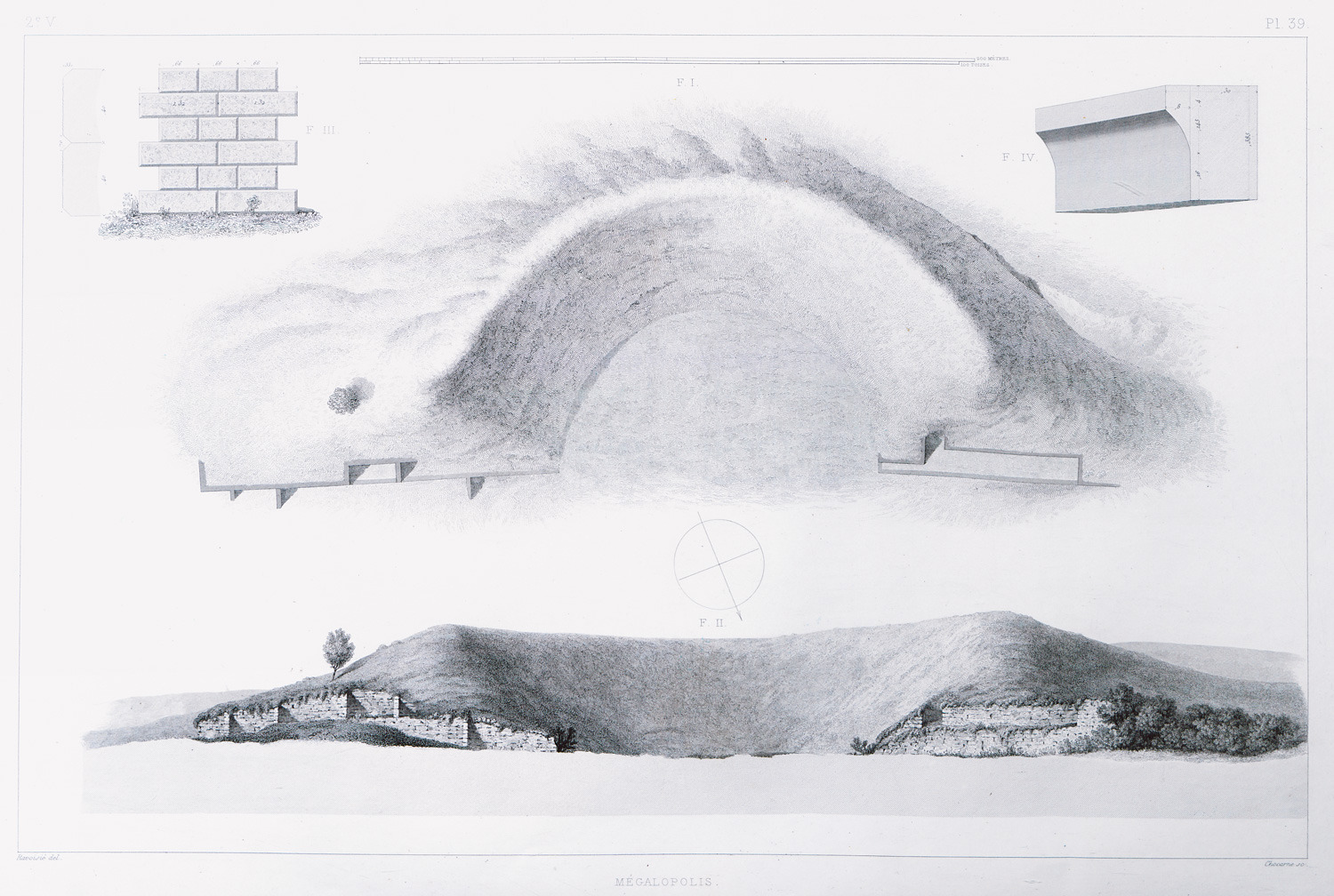
-
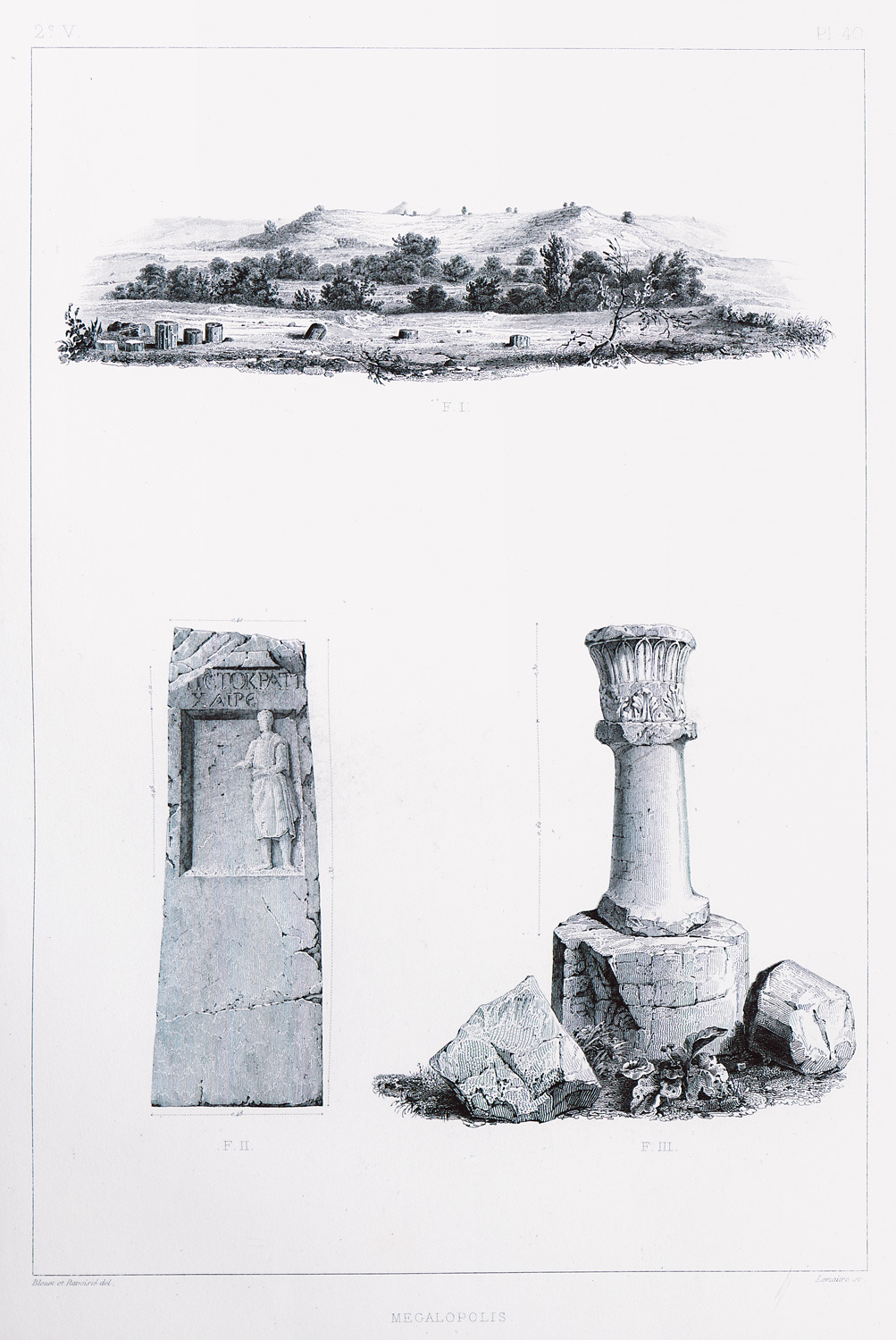
-
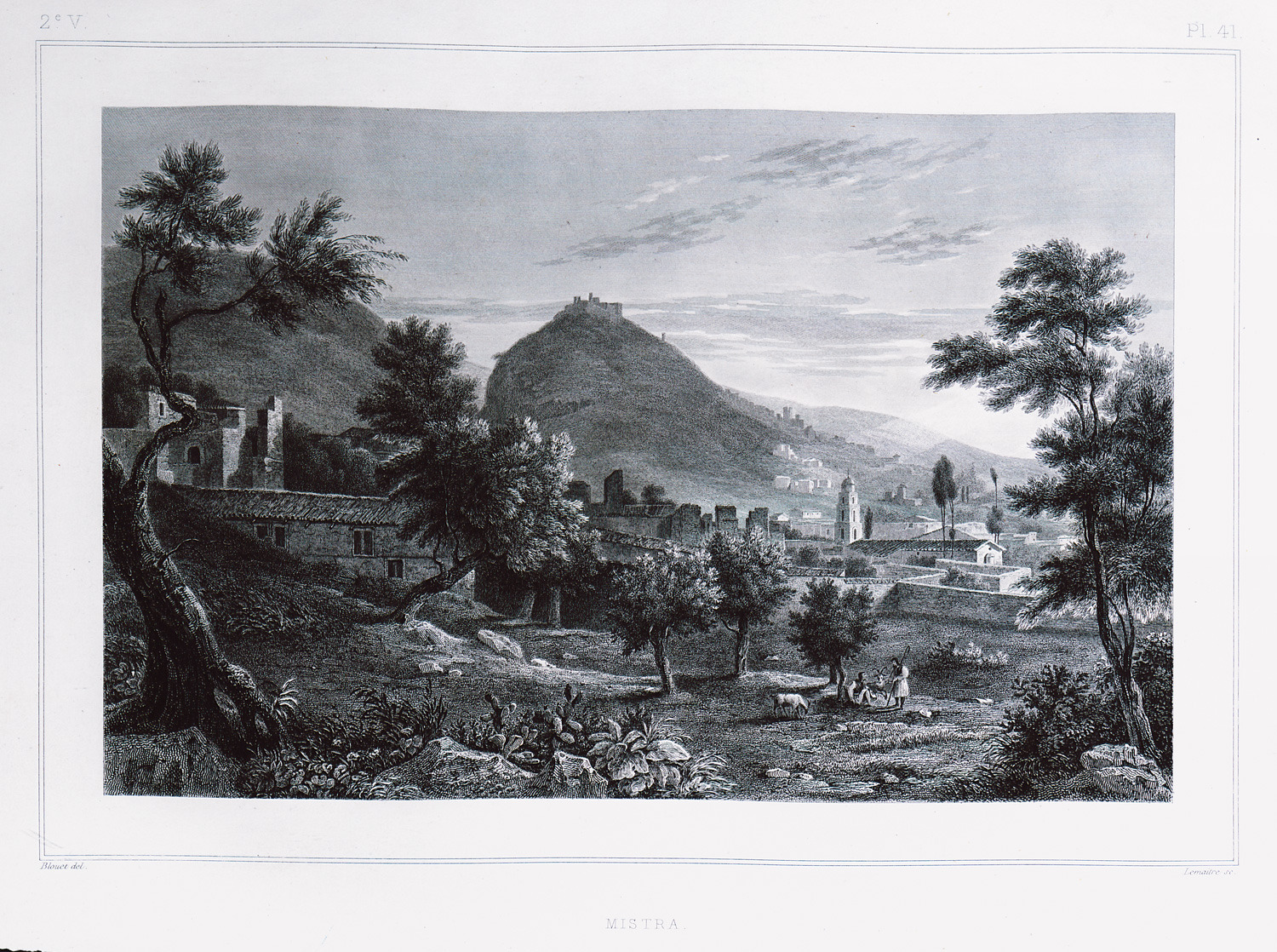
View of Mystras. In the background, the castle of William II Villehardouin.
-
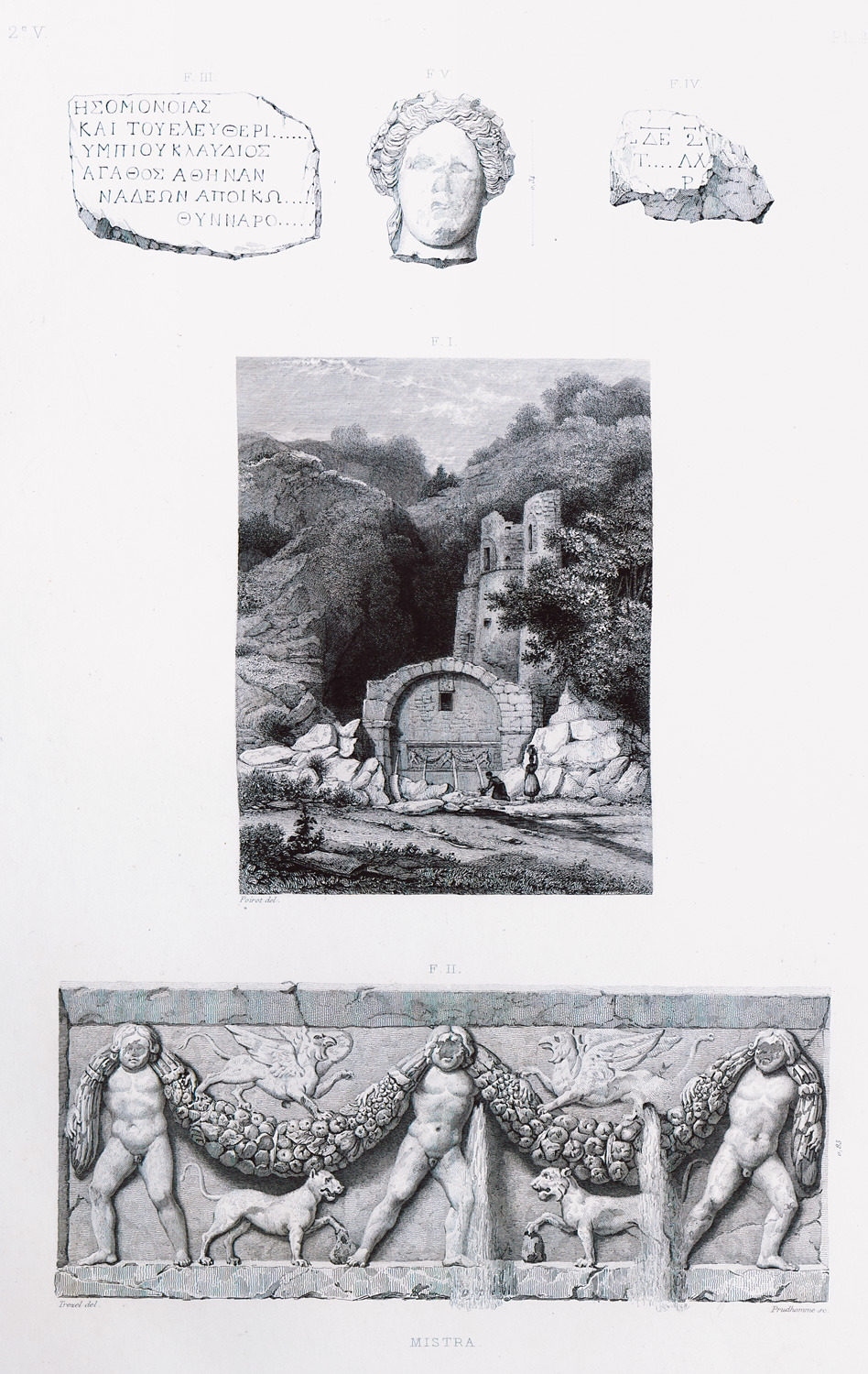
-
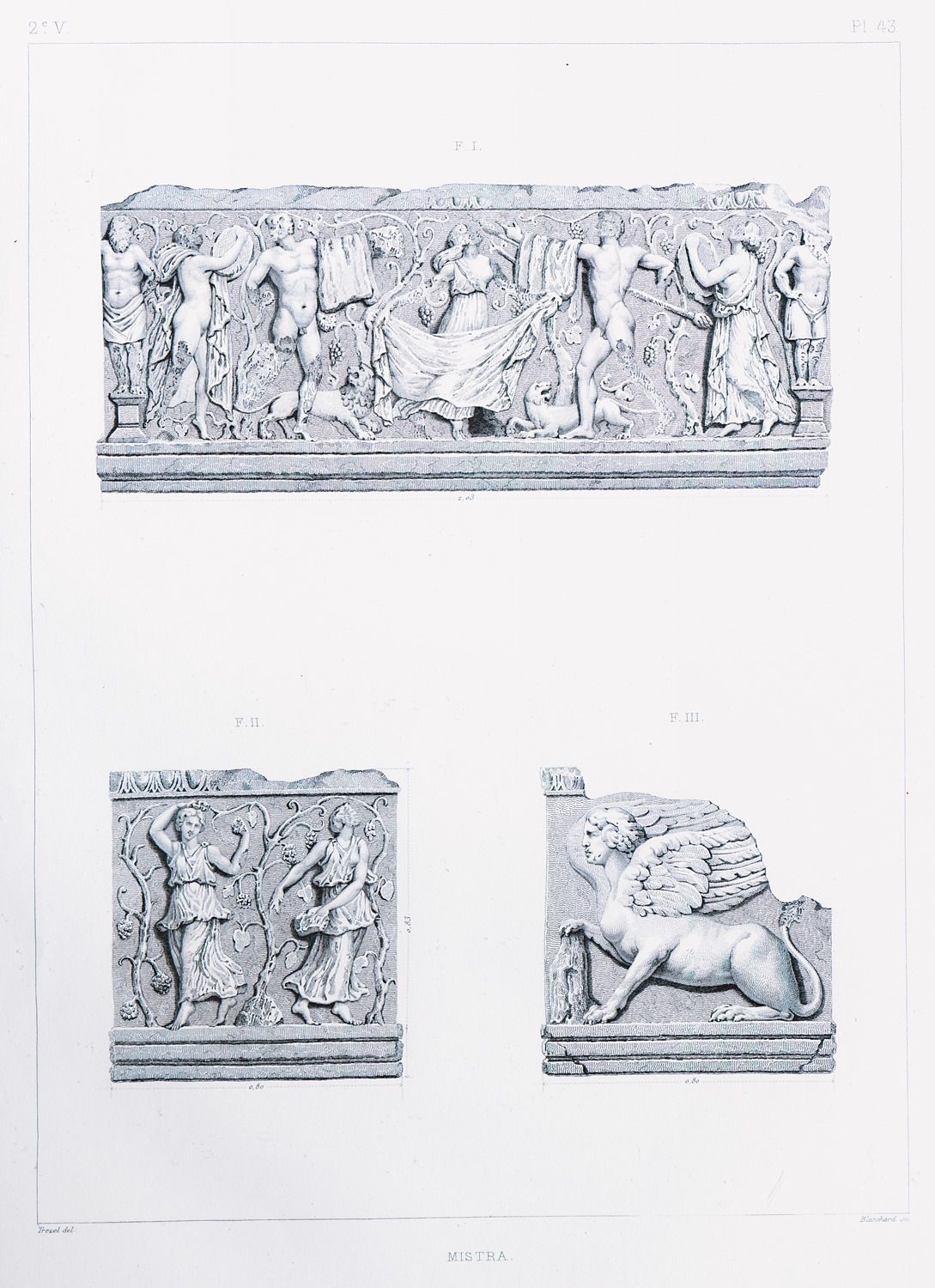
Roman sarcophagus with reliefs at the court of the church of Hagios Dimitrios, Mystras.
-
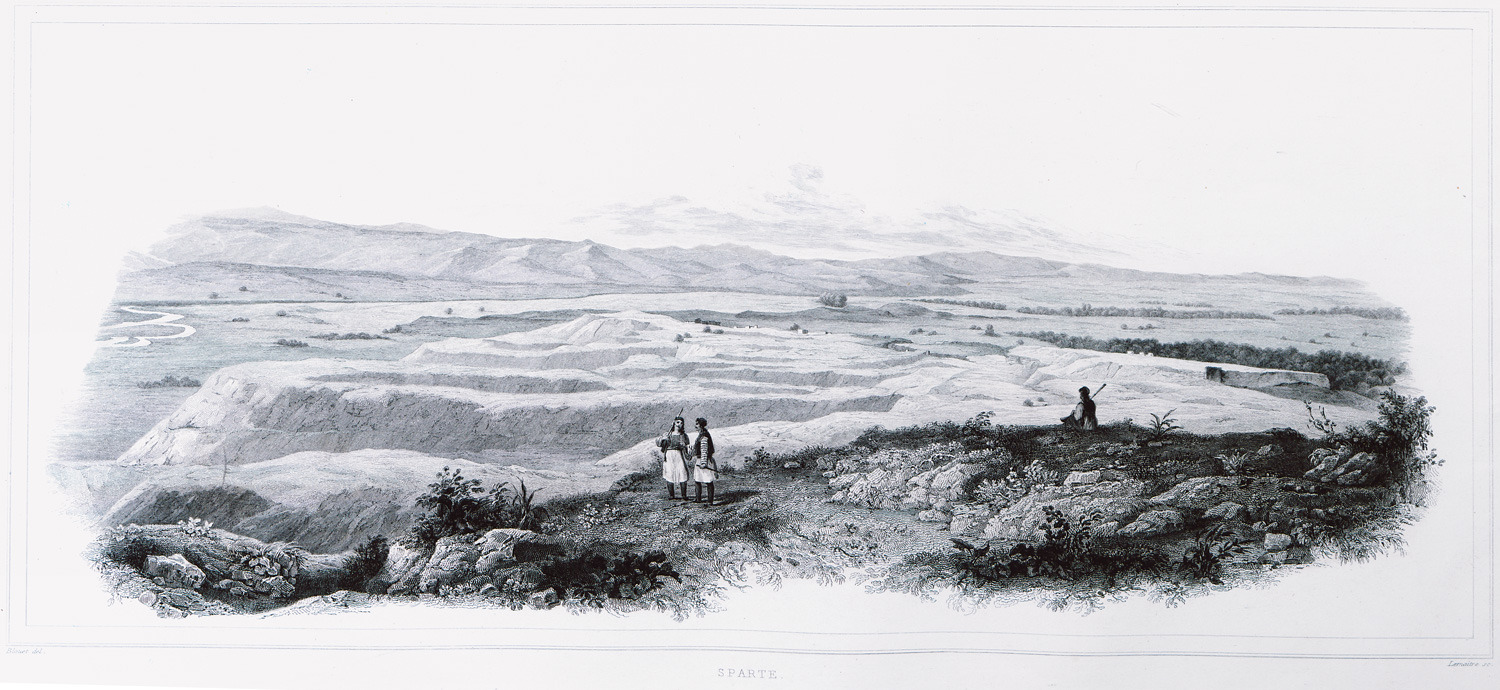
-
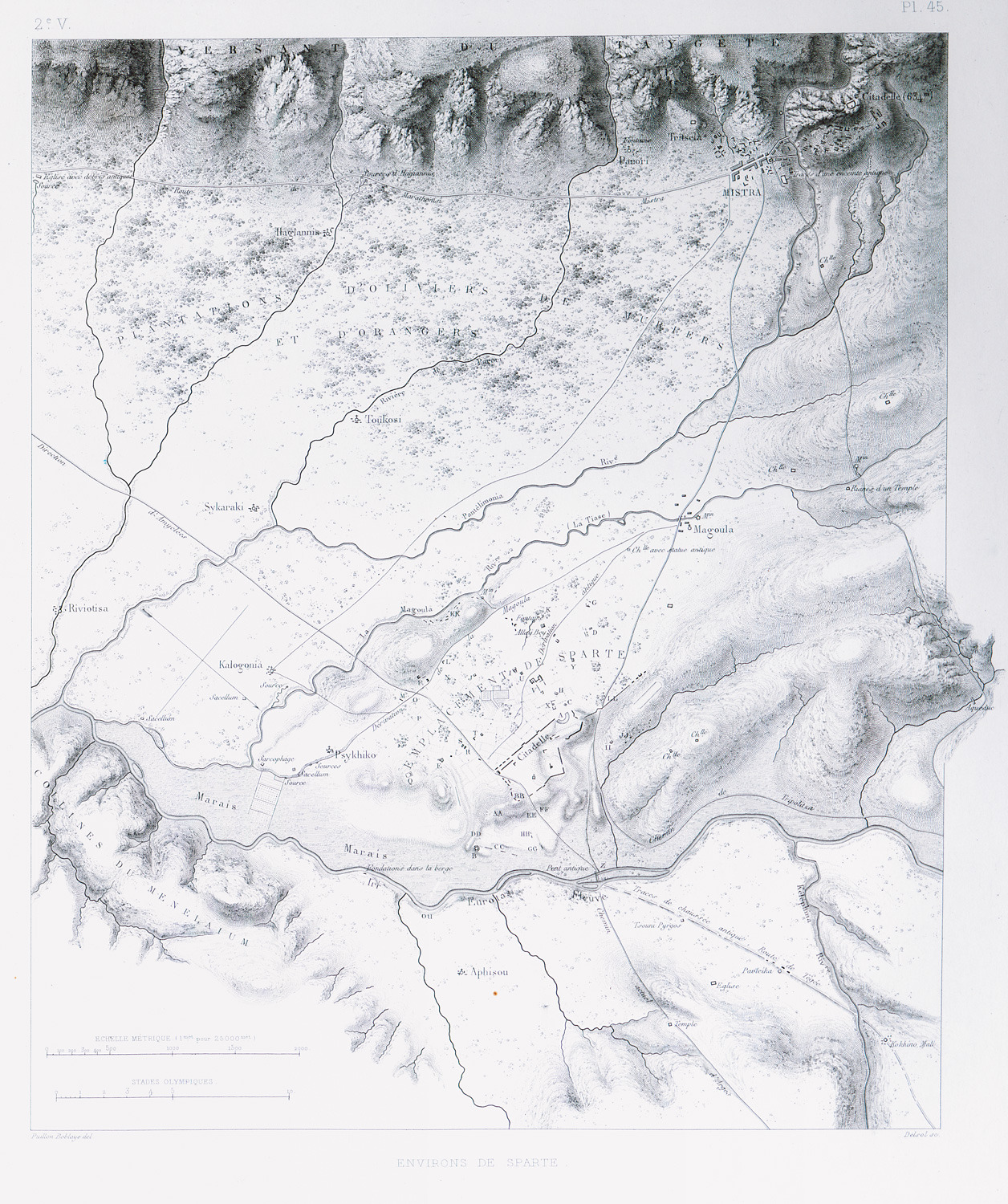
-
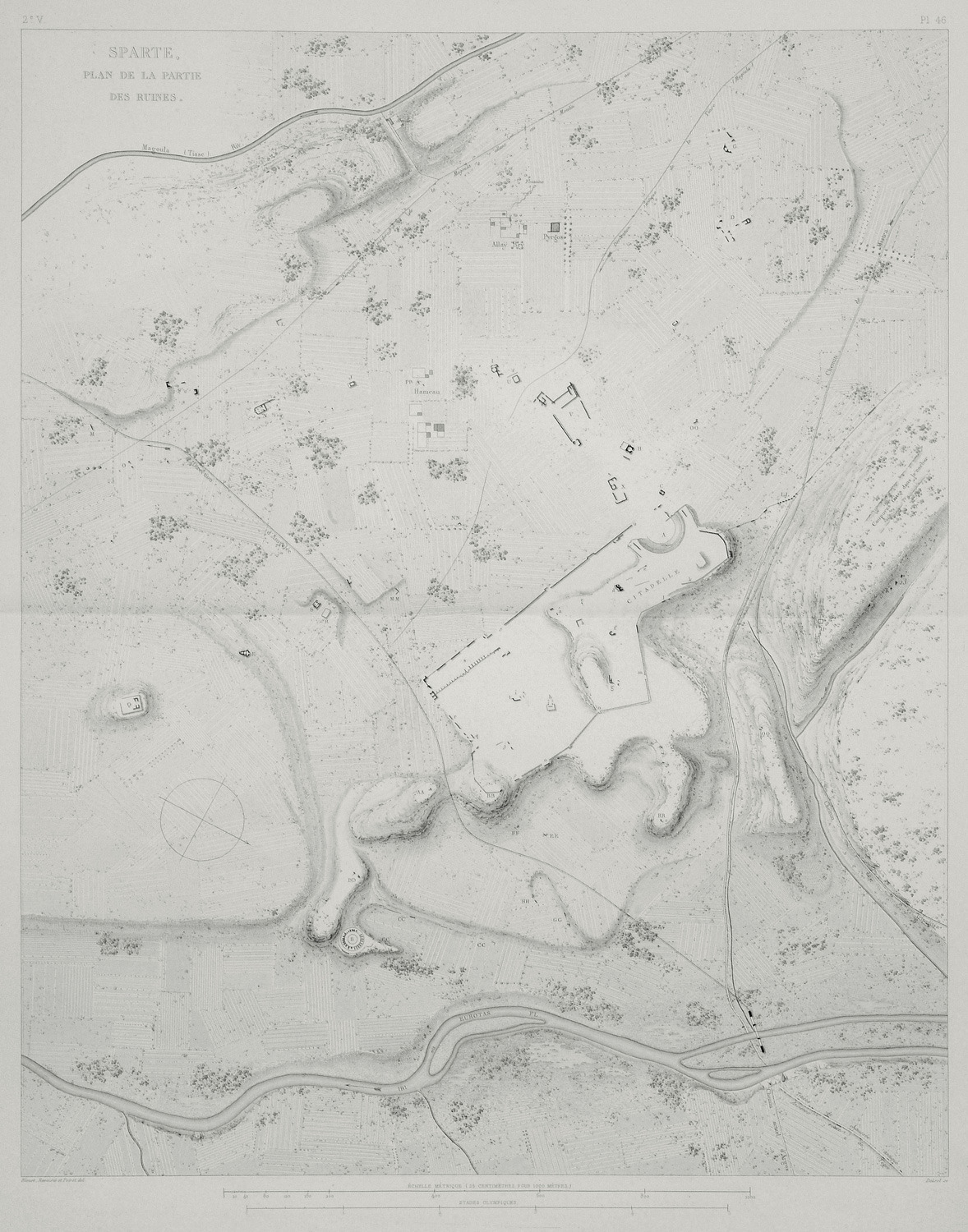
-
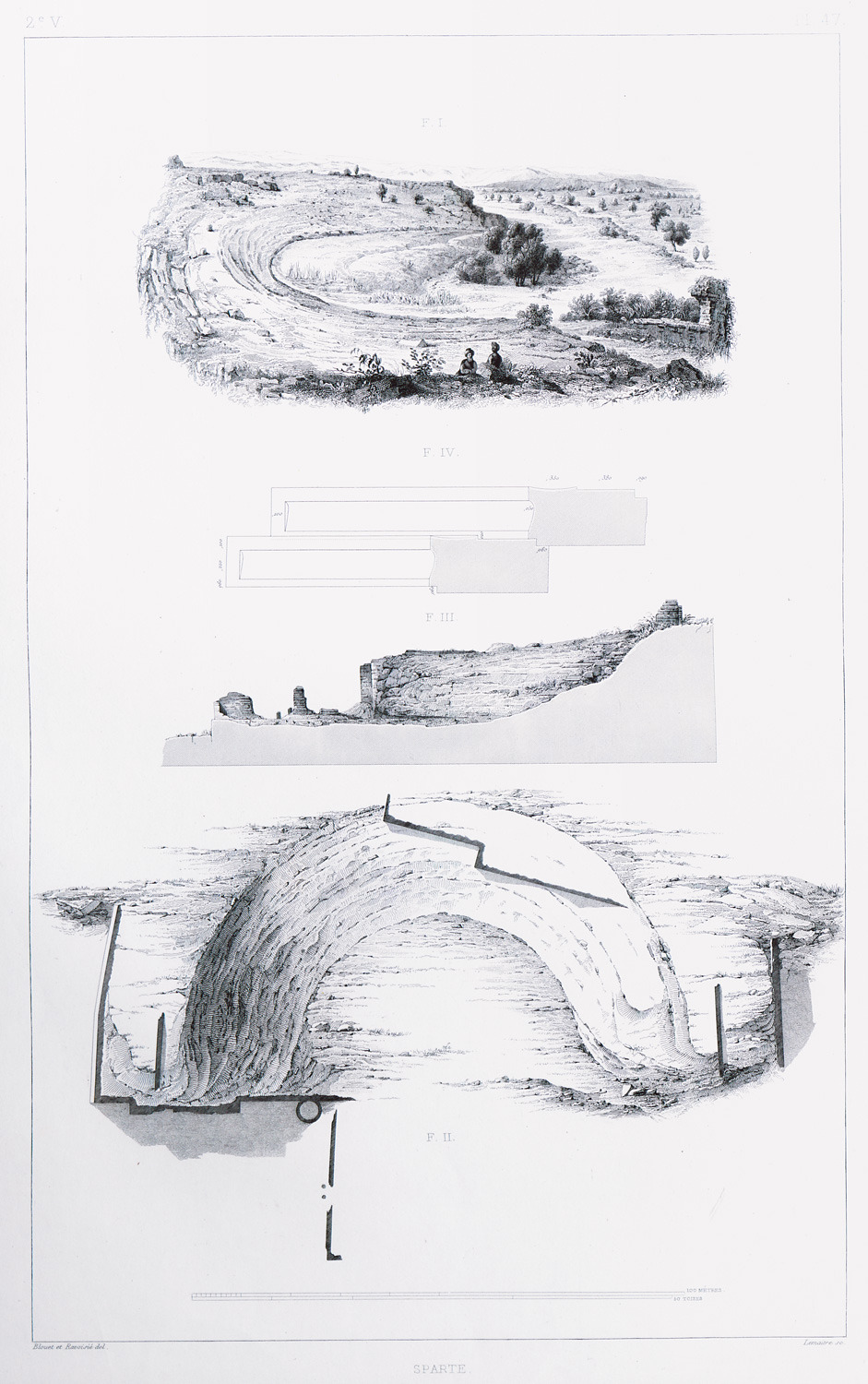
View of the ancient theatre of Sparta, with reconstruction of the retaining wall and the seats.
-
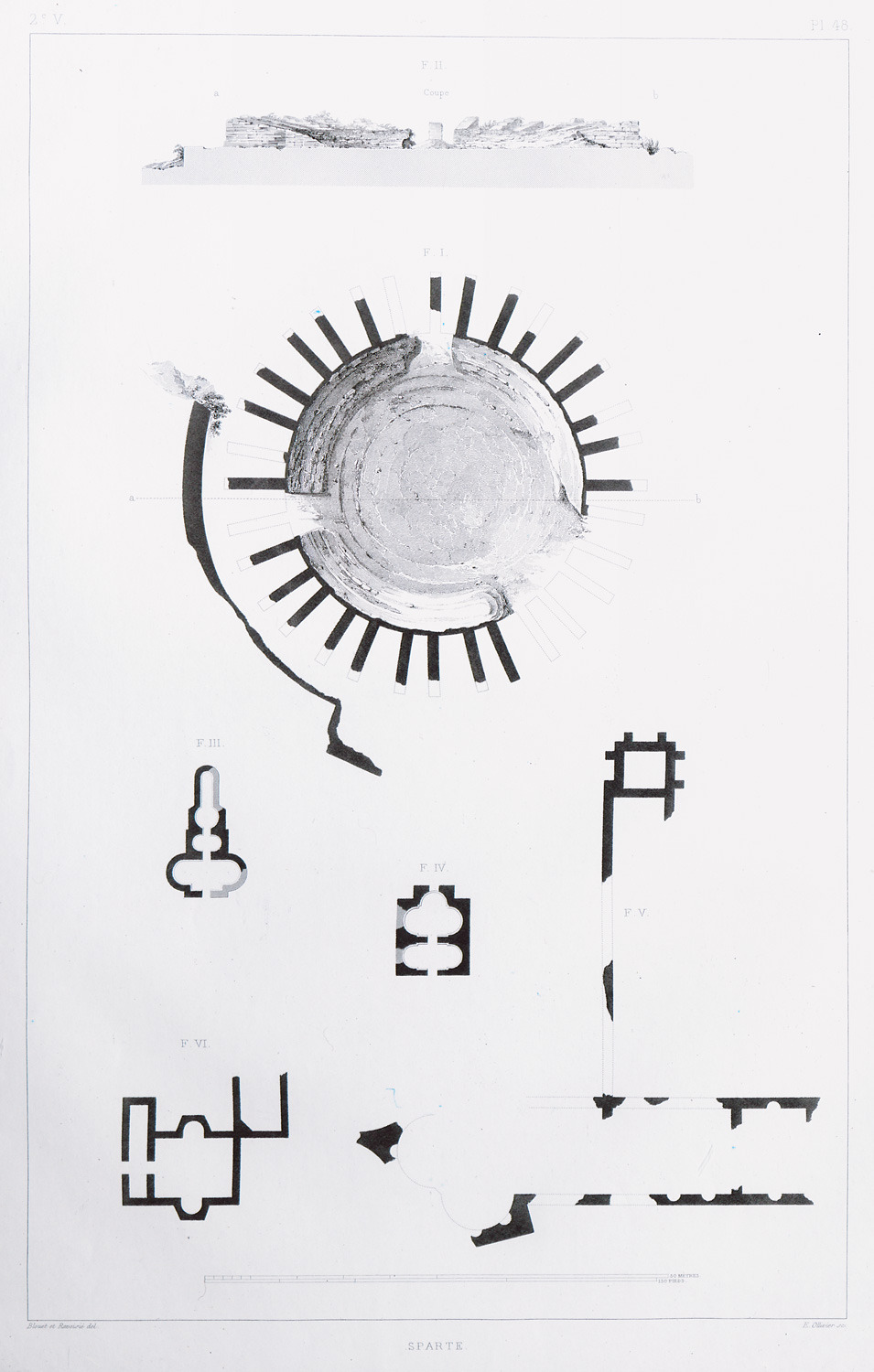
-
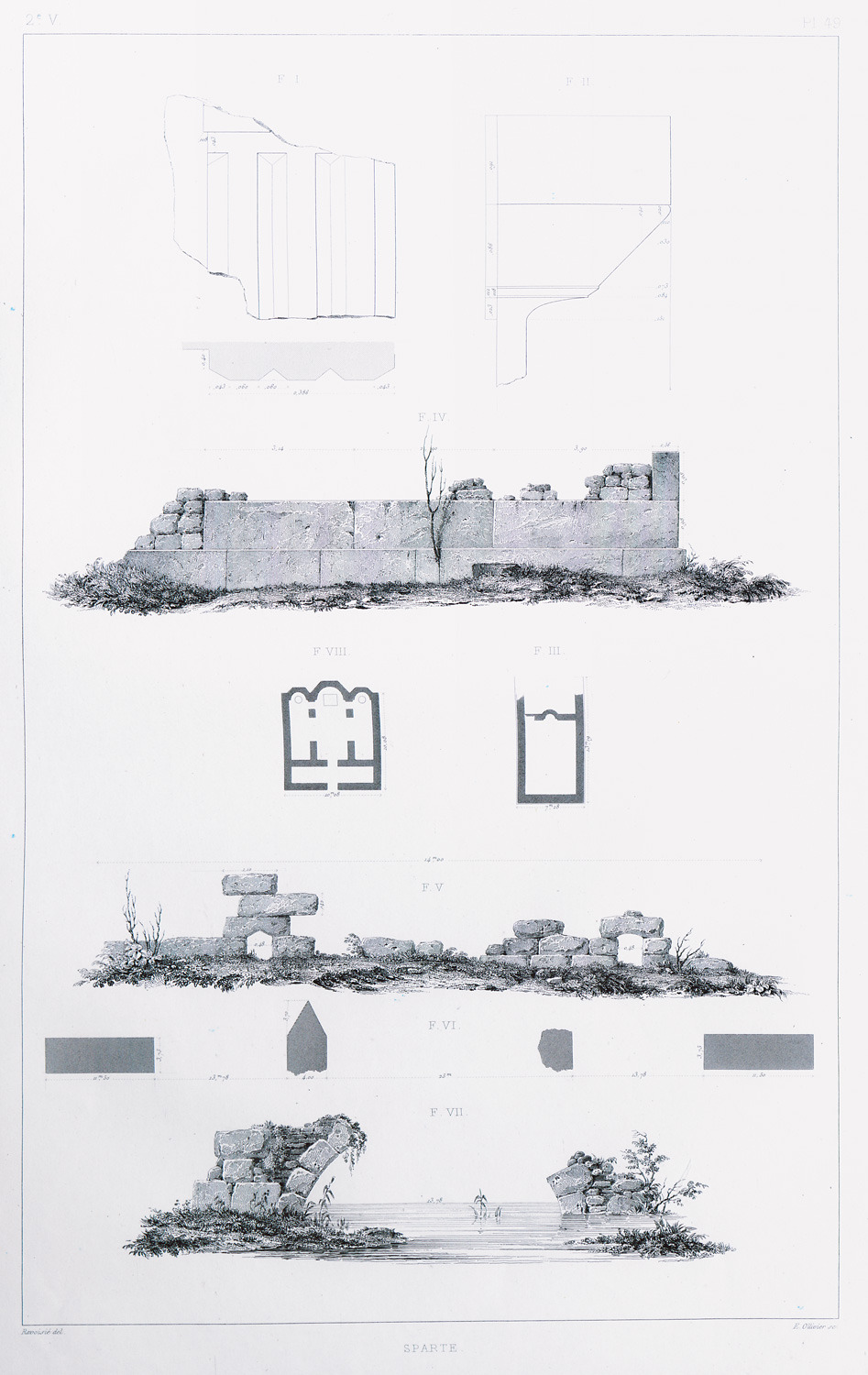
Fragment of triglyph from Sparta. Views and plans of ancient and contemporary buildings at Sparta.
-
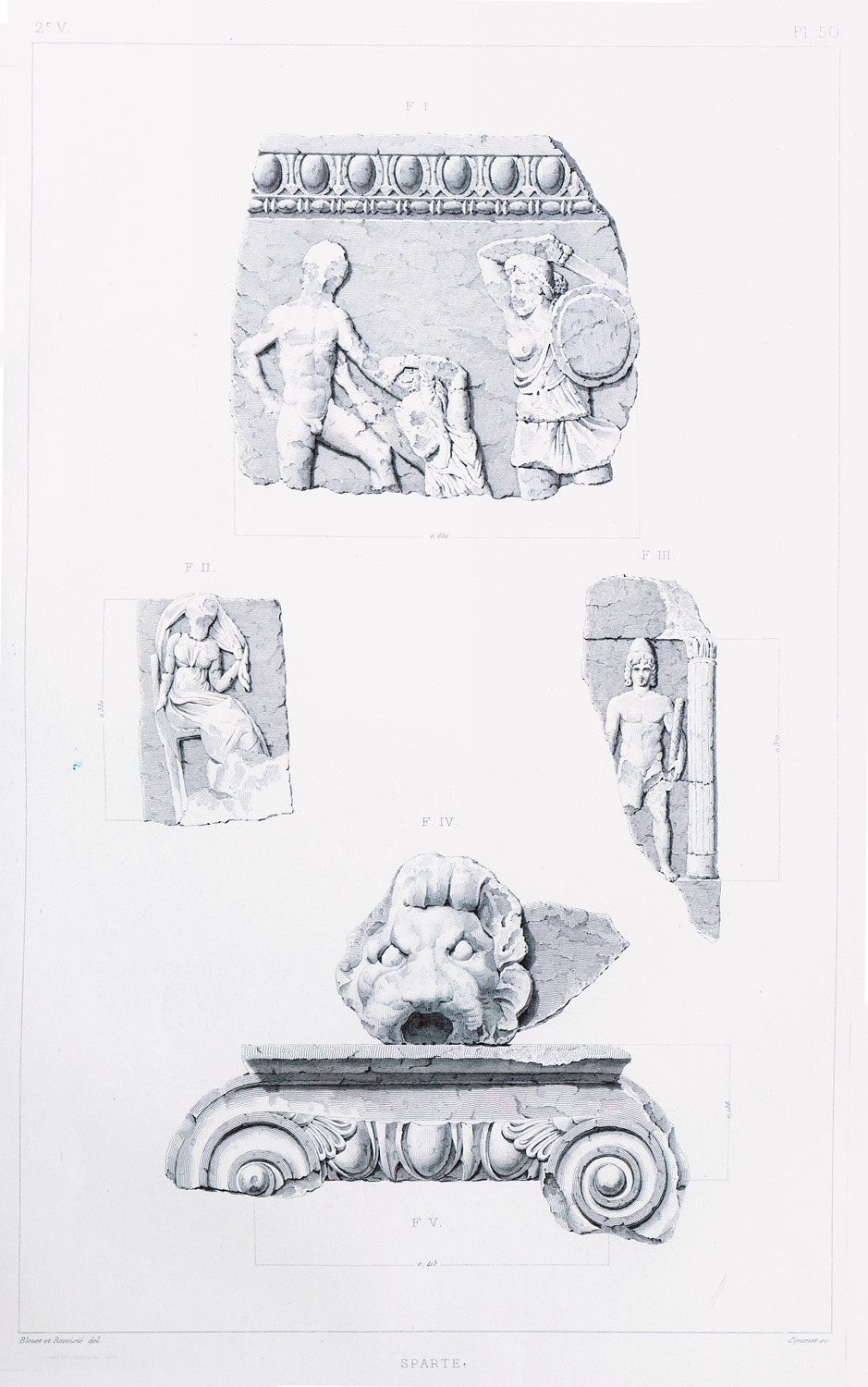
-
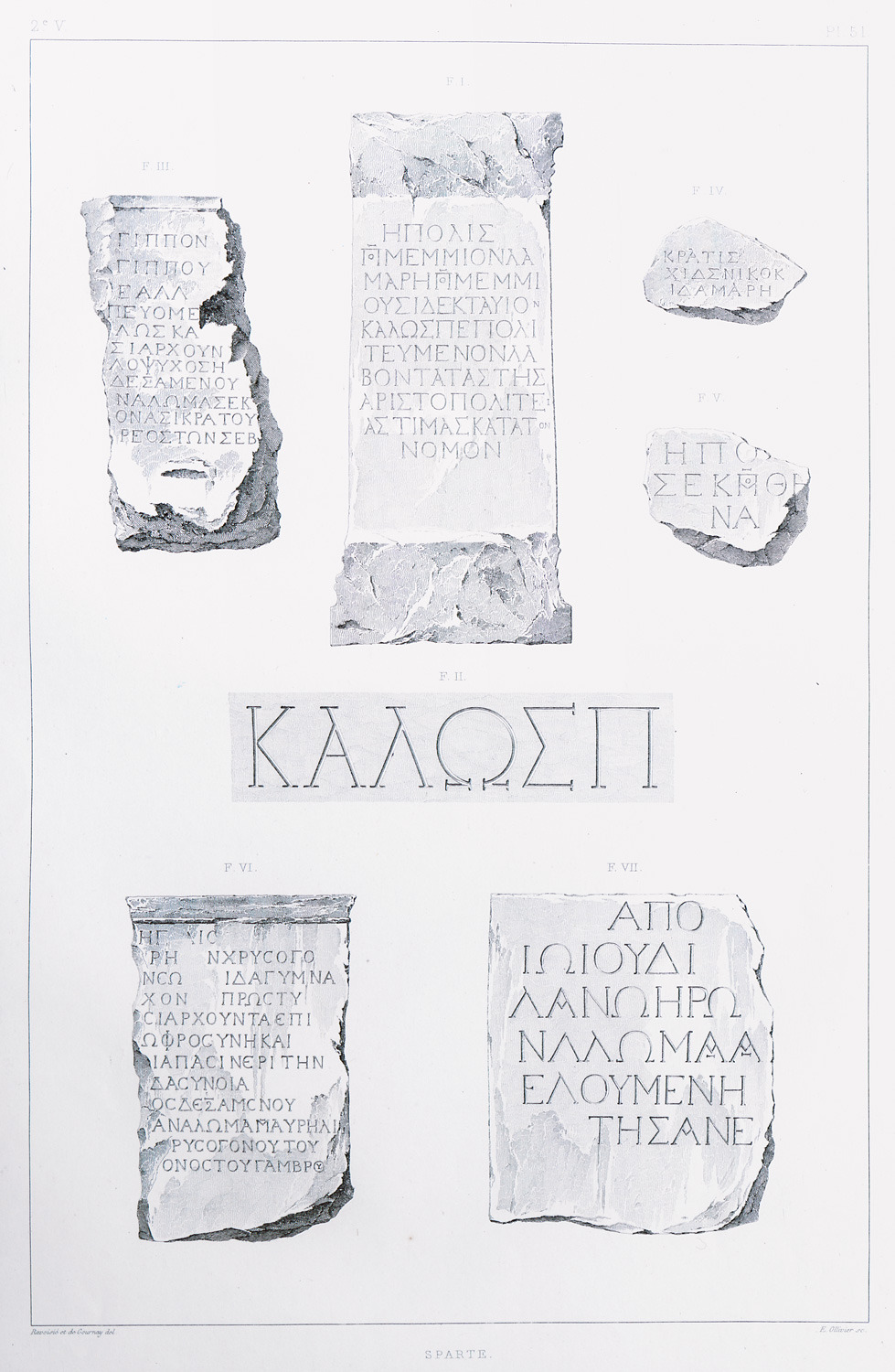
-
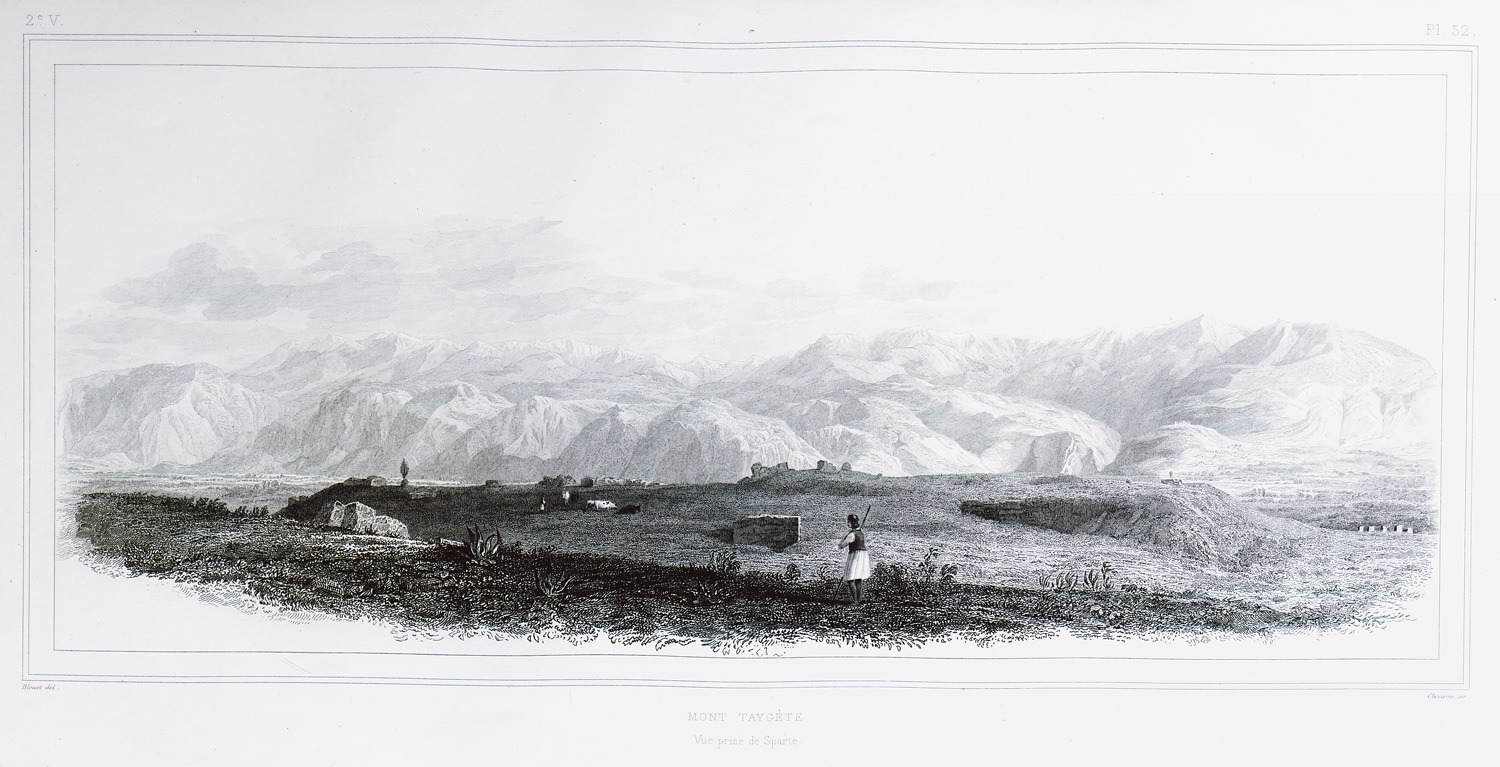
-
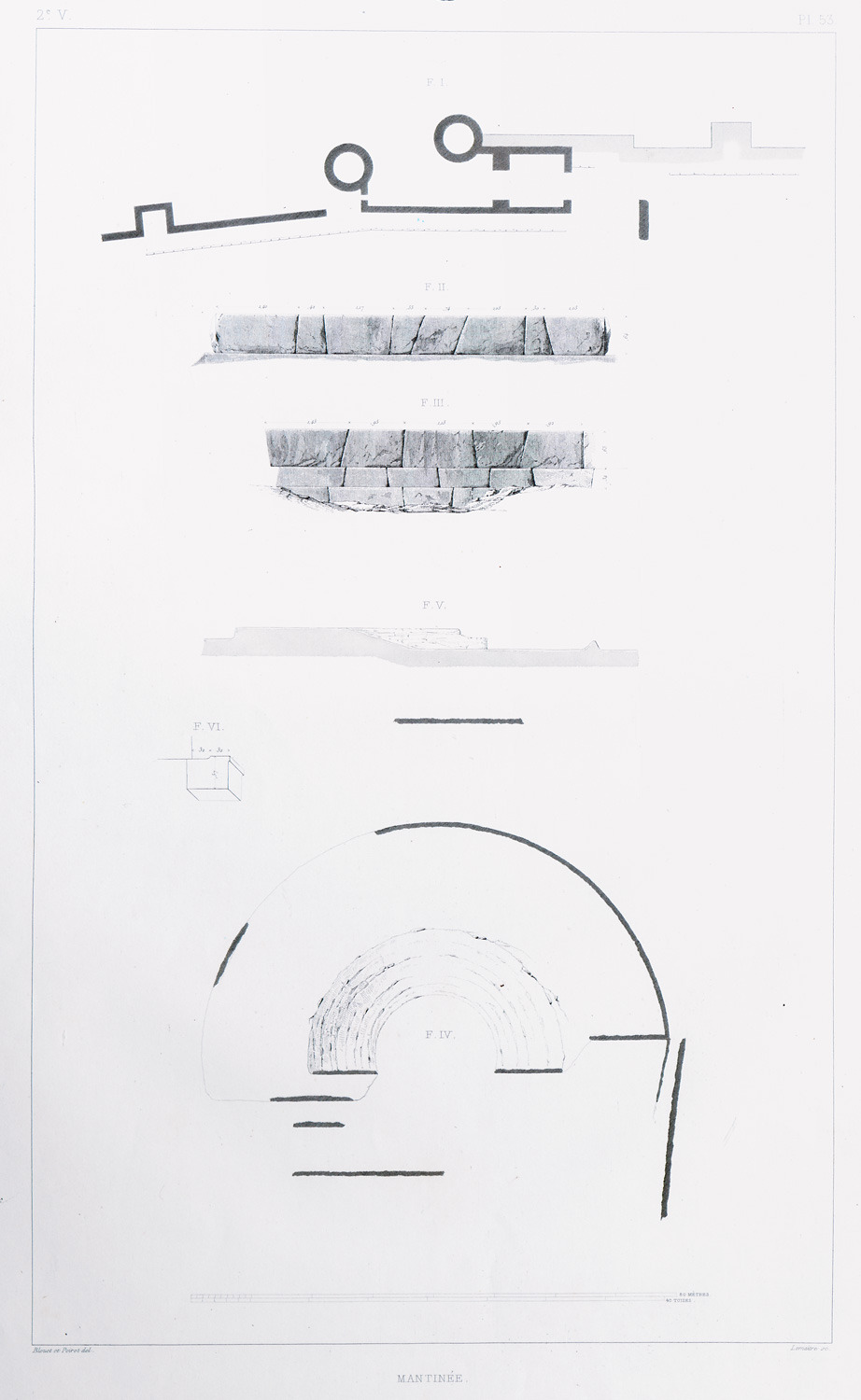
-

-
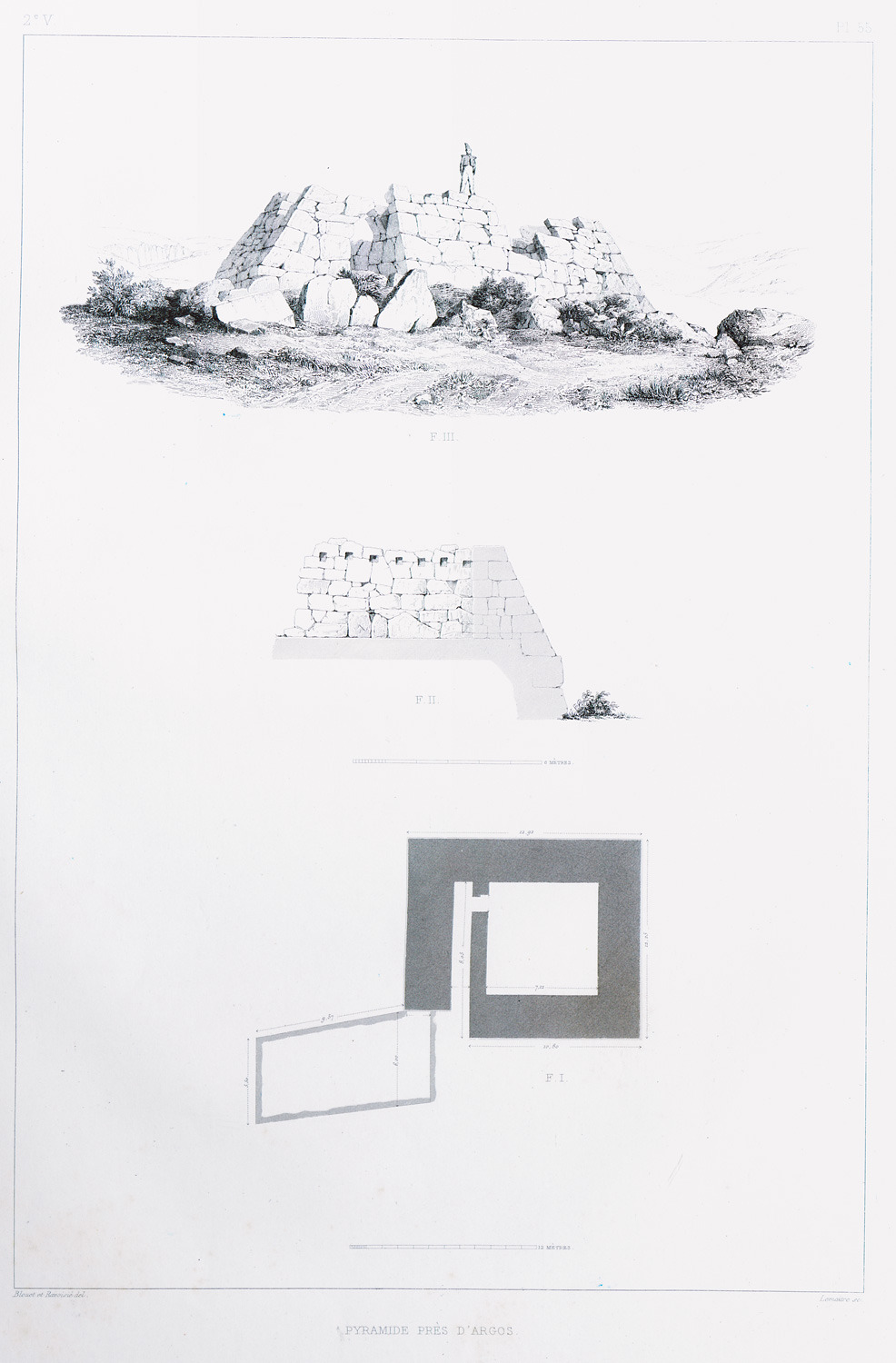
-
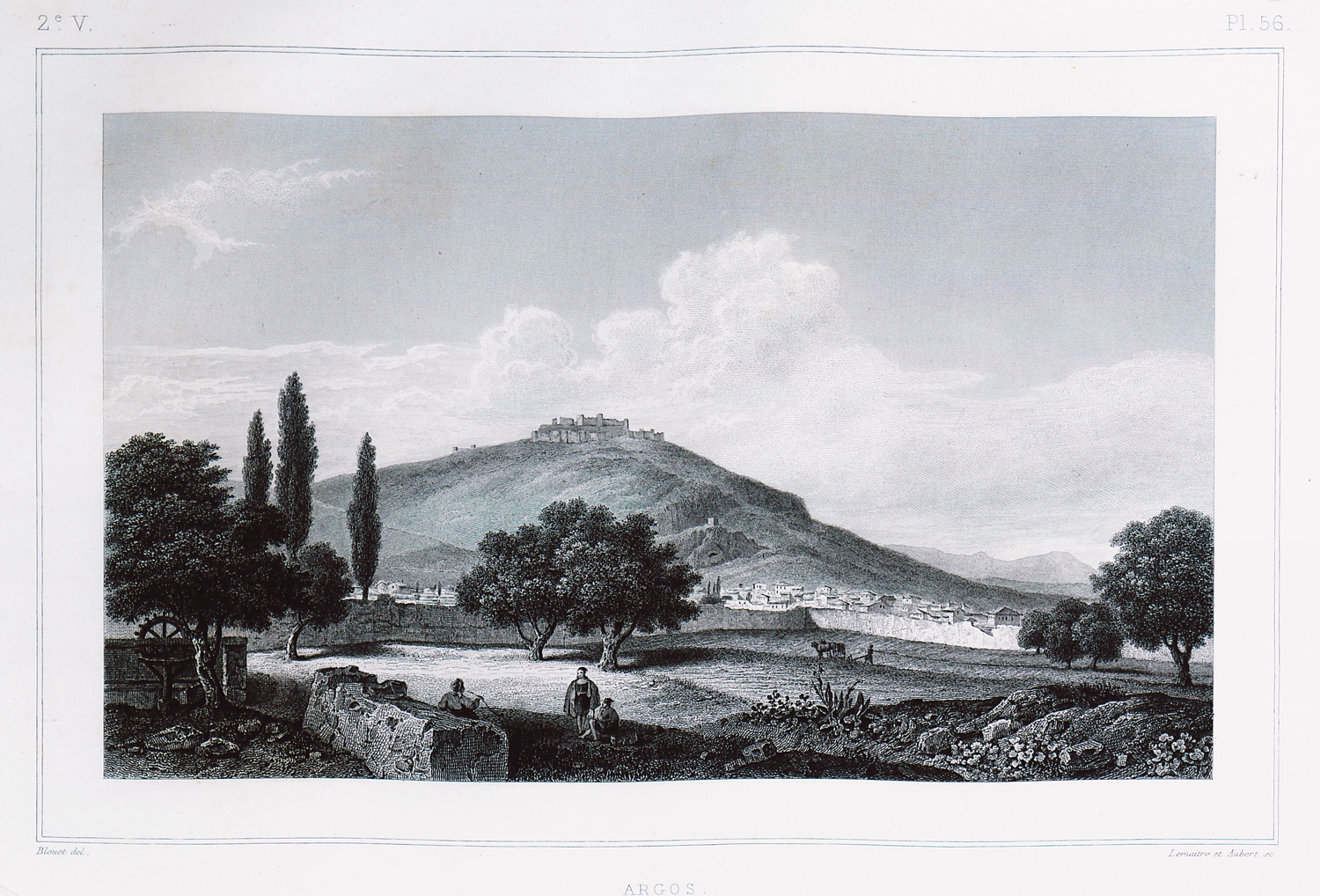
-
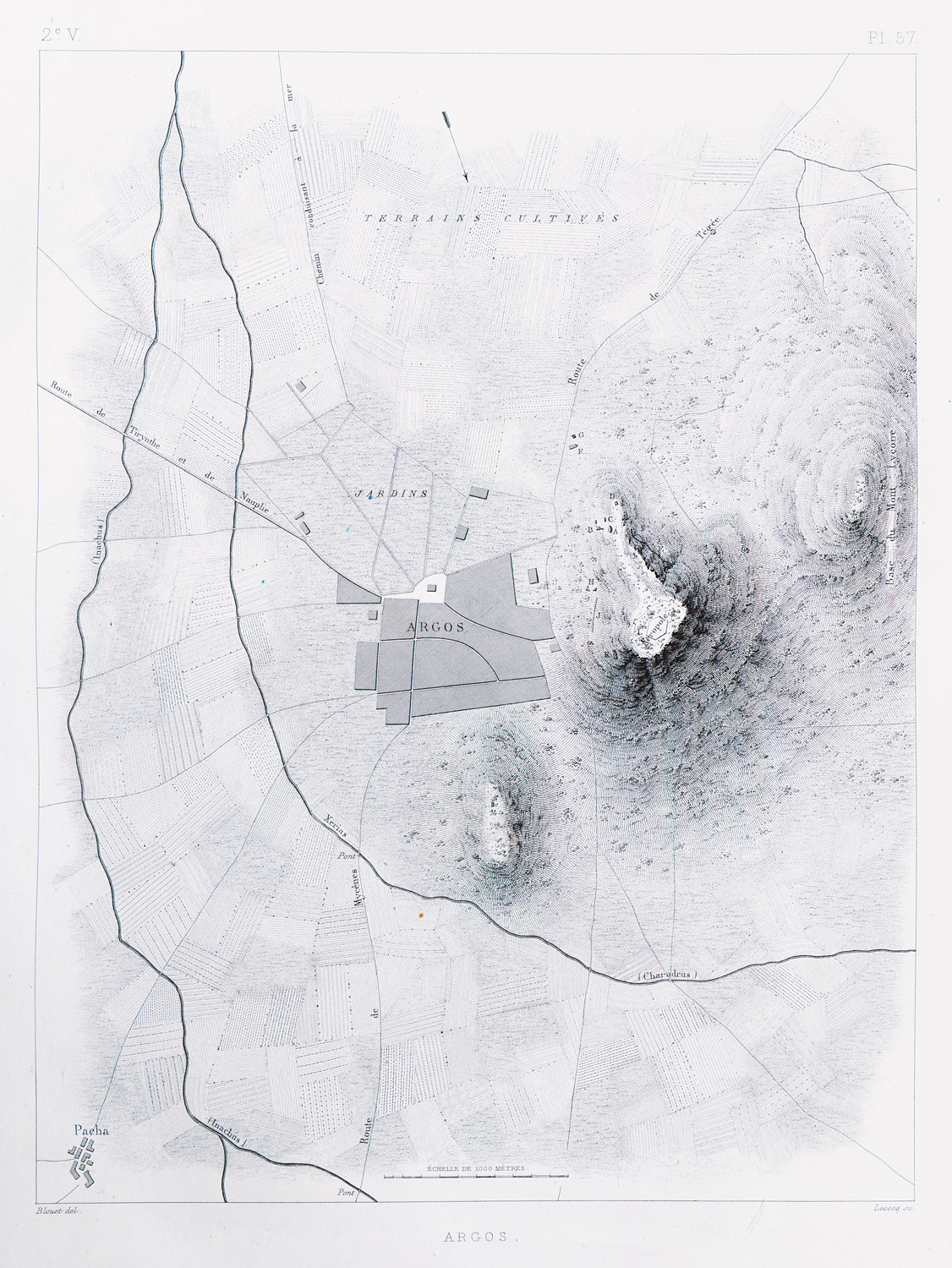
-
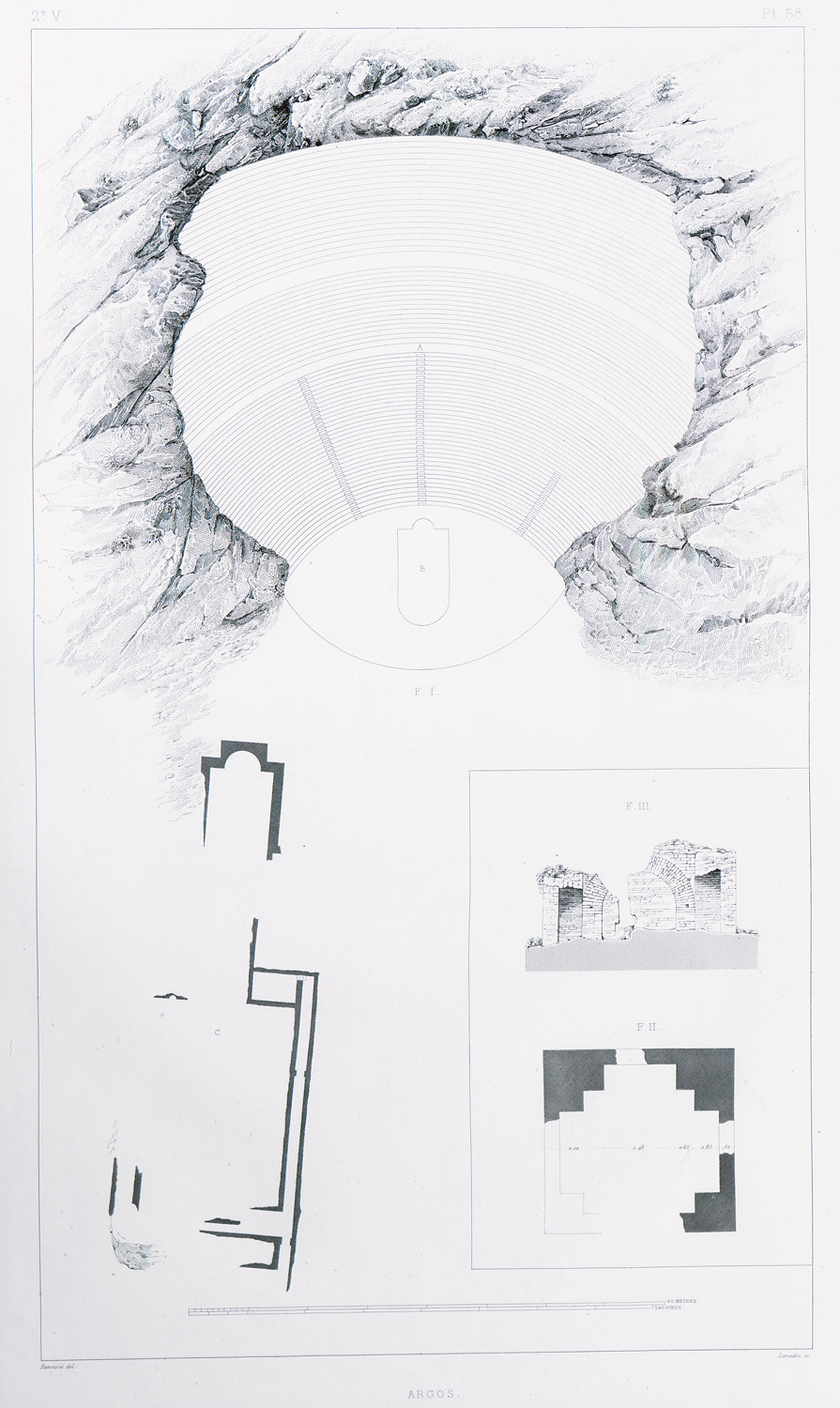
-
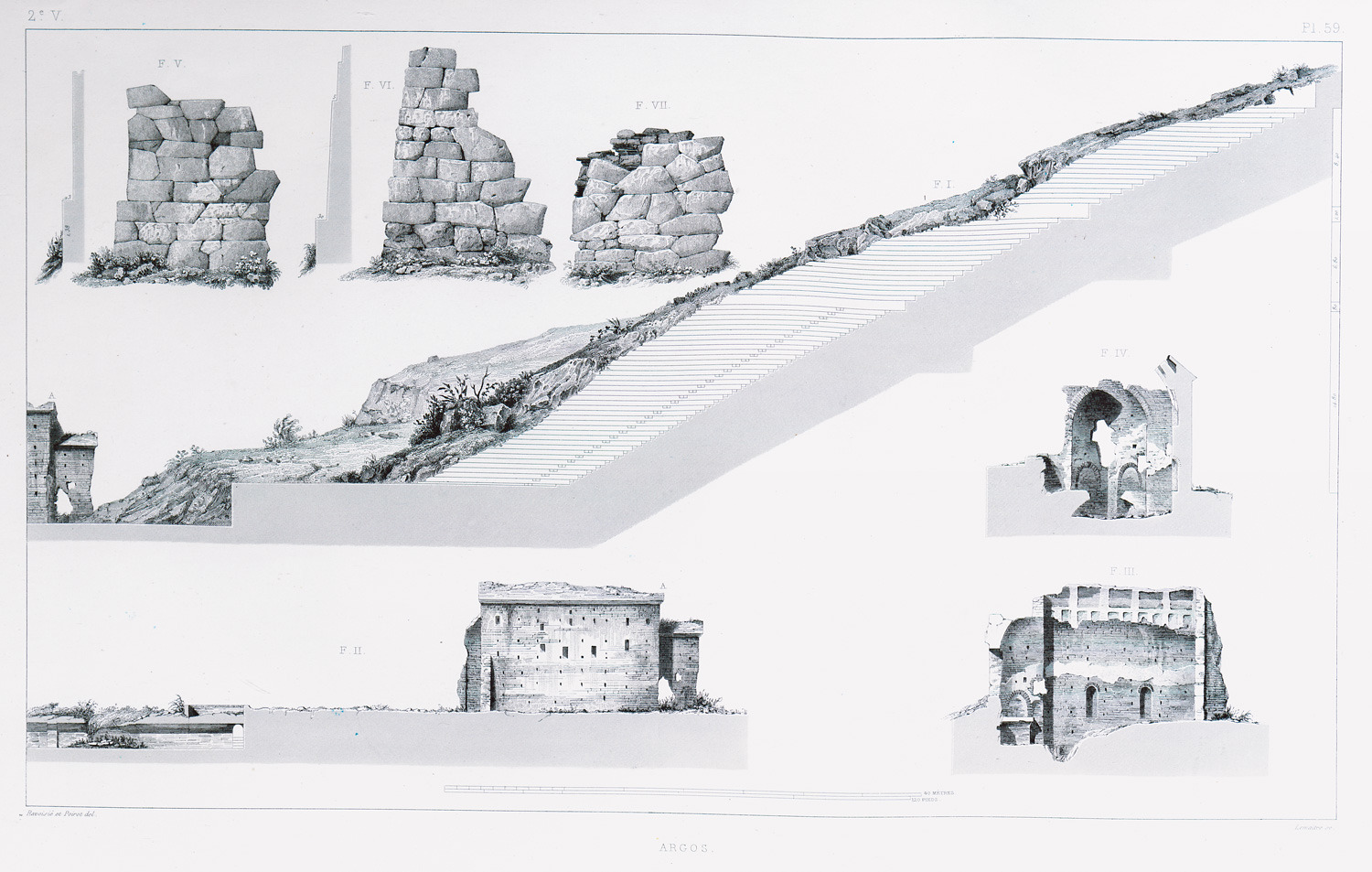
-
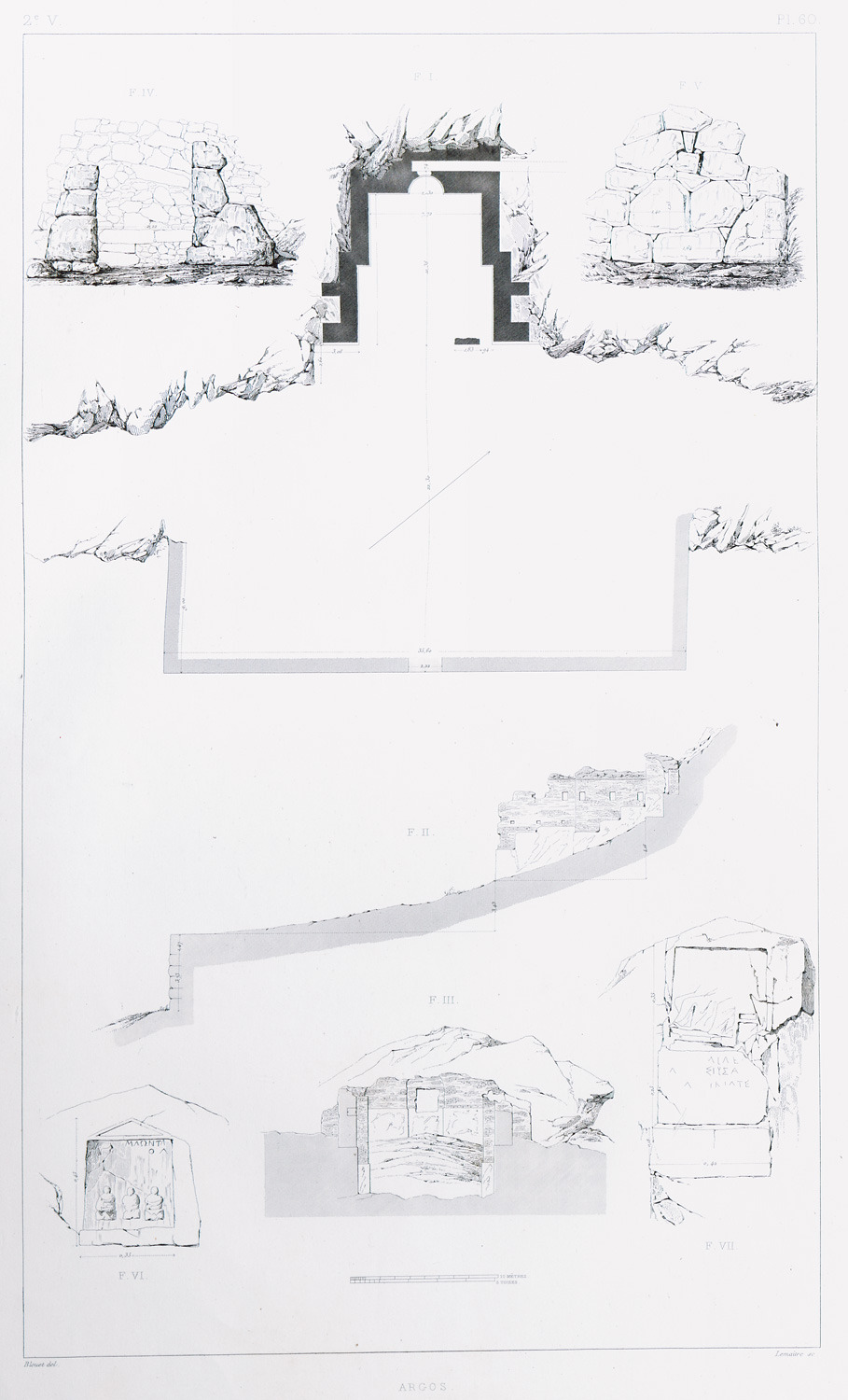
-
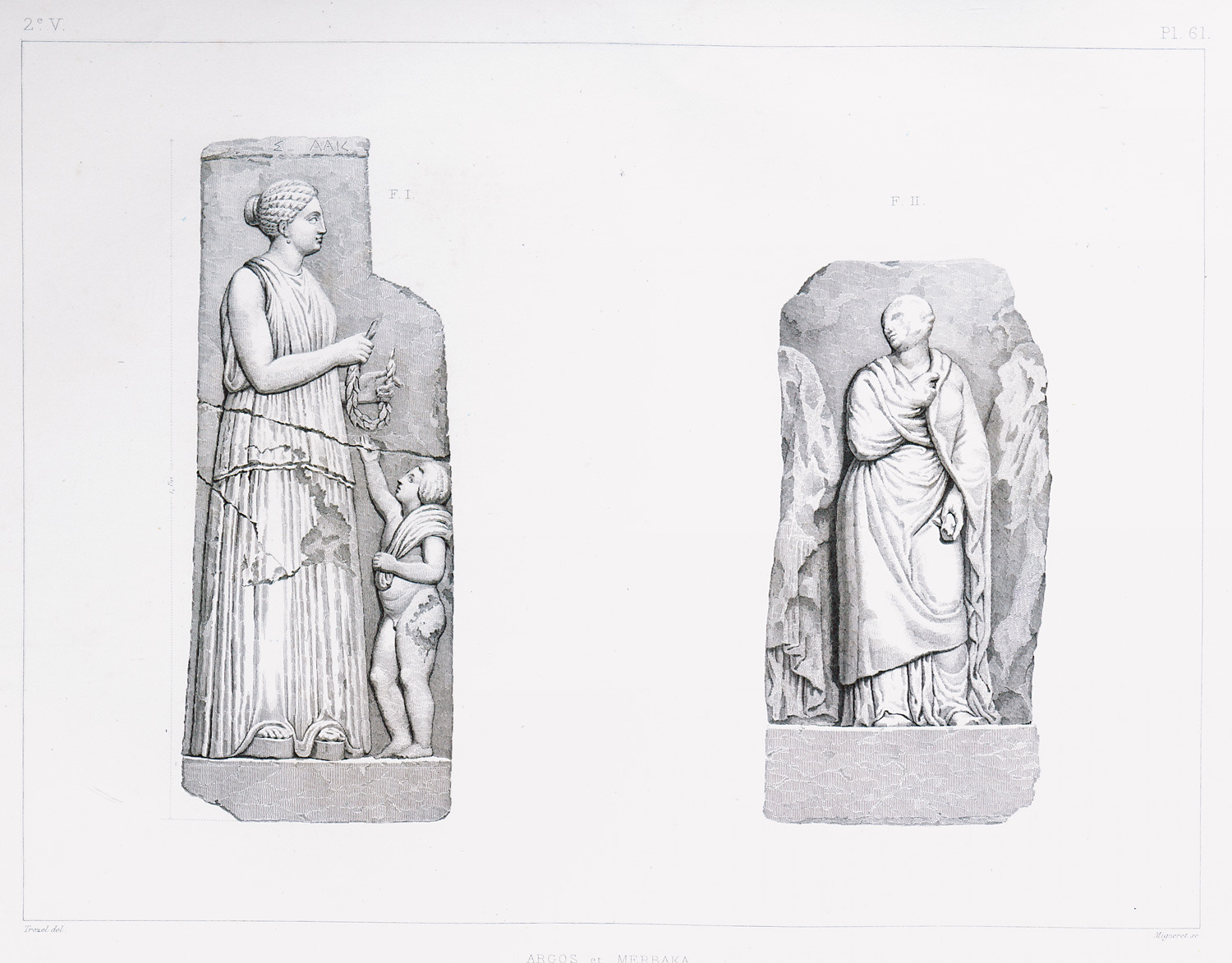
-
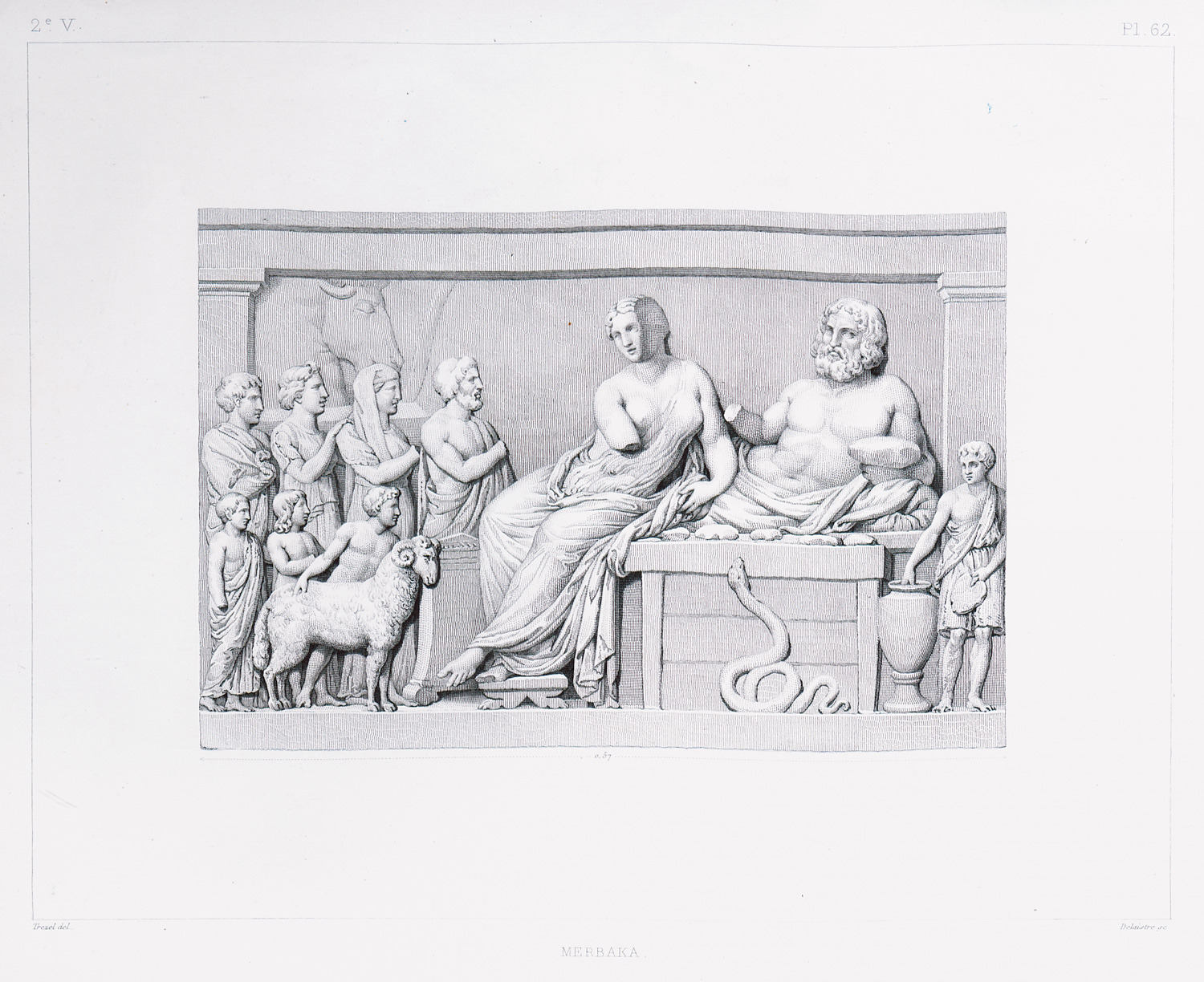
-
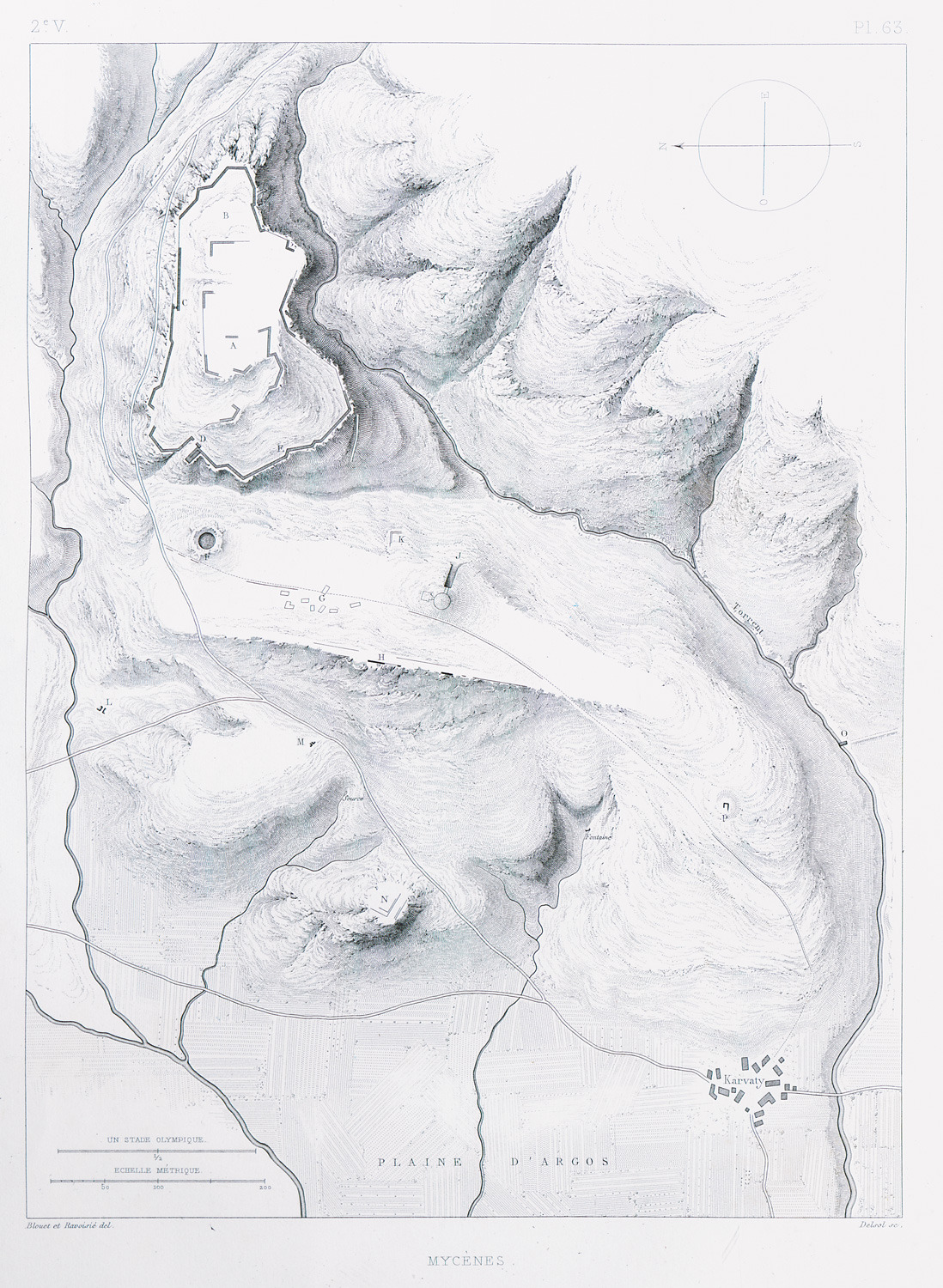
-
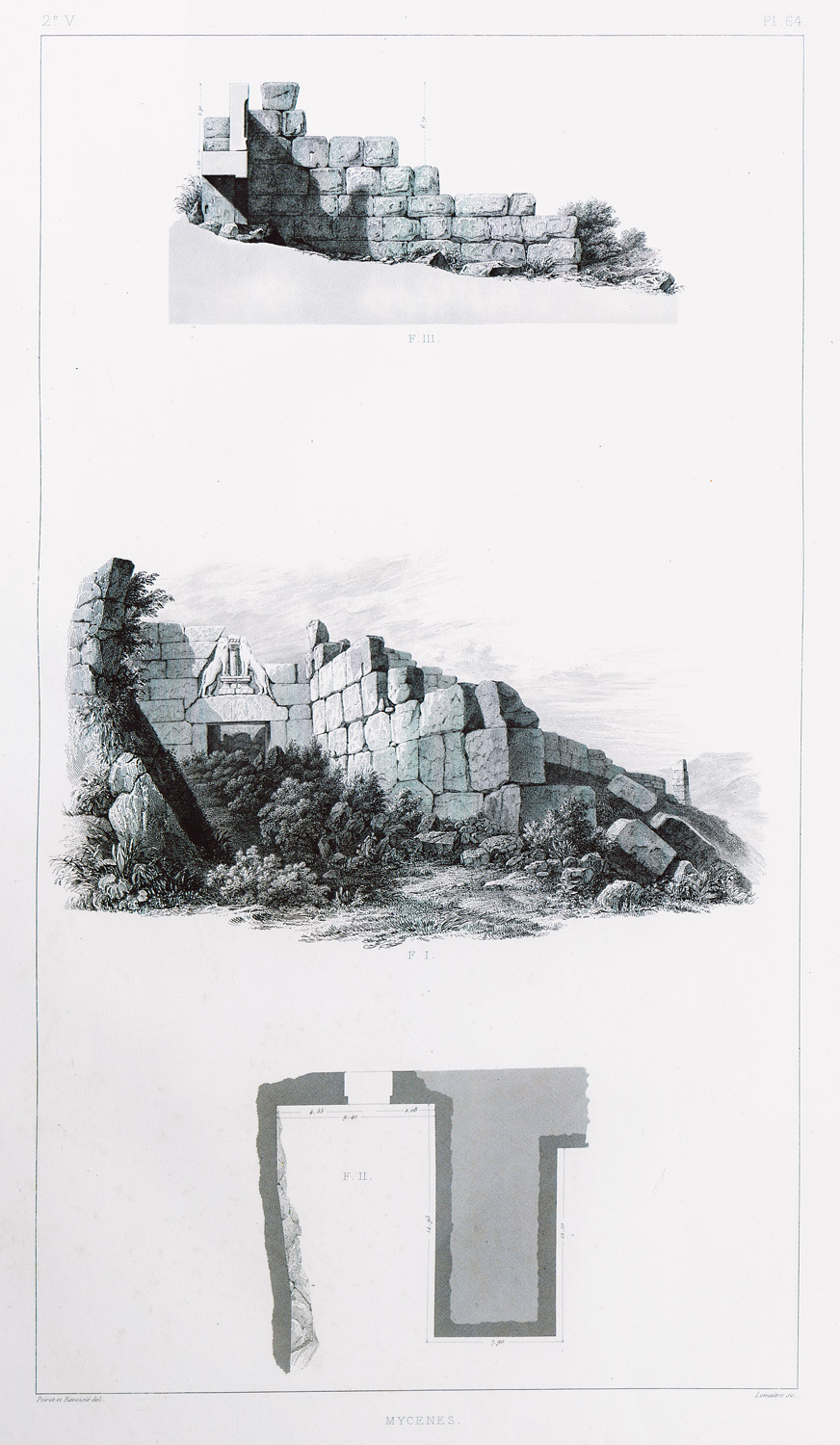
-
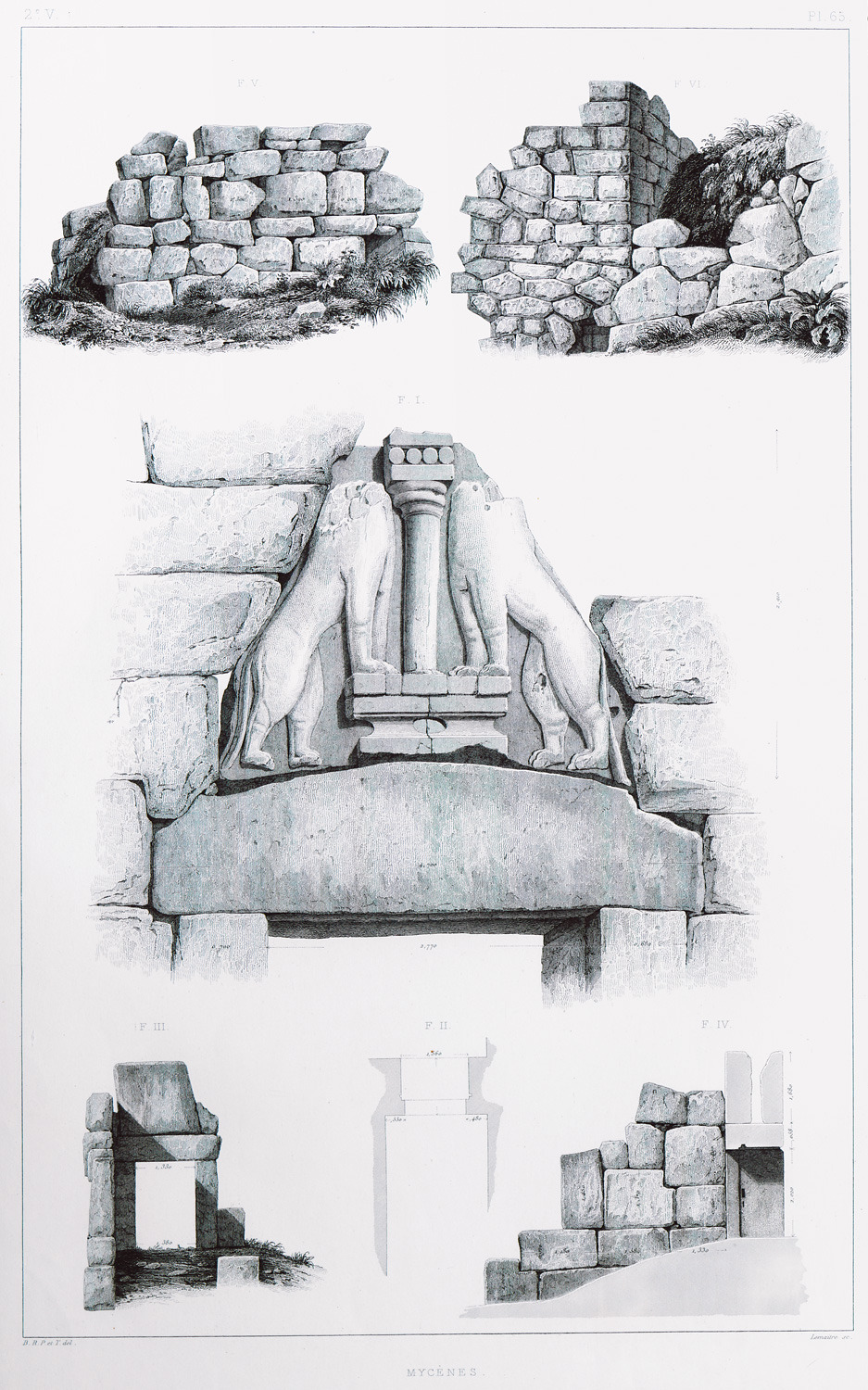
Lion Gate, Mycenae: 1,3. Front and rear view of the Lion relief. 2. Plan. 4. Section (rear view).
-
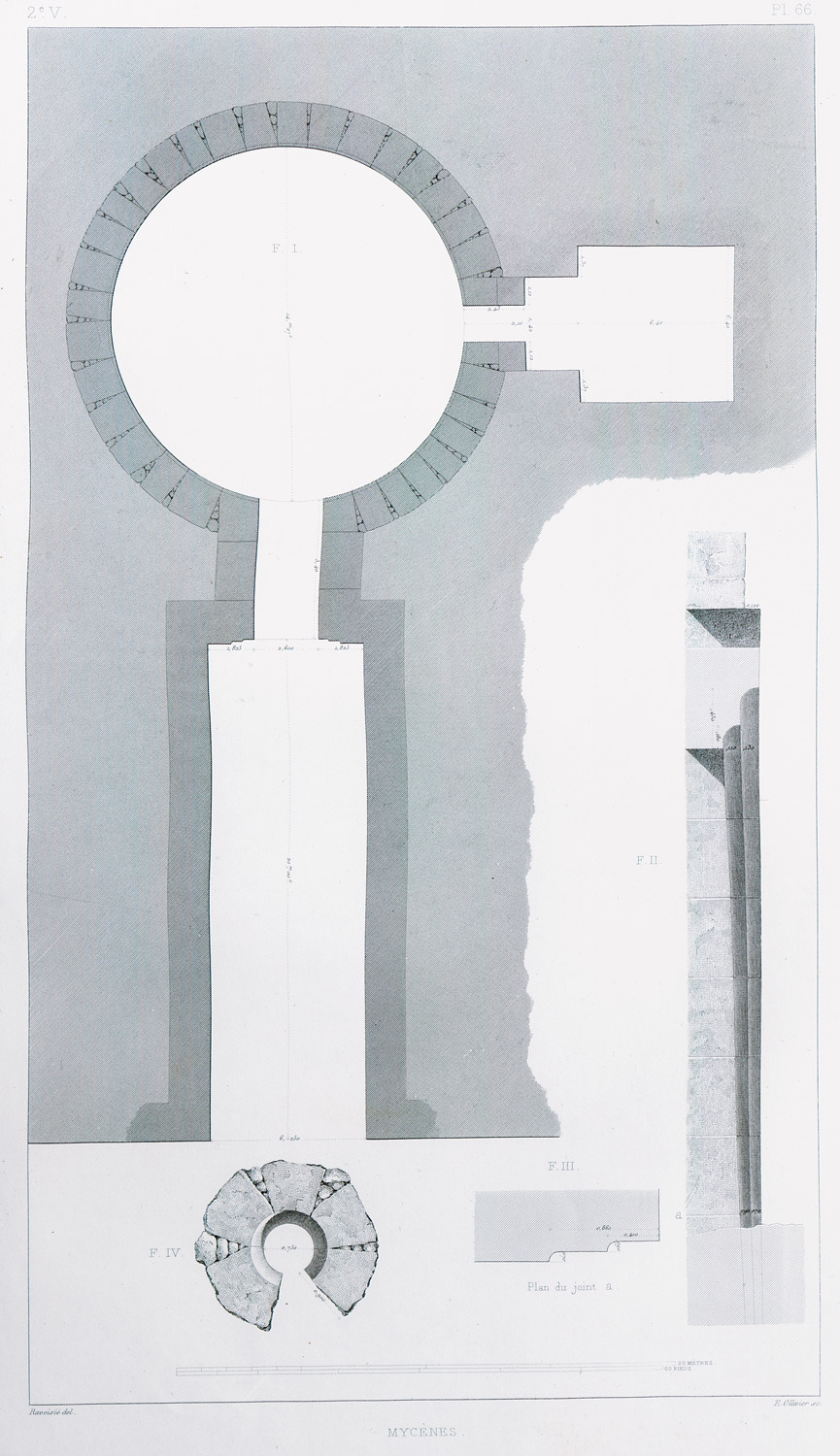
Plan and architectural features of the Tholos tomb of Mycenae or Treasury of Atreus.
-
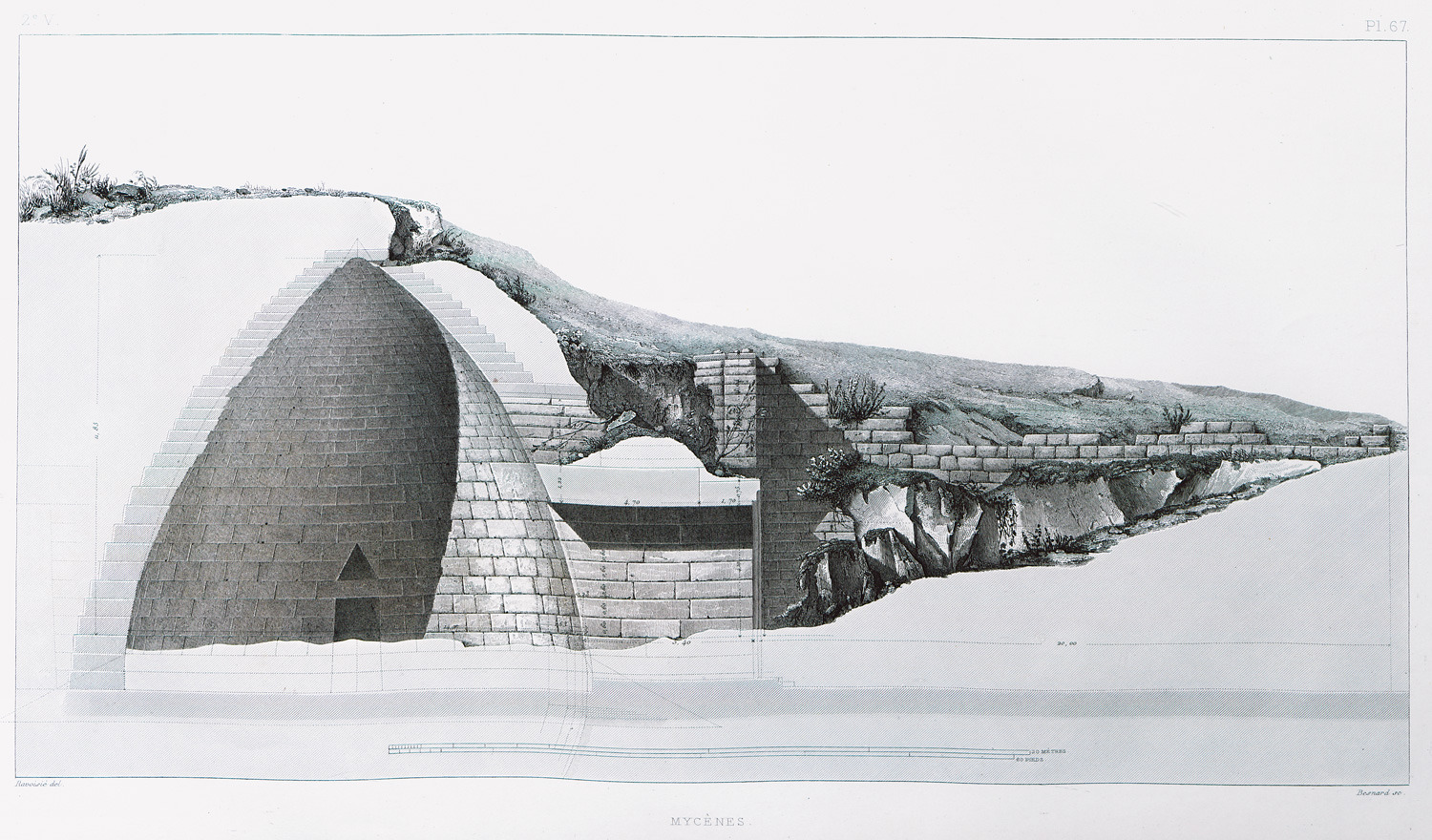
Section of the Tholos tomb of Mycenae or Treasury of Atreus.
-
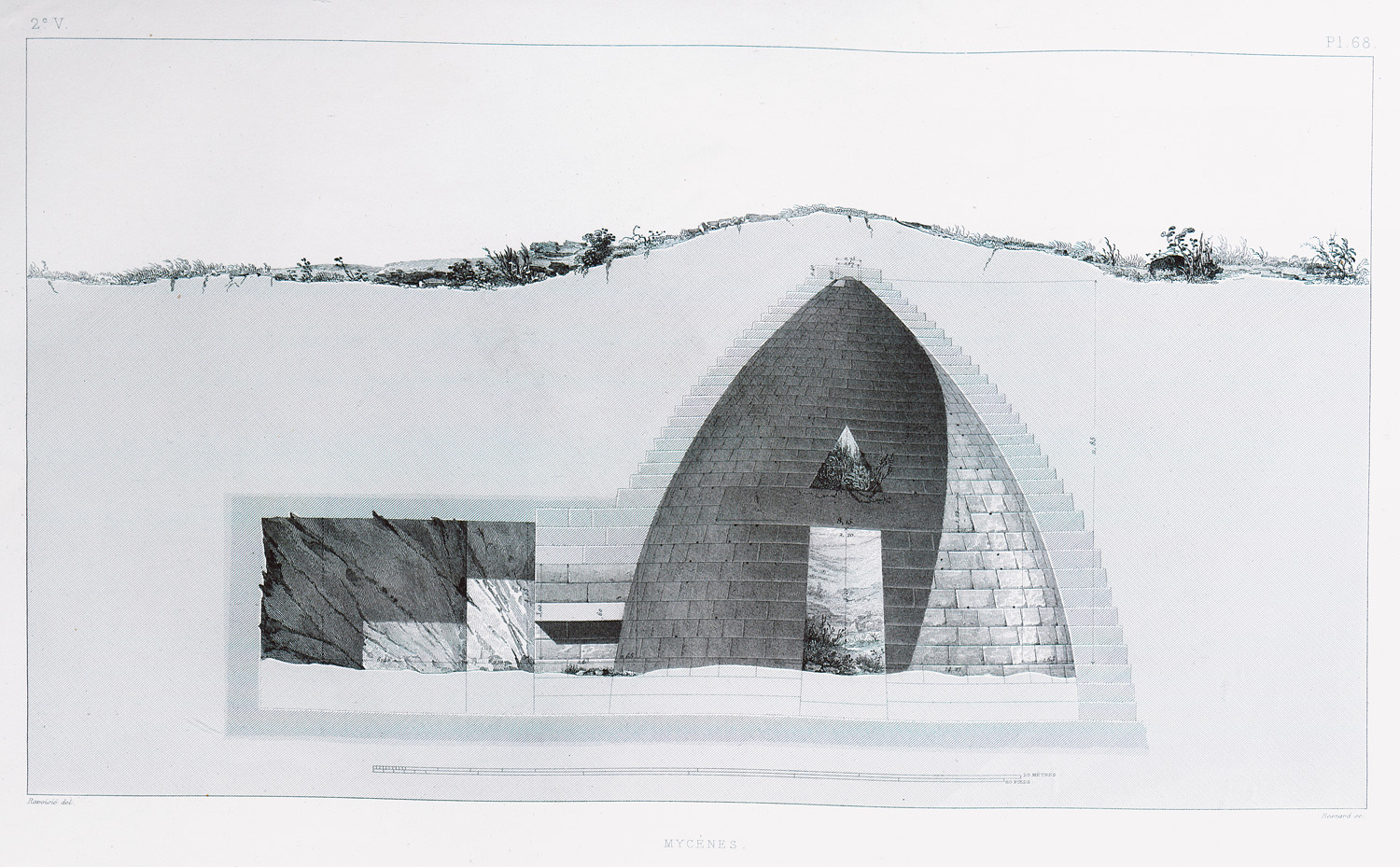
Section of the Tholos tomb of Mycenae or Treasury of Atreus.
-
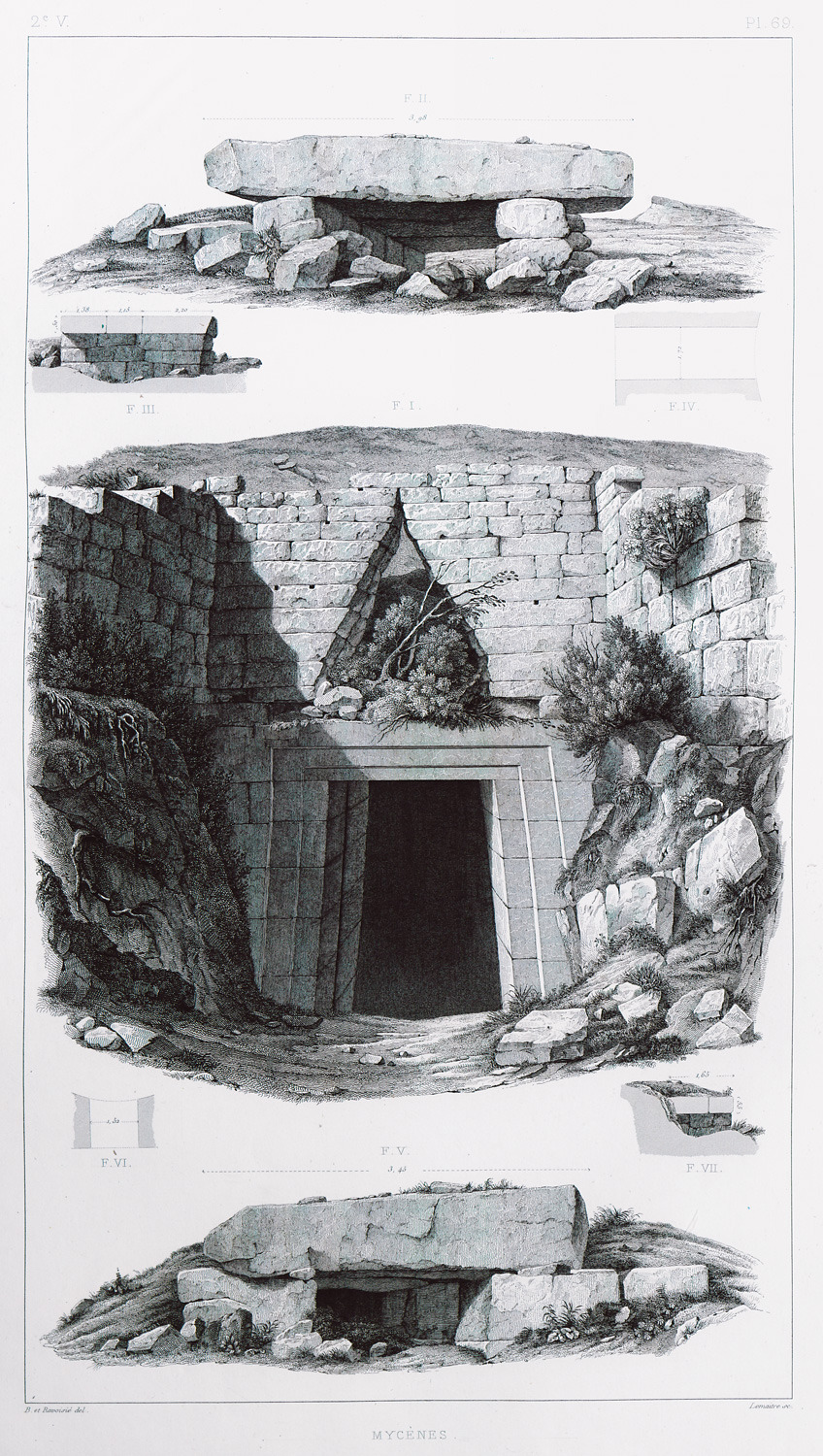
-
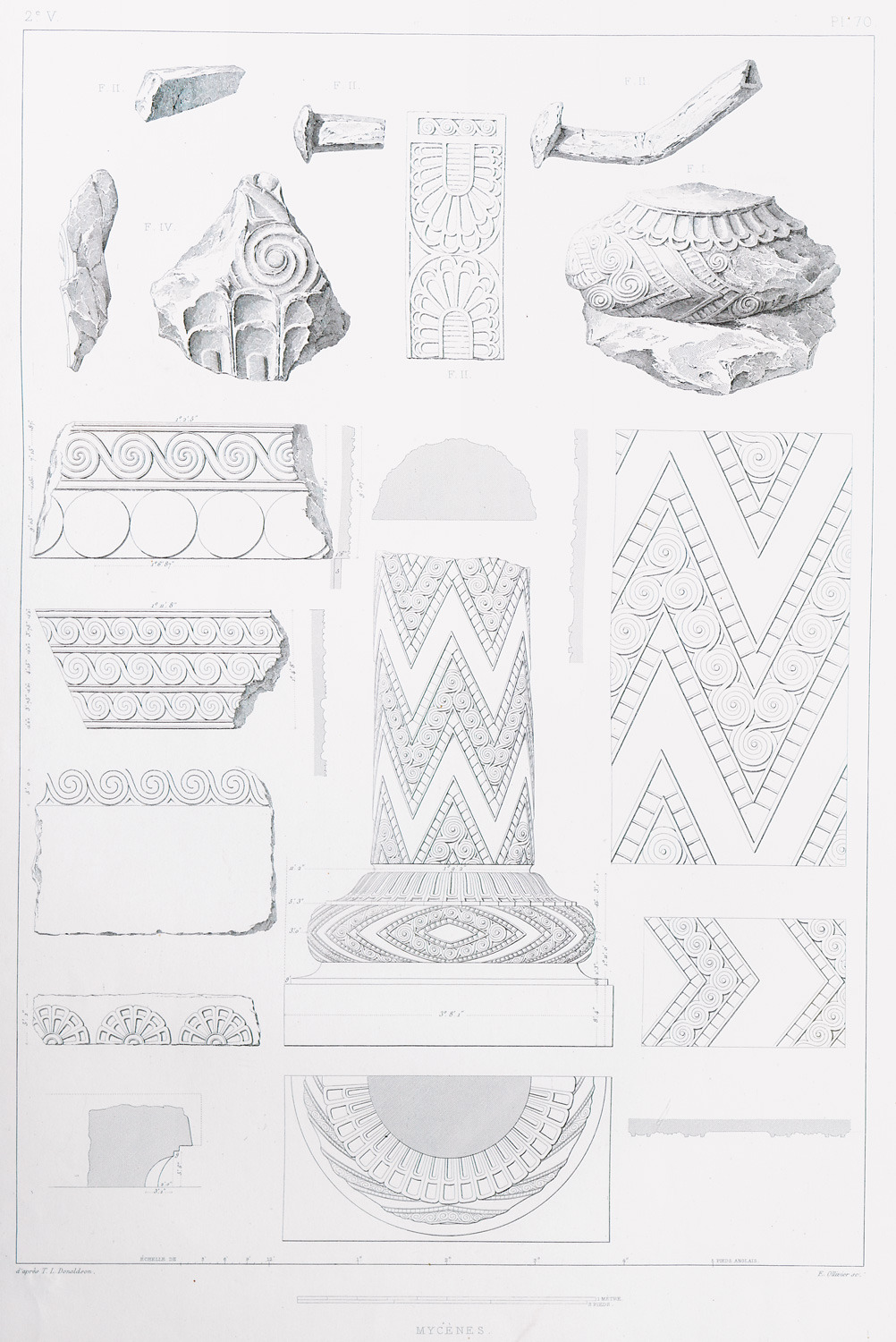
-
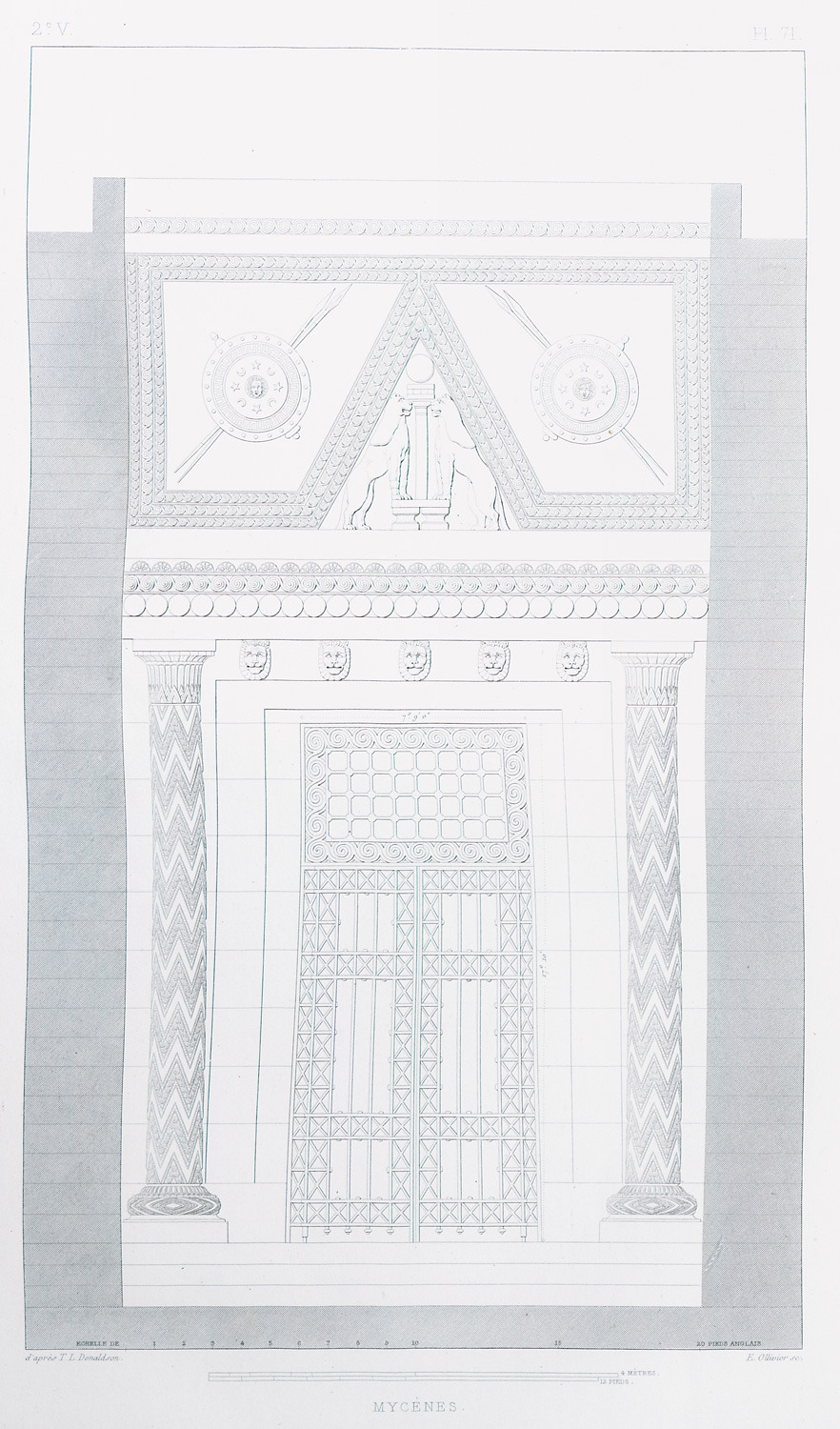
-
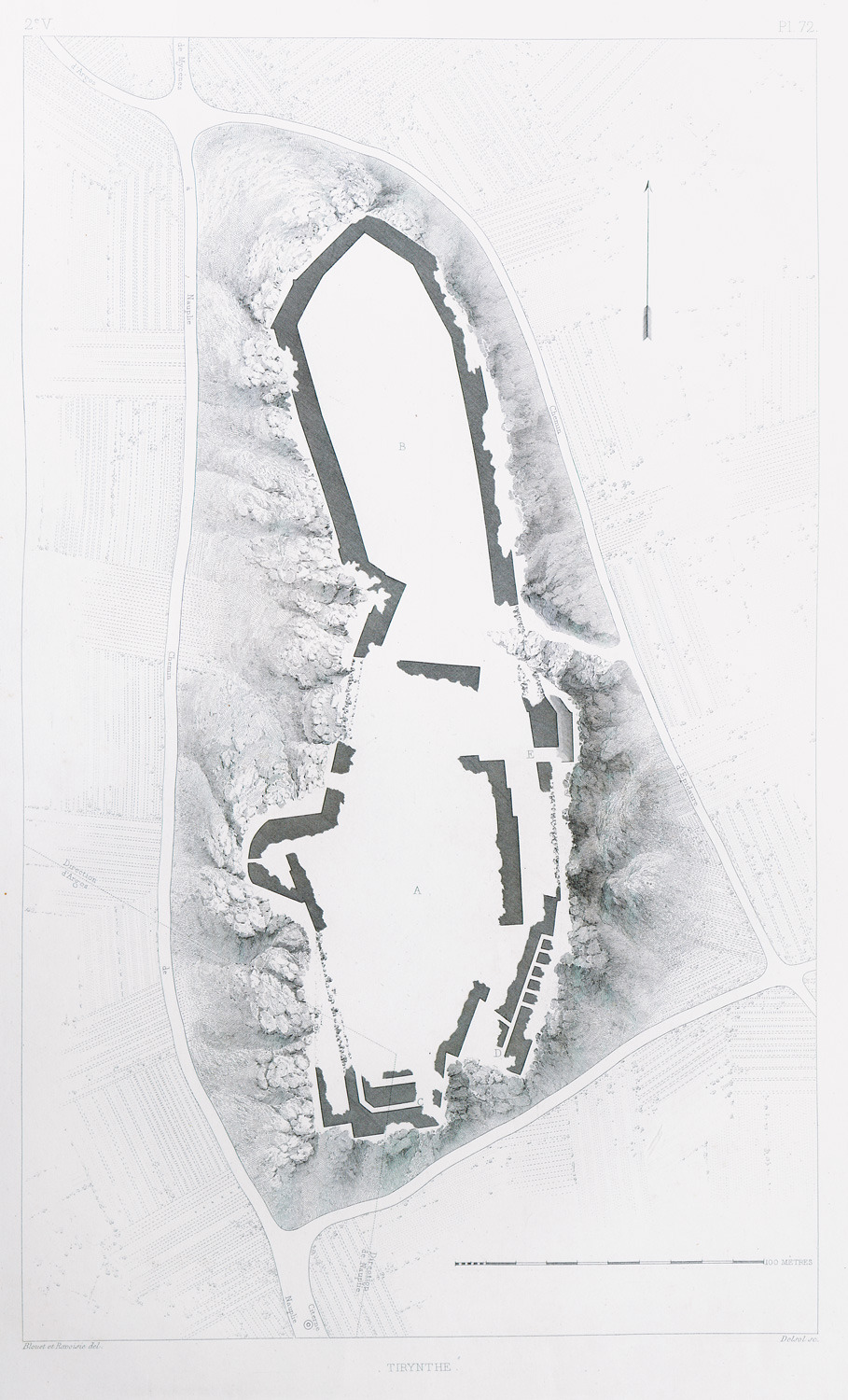
-
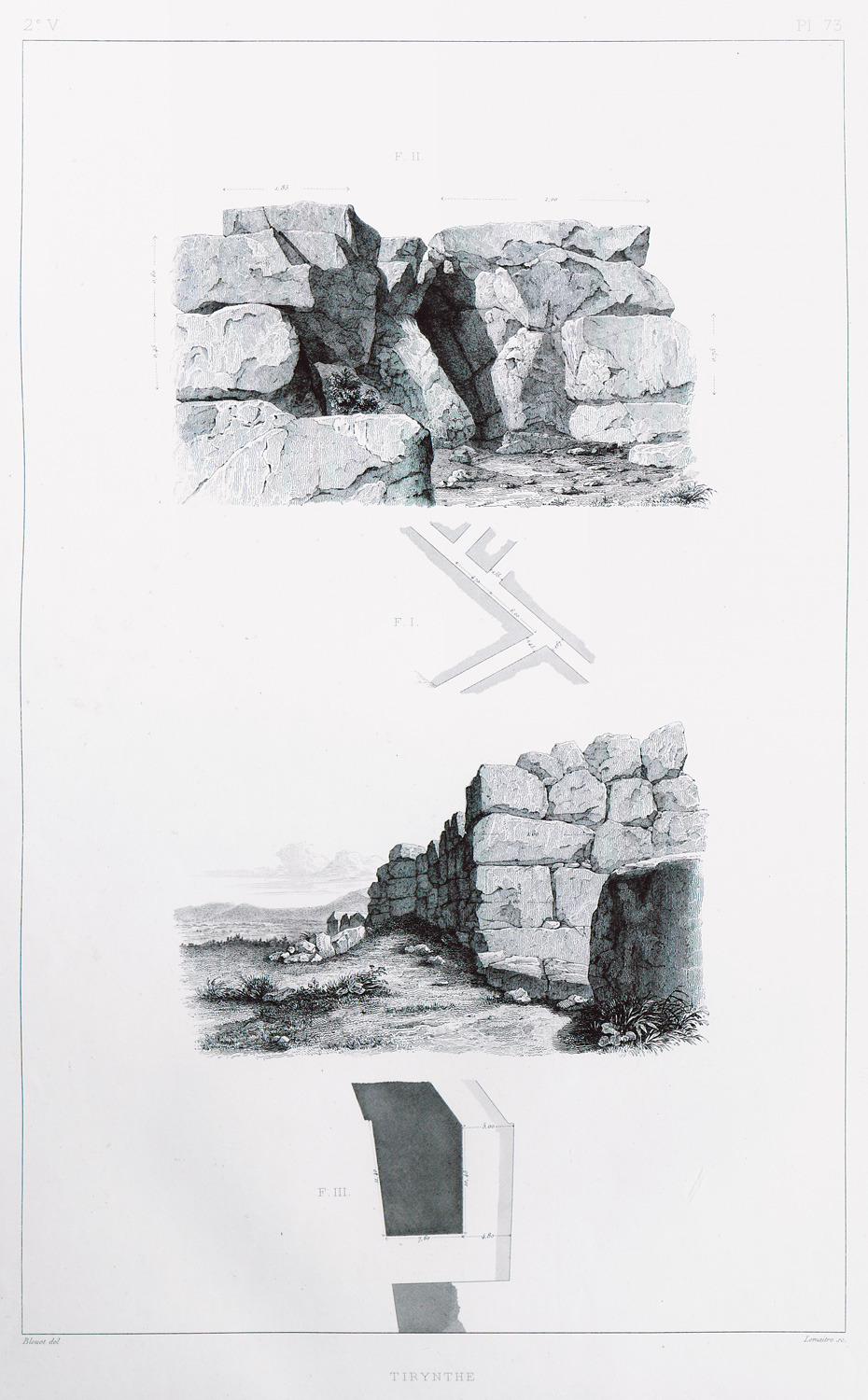
-
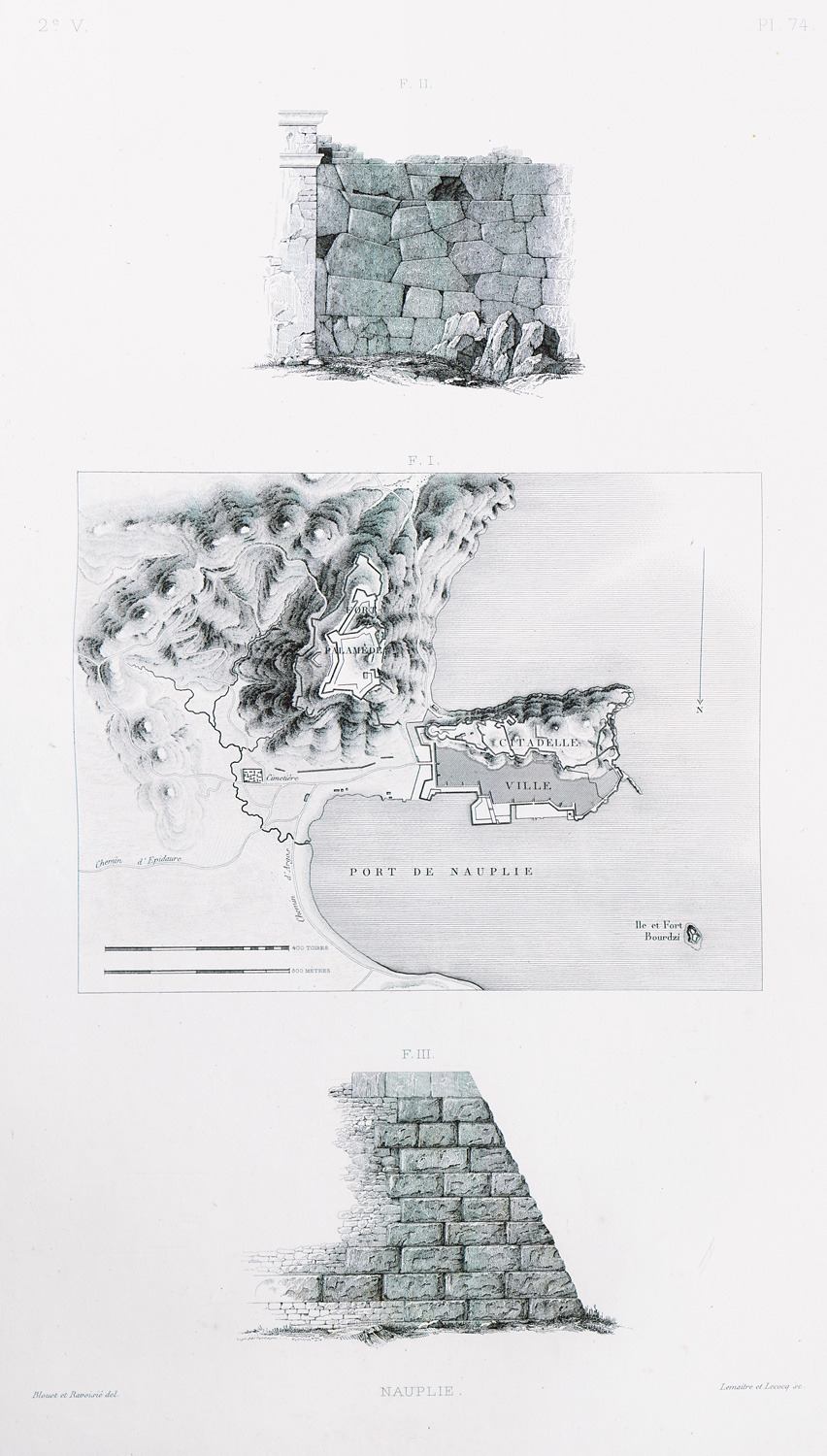
-
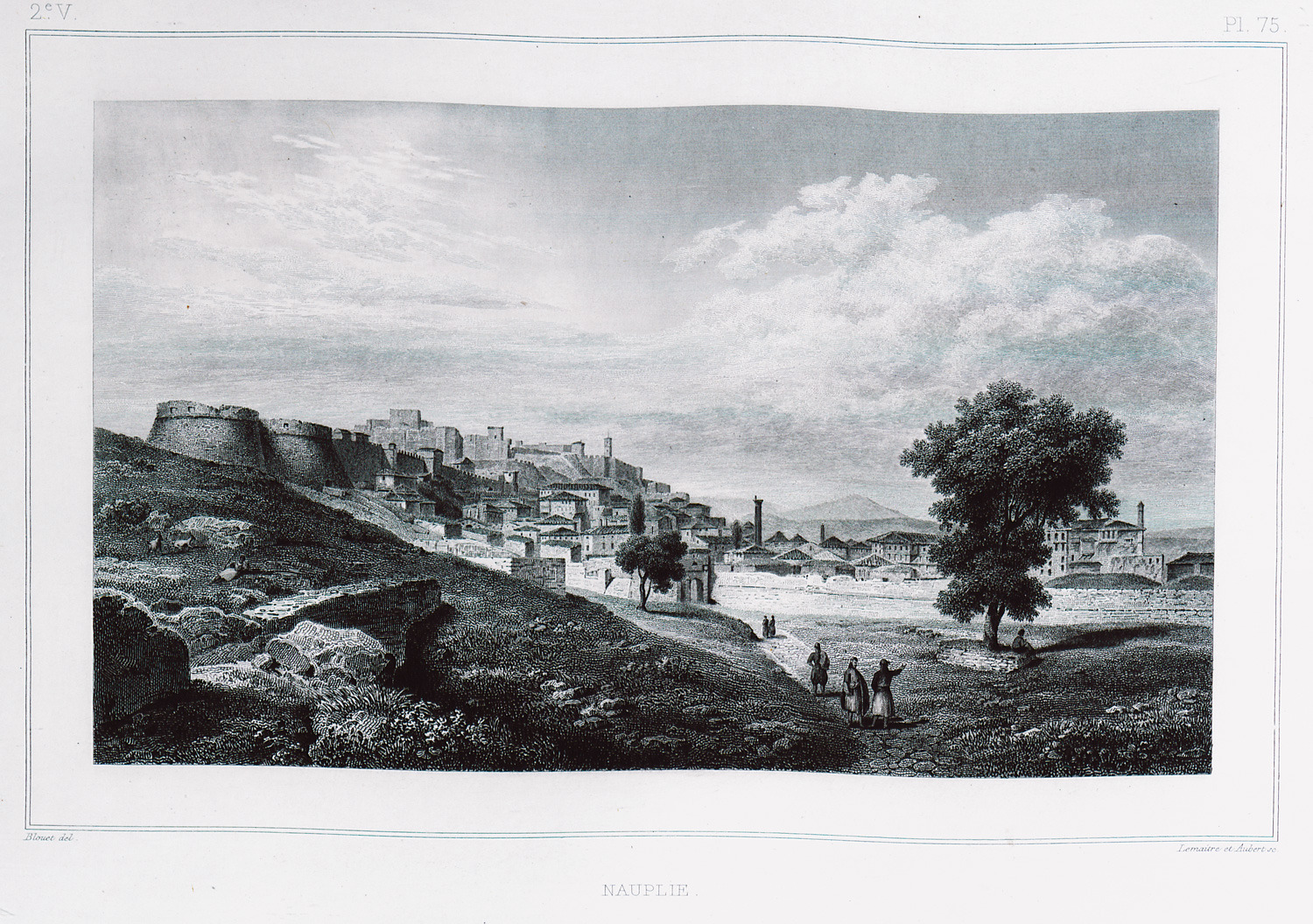
-
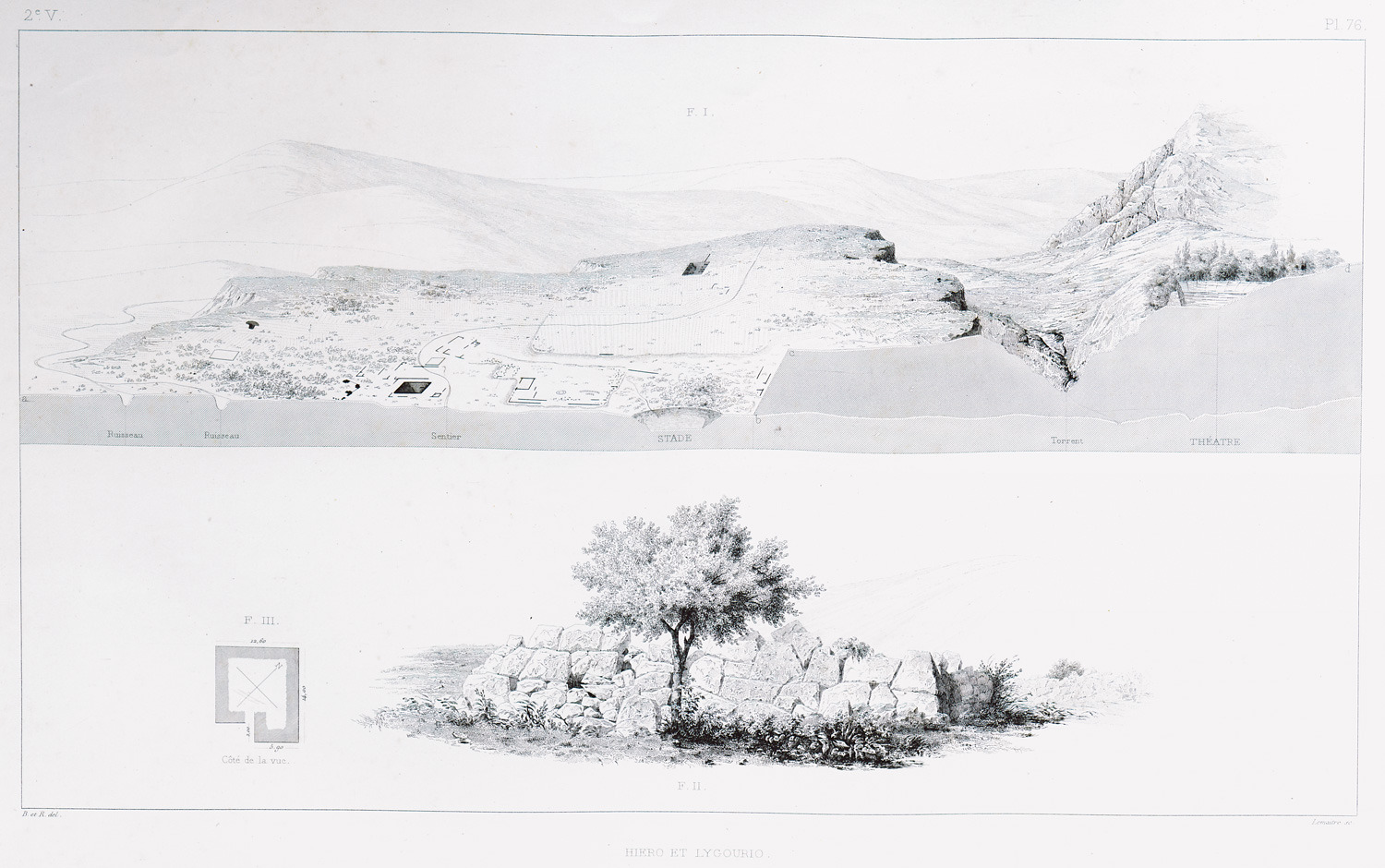
-
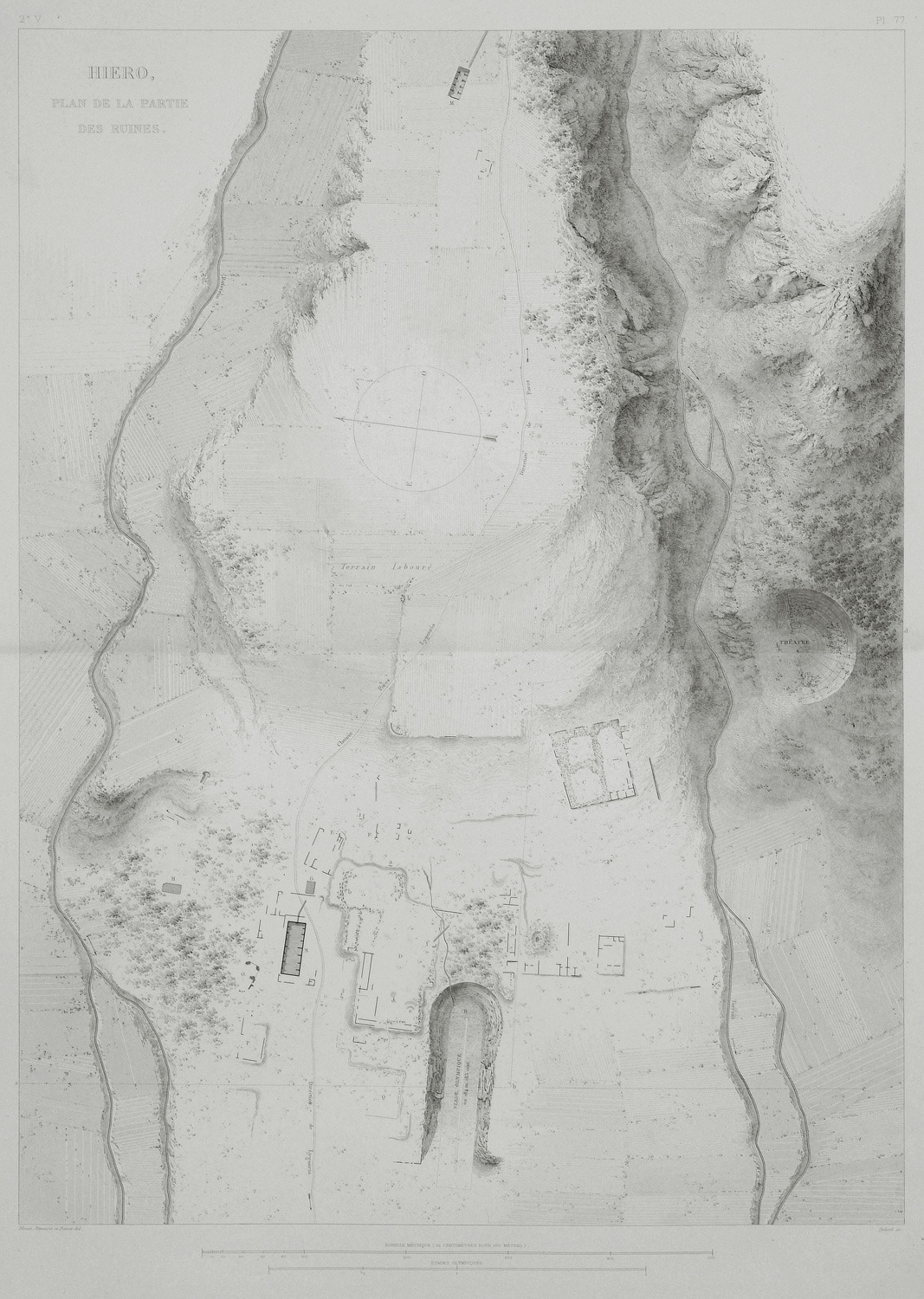
-
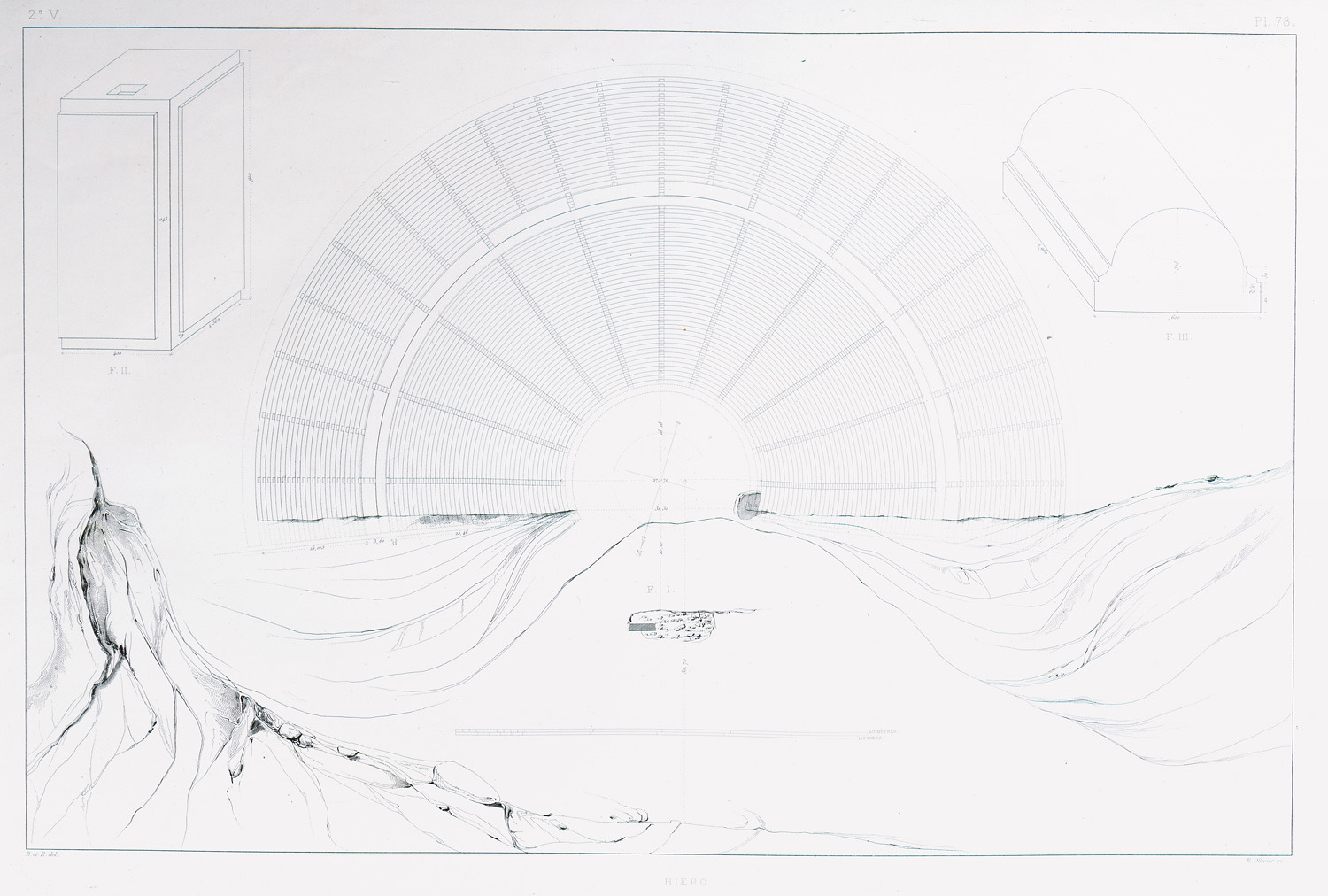
Plan and architectural details of the ancient theatre of Epidaurus.
-
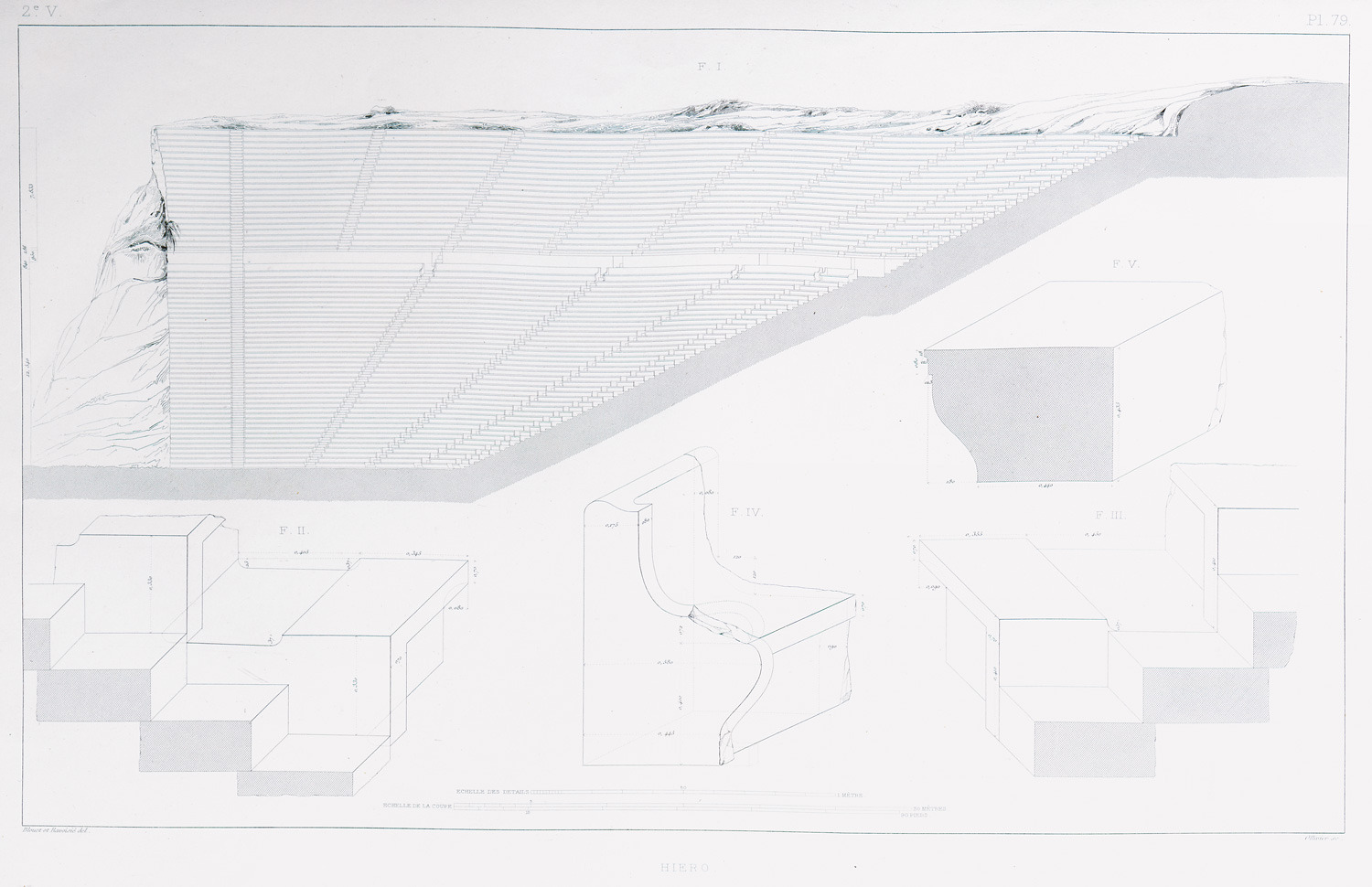
-
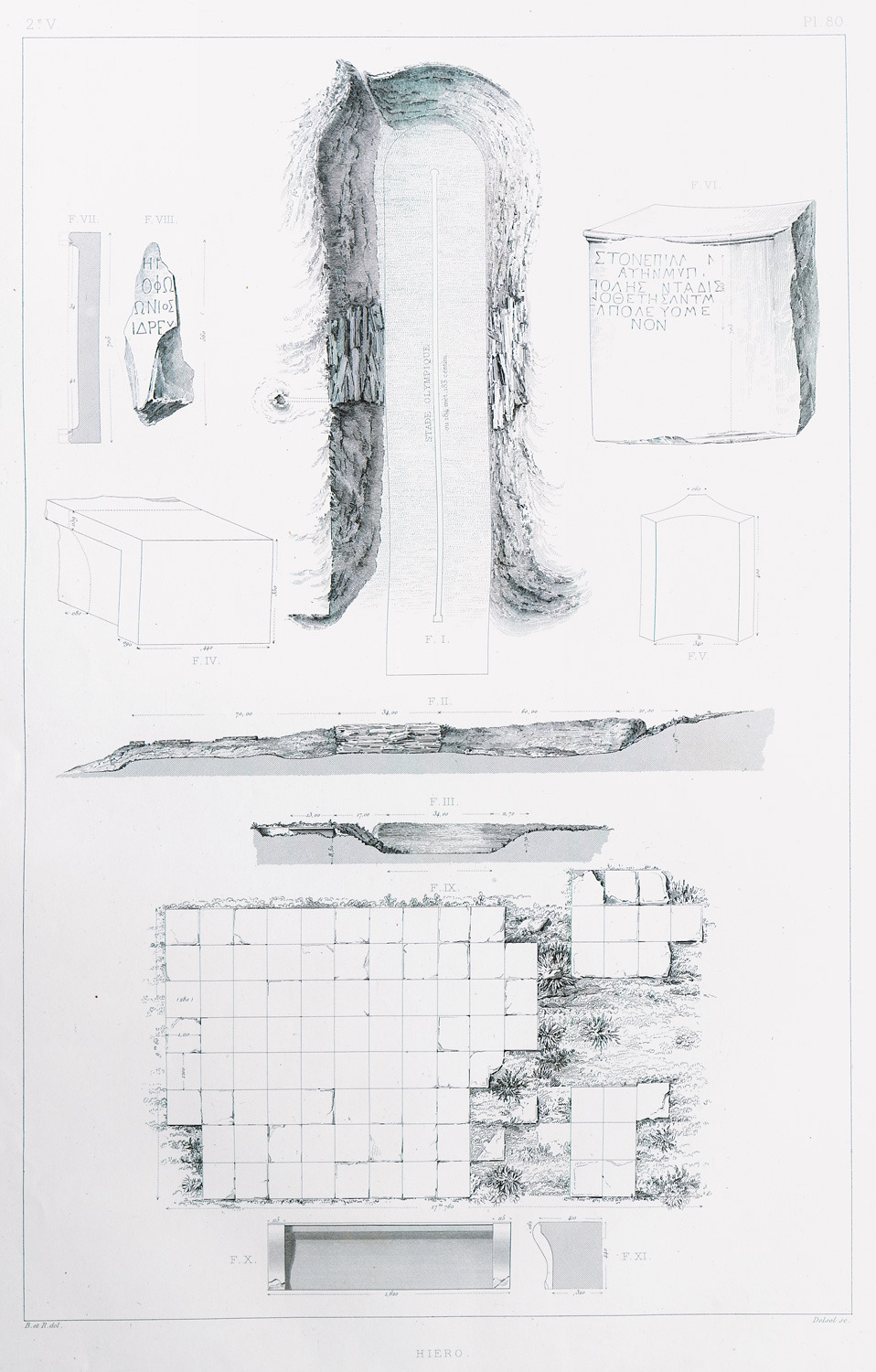
The stadium of the Sanctuary of Asclepius, Epidaurus. Plan of the site, architectural features.
-
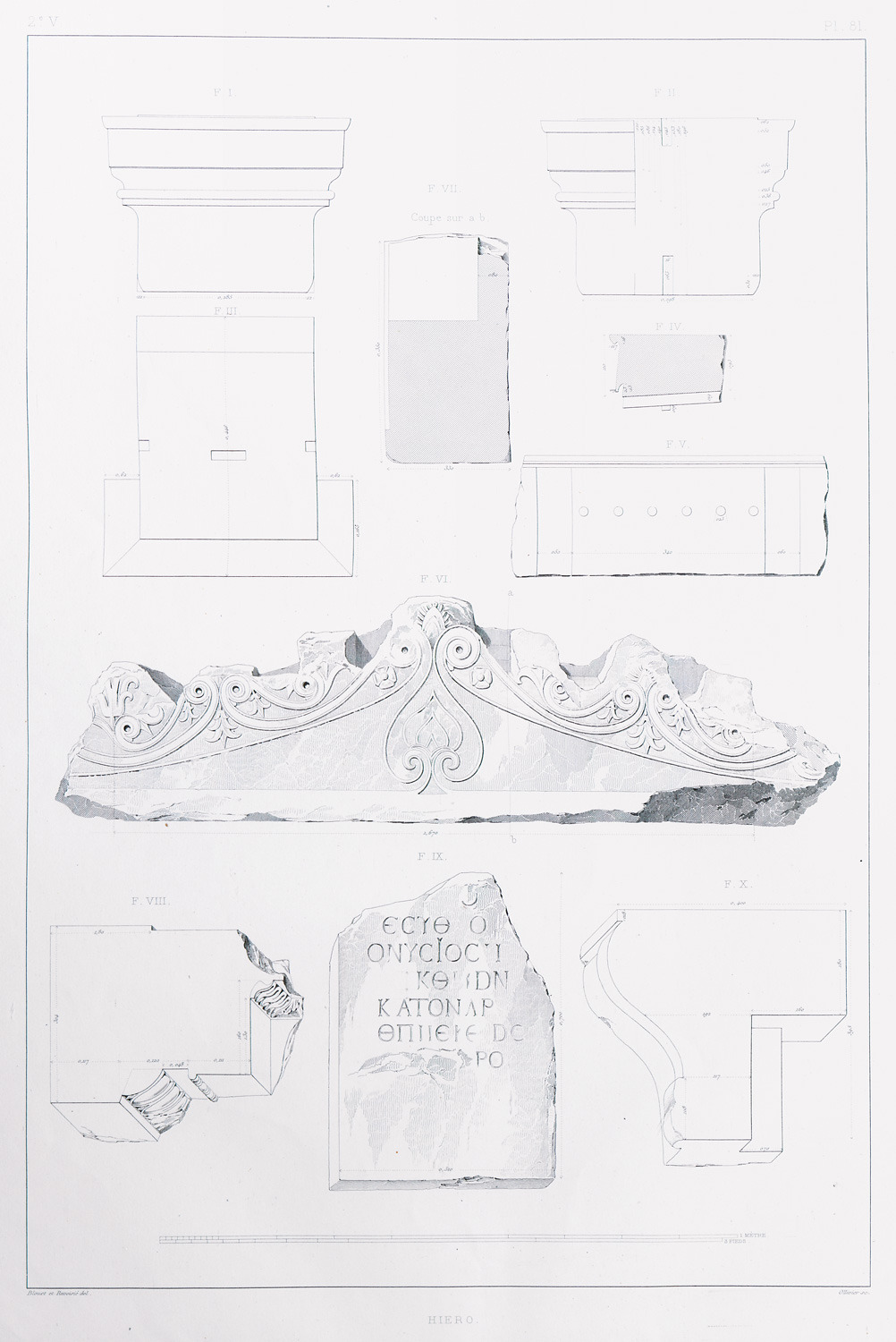
Architectural features and inscription from the Sanctuary of Asclepius, Epidaurus.
-
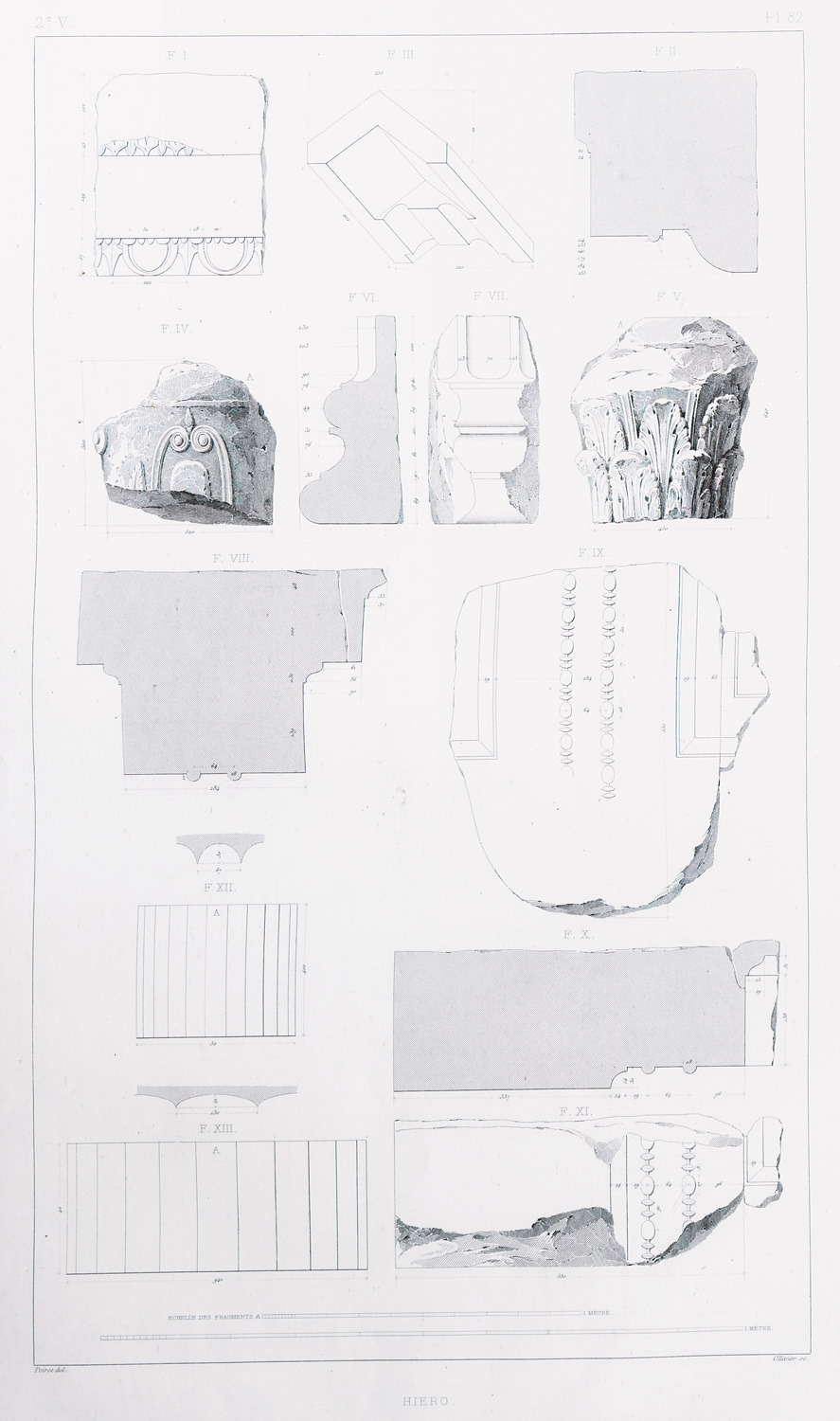
Architectural features from the Sanctuary of Asclepius, Epidaurus.
-
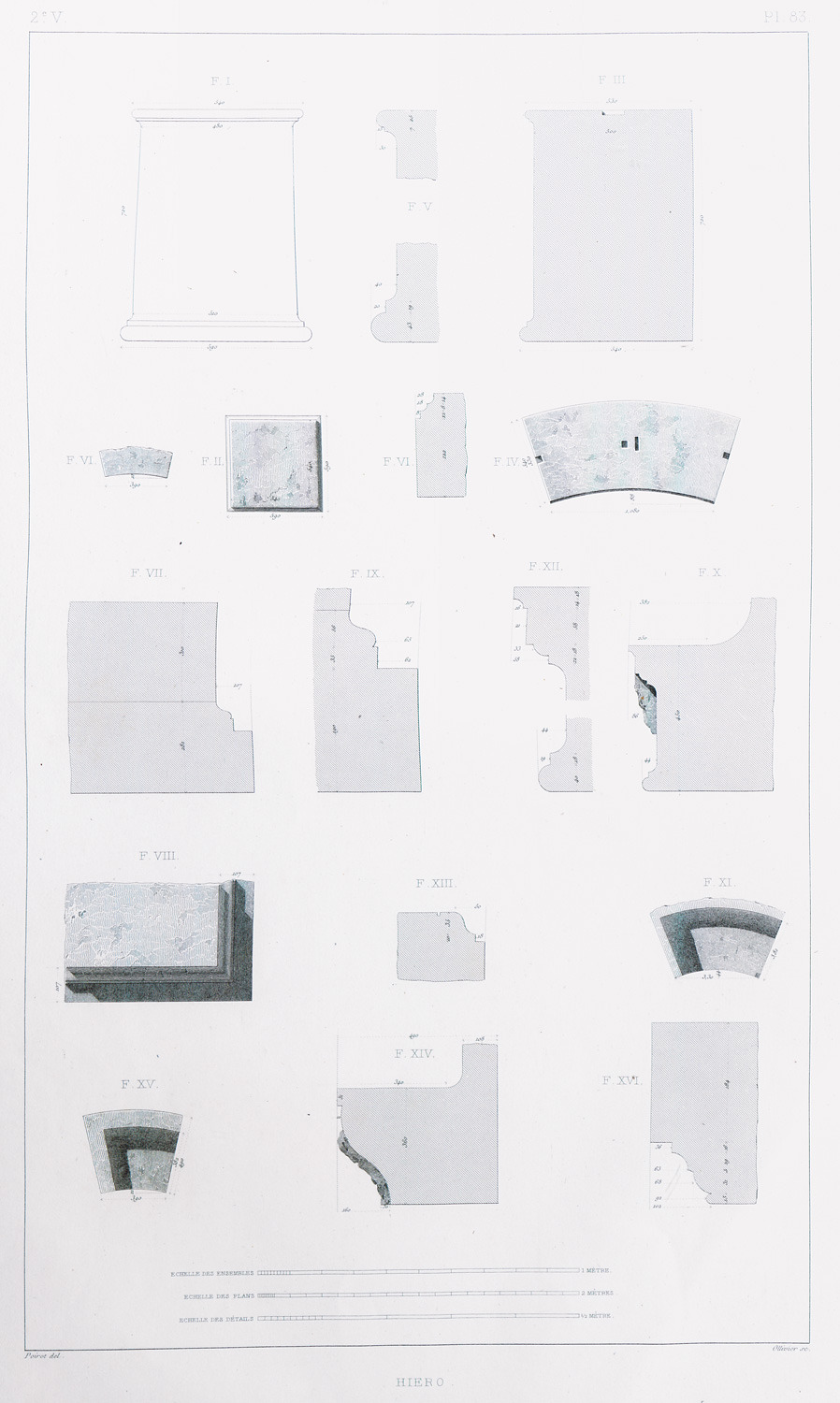
Architectural features from the Sanctuary of Asclepius, Epidaurus.
-
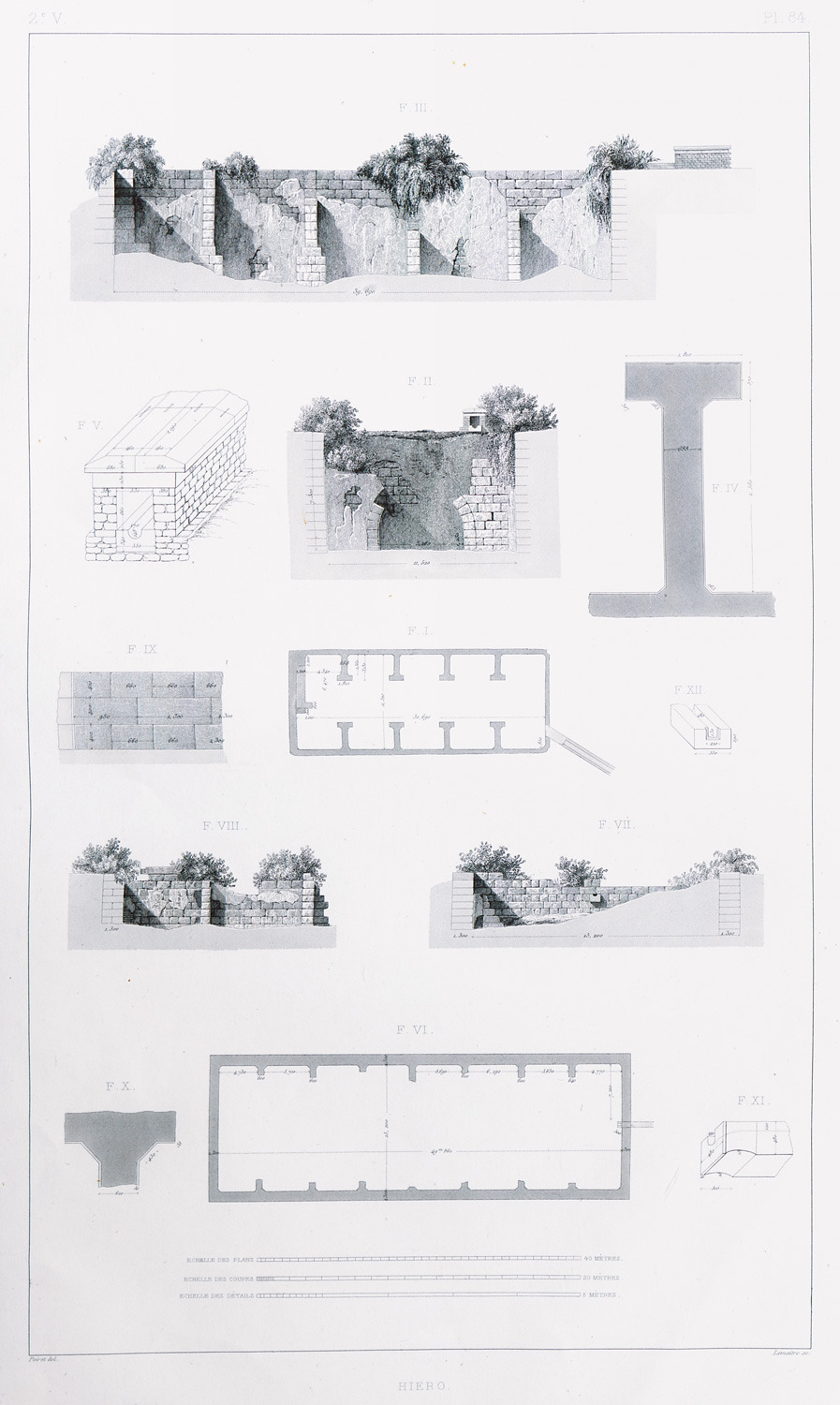
Architectural features from the Sanctuary of Asclepius, Epidaurus.
-
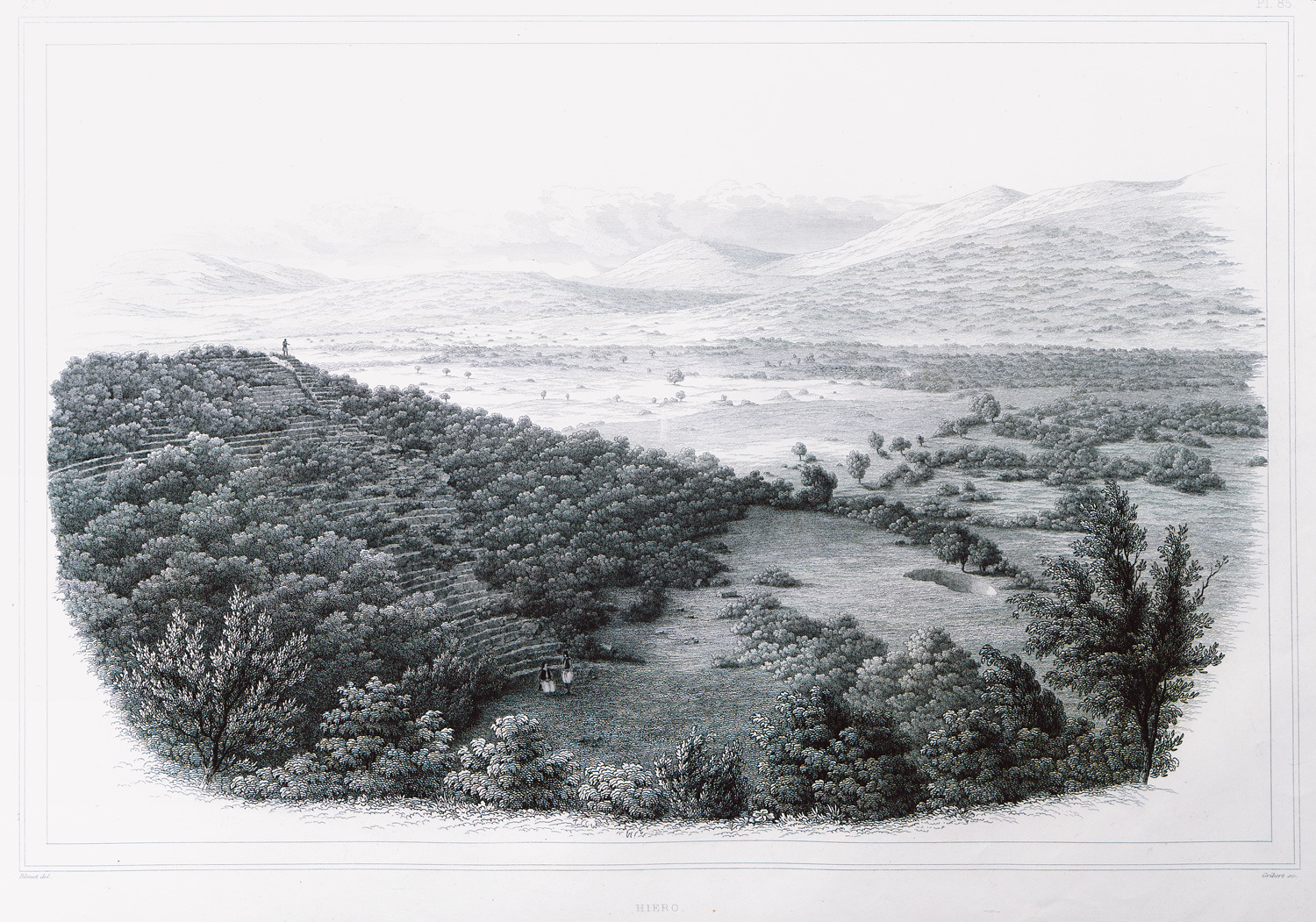
-
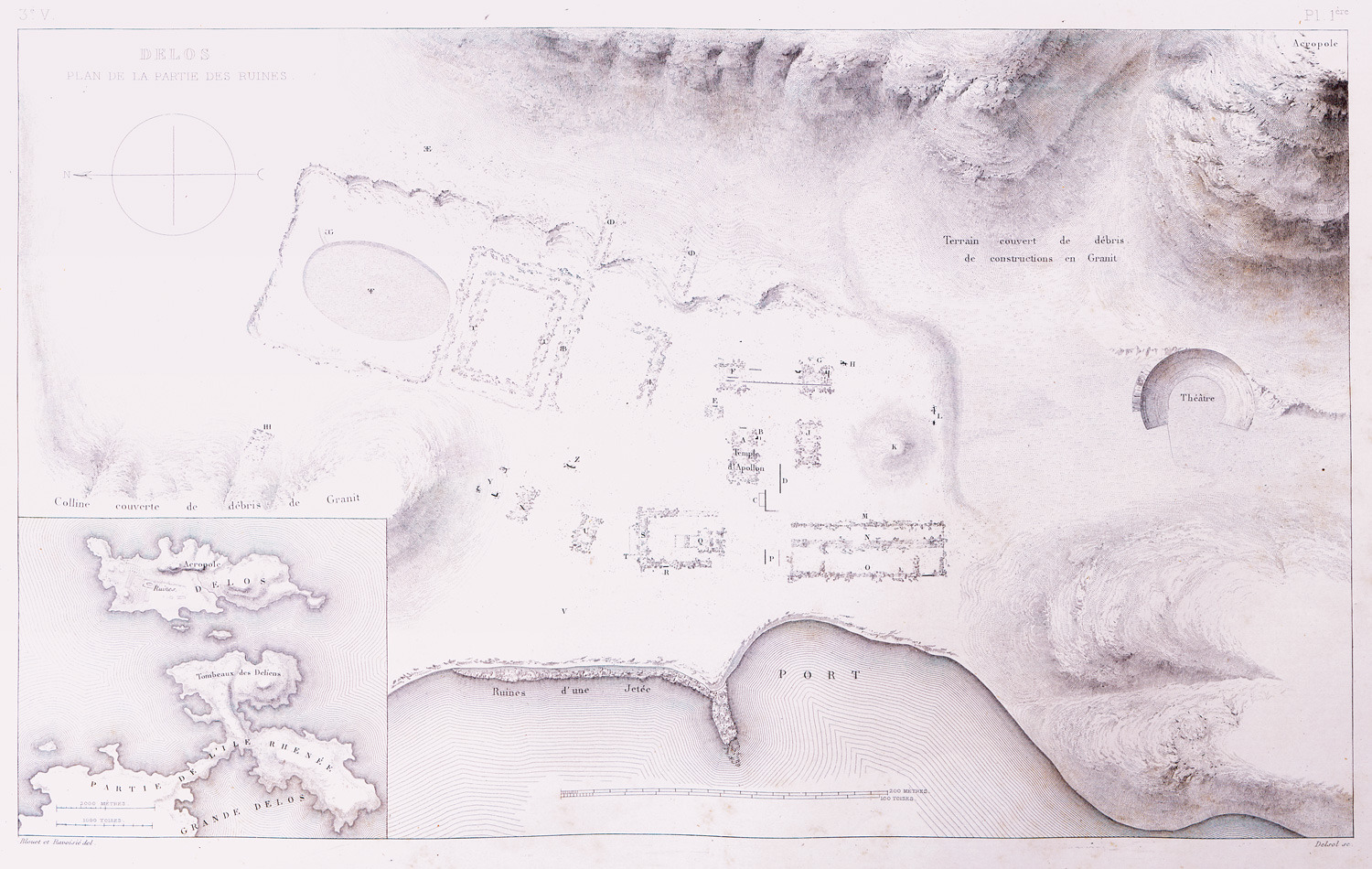
-
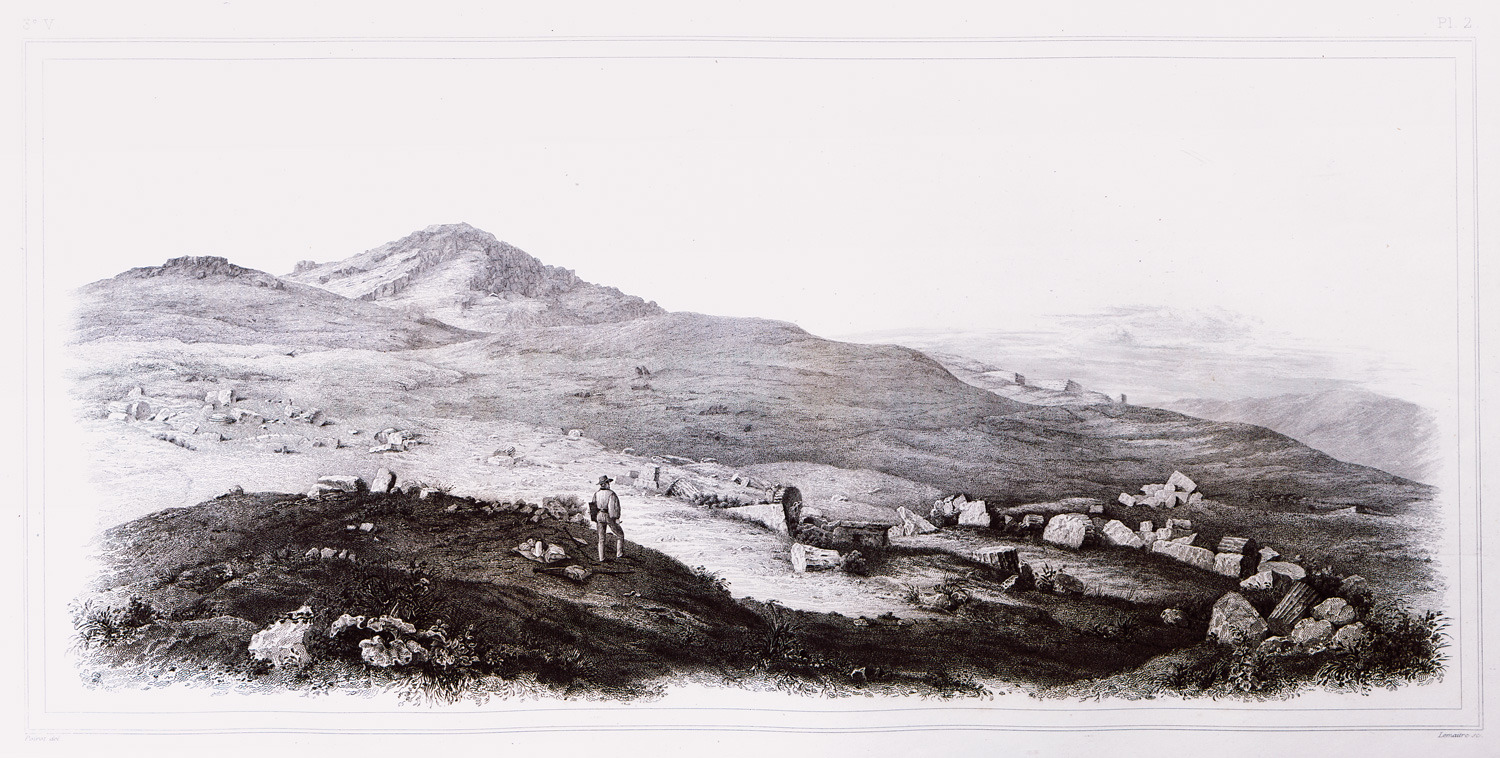
-
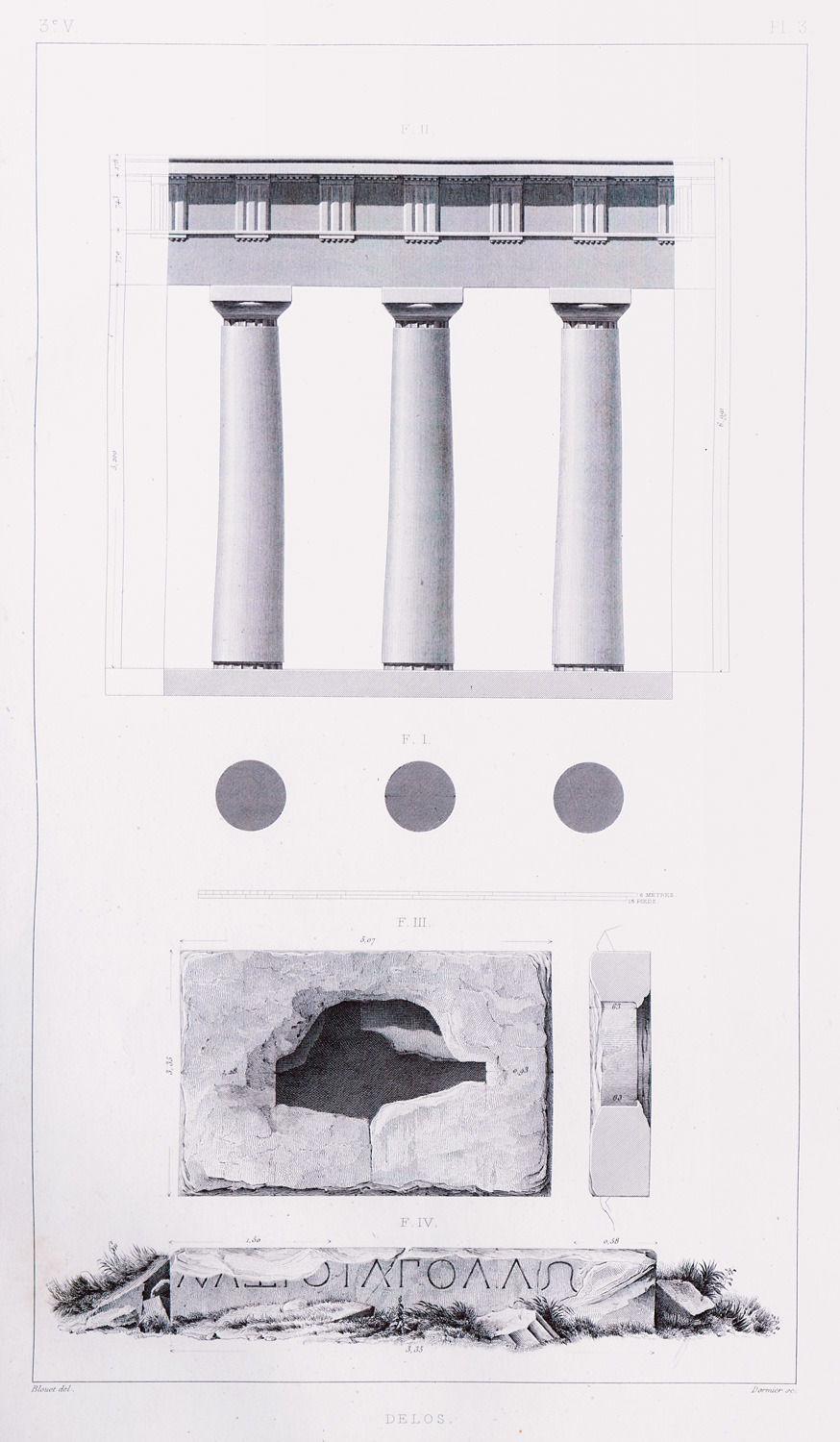
-
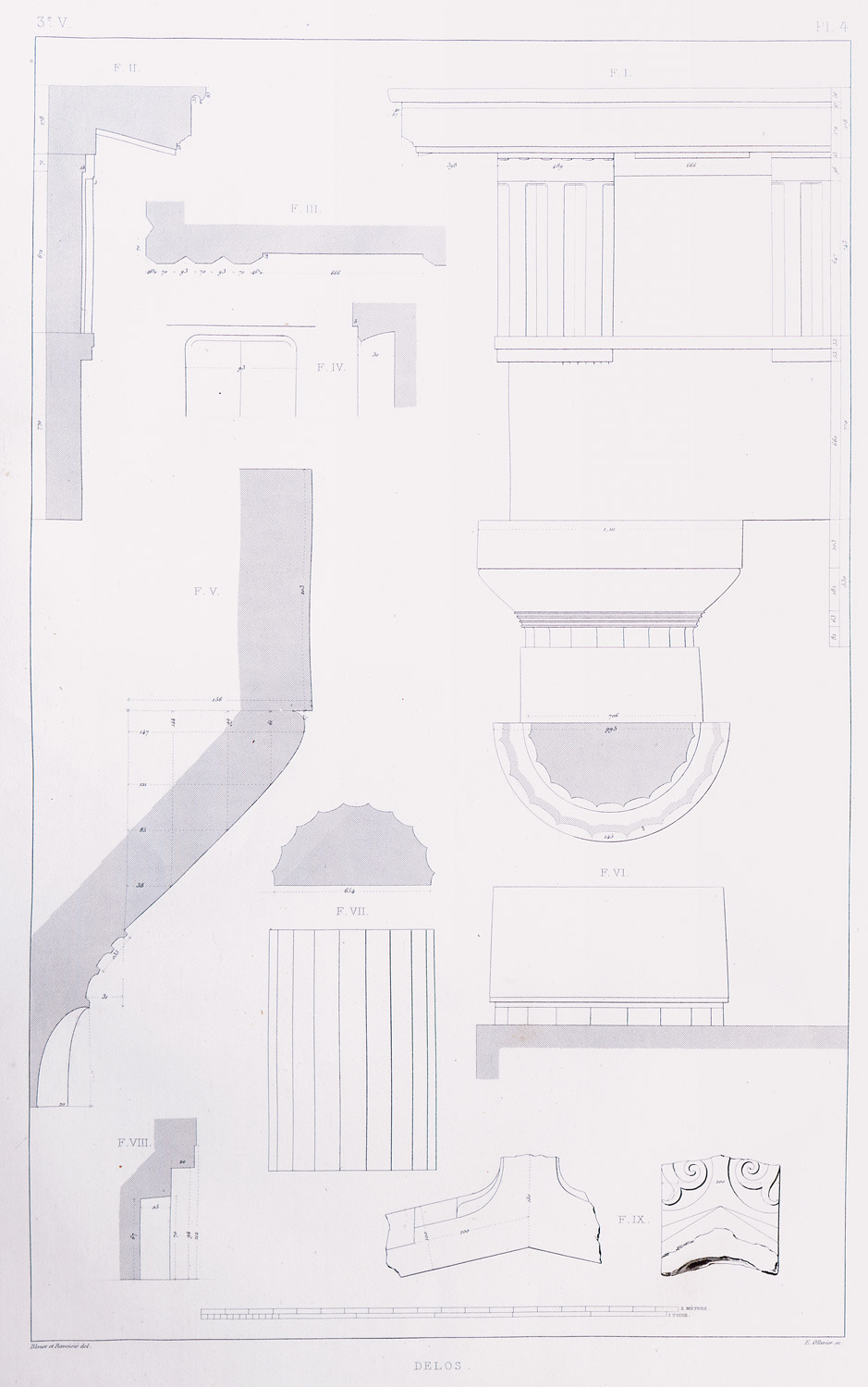
-
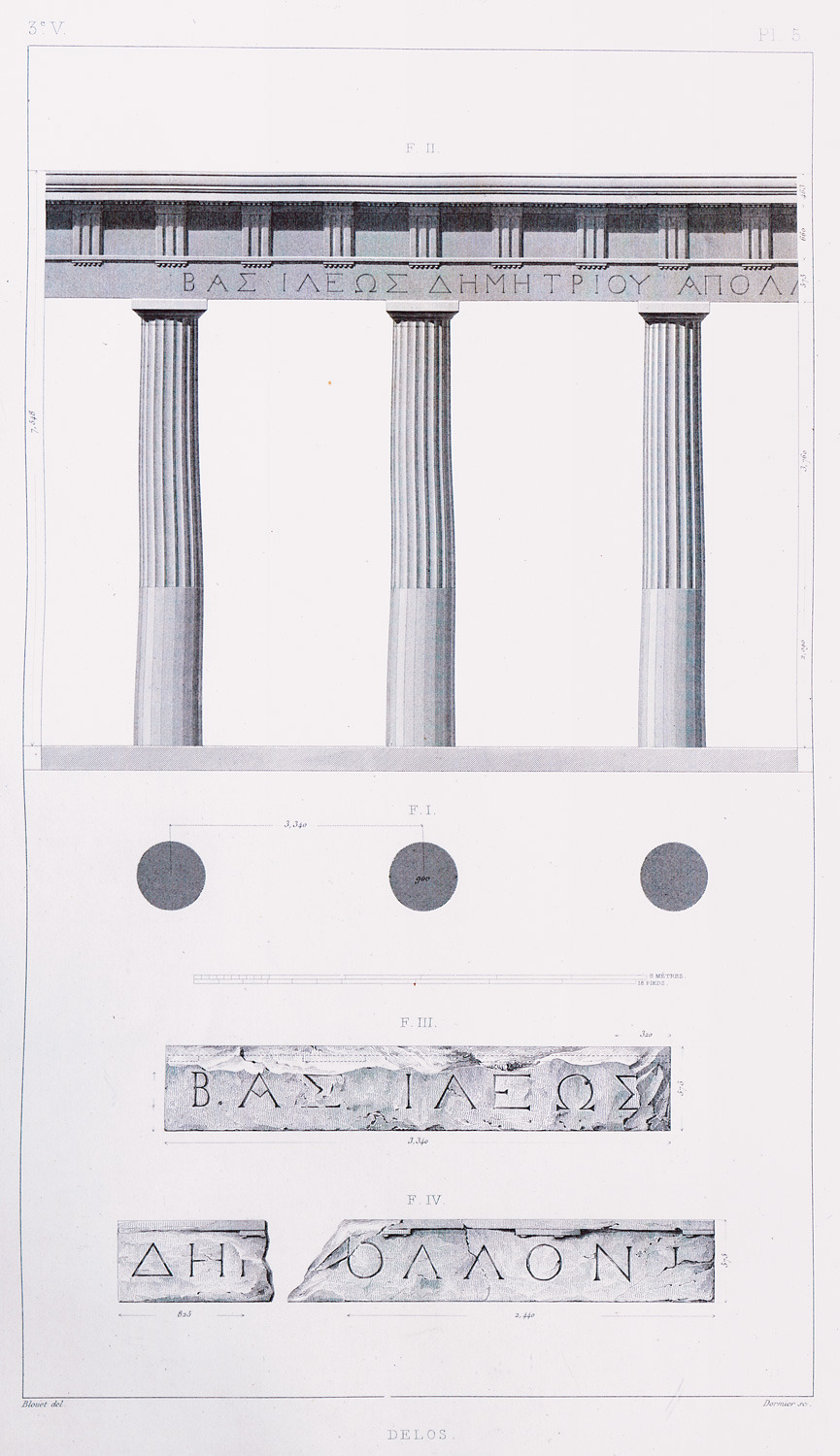
-
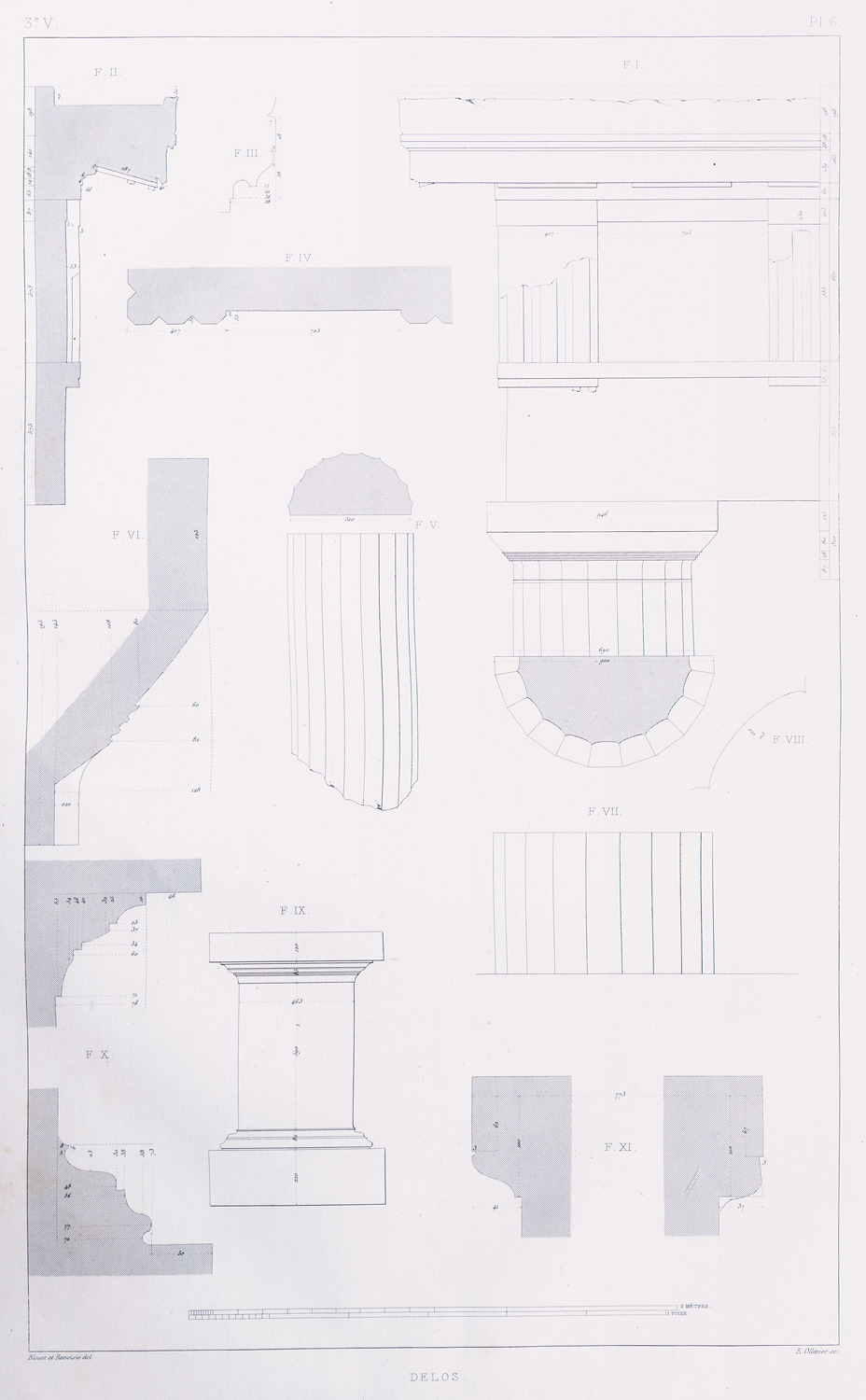
-
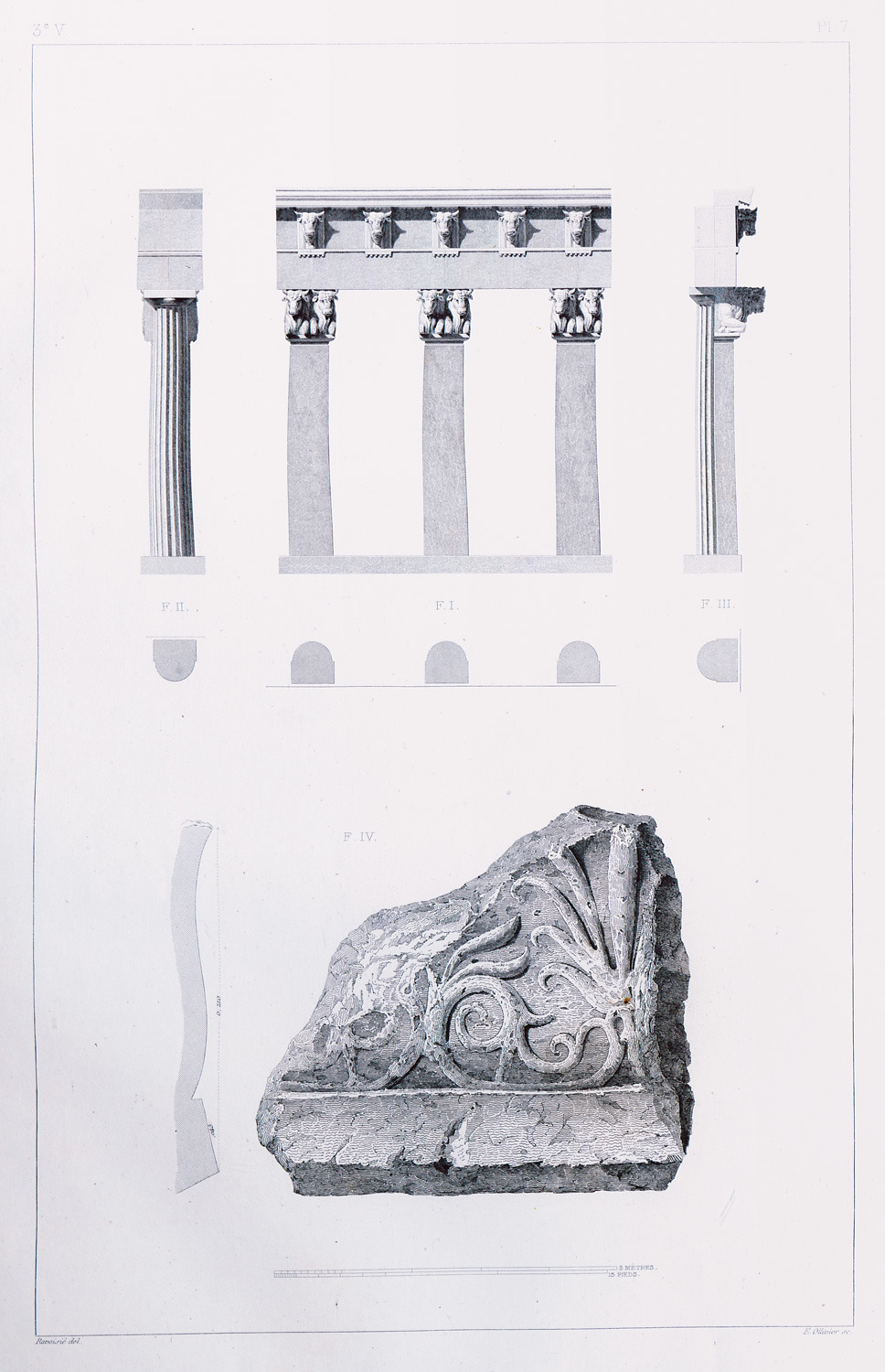
Plan of columns and decorative features of the Stoa of Antigonus Gonatas at Delos island.
-
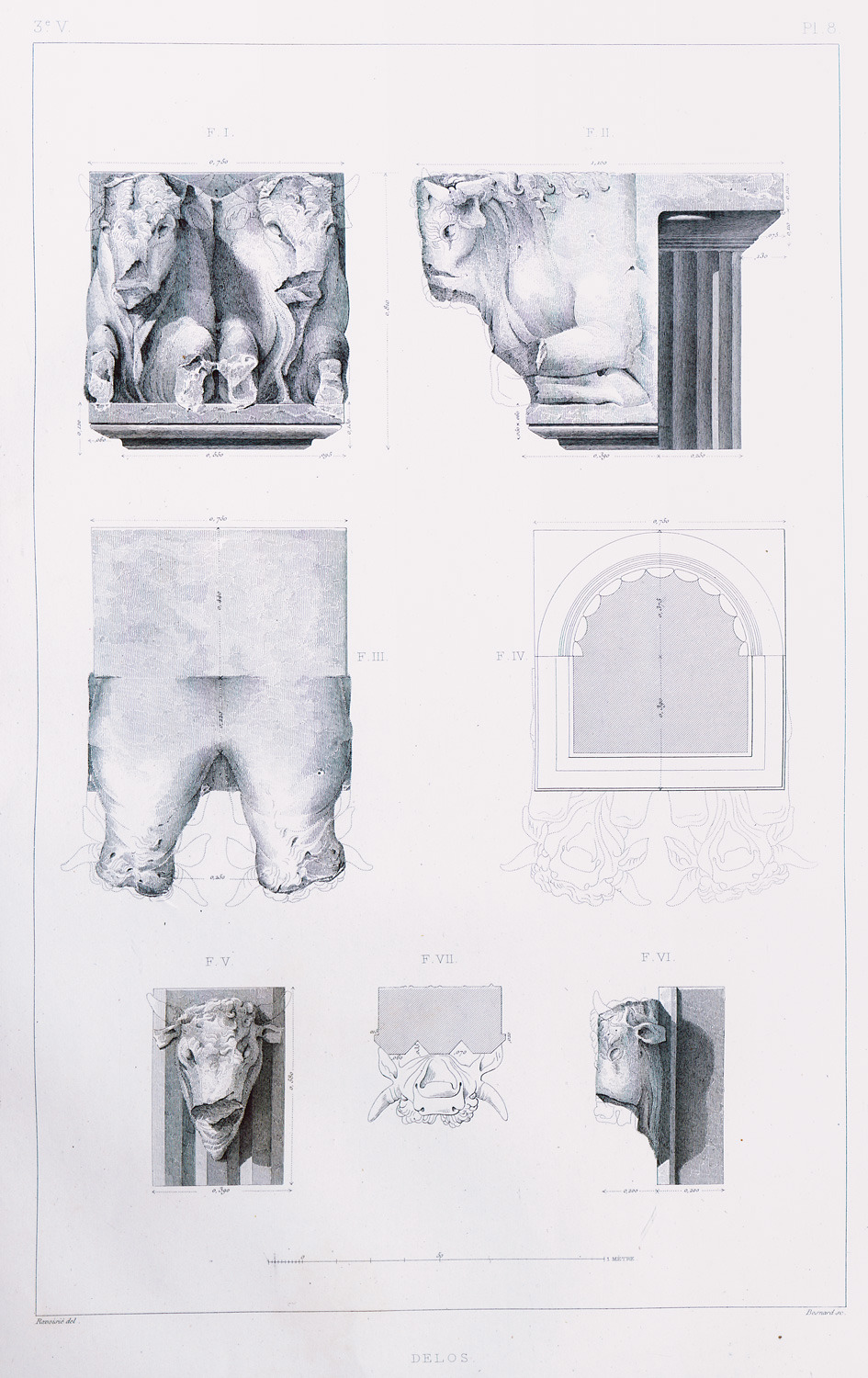
-
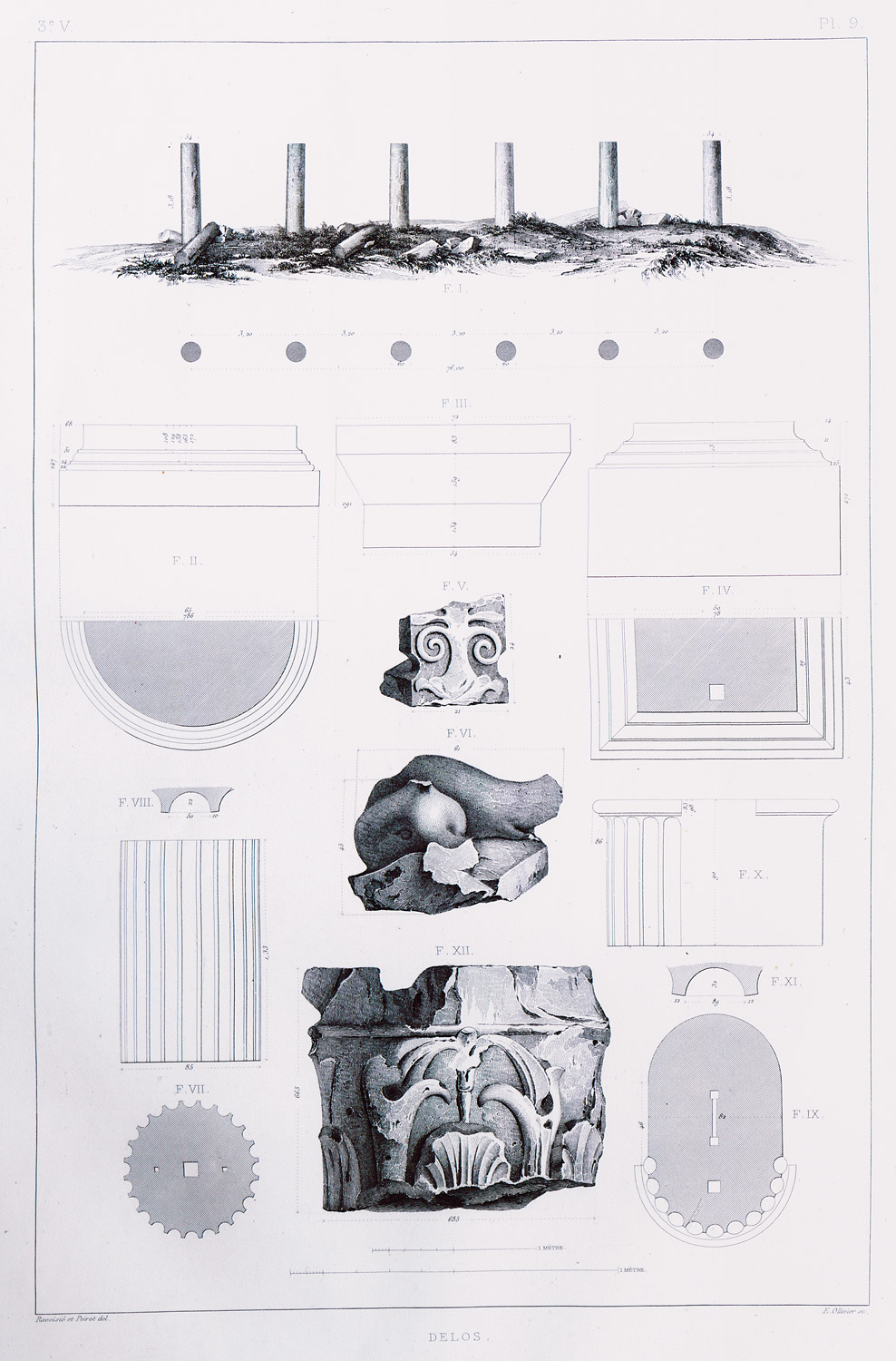
-
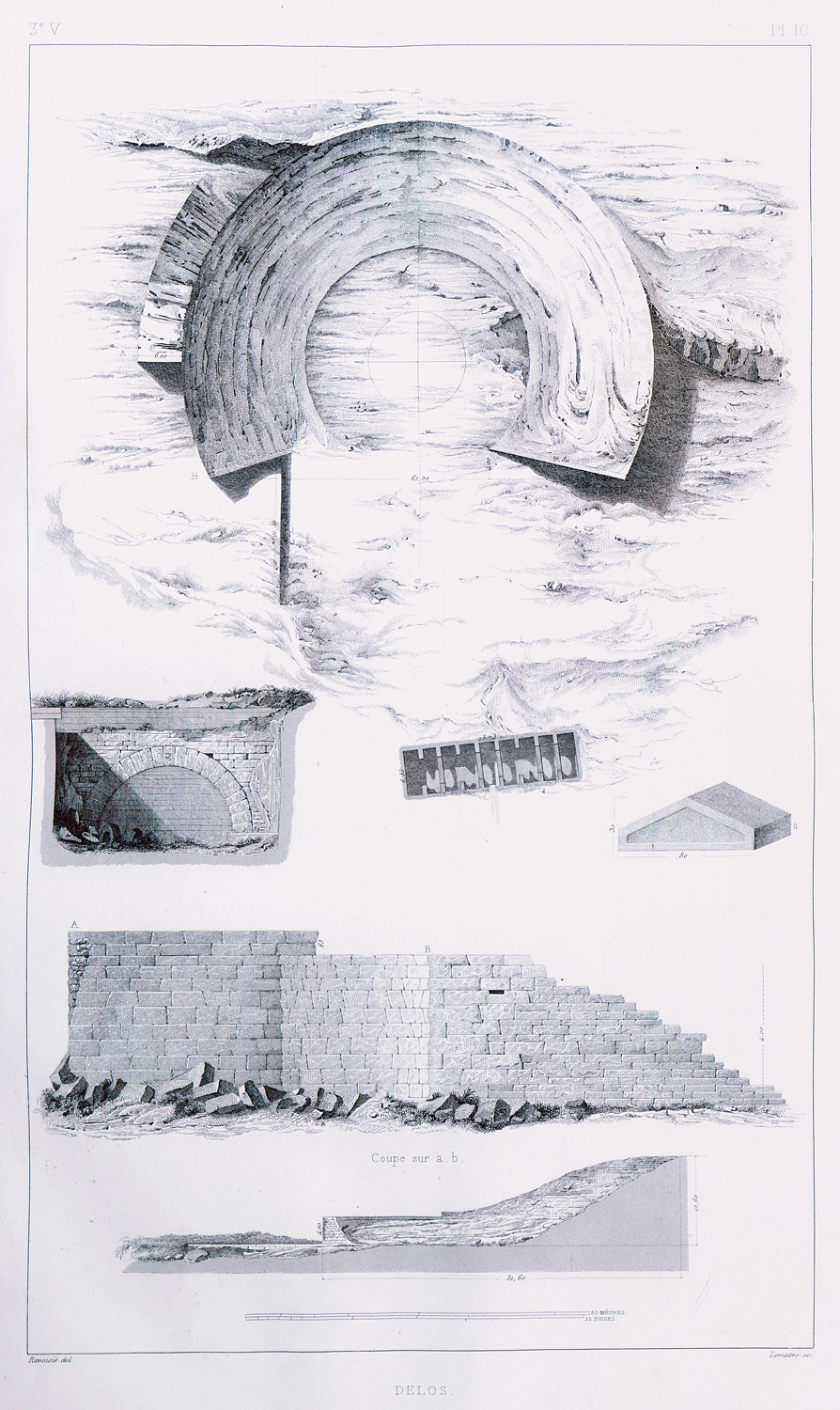
-
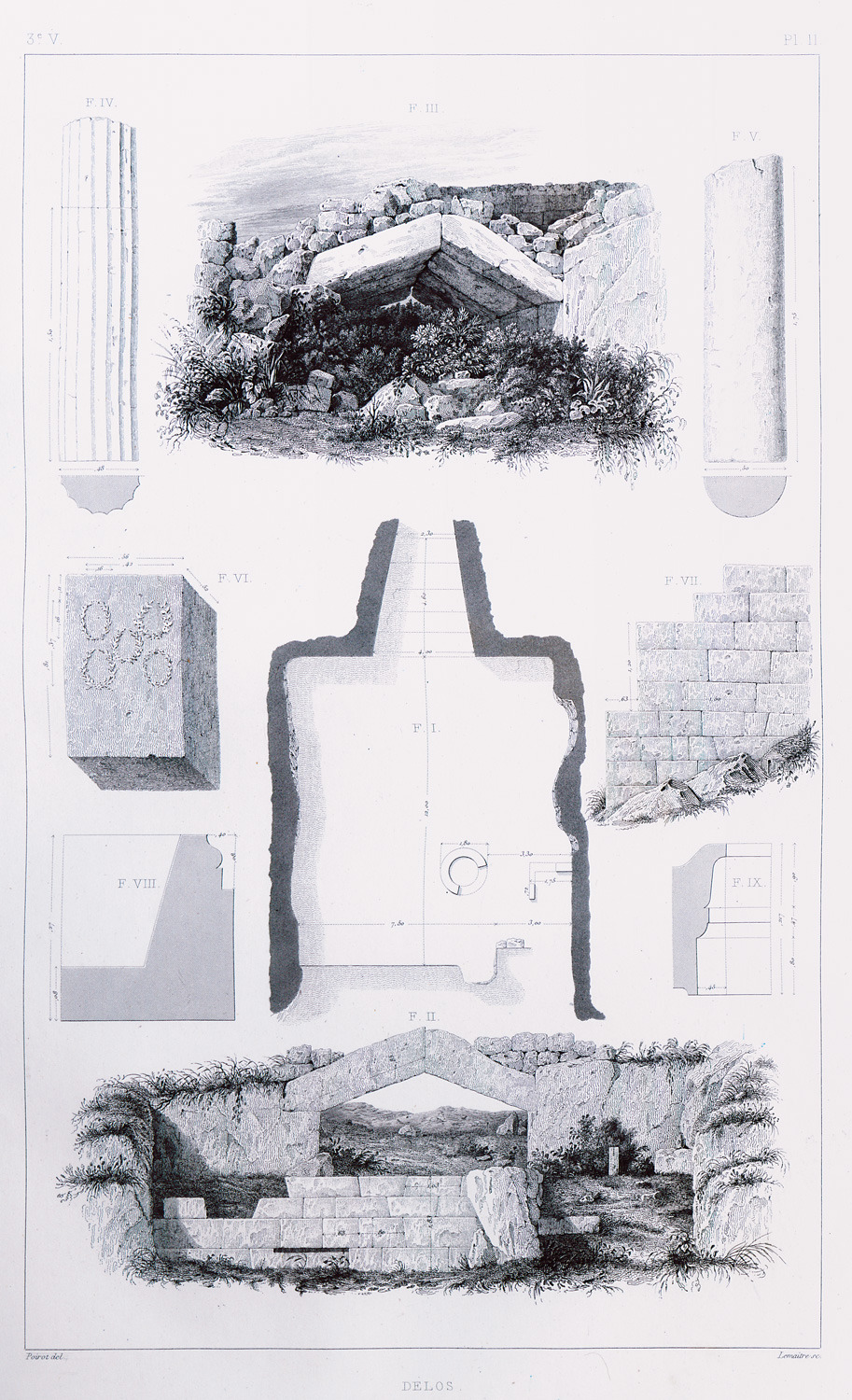
-
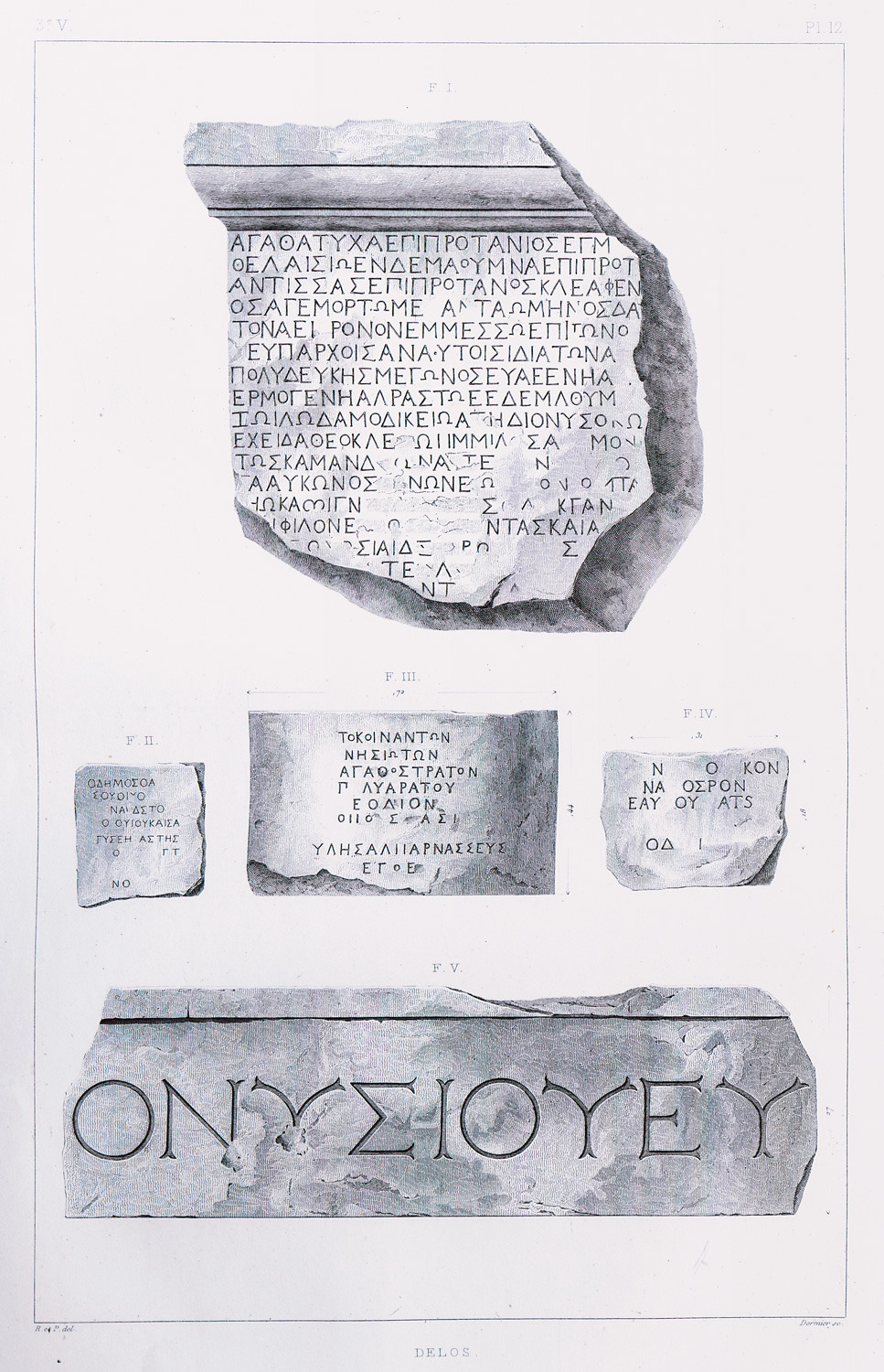
-
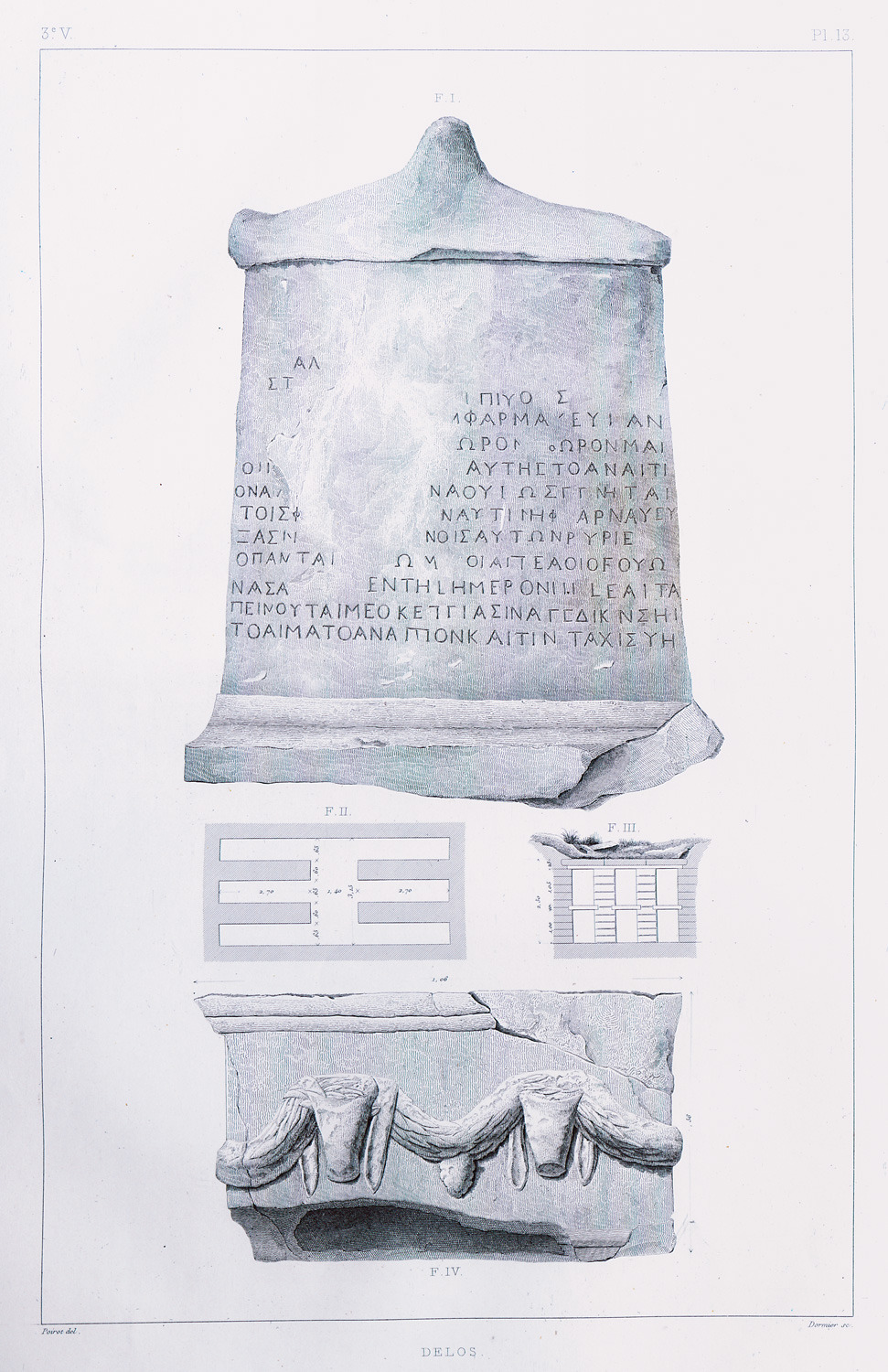
-
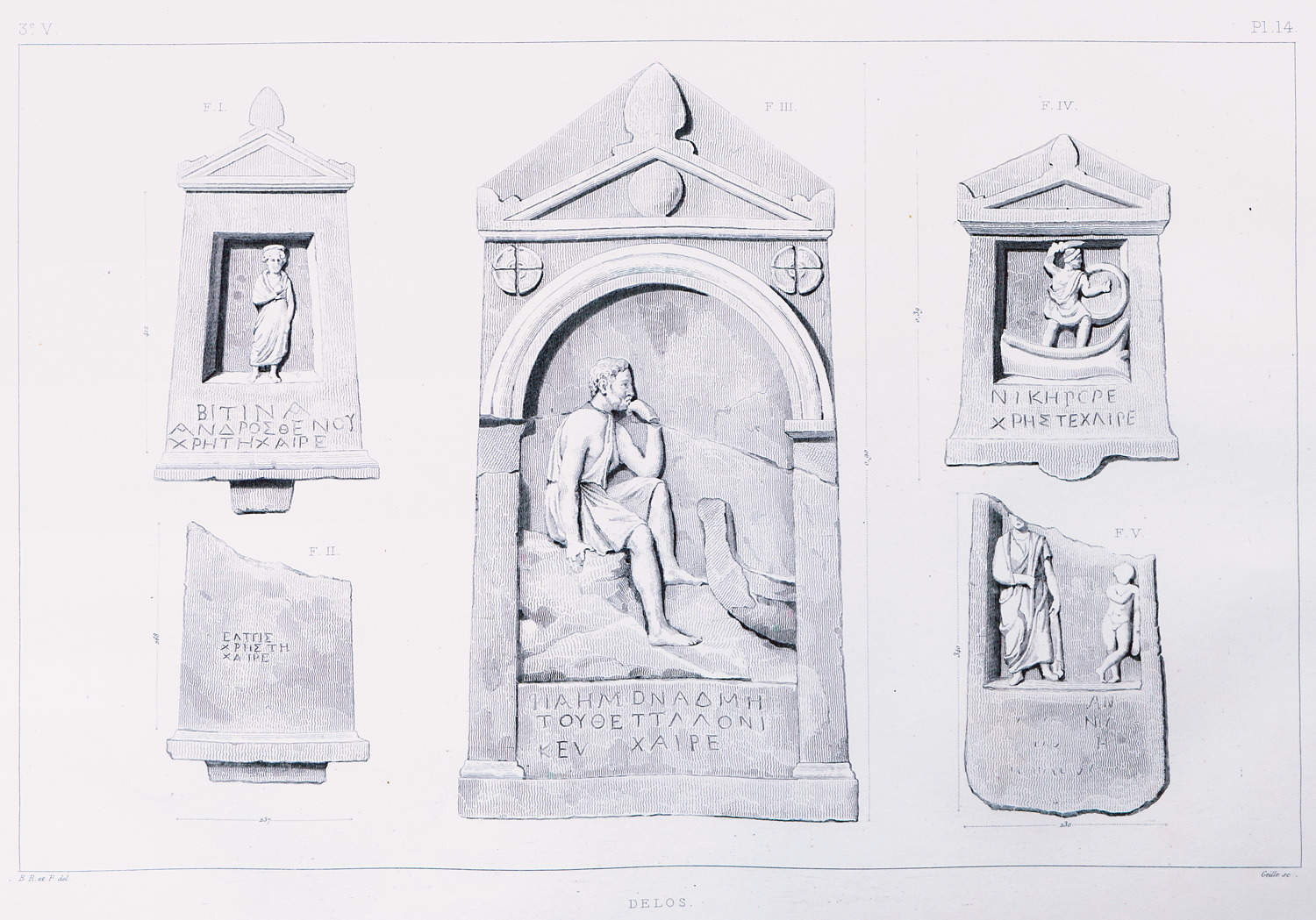
-
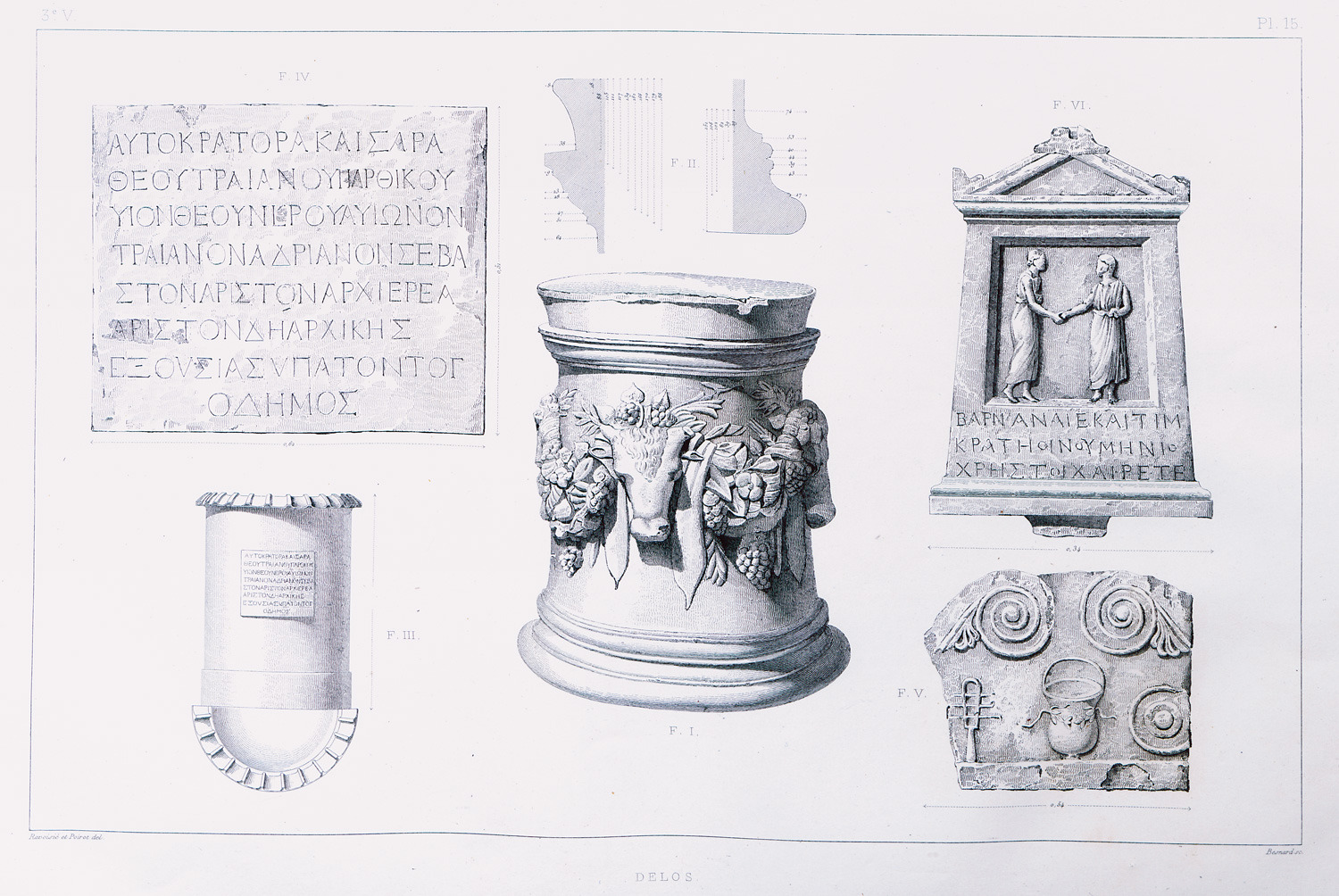
Antiquities from Delos island, which the author saw on Syros island.
-
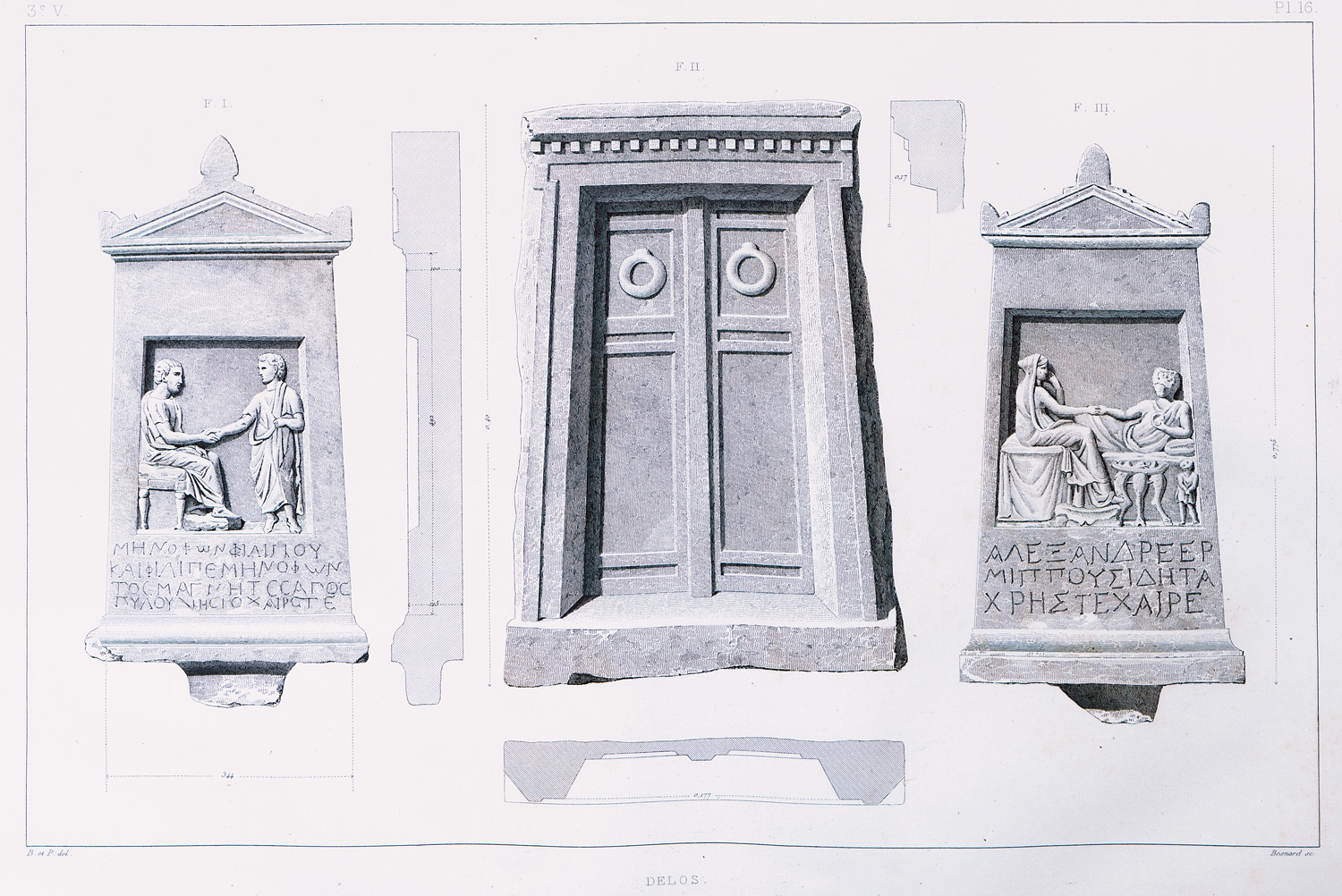
Funerary steles from Delos island, which the author saw on Syros island.
-
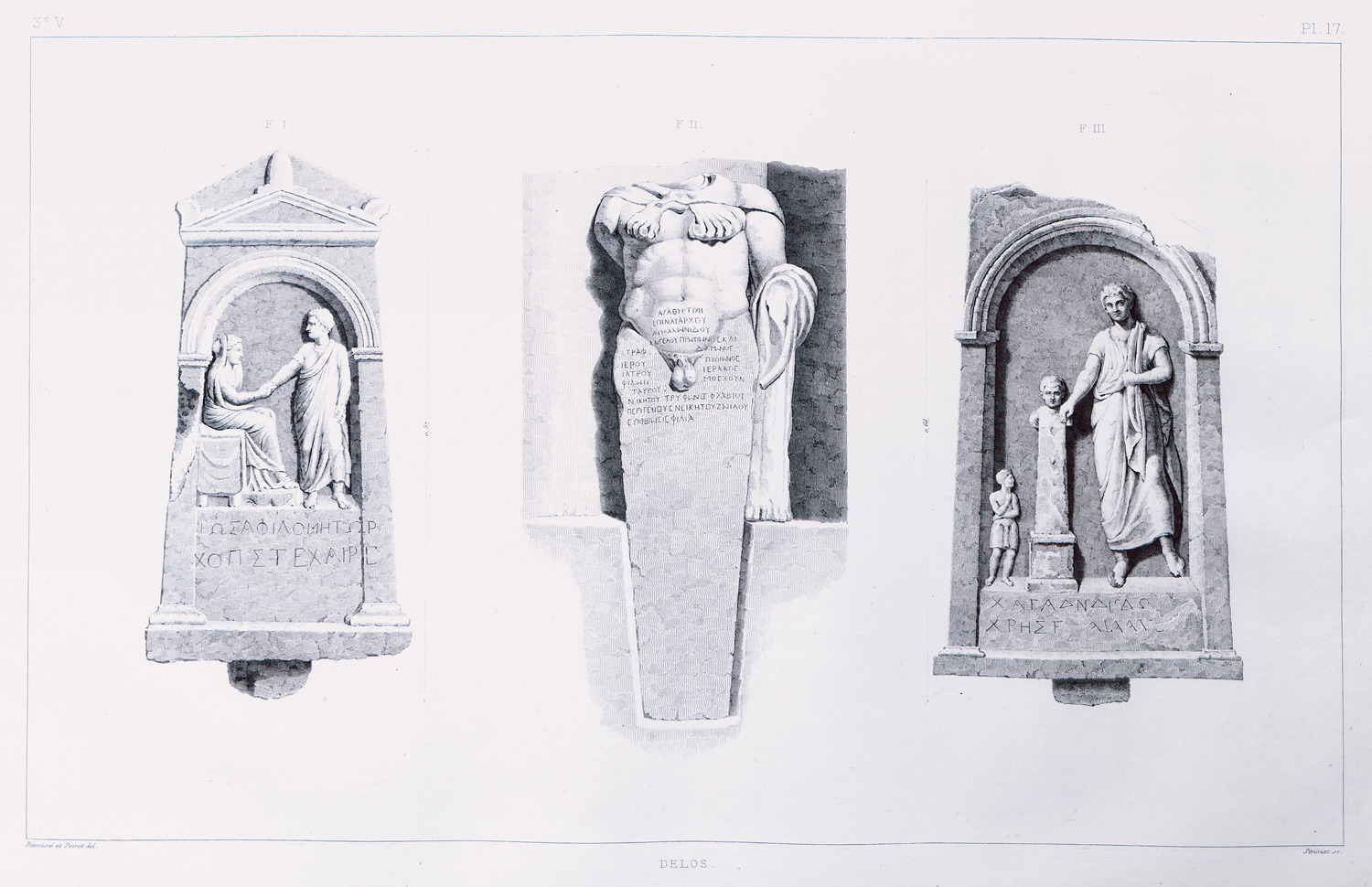
-
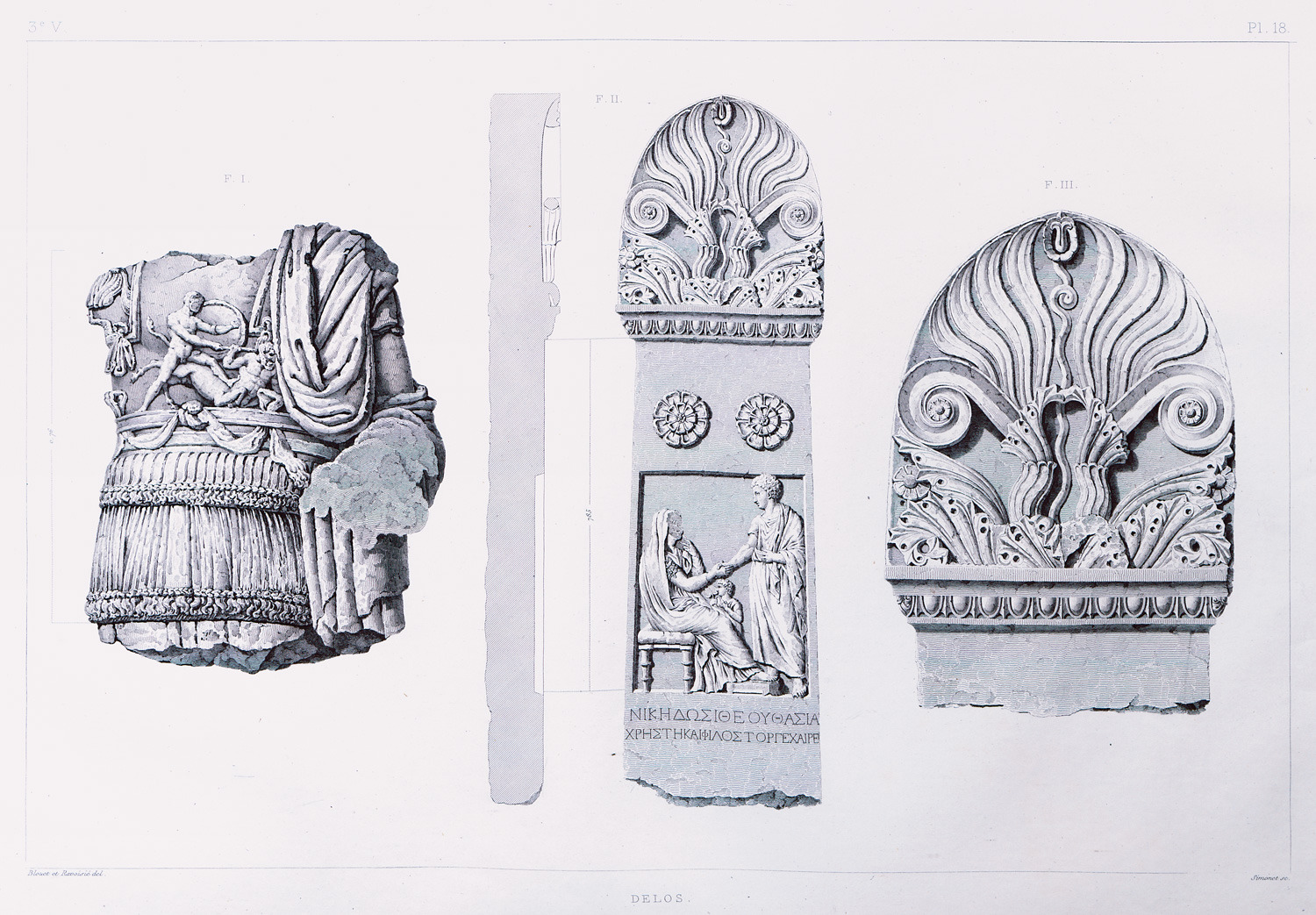
-
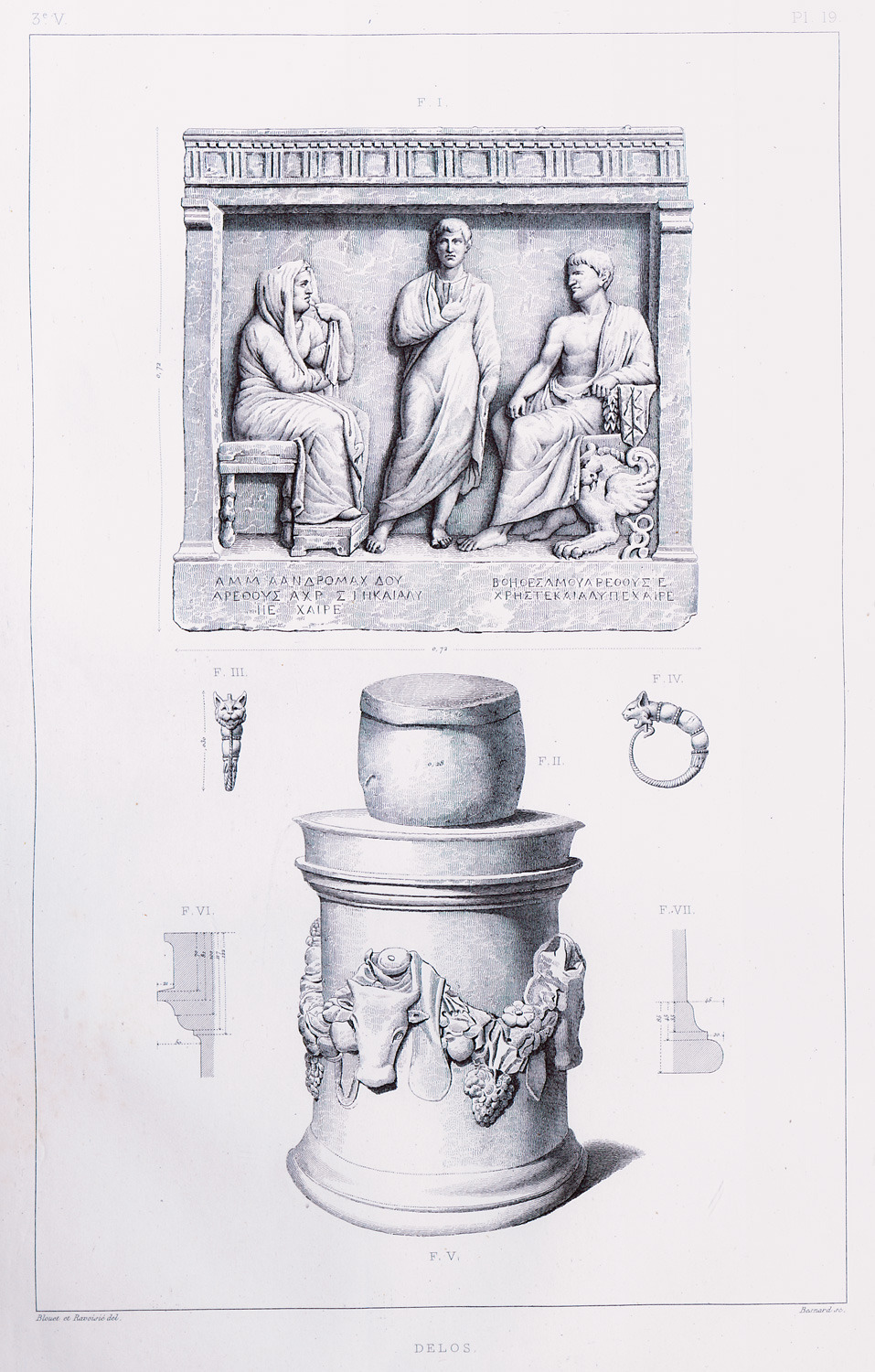
-
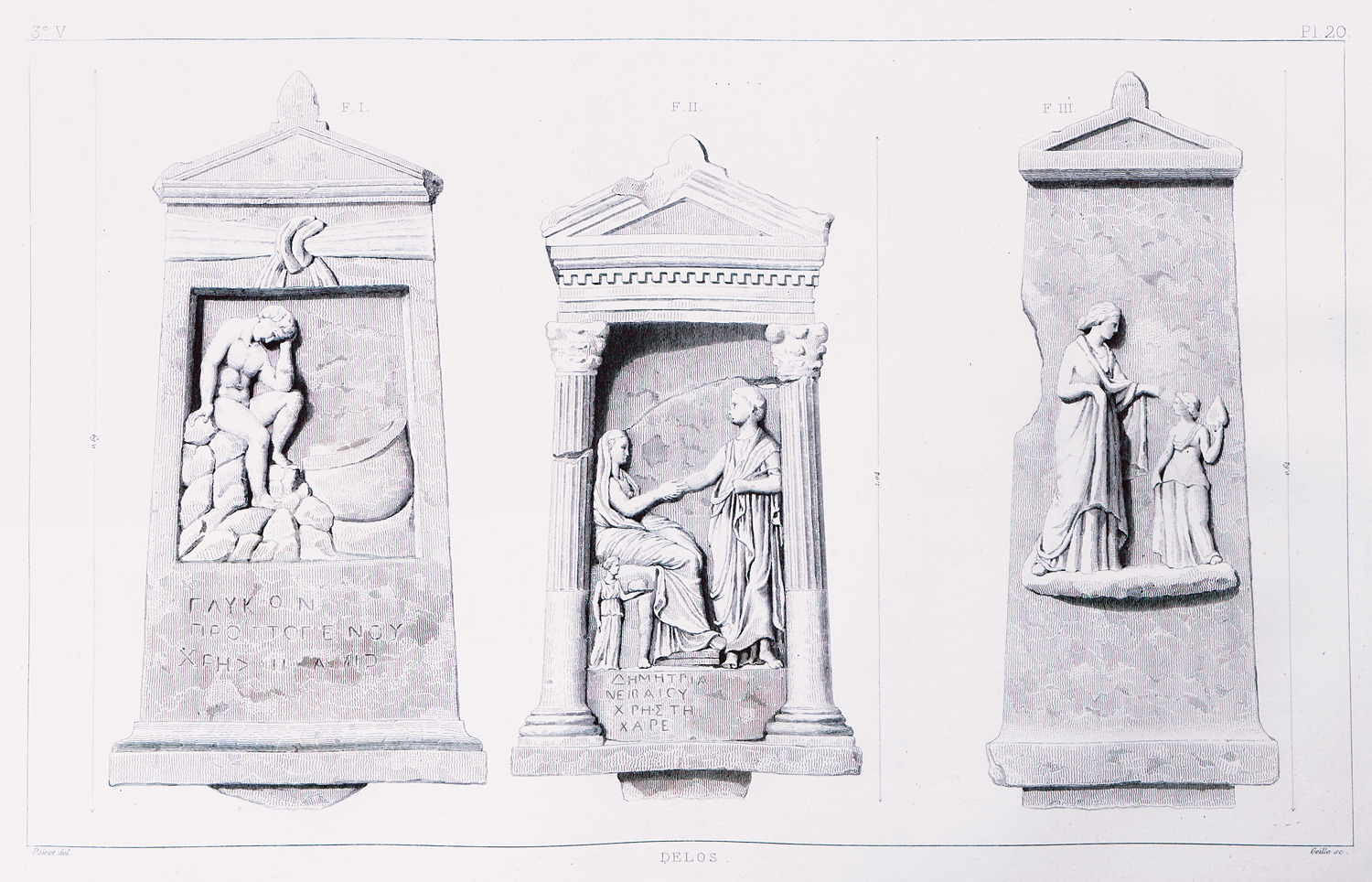
-
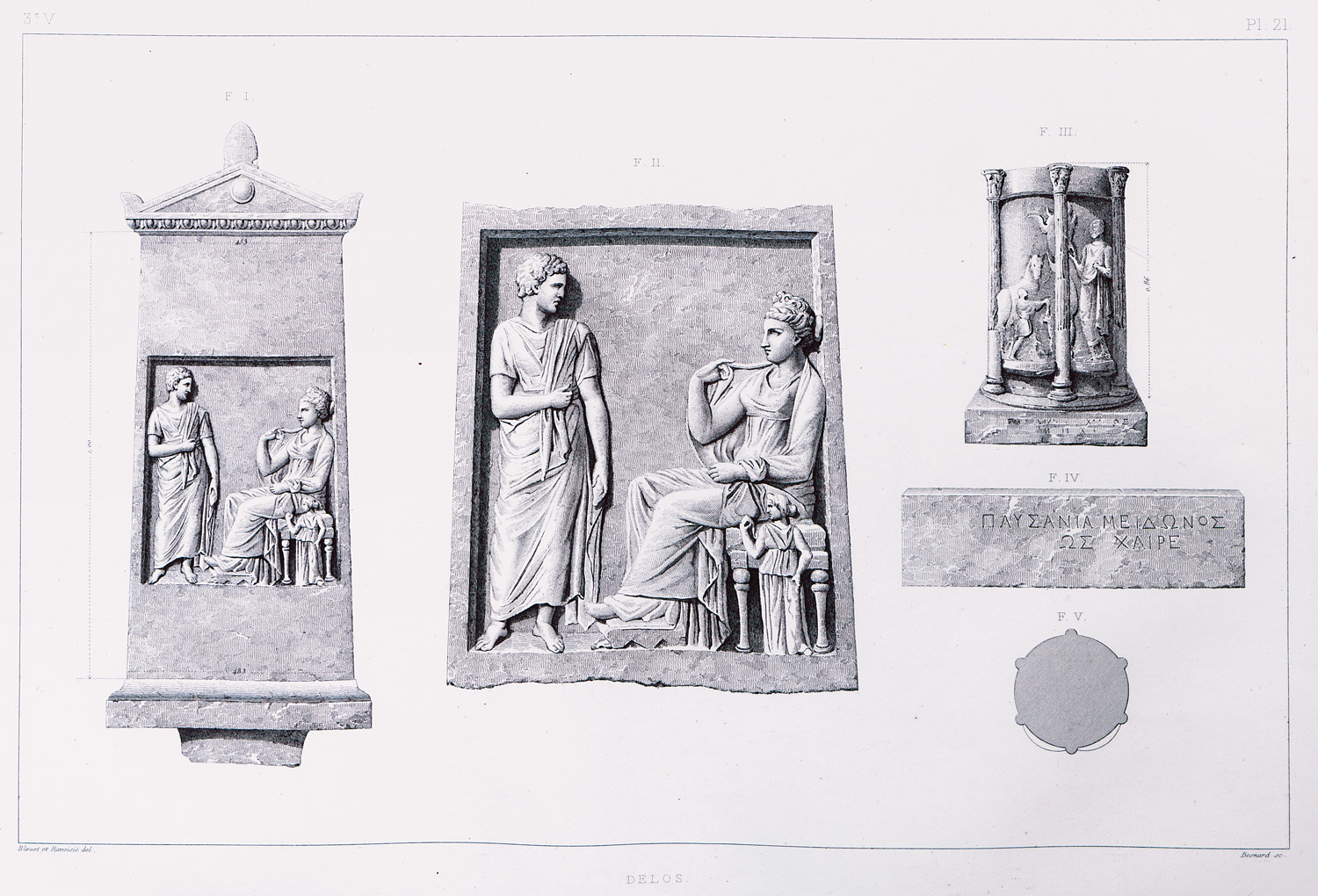
-
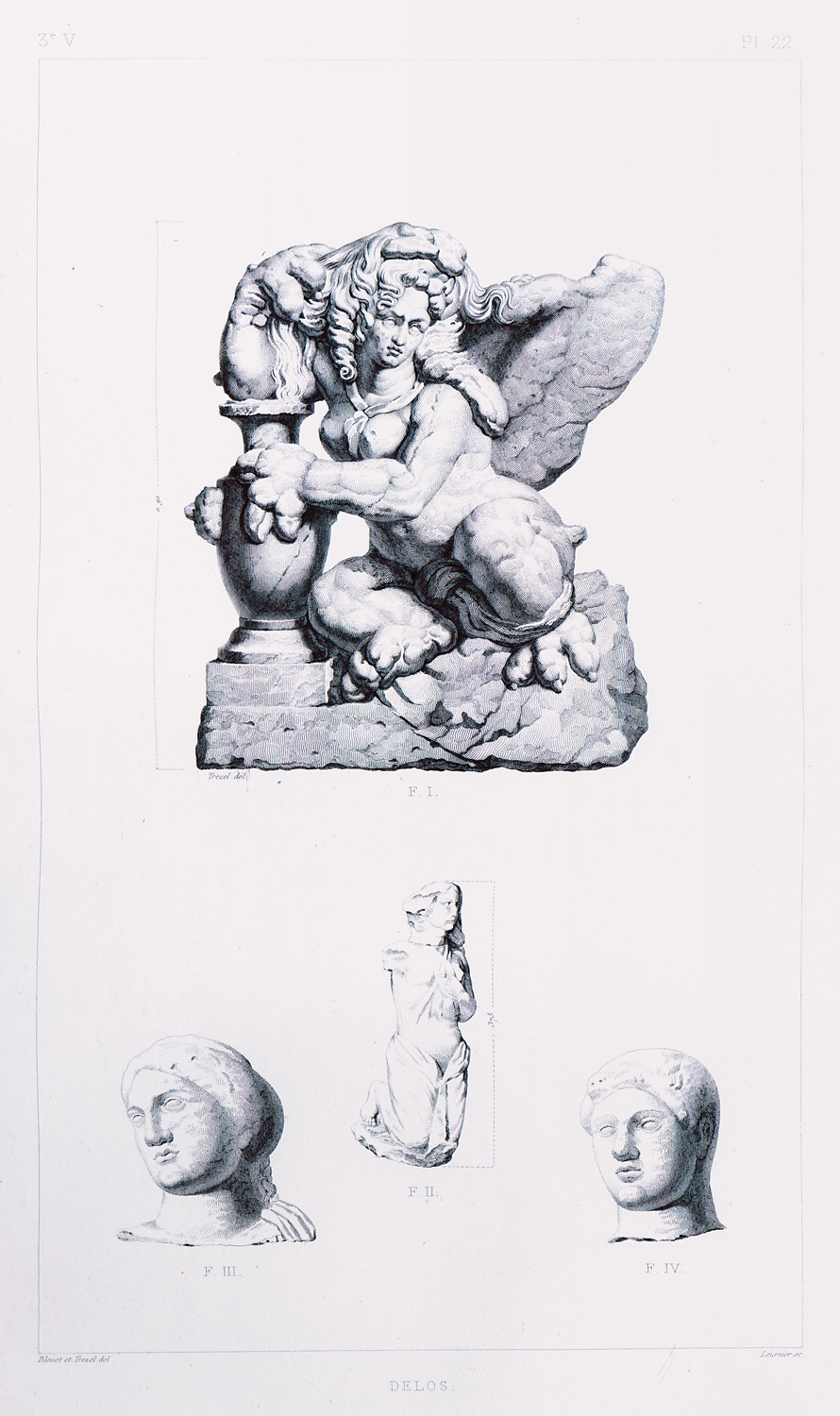
1. Sphinx from Delos which the author saw on Aegina island. 2. Statuettes from Delos.
-
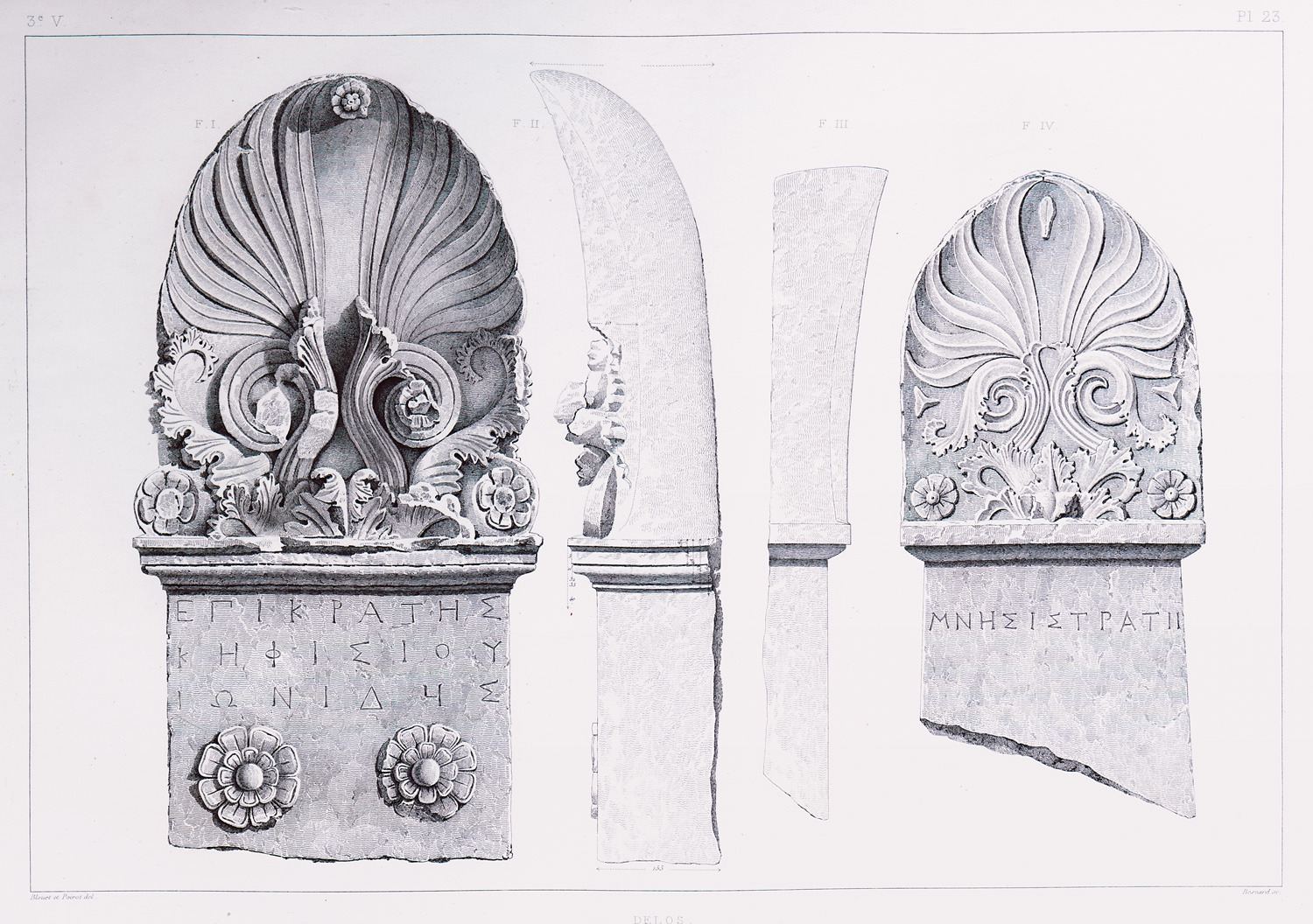
Antiquities from Delos island, which the author saw on Aegina island.
-
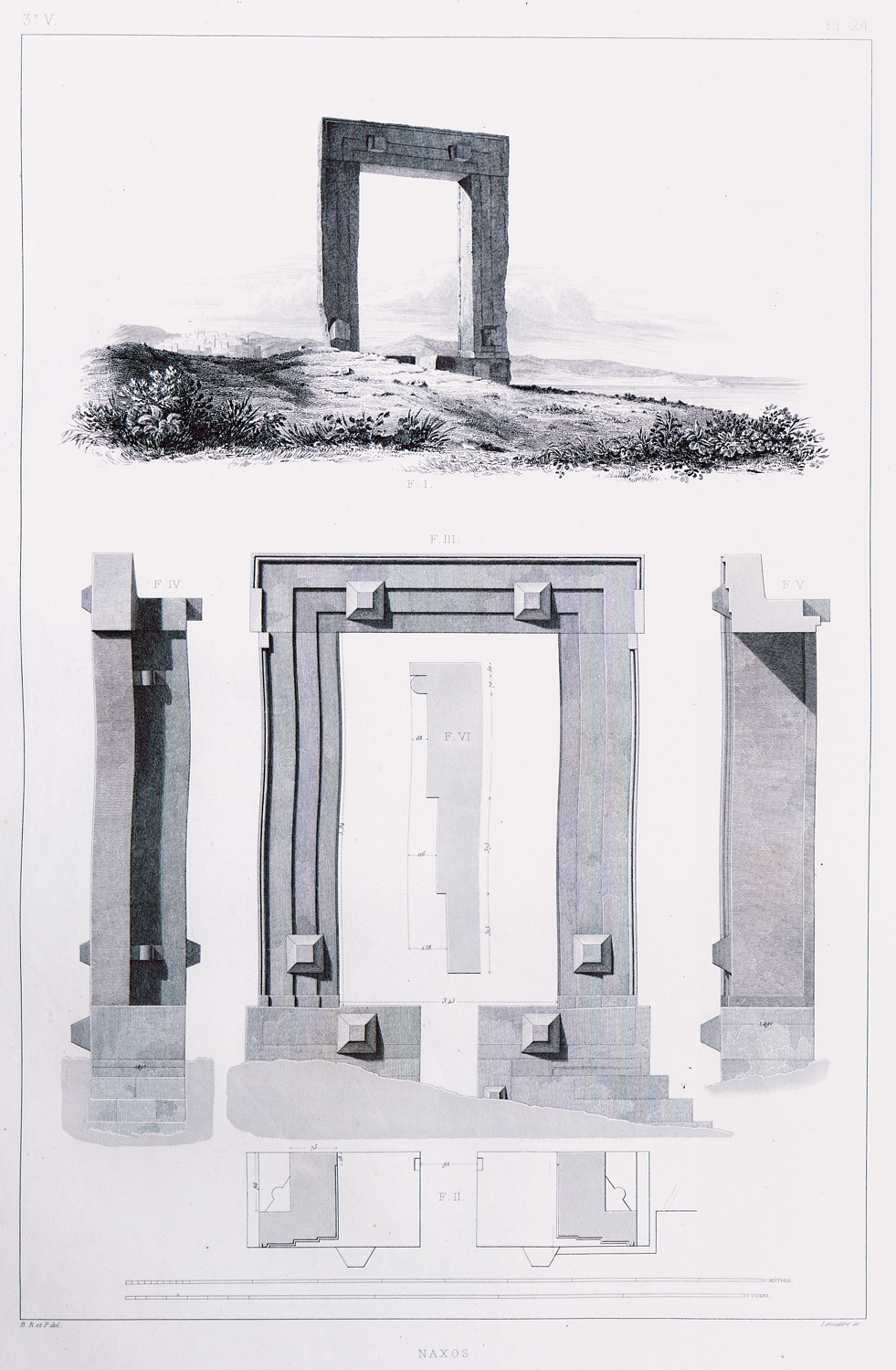
Portara, or Gate of the temple of Apollo, Naxos island: View, section and architectural features.
-
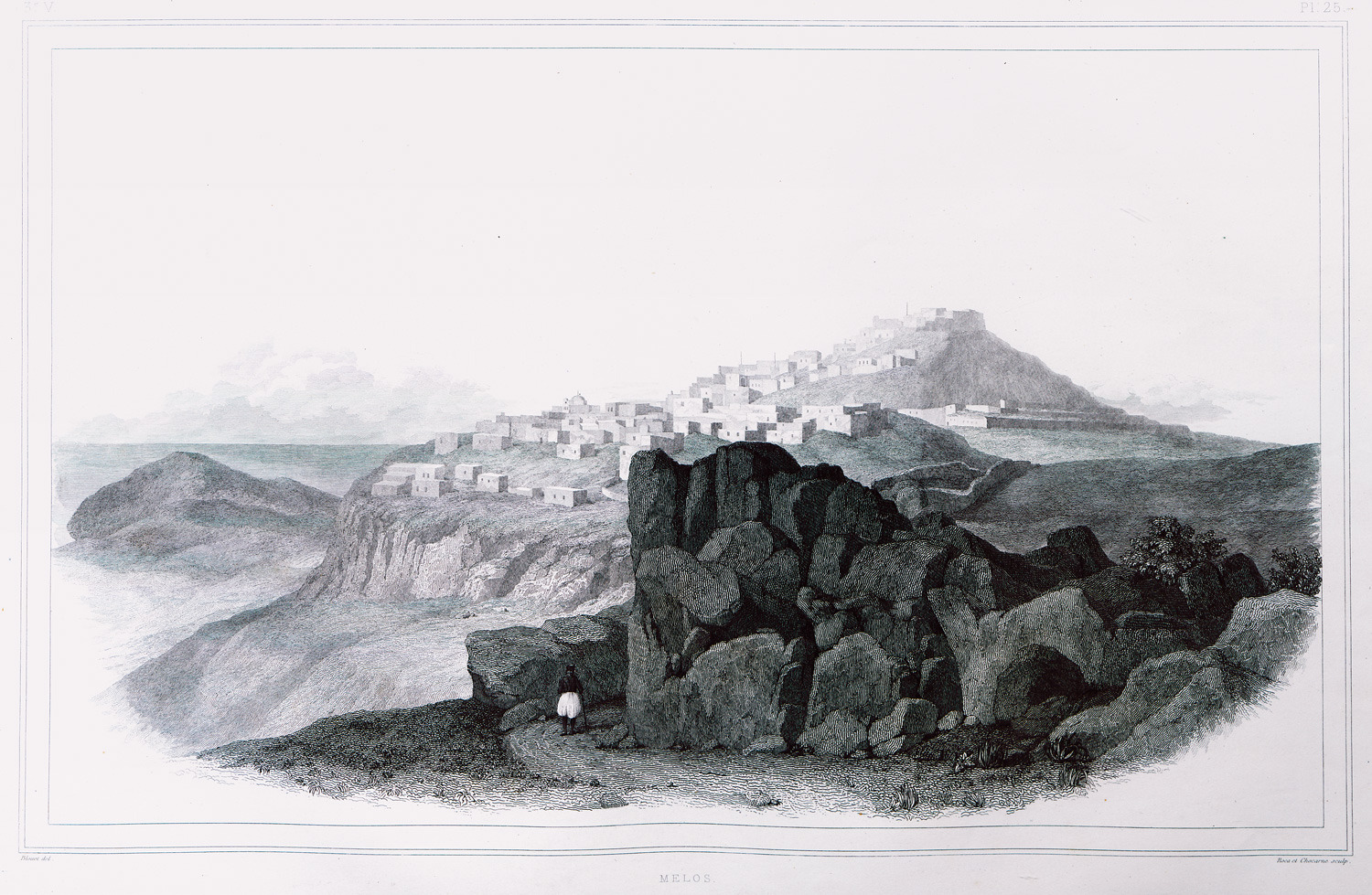
-
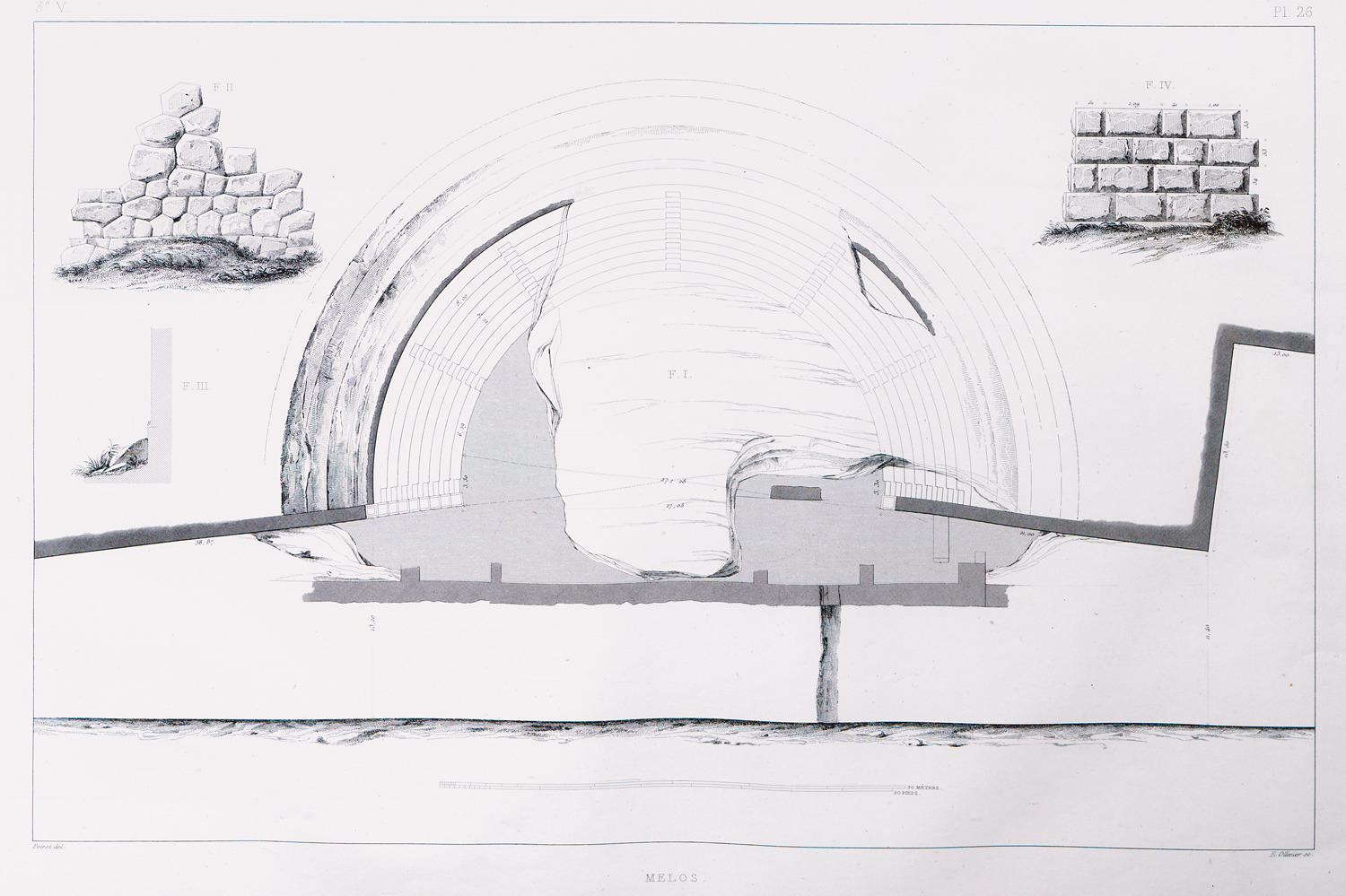
Plan of the Roman theatre of Milos with details of the retaining wall.
-
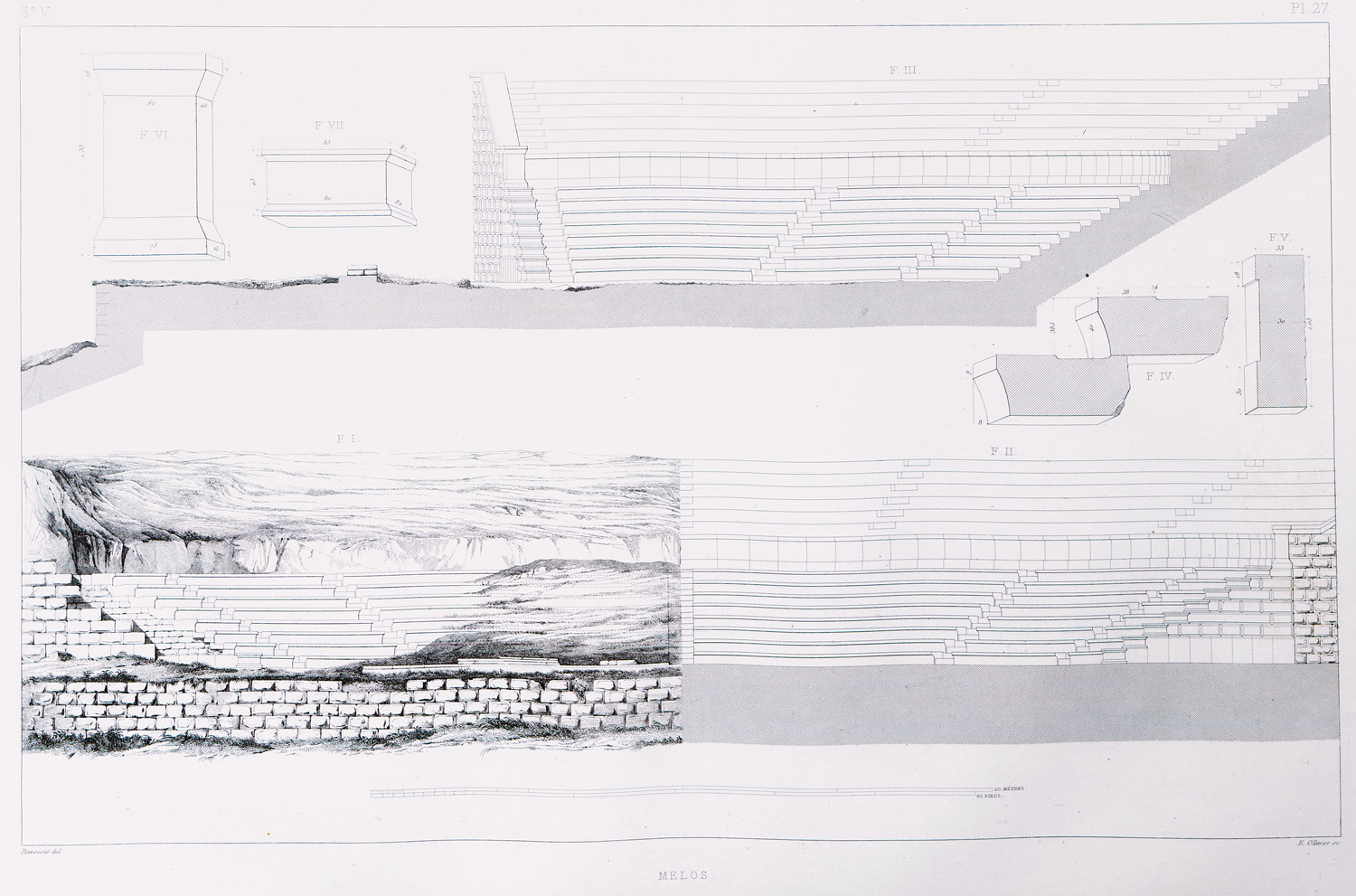
Reconstruction and architectural features of the Roman theatre of Milos.
-
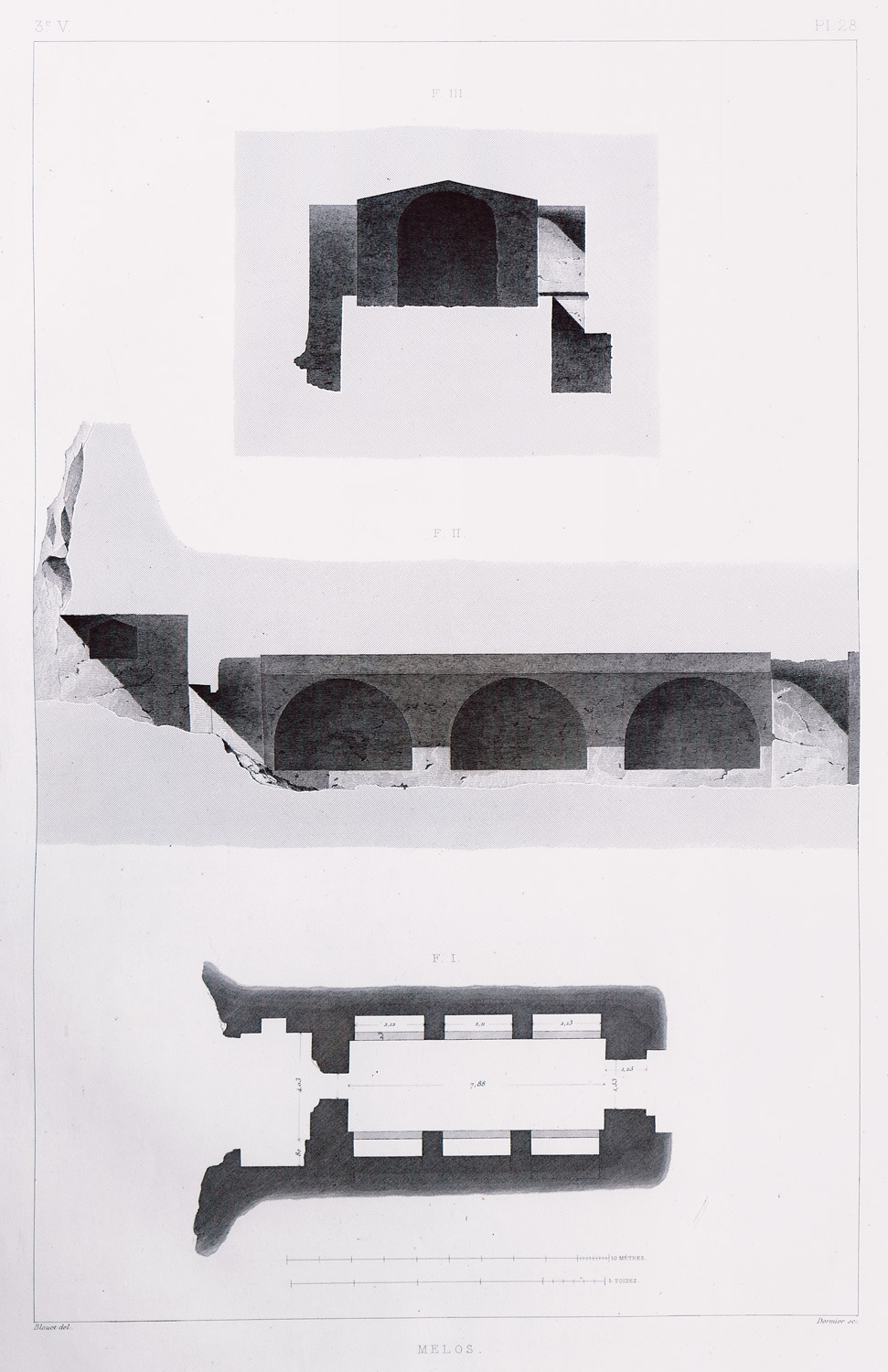
View of the entrance, section and plan of the Christian catacombs, Milos island.
-
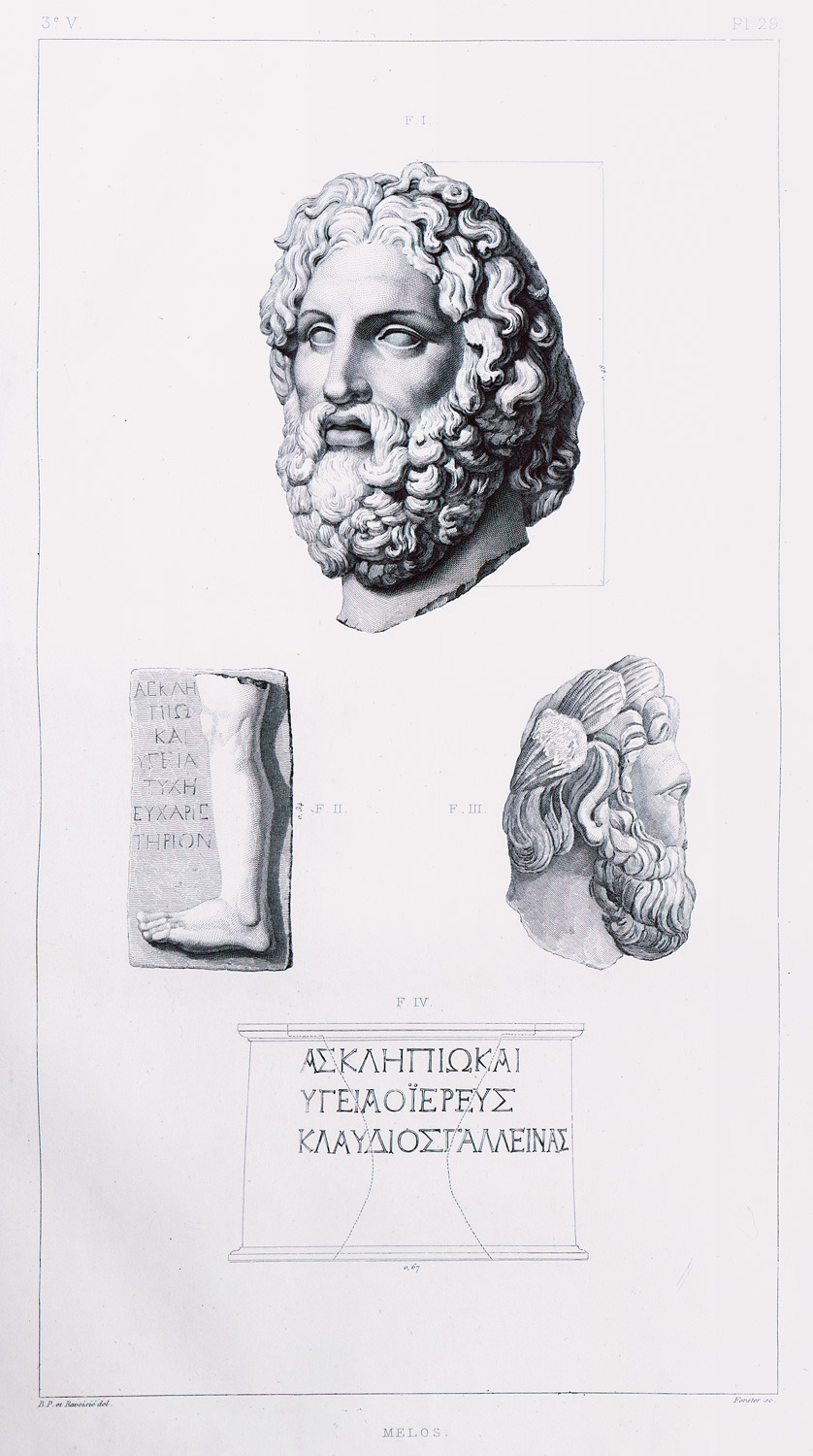
-
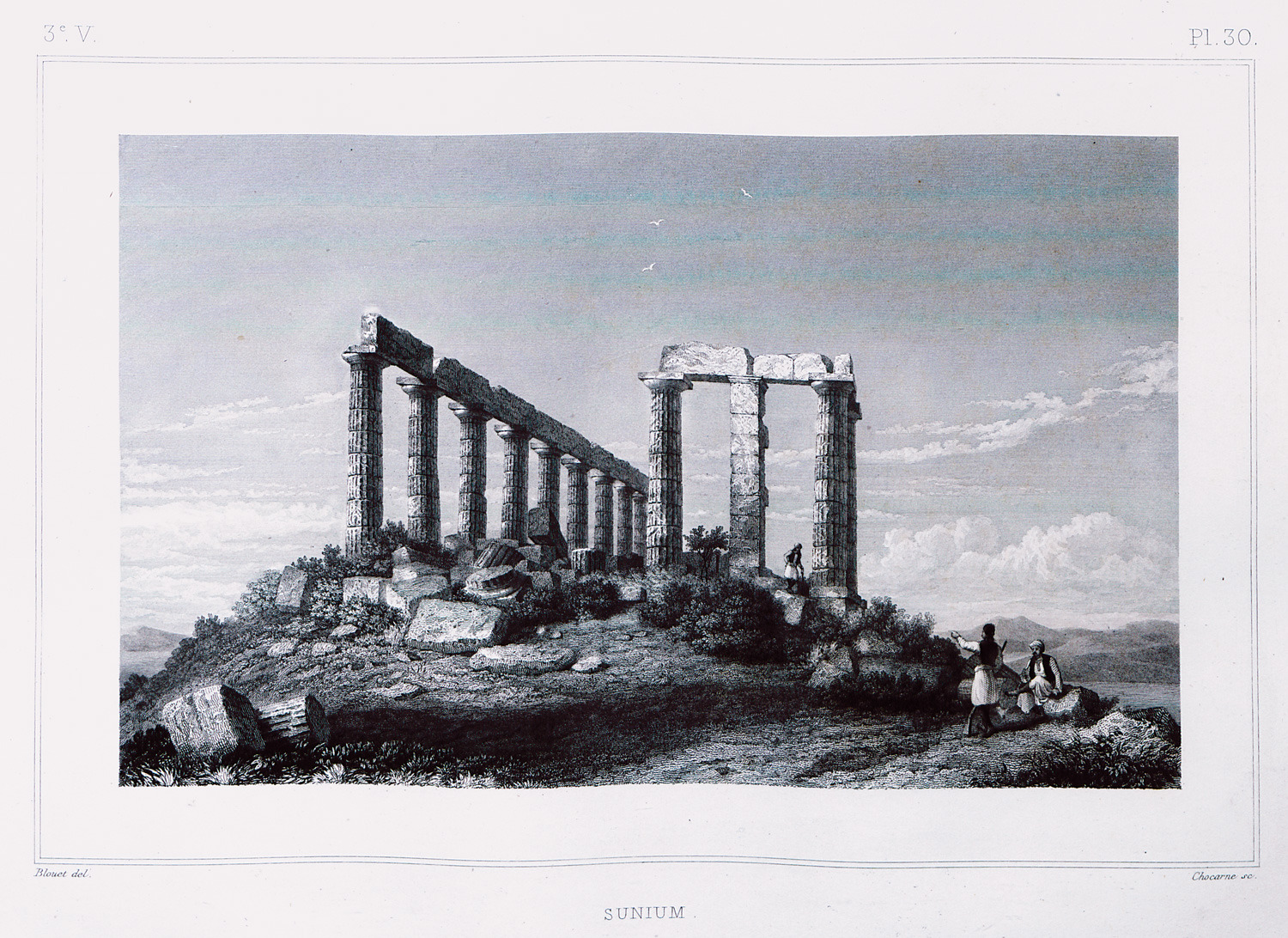
-
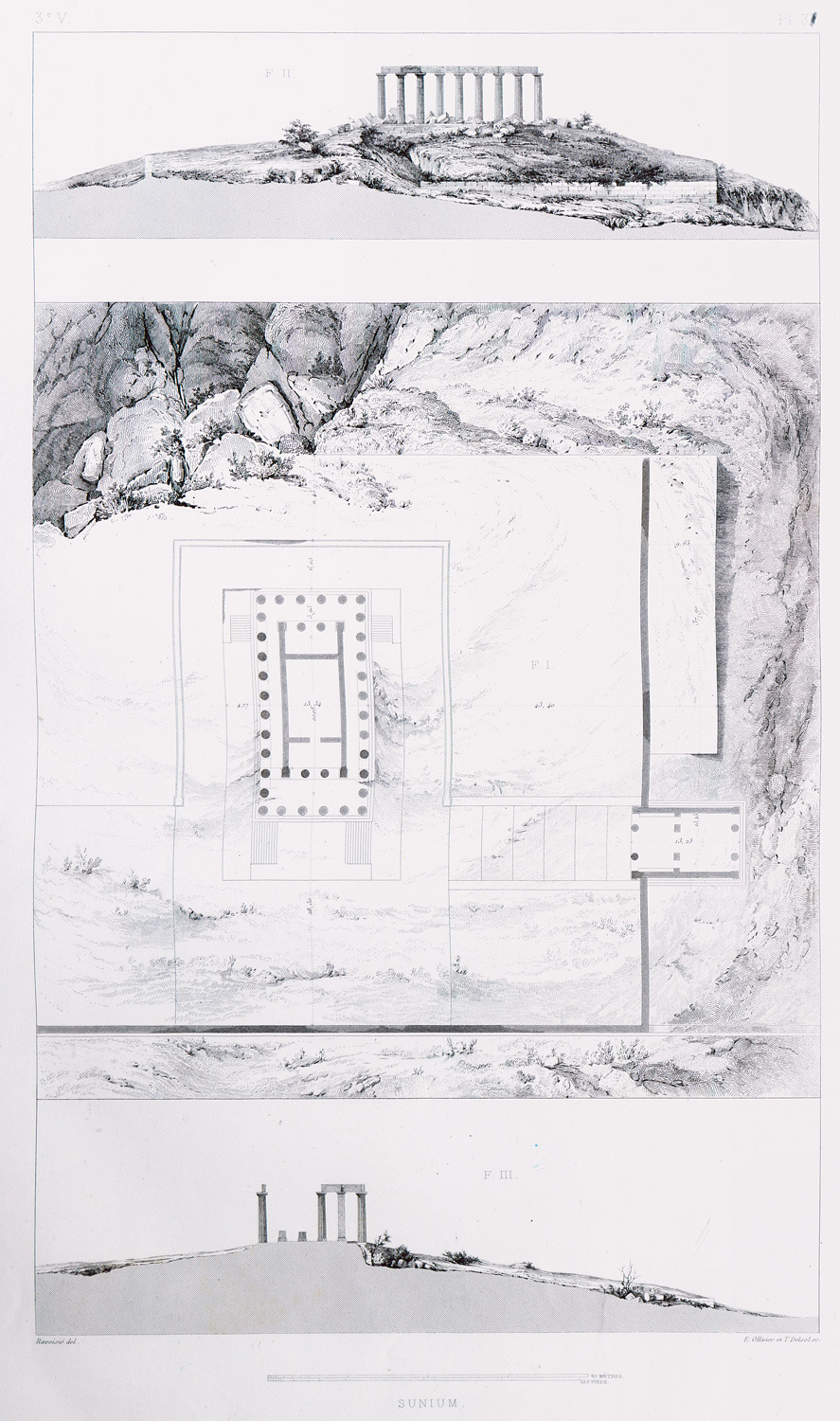
-
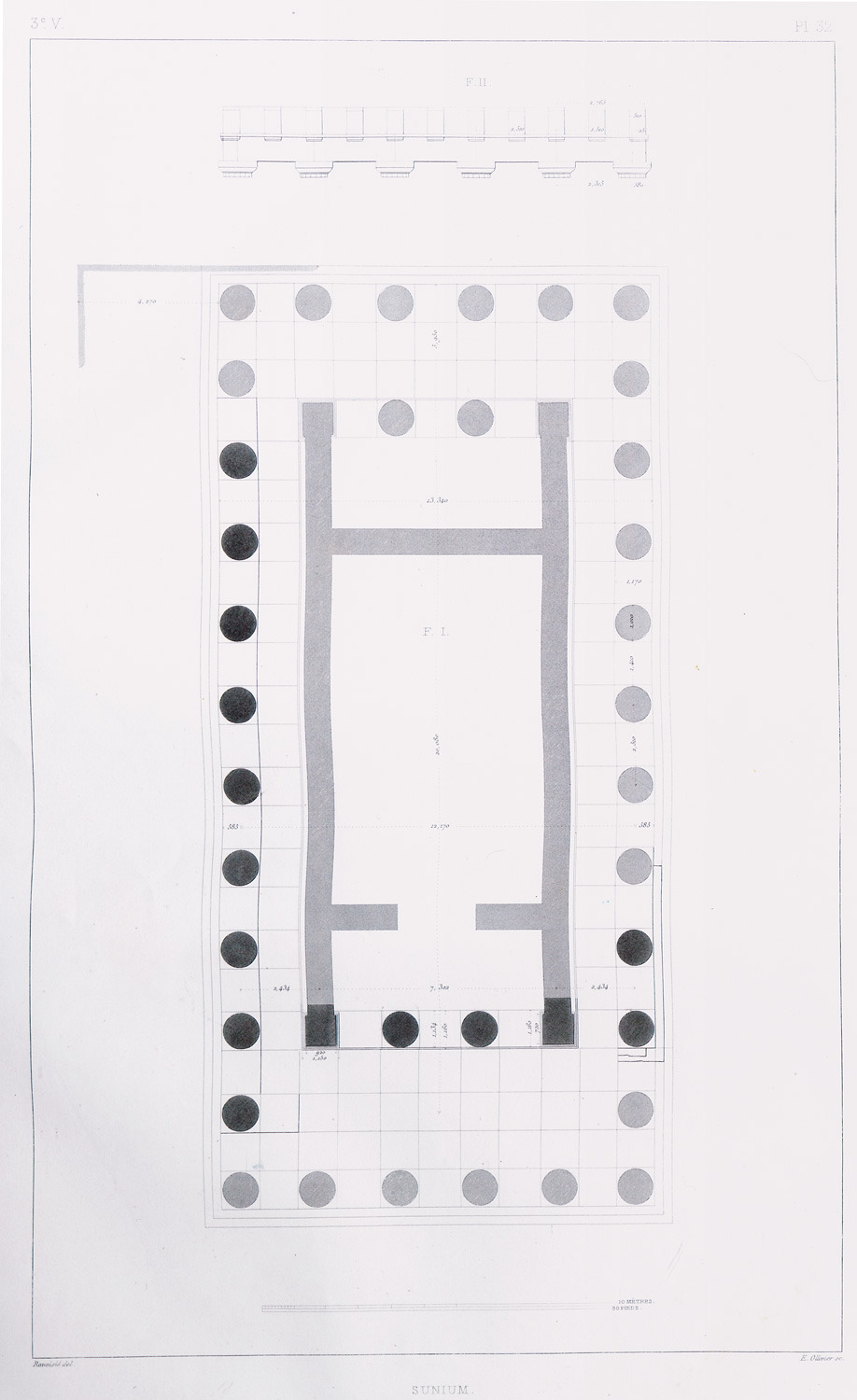
-
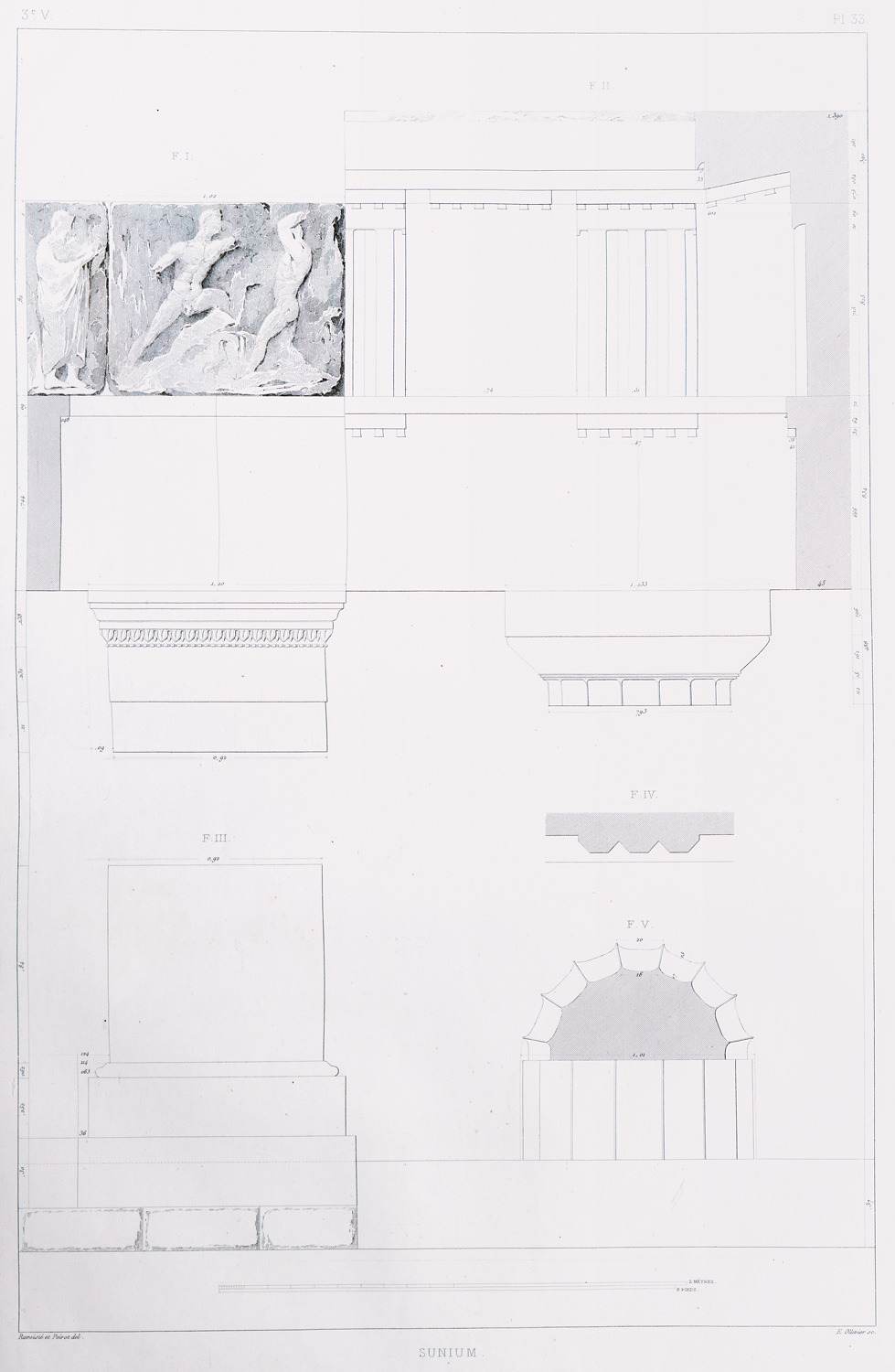
-
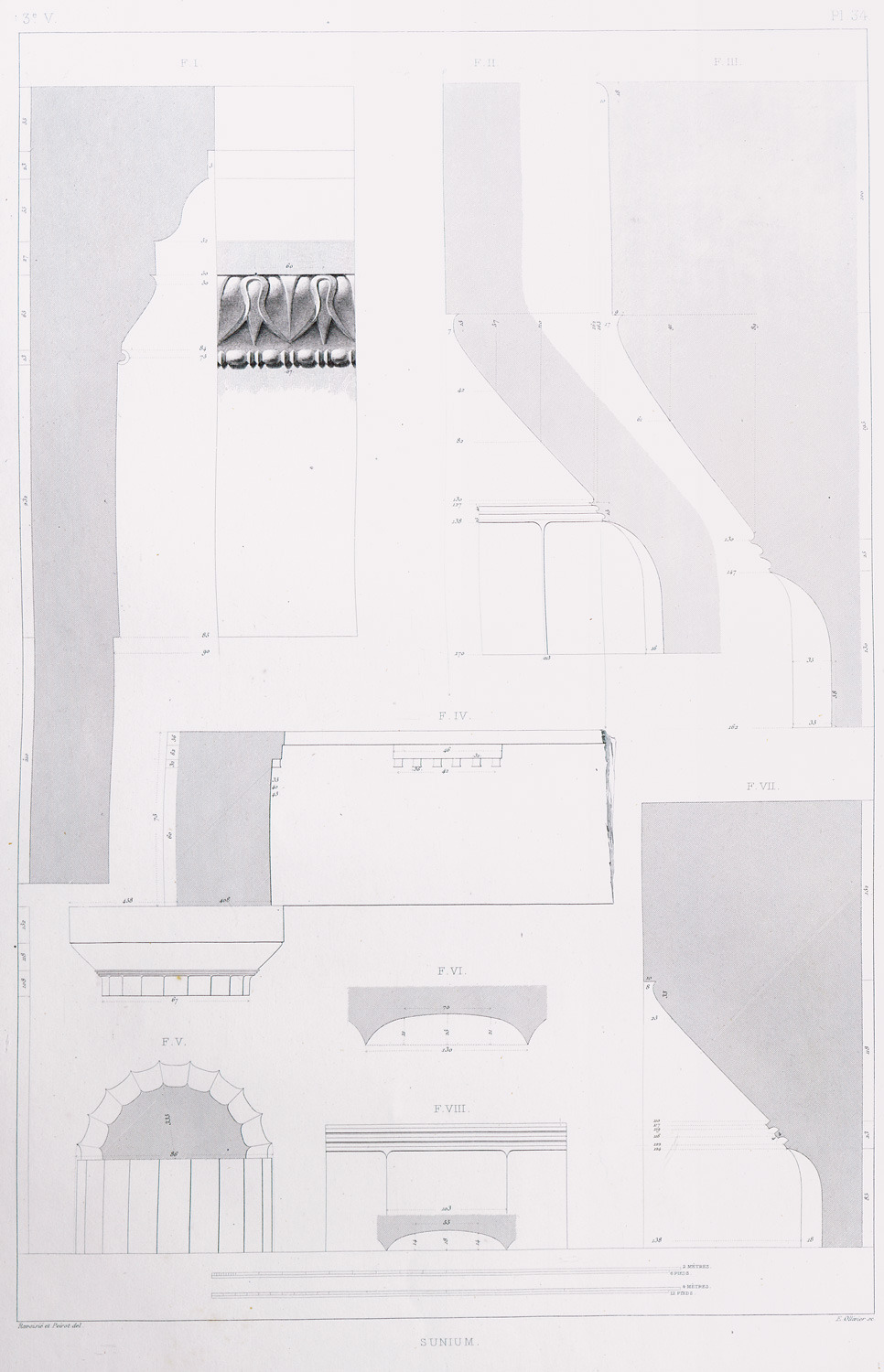
Temple of Poseidon at Sounion: Section and architectural features of anta and Doric column.
-
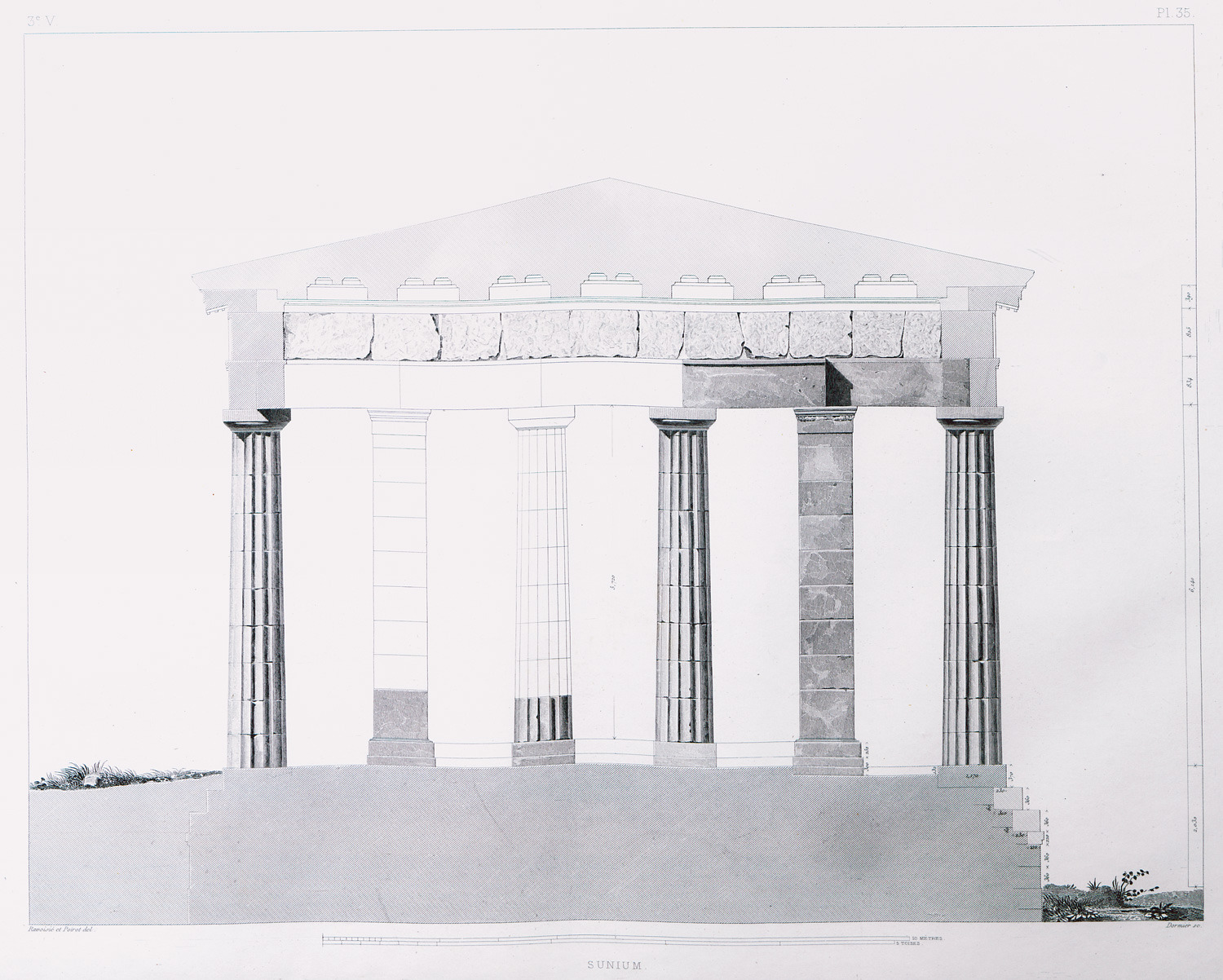
Temple of Poseidon at Sounion: Reconstruction of the entrance to the pronaos.
-
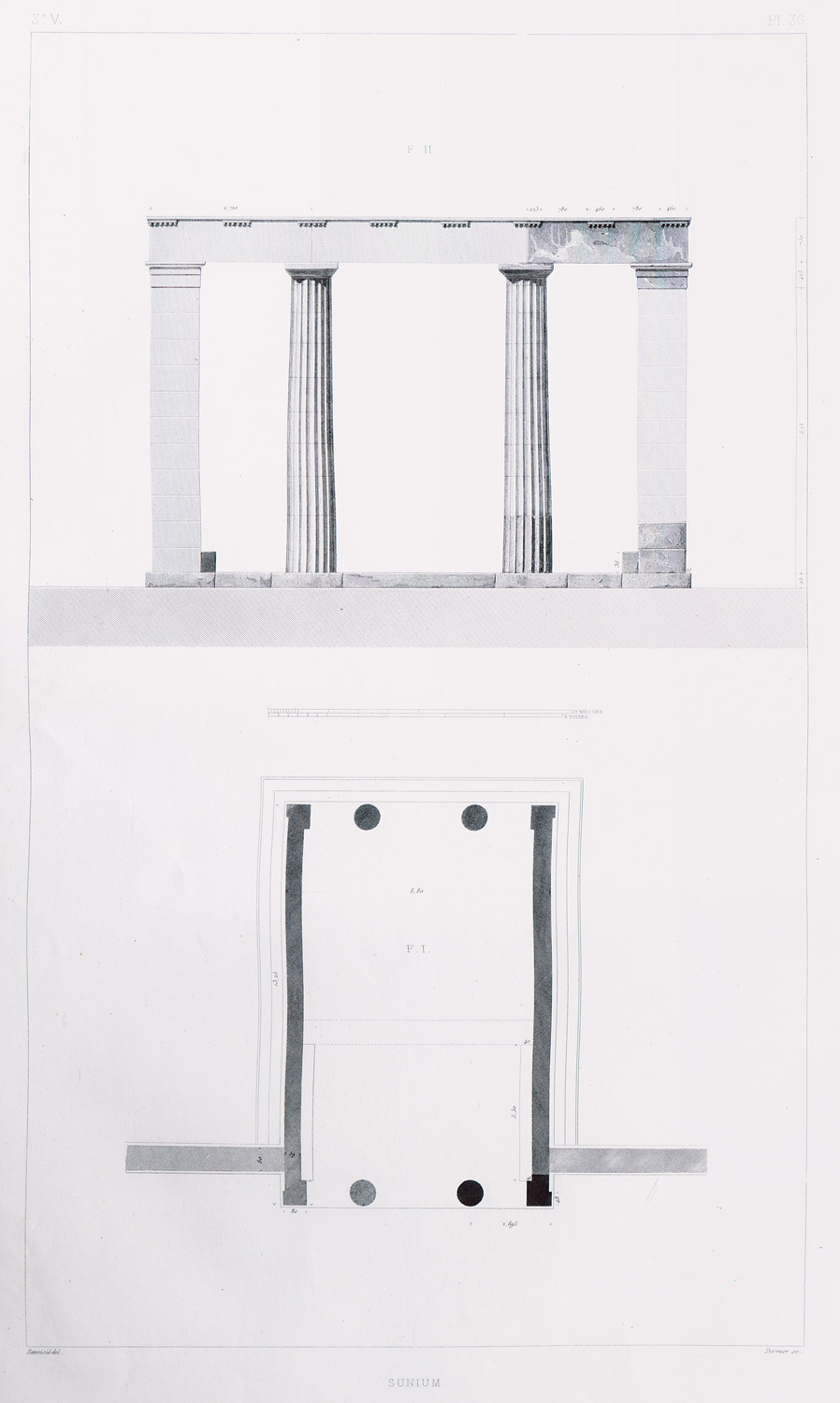
-
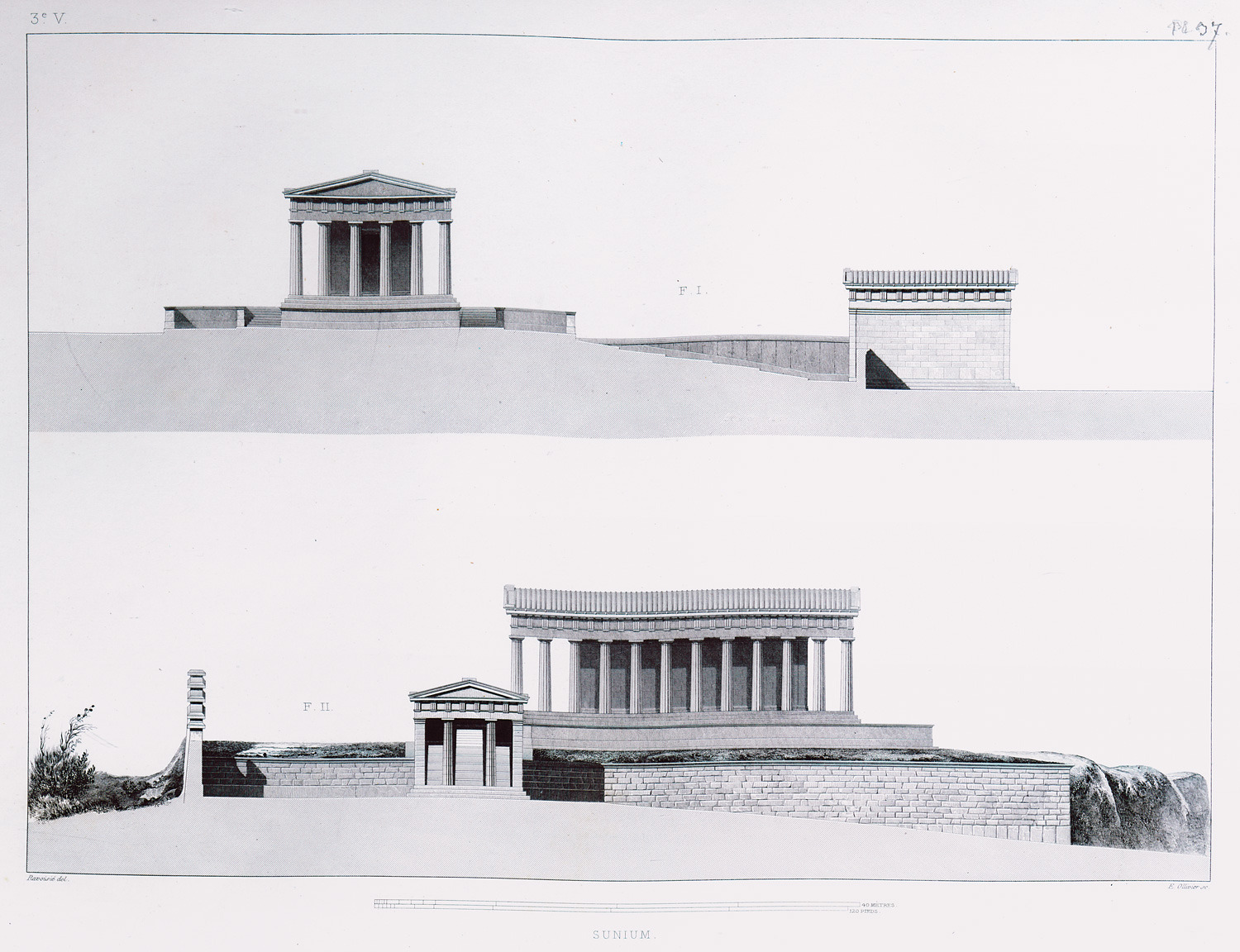
Reconstruction of the temple of Poseidon at Sounion with the Propylaea.
-
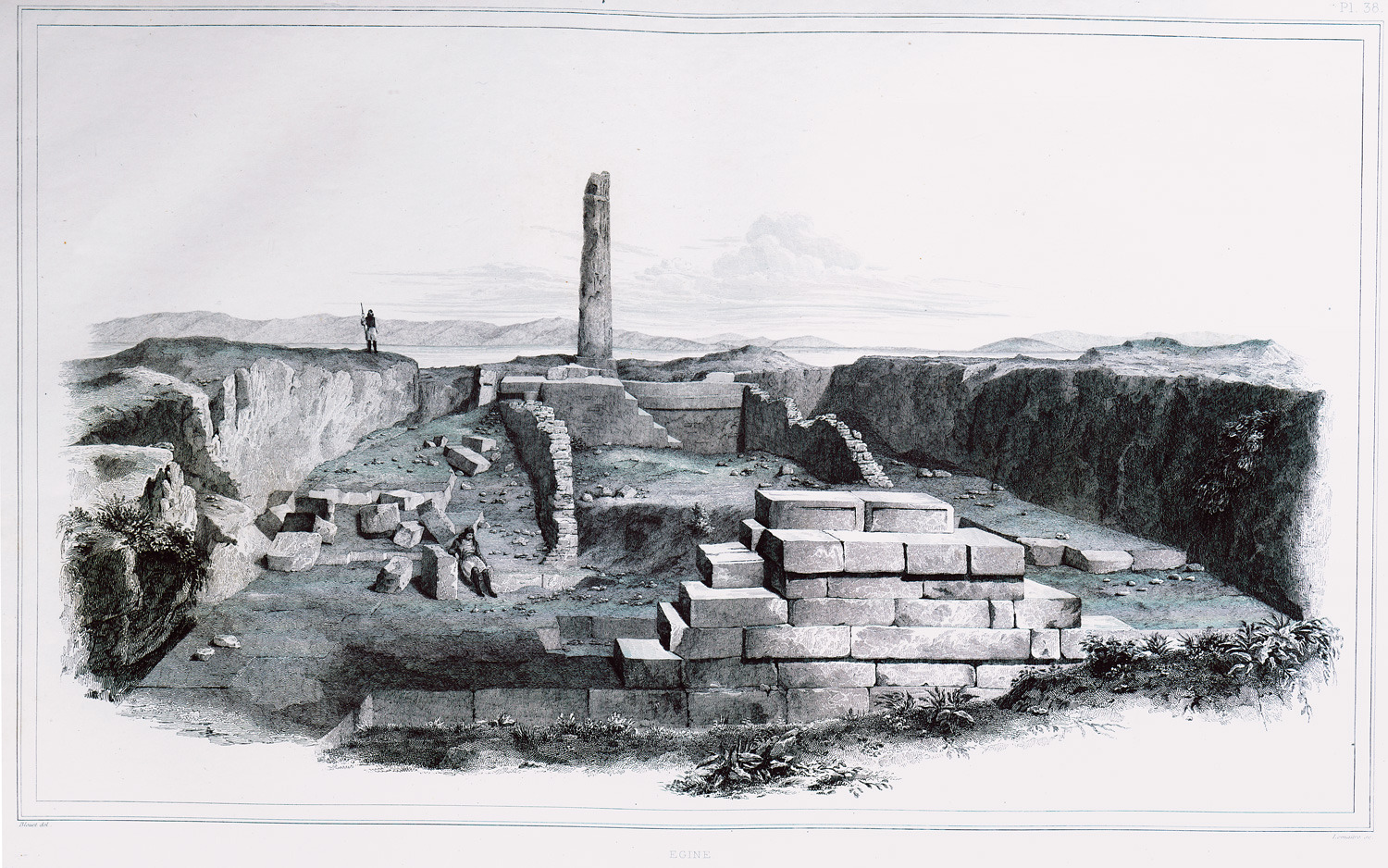
-
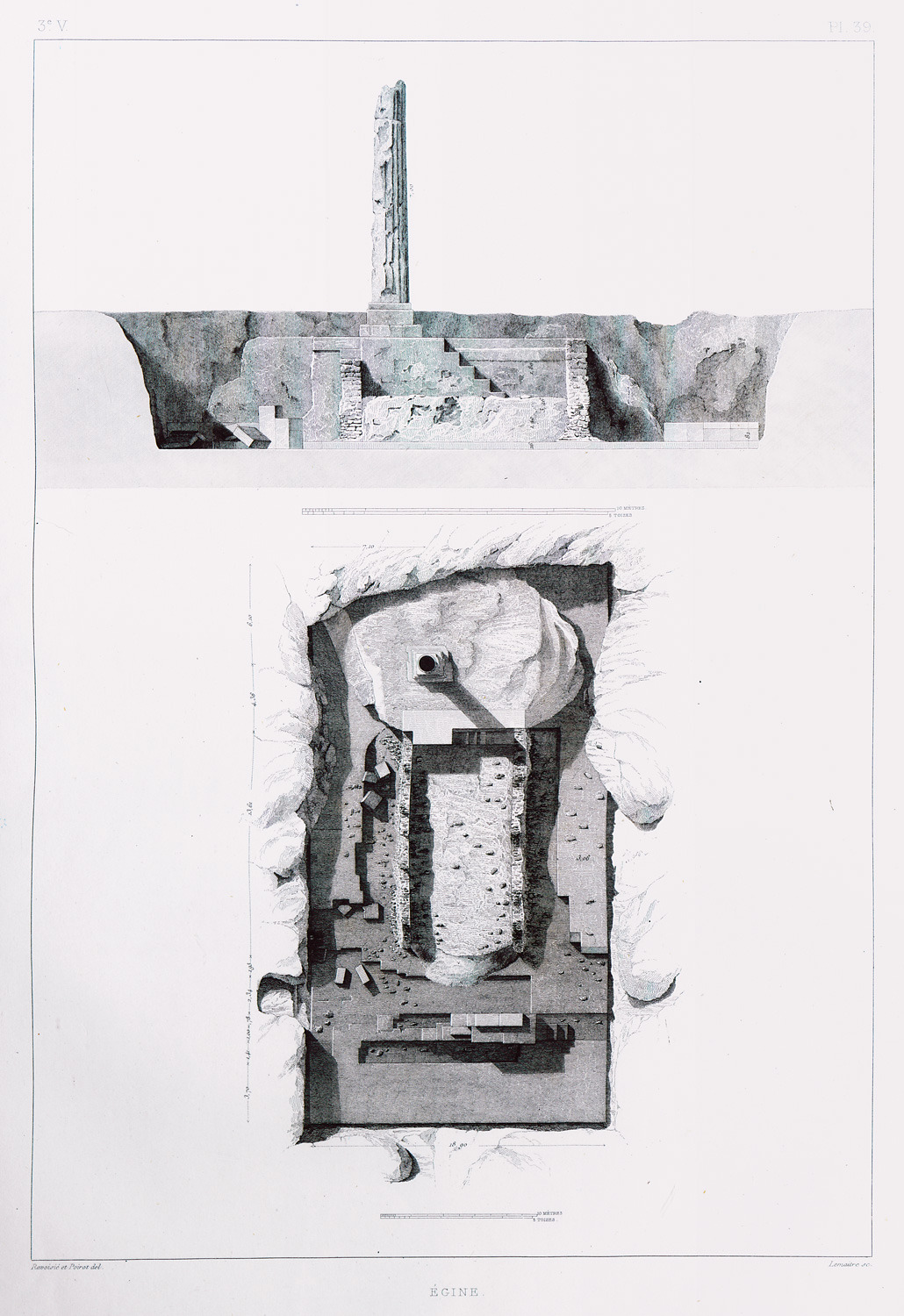
Section and plan of the archaeological site of Colona, Aegina island.
-
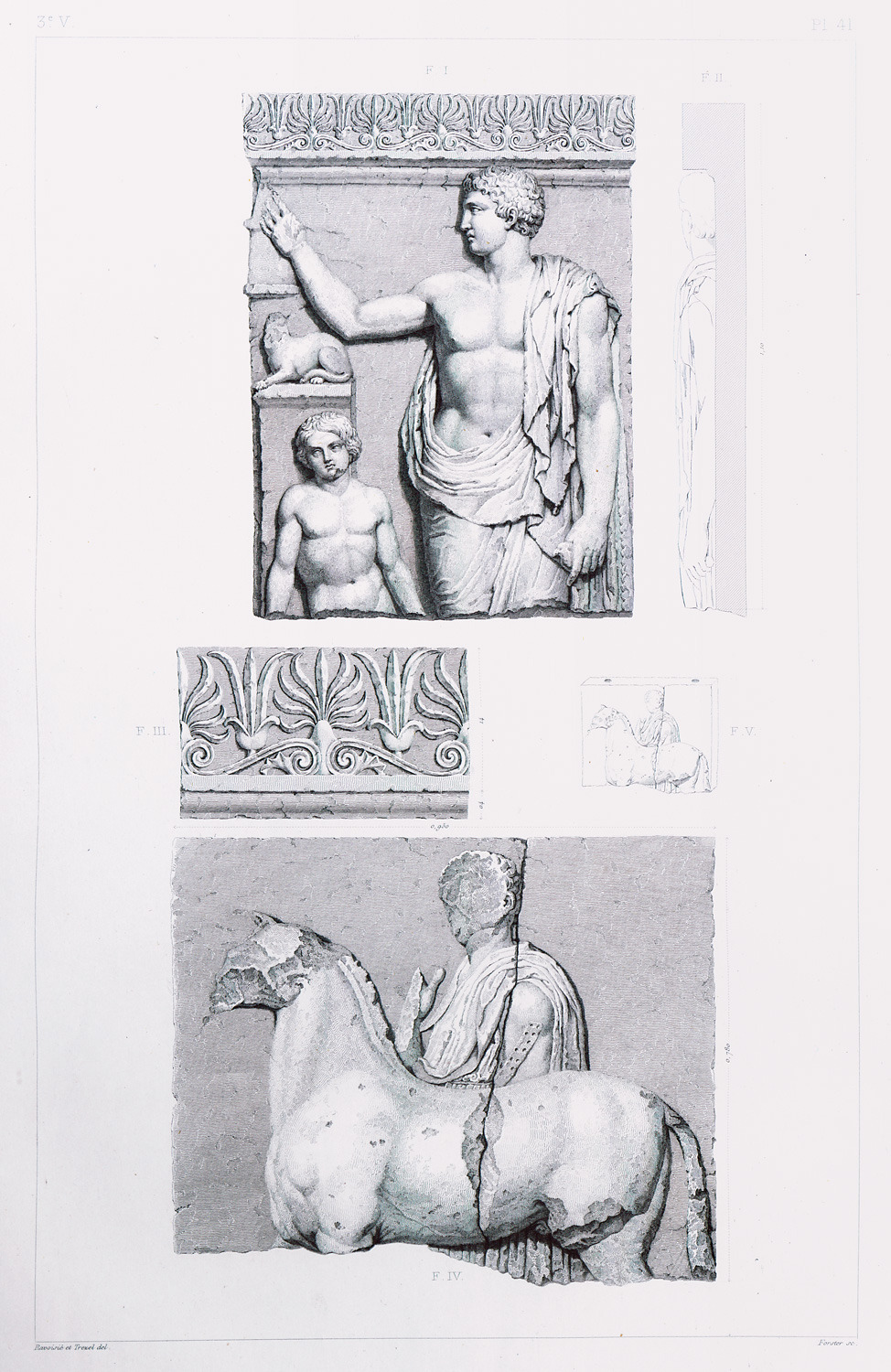
Reliefs seen by the author at the Kapodistrian Museum on Aegina island.
-
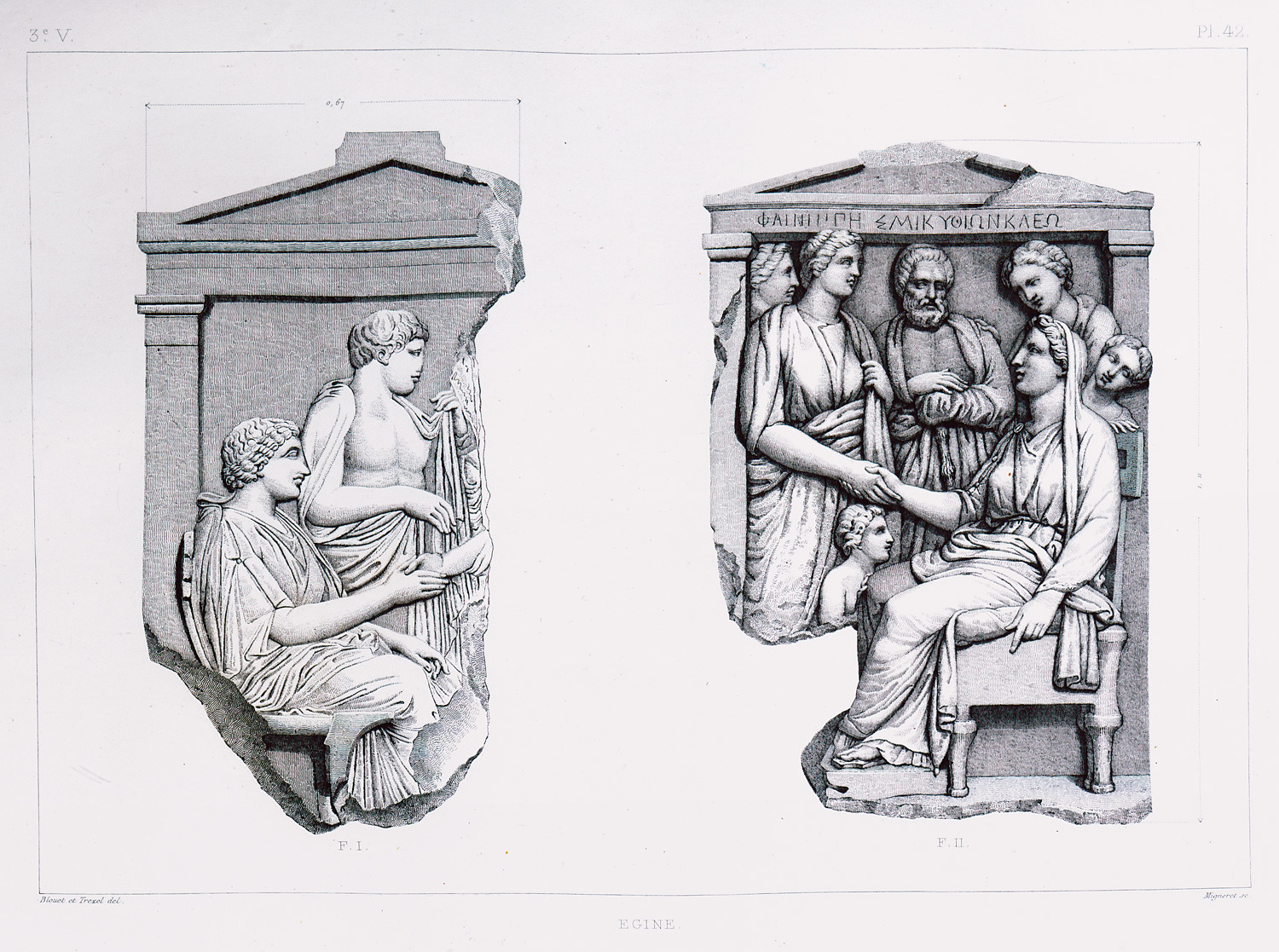
Funerary steles seen by the author at the Kapodistrian Museum on Aegina island.
-
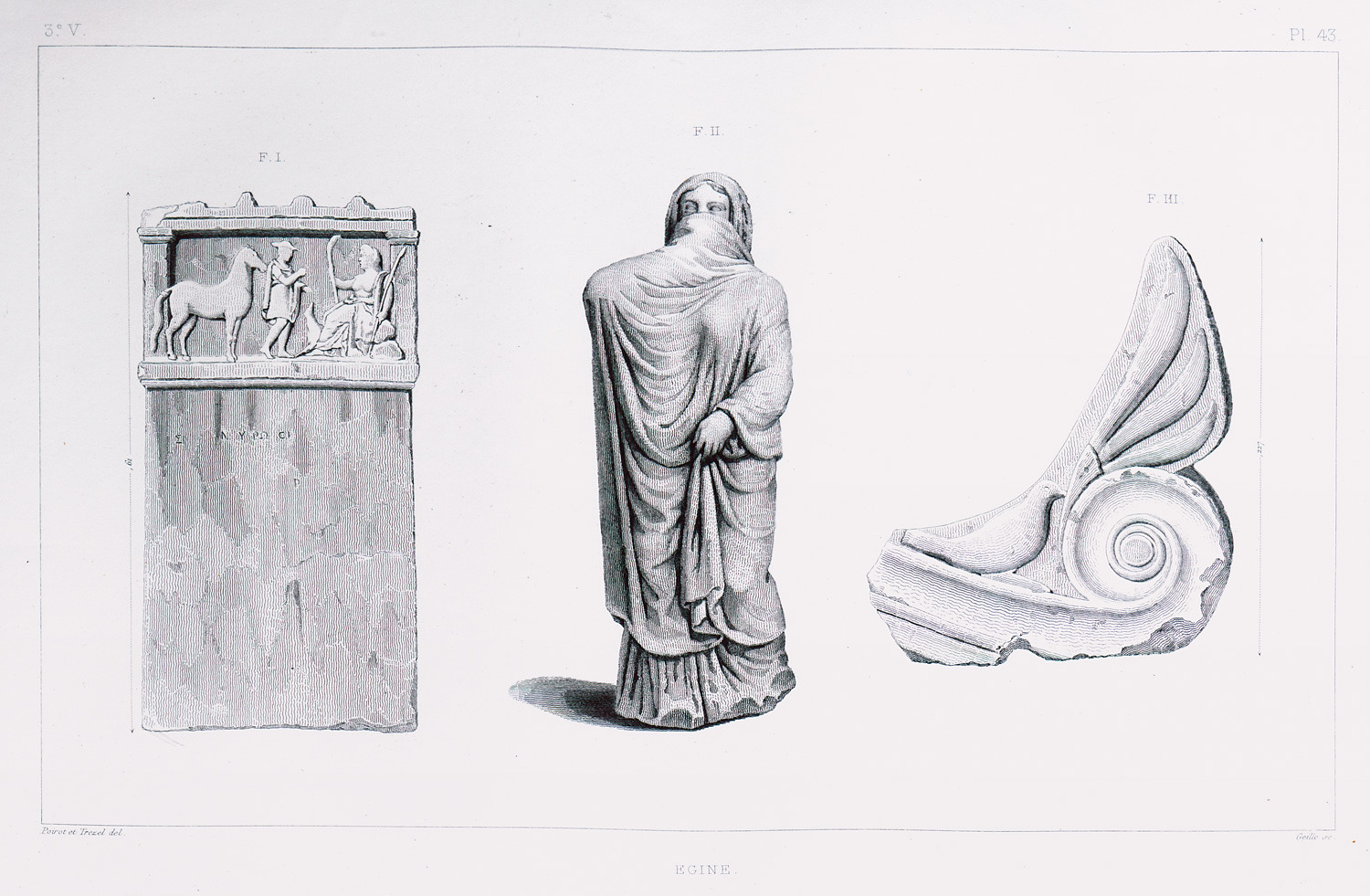
-
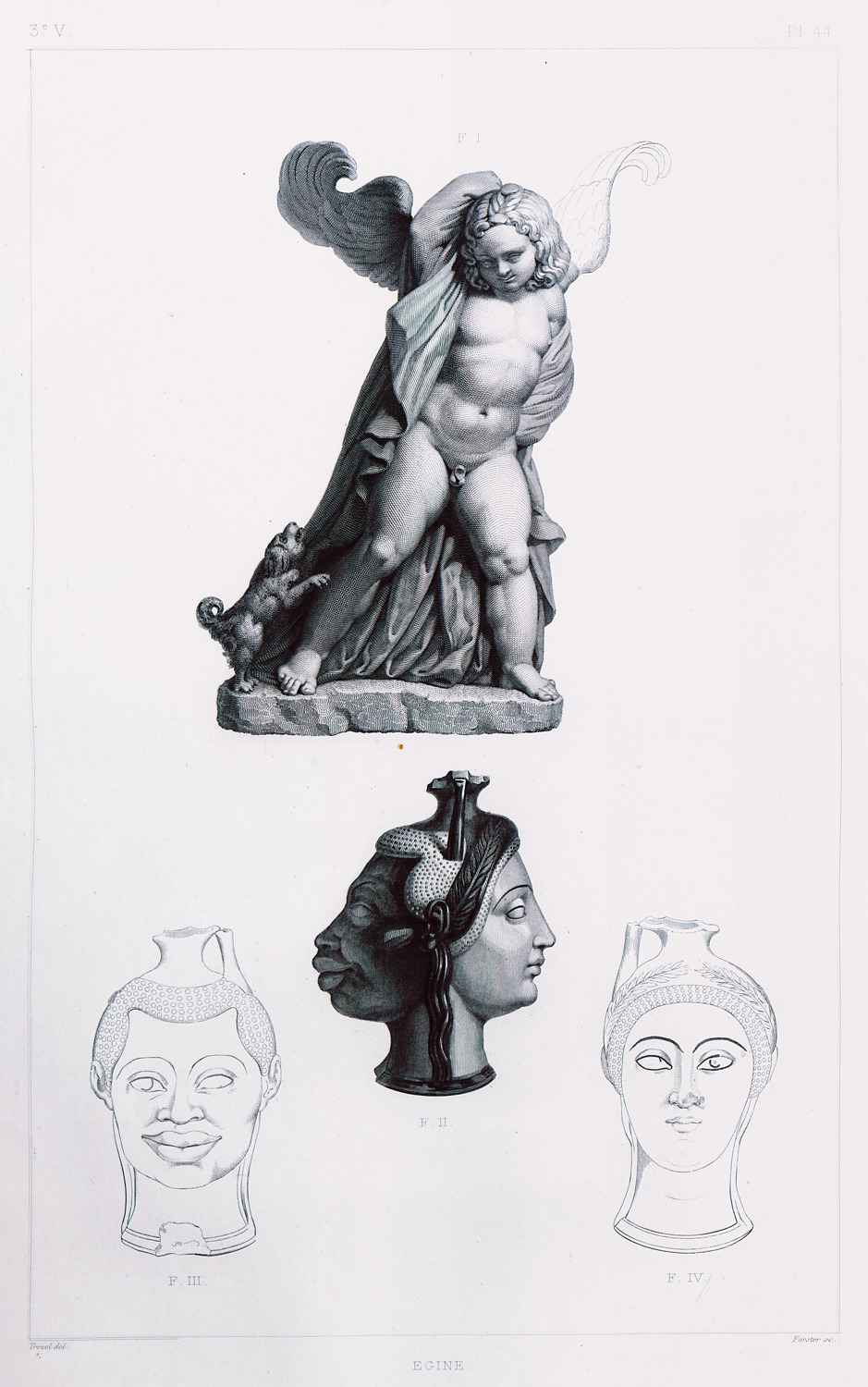
Clay figurine and vase seen by the author at the Kapodistrian Museum on Aegina island.
-
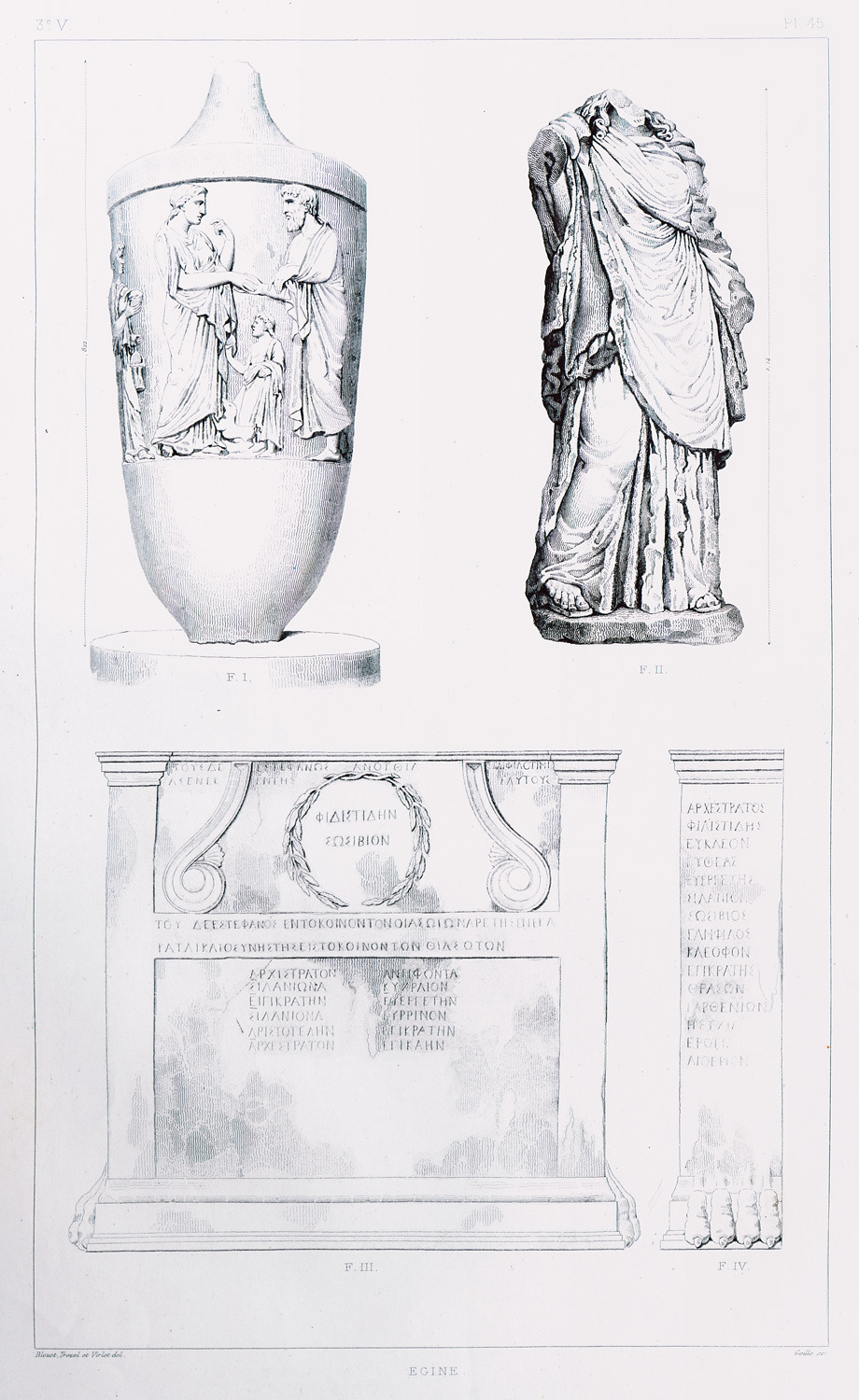
-
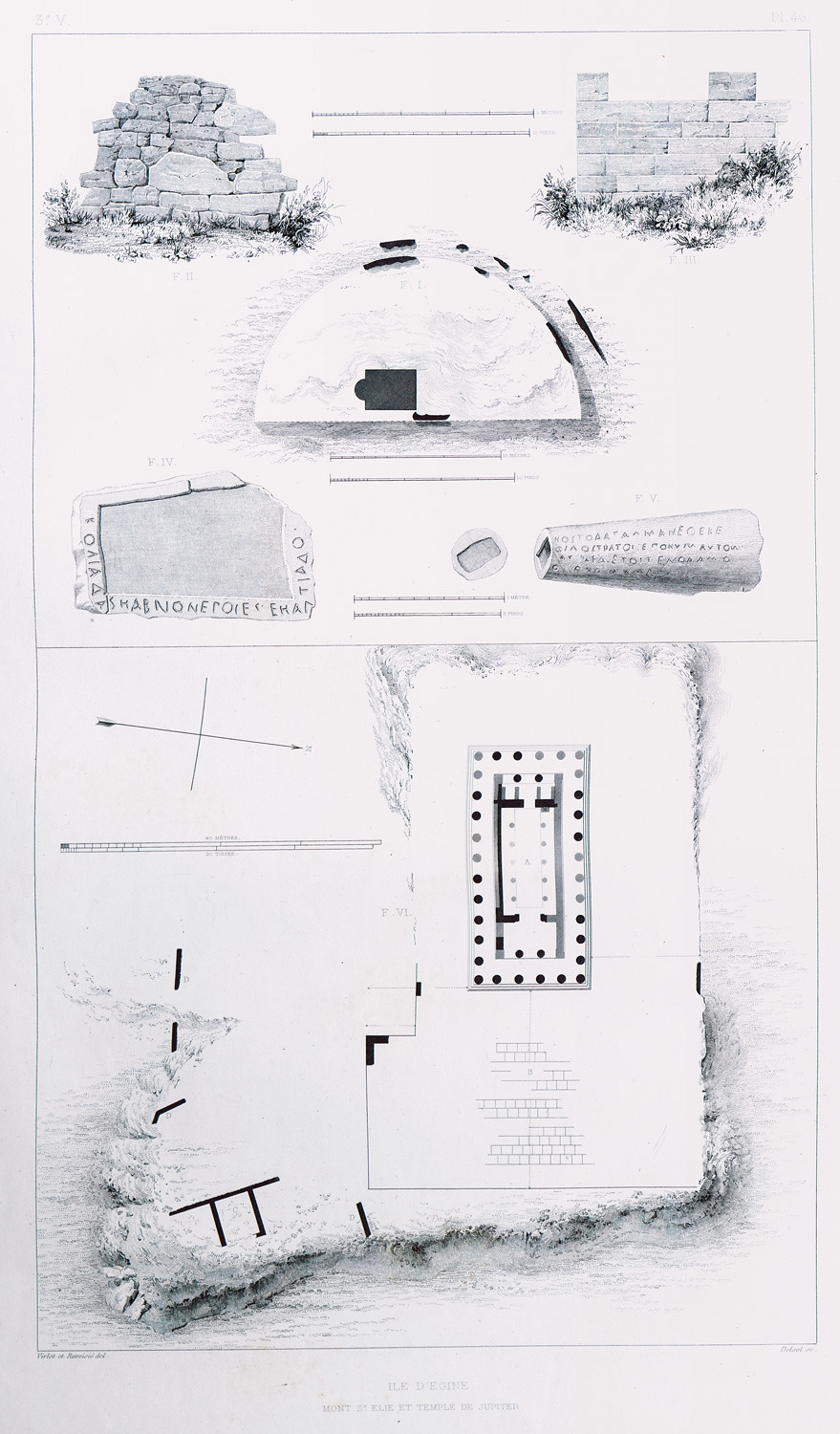
-
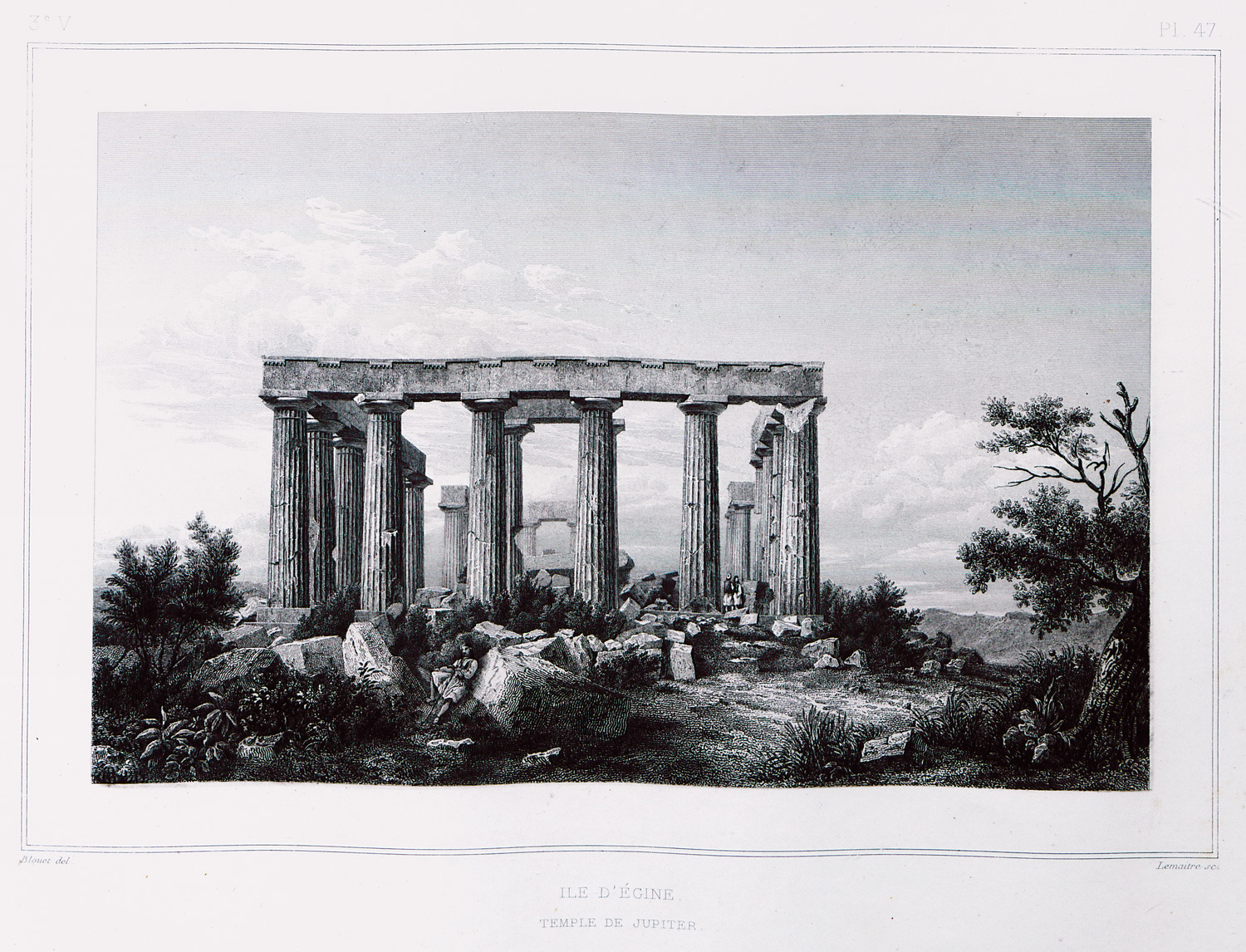
-
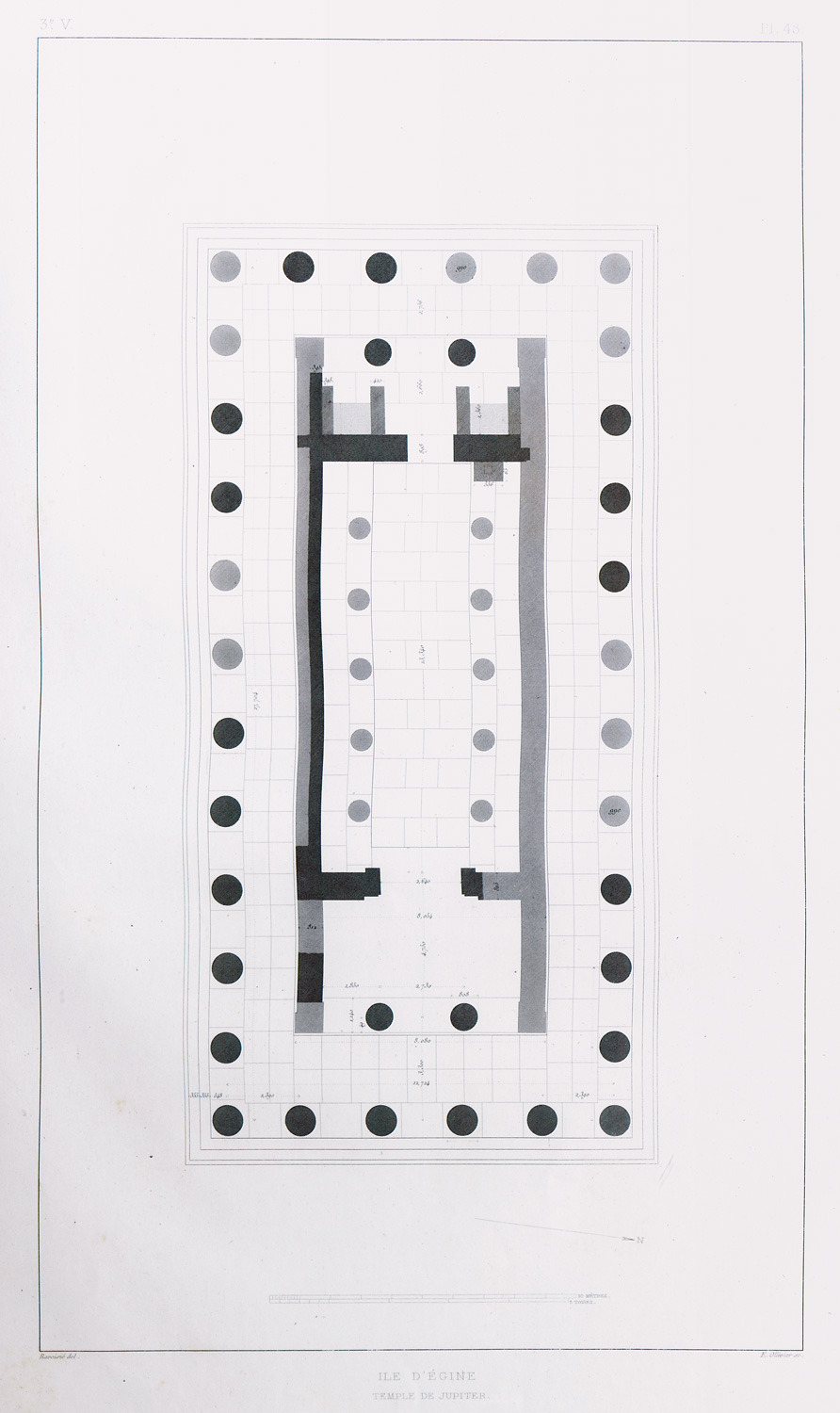
-
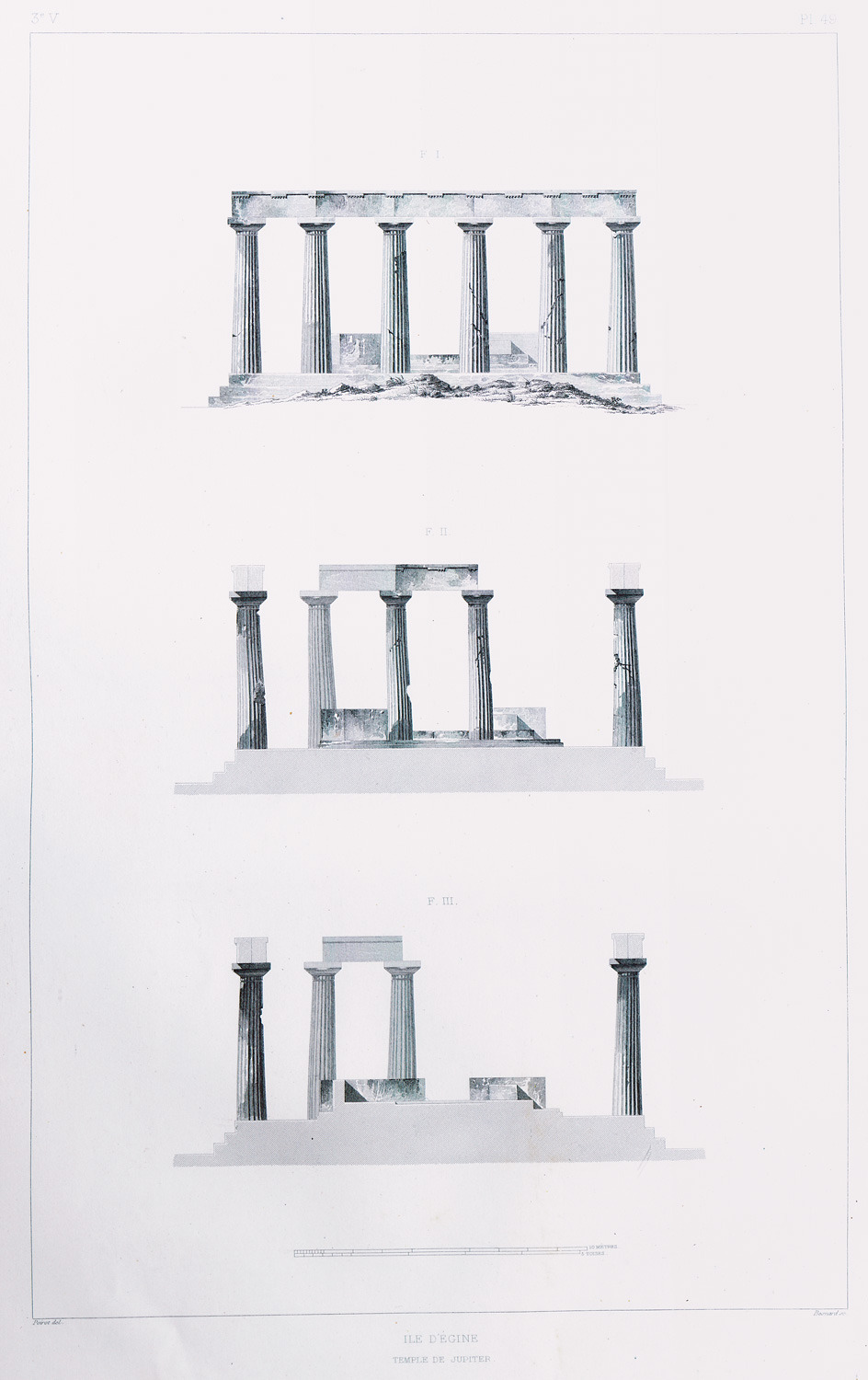
Temple of Aphaia, Aegina island: 1. Elevation. 2, 3: Lateral section of pronaos and opisthodomos.
-
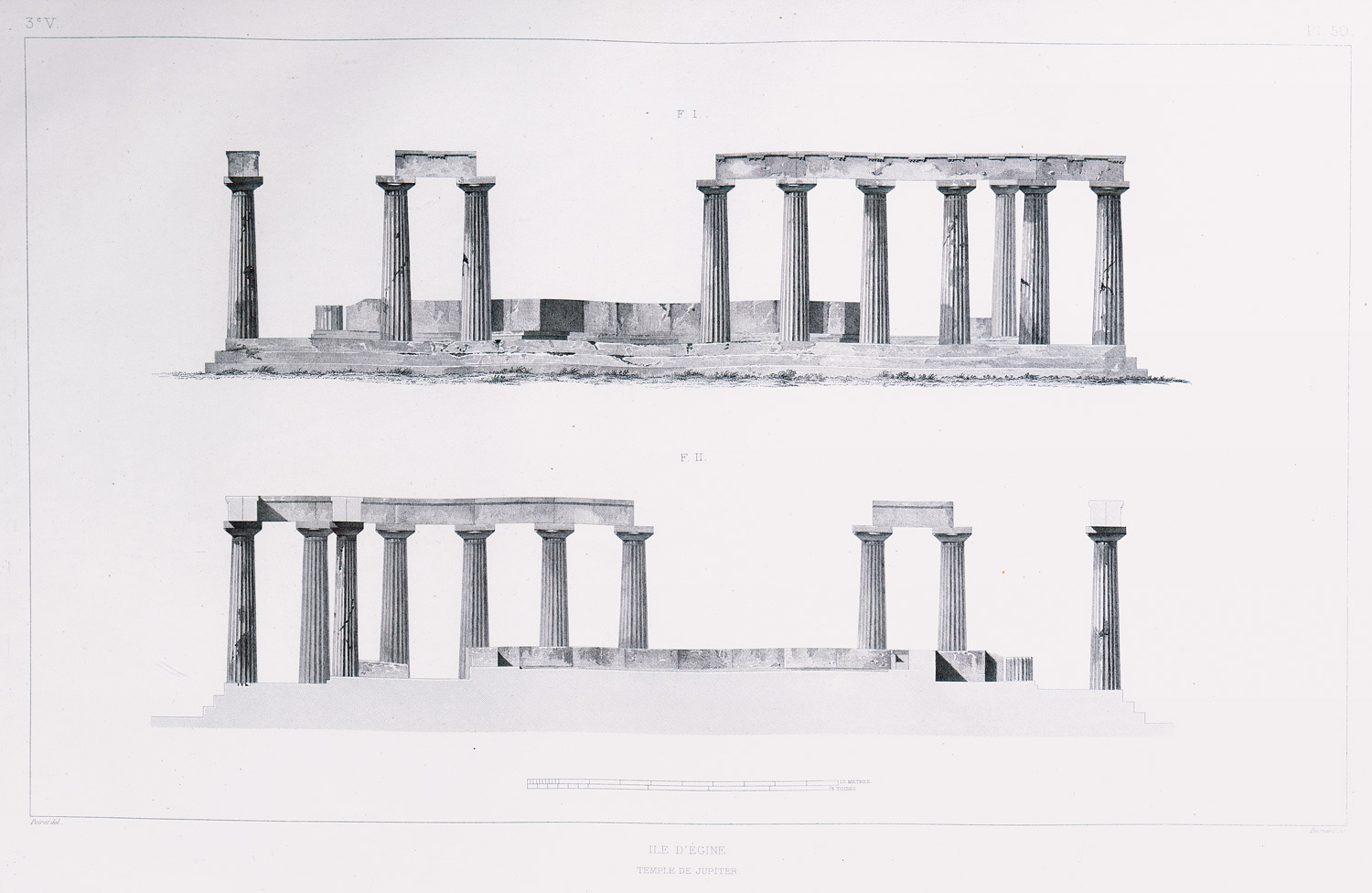
Temple of Aphaia, Aegina island. Sections of the northern and southern sides.
-
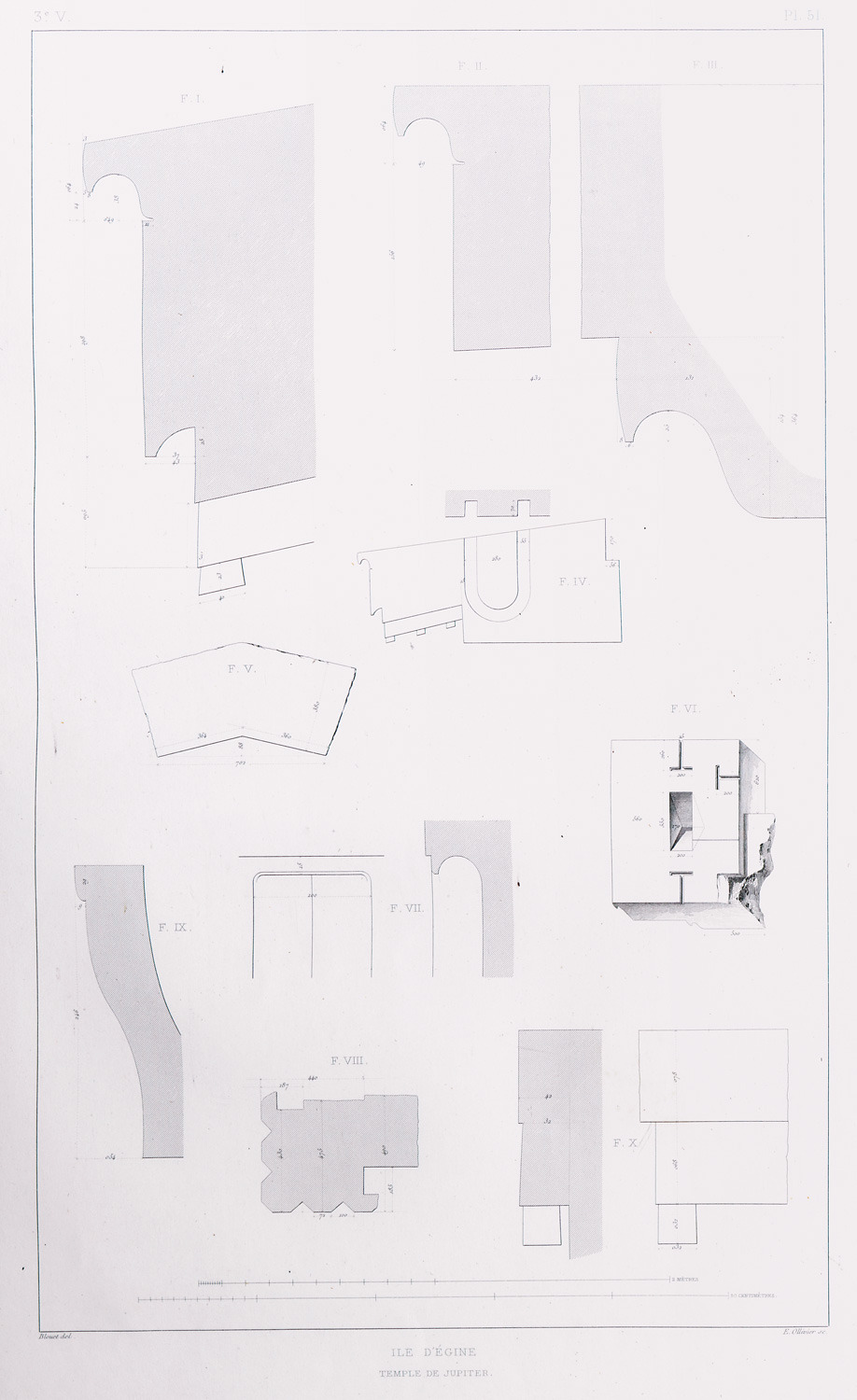
-

Temple of Aphaia, Aegina island: Architectural features and reconstruction of column parts.
-
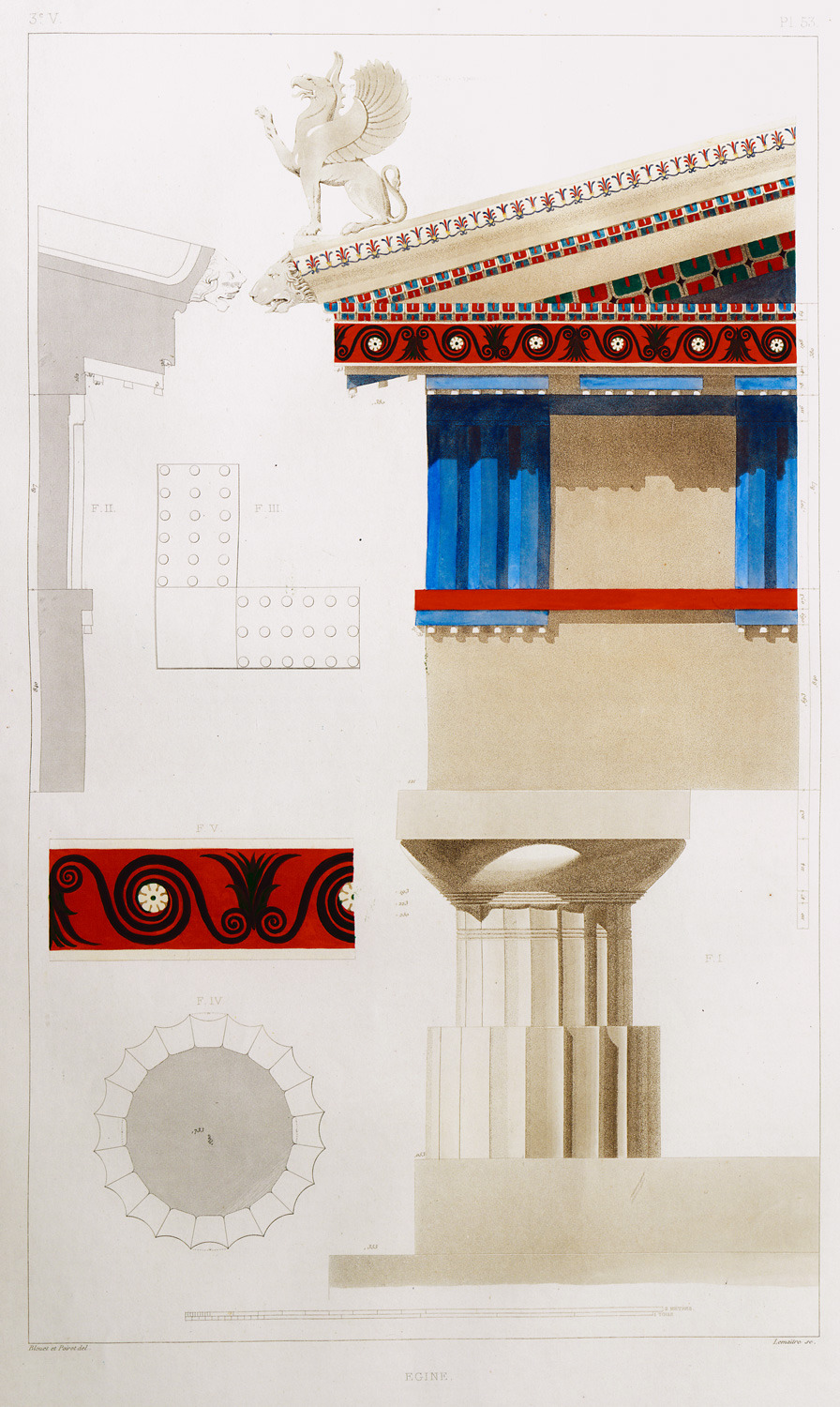
-
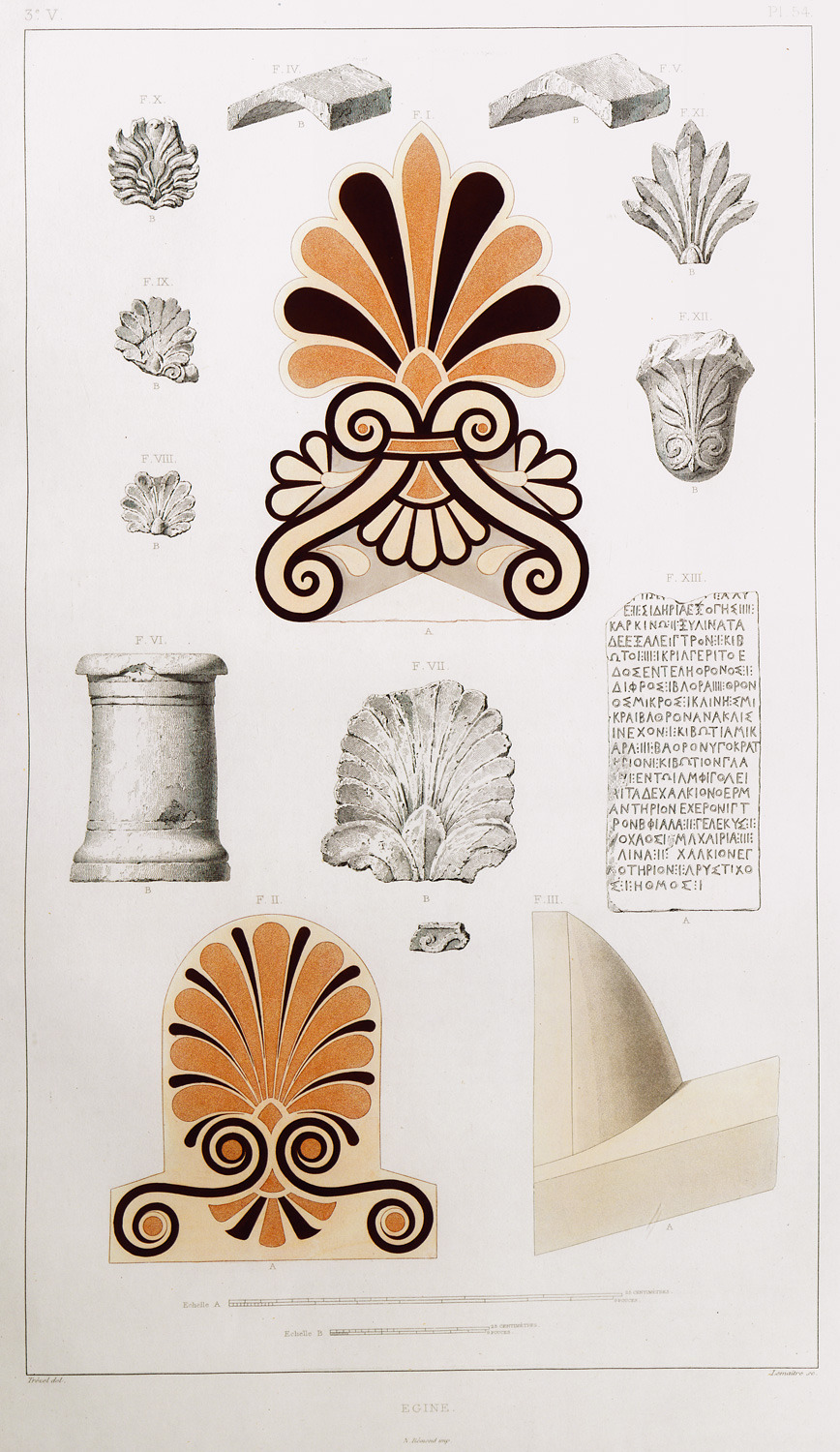
Temple of Aphaia, Aegina island: Palmette antefixes and other architectural features. Inscription.
-
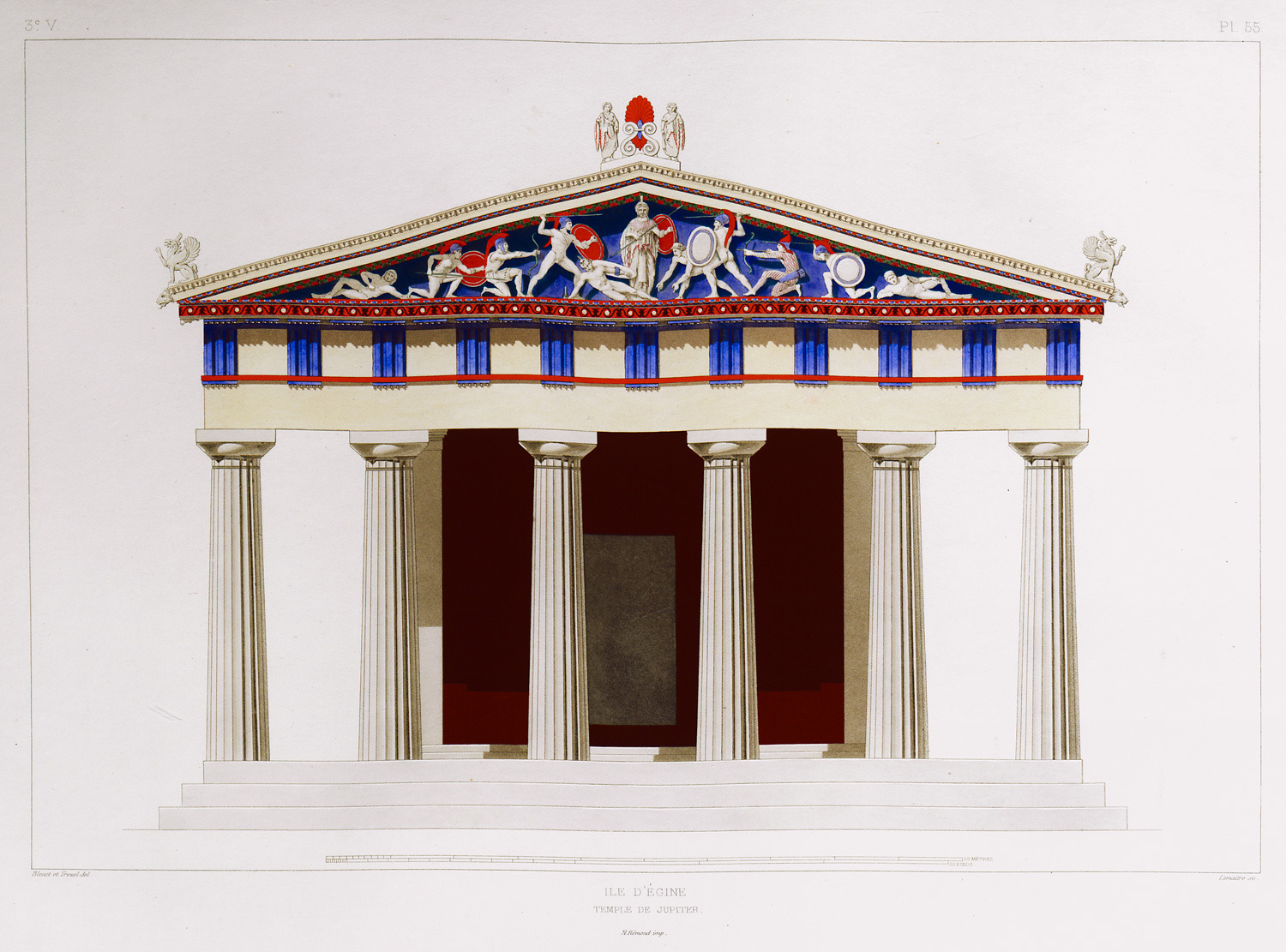
Temple of Aphaia, Aegina island: Elevation of the temple façade (eastern side), reconstructed.
-
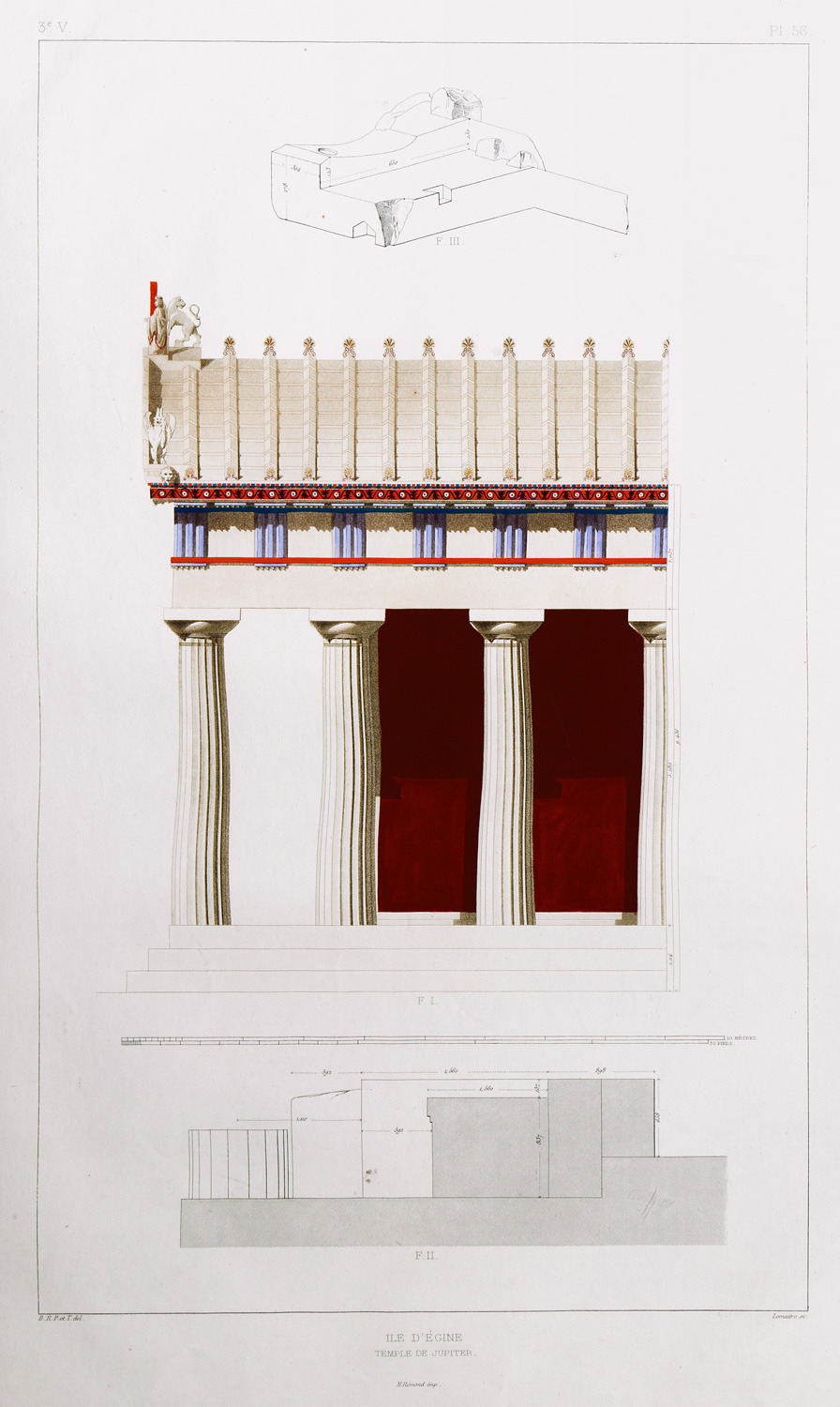
-
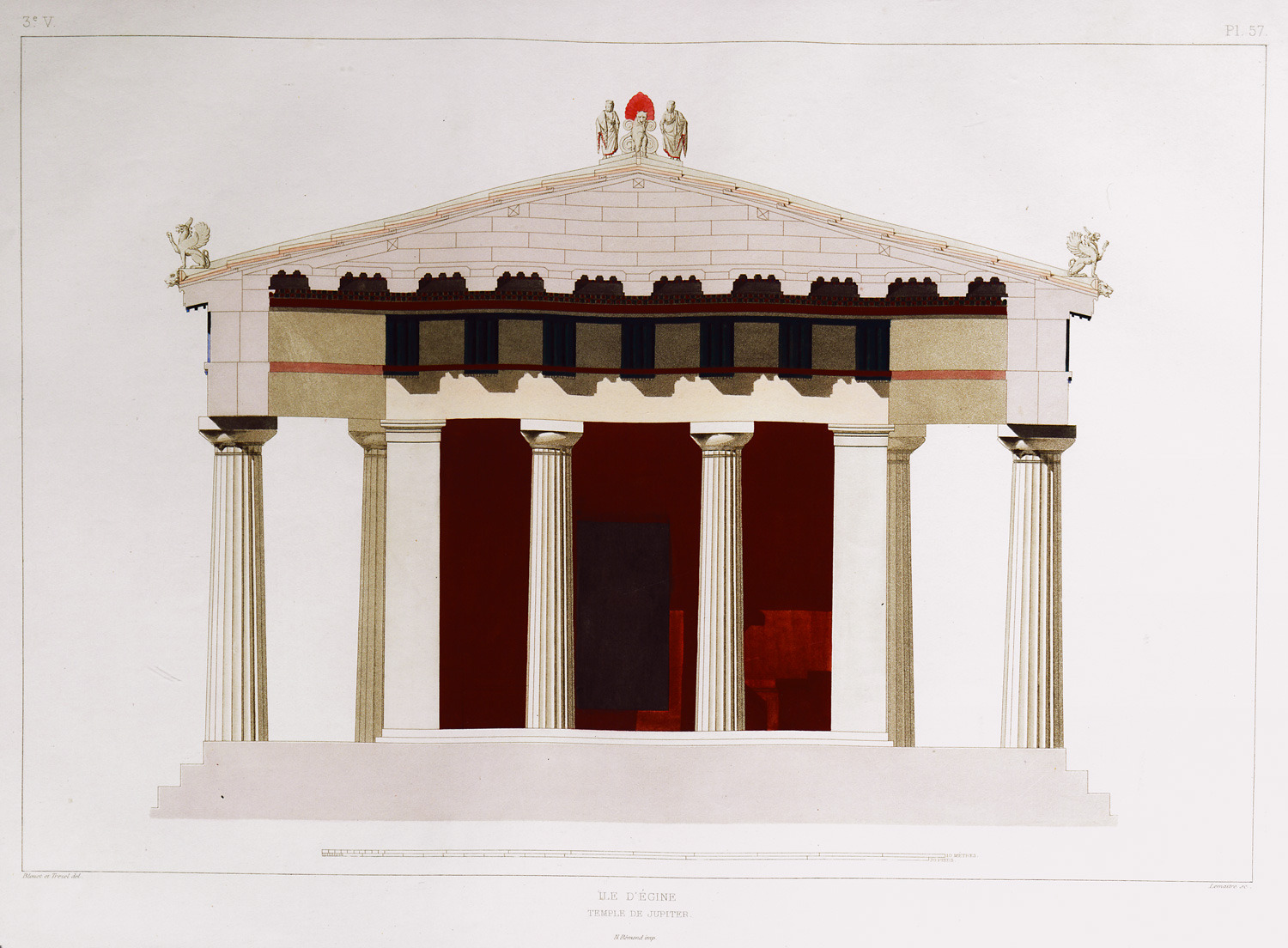
Temple of Aphaia, Aegina island: Elevation of the pronaos (reconstructed).
-
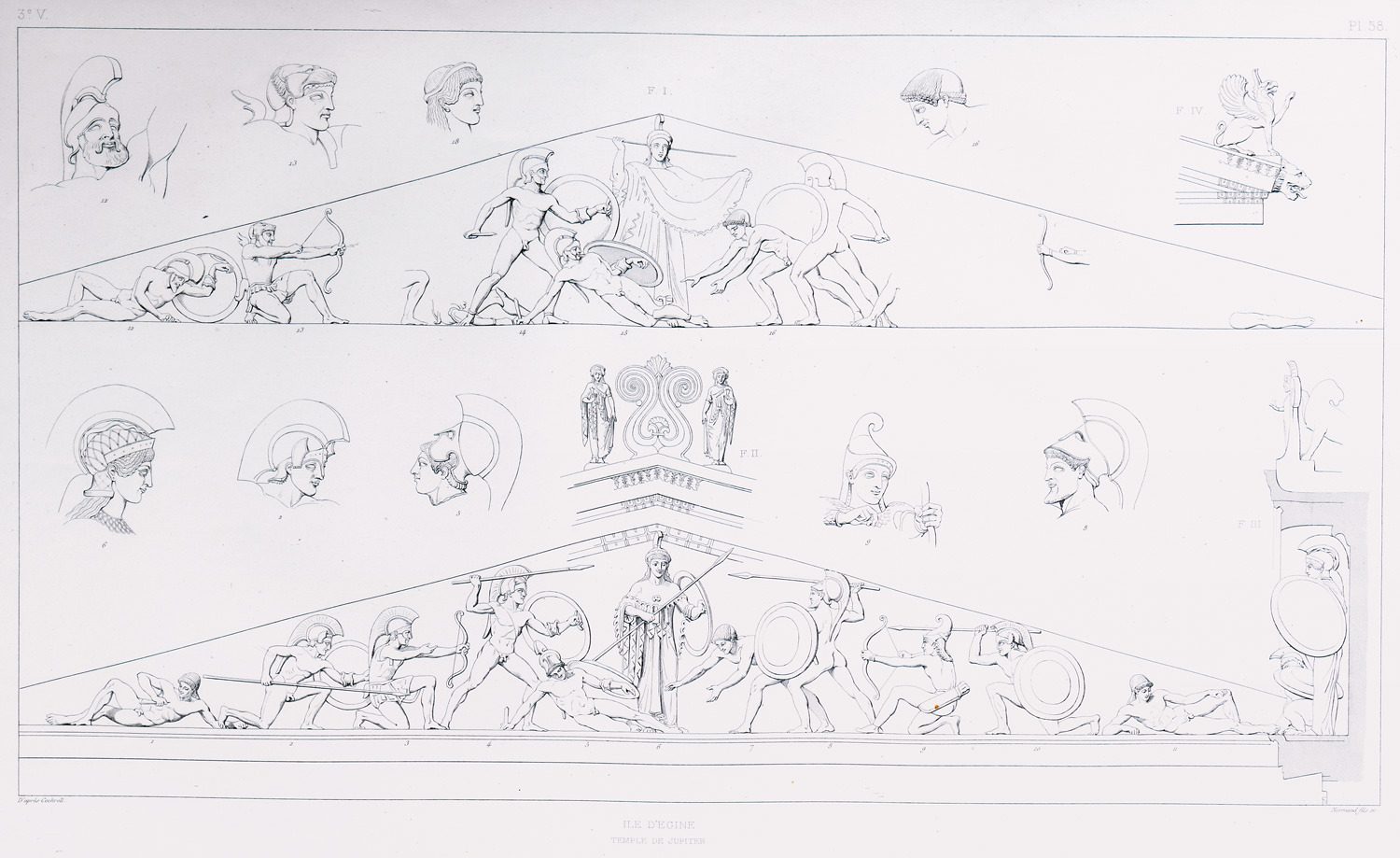
-
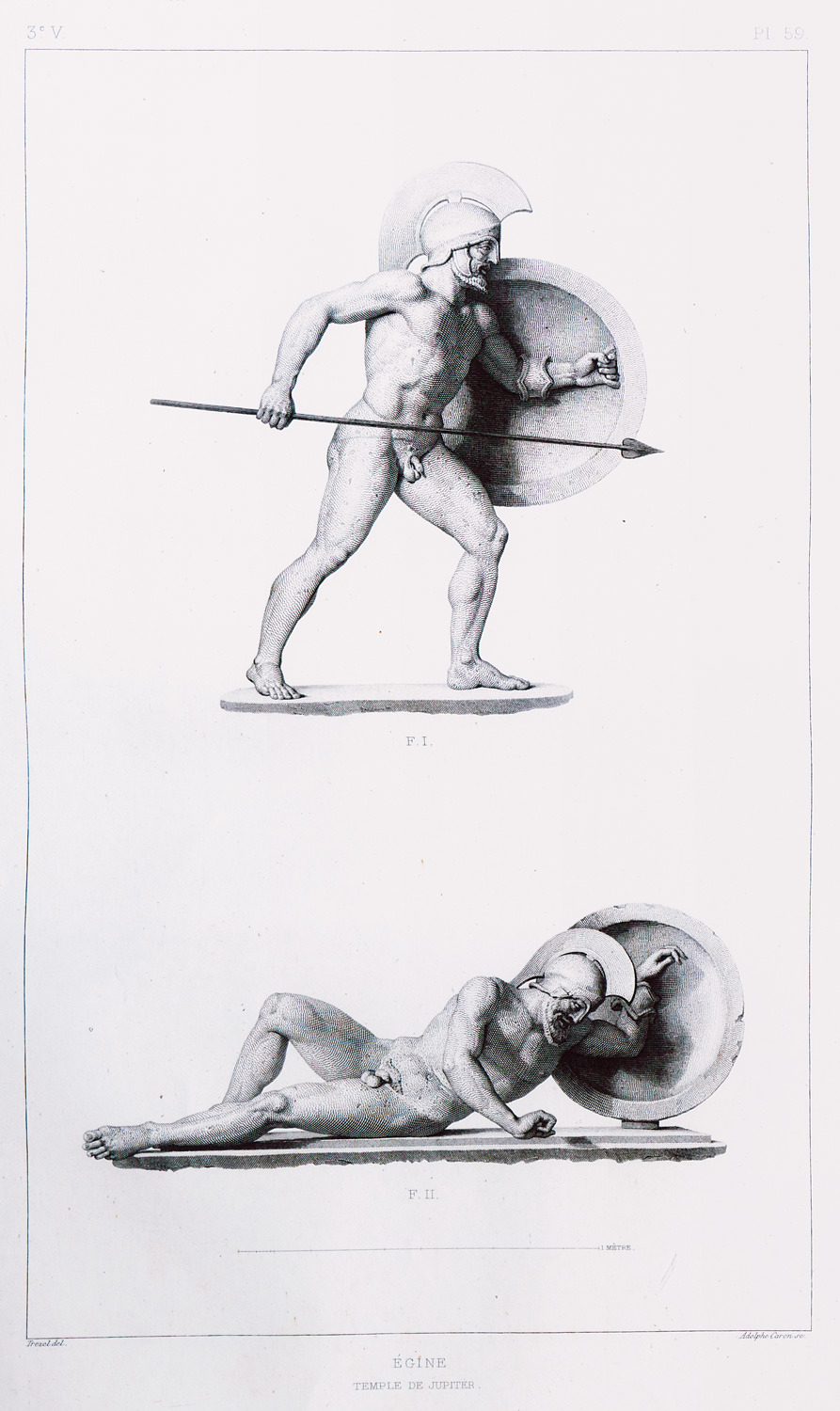
Western pediment of the temple of Aphaia, Aegina island. 1. Telamon 2. Laomedon.
-
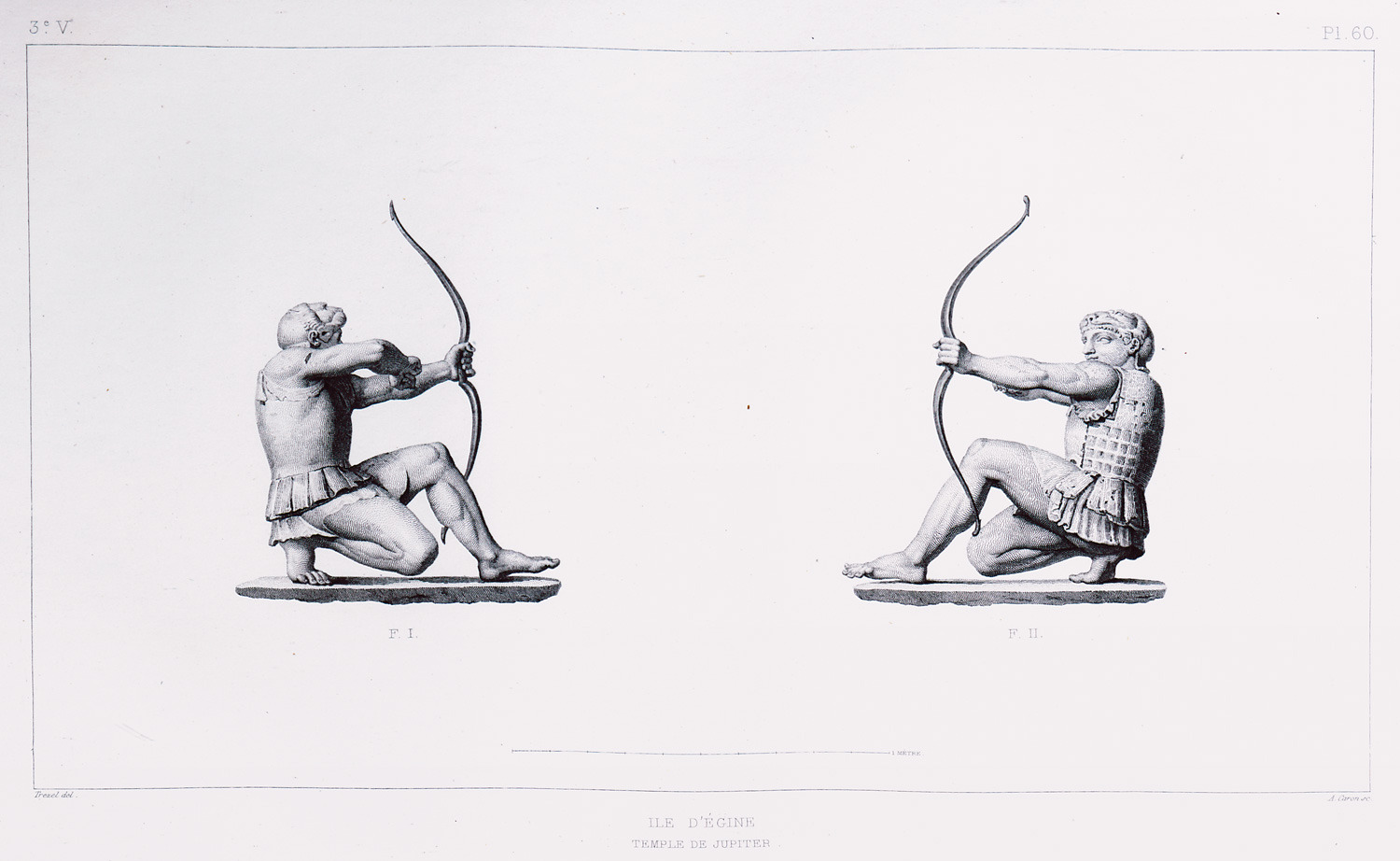
Western pediment of the temple of Aphaia, Aegina island. 1, 2: Heracles.
-
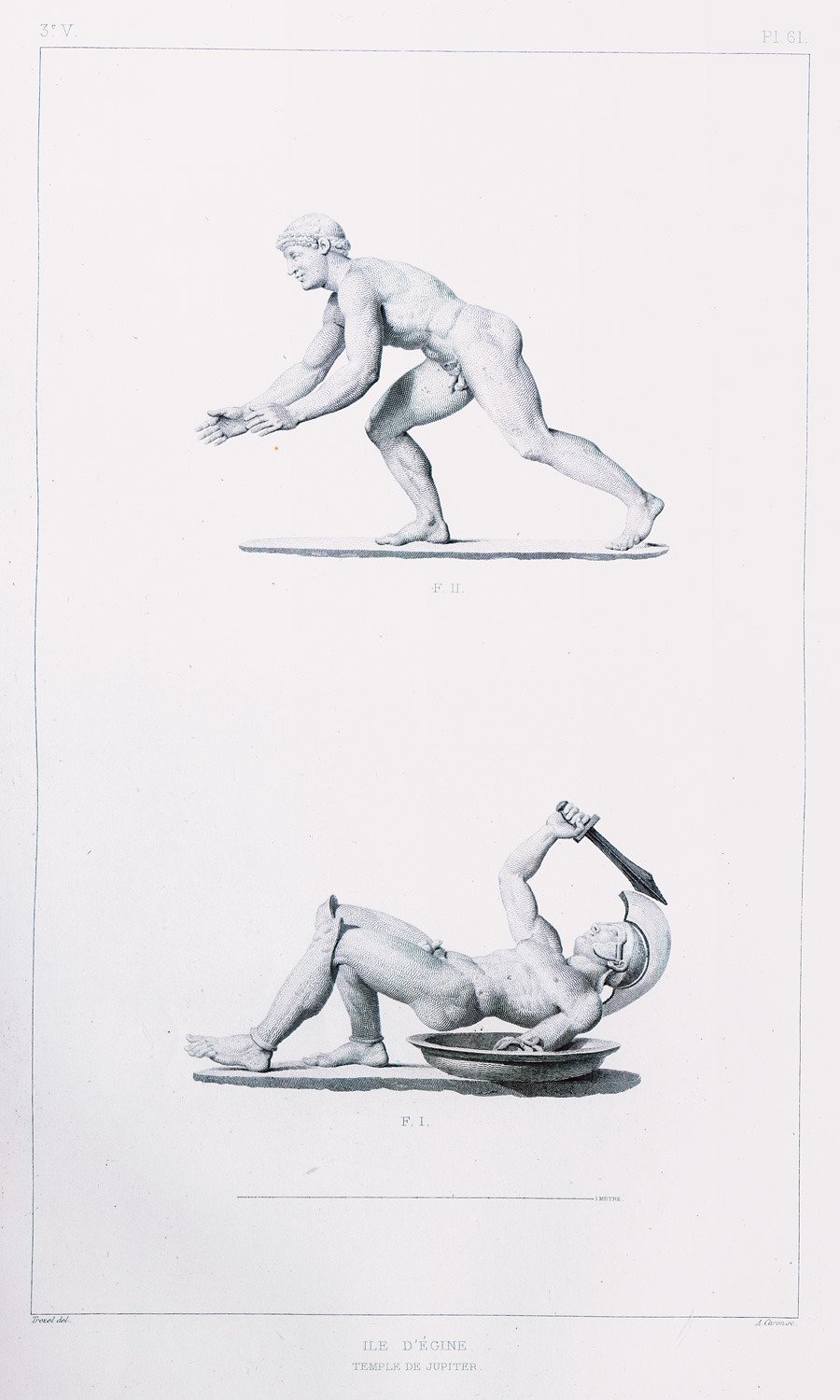
Western pediment of the temple of Aphaia, Aegina island. 1, 2: Warriors.
-
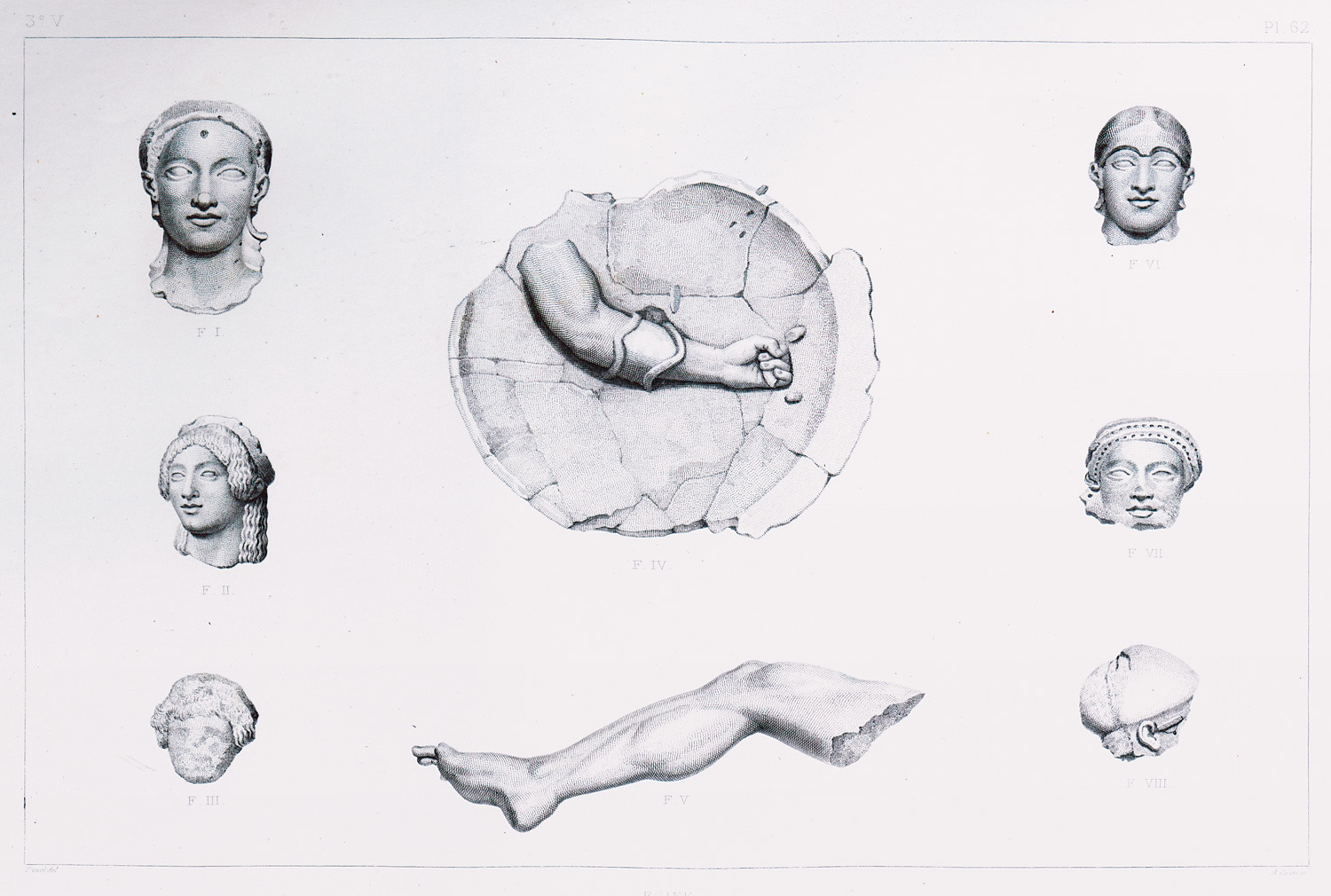
-
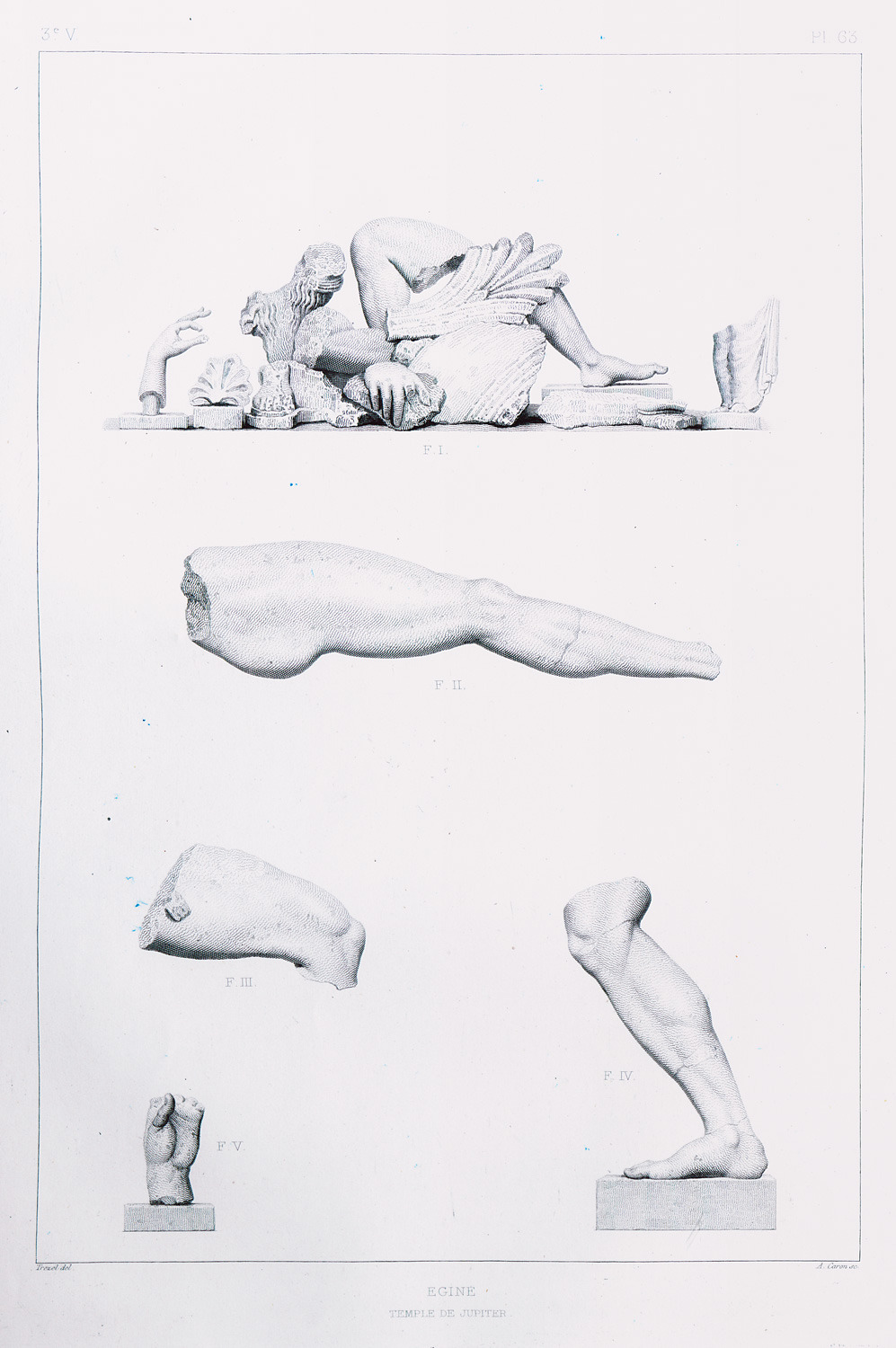
-
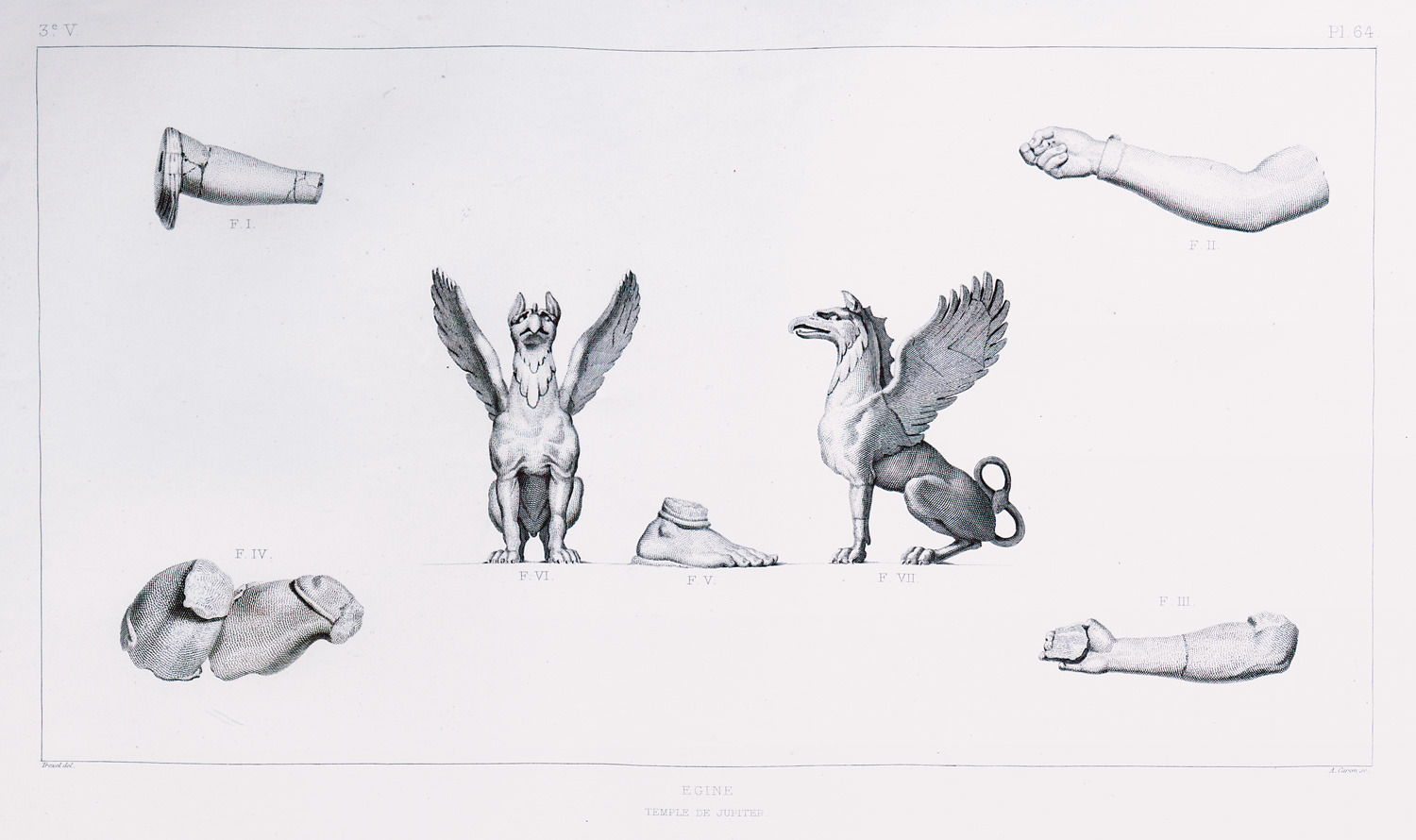
Temple of Aphaia, Aegina island: Fragments of the pediments. 3, 4: Acroterion.
-
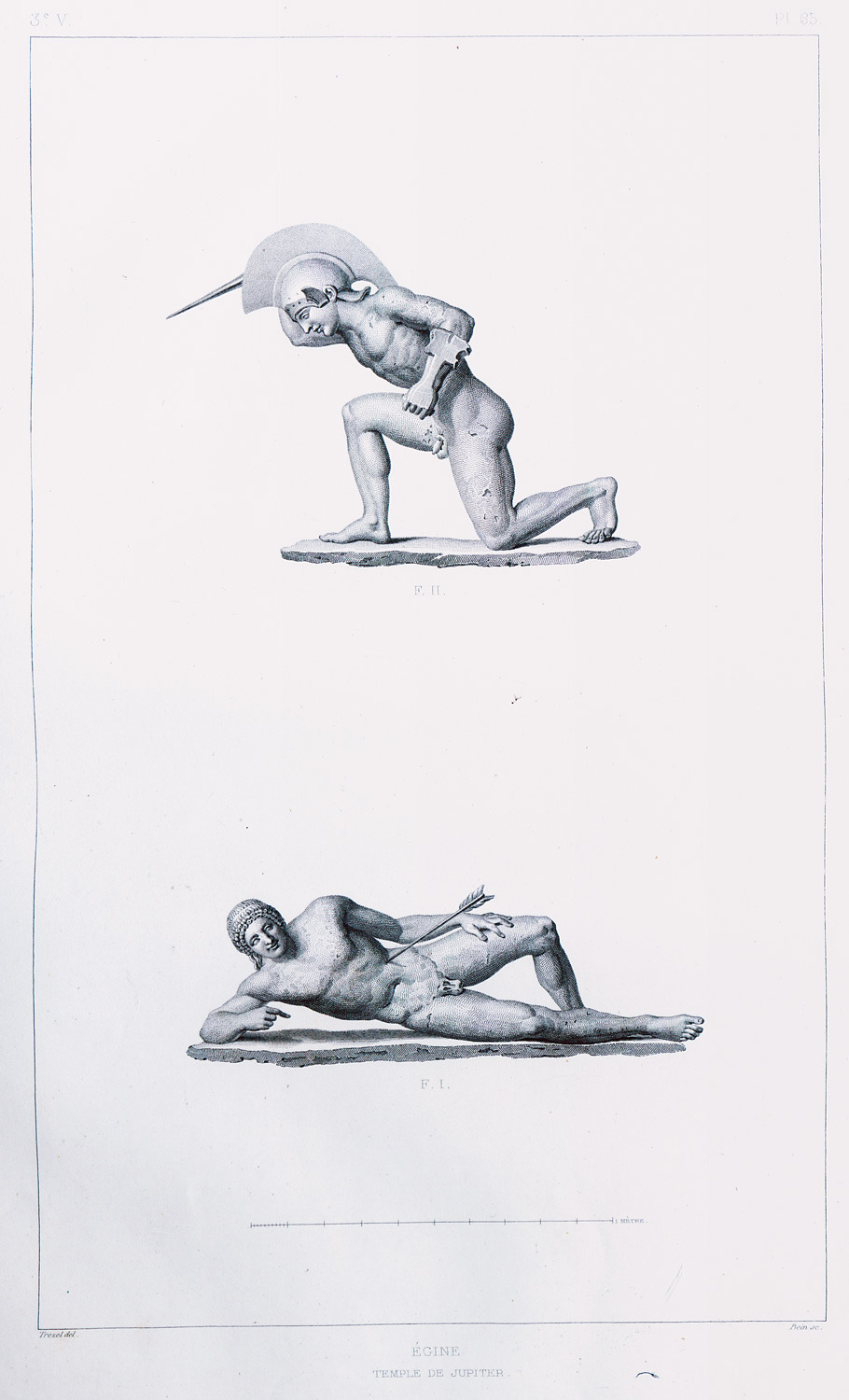
Temple of Aphaia, Aegina island. 1. Trojan warrior. 2. Aeneas.
-
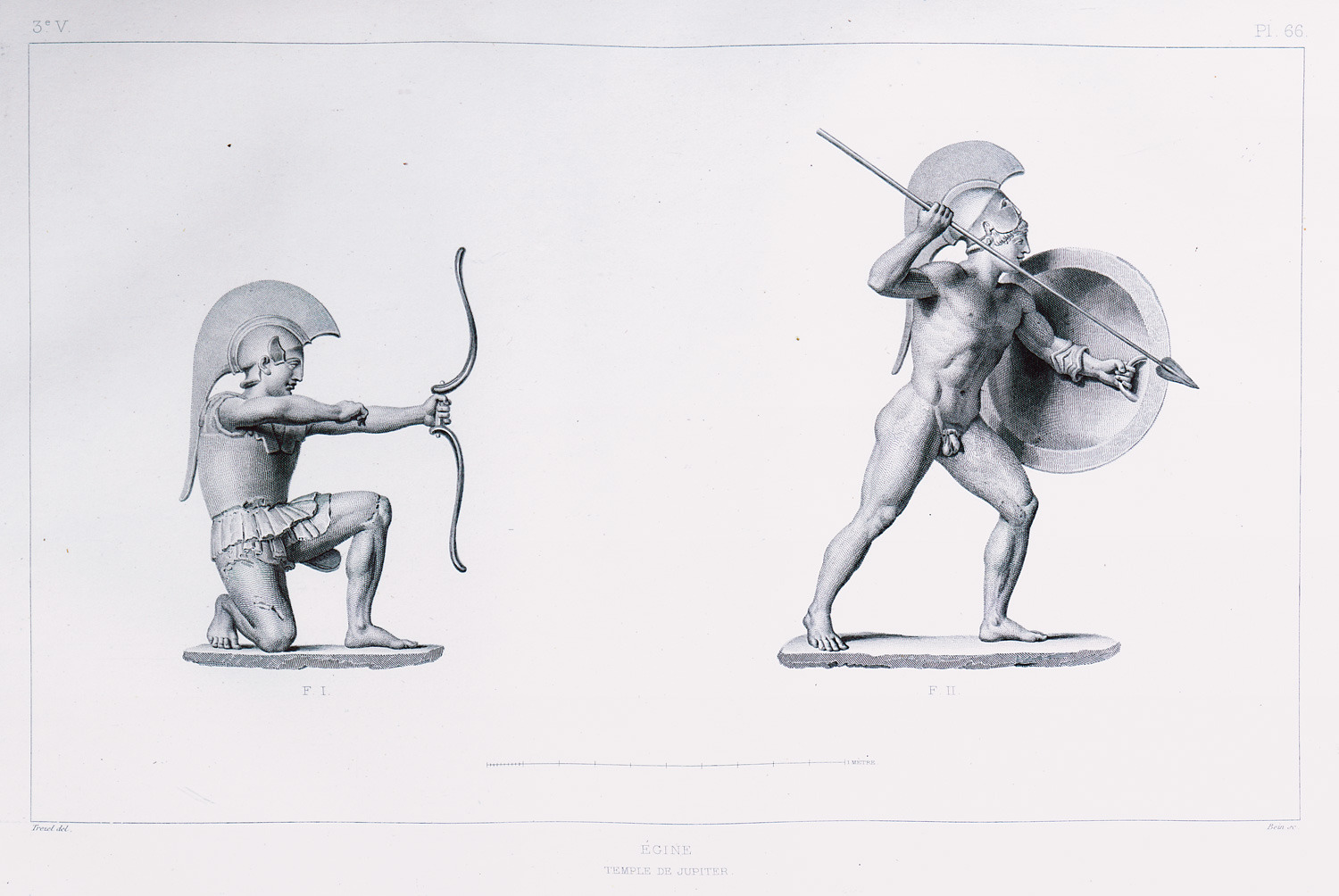
Eastern pediment of the temple of Aphaia, Aegina island. 1. Teucrus. 2. Achilles.
-
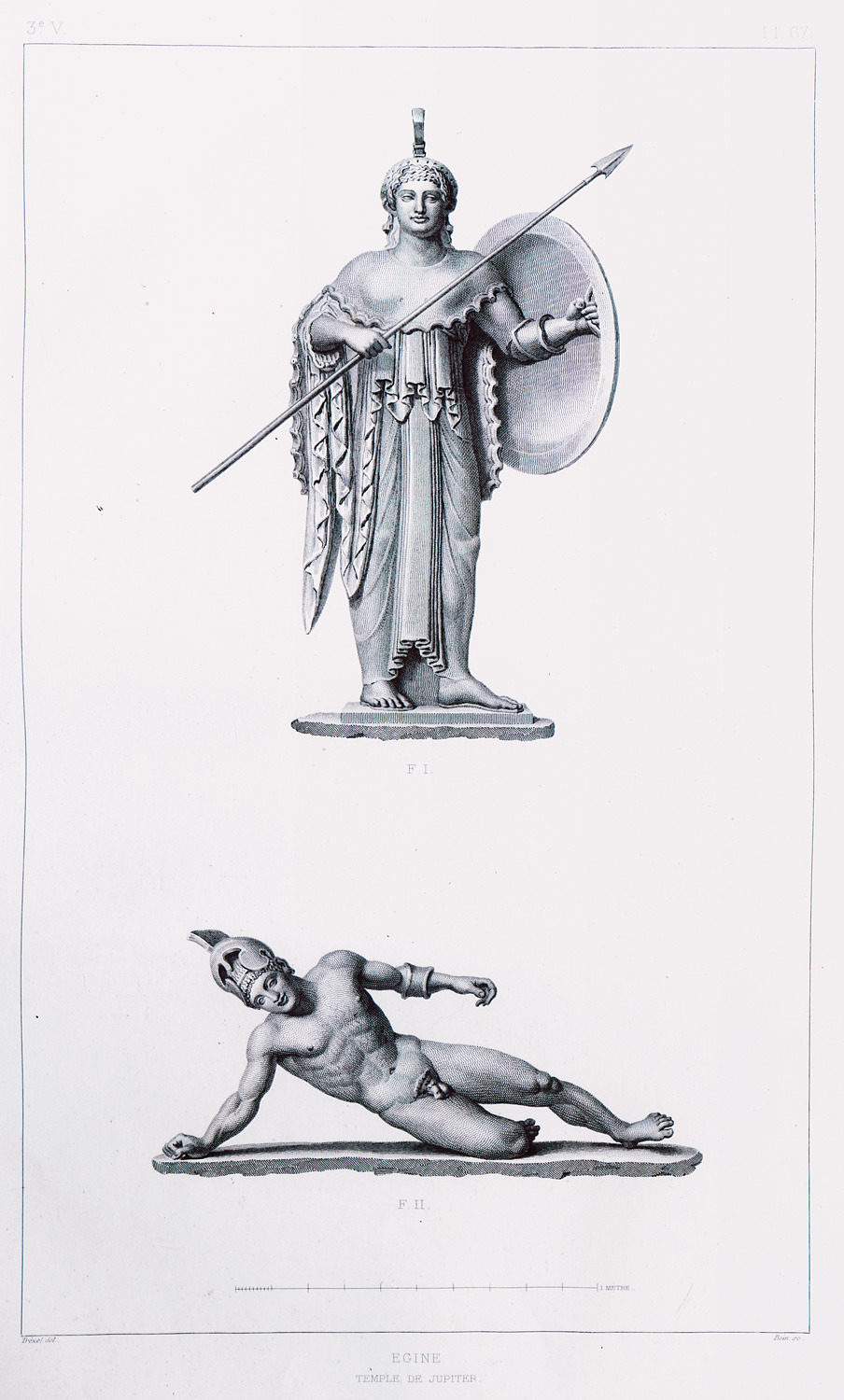
Eastern pediment of the temple of Aphaia, Aegina island. 1. Goddess Athena. 2. Patroclus.
-
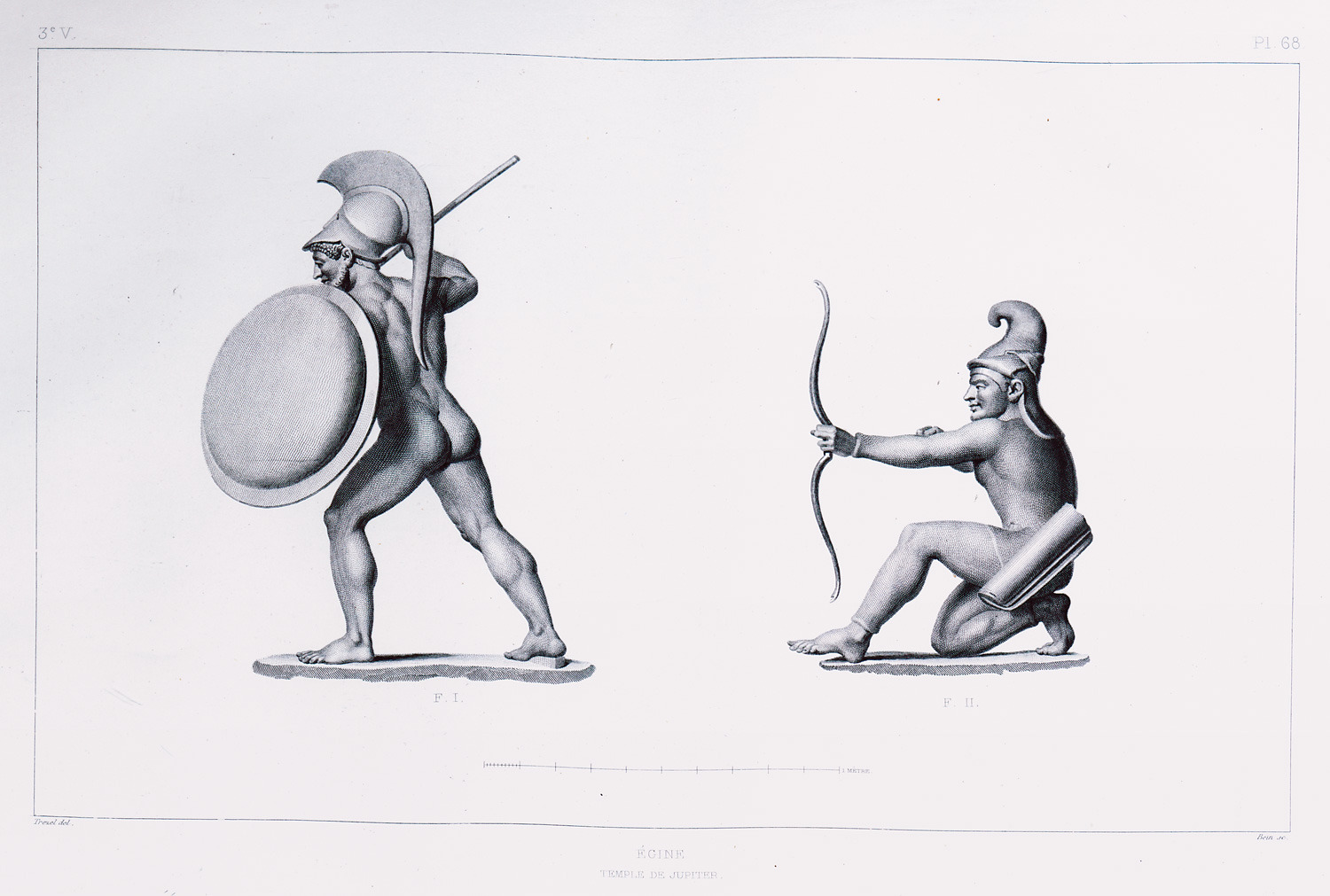
Eastern pediment of the temple of Aphaia, Aegina island. 1. Hector. 2. Pares.
-
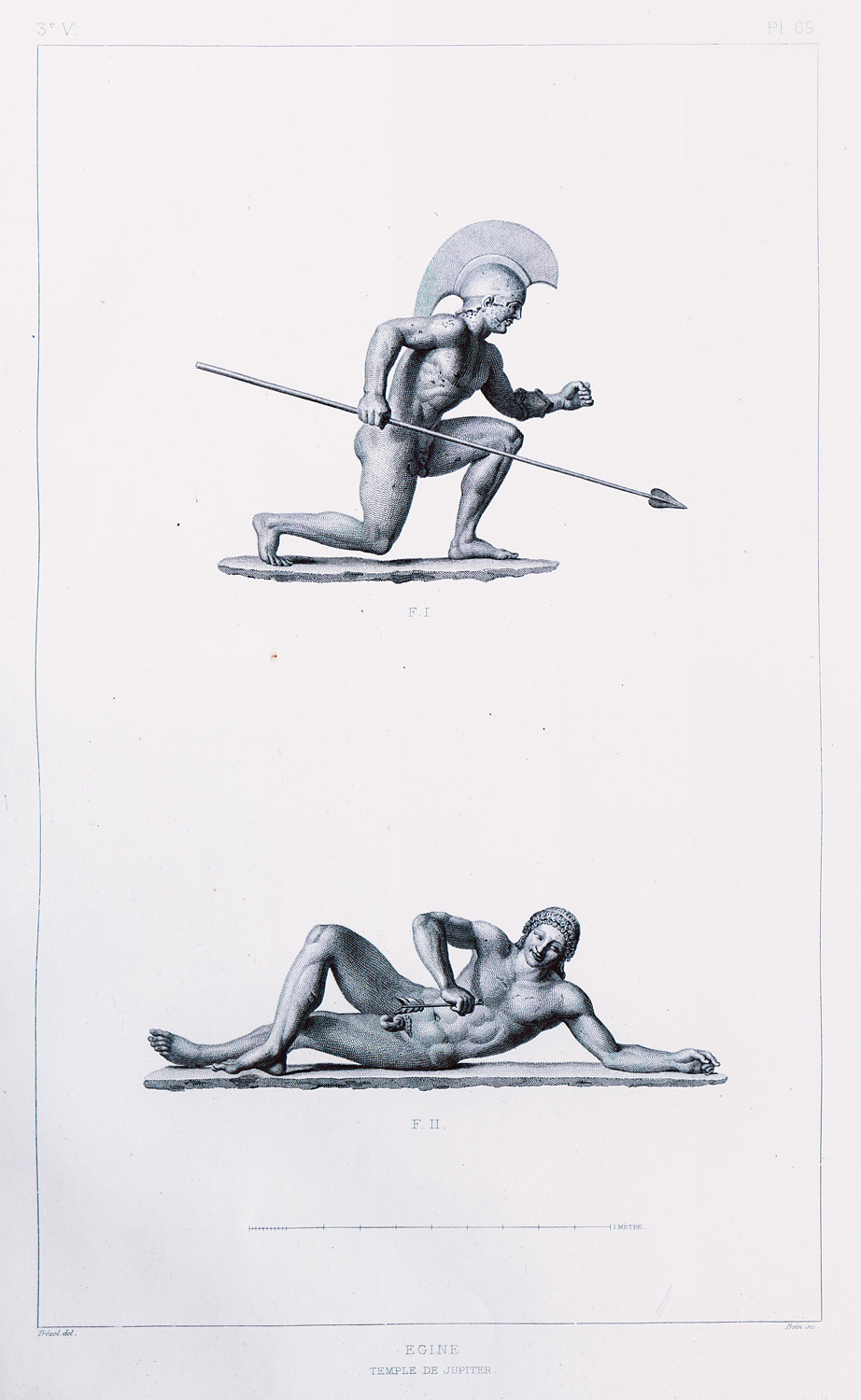
Eastern pediment of the temple of Aphaia, Aegina island. 1. Telamon. 2. Greek warrior.
-
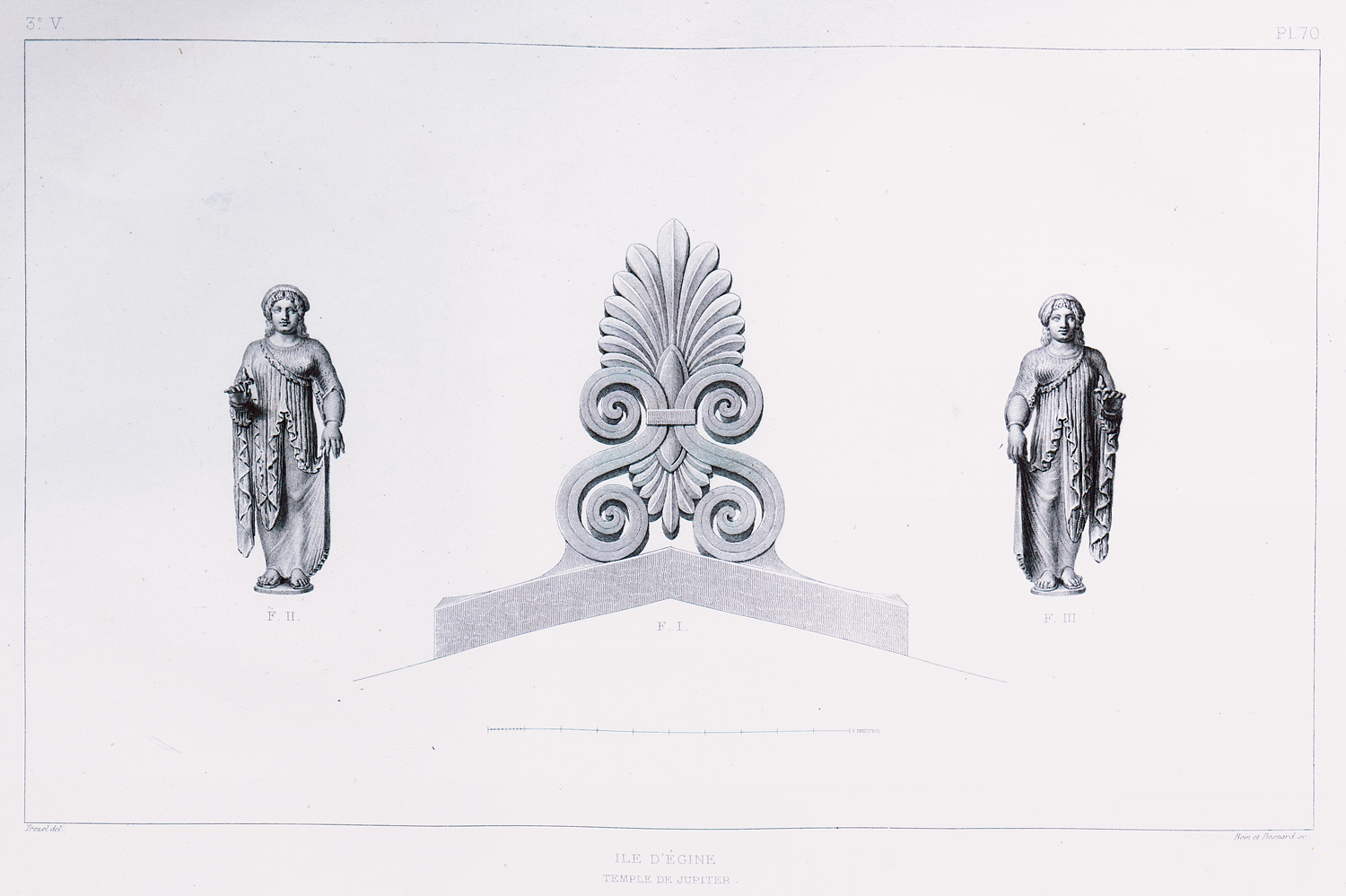
-
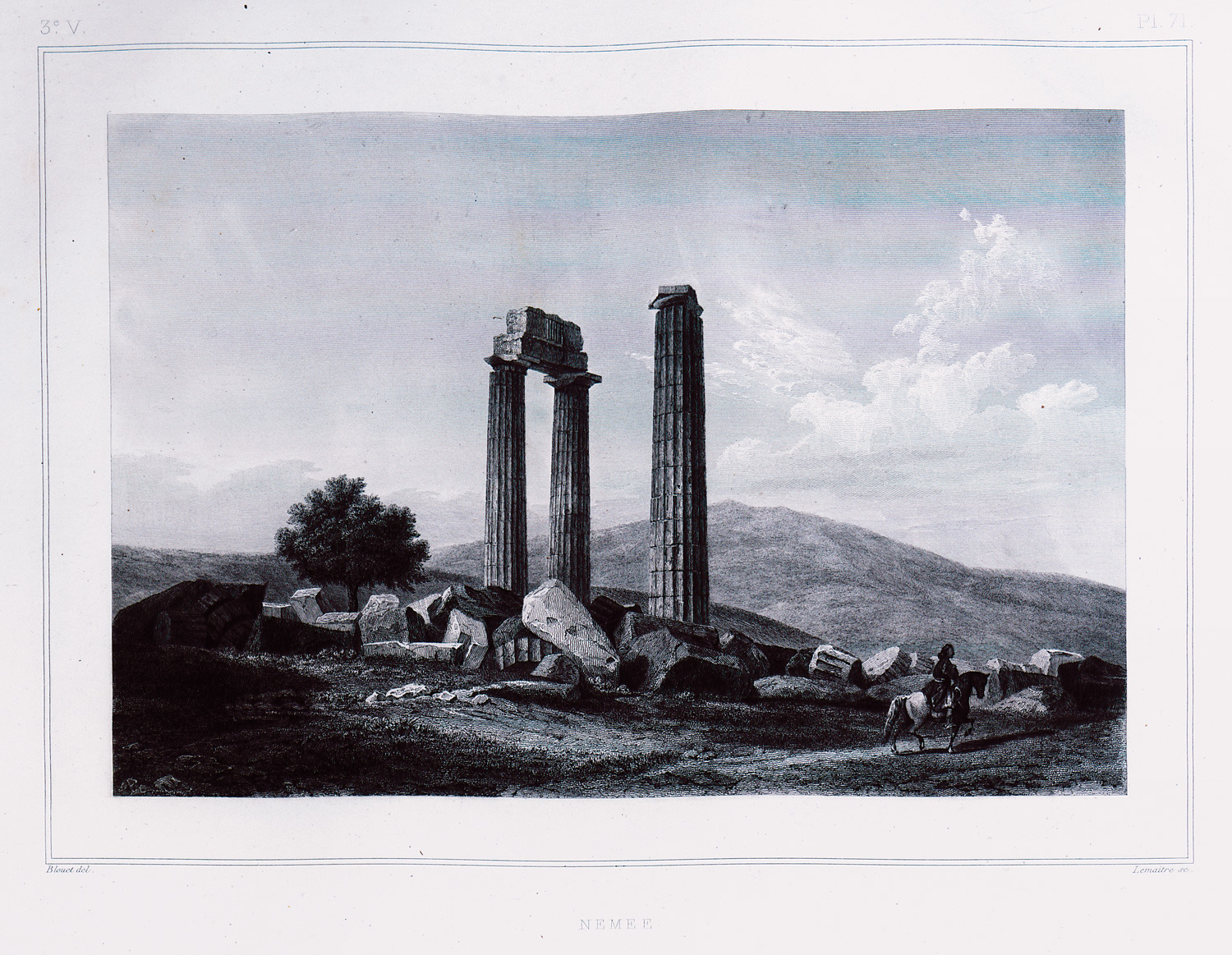
-
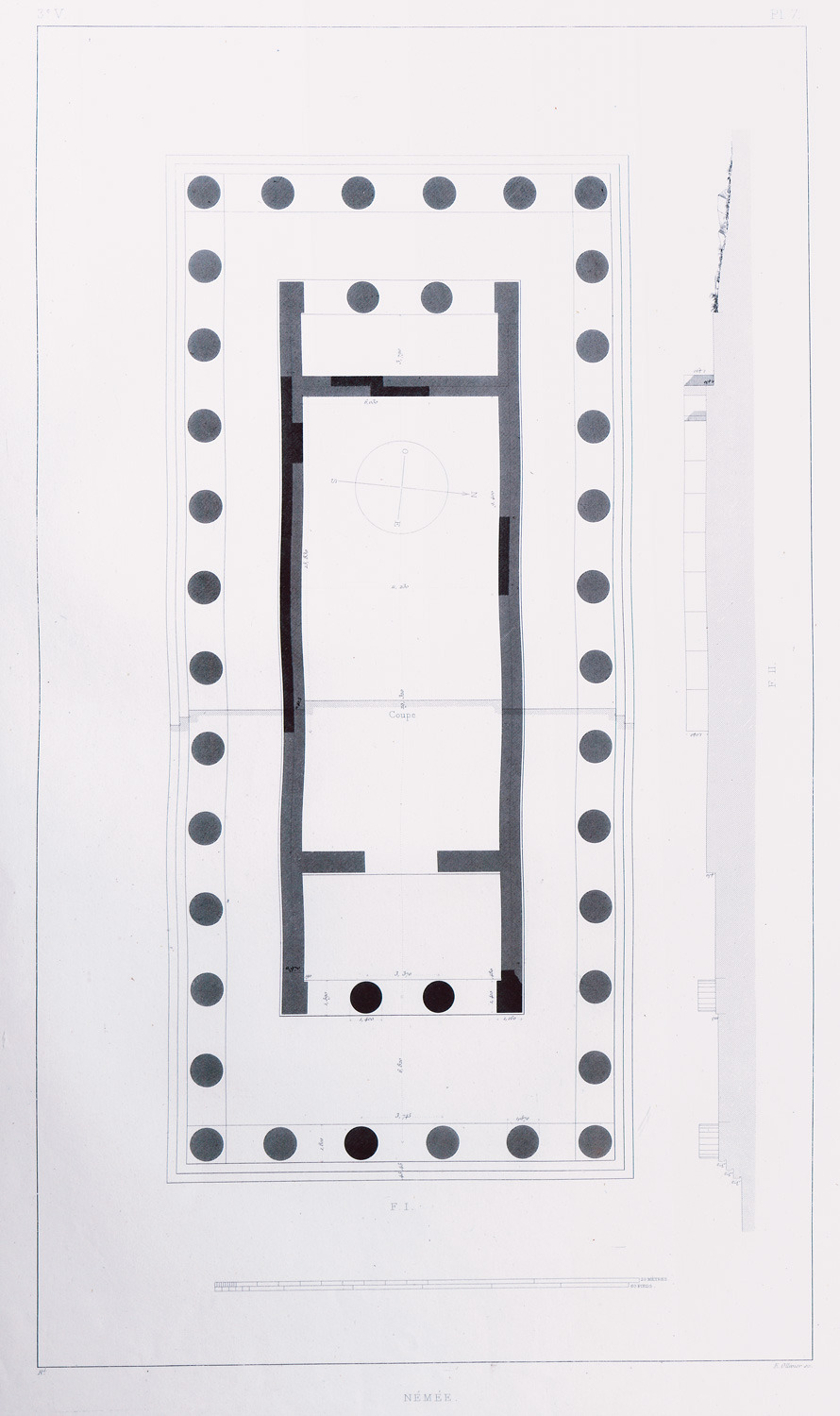
-
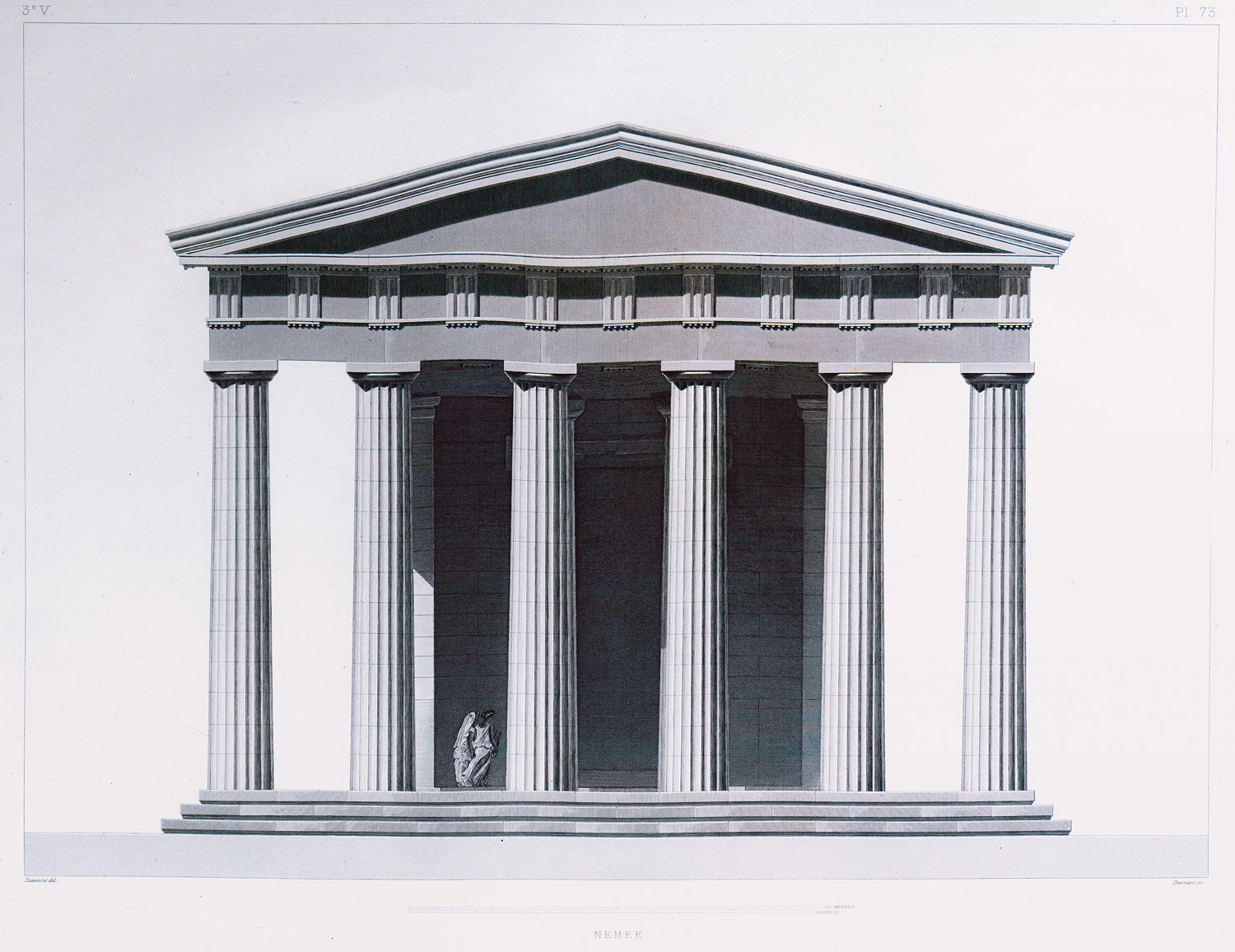
Temple of Zeus at Nemea: Elevation of the temple façade (reconstruction).
-
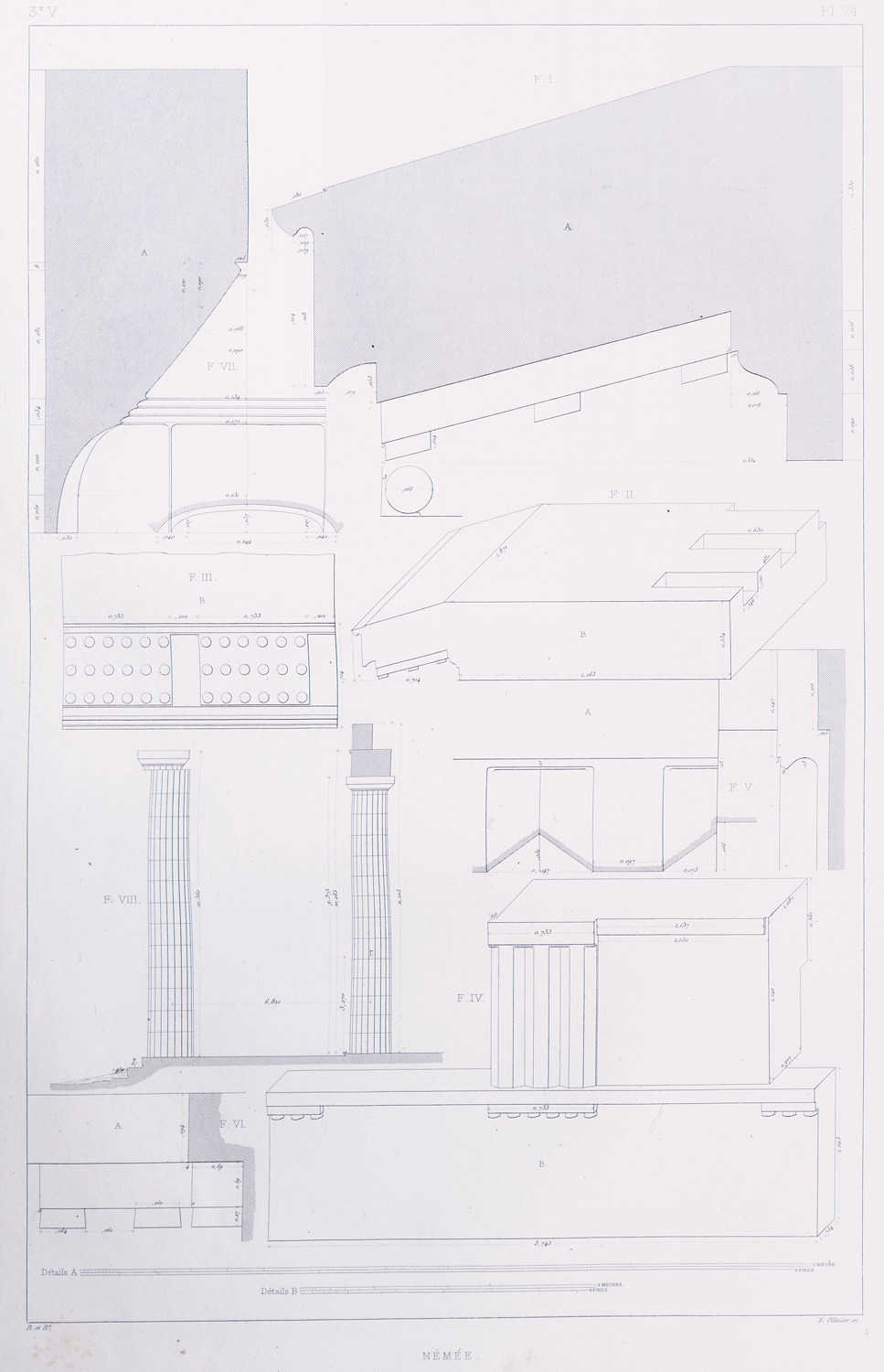
-
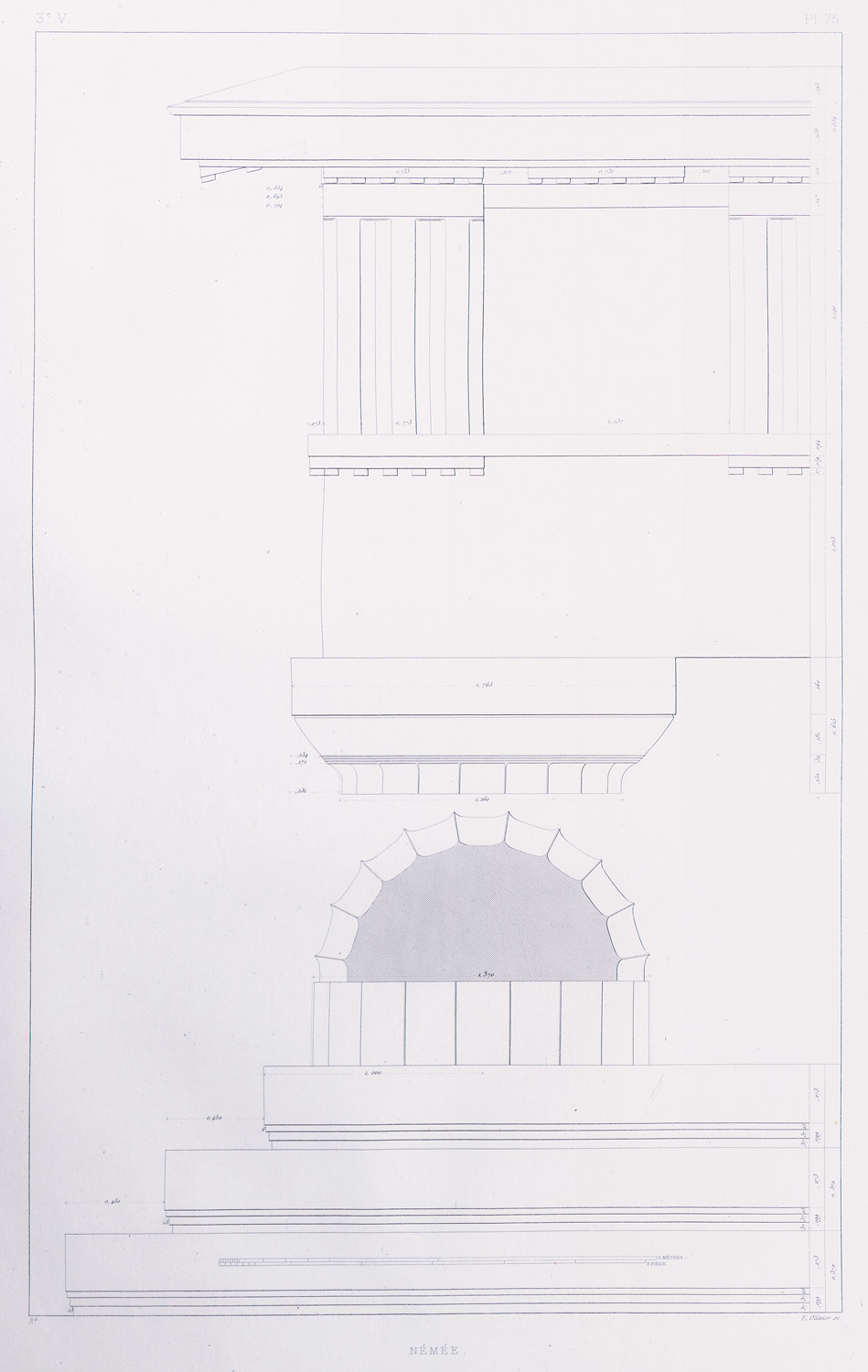
-
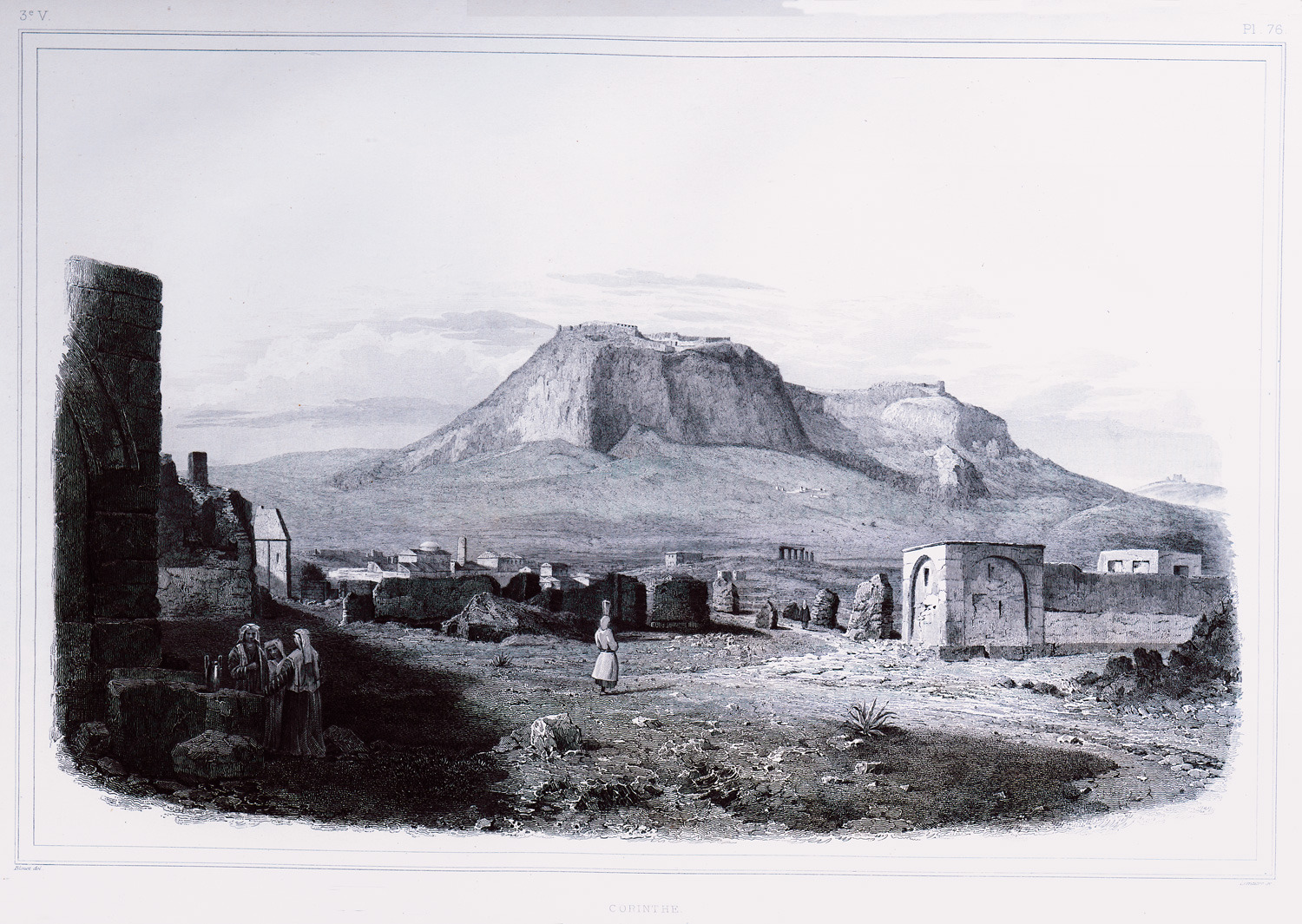
View of ancient Corinth with the Temple of Apollo and Acrocorinth.
-
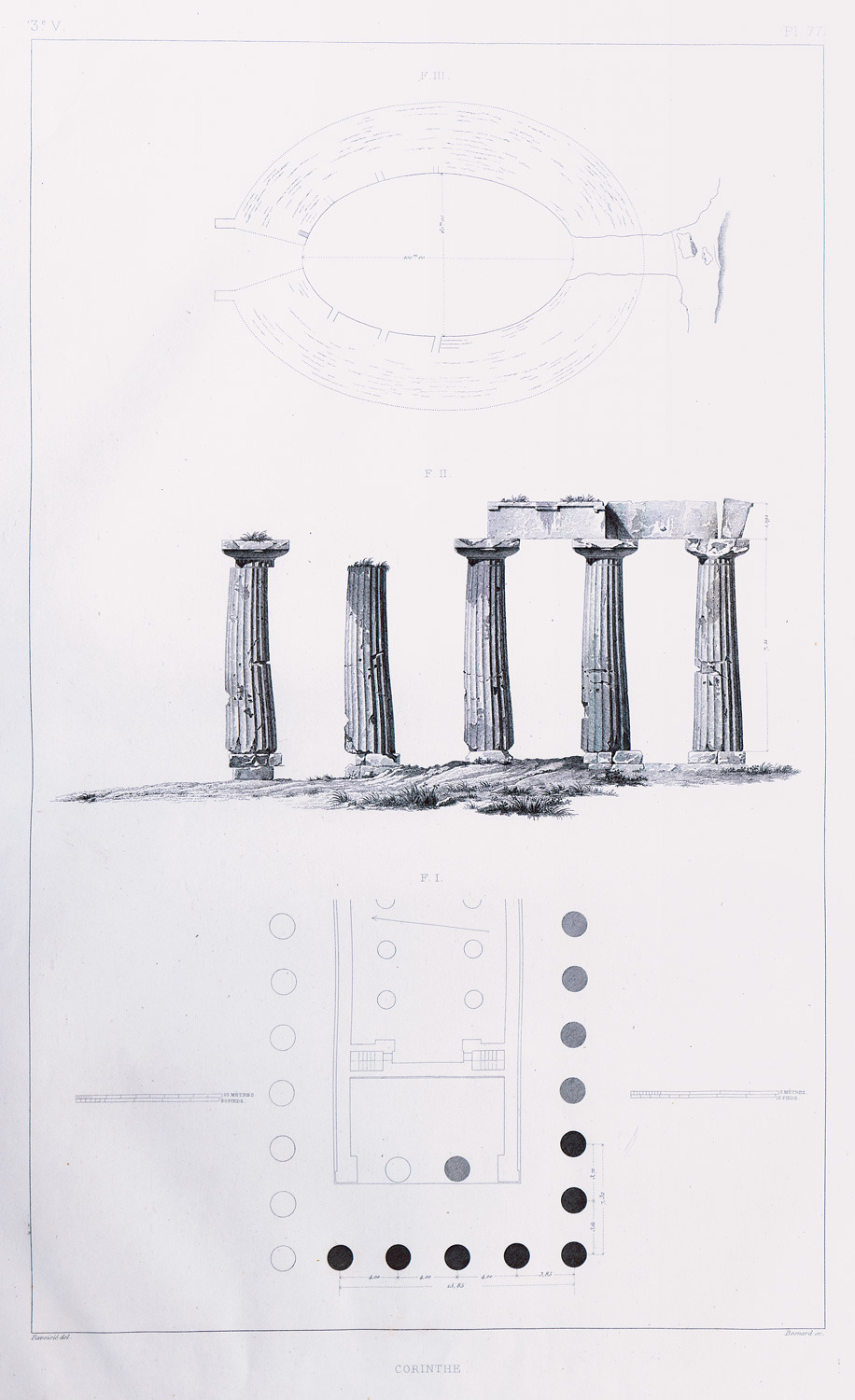
-
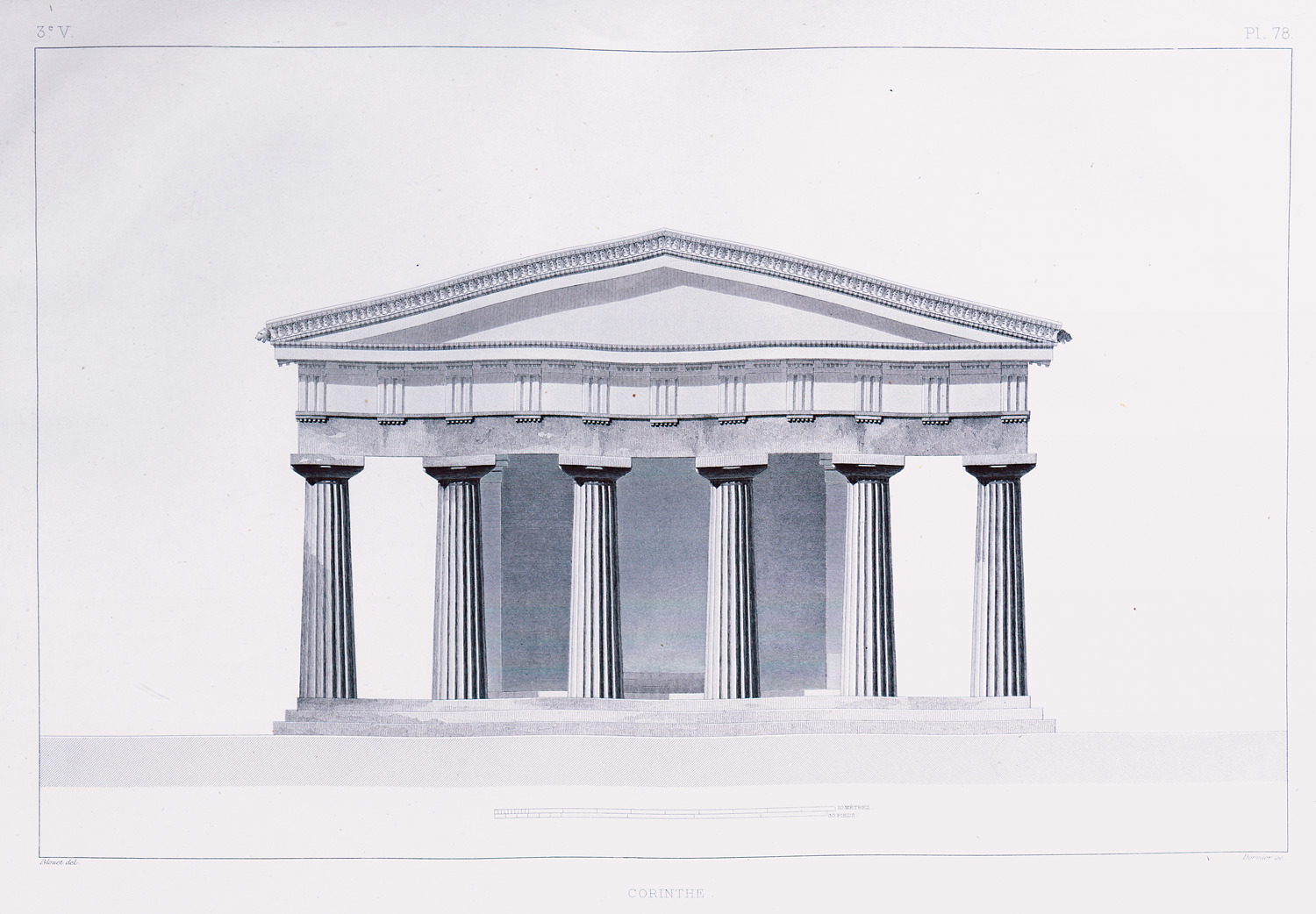
Elevation of the façade of the temple of Apollo at ancient Corinth.
-
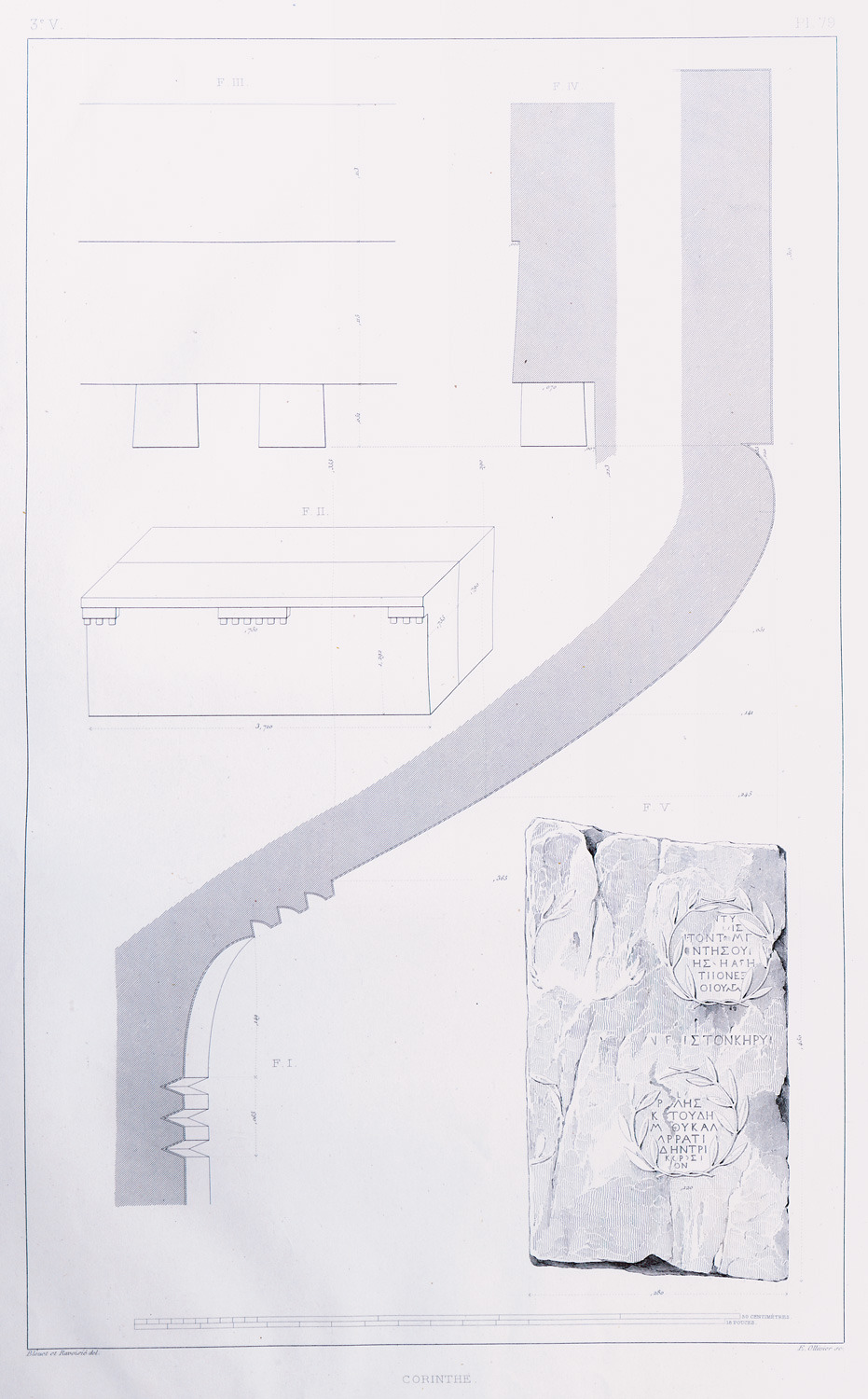
-
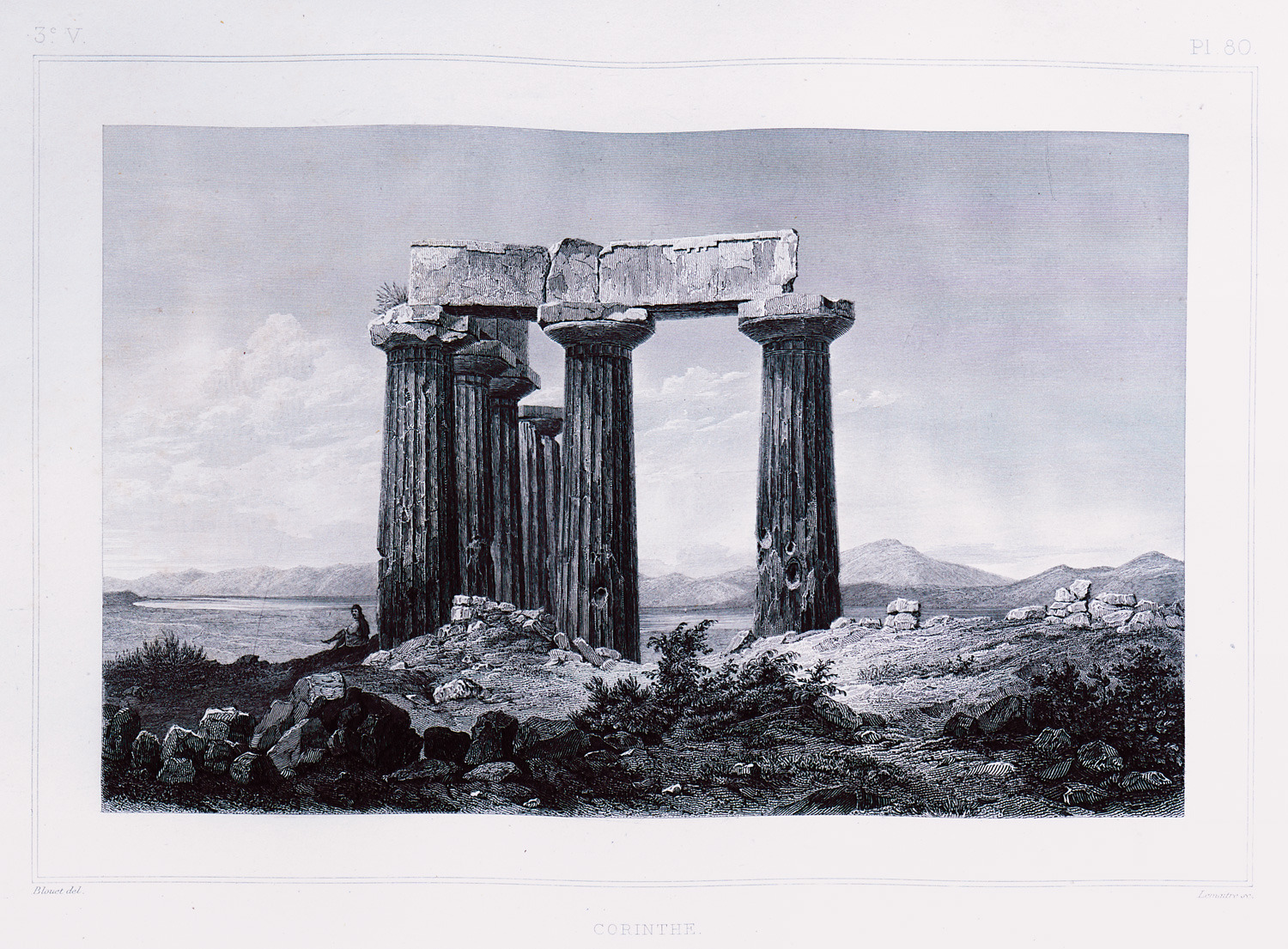
-
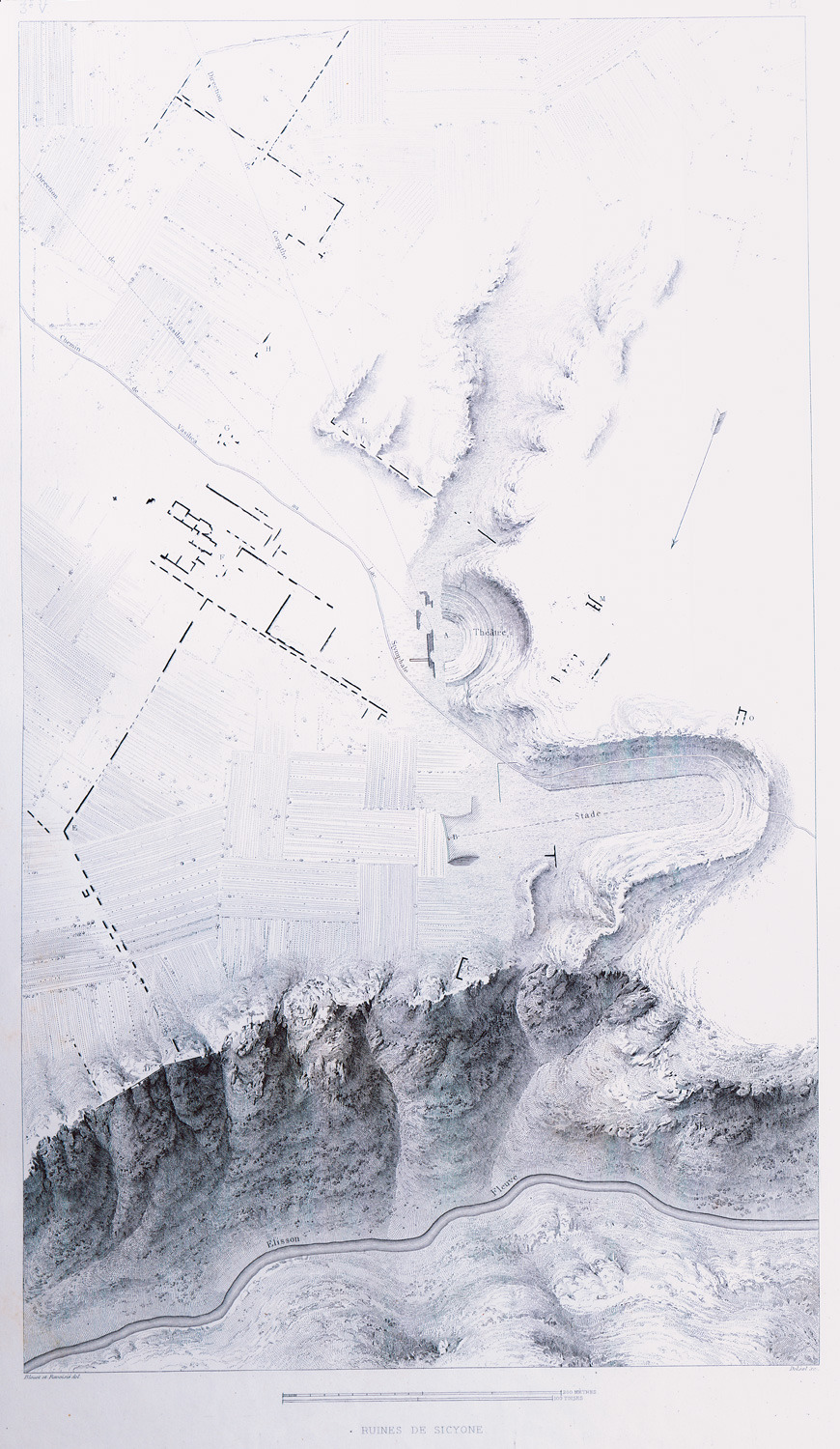
Topographical map of ancient Sicyon, with the sites of the ancient theatre and the stadium.
-
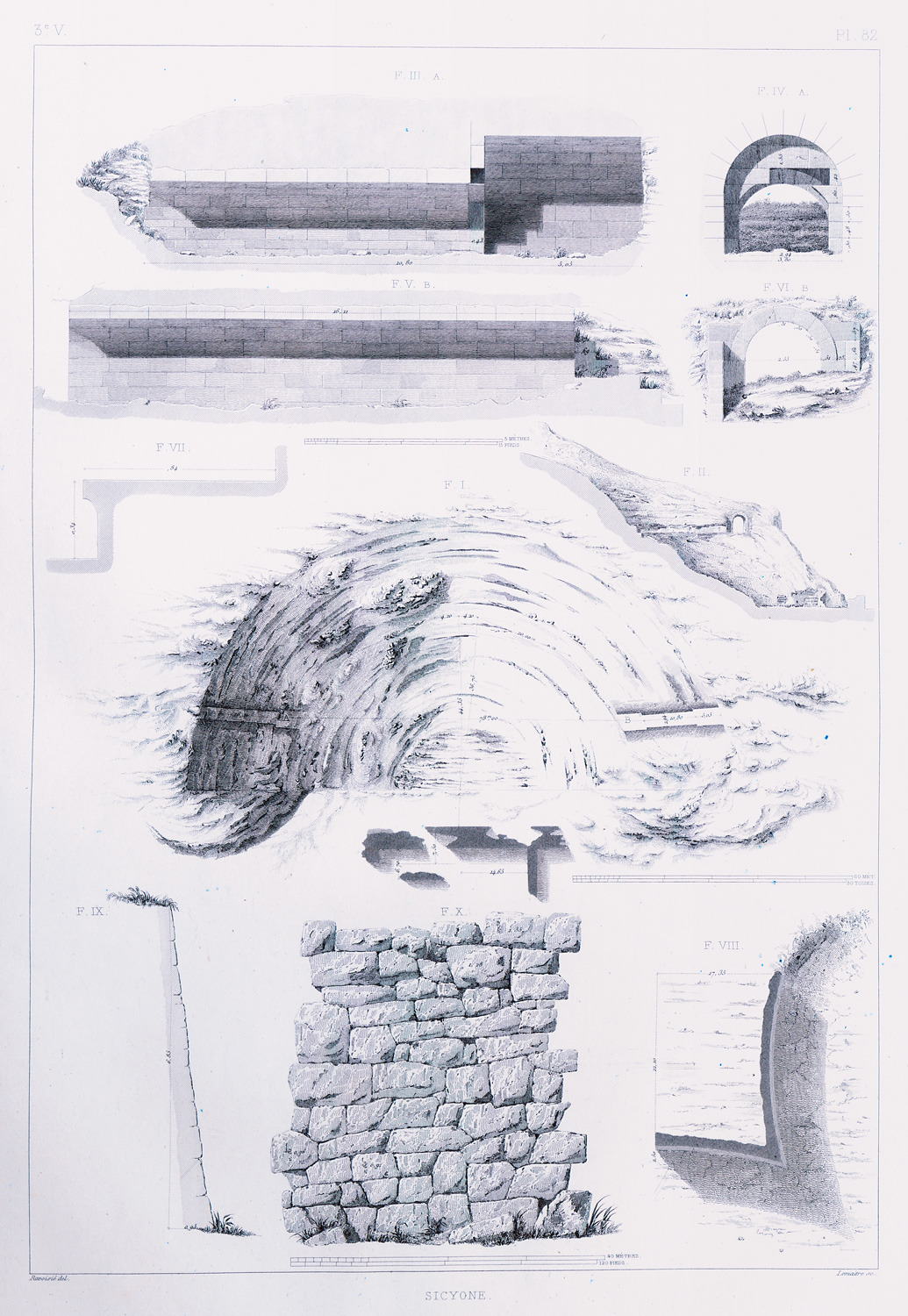
-
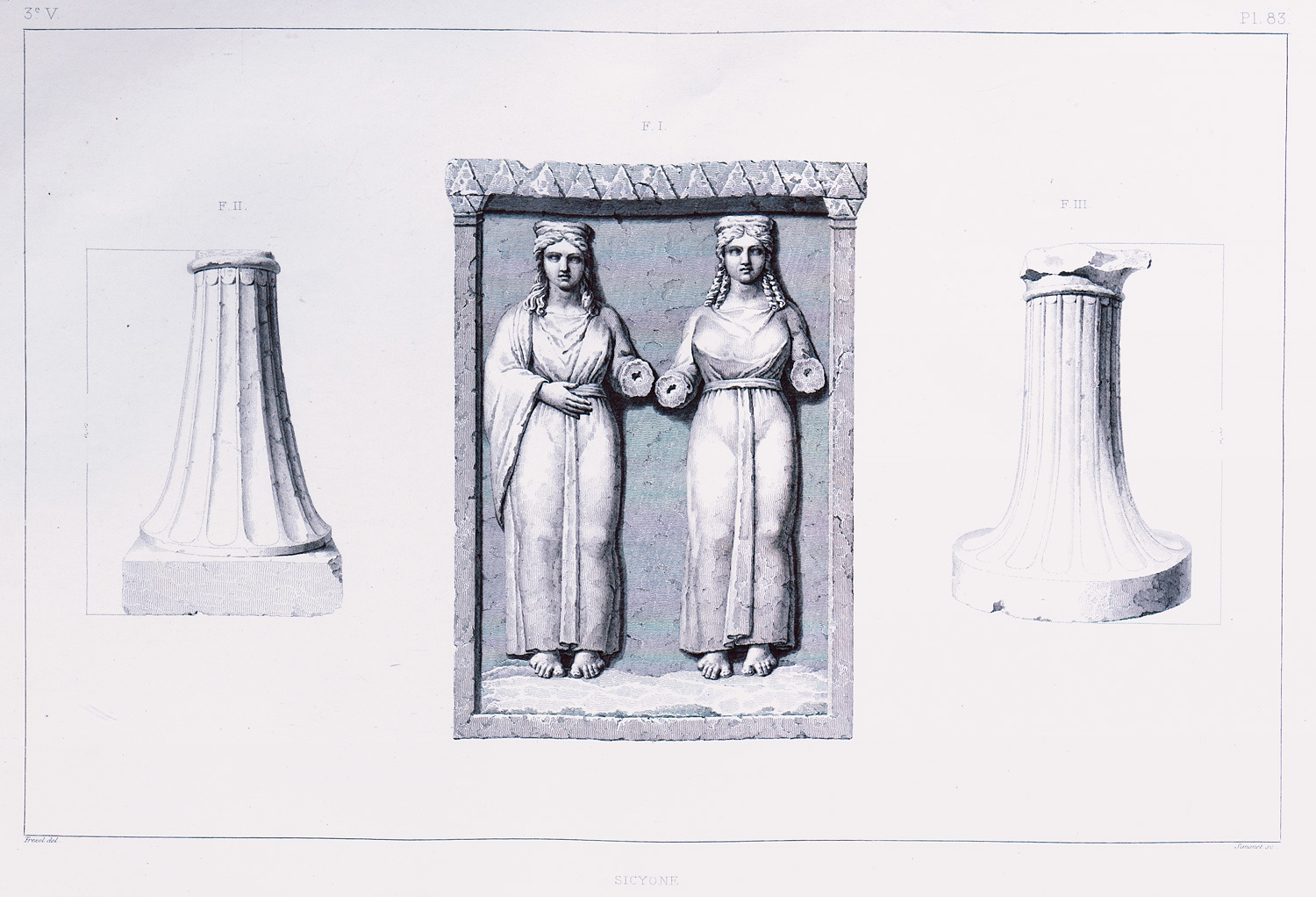
-
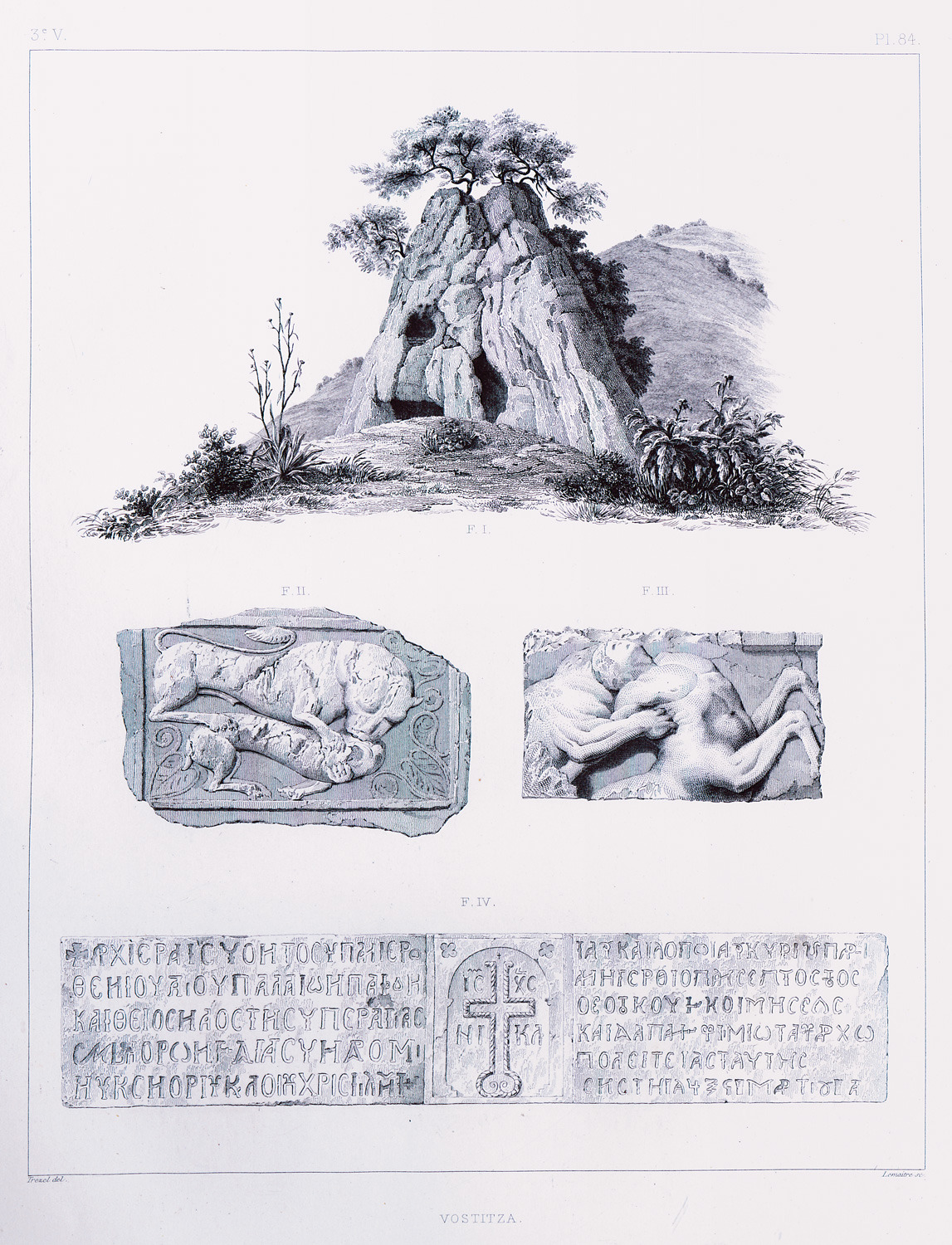
-
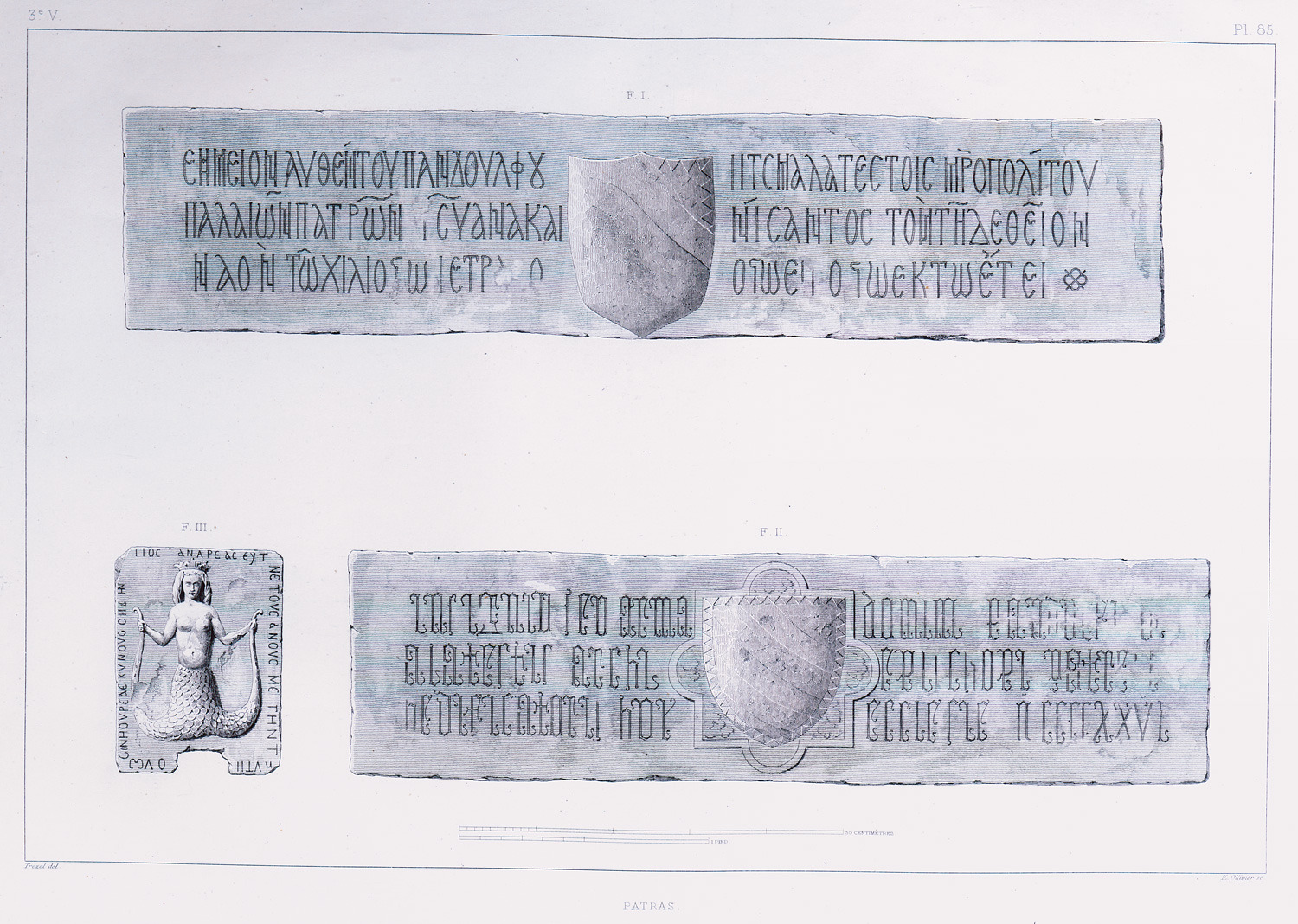
Medieval inscriptions and relief seen by the author at the castle of Patras.
-
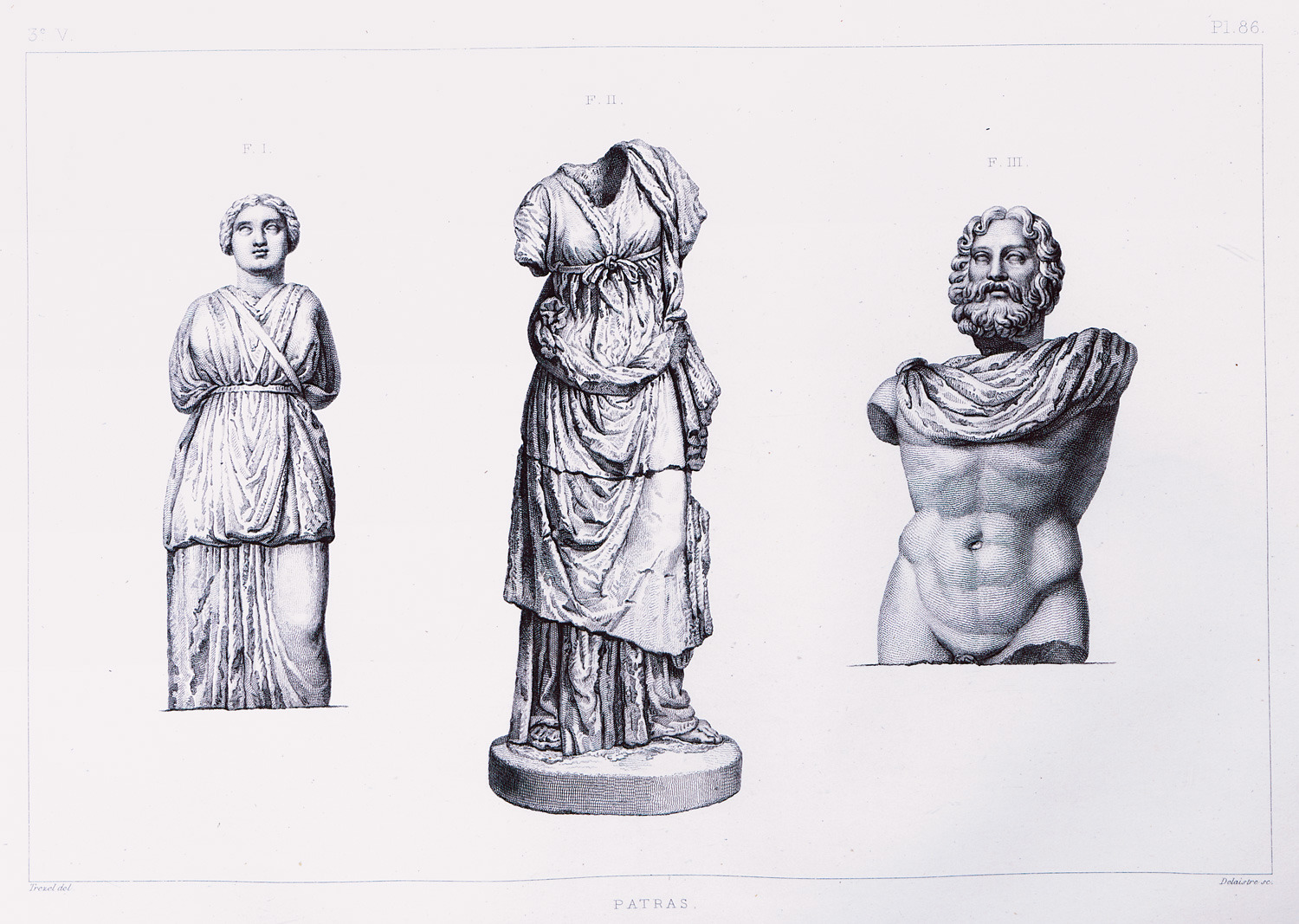
-
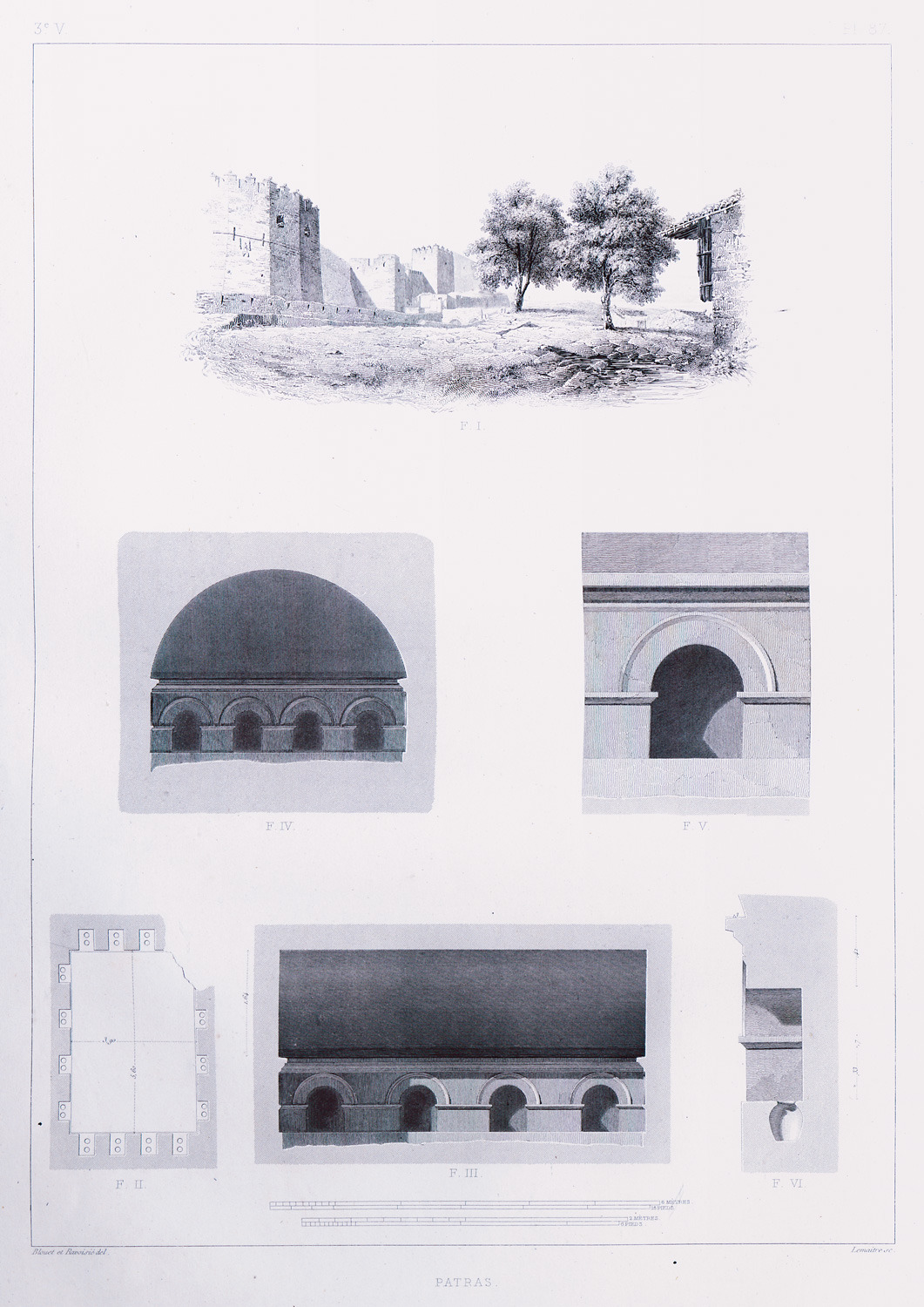
-
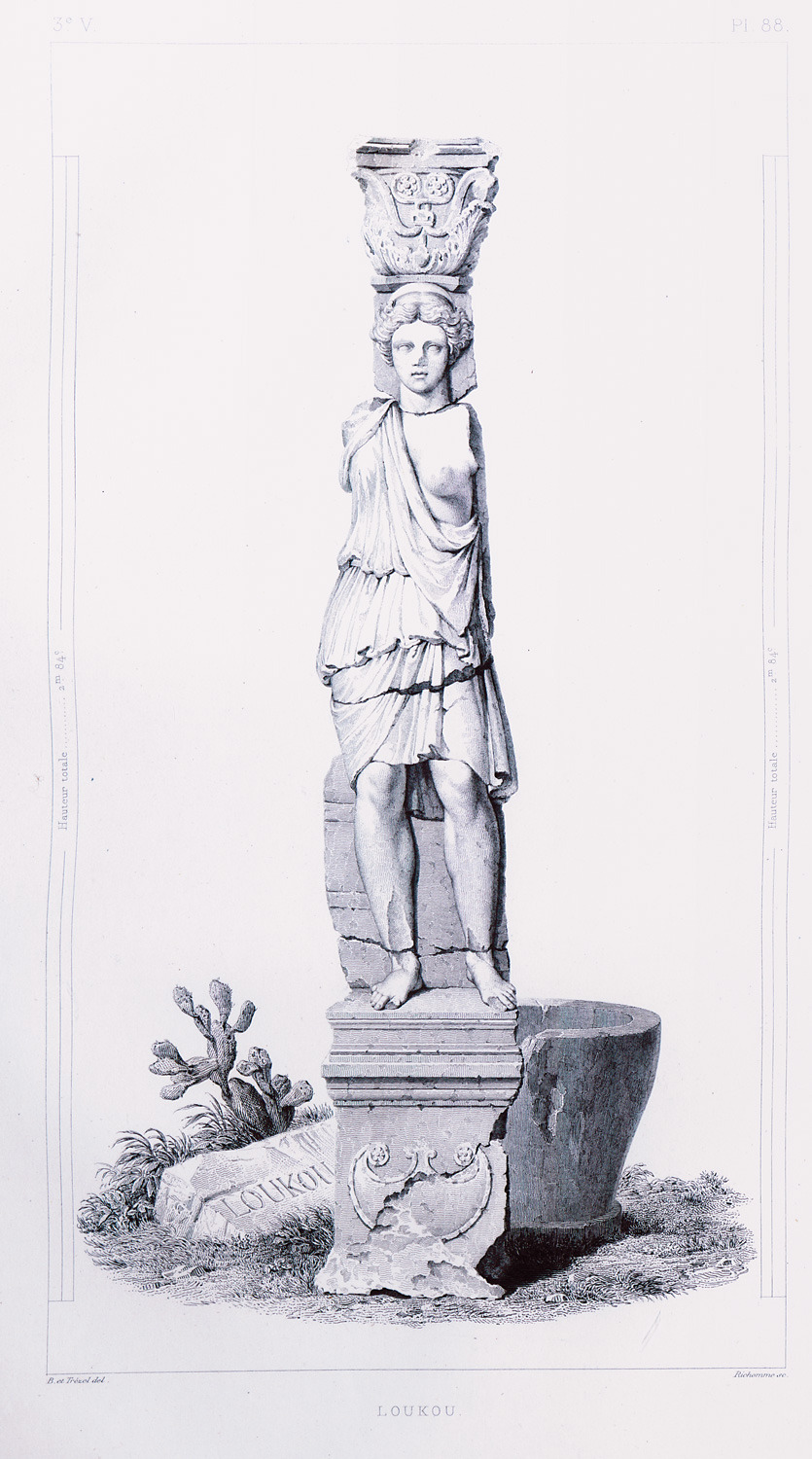
Roman antiquities seen by the author at the Monastery of Loukou, Cynouria, Peloponnese.
-
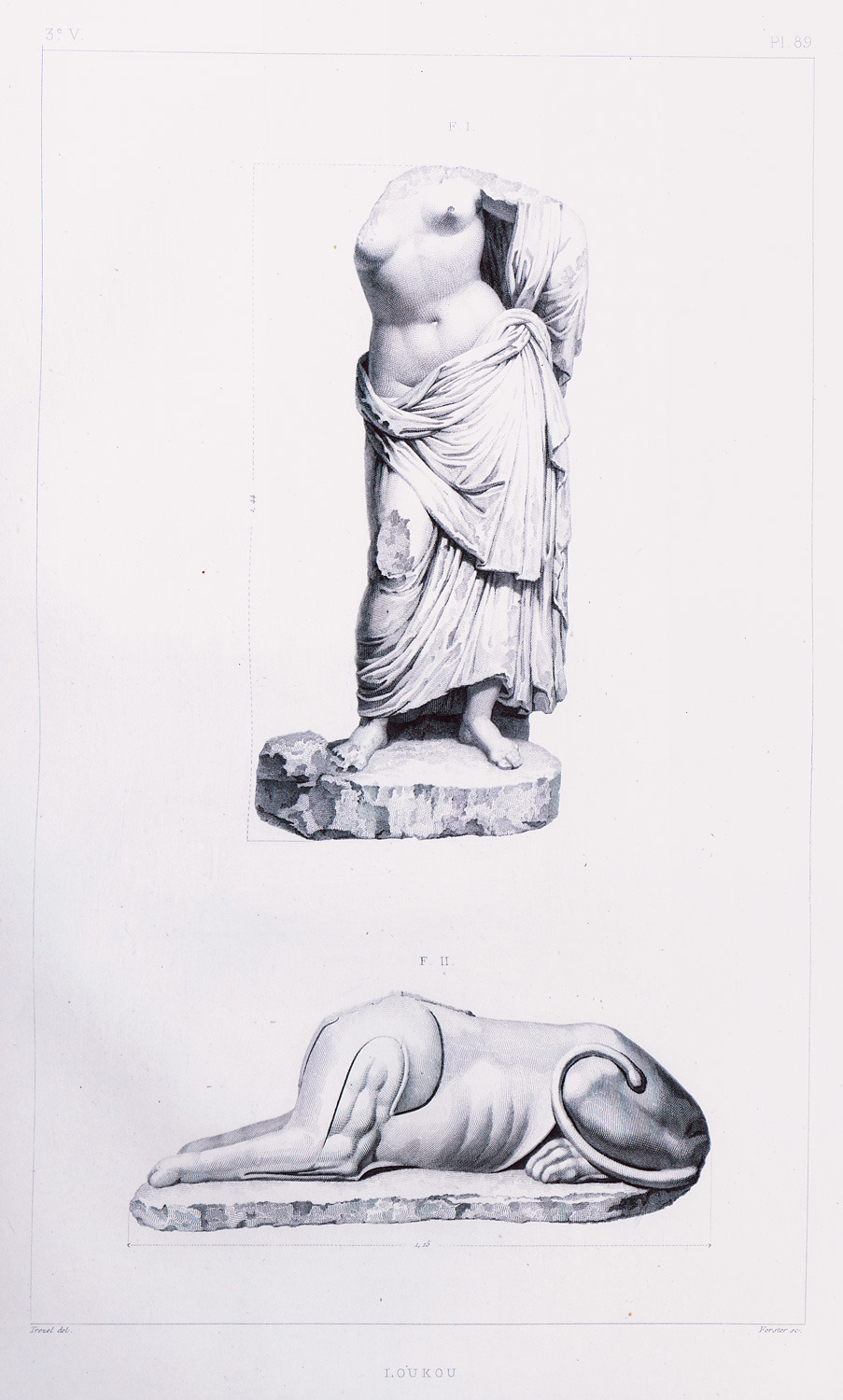
-
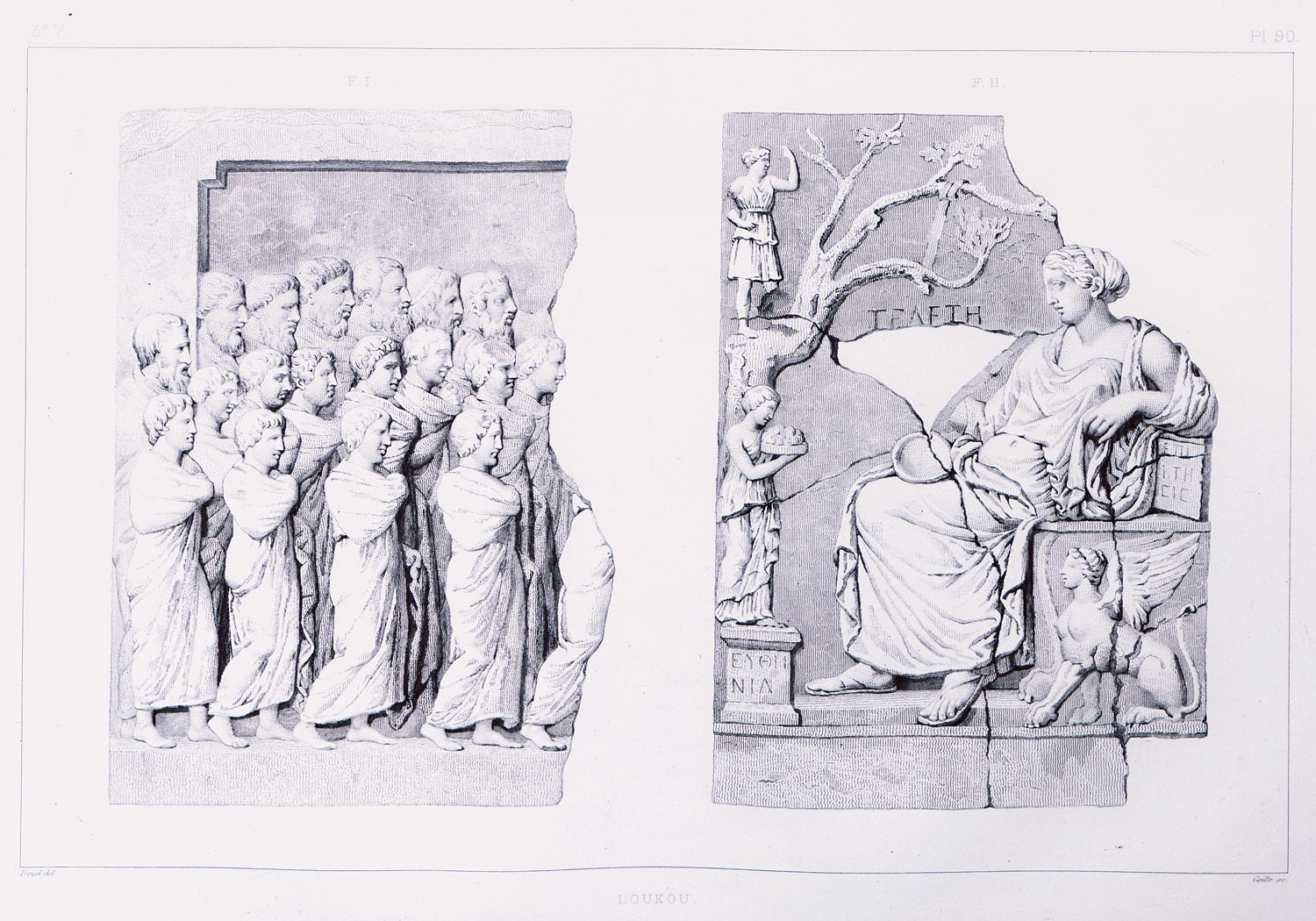
-
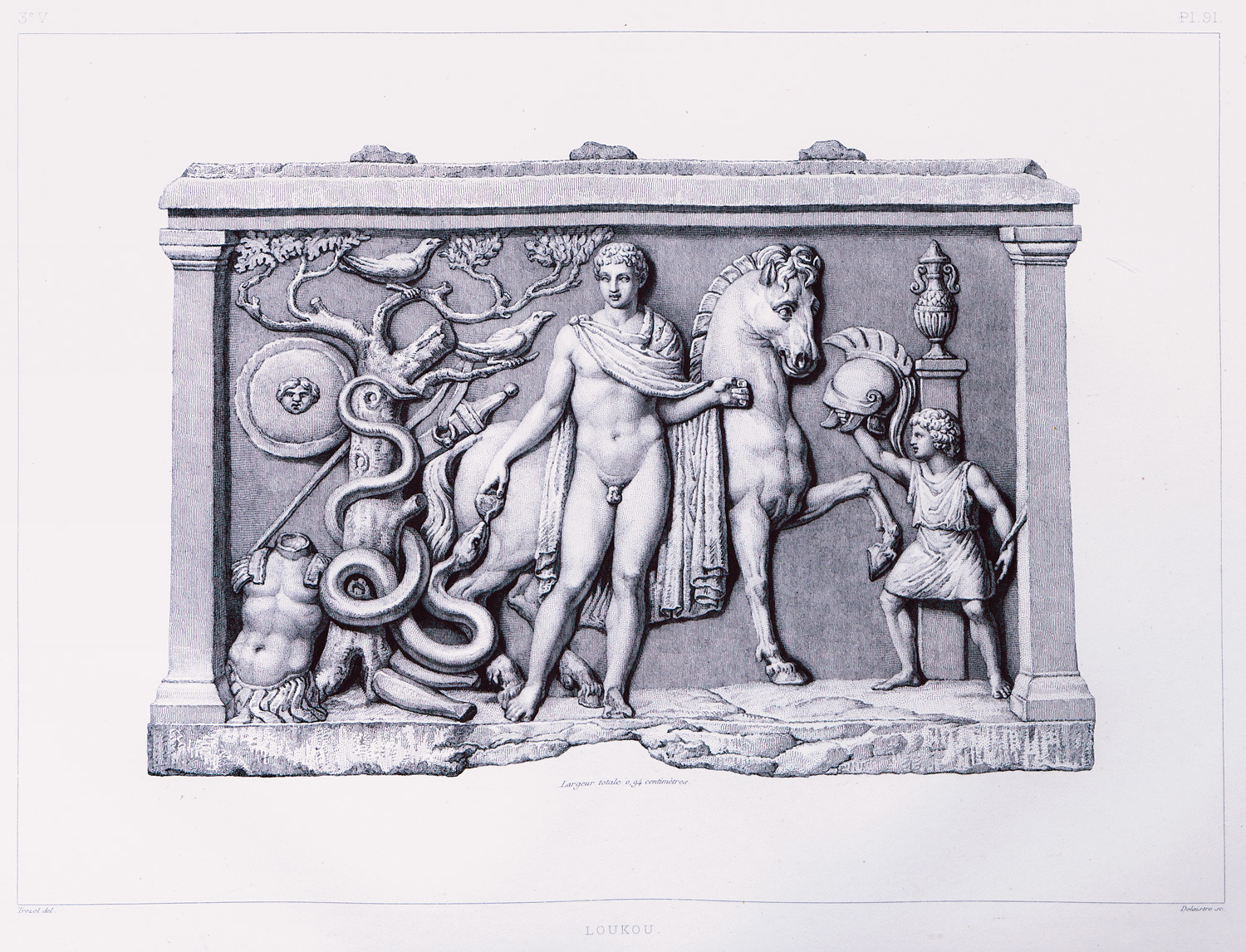
-
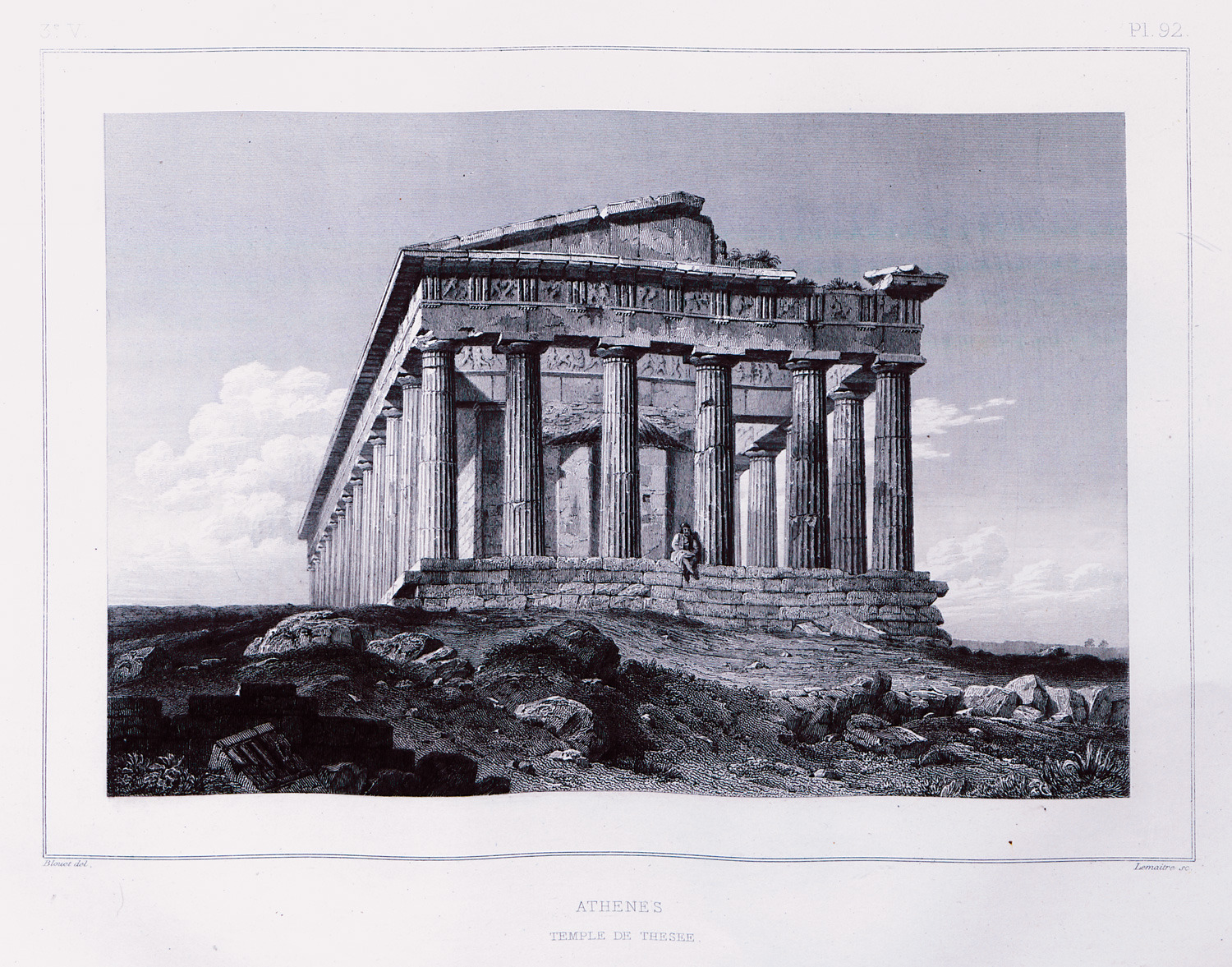
-
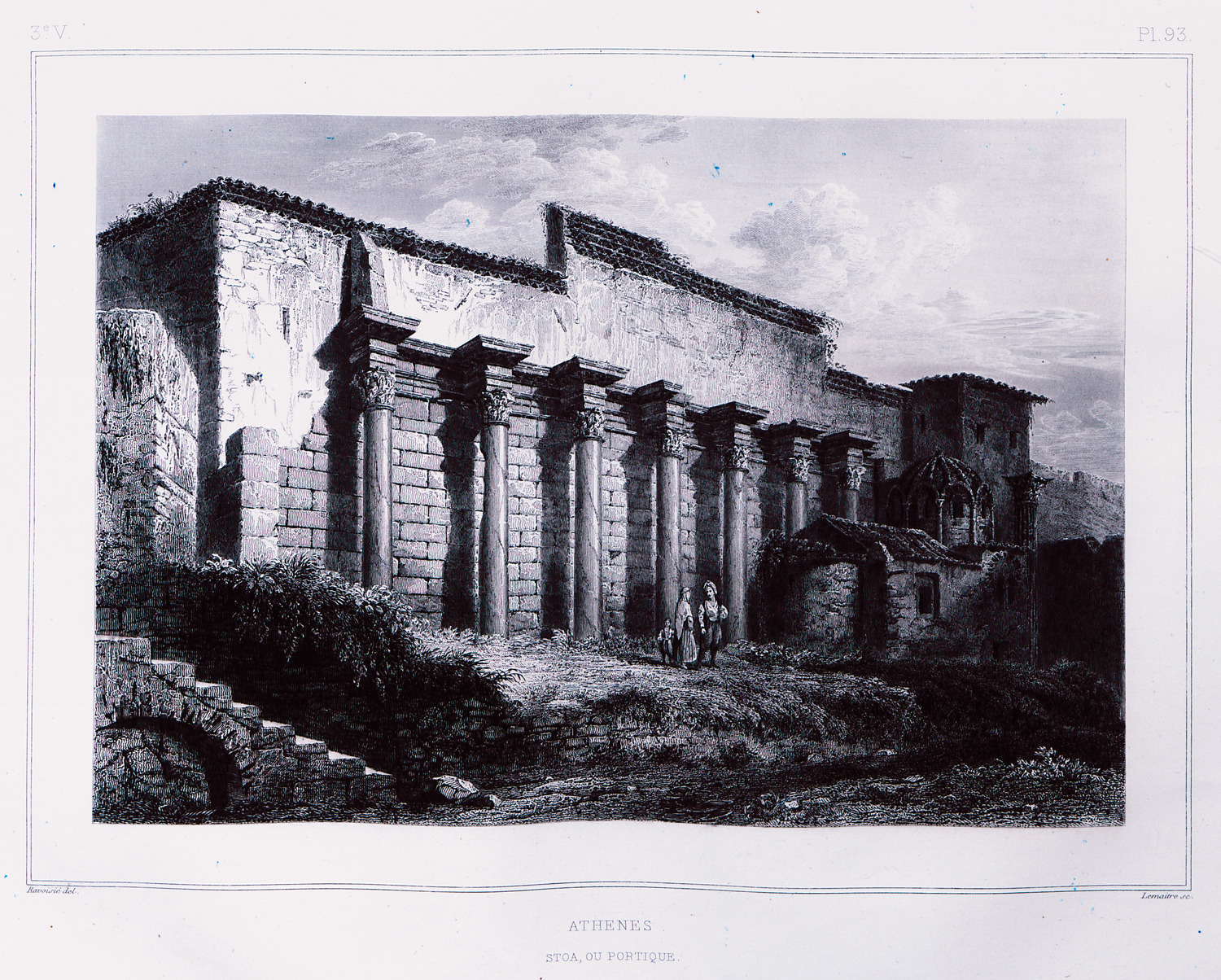
The Library of Hadrian, Athens, with the now-lost small church of Hagios Asomatos “sta Skalia”.
-
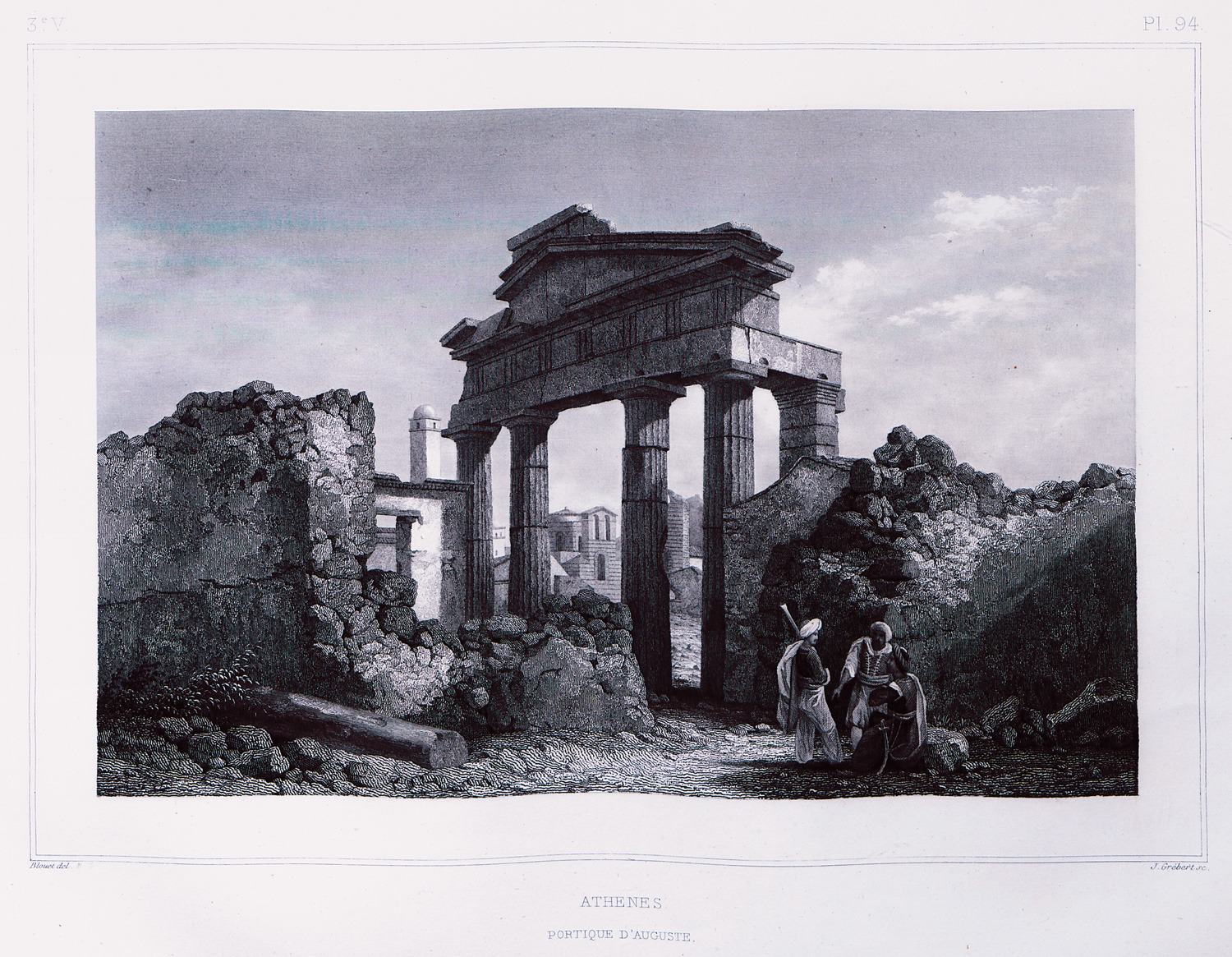
The Gate of Athena Archegetis (Pazaroporta) at Plaka, Athens.
-
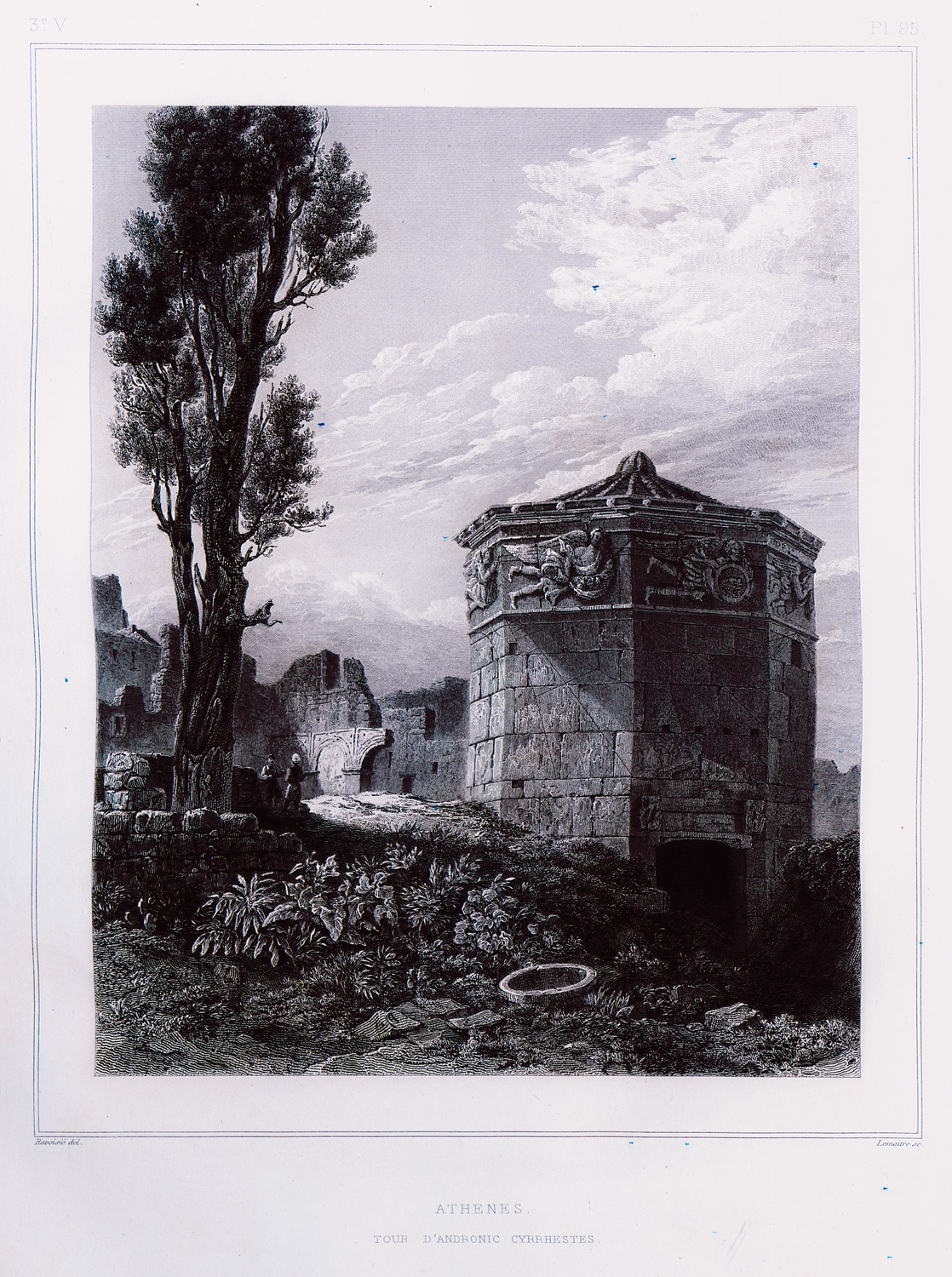
Horologion of Andronikos Kyrristos or Tower of the Winds, Plaka, Athens.
-
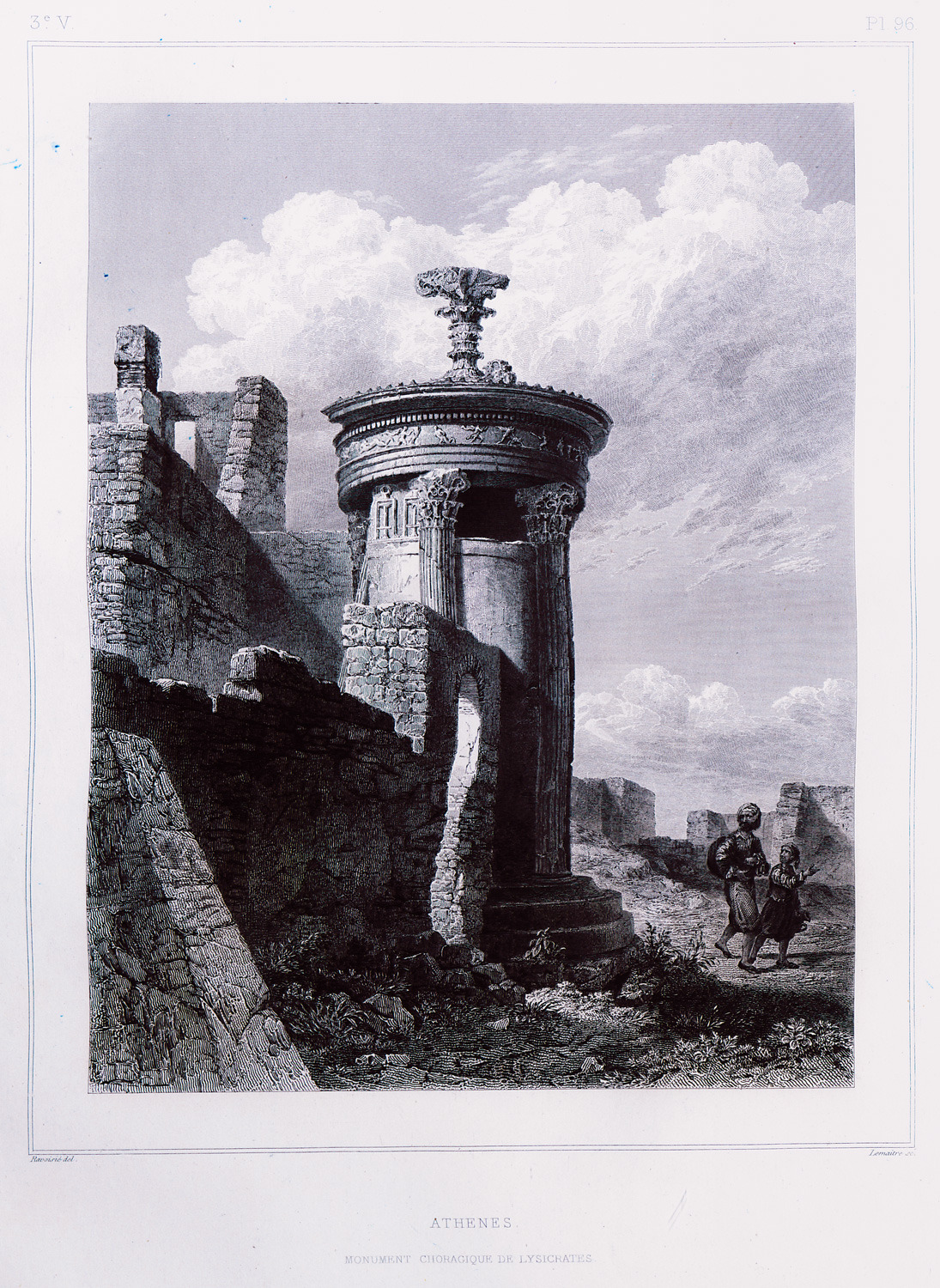
-
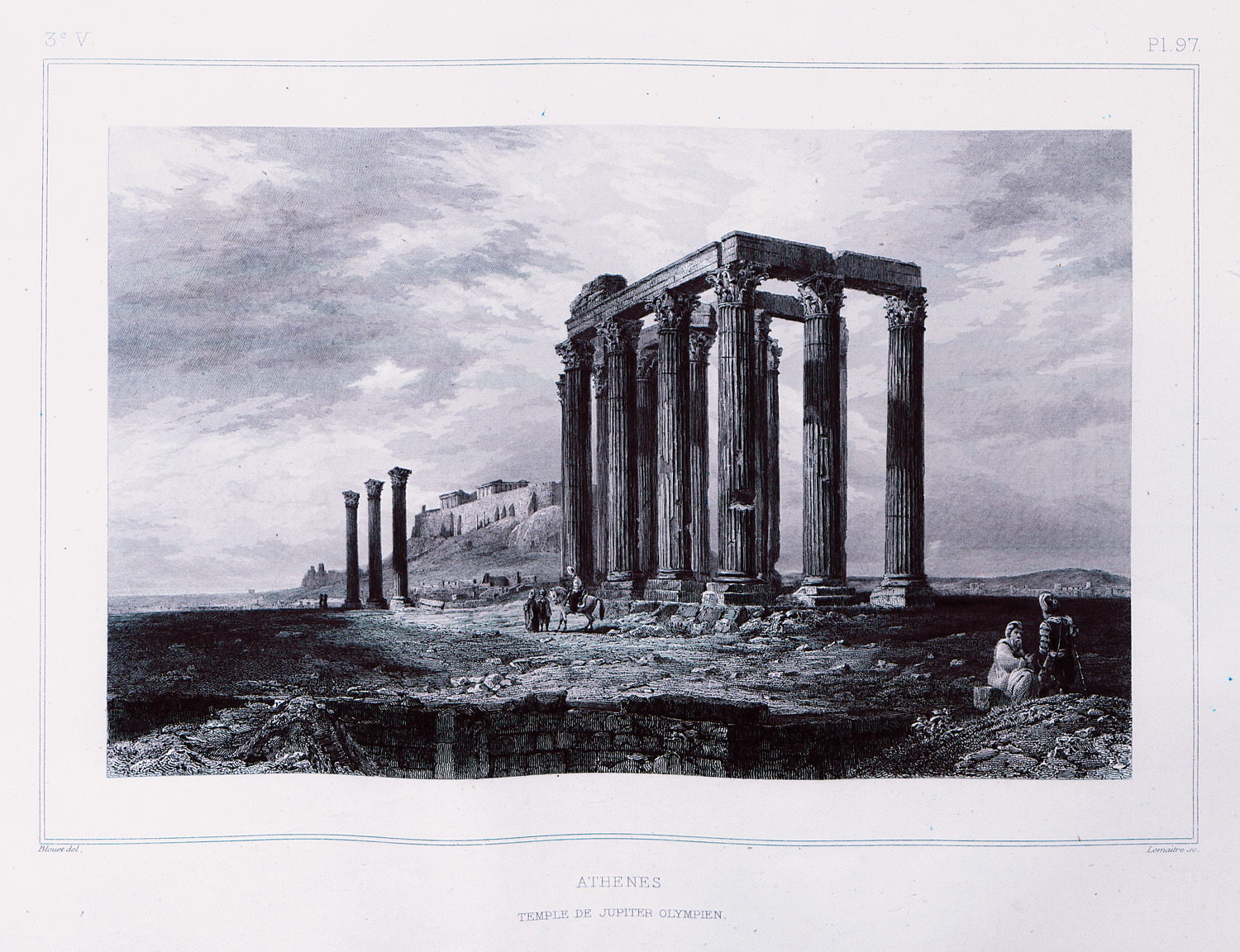
The Temple of Olympian Zeus, Athens. In the background, the Acropolis.
-
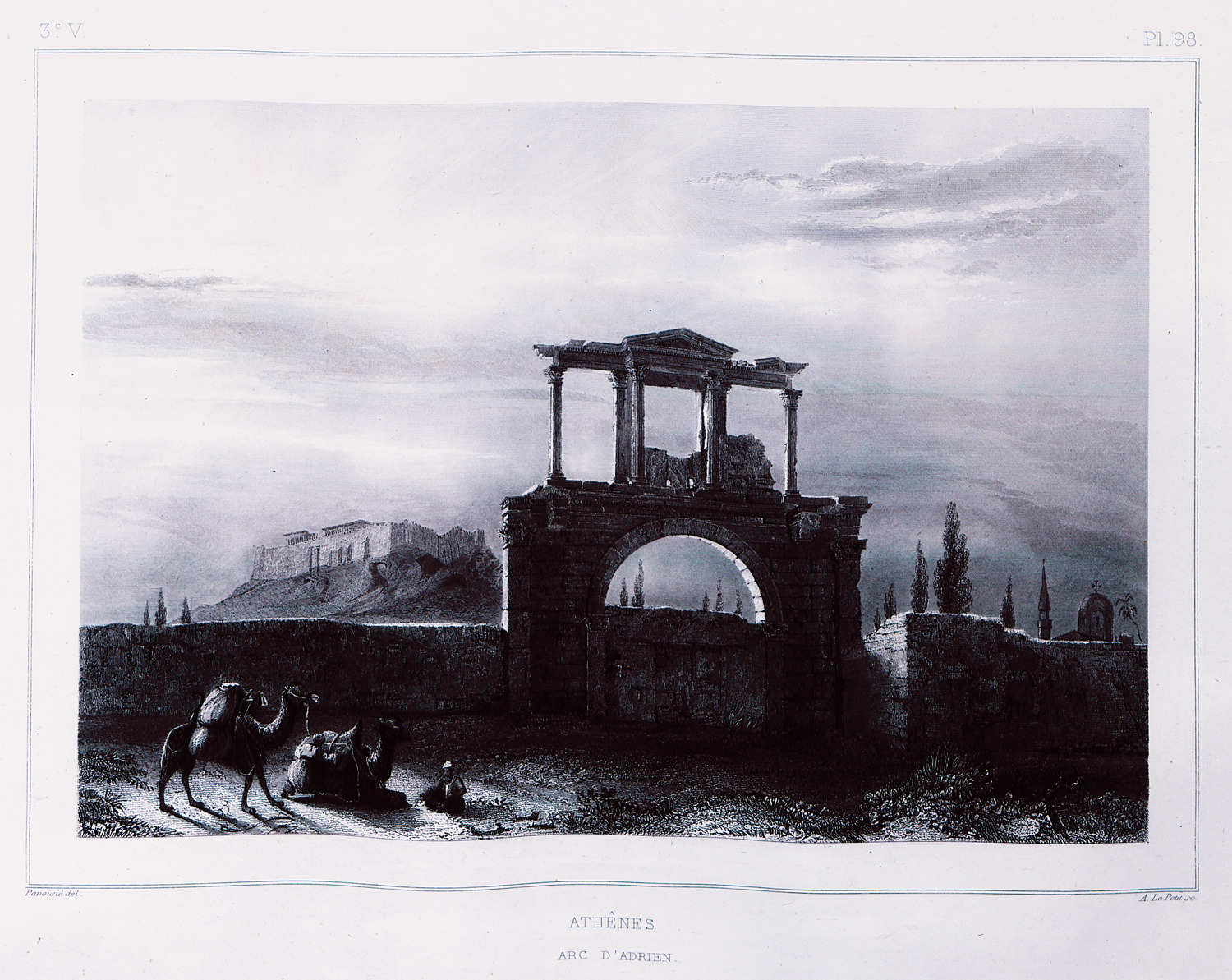
-
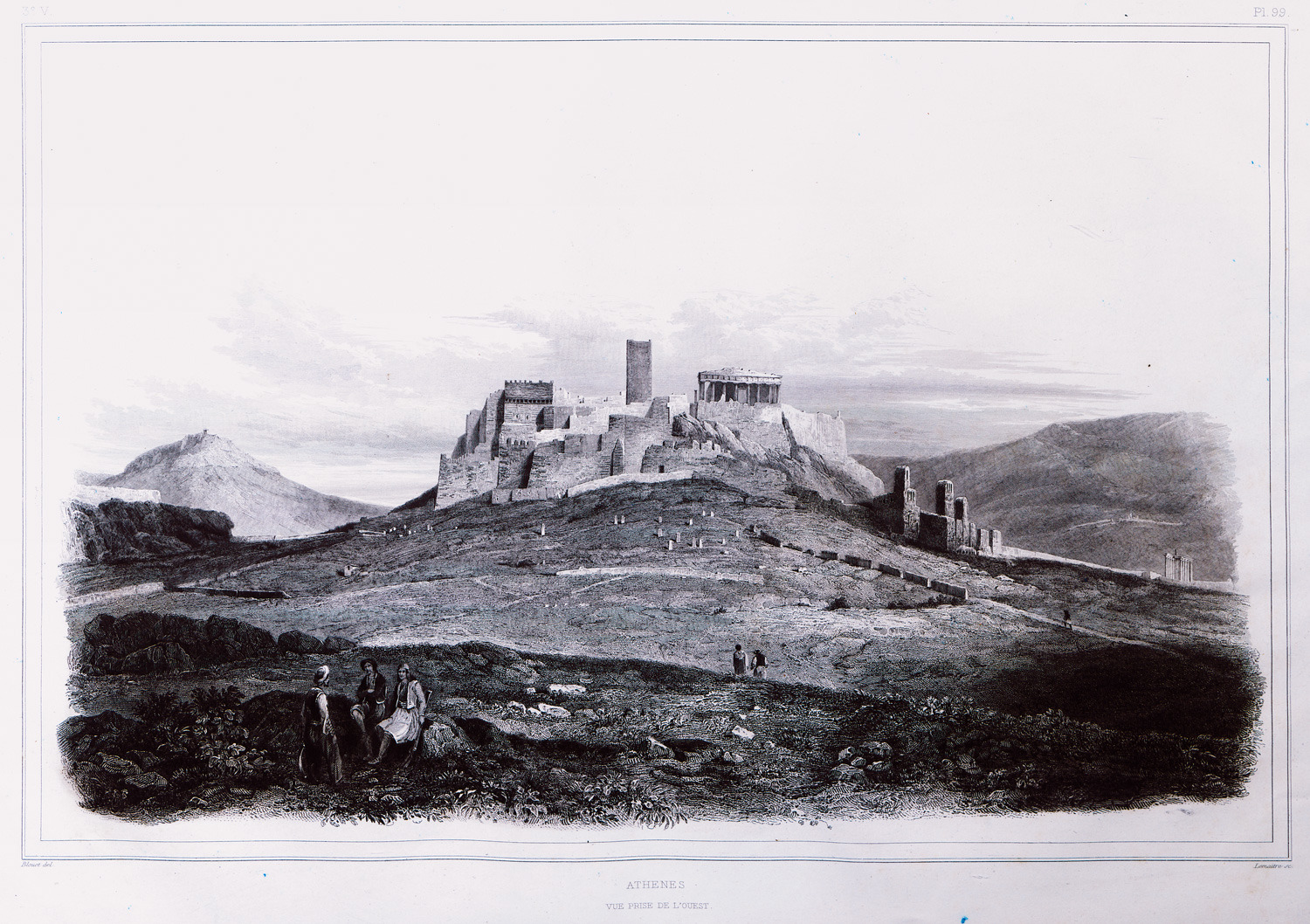
The Acropolis of Athens from the south. On the right, the temple of Olympian Zeus.

